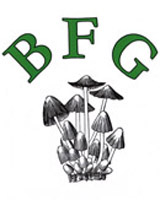M
|
|
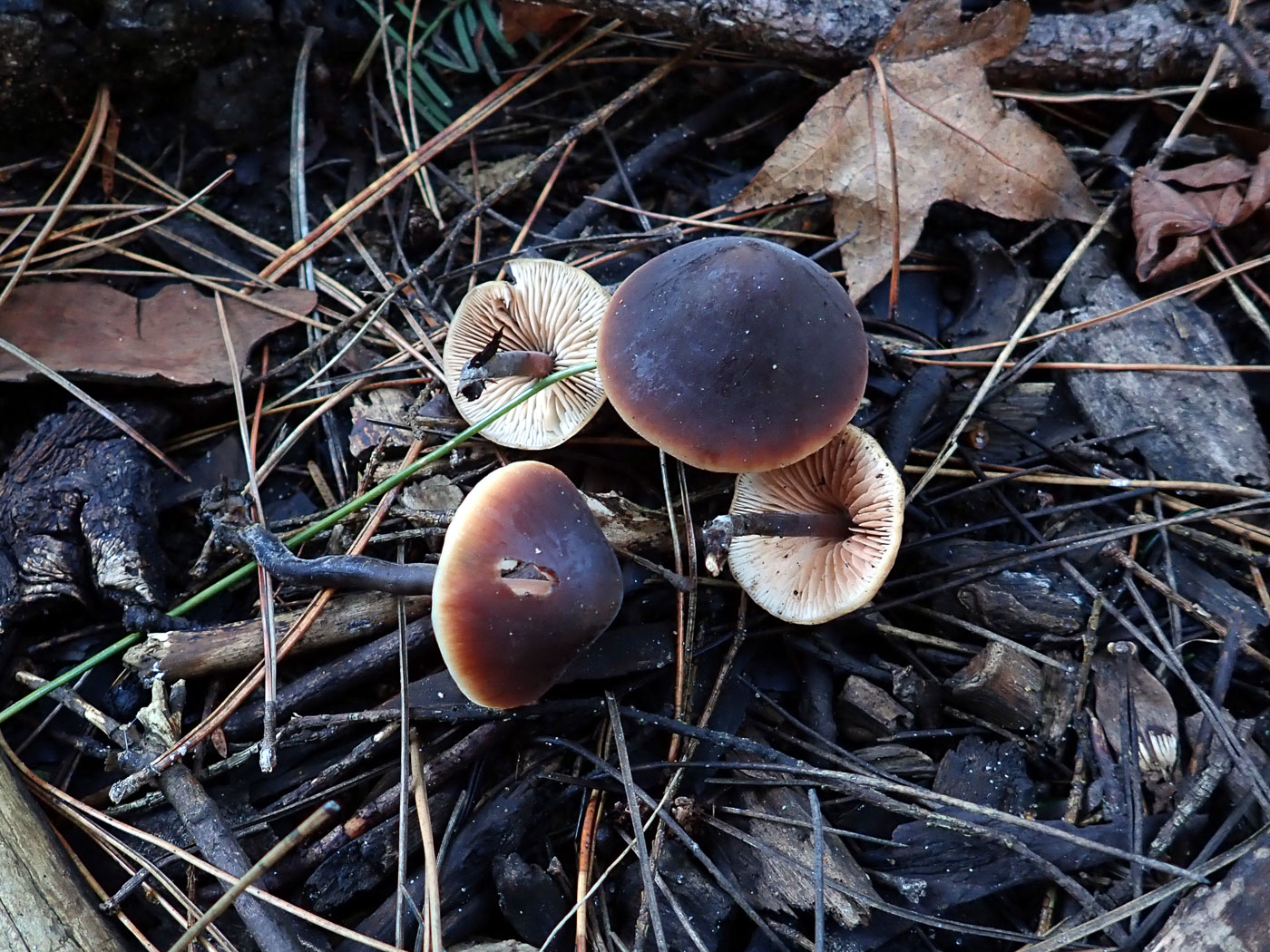
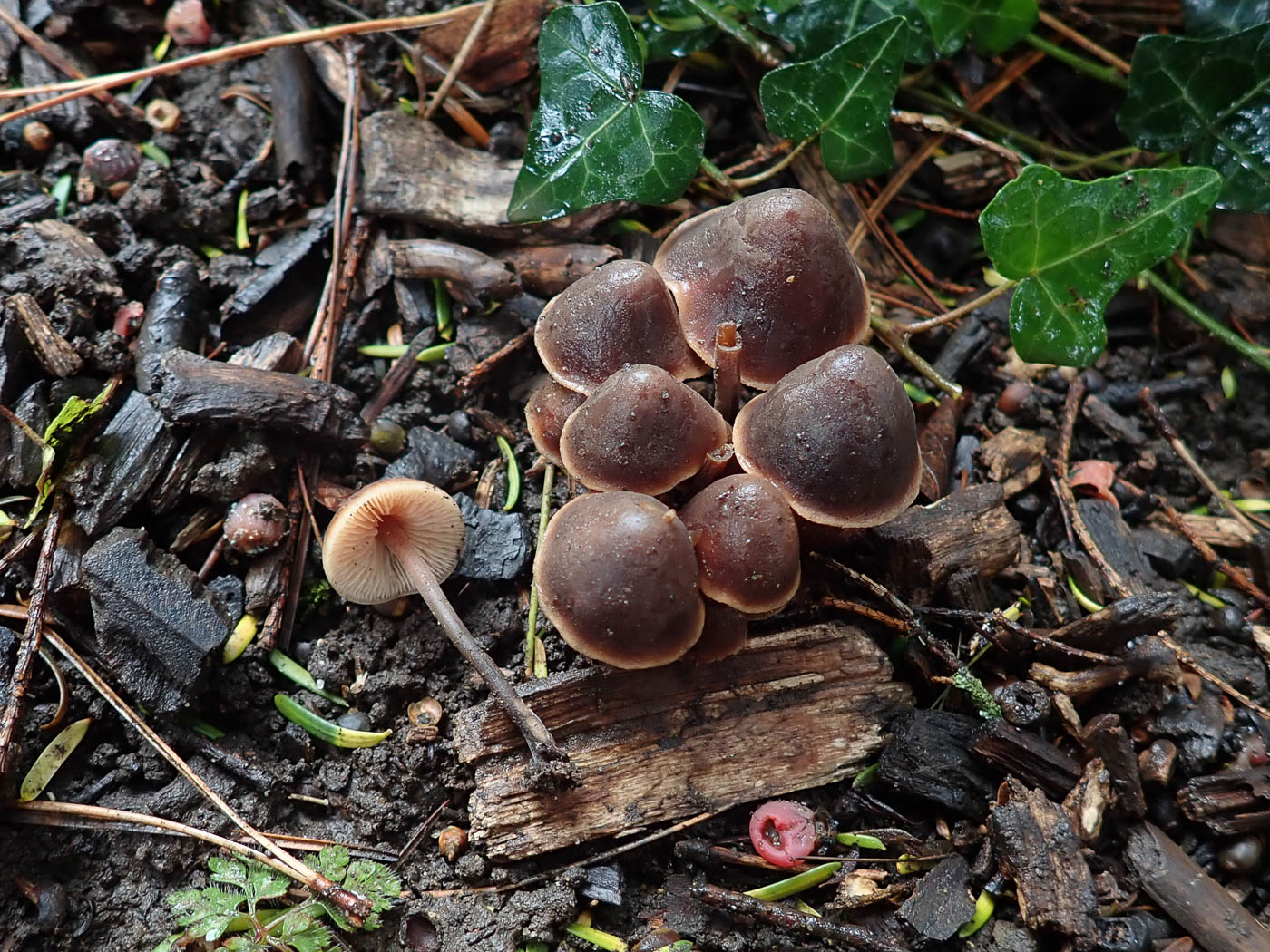
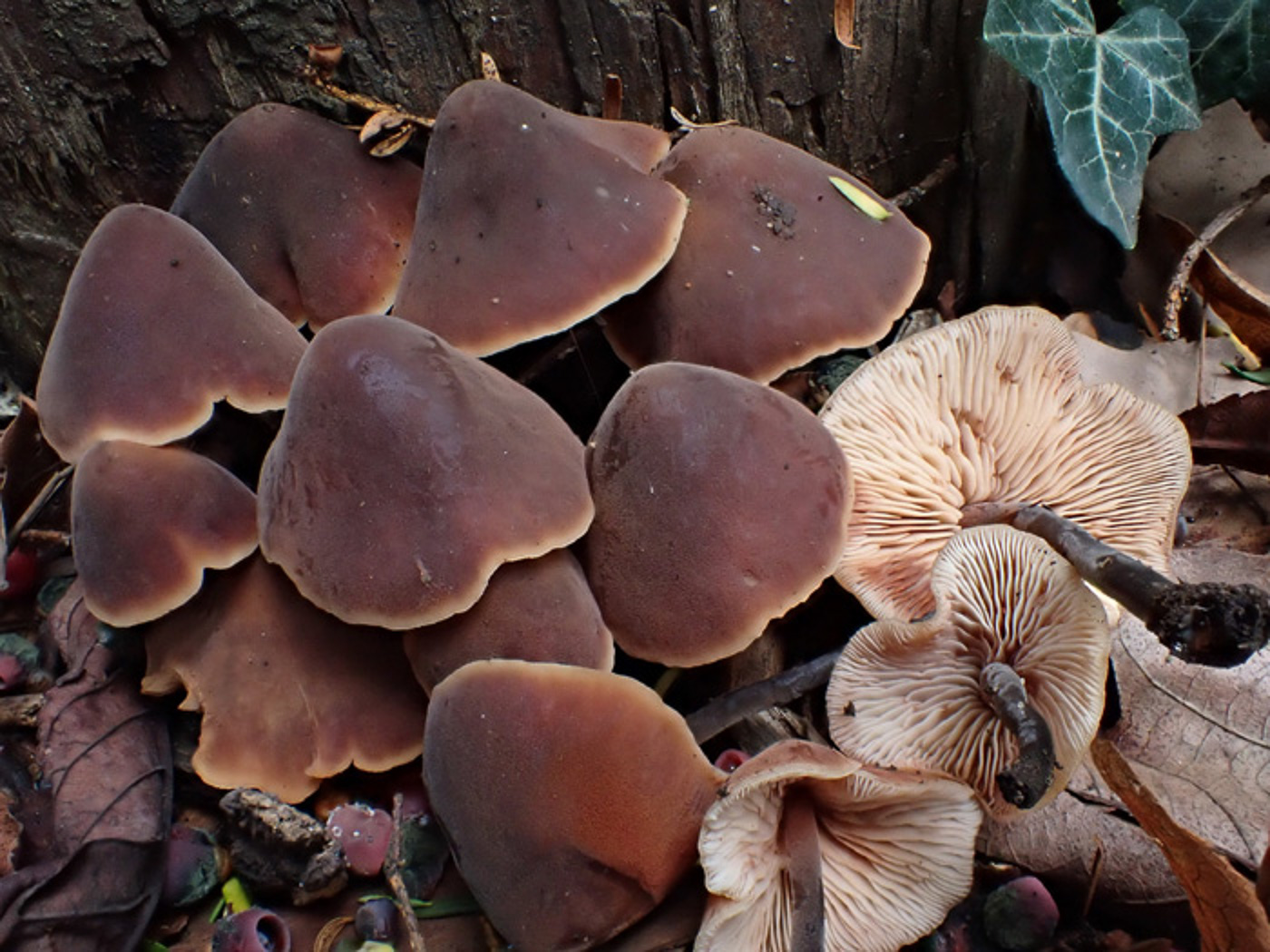
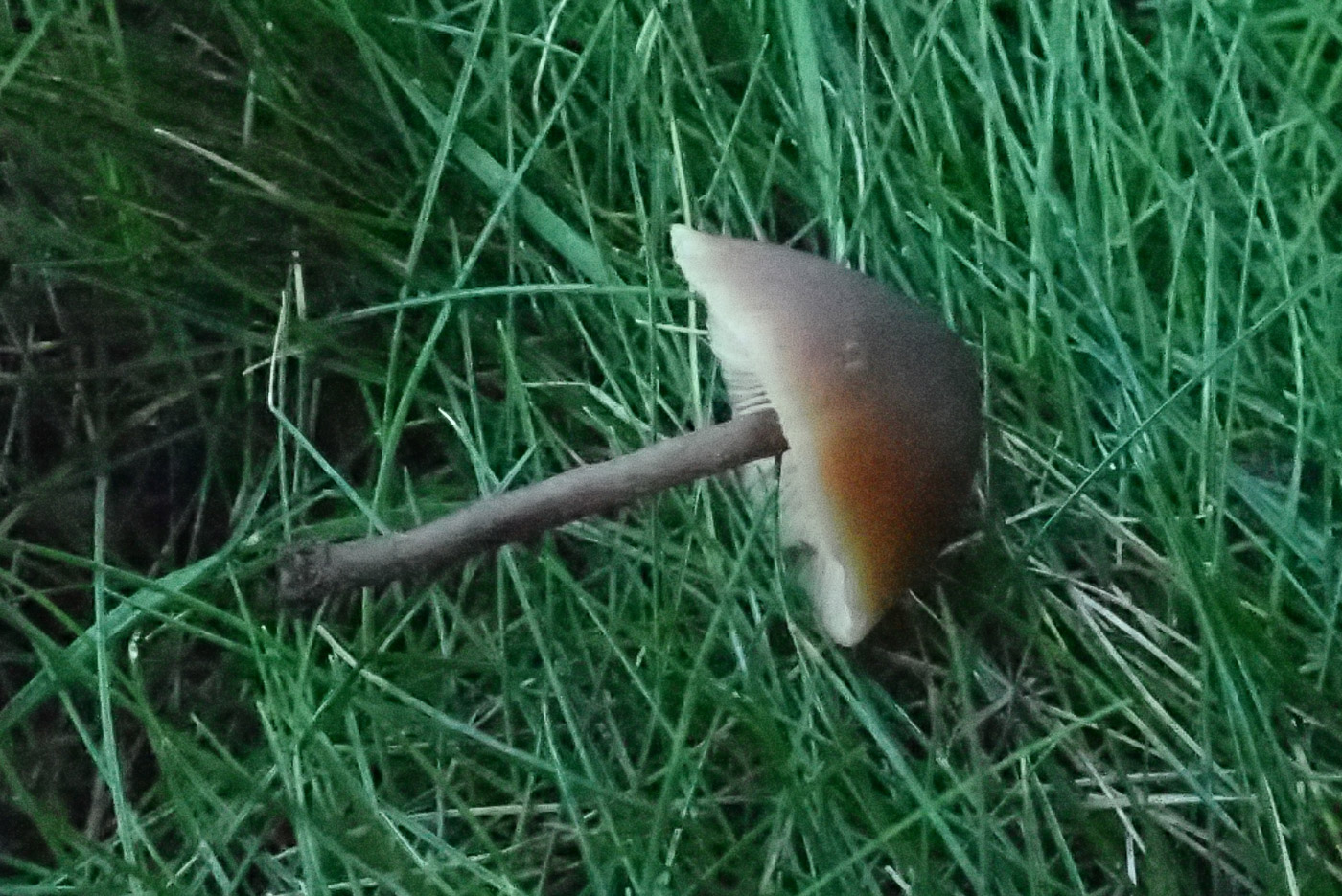
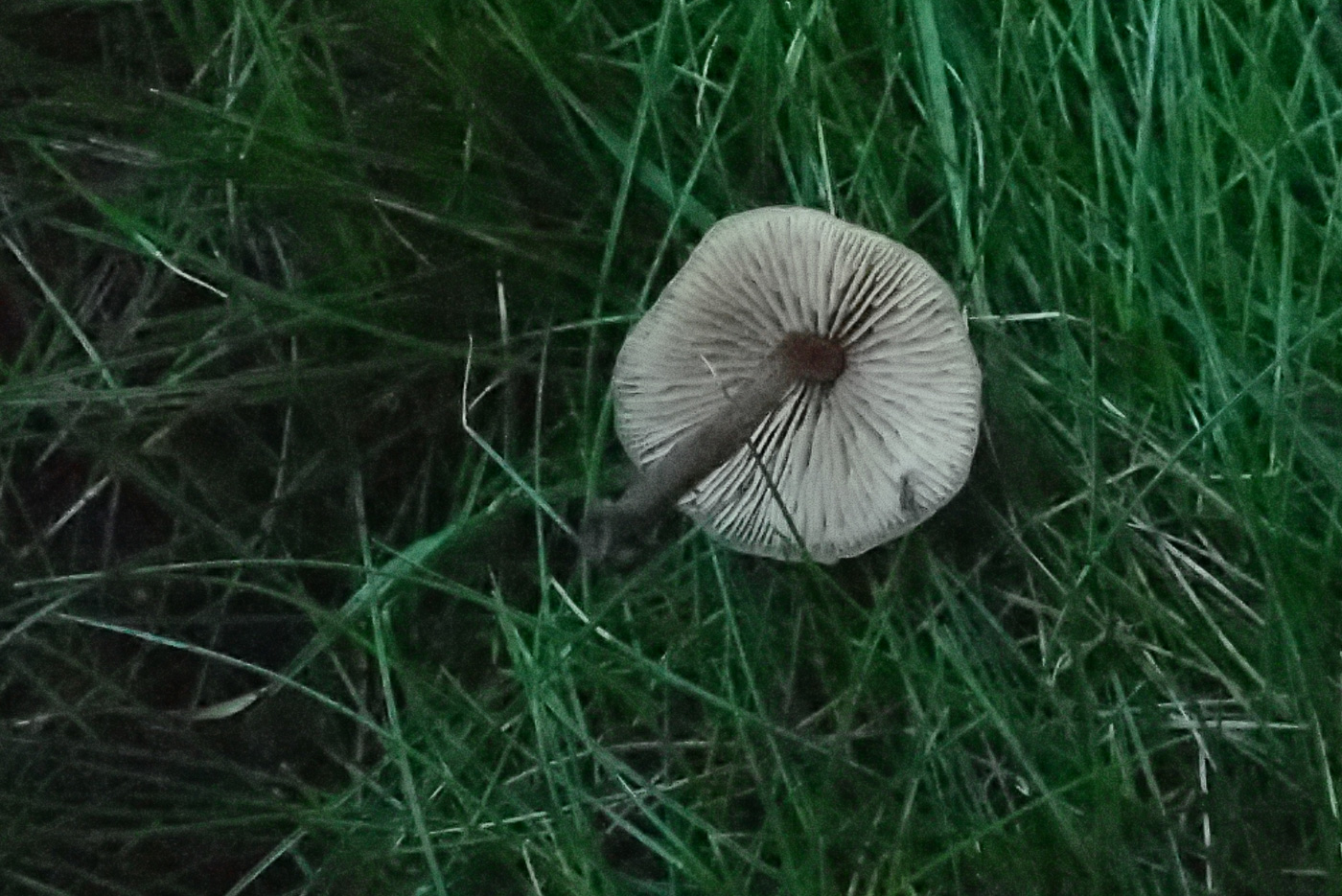
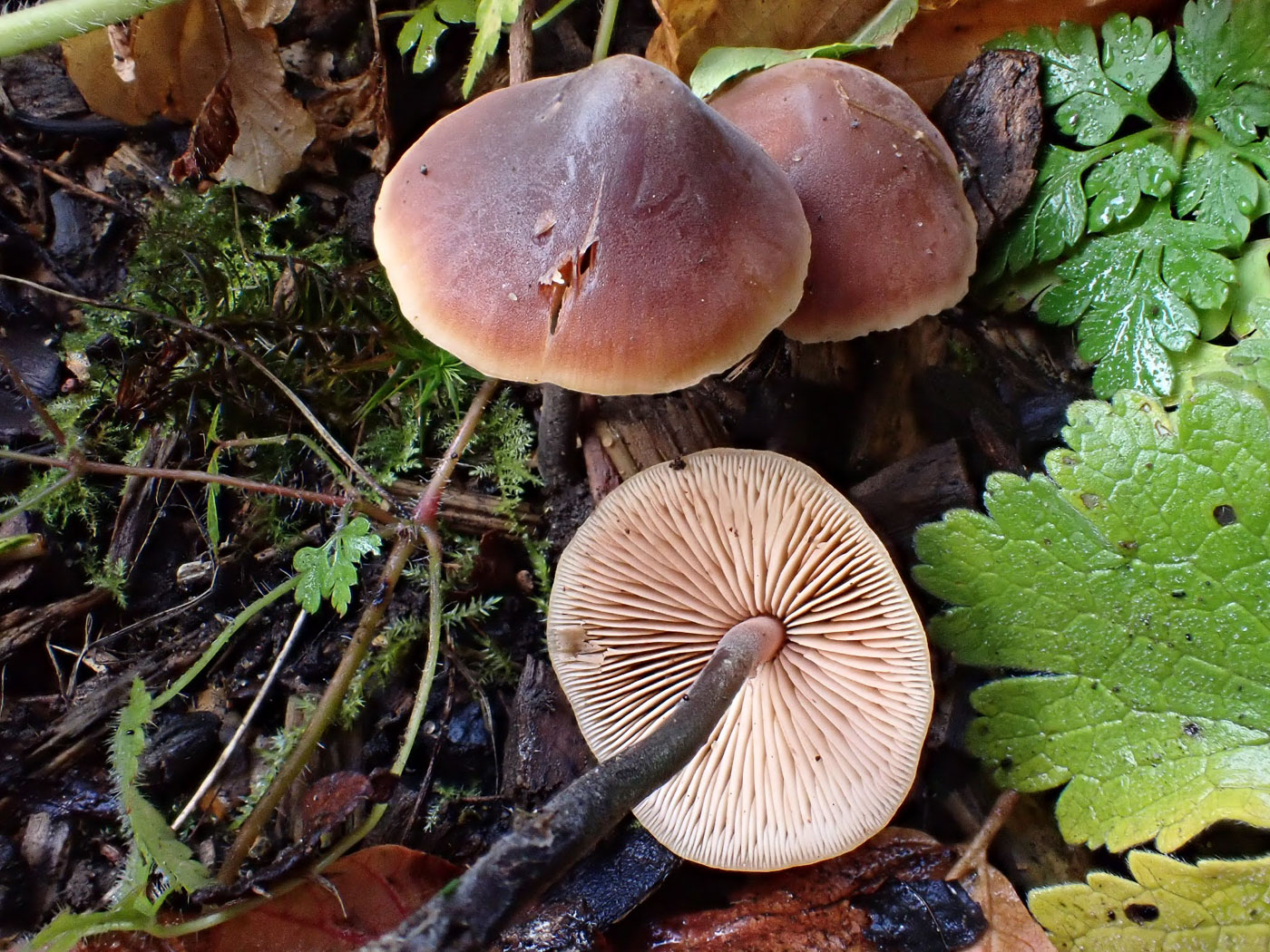
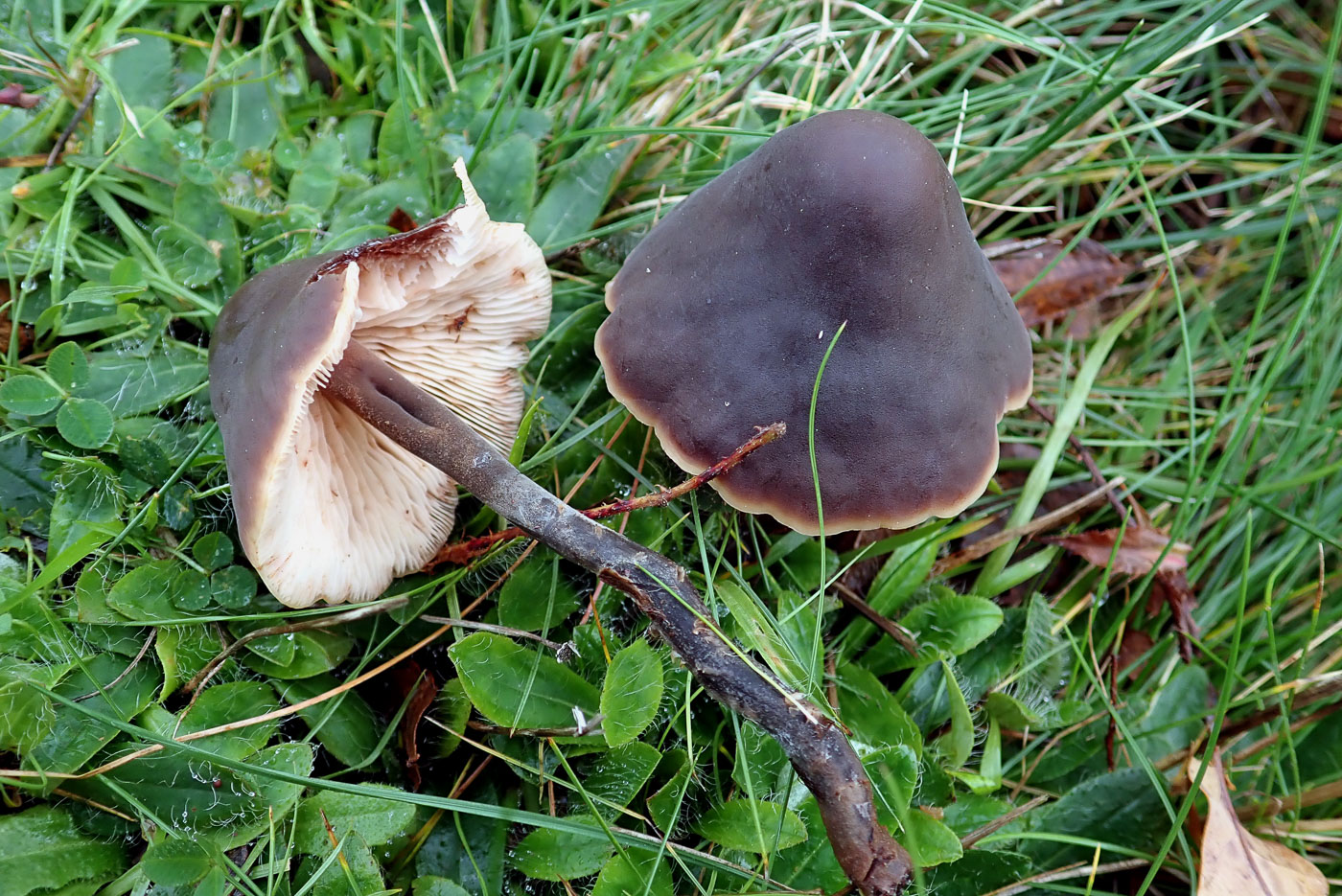
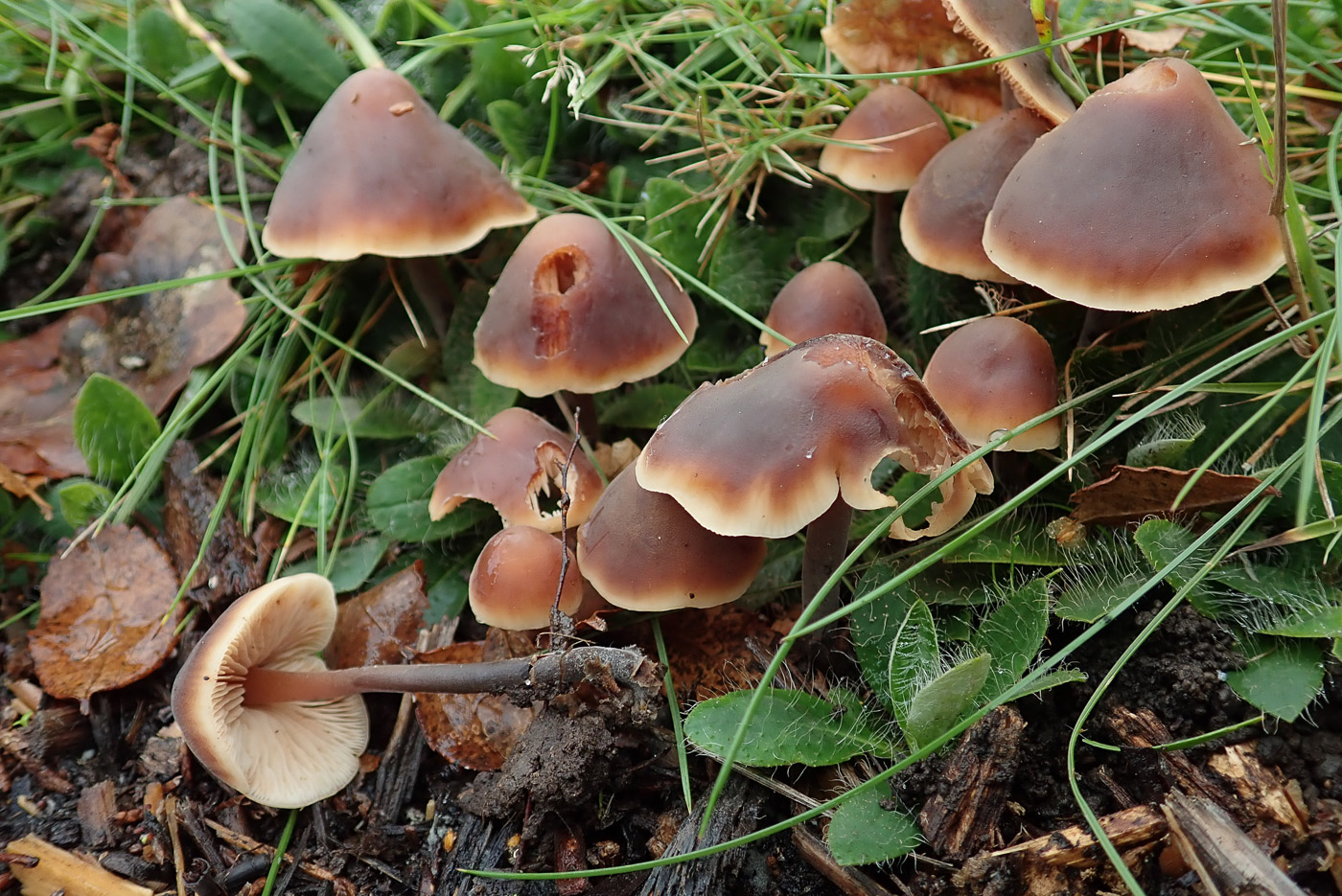
|
Macrocystidia cucumis (Cucumber Cap)
Dec 12, 2023. At Stoke Poges Memorial Gardens Penny was interested to see this species still fruiting away here amongst woody debris in a rather dark corner near the gate into the churchyard next door. This seems to be a regular spot for it and once familiar with its conical shape intense brown cap with pale rim and extraordinary smell it becomes an easy species to name in the field with no need to view its spectacular lanceolate cystidia as confirmation!
Nov 2, 2023. In Stoke Poges Memorial Gardens Penny found this species in woody debris in a dark corner where it has fruited several times in past years. The rich dark brown smooth conical cap with pale rim is typical of the species, also the white gills and brown stem. The reference to cucumber in the common name describes its smell said to be of cucumber sandwiches though a more apt name would be Cod-liver-oil Cap which to Penny sums its smell up perfectly!
Oct 27, 2022. At Stoke Poges Memorial Gardens Penny found good numbers of this species fruiting in woody debris along a rather dark path. Its cone-shaped rich brown cap with paler margin together with the crowded pale gills and contrasting dark stem make it quite distinctive, but add to that it's remarkable smell of cod-liver-oil / salmon and cucumber sandwiches (it's a matter of opinion!) and huge pointed cystidia on the gill edge, and the species should be an easy one to identify. The photo is Stephen Plummer's.
Jan 12, 2022. In Bradenham Churchyard under Yew Penny spotted this quite distinctive mushroom - just a singleton here though often it can be found in large numbers.
Oct 25, 2021. At Stoke Poges Memorial Gardens in woodchip we found this distinctive mushroom, quite tall for its cap size of around 3-4 cm across and with a rich brown conical cap which has a faint 'bloom' on the surface and a pale rim. The gills are pale brown, but put it to your nose and it has a remarkable smell! Opinions differ: cucumber sandwiches / salmon and cucumber sandwiches / cod liver oil. Whichever you favour, once smelt never forgotten! The photo is Stephen Plummer's.
Oct 28, 2020. Paul C. found a beautiful collection of this quite unusual species growing in weedy woodchips in Stoke Poges Memorial Gardens (photo Penny C.) The dark brown cap with white rim when mature is typical, also the pale crowded gills and dark stem, but the key feature is its distinct smell - one about which there is often discussion and even disagreement! For some it reminds of cucumber sandwiches (hence its common name), but for many - Penny amongst them - the dominant smell reminds them of being forced to take a spoonful of cod liver oil as a child! If you crush the gills or place a specimen in a pot for a bit, the fishy smell becomes really clear and pervasive!
|
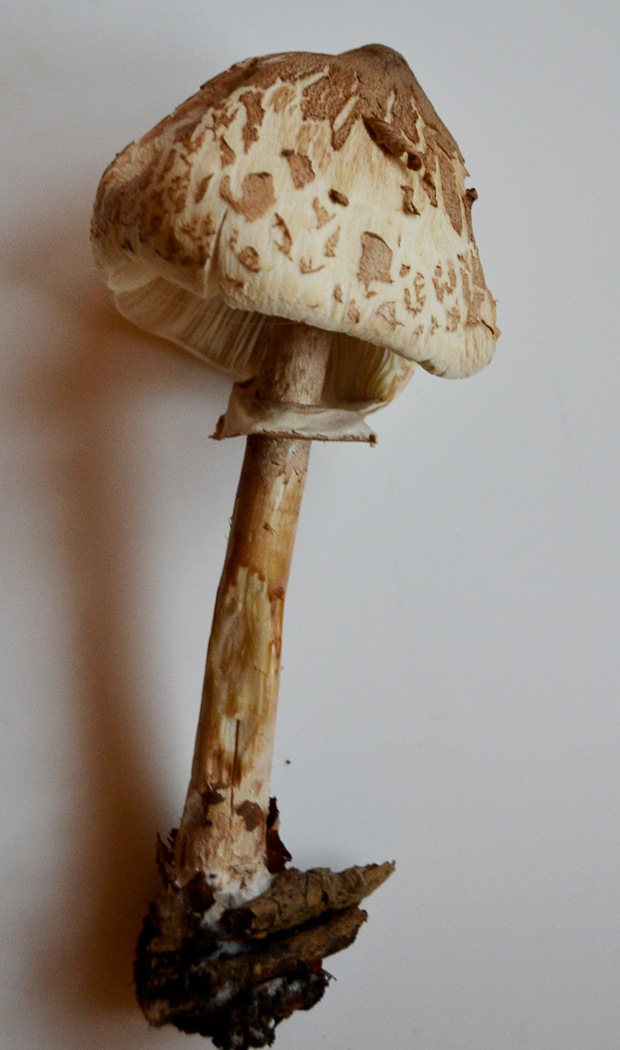
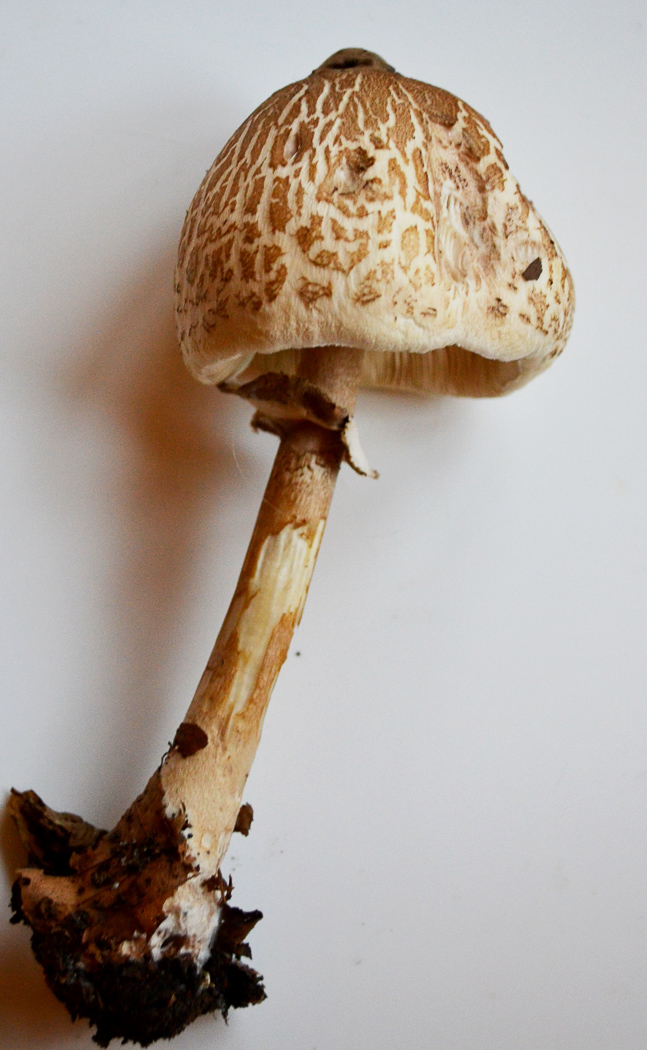
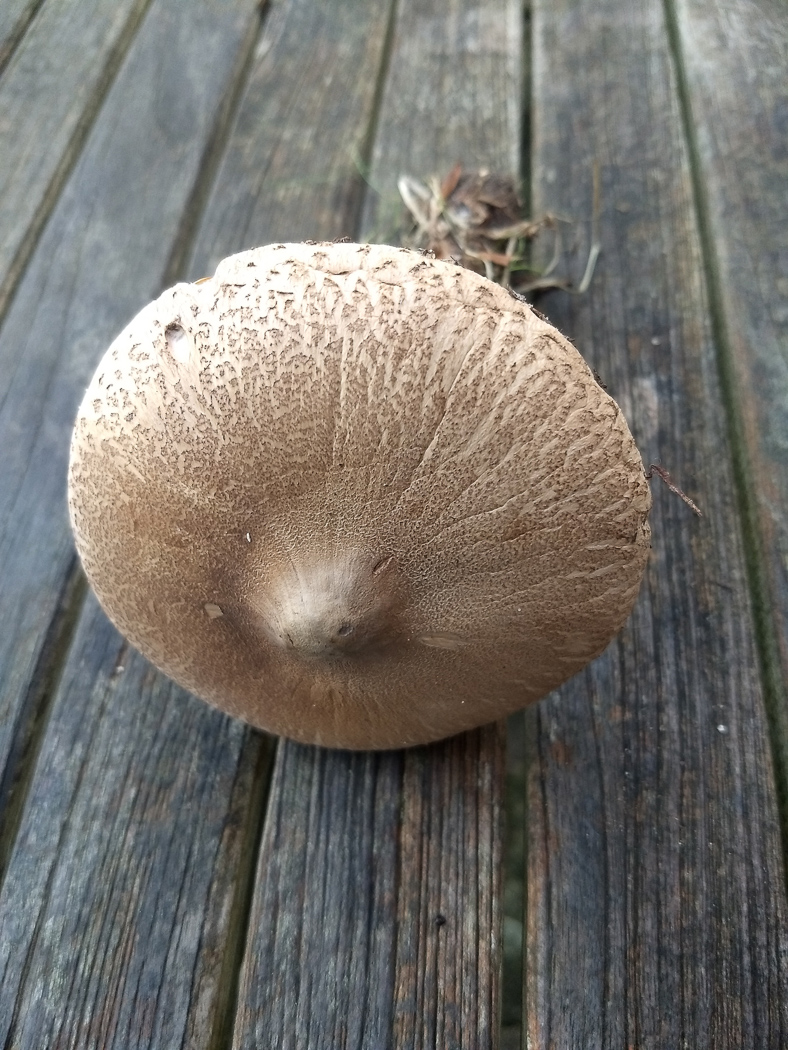
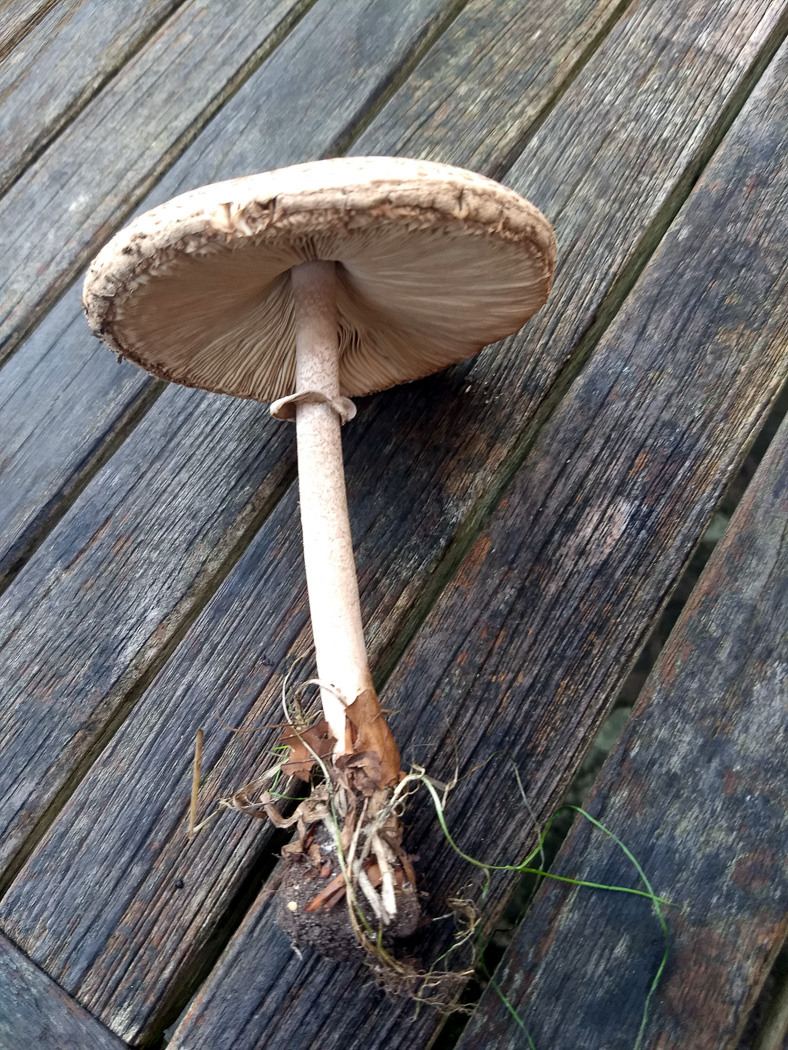
|
Macrolepiota excoriata (a Parasol with no common name)
Oct 18, 2023. Under a hedge in the Prestwood area Tony Marshall spotted this large mushroom, easily recognised as a Parasol from is size, colour and dry scaly cap but much harder to determine to species (mind you, one could say that about most fungi!). Chlorophyllum was quickly eliminated as there was no orange staining anywhere, and the thin single ring also the cap having a few raised scales rather than flat together with a pale scale-free rim led him to his conclusion here. This is perhaps the least common of the Parasols but descriptions of this group tend to overlap with often no clear boundaries between species, so the specimen will be dried and sequenced.
Nov 6, 2020. Richard Fortey found and identified this unusual Parasol growing in a grass verge in Fawley. It is a smaller species than the familiar M. procera, not exceeding 10 cm across, and the key features to look for are the simple pale ring on the stem which can be lost when mature, also the stem is pale and lacks the darker 'snakeskin' markings characteristic of other species. The cap is also pale cream to buff, lacks darker brown colours and the cap covering tends to retract or become torn at the margin. We have only three previous county records of this species.
|
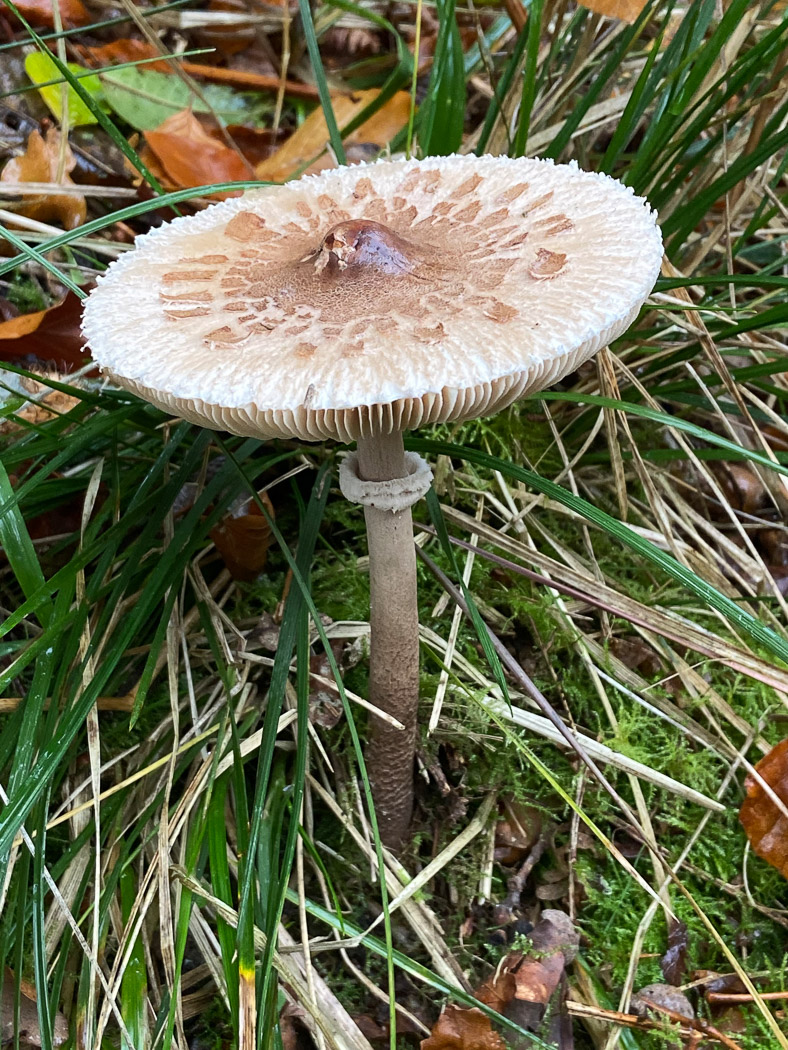
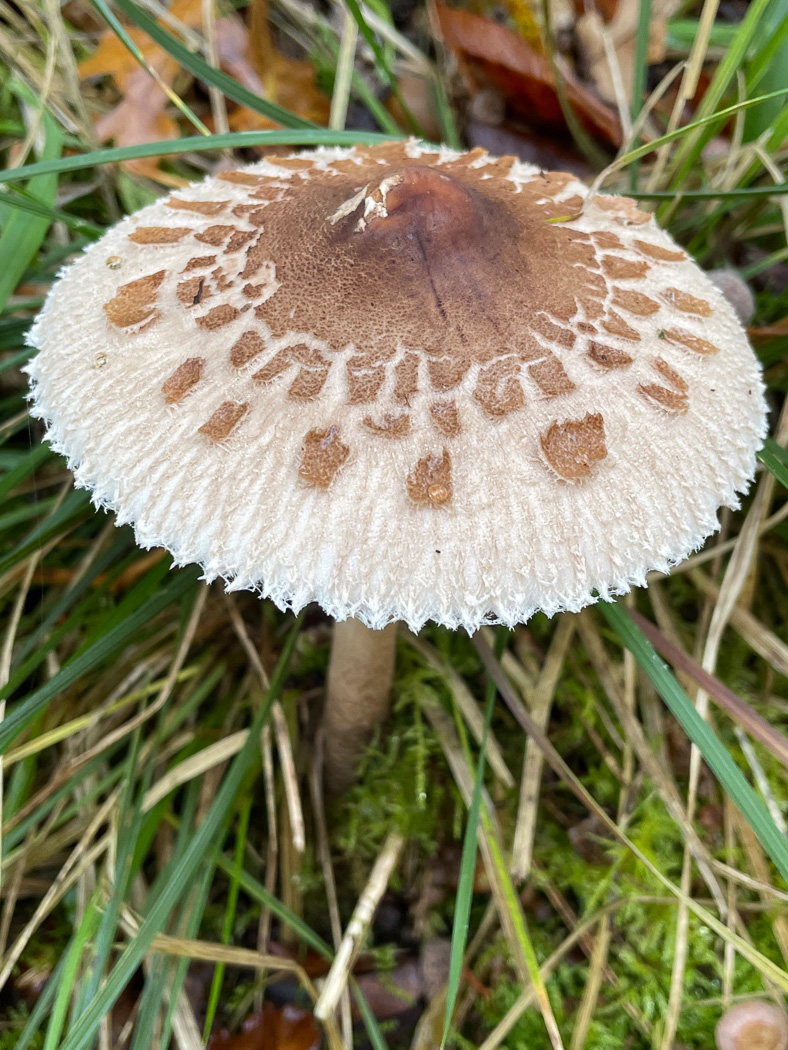
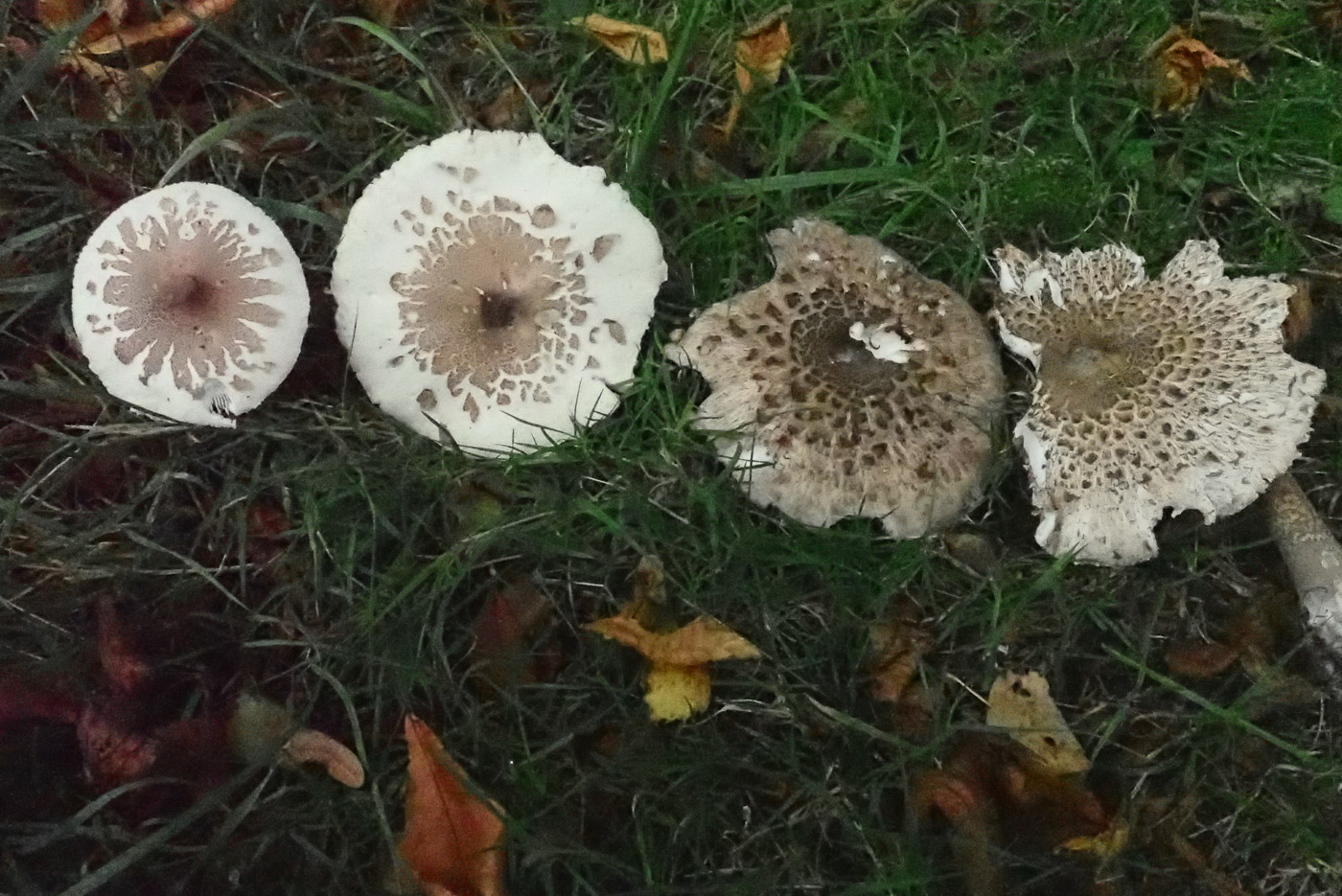
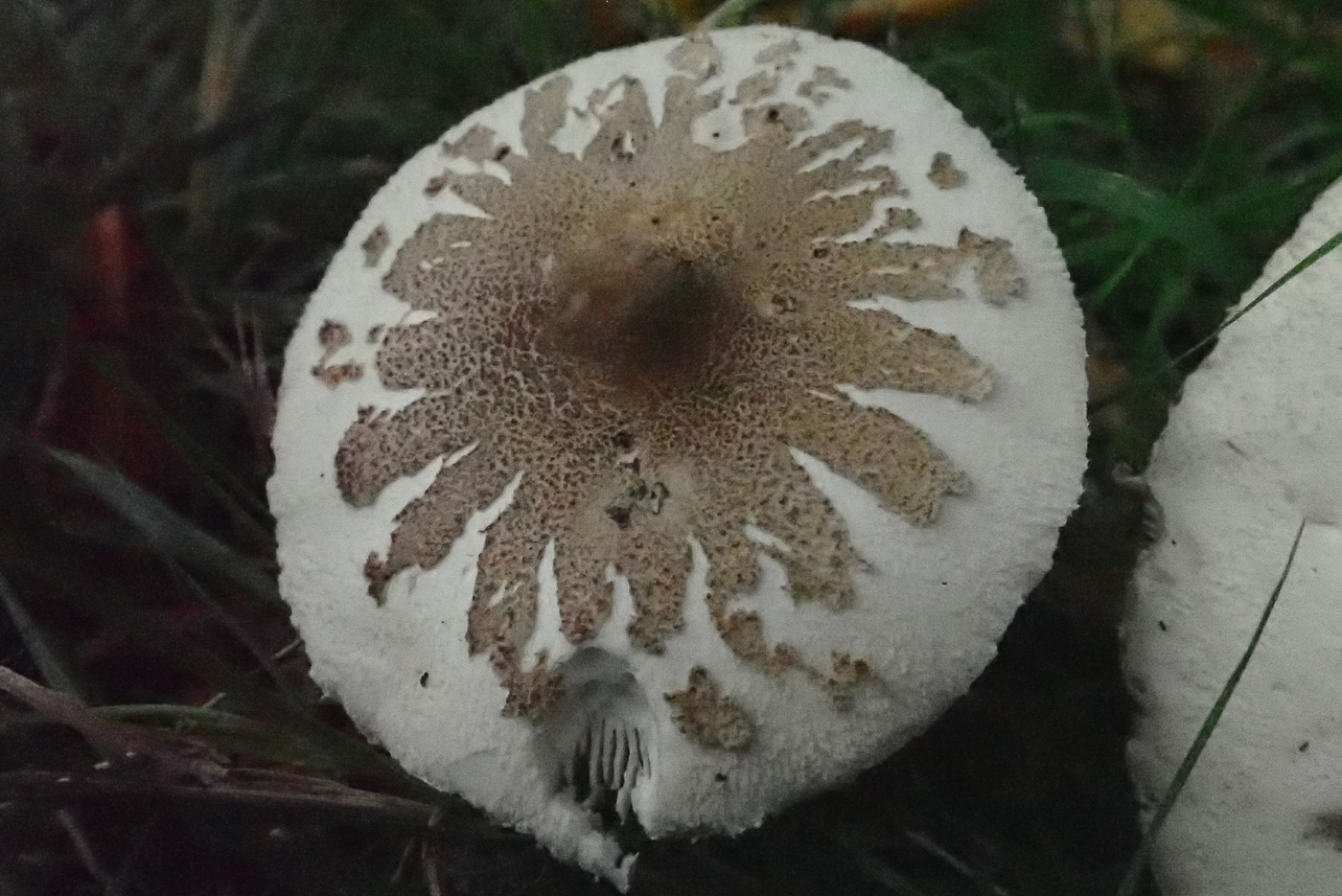
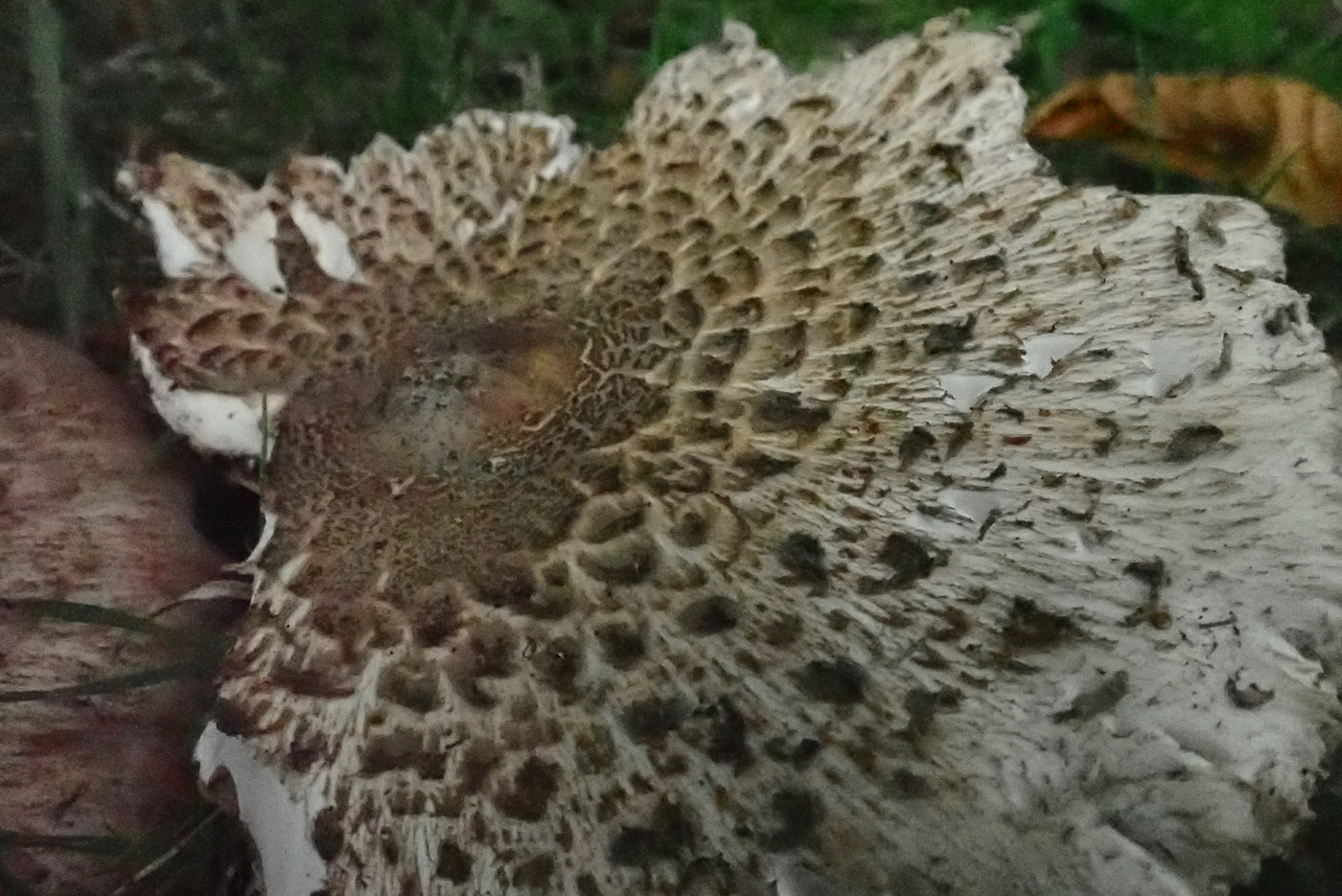
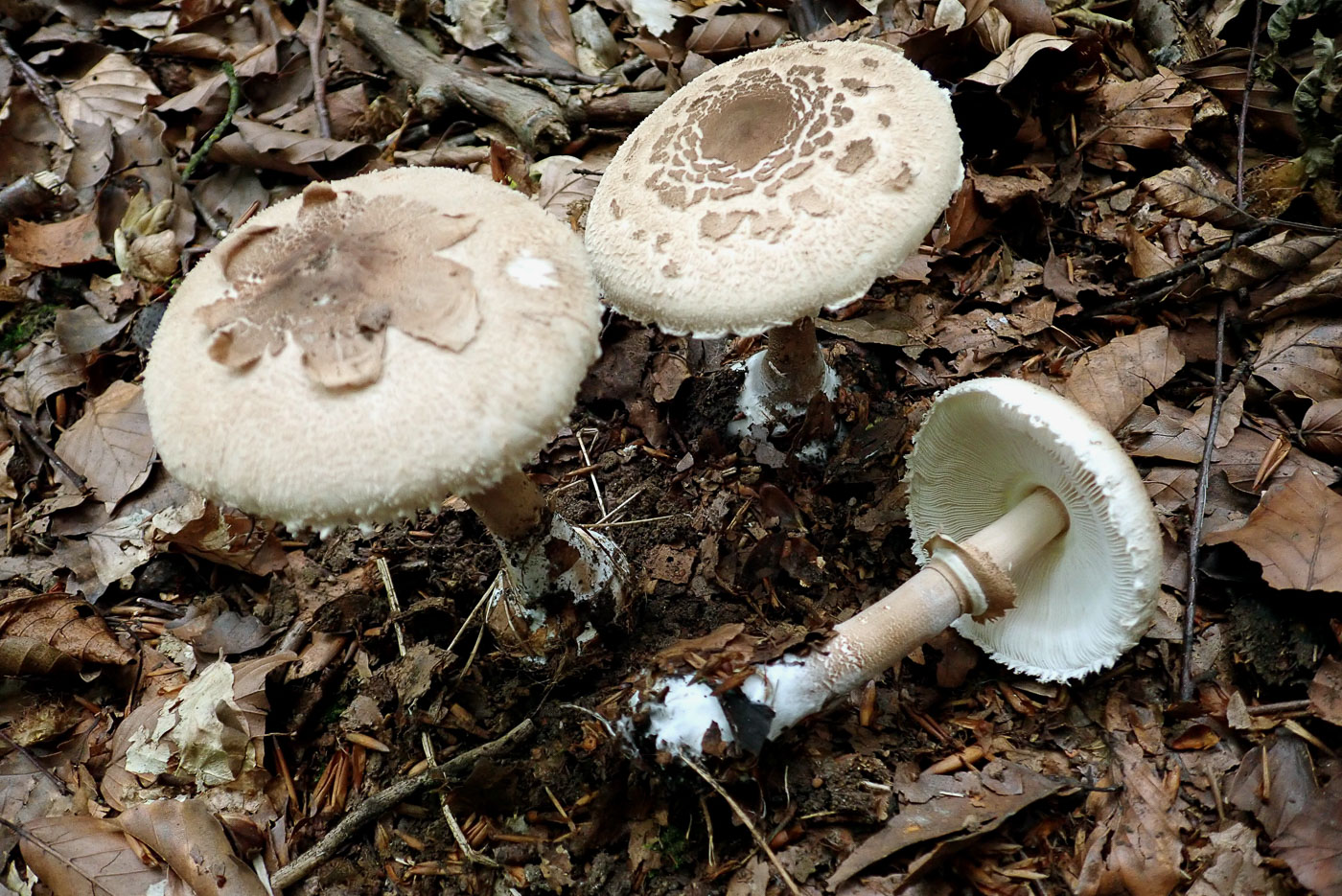
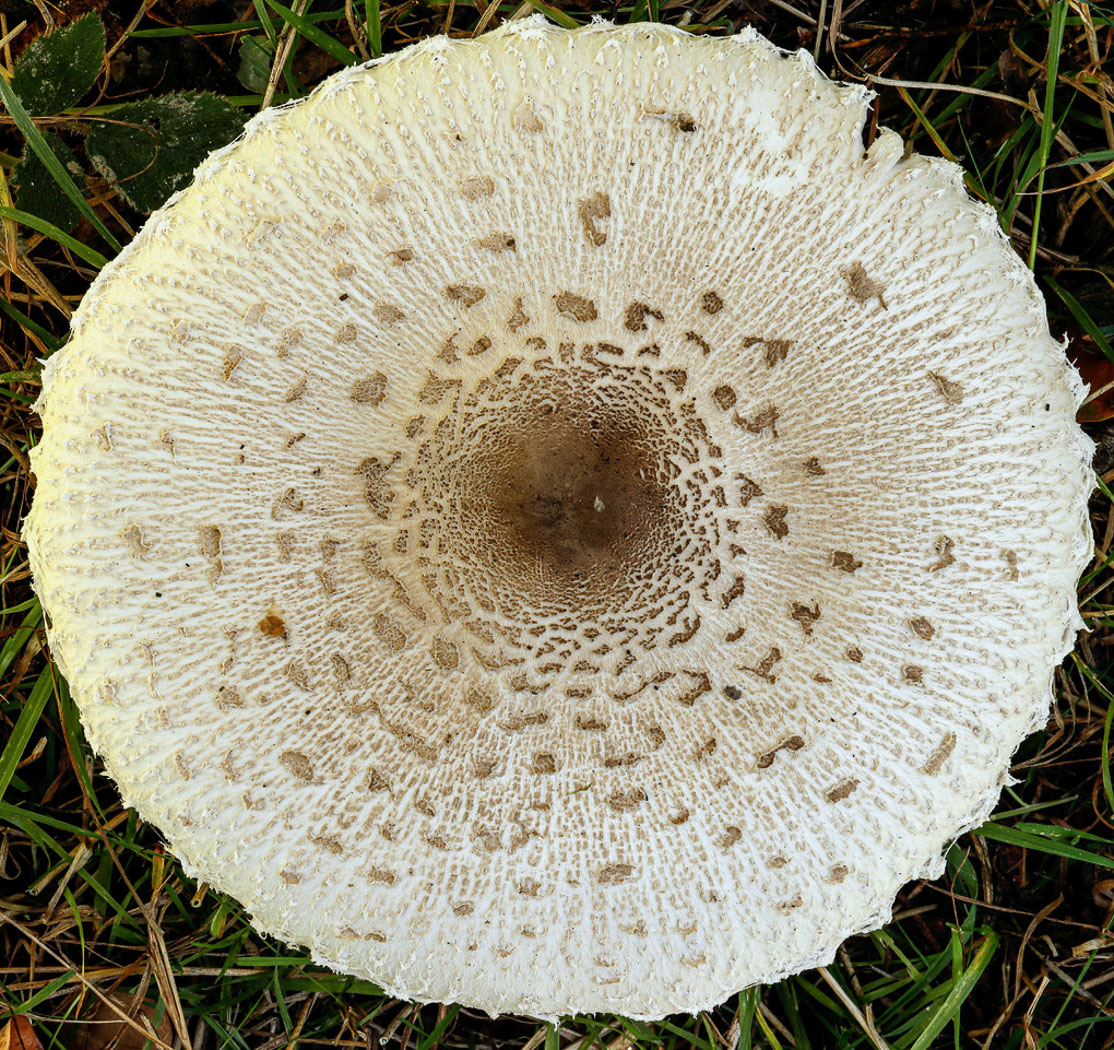
|
Macrolepiota konradii (a Parasol with no common name)
Oct 20, 2022. In Lott Wood near Stokenchurch we spotted this singleton with a beautifully marked cap worth sharing here. Note also the snakeskin stem markings and double ring. See the Masterlist for more images and information on the species. Photo 1 is Stephen Plummer's; photo 2 is Jackie Newcombe's.
Oct 12, 2021. At Turville Heath in grassy soil Penny found two different species of Macrolepiota and took the opportunity to compare the difference in cap markings. M. konnradii is one we find quite commonly in this area but is often synonymised with M. mastoidea - a synonymy she finds hard to accept - in fact doesn't accept! The cap markings are so different though here she compares M. konradii (left) with the common M. procera (right). Note the white background of M. konradii (photo 2) with solid brown centre breaking up in a regular pattern of large rectangular flakes which cease well before the margin and which peel off really easily. In contrast the cap of M. procera (photo 3) has an off white background and the brown centre disrupts into smaller and smaller scales reaching more or less to the margin. M. mastoidea (not shown here) differs again by having a marked nipple-like umbo and is paler than M. procera but similarly though more delicately marked.
Sep 16, 2020. This nice collection was found in Penn Wood in grassy litter by Penny Cullington. Clearly similar to M. procera (Parasol) having the same snakeskin stem markings with mobile ring and swollen base, the cap has distinctly different markings. Note the smooth darker central zone which becomes torn with much paler barely scaly outer half. (The second photo shows another example, cap 17 cm across, found by Paul Goby in Naphill Common two days later.) However, compare with M. mastoidea (photo dated Sept 10th) and characterised by its prominent nipple-like central umbo - a feature not found in other species of this genus. Some authorities claim that M. konradii should be synonymised with M. mastoidea, but as M. konradii (as photoed here) appears to be almost the commonest of the genus in this area, Penny wishes to continue recording it under that name until definitely proven incorrect!
|
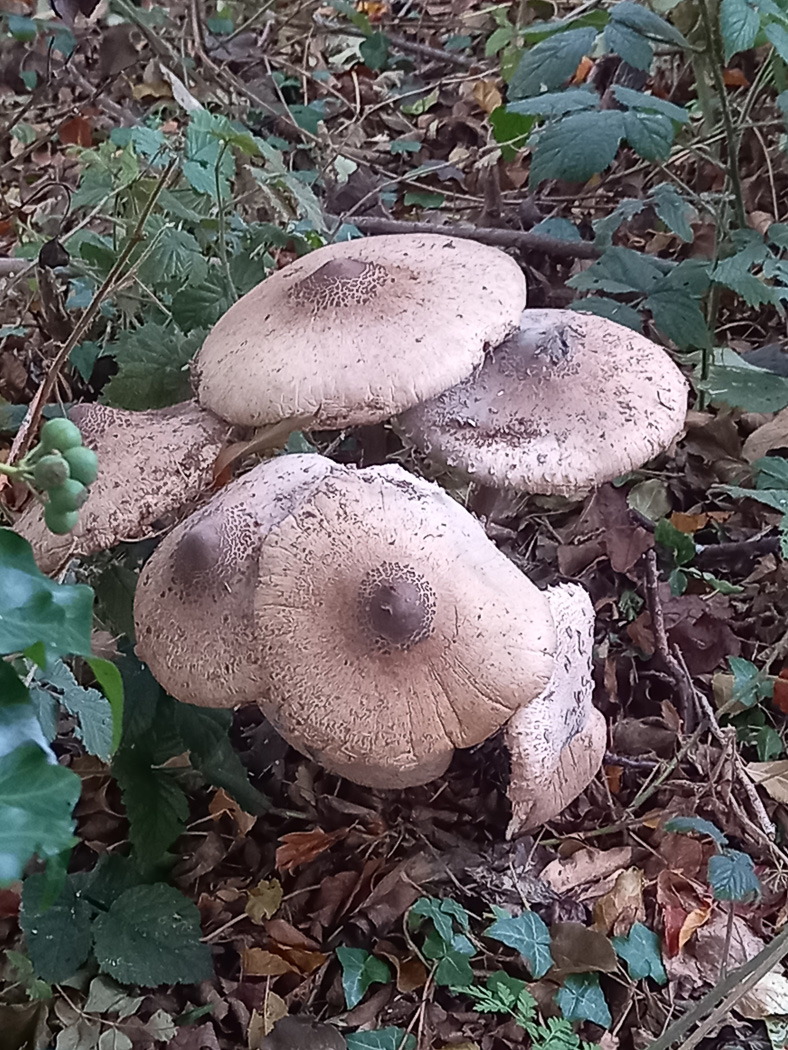
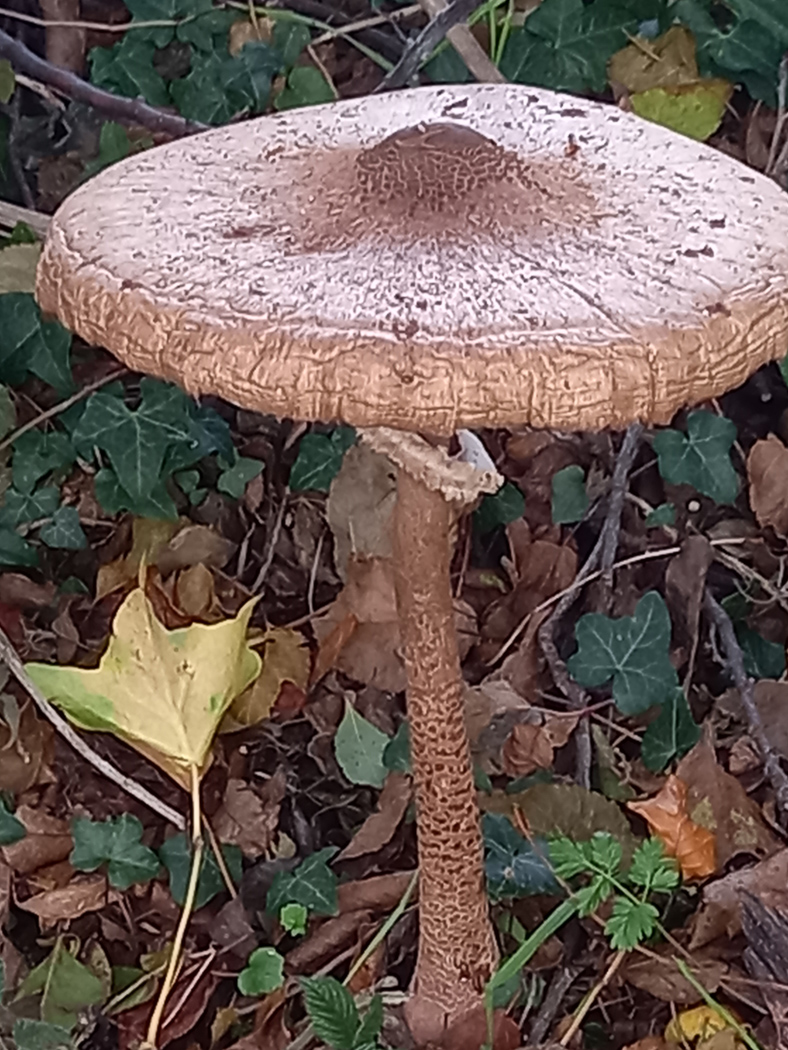
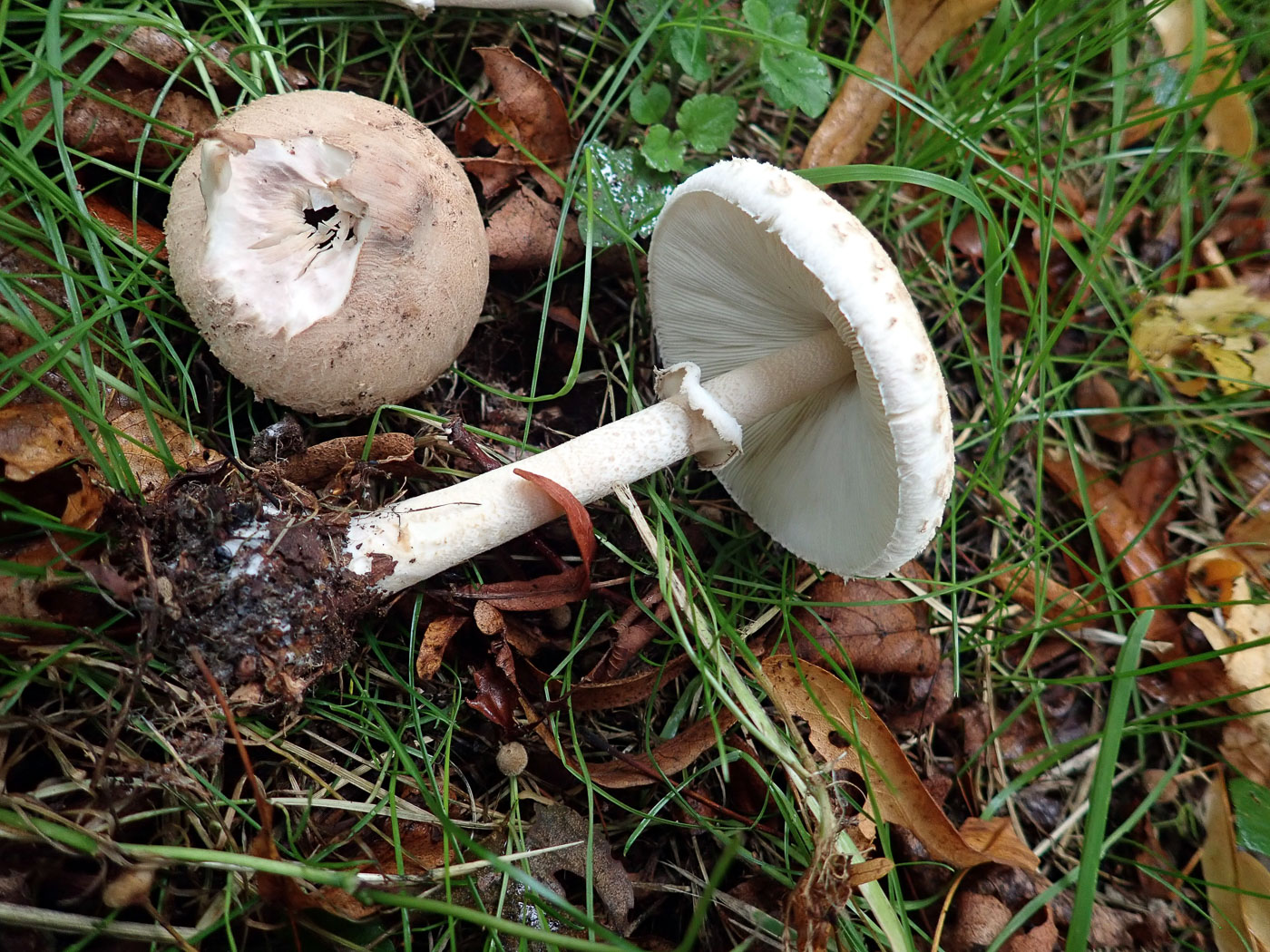
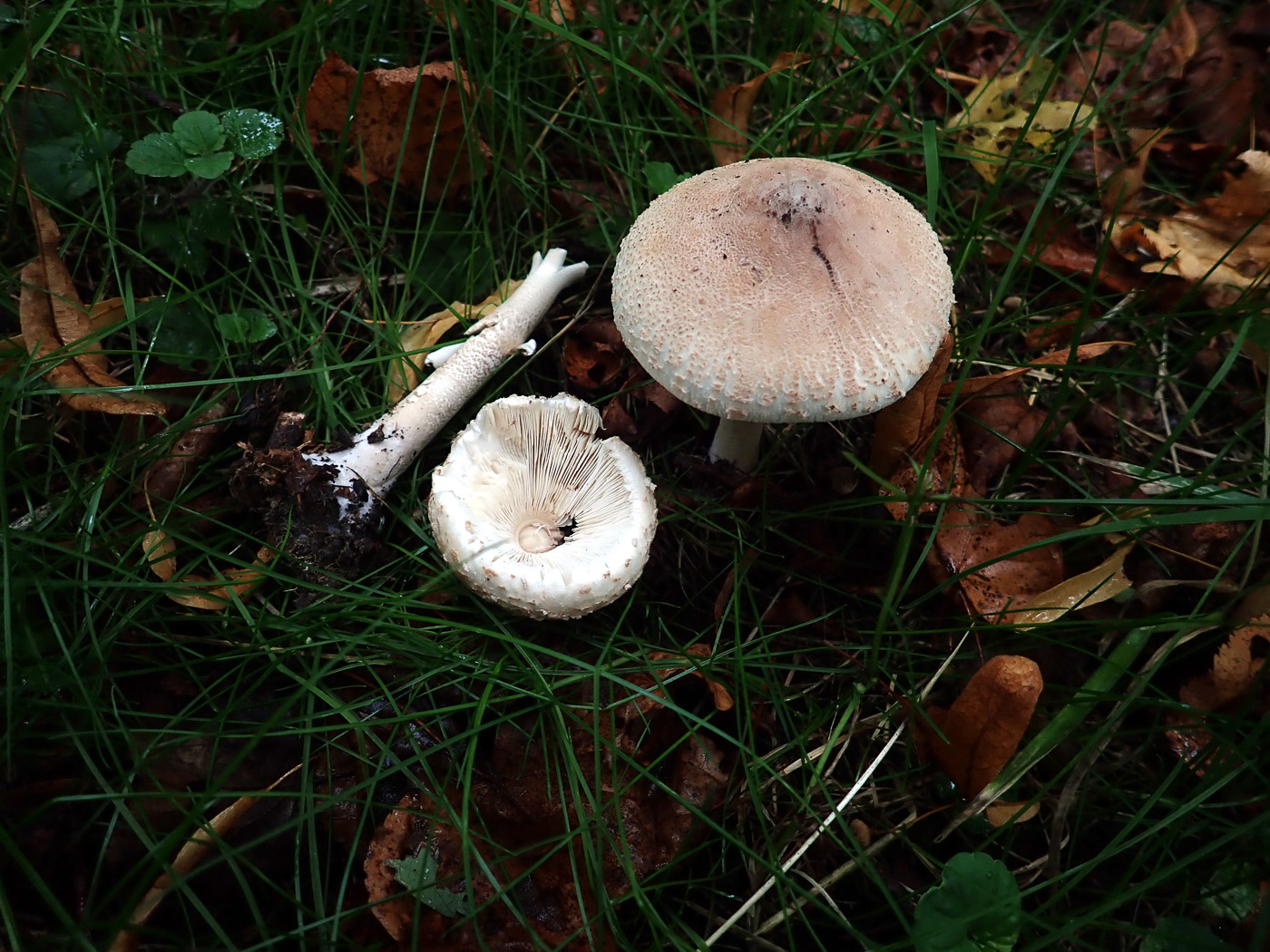
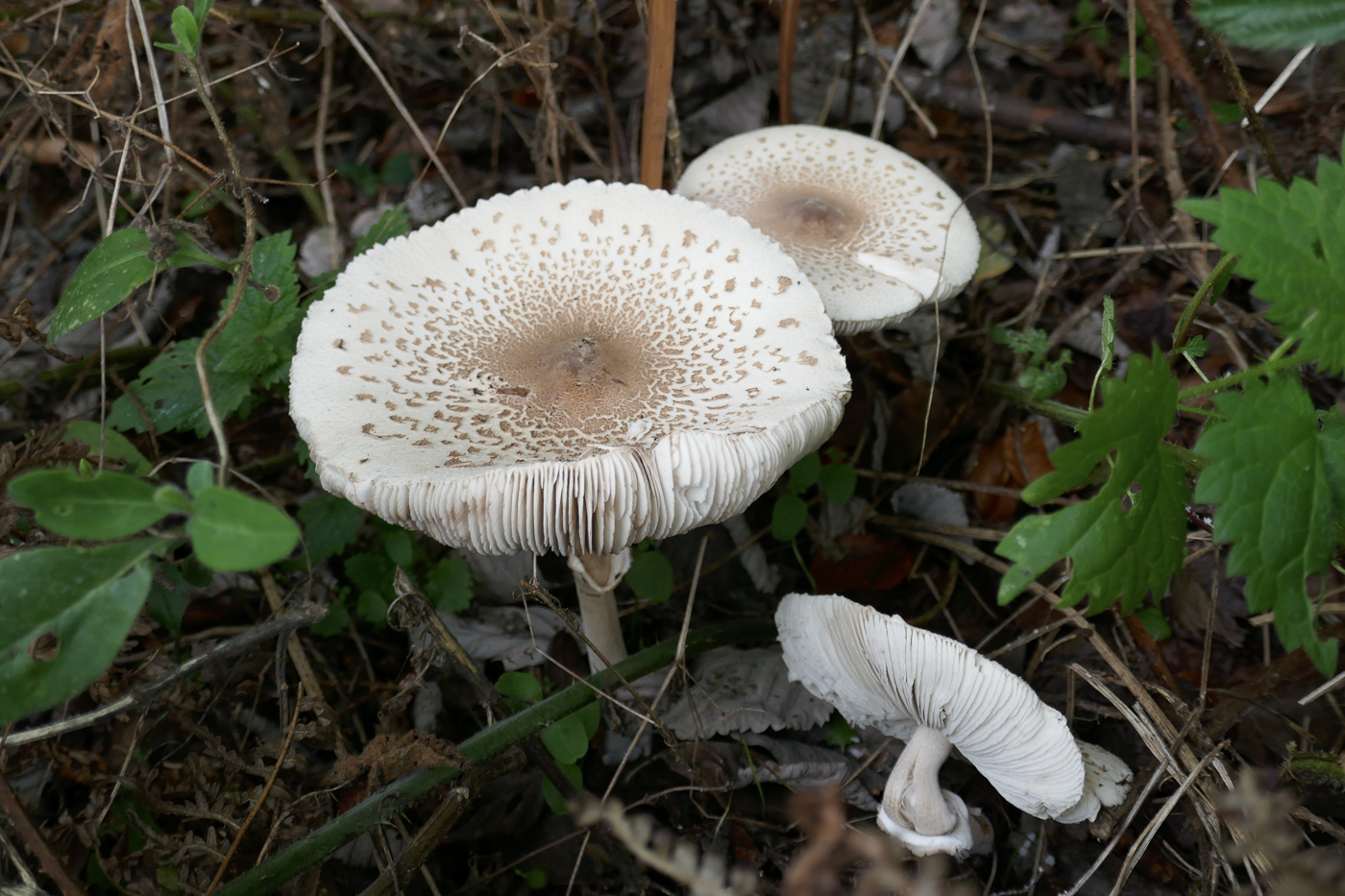
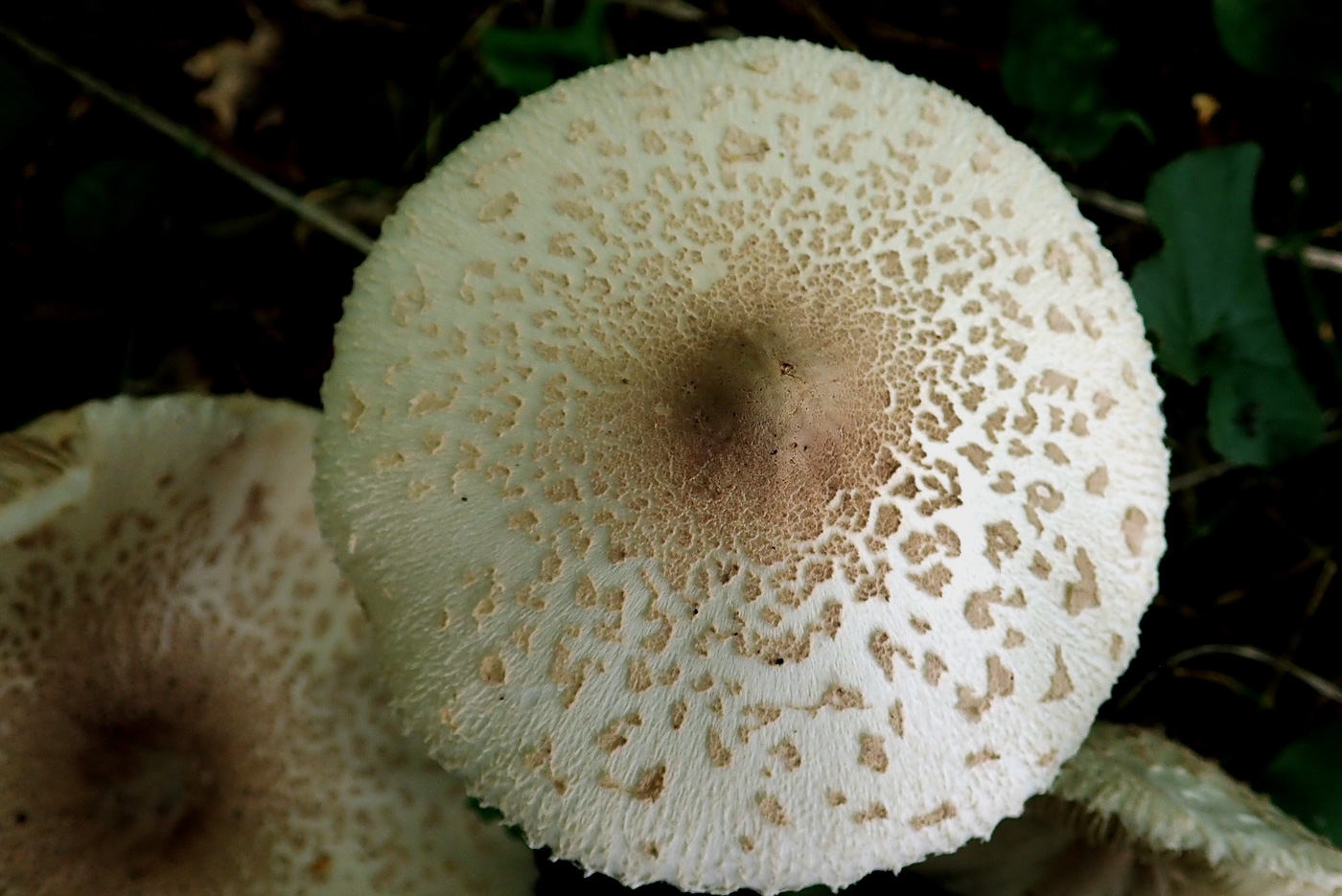
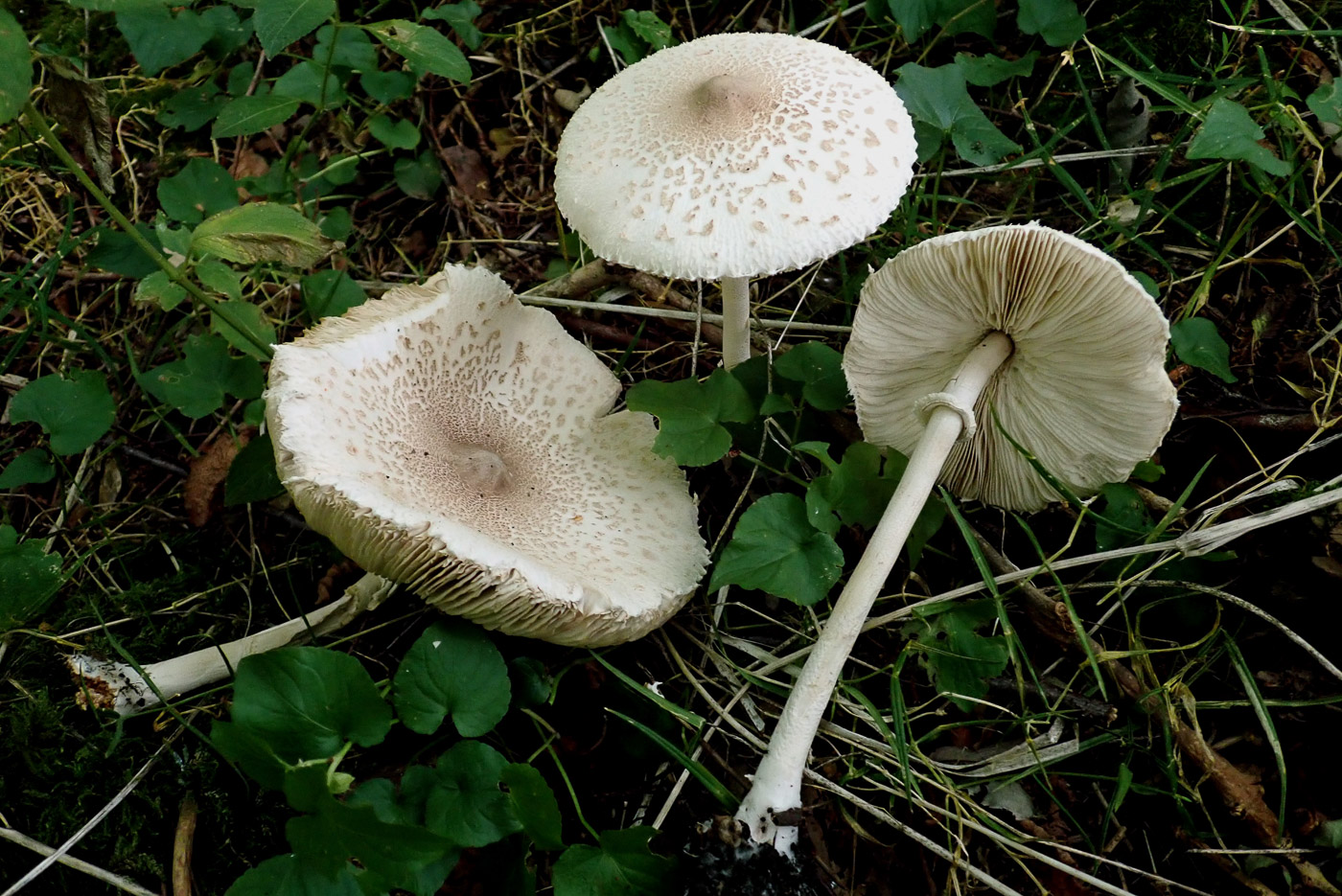
|
Macroleopiota mastoidea (Slender Parasol)
Nov 11, 2022. Adjacent to Captain's Wood near Chesham Greg Douglas found this group of Parasols, noted the snakeskin stem markings which eliminated Chlorophyllum rhacodes (Shaggy Parasol) and also noted the distinct central umbo which separates this species from other similar Parasols. Though these are rather dried-up specimens it is possible to see that the cap surface is considerably less scaly than in M. procera, and the clear raised umbo separates if from the otherwise quite similar M. konradii (though for many authors these two species are synonymised.)
Sep 27, 2022. Under the Limes at Turville Heath Penny spotted a broken specimen of this species, then a standing specimen, and though both were on the small side for a Parasol - the larger cap probably 6-7 cm across - and not fully developed, the pale cap markings with a subtle hint of pink flesh colour, also the bulb, the ring and the pale snakeskin markings on the stem, left her sure of its identity. When mature the cap has a distinct central 'nipple', not yet developed here. The species is less common than our familiar Parasol and Shaggy Parasol.
Oct 8, 2021. At Stampwell Farm Jackie Ewan found these nice specimens. The species is rather paler, smaller and more delicate than the more common Parasol and Shaggy Parasol (compare with M. procera dated Sept 20th and also with M. konradii dated Oct 12th). Like those species it can occur in woodland and grassland areas but also commonly occurs in dunes - not a likely habitat in the county!
Sep 10, 2020. Found by Penny Cullington growing at the pathside in Rushbeds Wood, this graceful species is less common than the Parasol and Shaggy Parasol and separated from them by the paler small granular scales on the cap and stem and by the prominent umbo (bump) in the cap centre - like a nipple, hence its common name. There is debate whether the extremely similar M. konradii (which lacks the nipple) is a separate species because intermediates occur where the umbo is hardly prominent at all, but at present both go under the name of M. mastoidea.
|
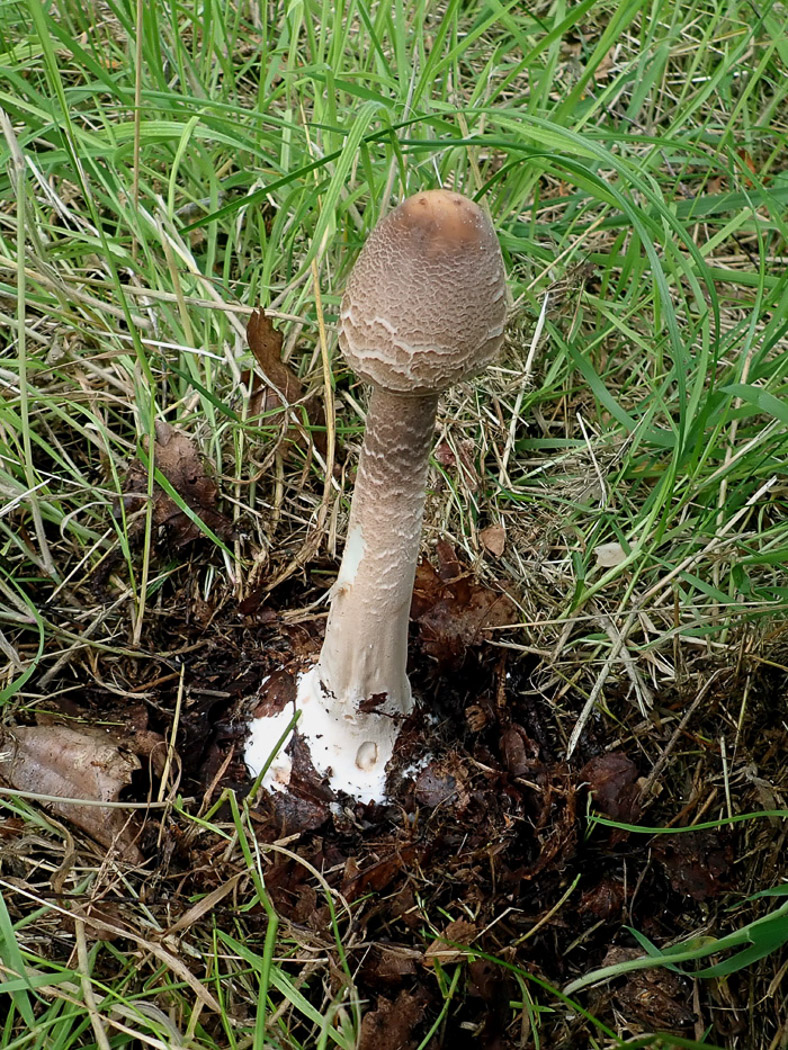
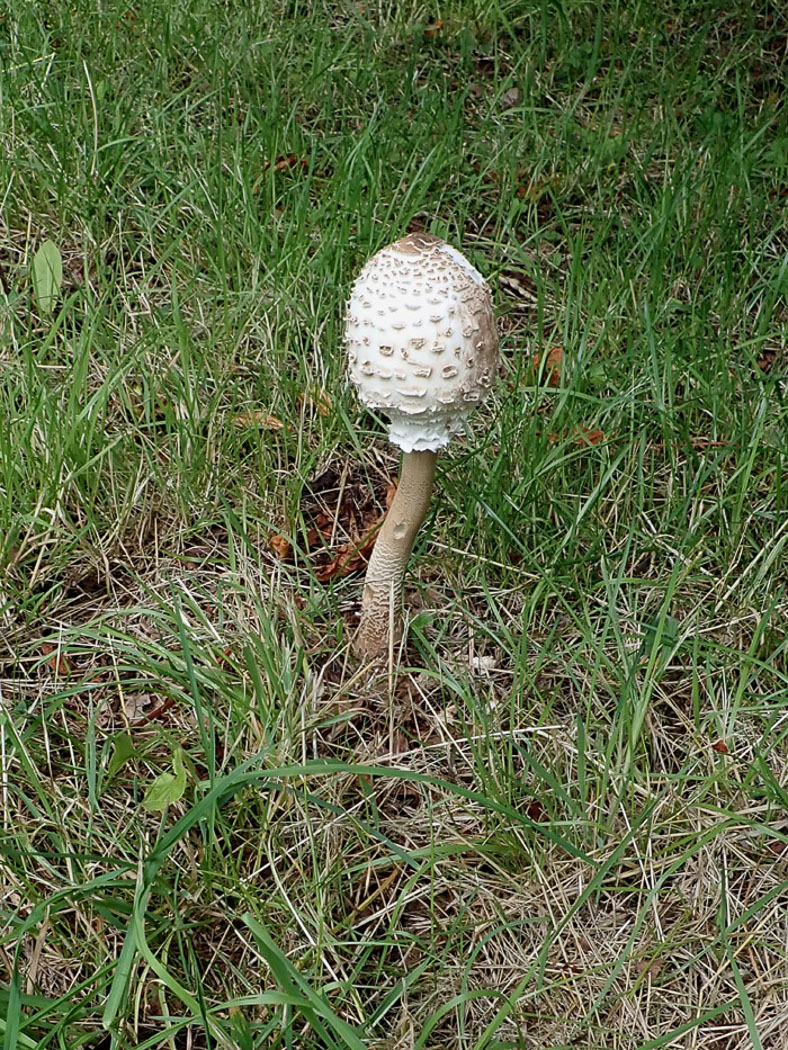
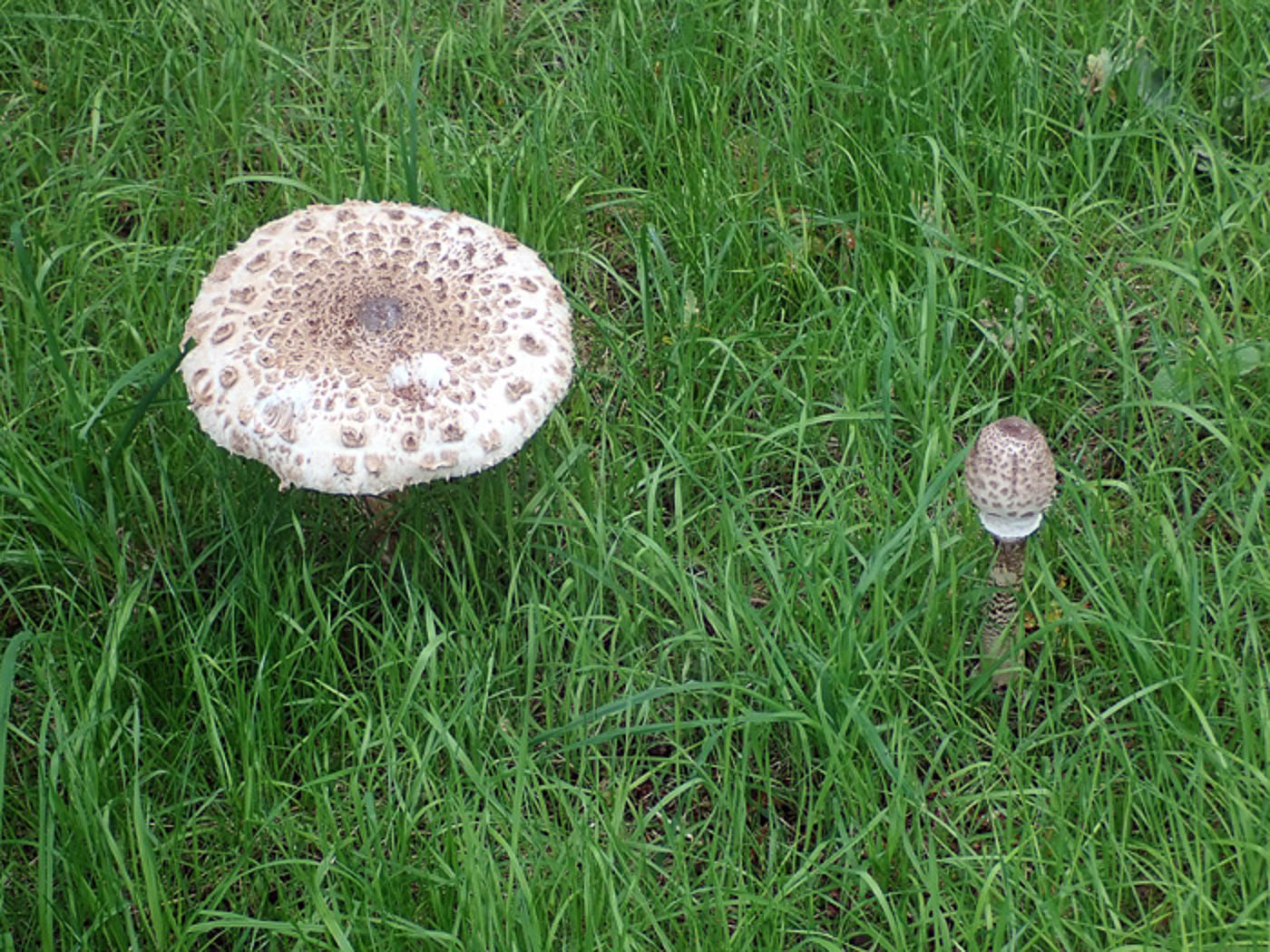
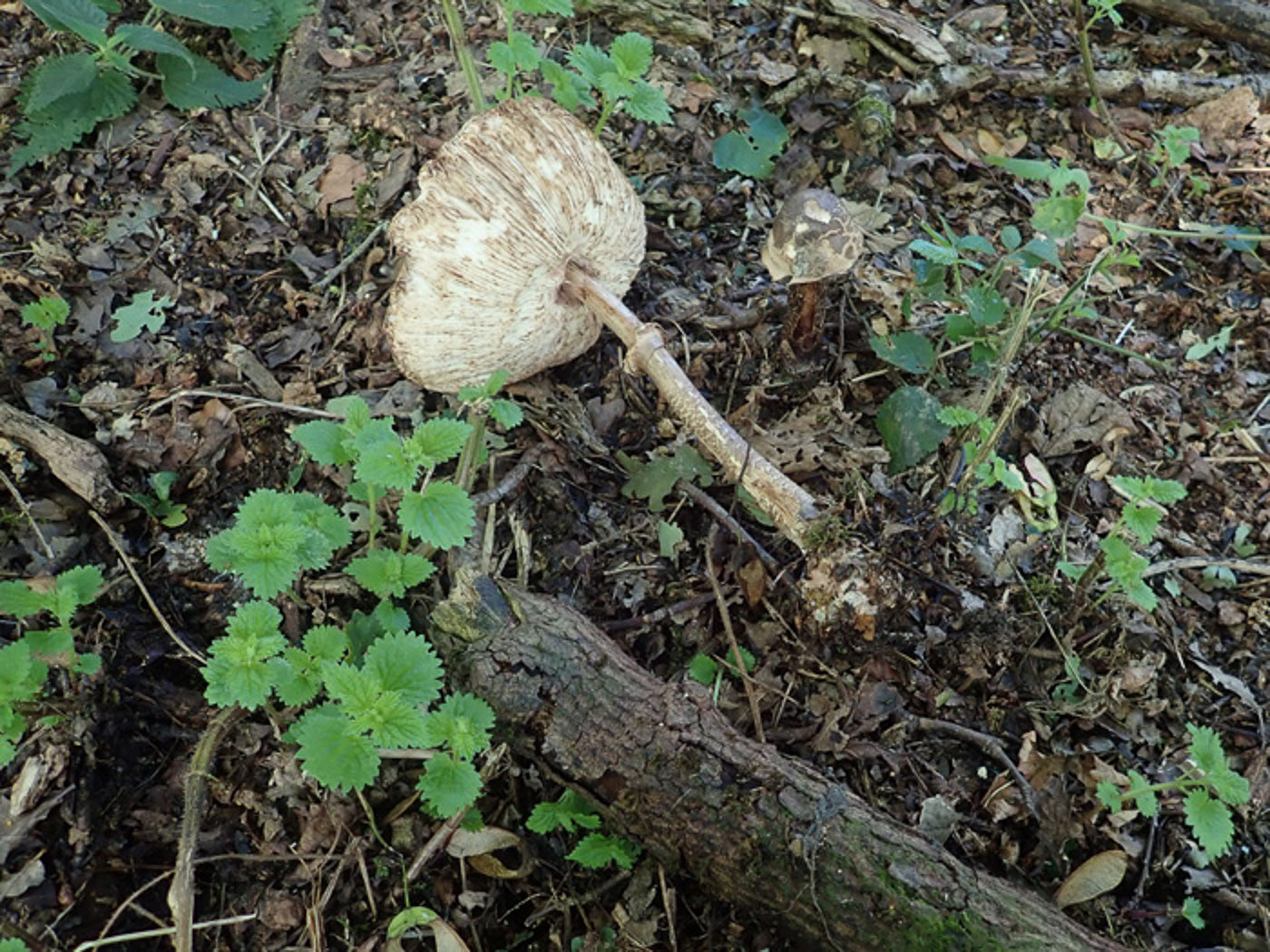
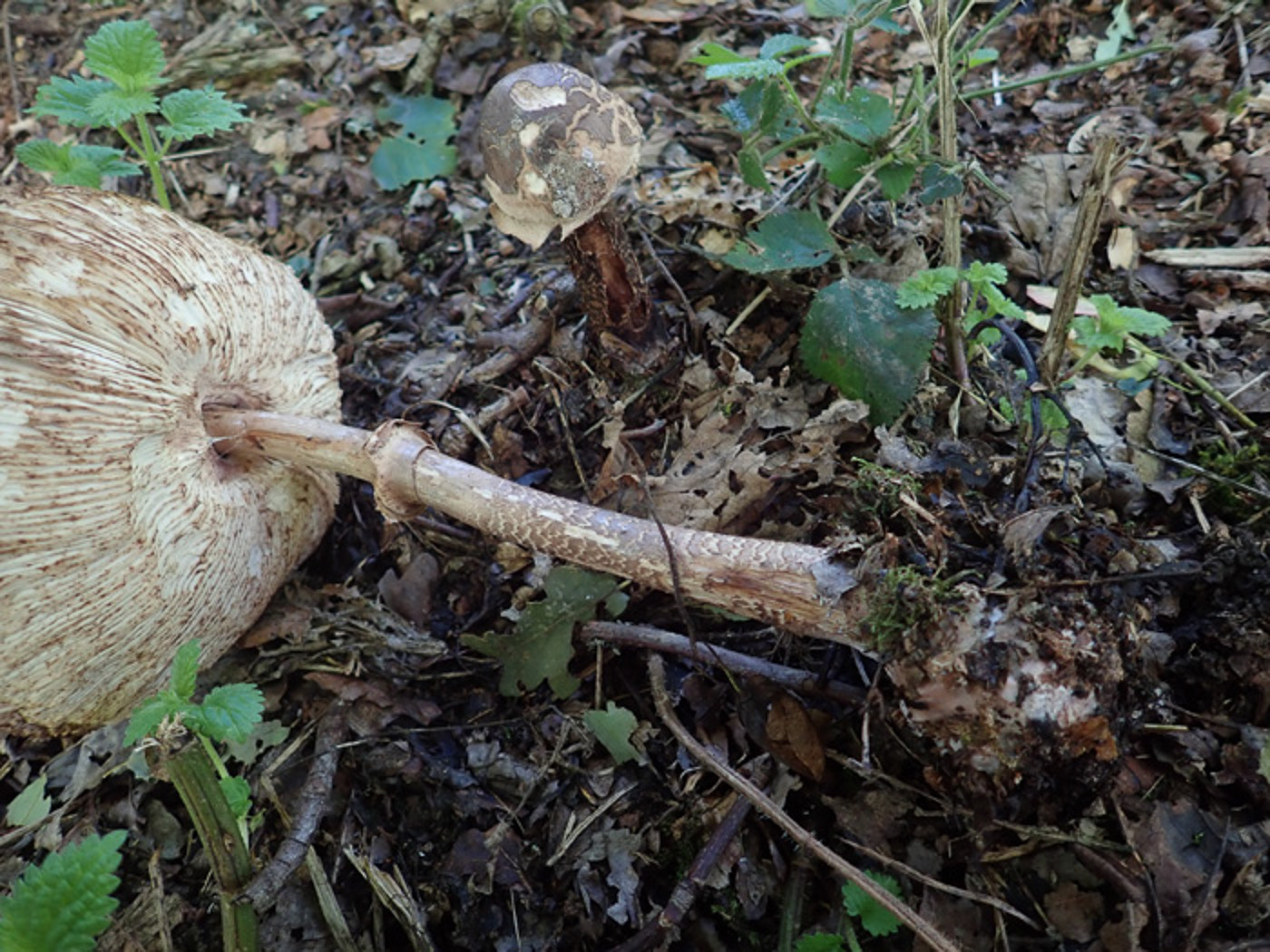
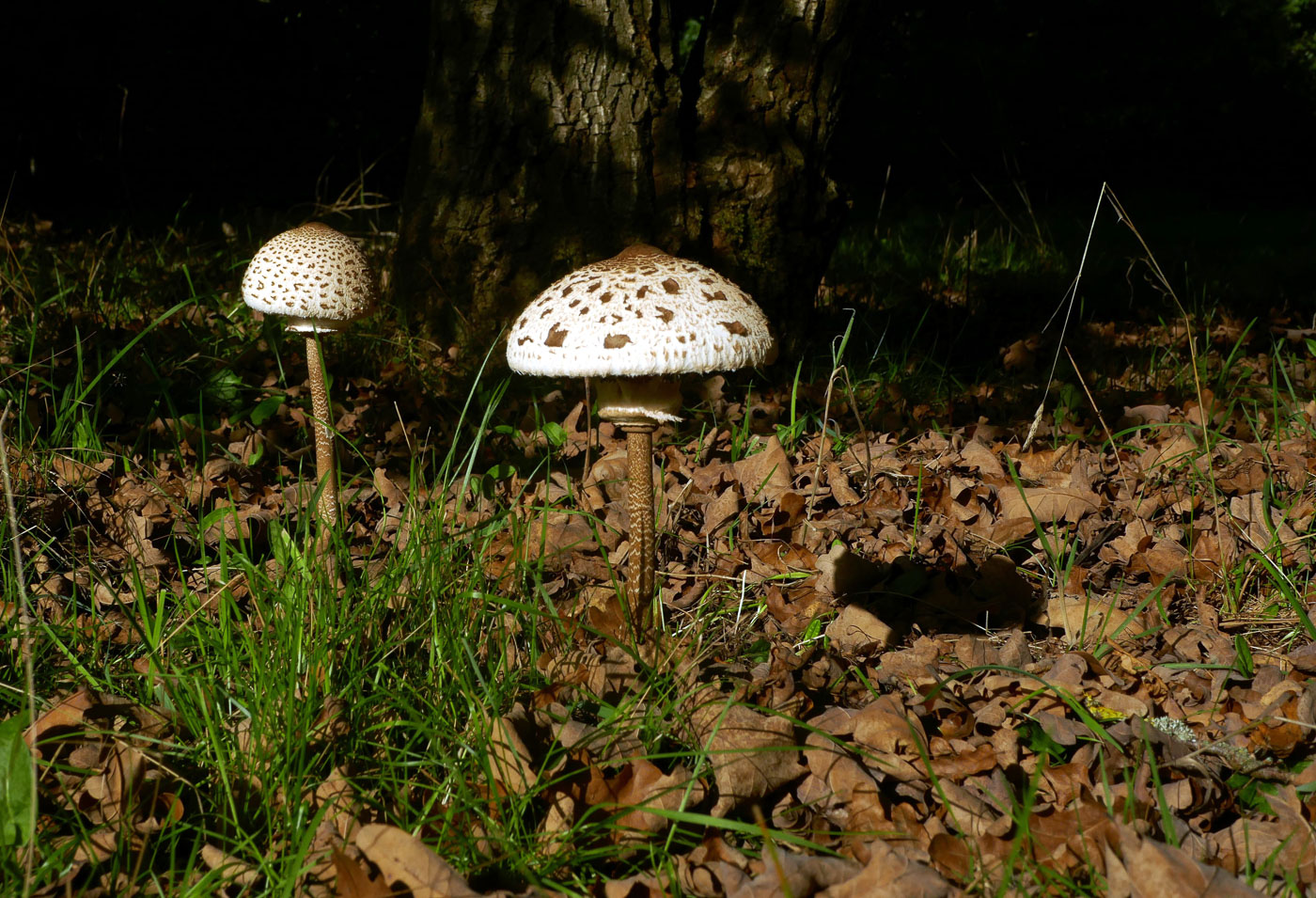
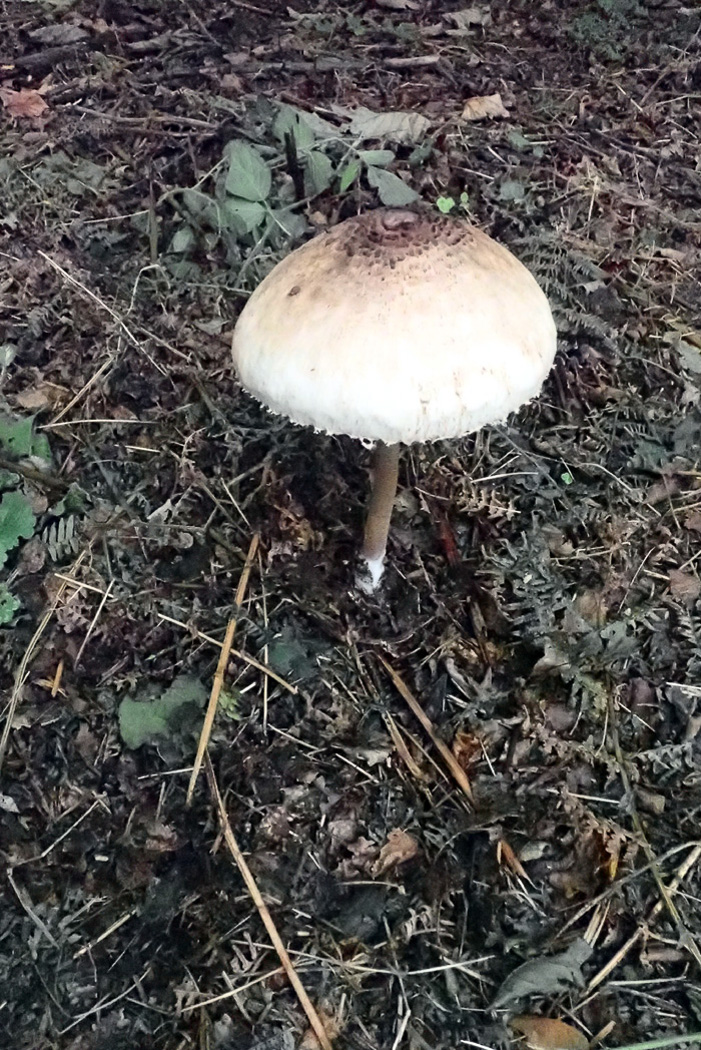
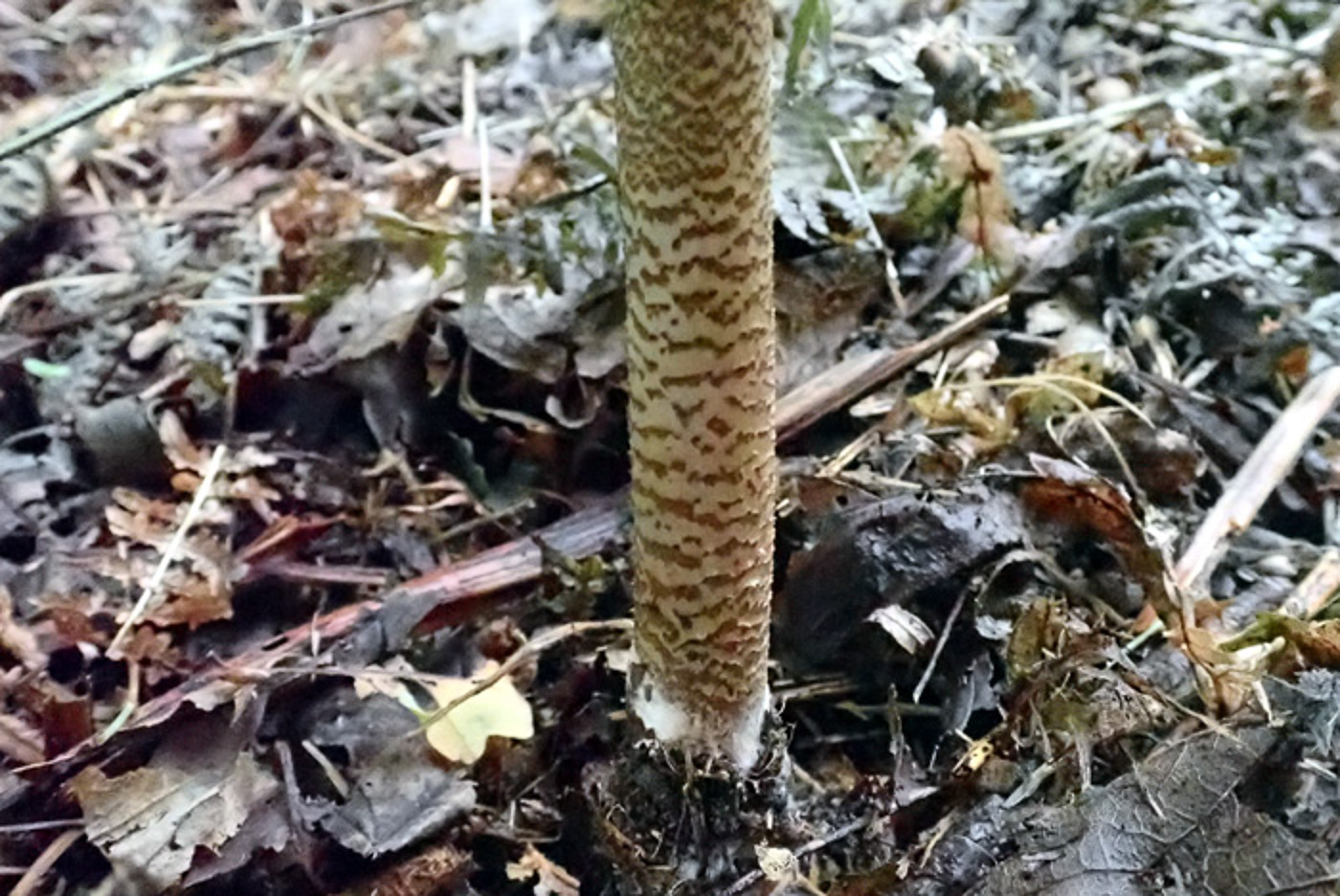
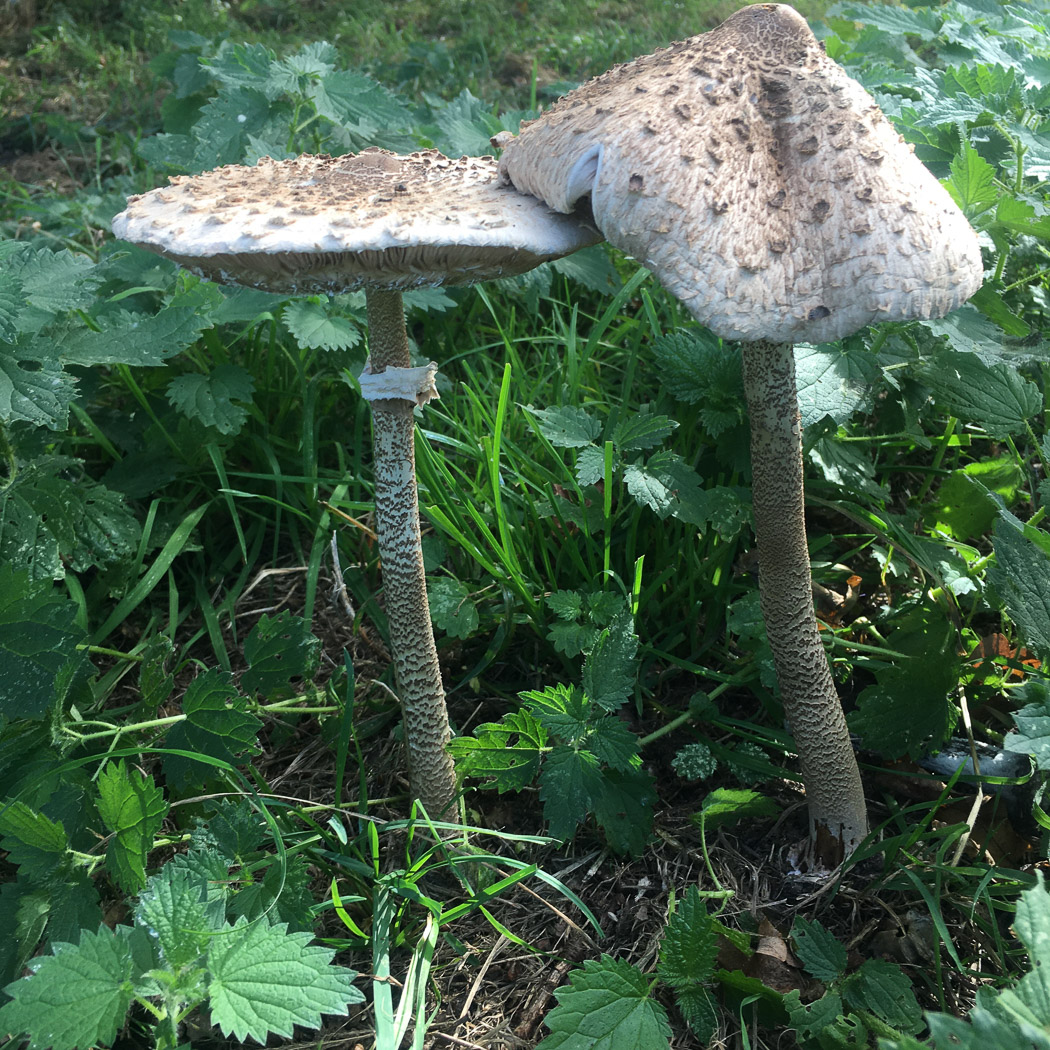

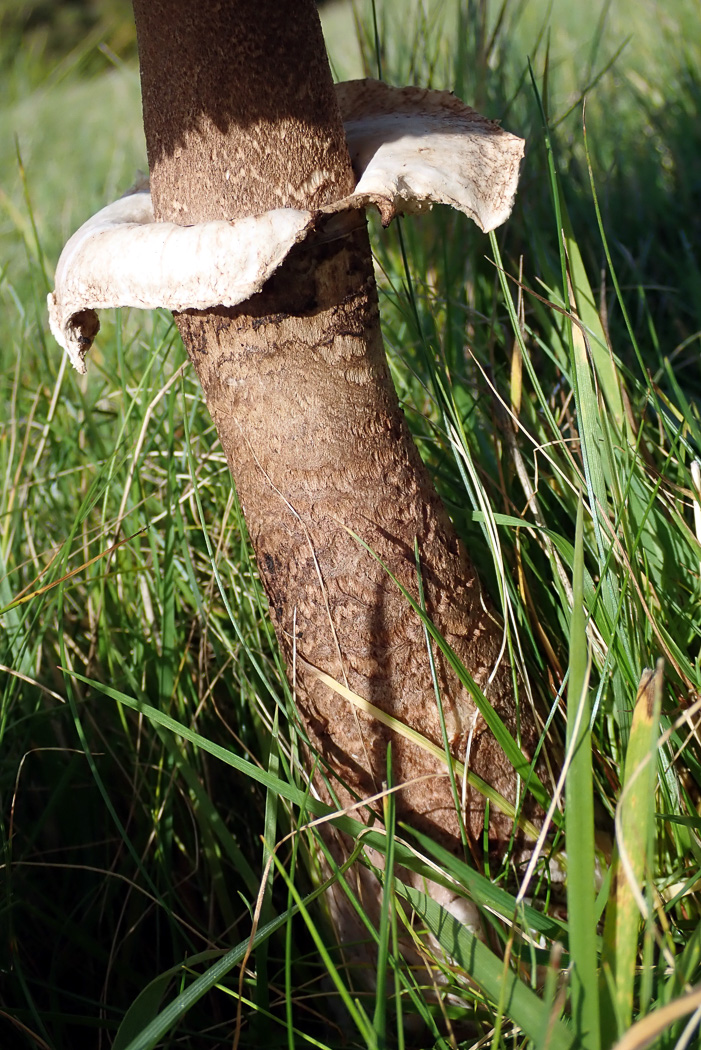
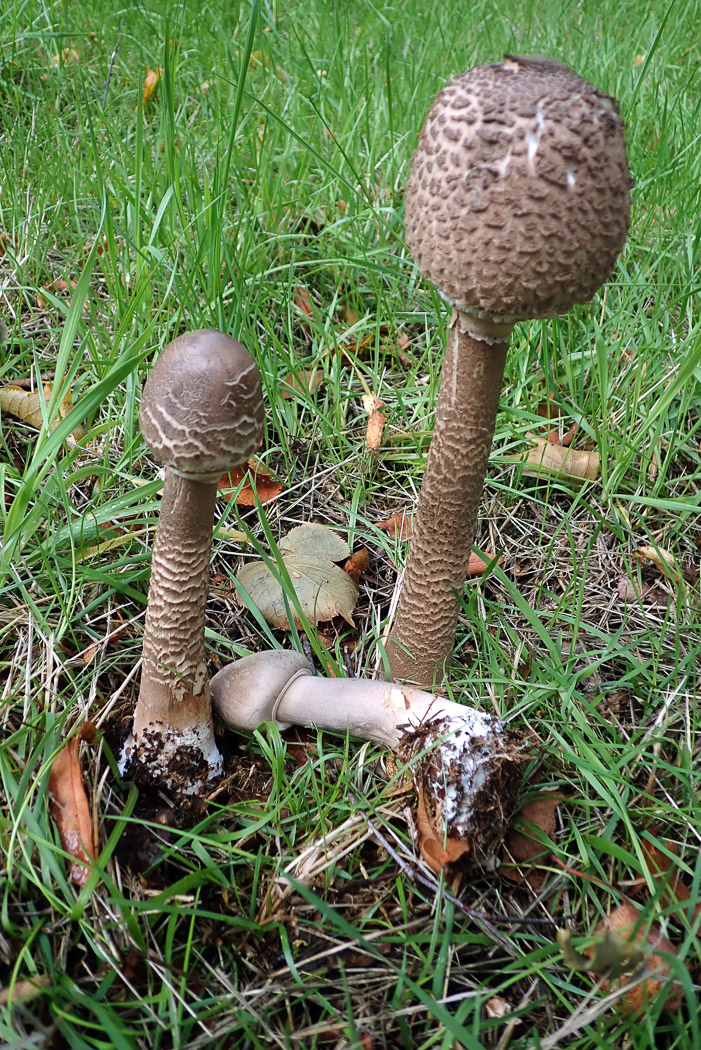 |
Macrolepiota procera (Parasol)
Aug 12, 2023. Having entered some rather dreary first specimens of this species a few weeks back, Penny found some beauties at Turville Heath today. The photos show the various stages of its development, the largest cap being a good handspan in width.
Jul 17, 2023. In contrast the the delicate species seen above, here is one of the largest Lepiota species, hence its genus name. This was under mixed deciduous trees at Turville Heath, found by Penny, though the relentless rain and wind of recent days had taken it toll so it was not in great condition. Nevertheless the snakeskin stem markings and swollen base left no doubt as to its identity.
Sep 16, 2022. At Stampwell Farm under an Oak Jackie Ewan found this pair, one immature and one maturing nicely and both displaying the snakeskin markings of the species on the stem. She then counted 42 more fruitbodies in a bramble patch under a plum tree! Check the Masterlist for several more examples of this common but beautiful mushroom.
Sep 7, 2022. In an open grassy patch at Turville Heath Penny was on the lookout for this species which is normally very common here. From quite a distance away she saw this singleton, about 20 cm tall x 12 or so across. Clearly the recent welcome rain had removed some of the scaly cap surface but the snakeskin markings on the stem left no doubt as to its identity. Greg Douglas also reported finding this species today - the number of times that happens .............! See the Masterlist for previous Finds
Sep 20, 2021. In the Walks at Brill Common Joanna Dodsworth found these splendid specimens. displaying the typical characteristics of the species well. Note the evenly scaly cap with darker scales on a pale background, also the beautifully clear 'snakeskin' markings on the stem (these absent in the very similar and often misidentified Chlorophyllum rhacodes (Shaggy Parasol)). Note also the ring on the stem which with care will slide up or down – this a feature of both species. The Shaggy Parasol is probably the commoner of the two and when its flesh is damaged it stains bright orange - the genuine Parasol flesh, however, remains unchanged. If you are into eating fungi DO NOT EAT Shaggy Parasol which can cause serious stomach upsets.
Nov 12, 2020. In long grass on Ibstone Common Penny C. nearly missed this huge specimen (especially as she had her eye in looking for tiny grassland species!). It is well weathered, however, but worth including as we only seem to have young examples so far (dated Sept 05!) and the cap here was wider than Penny's hand so over 20 cm across. The dark cap scales on a pale ground, the substantial stem ring and snakeskin stem markings are all still in place to identify this common and impressive species which has continued fruiting on and off for well over 2 months.
Sep 5, 2020. This collection was found by Penny Cullington at Turville Heath growing under Lime in long grass. Though the white gills are not yet exposed, the three specimens show how the cap starts out life entirely smooth brown but gradually splits to form scales as it expands. The stem surface is also smooth when really young (as seen in the smallest fruitbody) but soon splits and develops the diagnostic 'snakeskin' effect which typifies this species and separates it from the similar Chlorophyllum rhacodes (Shaggy Parasol).
|
 |
Macrotyphula fistolosa (Pipe Club)
Oct 10, 2020.Having been alerted to the presence of this fungus next to her Stinkhorn in Naphill Common on Oct 8th, Sarah Ebdon returned for the photo shown here. These unusual-looking fungi can get to 30 cm high and can be solitary as here or gregarious. They favour Beech litter and are quite common though easily missed!
|
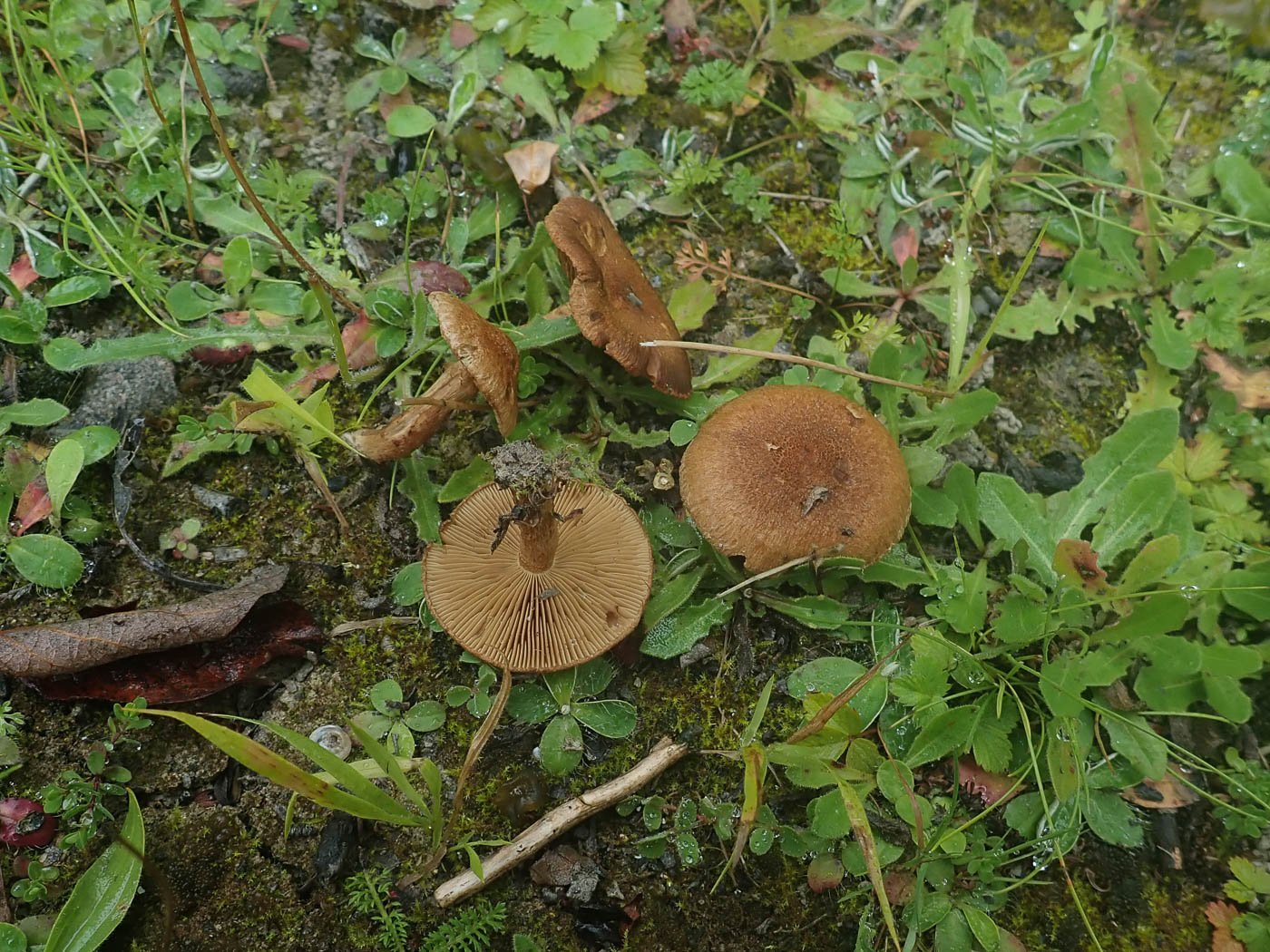 |
Mallocybe dulcamara (an unusual Fibrecap with no common name) 
Aug 8, 2023. At College Lake Penny found surprising numbers of this uncommon Fibrecap (previously in genus Inocybe) growing in path edges with Willow. The species has a rusty brown flattish cap, to 4cm across or more and having a roughened dry fibrous surface. Gills and stem are concolorous and the stem at first has a distinct hairy ring zone (a characteristic of this particular genus of Fibrecaps) though this tends to disappear. This is a first for Finds and is by far the commonest member of this small genus which is still poorly understood and probably has more species in the UK than we recognise at the moment.
|
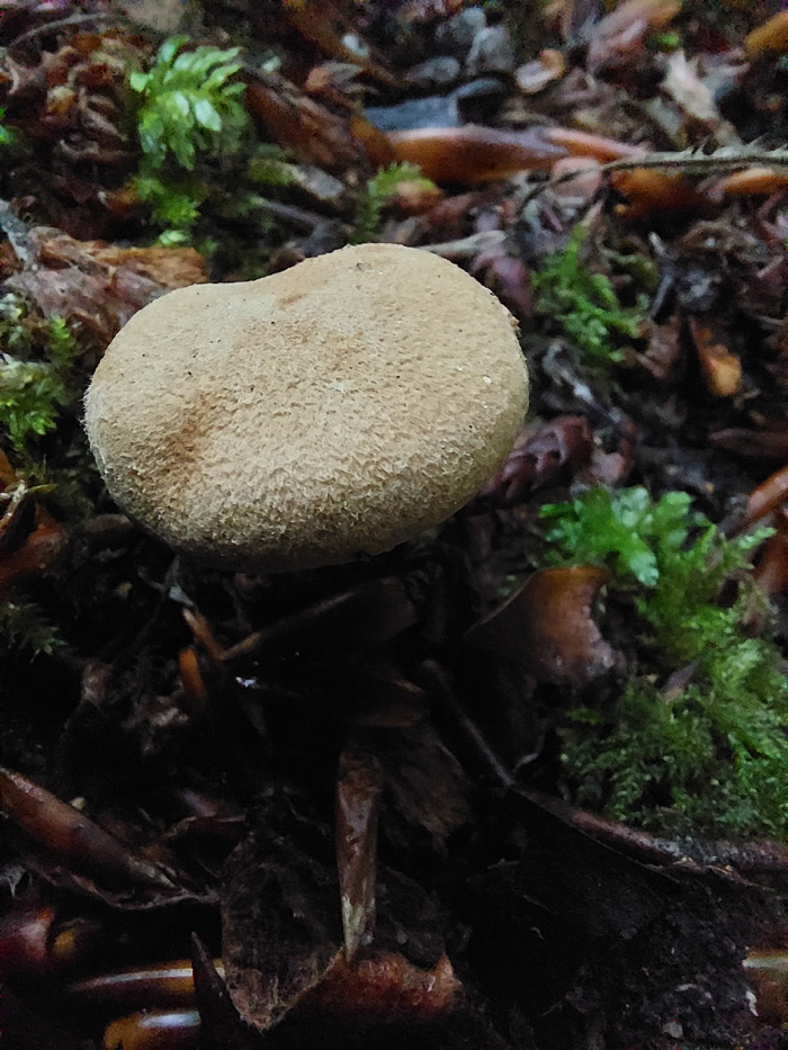
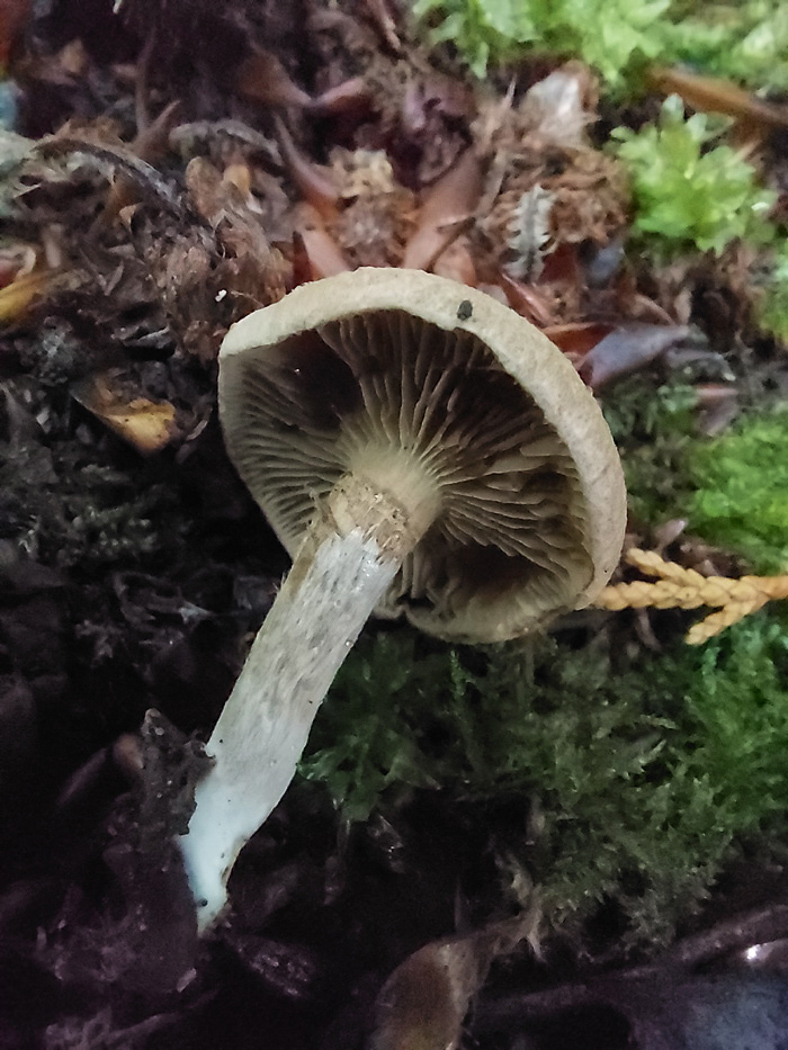 |
Mallocybe fuscomarginata (a rare Fibrecap with no common name) 
Aug 8, 2023. Under Hornbeam in Jordans Jesper Launder found this rare Fibrecap and took it to our microscope workshop the following day for further work to identify. Through the micro-features he recognised the specific genus but was then unsure though Penny was able to distinguish between the more common M. dulcamara (found the same day - see below) and M. fuscomarginata from the differently shaped gill edge cells. The species name refers to the darker brown gill edge which can develop in this species. Sadly the light was poor on collection hence his photos are not the best - his apologies! This is new to the county and to Finds.
|
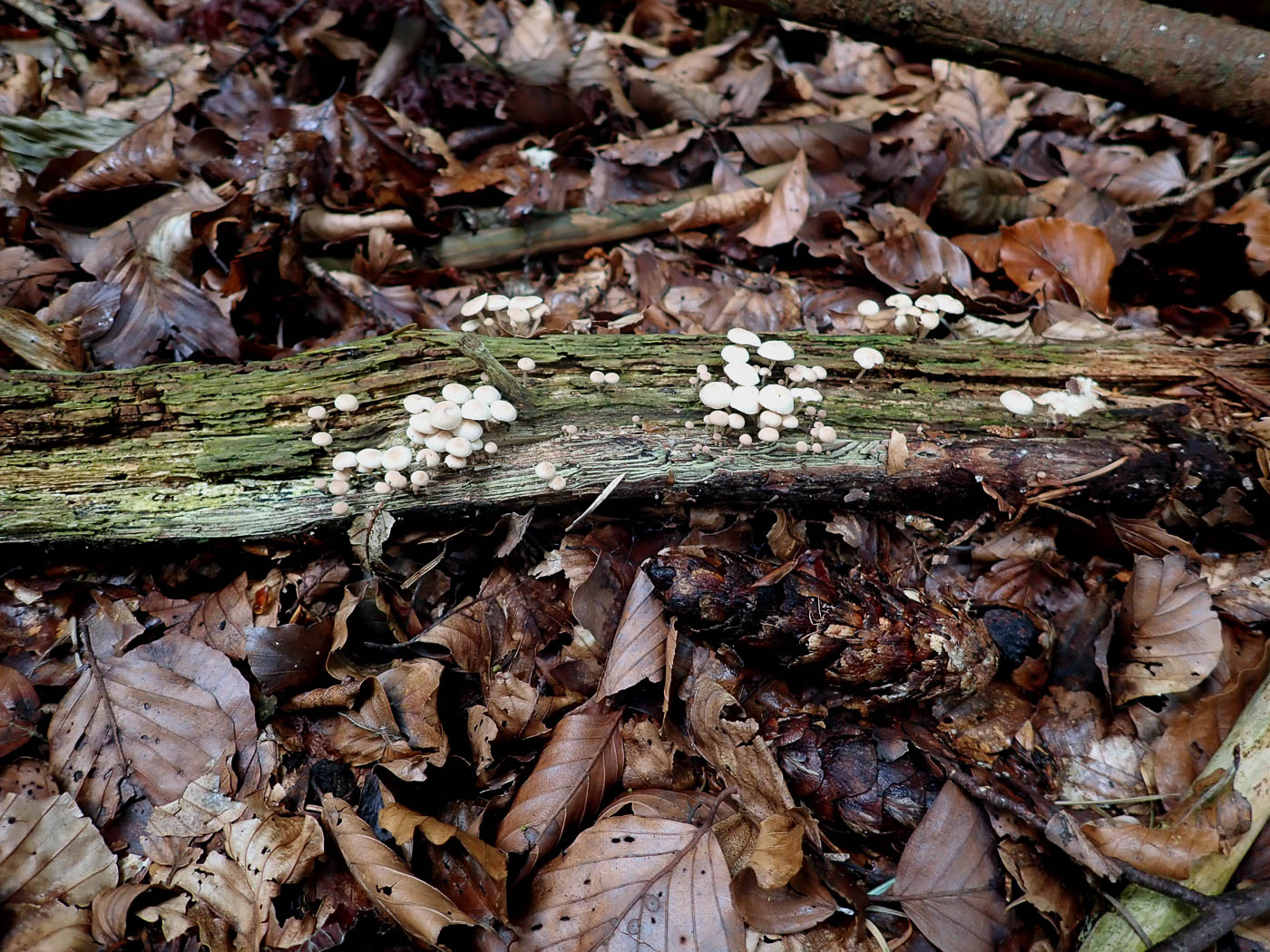
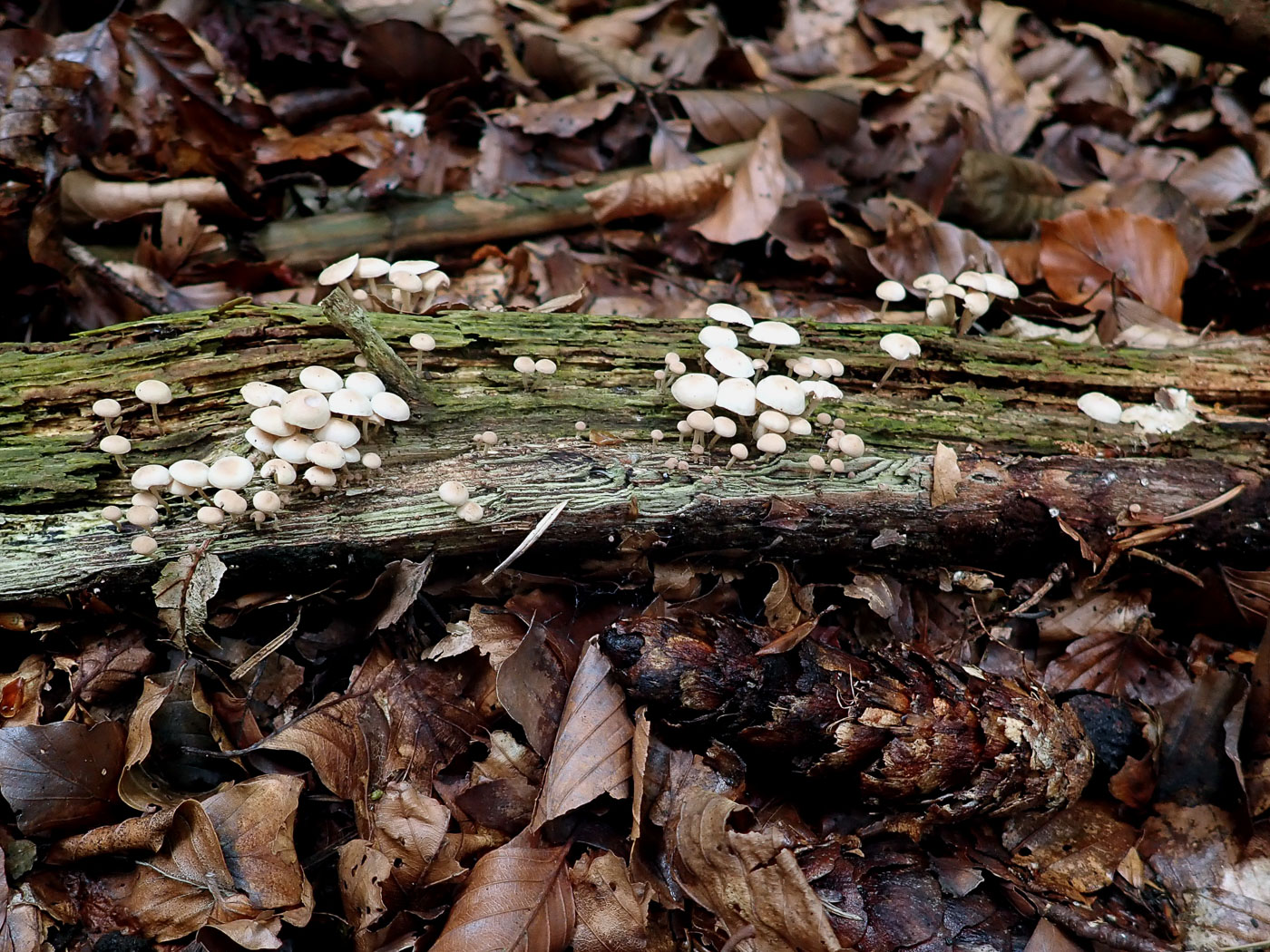
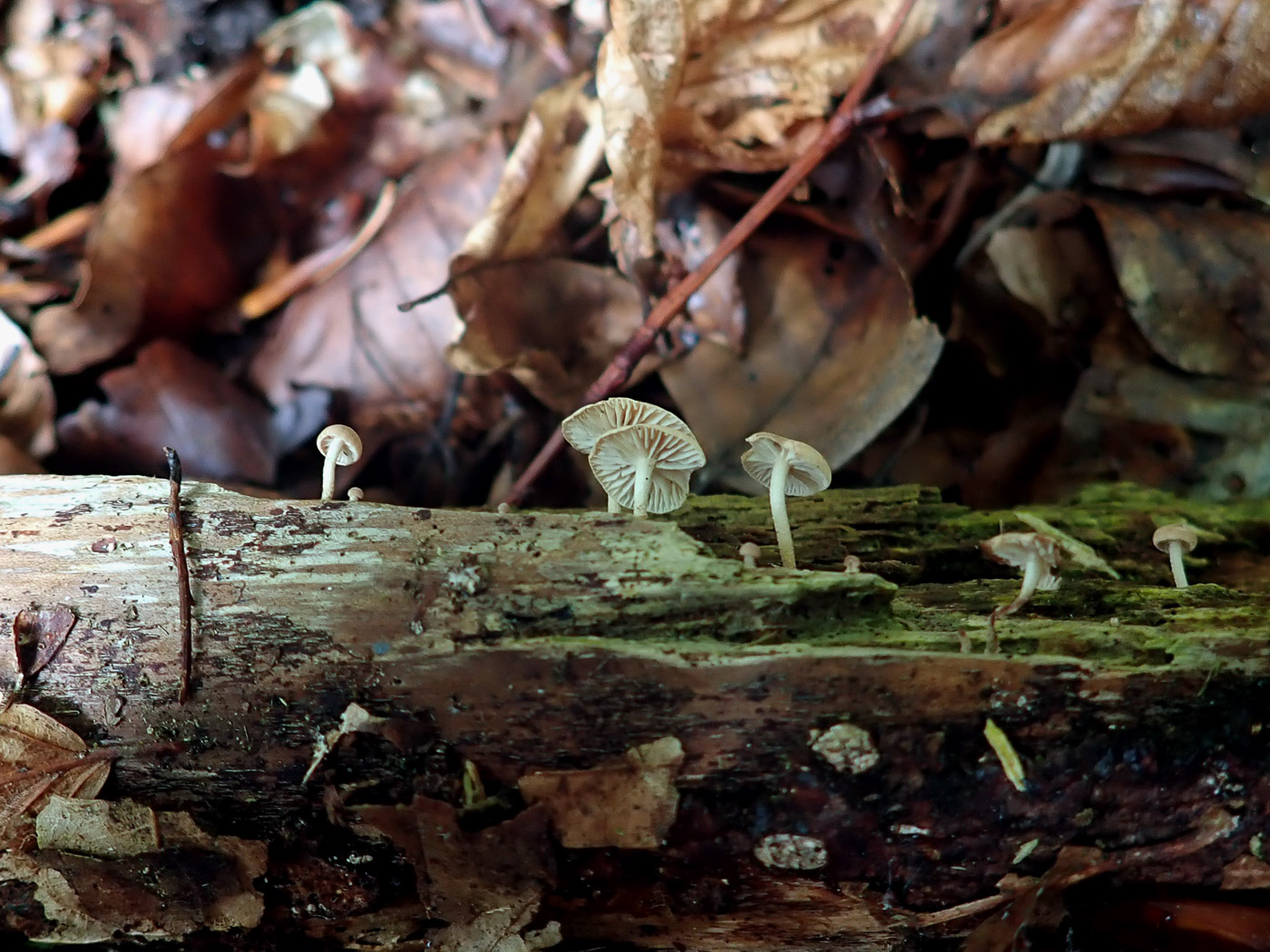
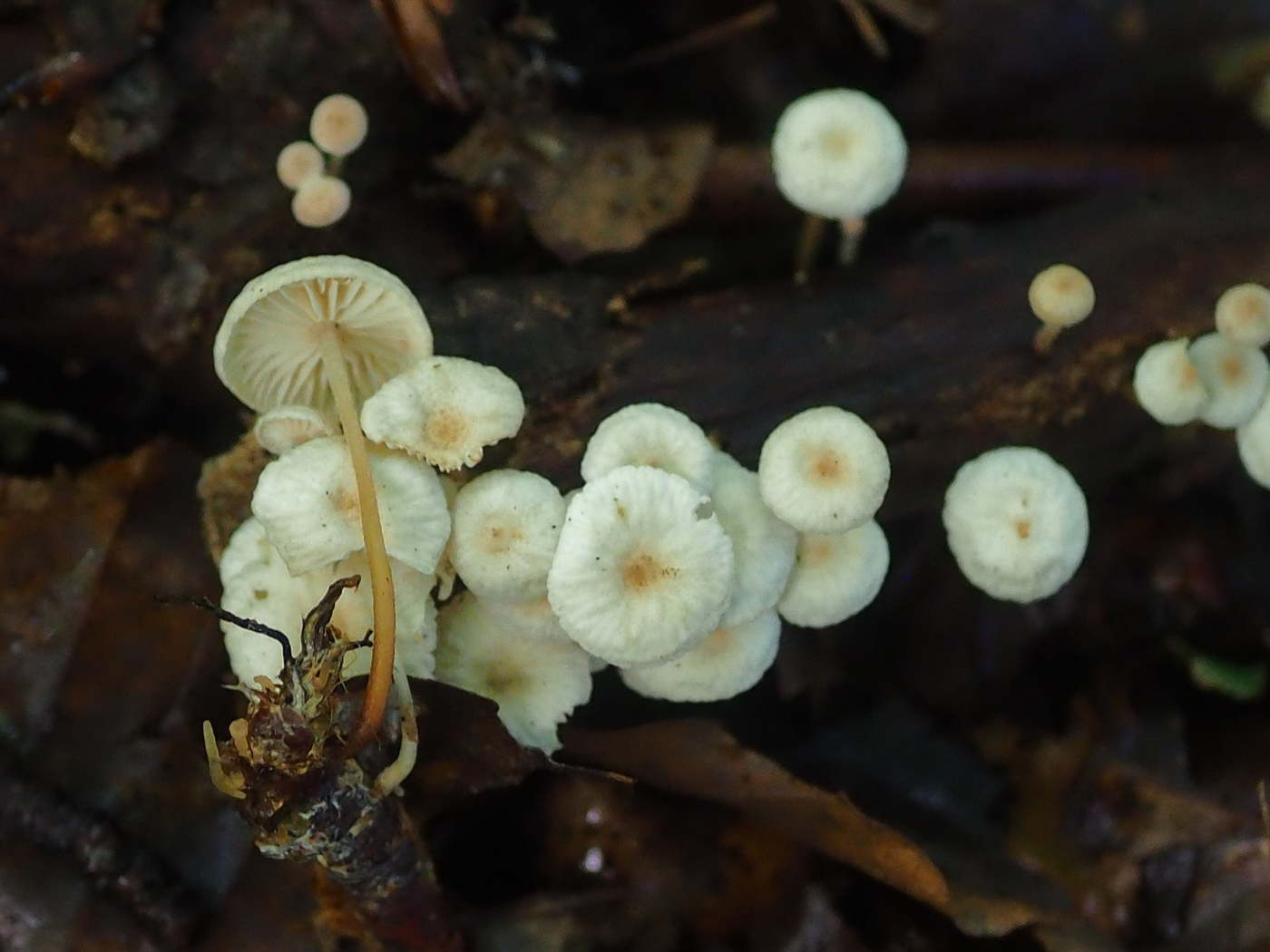
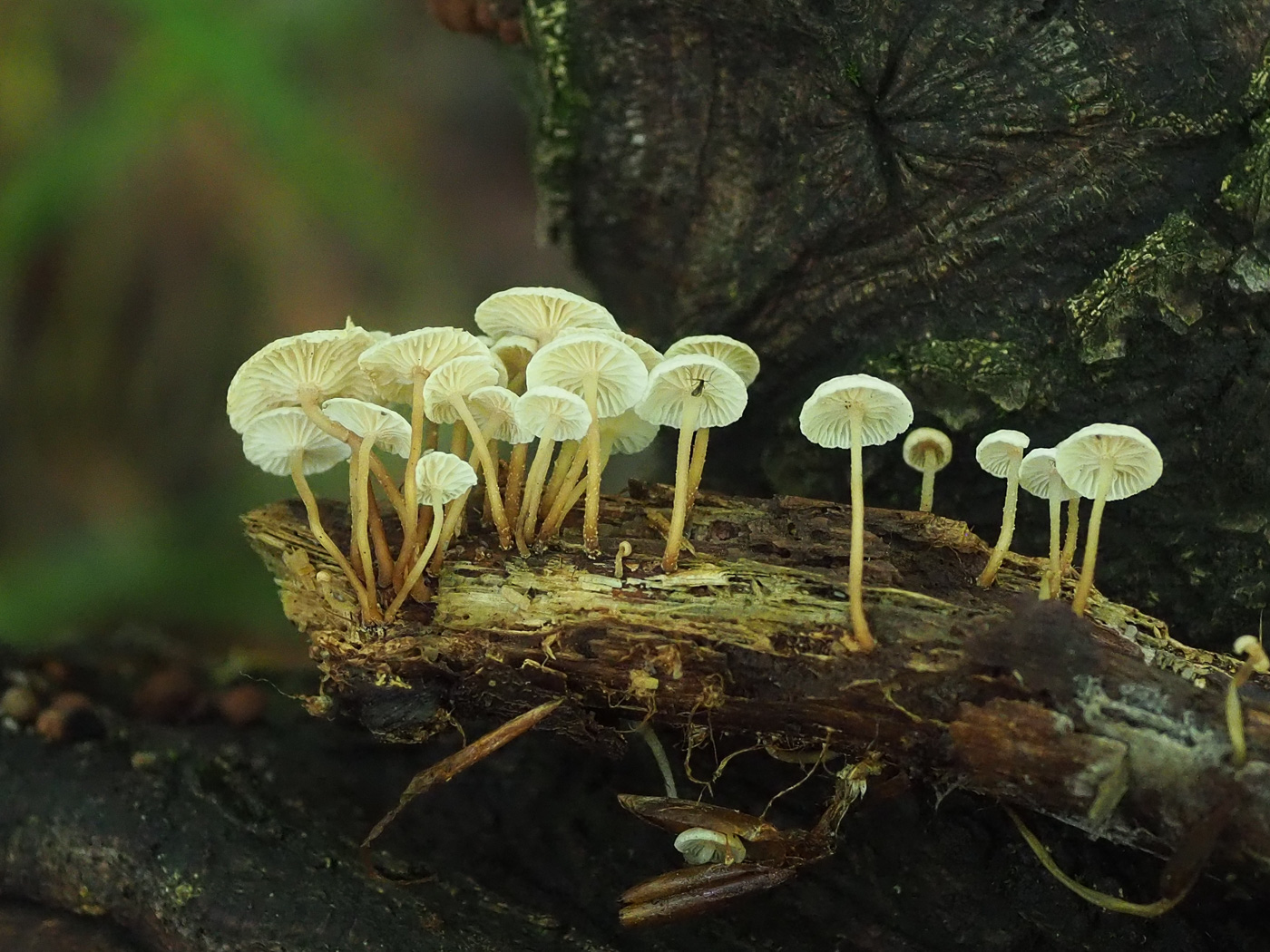
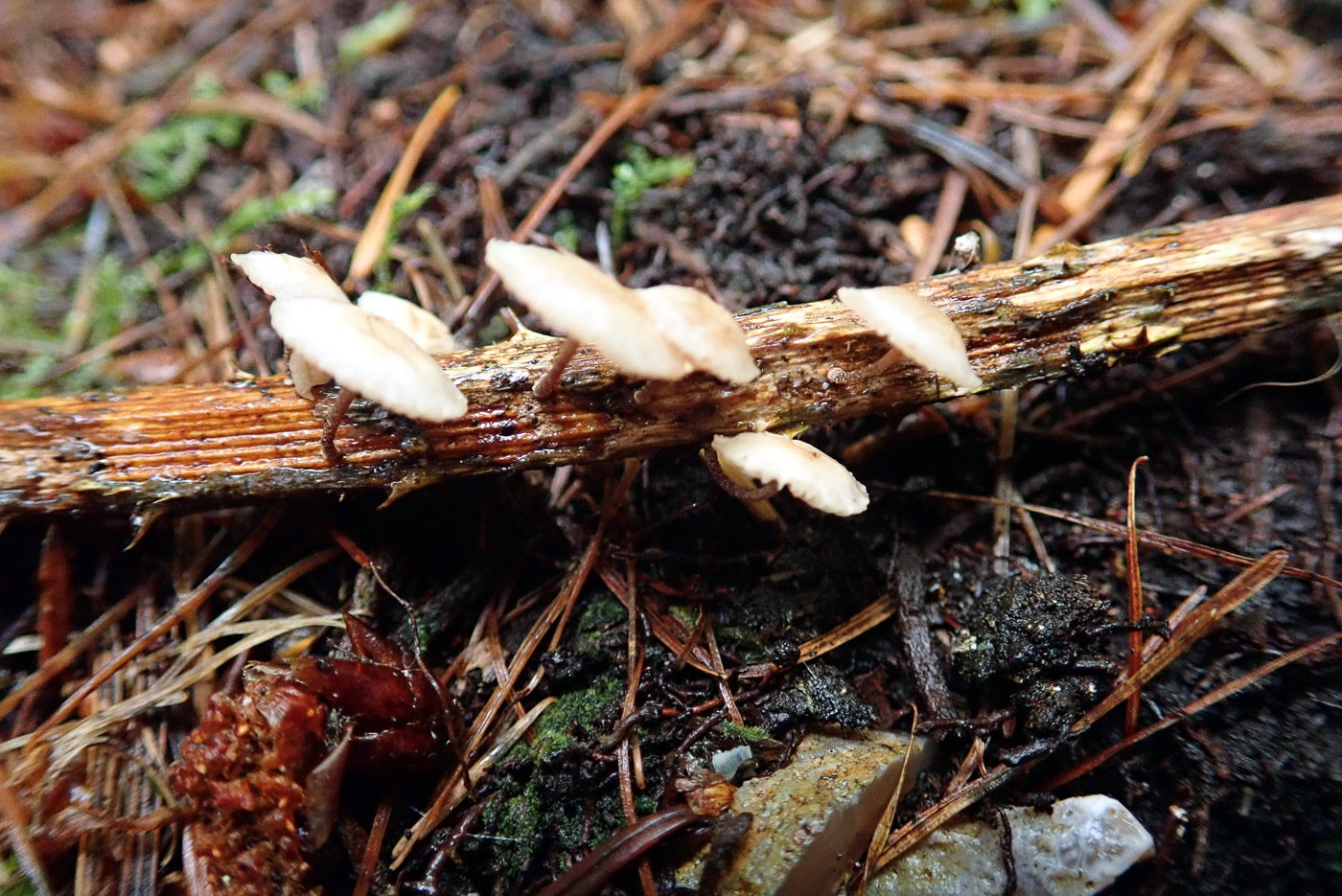
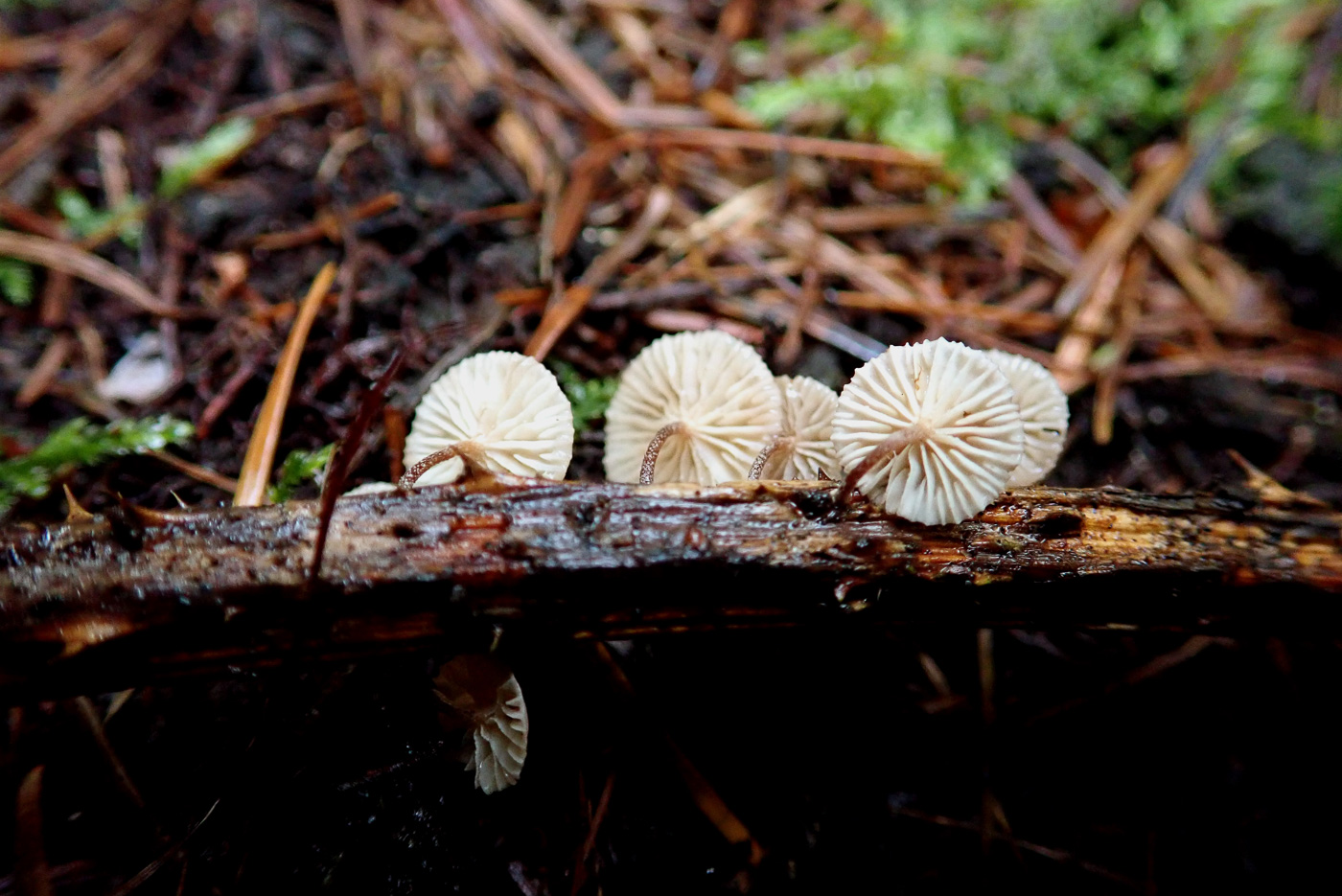
|
Marasmiellus ramealis (Twig Parachute) 
Aug 27, 2023. On a thin bare fallen conifer branch in Park Wood Ibstone Penny found a colony of these tiny mushrooms, with caps up to about 7mm across. The species is regularly in clusters like this on old Bramble stems and thin twigs of all sorts, so the branch here (only 4 cm thick) was on the large size hence the check with a scope at home later. The similar Marasmius rotula also was about in the litter, a little bigger and white rather than cream as here, but could be eliminated by the lack of a collar where the gills attach to the stem (see photo 3). Both species are common.
Aug 7, 2021. On a small piece of bare deciduous wood in Tinkers Wood John Catterson noticed and correctly identified this tight cluster of small white fruitbodies. The caps rarely get above 1 cm across, typically with a pale brown centre, the gills lack the 'cog-wheel' around the stem to which the gills of the very similar Marasmius rotula attach (see photo dated July 31st for comparison), and unlike any species of Mycena the stem is white at the top but gradually darkens to brown at the base - this often a feature of both Marasmius and Marasmiellus. The species occurs in large clusters on wood, often sticks and twigs, also regularly on dead Bramble stems.
Oct 5, 2020. If you notice a cluster of tiered tiny pale cream mushrooms on a dead bramble stem, you've probably found this species, collected today by Penny Cullington in Common Wood. Though it also occurs on fallen deciduous twigs, logs etc, it seems to favour dead bramble stems, frequently seen in large colonies. Caps are not much above 1 cm across and are superficially similar to those of Marasmius rotula (see photo dated Oct 01) to which it is distantly related. Note, however, the lack of collar where the gills attach to the stem, present in M. rotula.
|
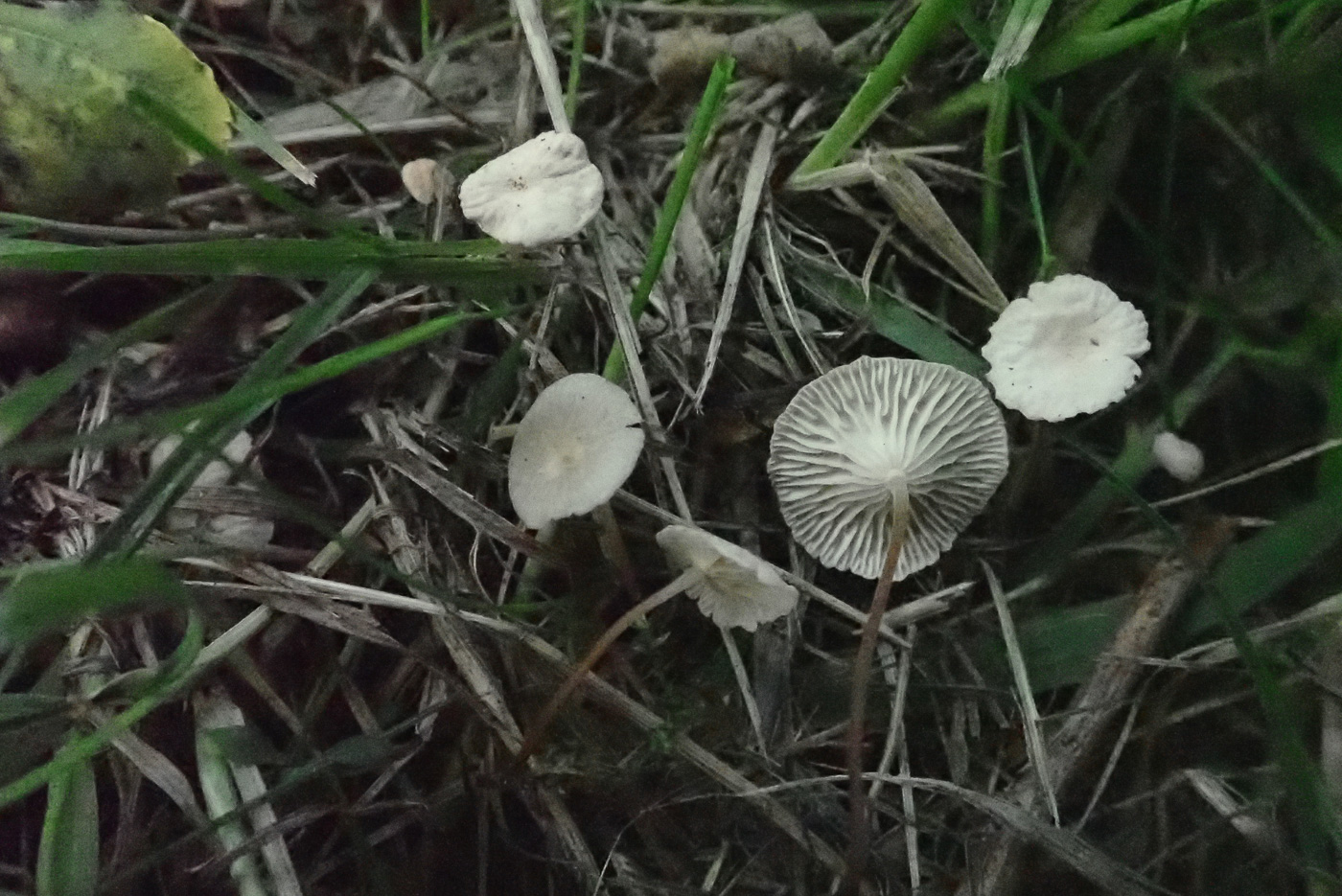
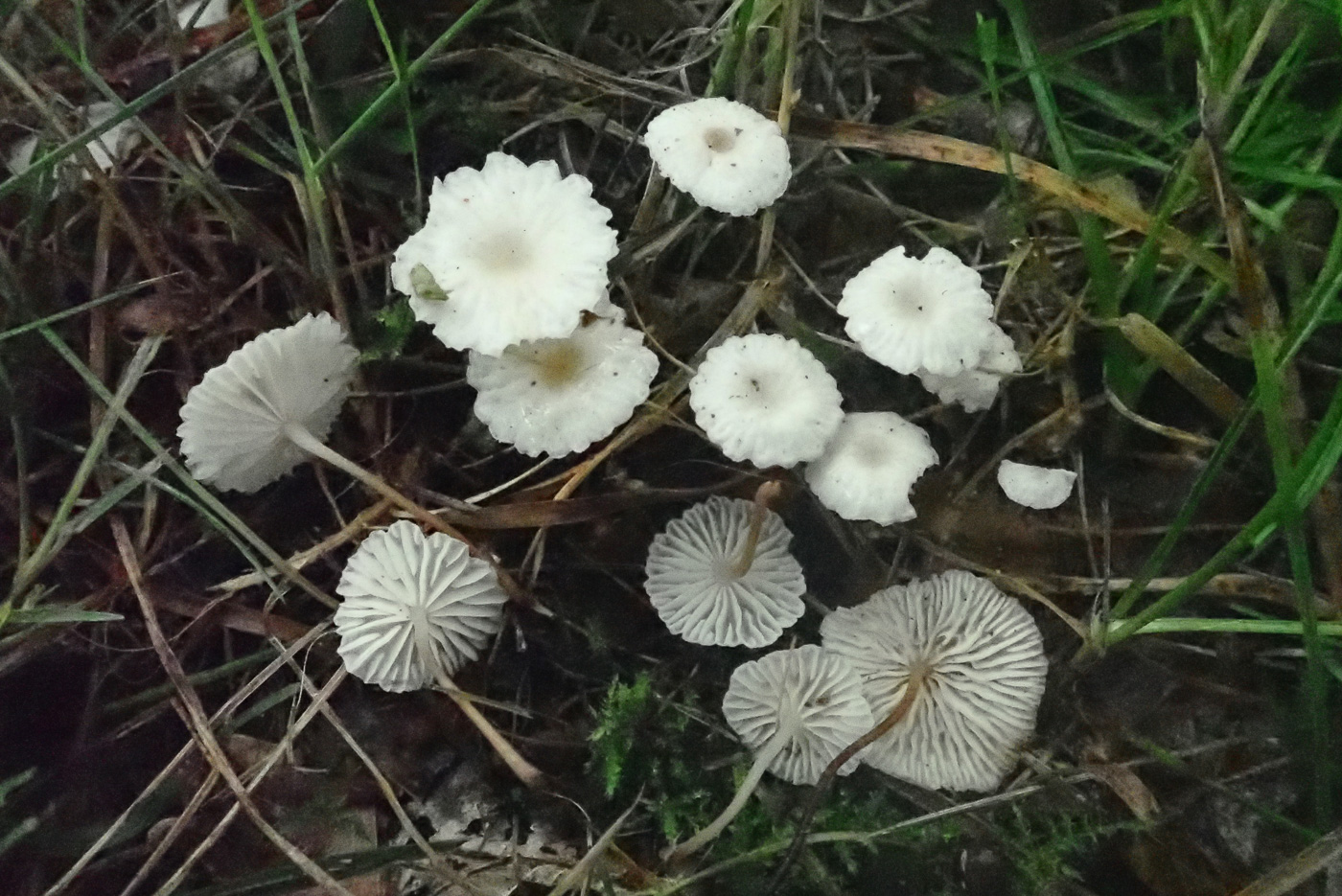 |
Marasmiellus vaillantii (Goblet Parachute) 
Jul 15, 2021. At Cadmore End under a large Oak Penny noticed many of these little white mushrooms in grass and at first glance suspected they might be on woody remains and therefore probably Marasmius rotula (Collared Parachute). Closer inspection showed they were mostly on decaying grass cuttings and also turning one over revealed no collar around the top of the stem to which the gills in M. rotula would be attached (see this feature illustrated for that species dated July 31st), here the gills were clearly joined to the stem. Checking with a scope at home confirmed the species, not rare and with plenty of county records mostly with this same grassy substrate. Visiting this same site a few weeks later, Penny found the species still abundant (photo 2).
|
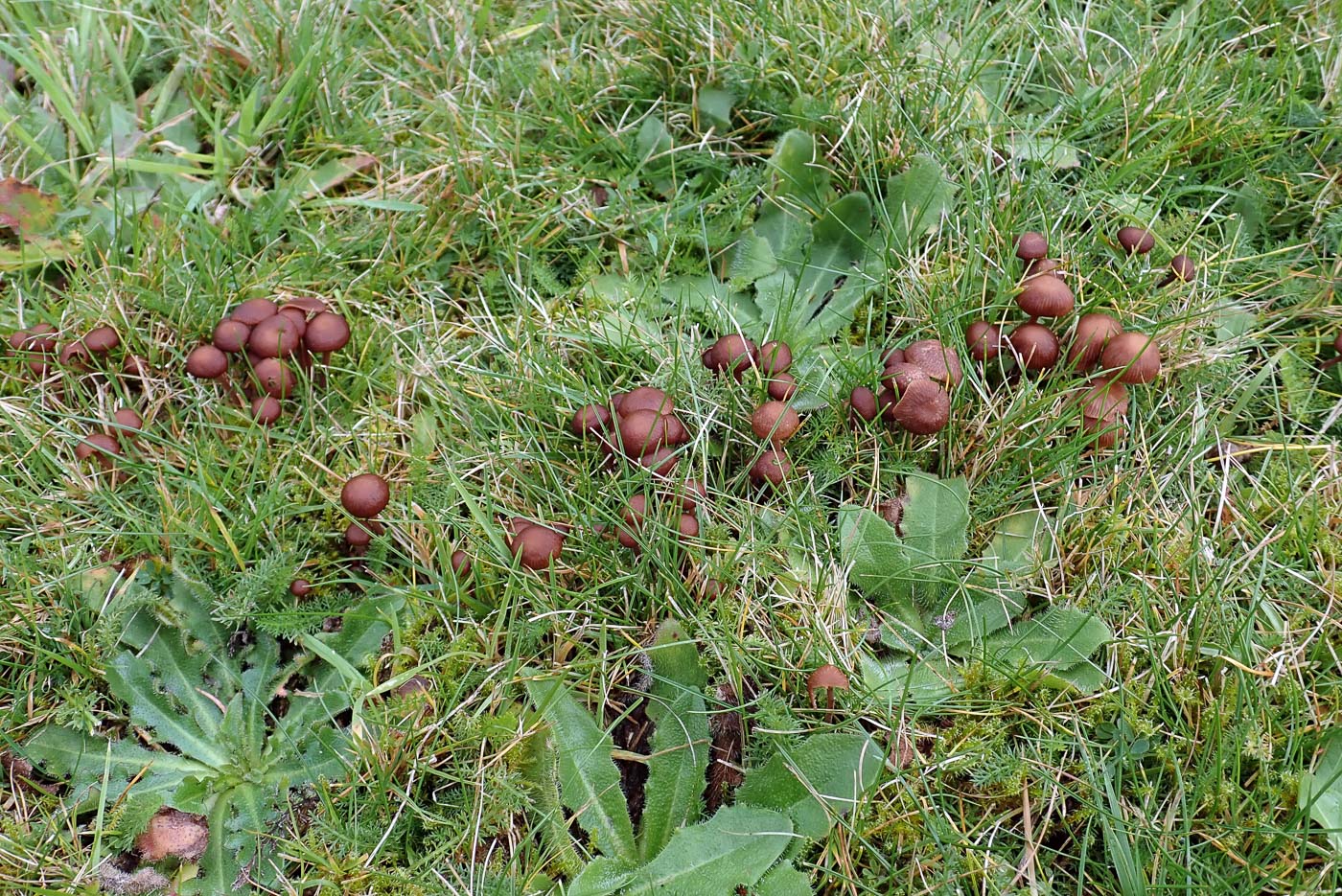
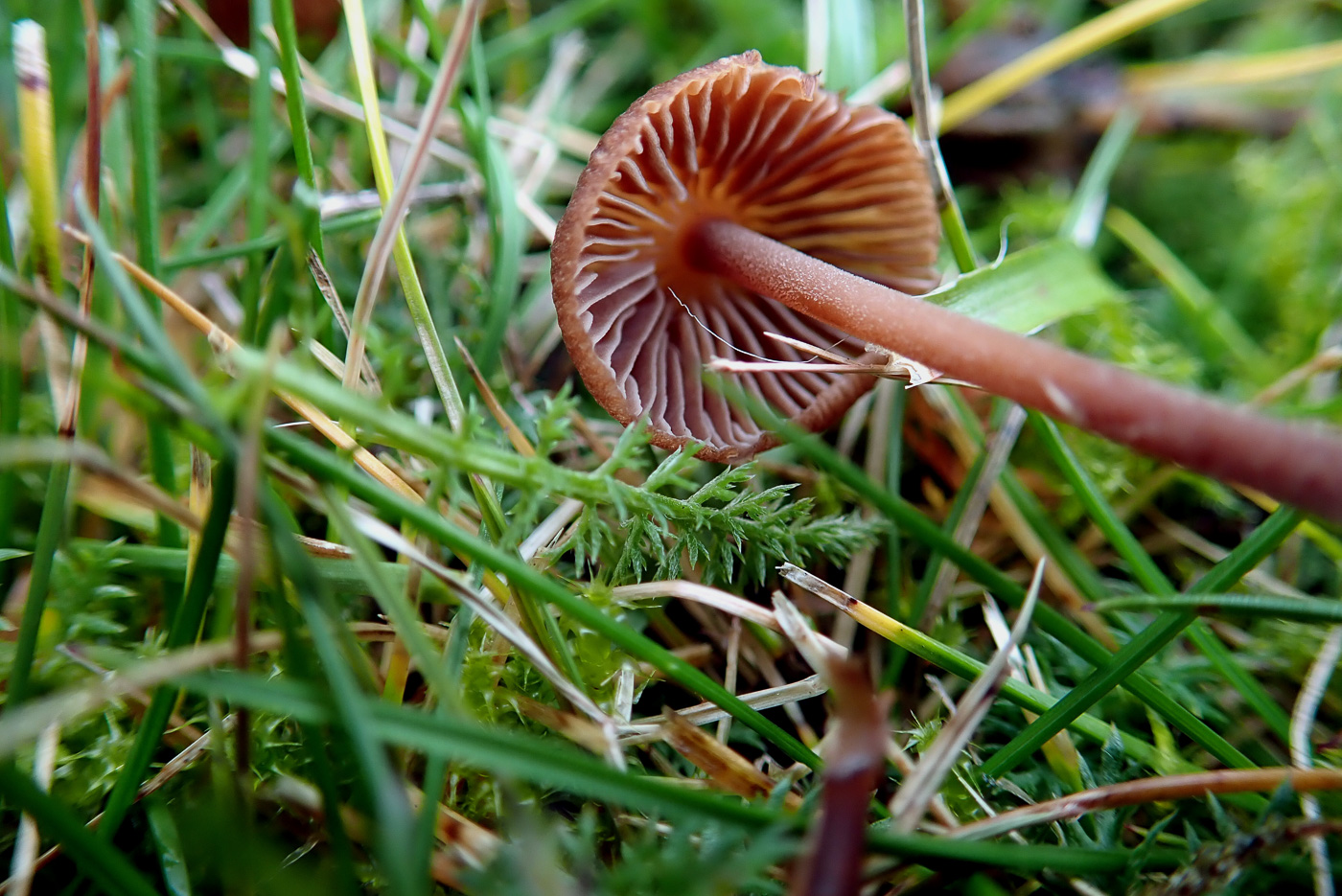 |
Marasmiellus villosipes (a mushroom with no common name recently new to the UK) 
Oct 28, 2020. On a small square of lawn between shrub beds in Stoke Poges Memorial Gardens Penny C. noticed a semicircle of unfamiliar small dark purple brown to reddish brown caps just emerging through the grass. On further inspection they had concolorous quite widely spaced almost free gills and a concolorous stem which was finely hairy all over. The caps were only 1 cm across and some were showing signs of fading at the centre as they dried. Working on it at home took her to Gymnopus obscuroides, a species first described in 2008, included in Kibby vol 2, and very close to G. fuscopurpureus. However, this collection didn't fit either species exactly and as a result of DNA sequencing has now proved to be Marasmiellus villosipes,first described in 1997 from California when placed in Gymnopus but consequently moved to Marasmiellus. It was then found new to Britain in the Isle of Wight last year so this find is significant - not just new to the county but one of only a handful of British records for the species.
|
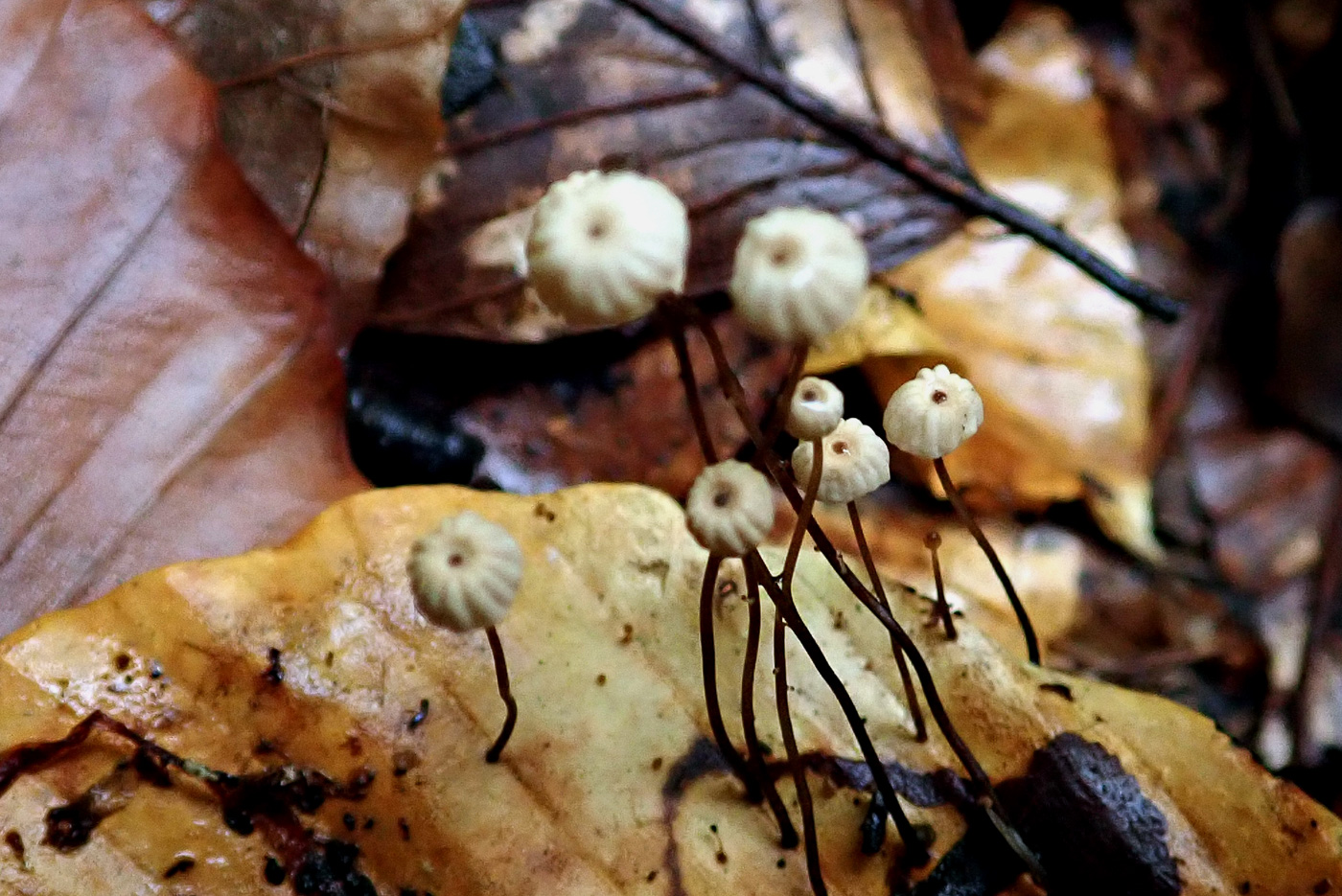
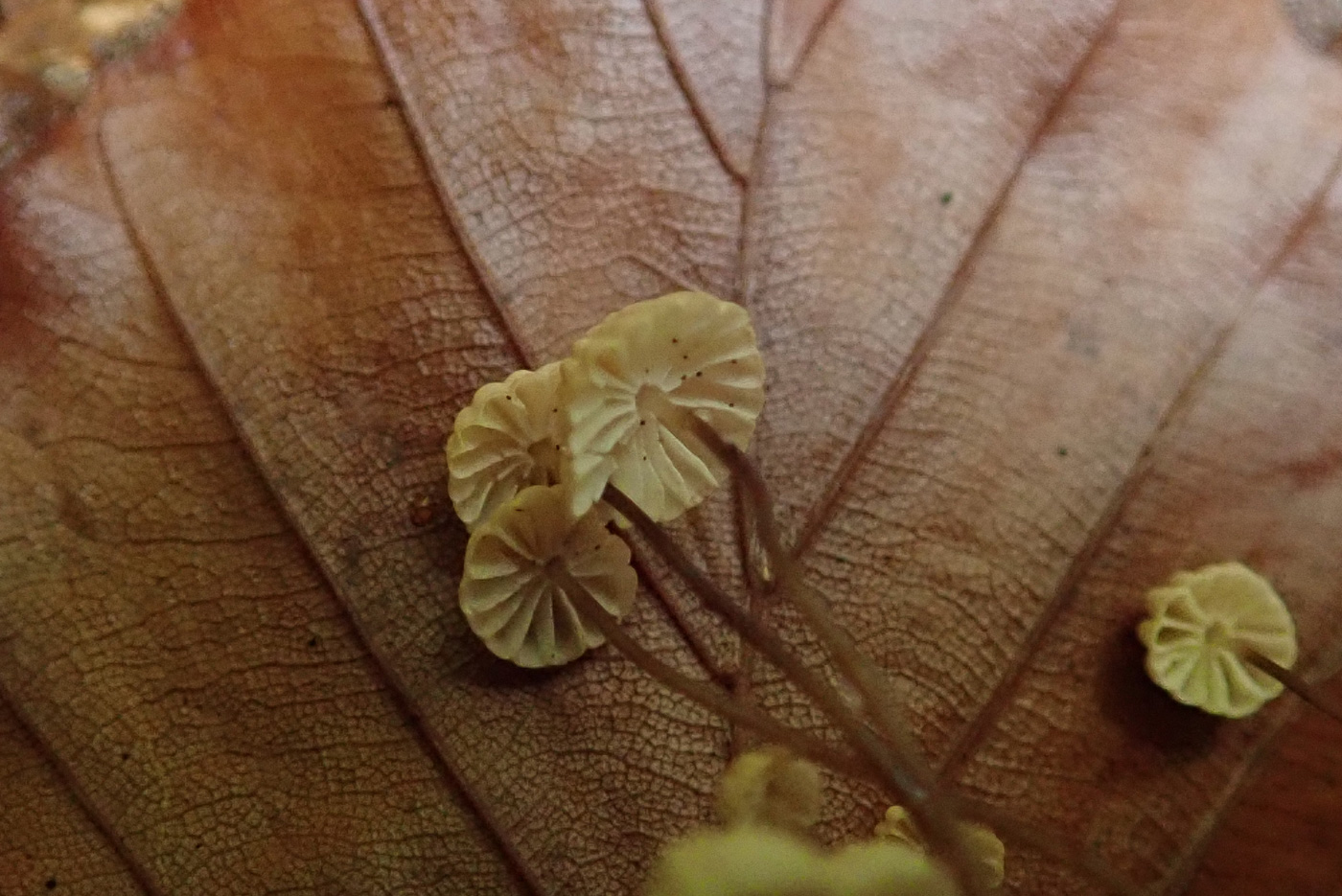 |
Marasmius bulliardii (a Parachute with no common name)
Oct 13, 2020. This cluster of tiny little mushrooms was found by Penny Cullington at Pulpit Hill growing on a fallen Beech leaf. The species is almost identical to M. rotula (see photos dated Oct 01) but is only half the size, so caps are no more than 5 mm across at most. It has the same distinct cogwheel around the stem to which the gills are attached (these are the only two species with this feature), seen in photo 2, and apart from that feature is recognisable in the field because of its tiny size, the fluted cap with sunken dark dot in the centre and its occurrence on fallen leaves, most commonly Beech. It is not uncommon but seldom recorded for obvious reasons.
|
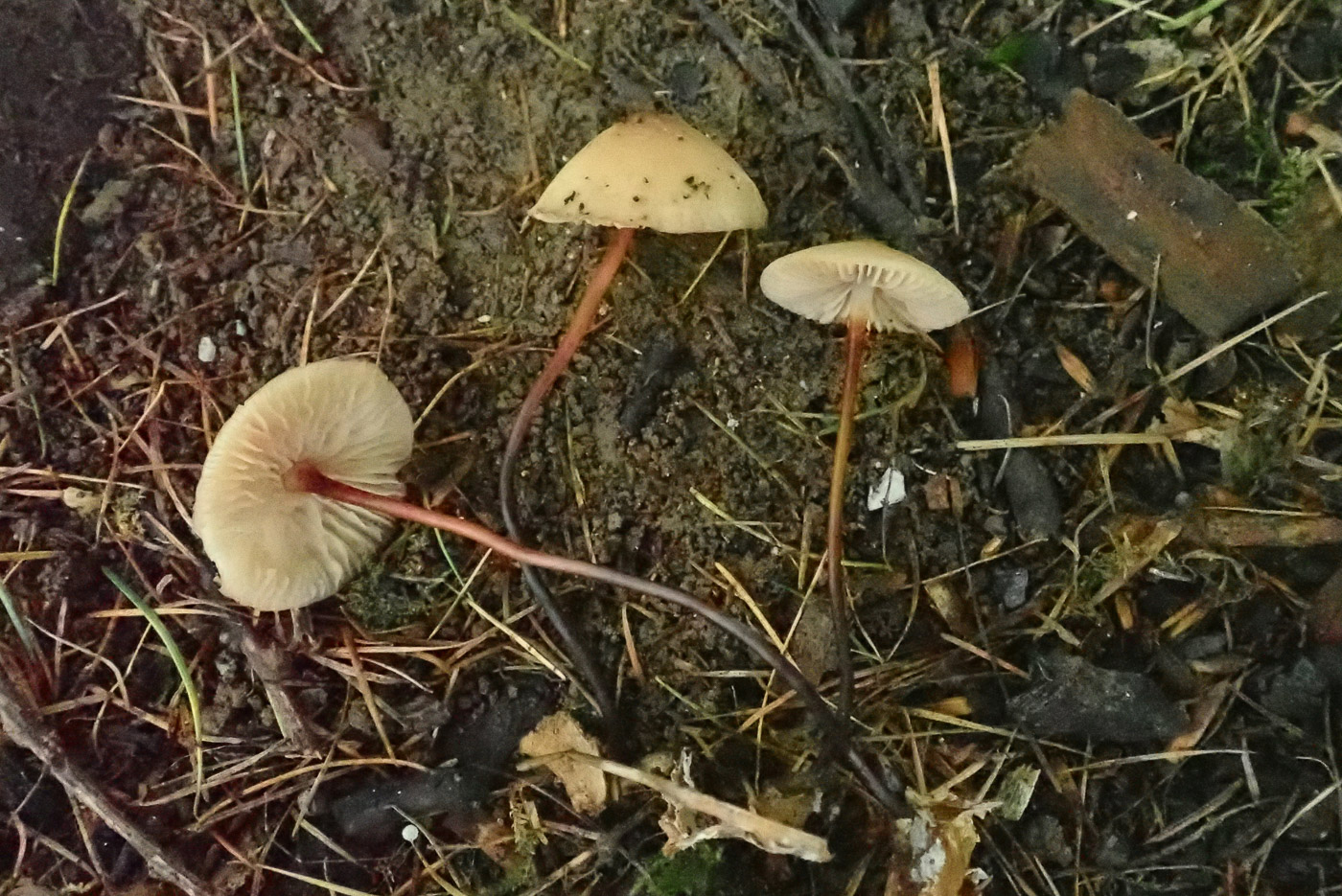 |
Marasmius cohaerens (a Parachute with no common name) 
Oct 8, 2021. In woody litter at Whiteleaf Cross Penny noticed these three fruitbodies adjacent to some specimens of Mycena crocata (Saffrondrop Bonnet). The stems however, though somewhat orange, were very different: shiny and flexible, clearly with no juice within, and she recognised this as possibly one of two species of Marasmius. Both M. torquescens and M. cohaerens are similar to a large Mycena; they both have pale beige caps up to 4cm across, long thin reddish stems, and are found in Beech litter. With a hand lens the stem of M. torquescens appears finely hairy which is a diagnostic pointer, but to be sure a scope is needed to separate them with certainty.
|
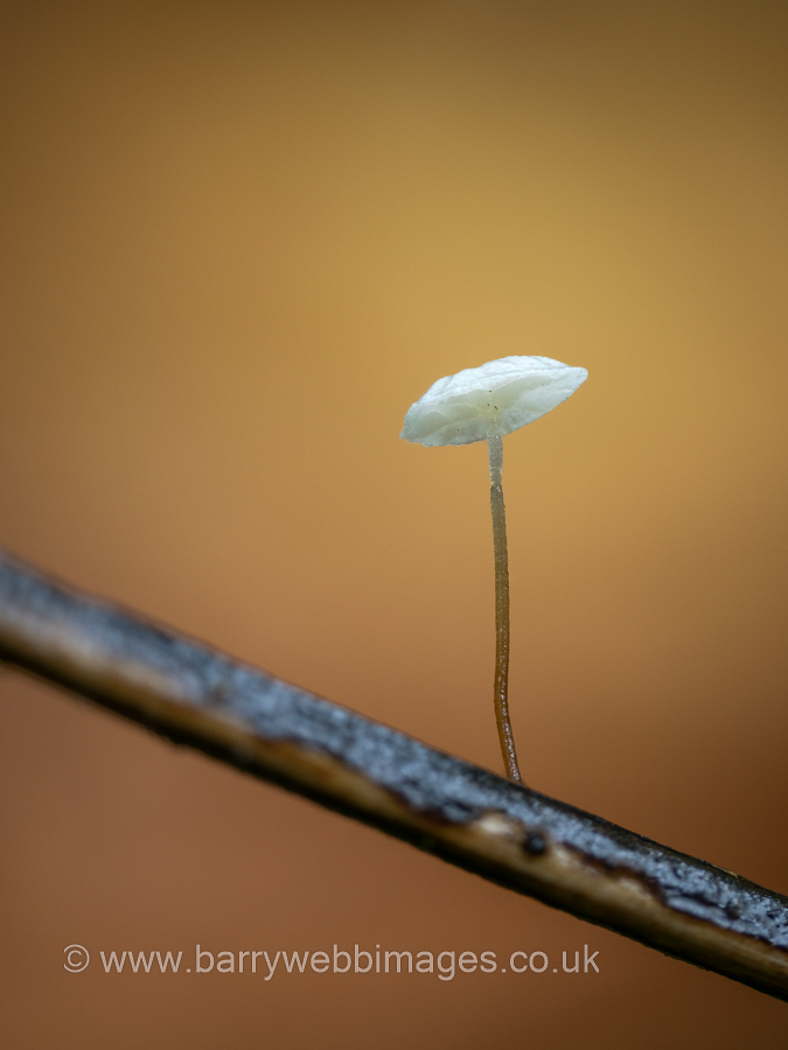
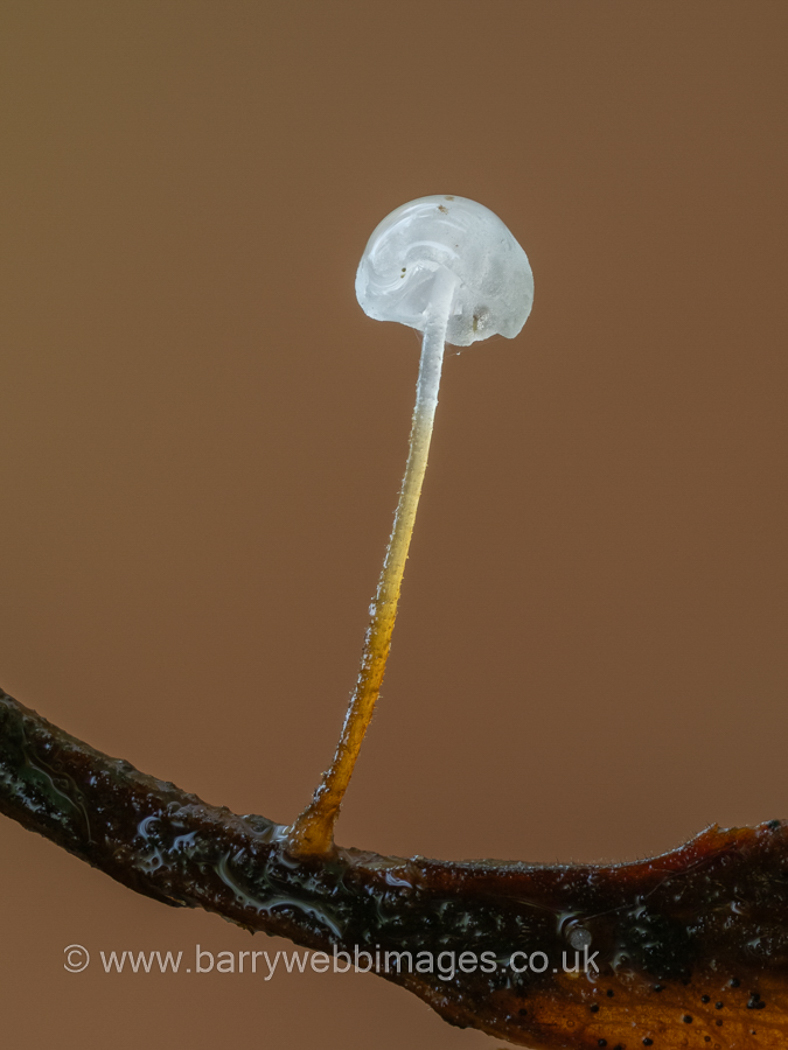
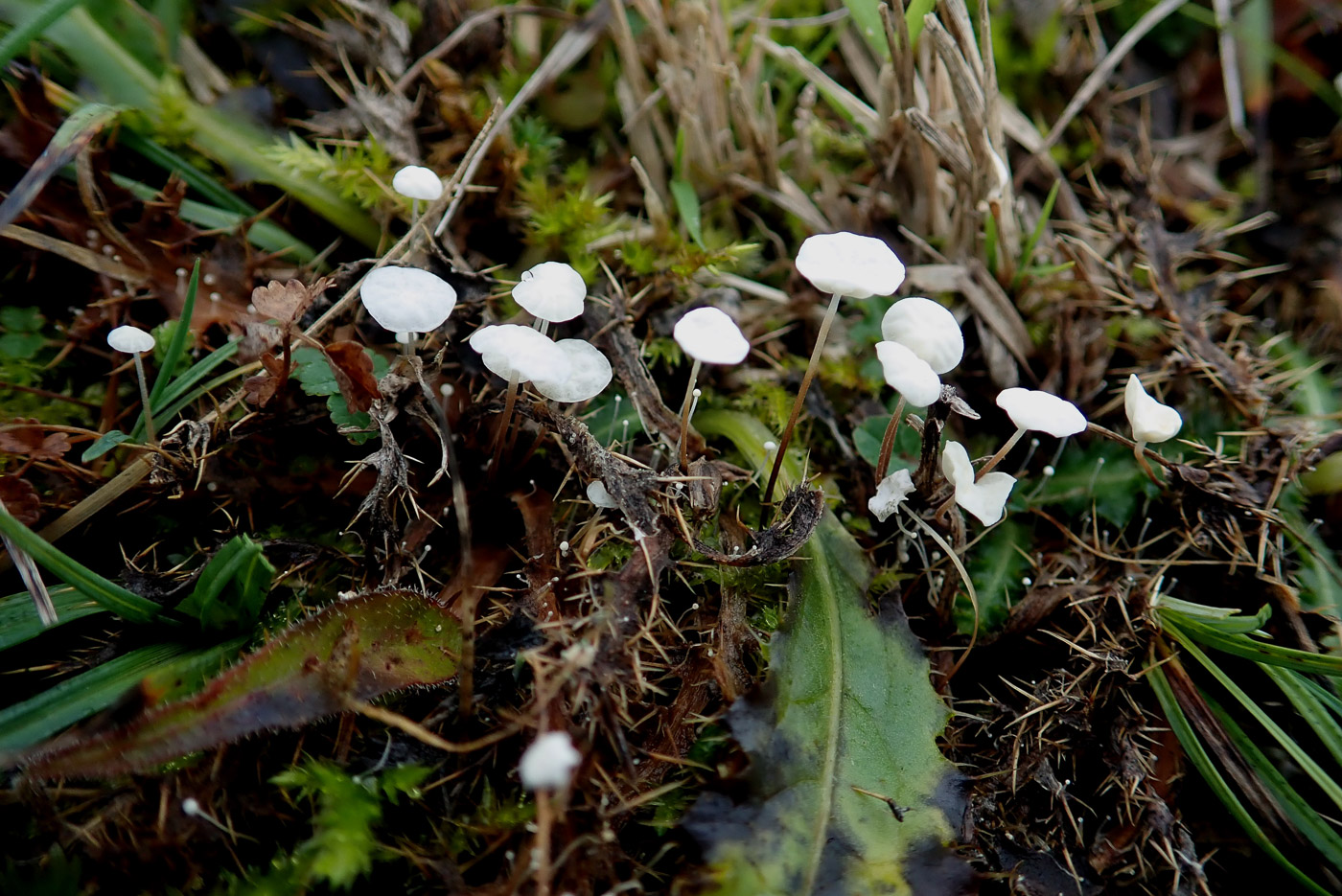
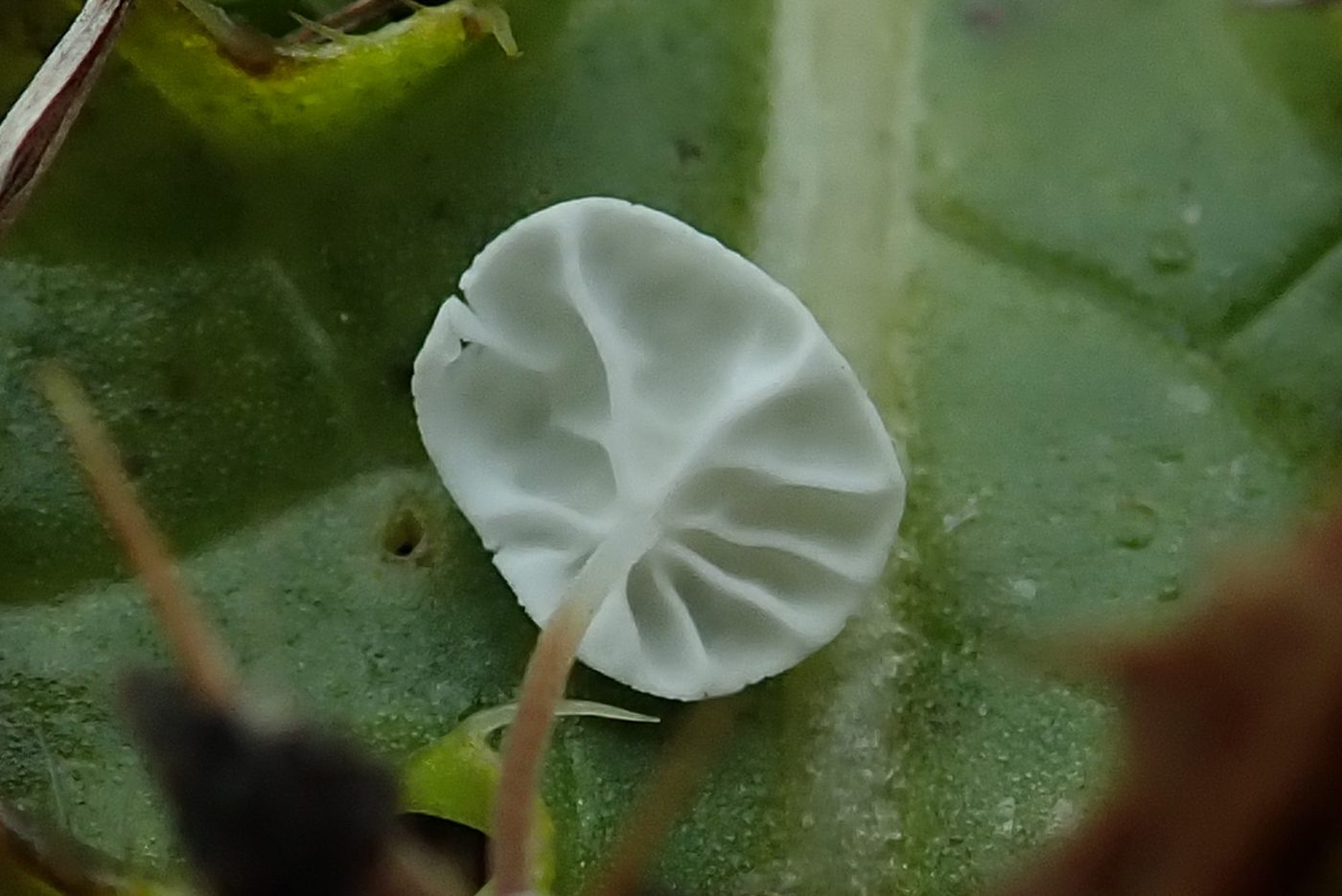
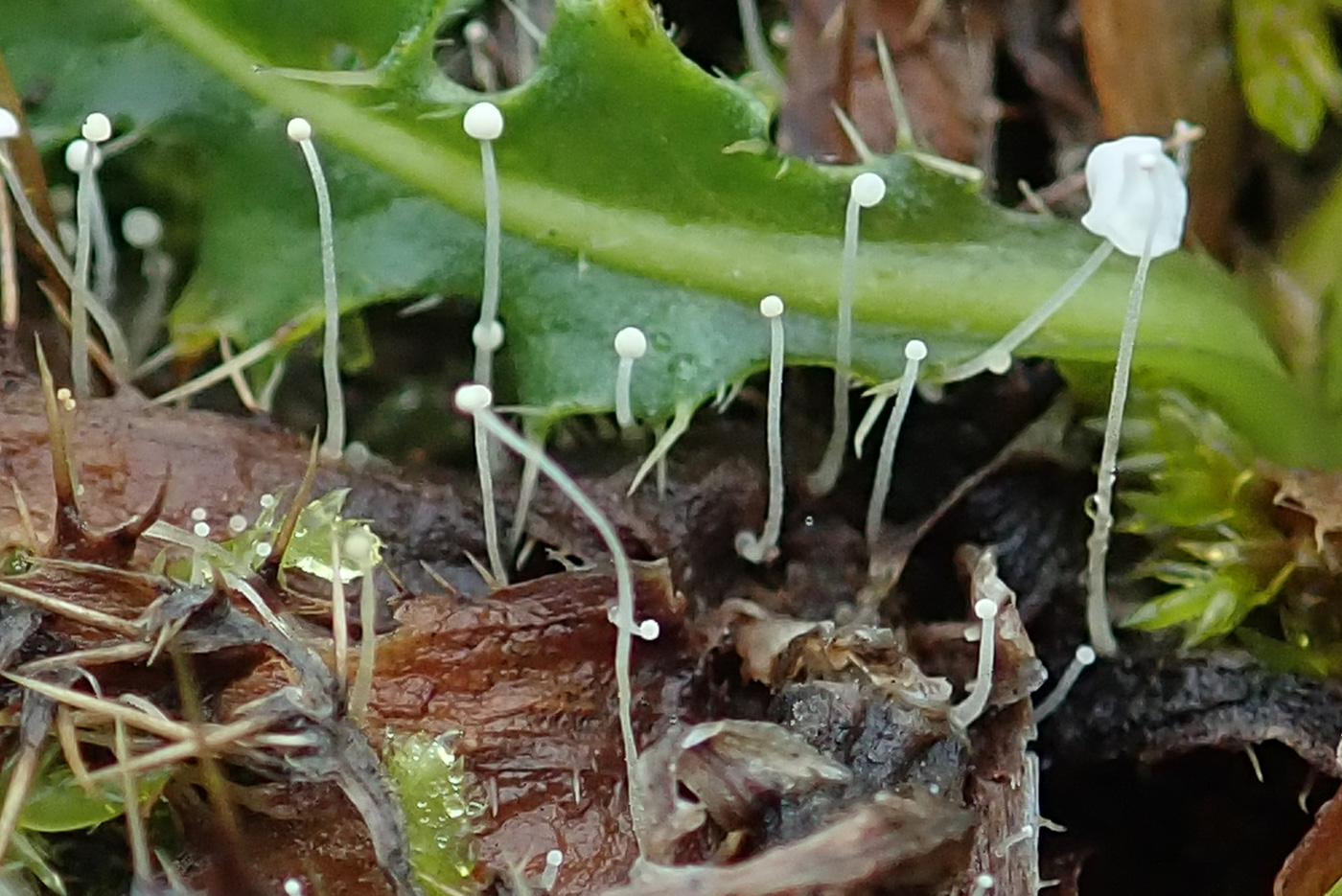
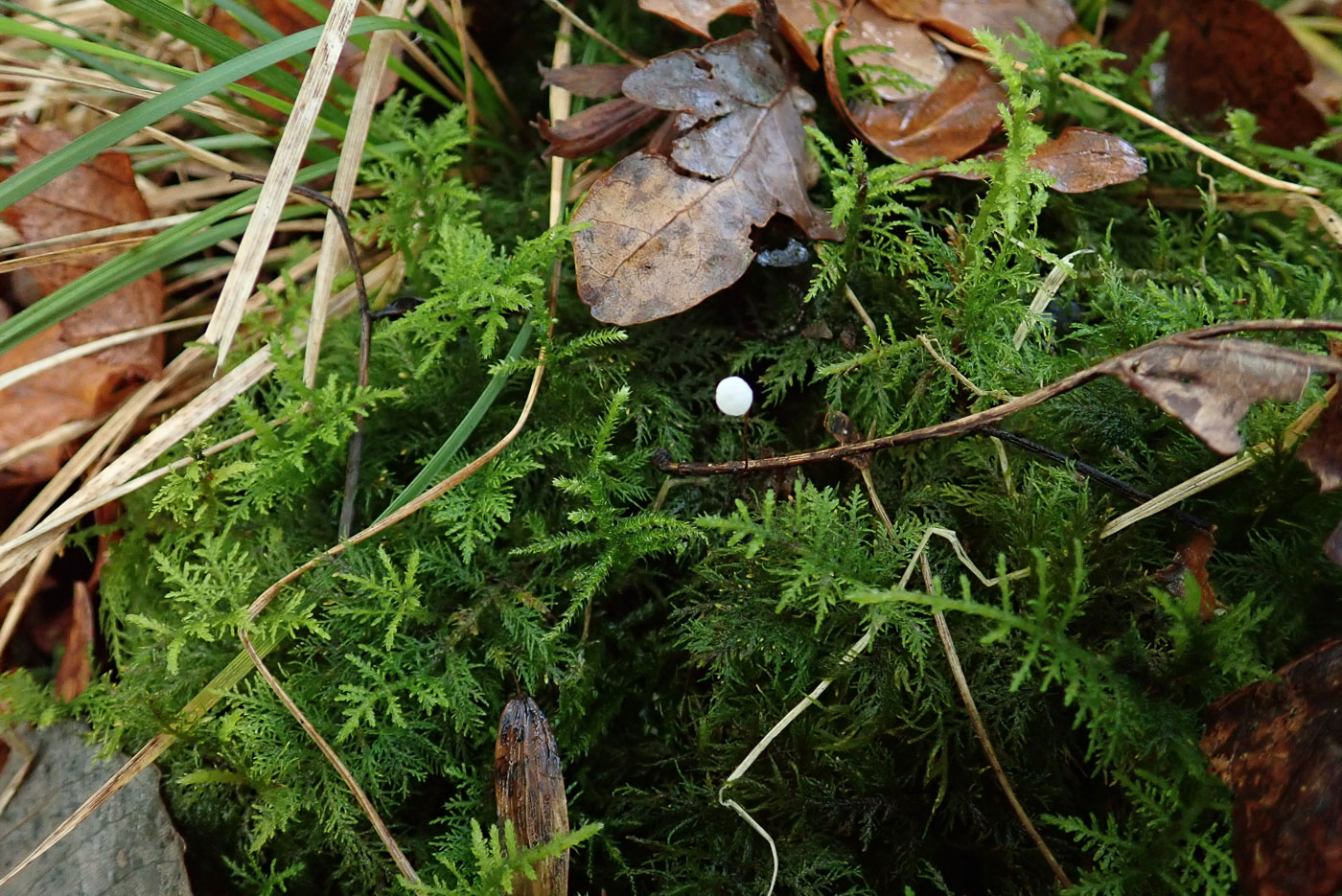
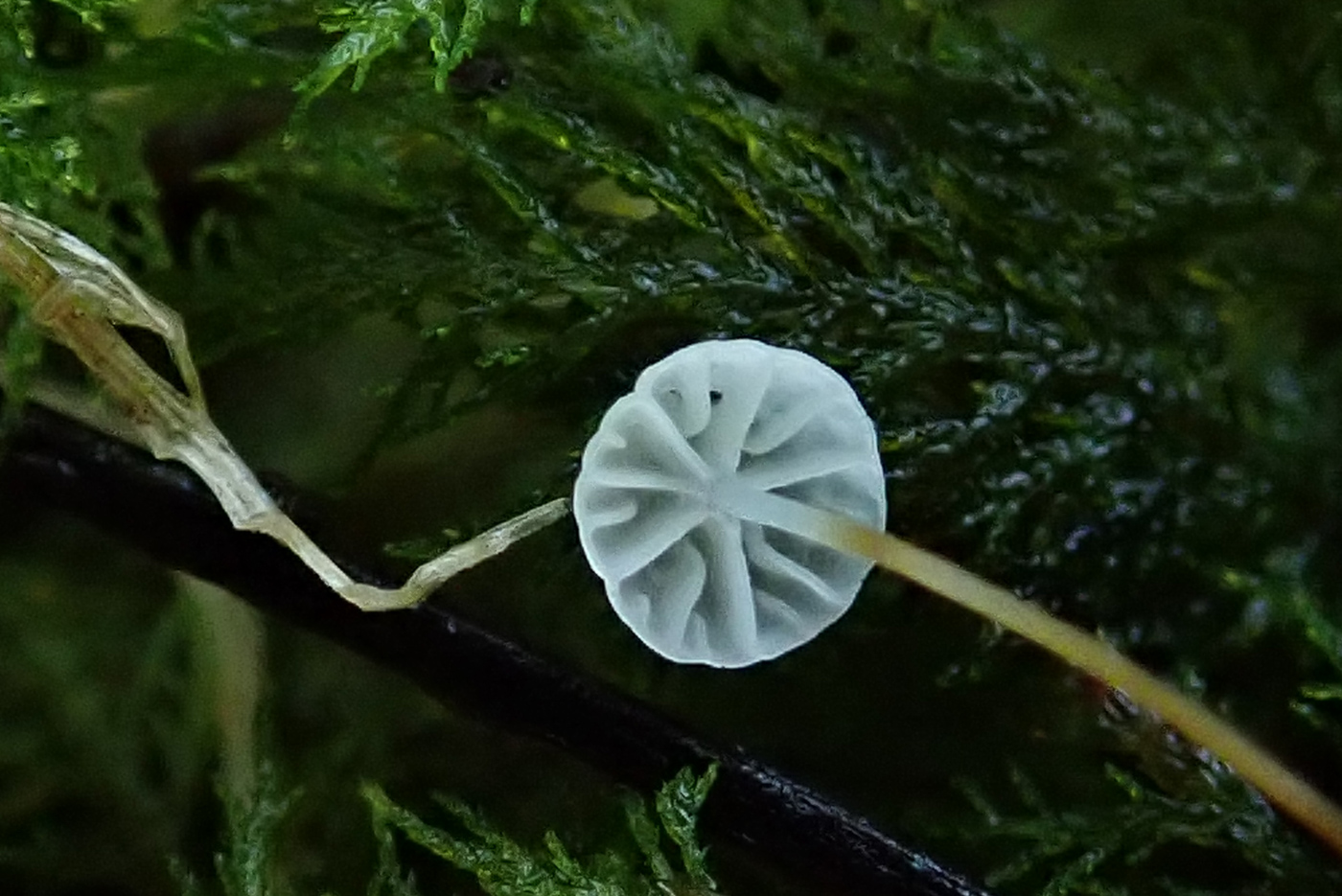 |
Marasmius epiphyllus (Leaf Parachute) 
Nov 8, 2023. In Mousells Wood Richard Fortey found and identified this tiny mushroom growing on dead vegetation stems. It is very similar to the much more common M. setosus (Hairy Stem Parachute) which we also found here today and which grows on deciduous litter. Bothe species have a finely hairy stem which is white at the top then gradually darker towards the base. However, today's species has smaller spores and often has very reduced gills. The photos are Barry Webb's.
Dec 2, 2020. Penny C. noticed this stunning collection of tiny white mushrooms growing on mossy vegetation in the Grangelands at Pulpit Hill. We have a previous photo dated Nov 09 but this collection was rather different in that it was not in woodland so unlikely to be on the leaf of a tree, also it had far fewer gills which are clearly less developed (see detailed photo to compare with that for Nov 09). However, when keying it out there seemed no alternative species, the microscopic characters fitted and it appears that the species is very variable. One more collection for sequencing!
Nov 9, 2020. Whilst searching amongst leaf litter and moss in Rushbeds Wood, Penny C. noticed a tiny shining white dot which needed further inspection. Sure enough, though only about 2 mm across it had gills and a stem and was attached to an Ash leaf petiole - the second species to be found on this substrate here today. The genus was immediately obvious because of the hairlike stem which was white at the top but gradually rusty red then black lower down - typical of Marasmius rather than Mycena which can also produce tiny very similar white fruit bodies but they usually have an entirely white stem. There are several very similar tiny white Marasmius species and it's important to note the exact substrate as well as to look at microscopic features at home. Today's species is typically found on Ash or Poplar petioles but look out for the almost identical M. setosus on Beech leaf petioles! They may be tiny but once you get your eye in they are not difficult to see.
|
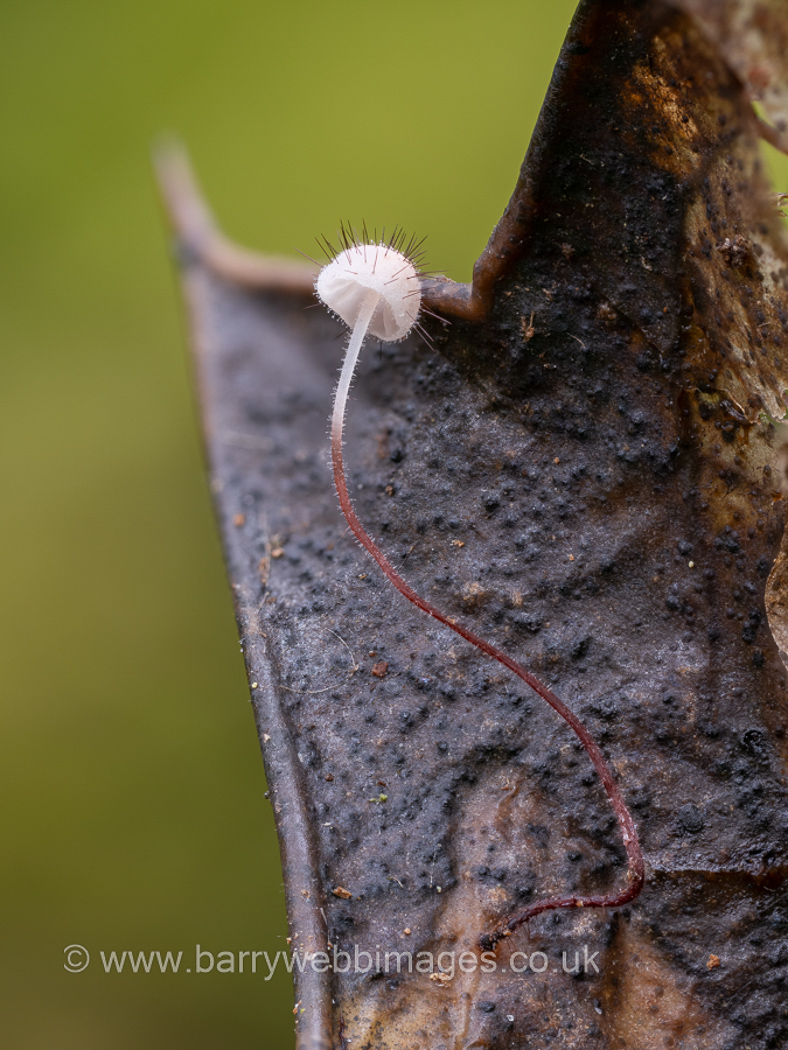
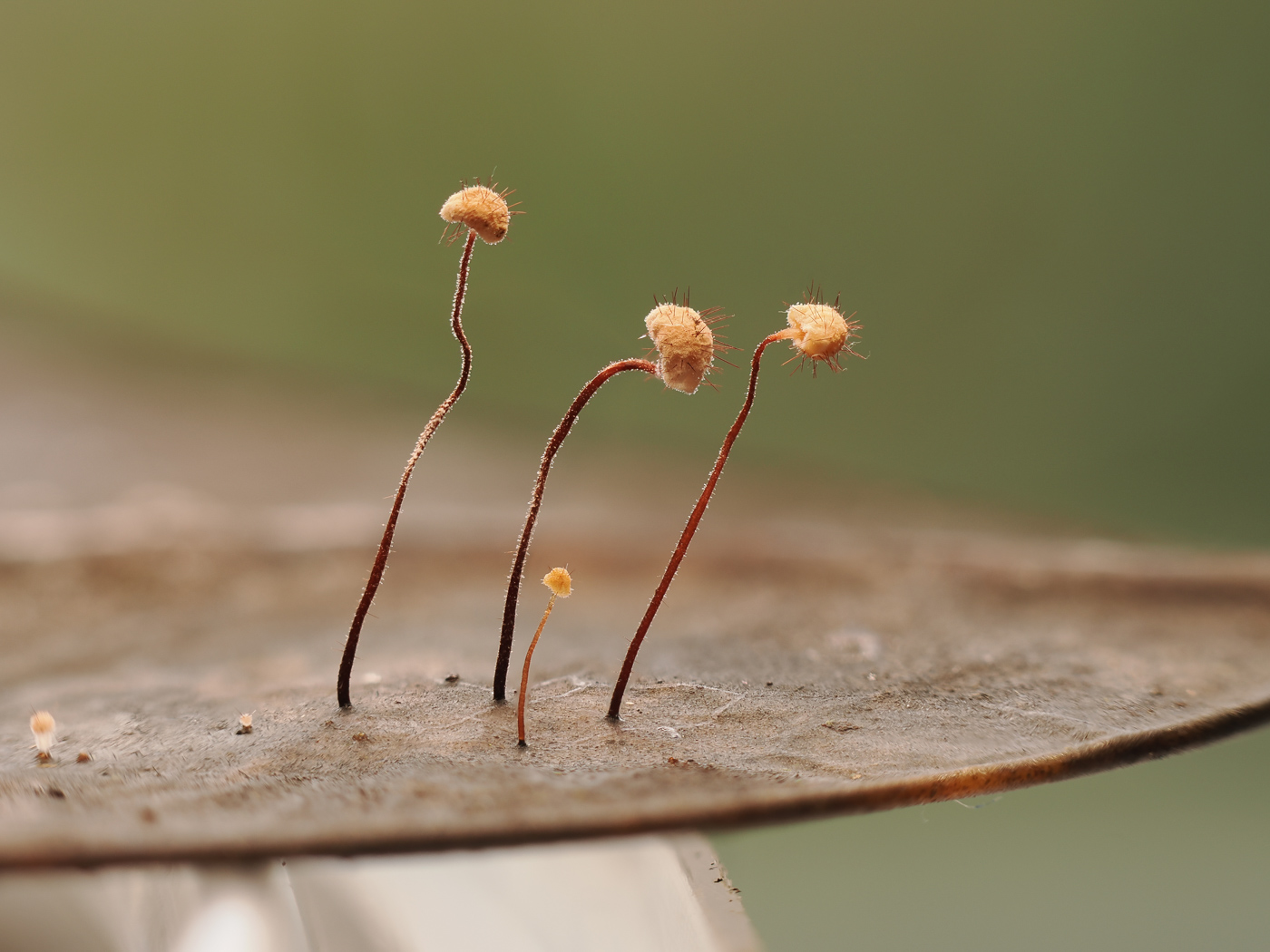

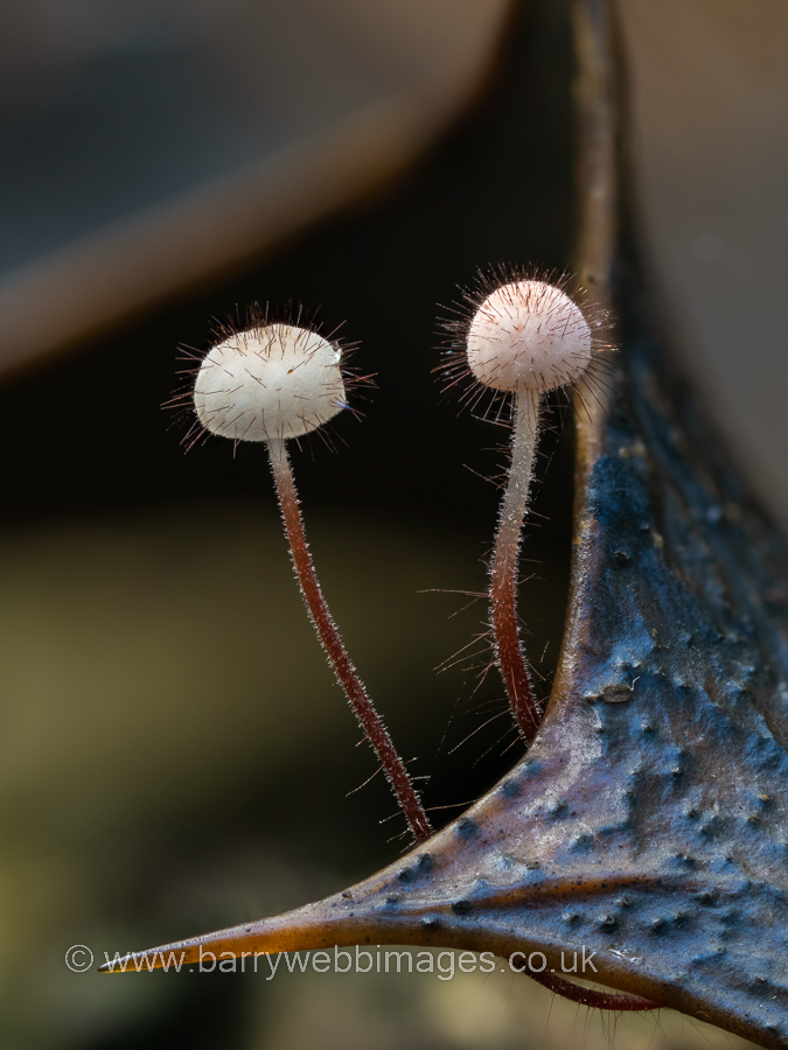
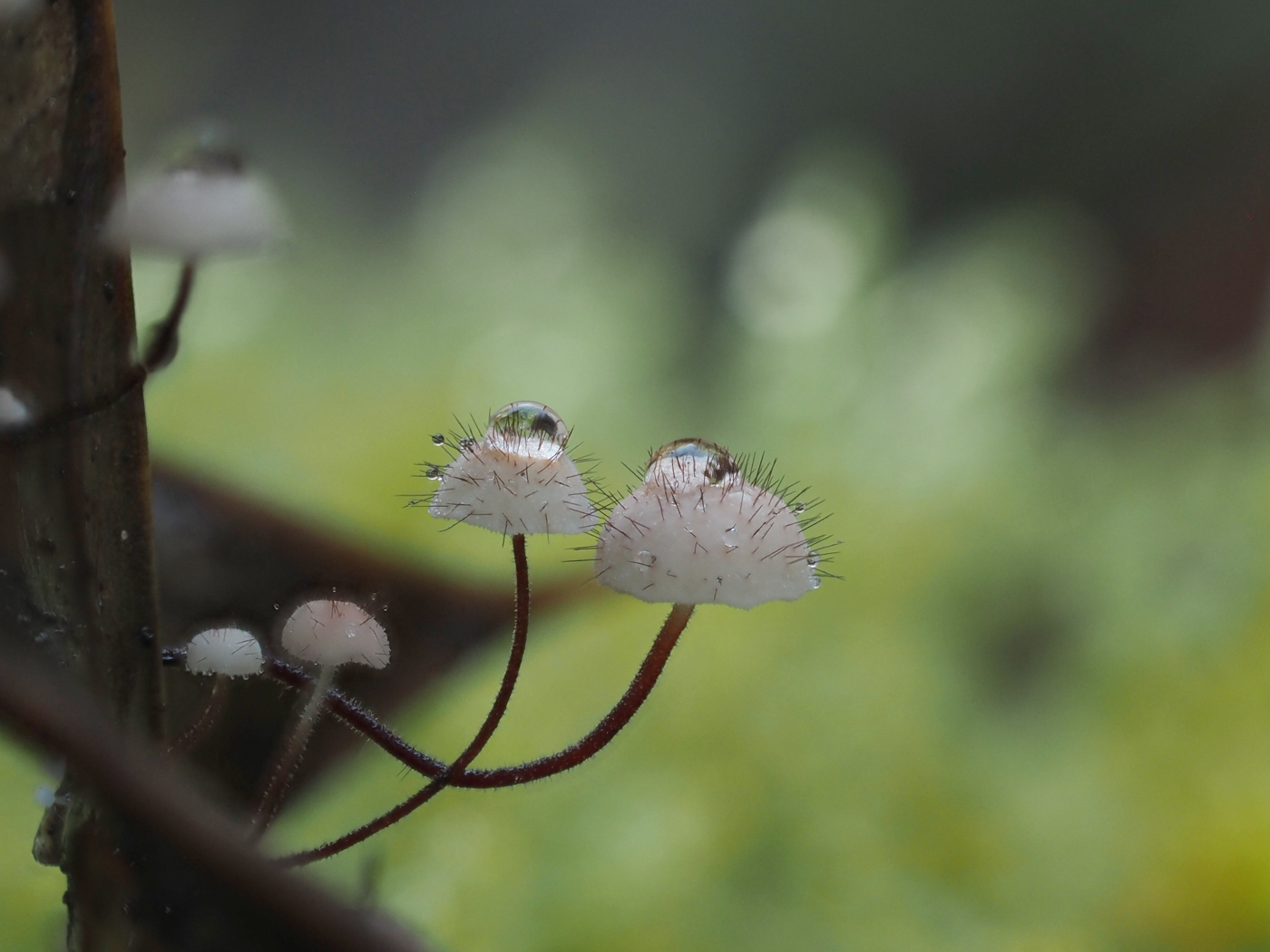
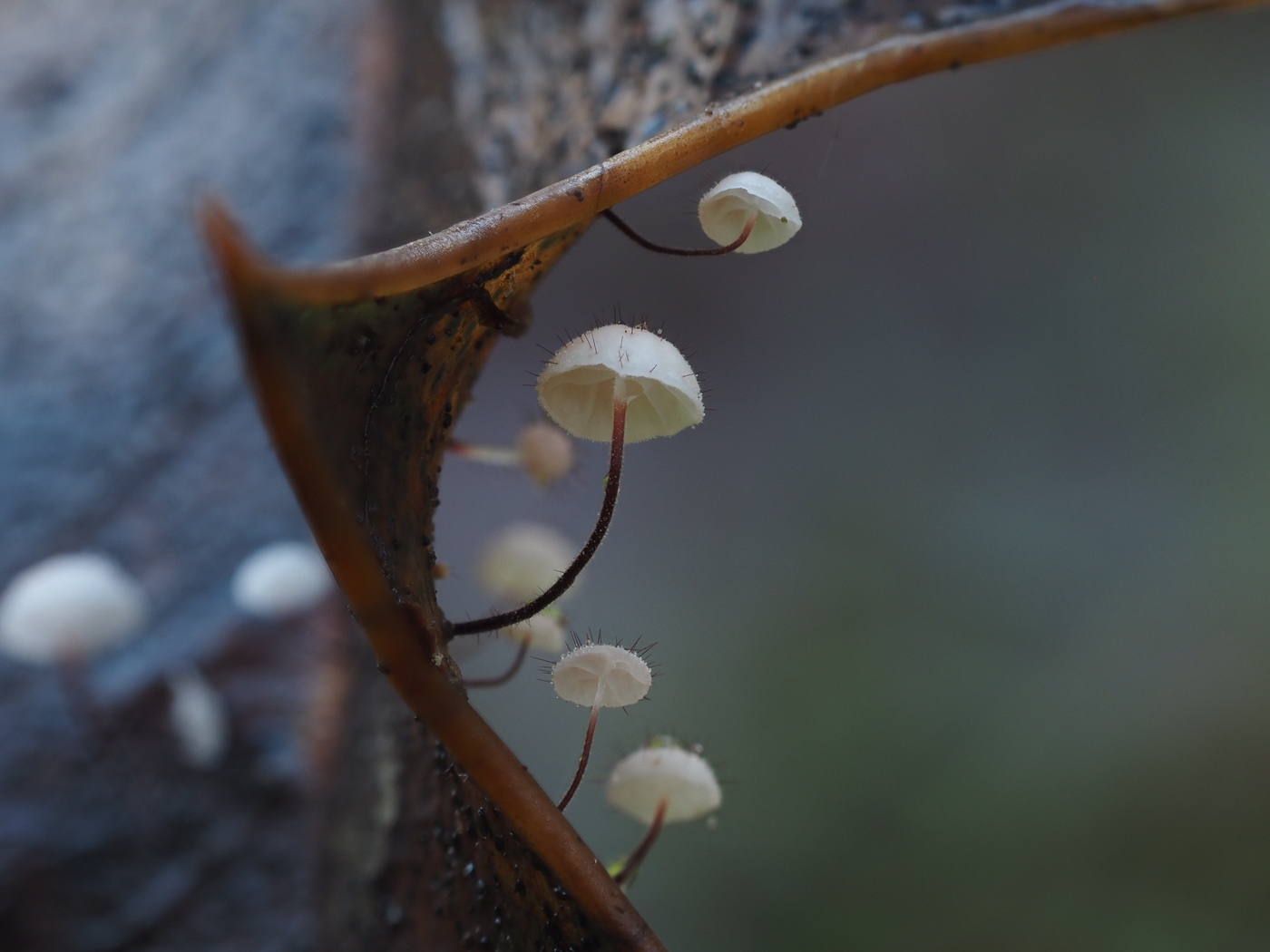
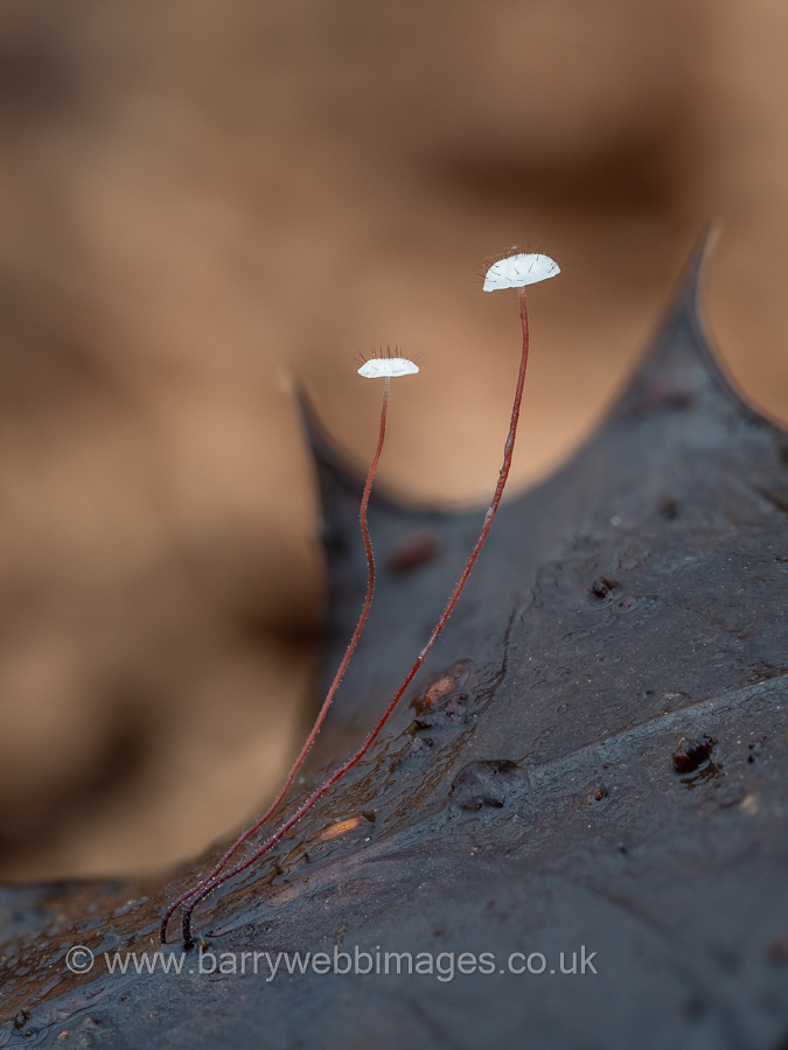
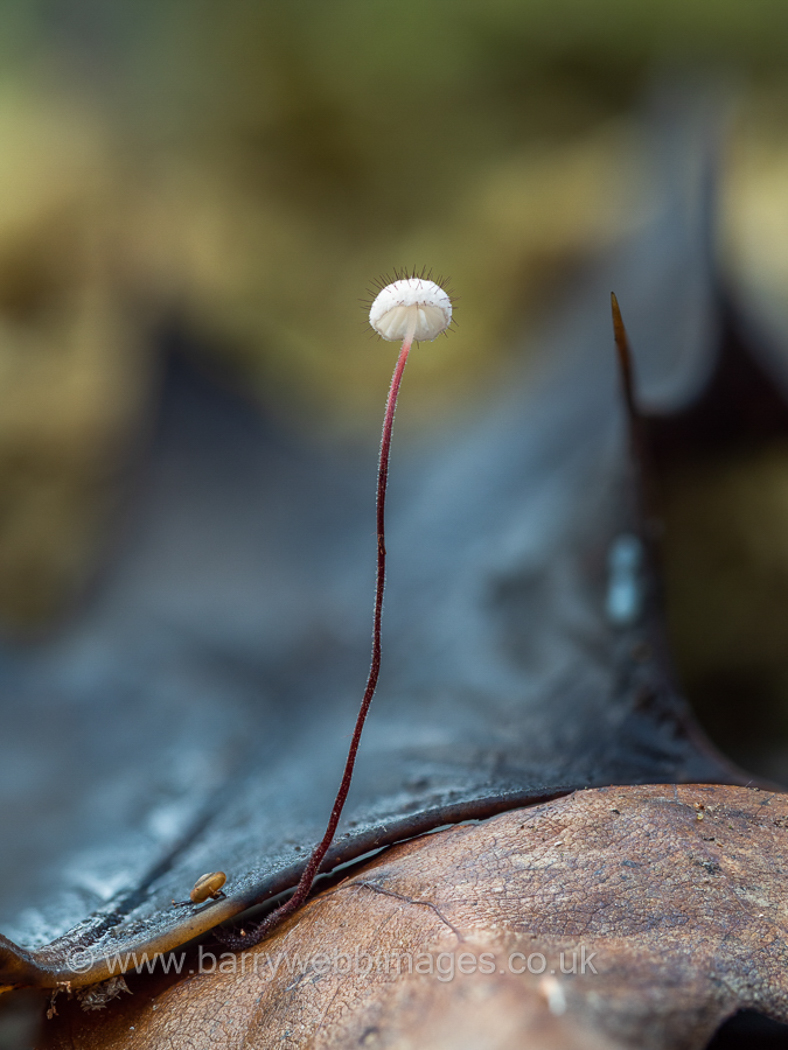
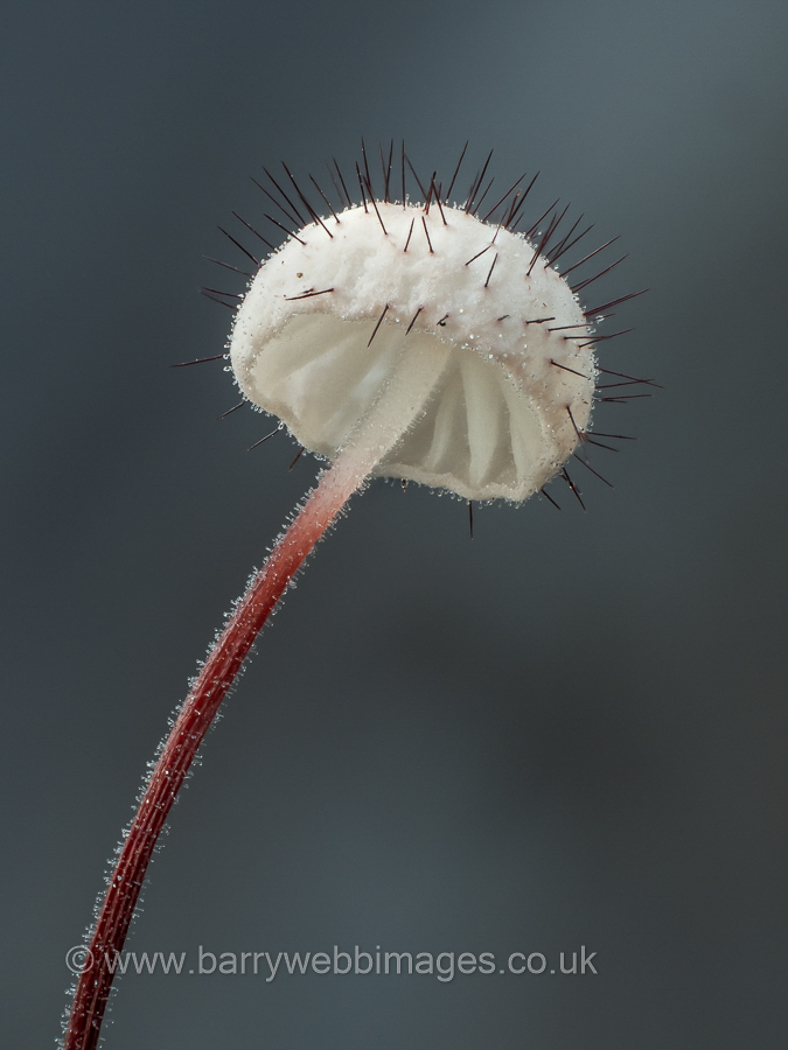
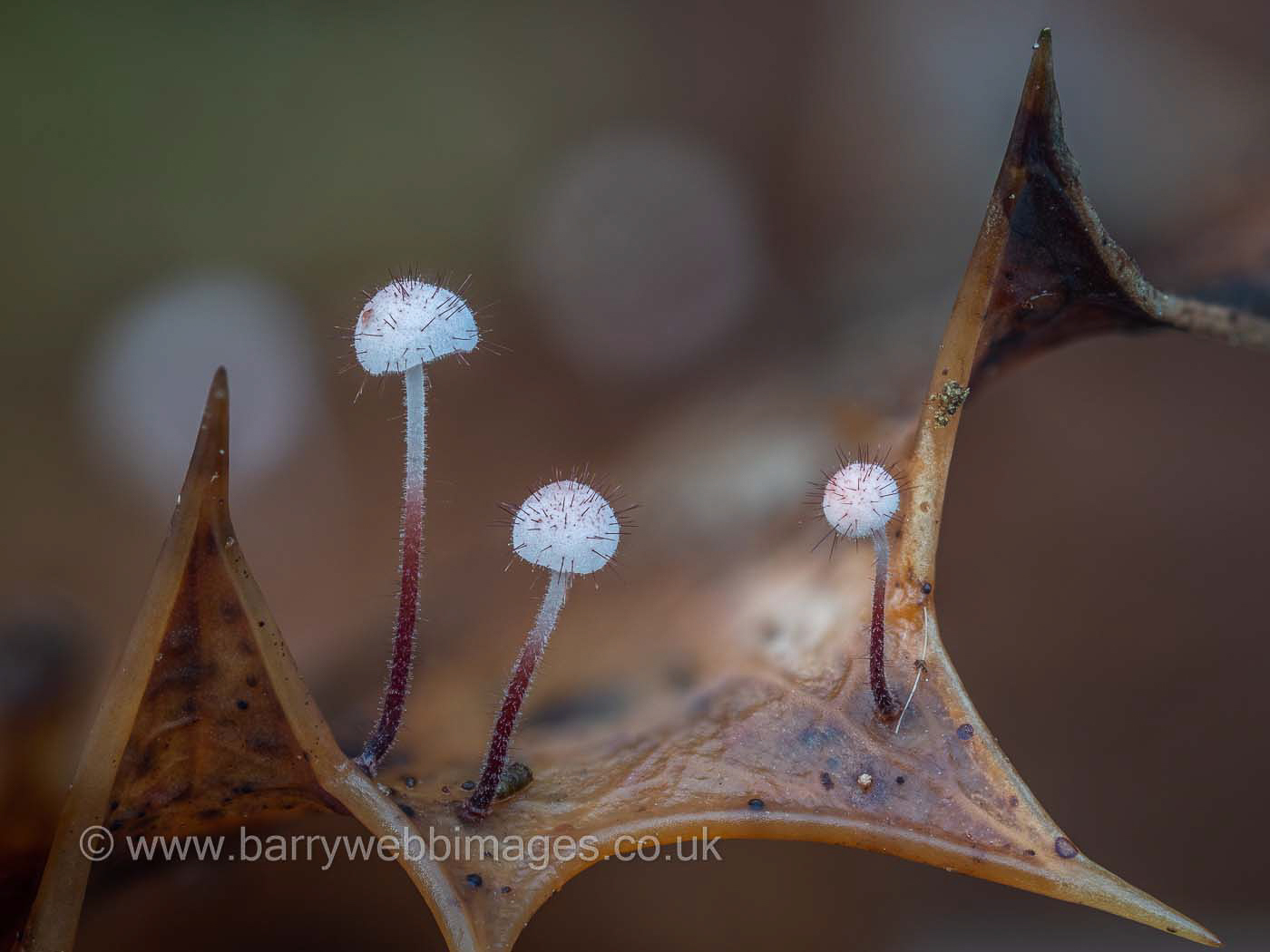
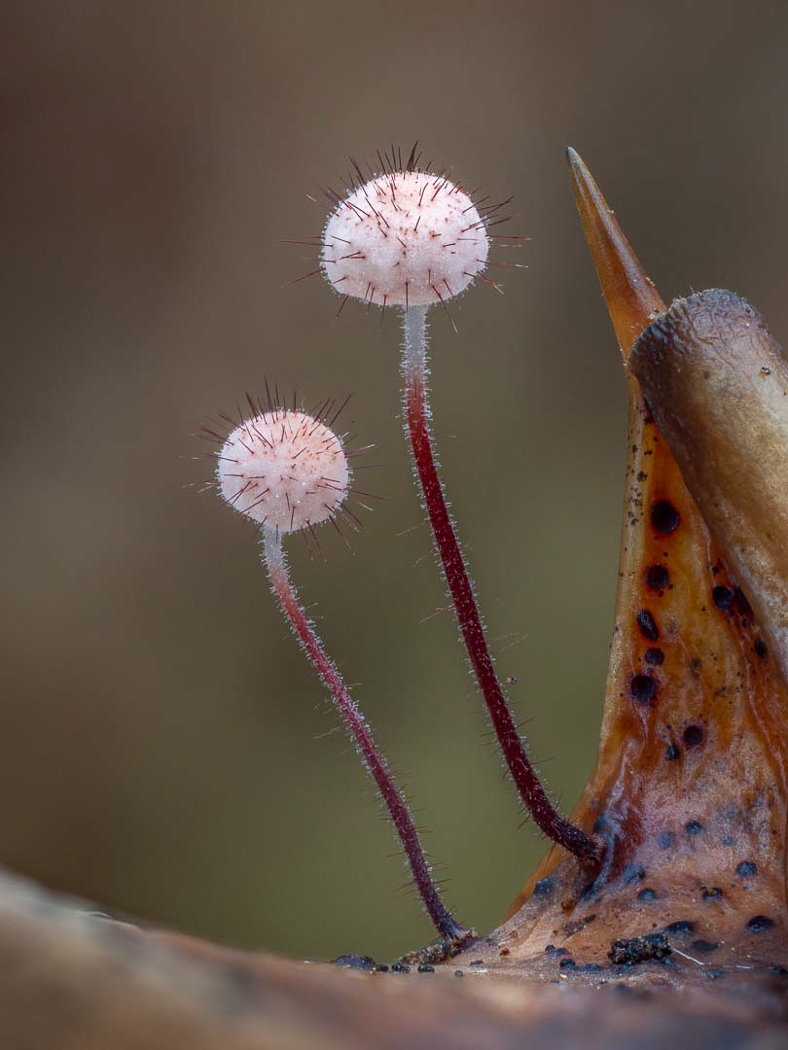
|
Marasmius hudsonii (Holly Parachute)
Jan 8, 2024. Barry Webb and Gill Ferguson excel at finding this beautiful but tiny little mushroom, one that only occurs on dead Holly leaves and until recent years not known in the county. It is now a regular at Hodgemoor and a couple of other sites but today's find was the first for Burnham Beeches - much to Barry's delight as he, and others, have been searching for it in vain there until now!
Jan 15, 2023. After all our recent rain Penny was not surprised to hear reports of this quite rare species fruiting in abundance at Naphill Common, found by Sarah Ebdon and Claire Williams. It only grows on rotting soggy Holly leaves - often in ditches and wet places - but now seems to be spreading in our area where it was new to the county from Naphill only few years ago. The species is tiny therefore easily missed but searching under Holly bushes now might well reap rewards; if viewed with a x10 lens it is unmistakeable with its unique reddish spines covering the cap. The photos here are Claire's.
Sep 11, 2022. In Hodgemoor Woods Gill Ferguson was delighted to spot good numbers of these tiny little beauties under a Holly bush growing on last year's leaves. The species was new to the county in 2015, since when it's turned up a few times now so may be gradually spreading and becoming more common. It is one of the easiest to identify if you have a handlens (or very astute eyesight!). No other little mushroom has a cap covered in these reddish 'whiskers' which, as can be seen in Barry's exquisite photo, are also on the stem.
Jan 12, 2022. This unusual and intriguing little mushroom was found independently at two sites today (though only a few miles apart): at Lacey Green Churchyard by Sarah Ebdon and Penny, also at Naphill Common by Claire Williams (the photographer here) with Barry Webb and Gill Ferguson. With a handlens it is instantly recognisable from the tiny brown-red bristles covering the cap, but only occurs on soggy rotting Holly leaves. It's clearly a late season fruiter (see also in Finds 2021 dated December 30th) and has a distinctive horsehair-like black stem, paler and reddish at the apex. It never gets much bigger than 5mm across and is usually much smaller than that. Definitely one to look out for under Holly at the moment.
Dec 30, 2021. On rotting Holly leaves in Hodgemoor Woods Gill Webb found this stunning little mushroom which is unique in appearance, the cap being covered in tiny bristles and only occurring on this particular substrate in damp places. It is found more often in the southwest of the country, diminishing and considered rare towards the east, but we now have three records for the county, it being a new species for Hodgemoor today. Barry returned the next day to take his photos, finding four more collections! Photo 1 is of Gill's find, photos 2 and 3 are of Barry's finds the next day. The size of the Holly leaves gives a sense of perspective for these tiny little specimens.
Dec 15, 2020. Whilst cutting the hedge, Barry Webb noticed this stunningly beautiful little mushroom on a dead Holly leaf in his garden - a species Penny C. had unsuccessfully been on the lookout for! With its unique pinkish brown bristles covering the cap surface, no other Parachute can be mistaken for this species in the field, the caps being less than 6 mm across at most. It only grows on this substrate and likes damp to soggy conditions late in the season and is mostly confined to the south west of the UK, becoming rarer the further east you go. We have just one previous record for the county. Incidentally we have two for the price of one here because the little black dots visible in photo 2 are of the very common ascomycete (also host specific to holly leaves) Trochila ilicina, also new to our list.
|

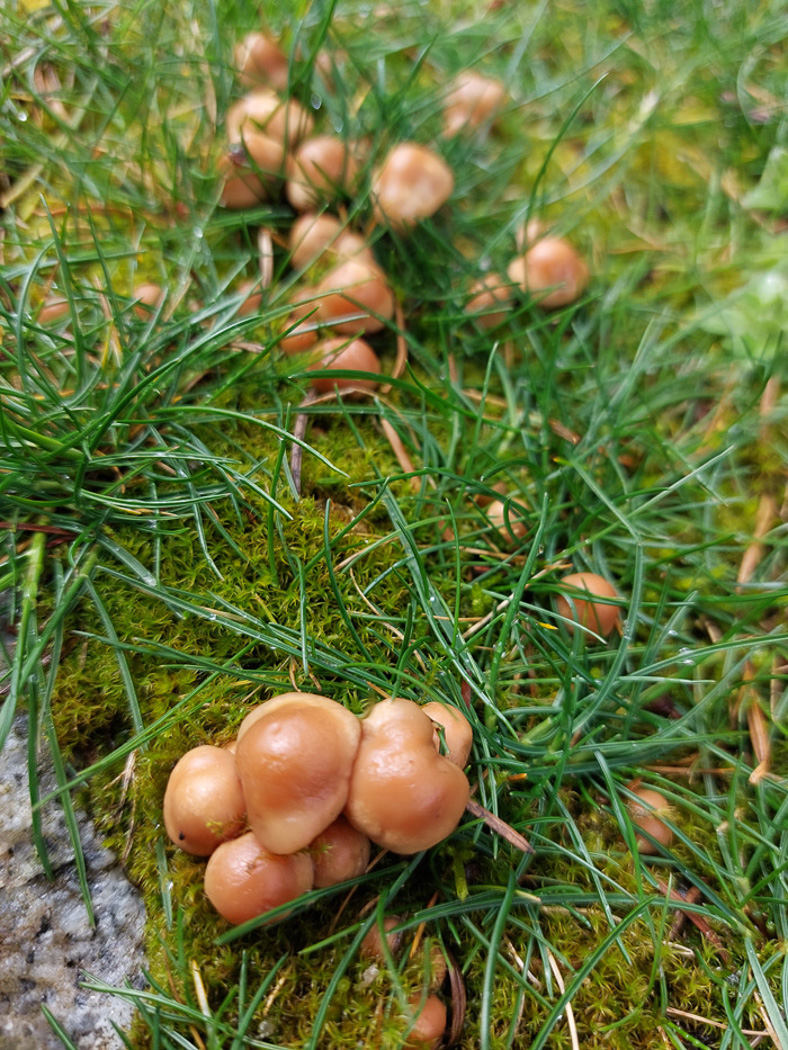
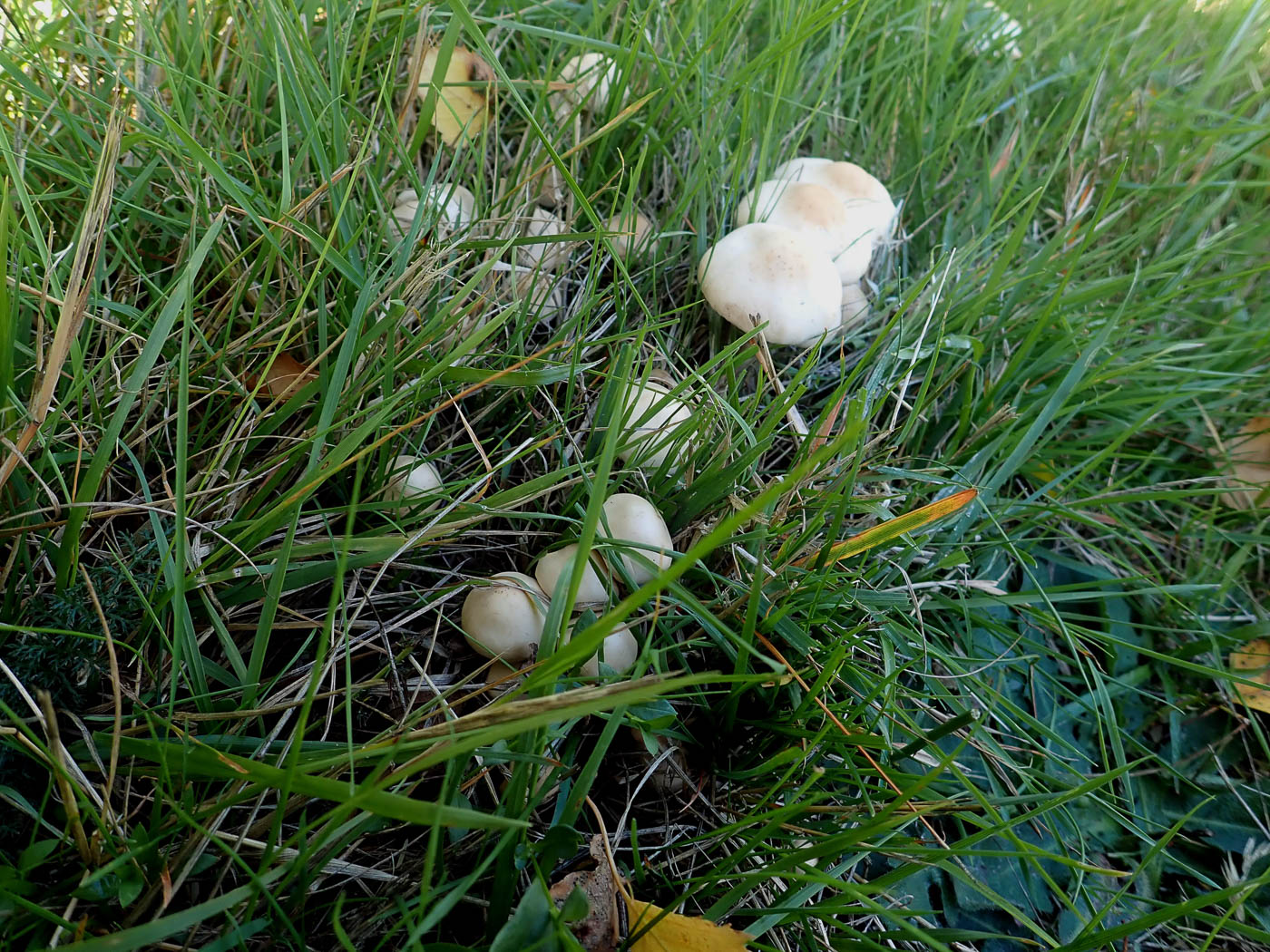
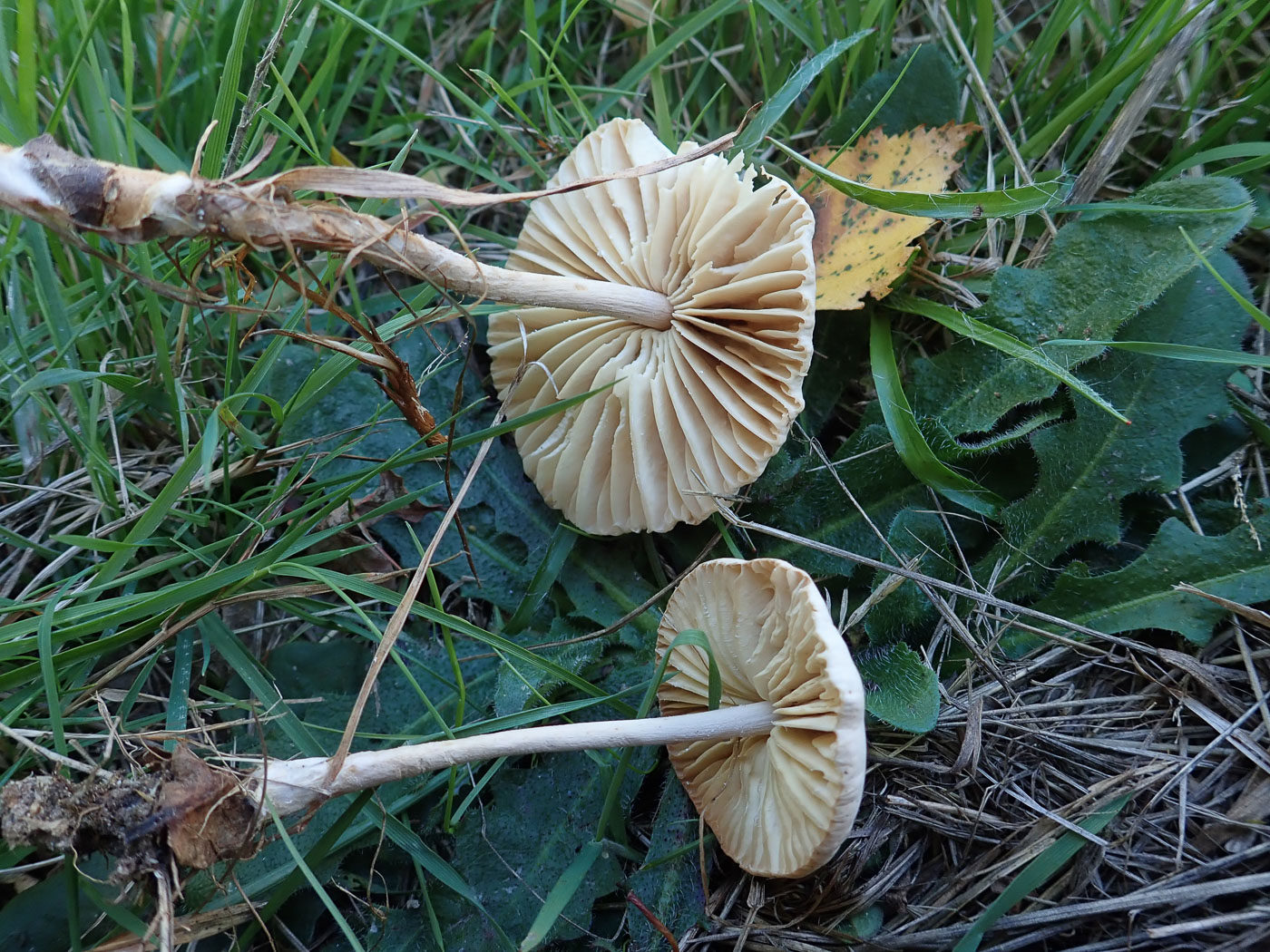
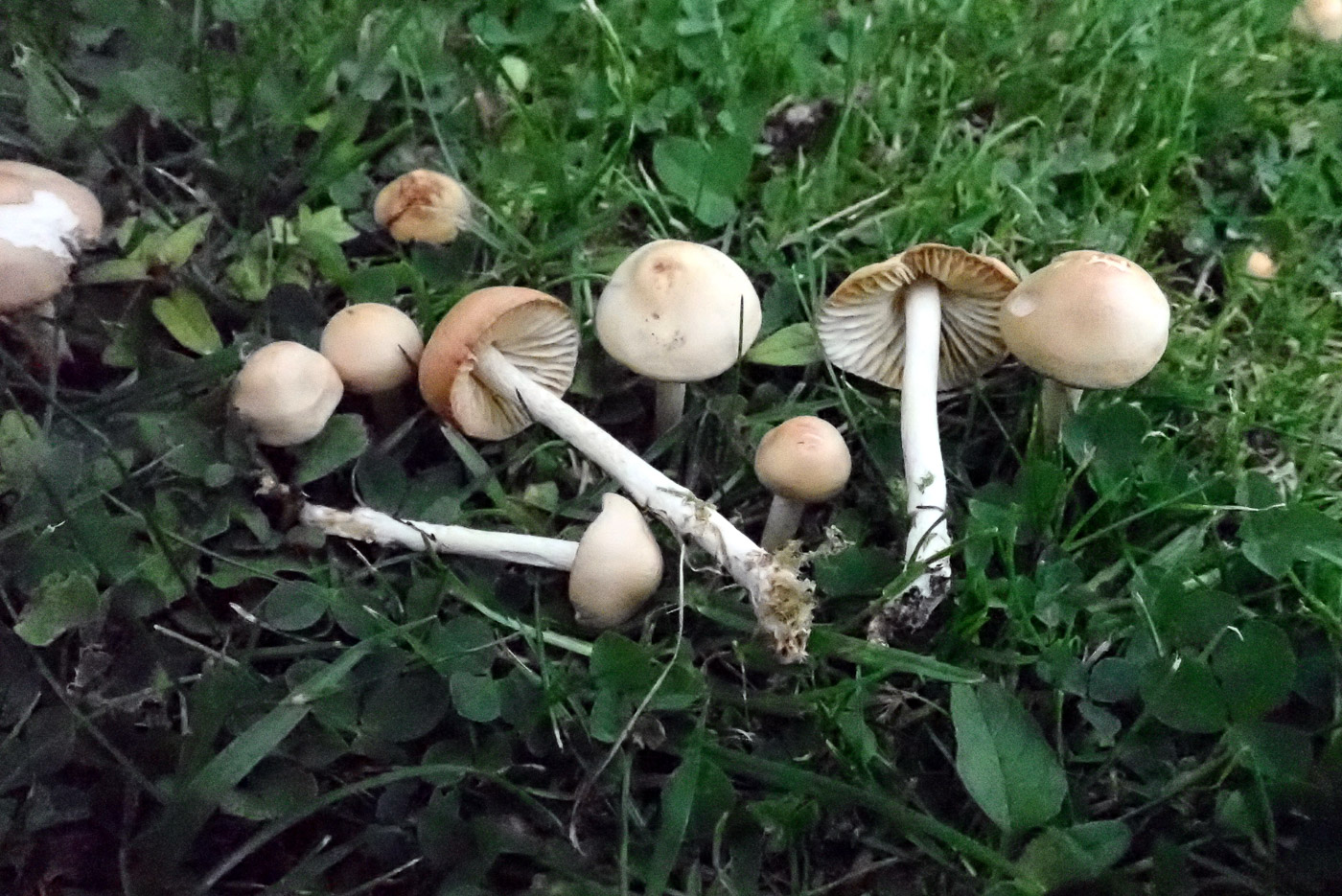
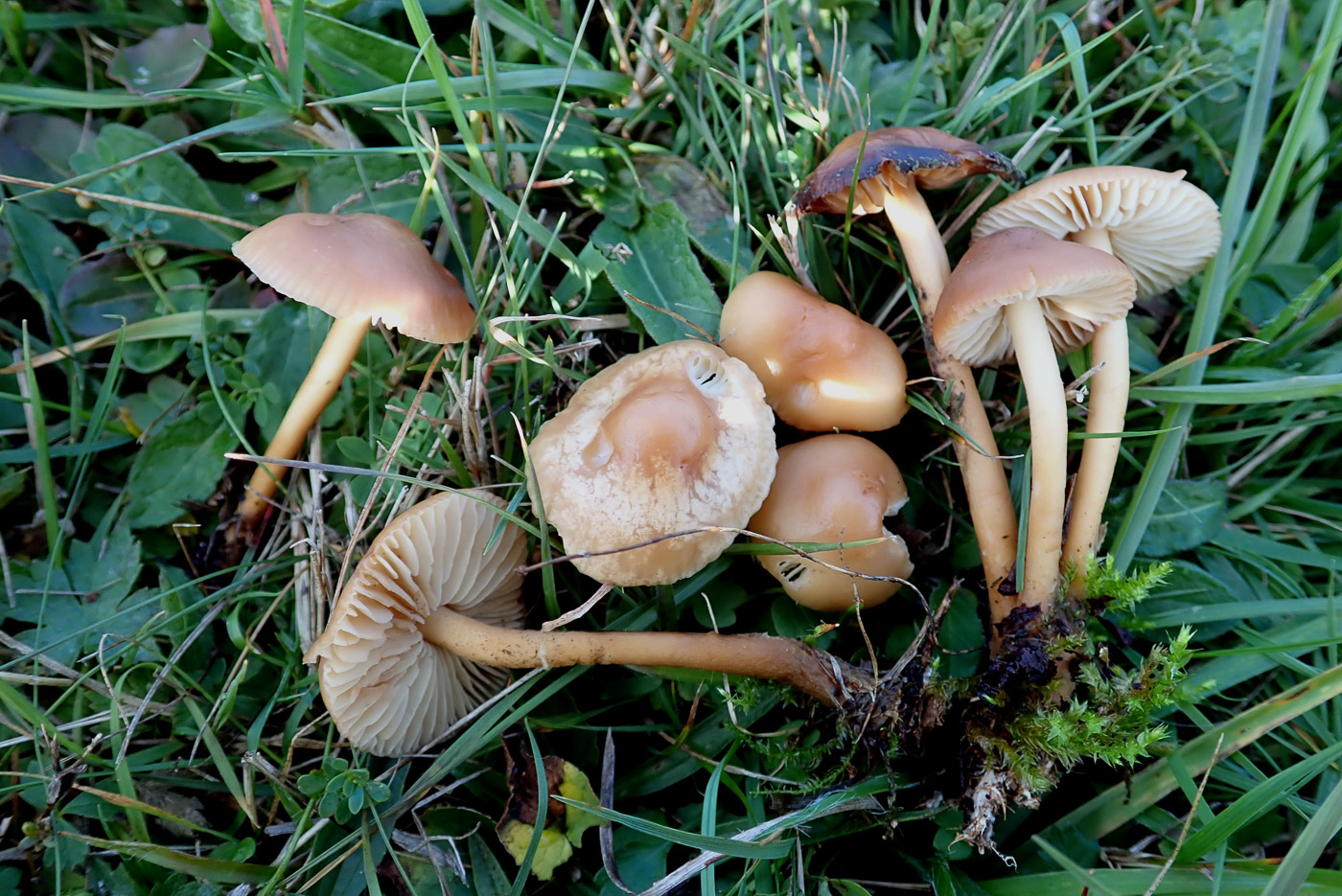
|
Marasmius oreades (Fairy Ring Champignon)
May 2, 2023. In a sports field in Chesham Greg Douglas found this common summer grassland species just making an appearance - we also have an even earlier fruiting of this on April 14th. See the Masterlist for more examples and further comments.
Apr 14, 2023. This is a common species which favours short grass (lawns, sports grounds etc) in summer where it causes 'Fairy Rings', but today's find in Gerrards Cross by Jesper Launder is the earliest of our many records by several weeks. (In fact our only other April record was Penny's from her Amersham garden in 2001!)
Sep 24, 2022. In thick longish grass at Cadmore Ends Penny spotted several clusters of this common grassland species, one often found growing in large rings on short mown lawns, cricket pitches etc. From above (photo 2) it looks remarkably like other grassland species, but turning one over (photo2) reveals the widely spaced rather thick cream gills. It also has a rather strange smell, said to be of bitter almonds.
Jun 8, 2022. Also in Penny's lawn this common grassland species has just started popping up in its usual ring, no doubt stirred into action by the recent rains. This is early, yes, but not exceptionally so: we have a few BFG records for May and June. See also Finds 2020 Sept 29th.
Sep 29, 2020. A very common grassland species, this was in a meadow at Rushbeds Wood, found by Penny Cullington. As the common name suggests, it can often be found in rings on lawns in large numbers - the rings gradually increasing in size year by year, though this is by no means the only mushroom to do this. Note the rather widely spaced gills and flexible texture. The cap fades as it dries but it can be revived by soaking in water - a unique feature of the genus.
|
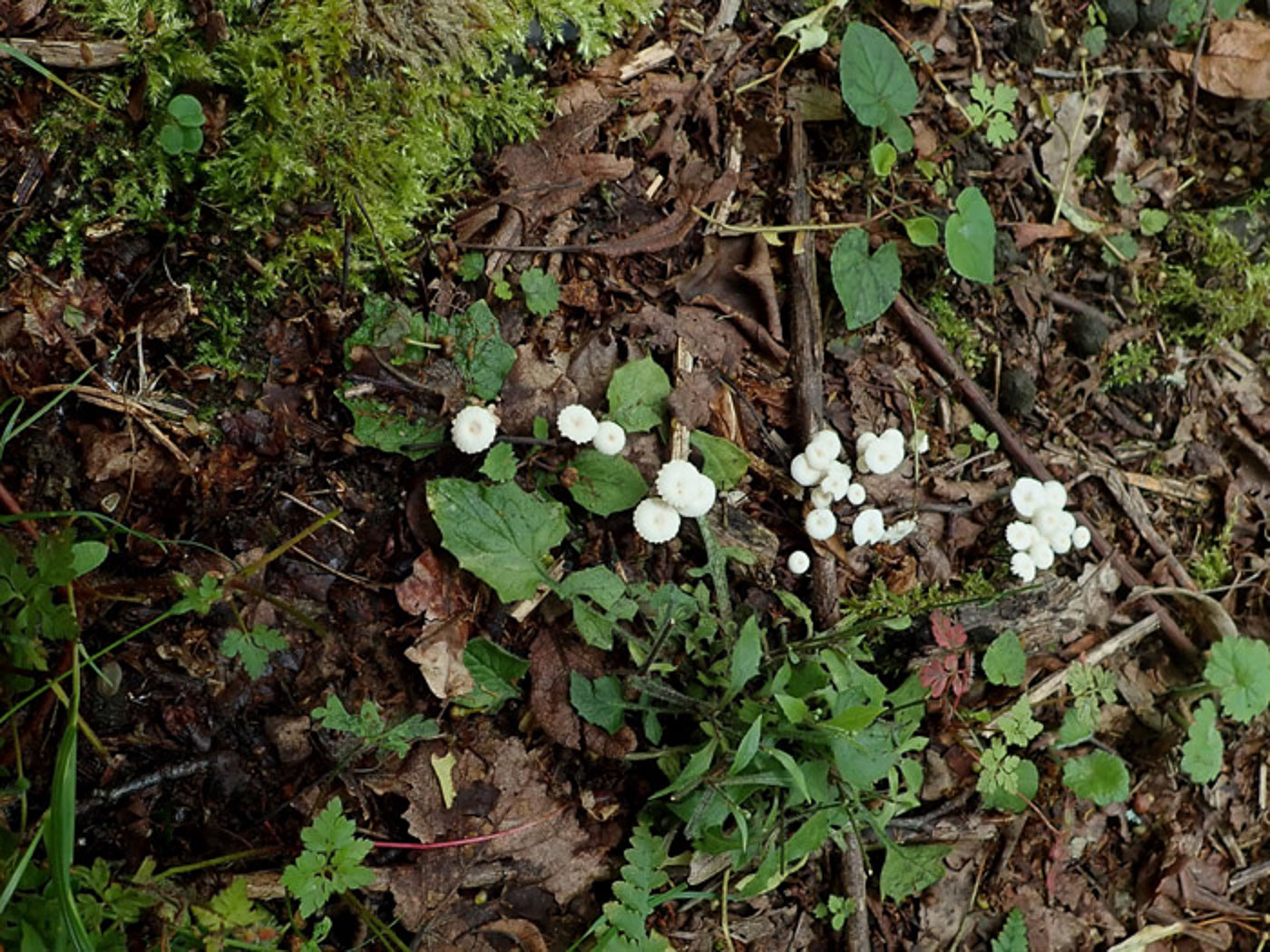
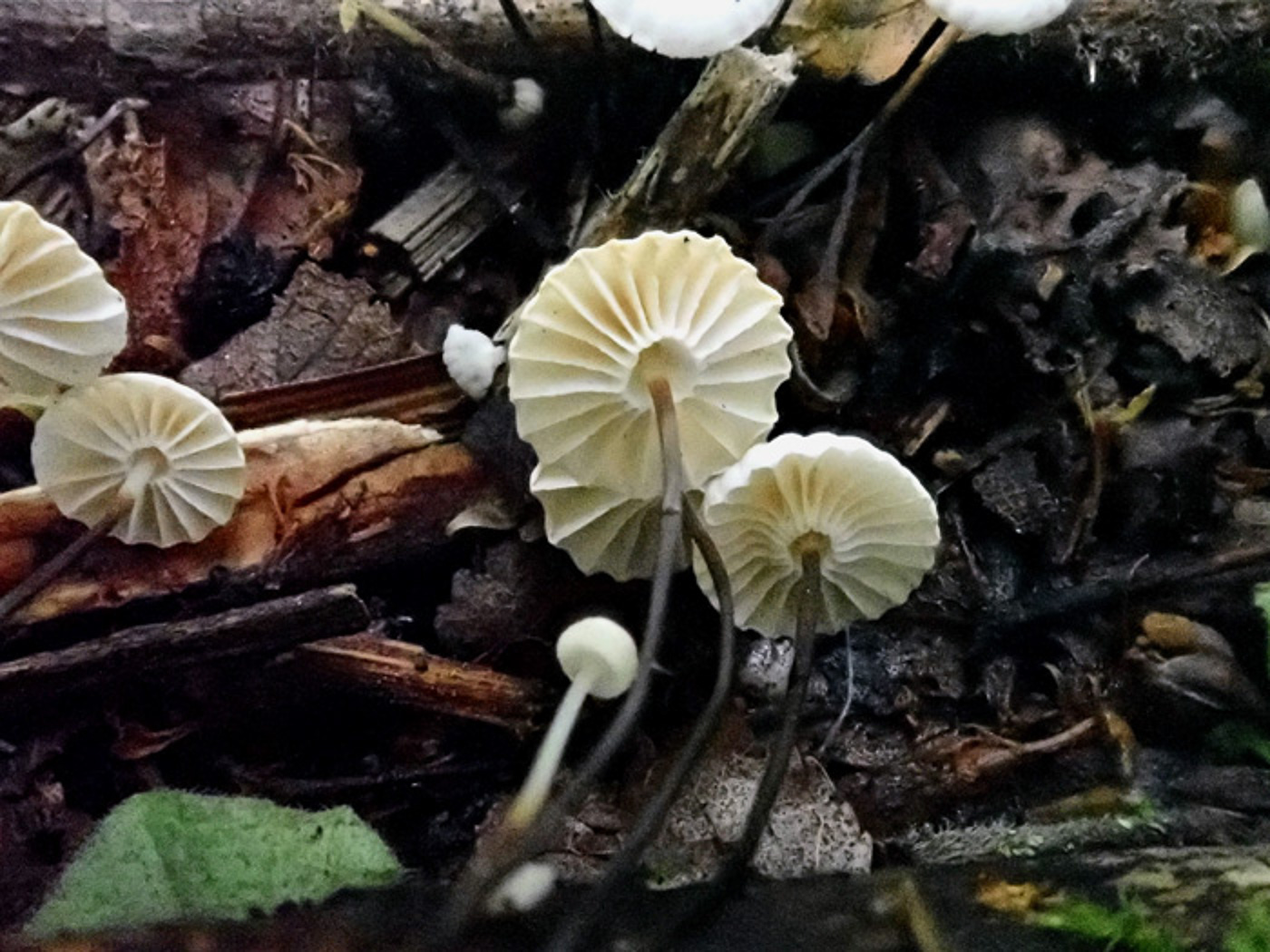
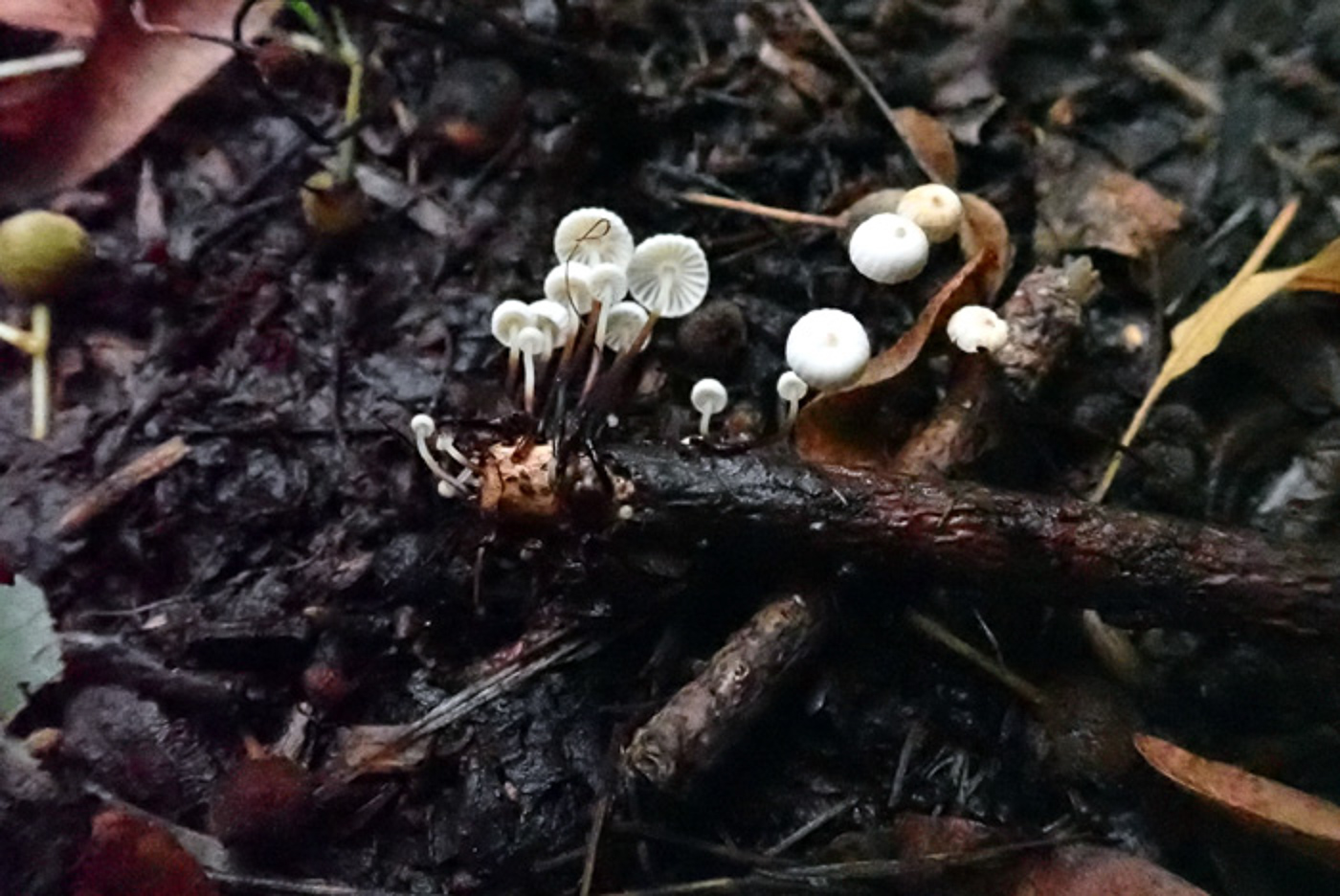
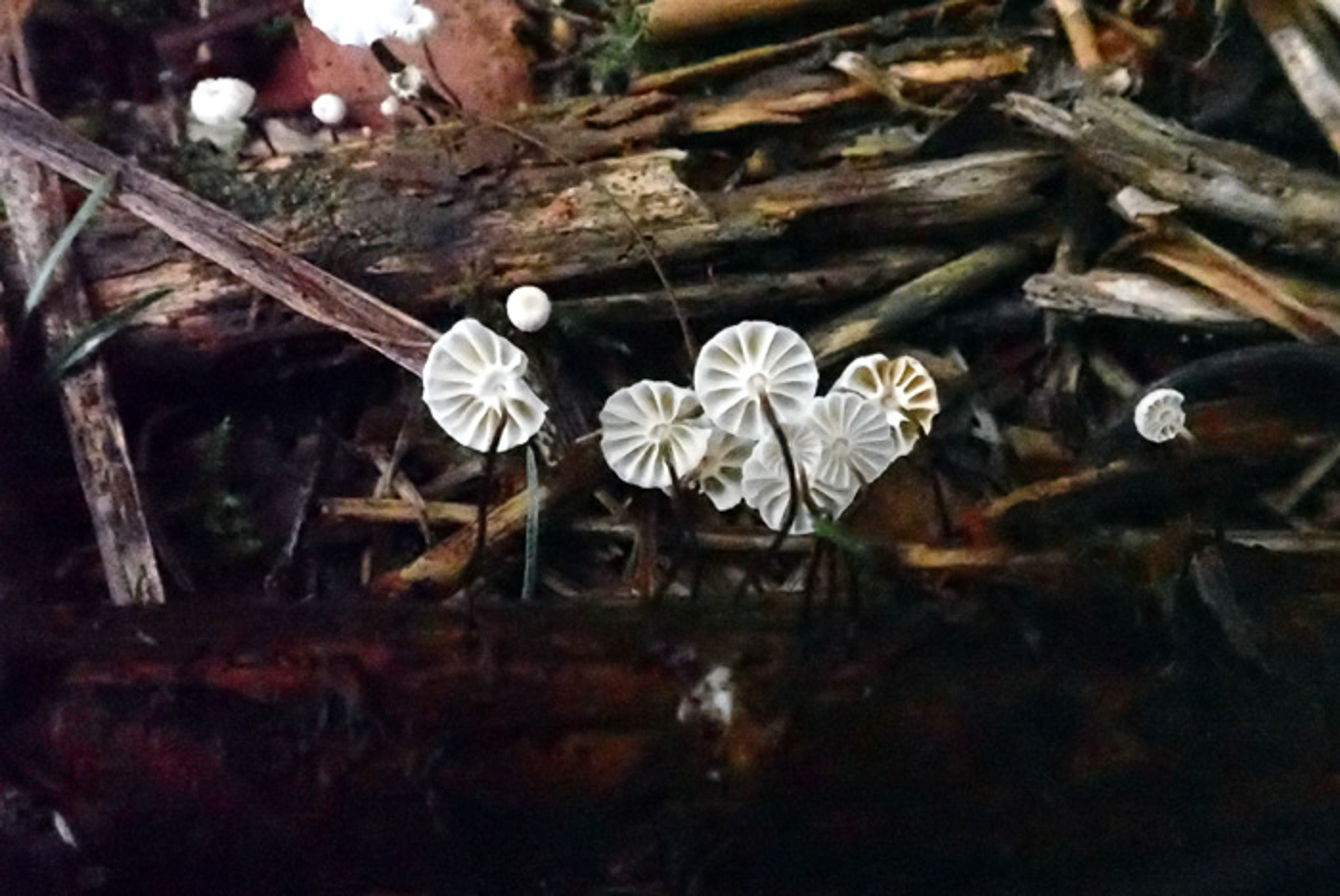
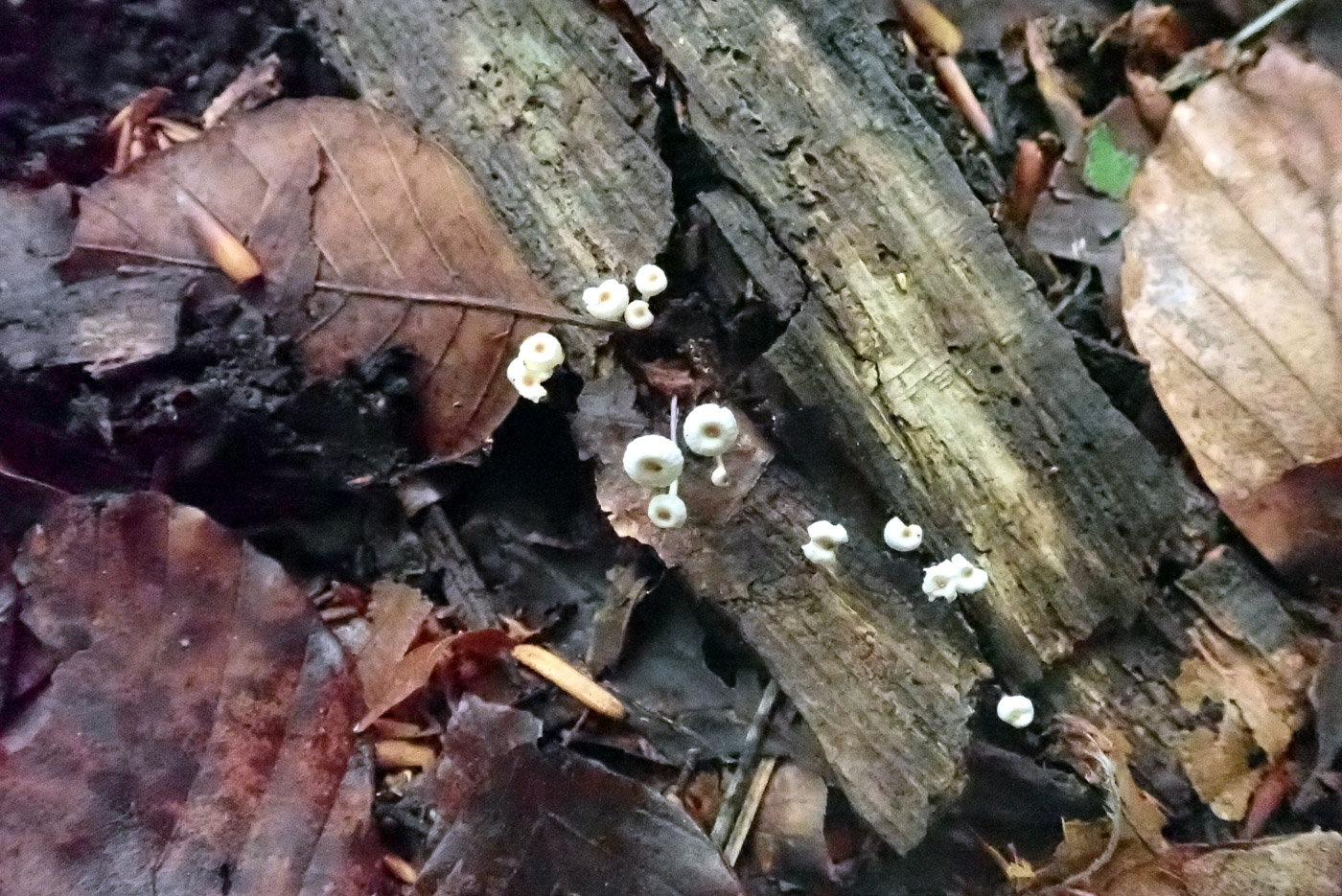
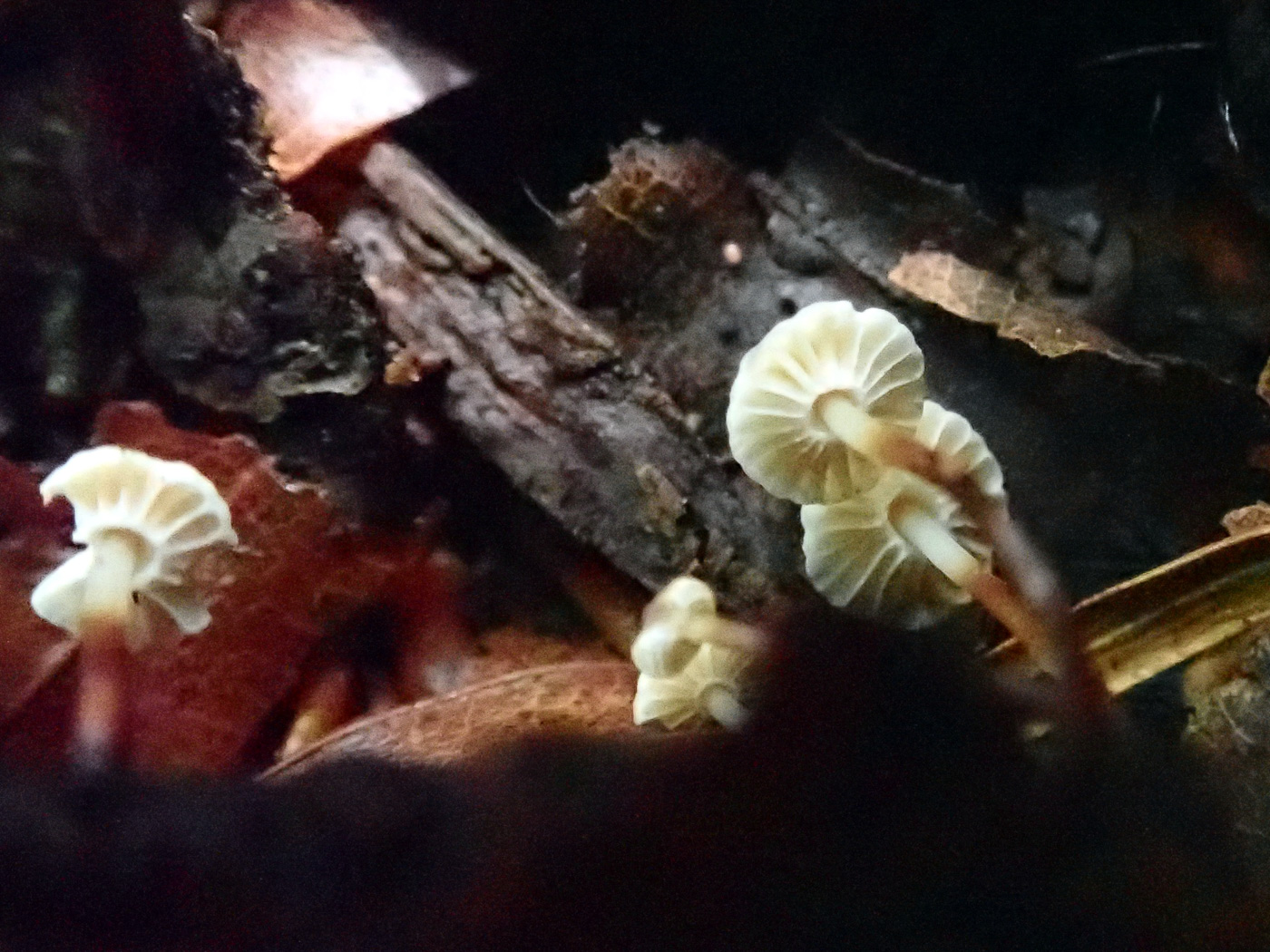
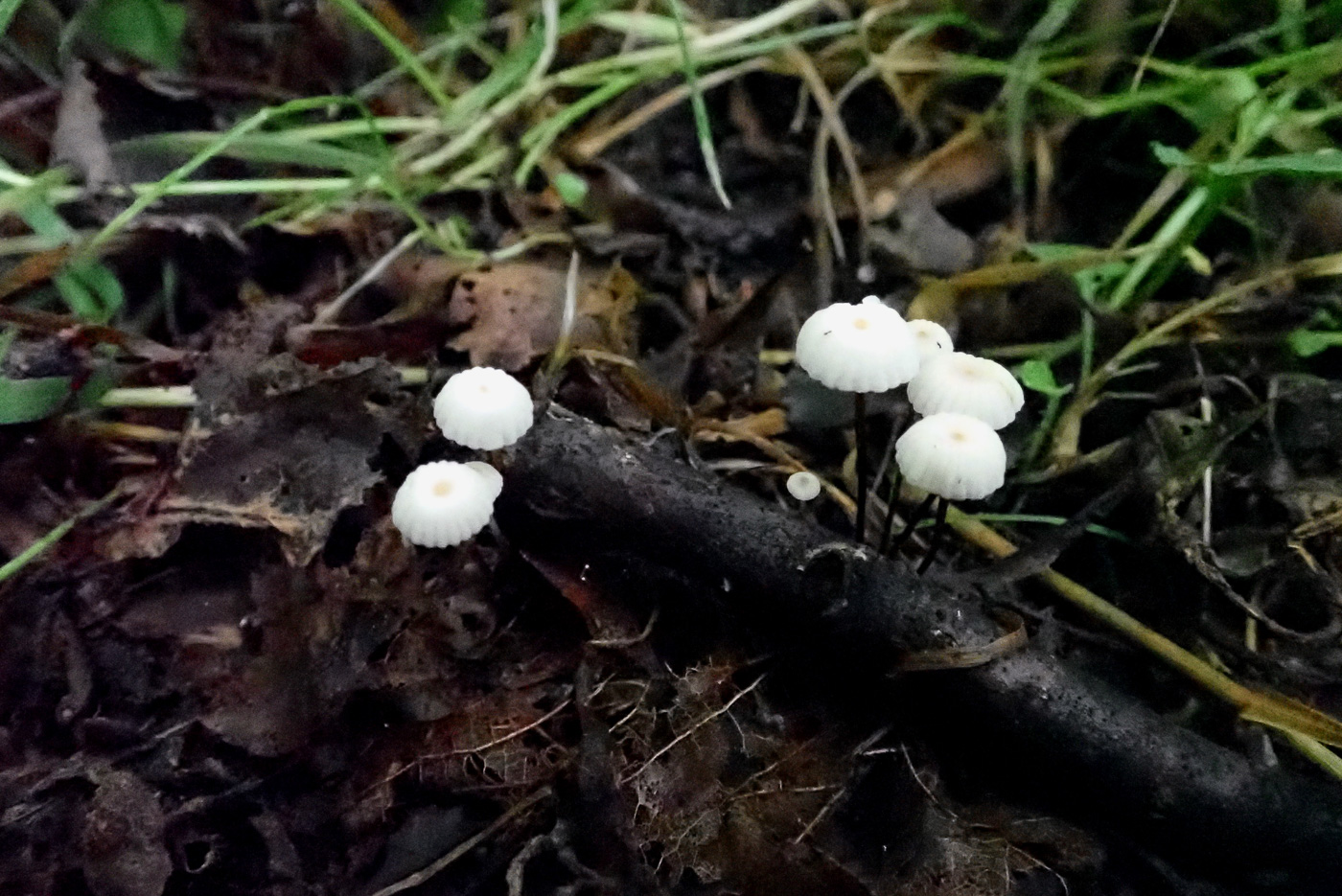
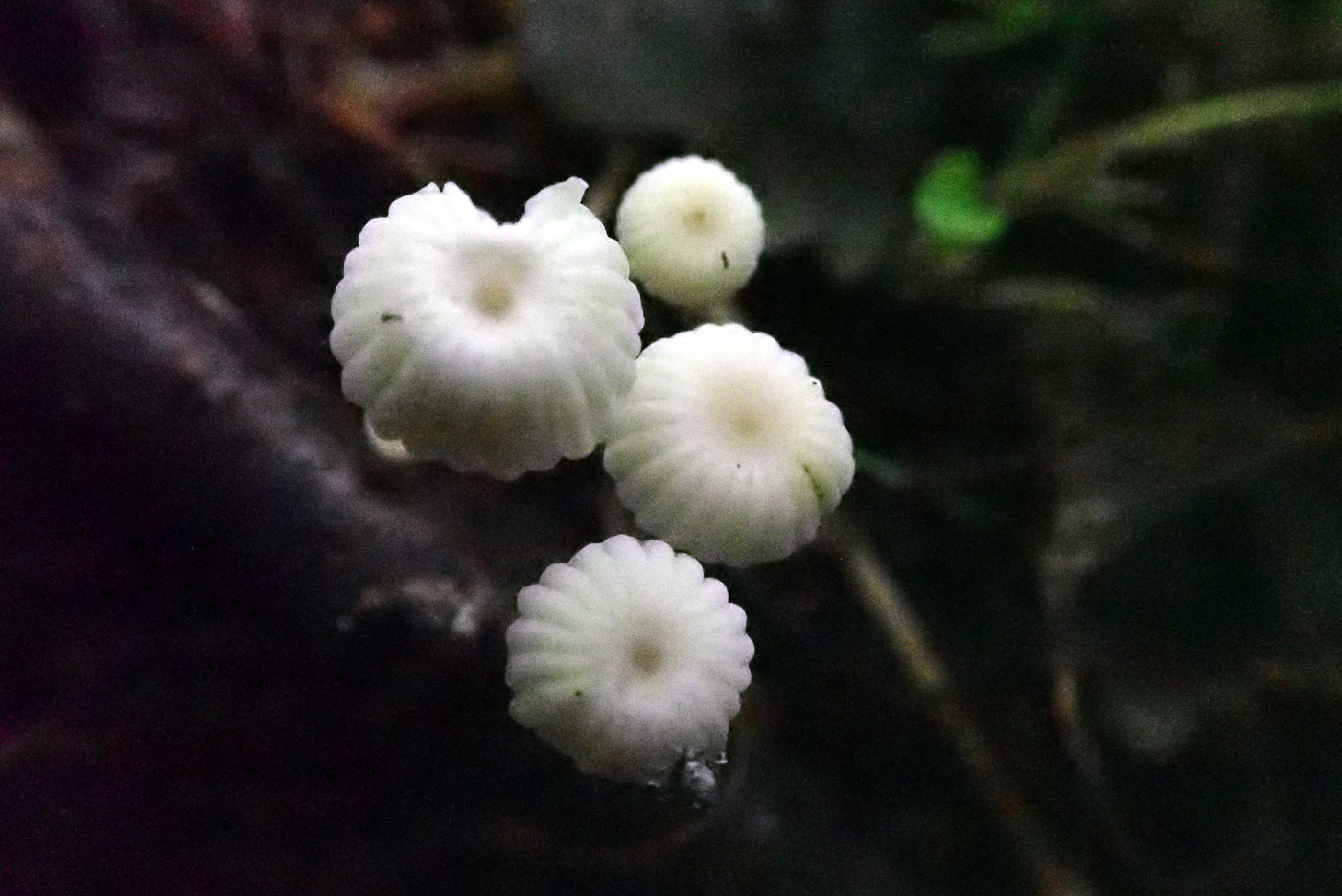
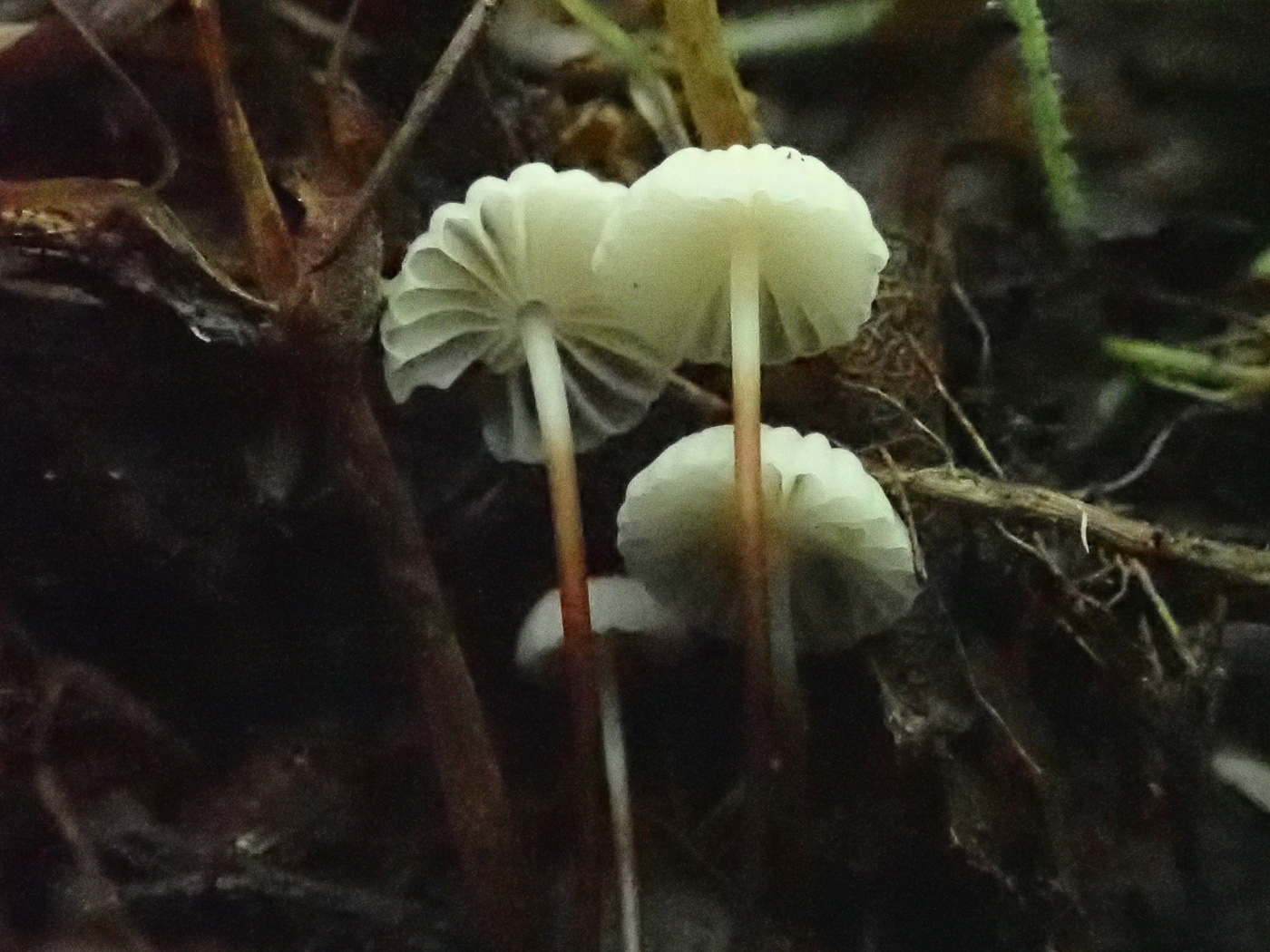
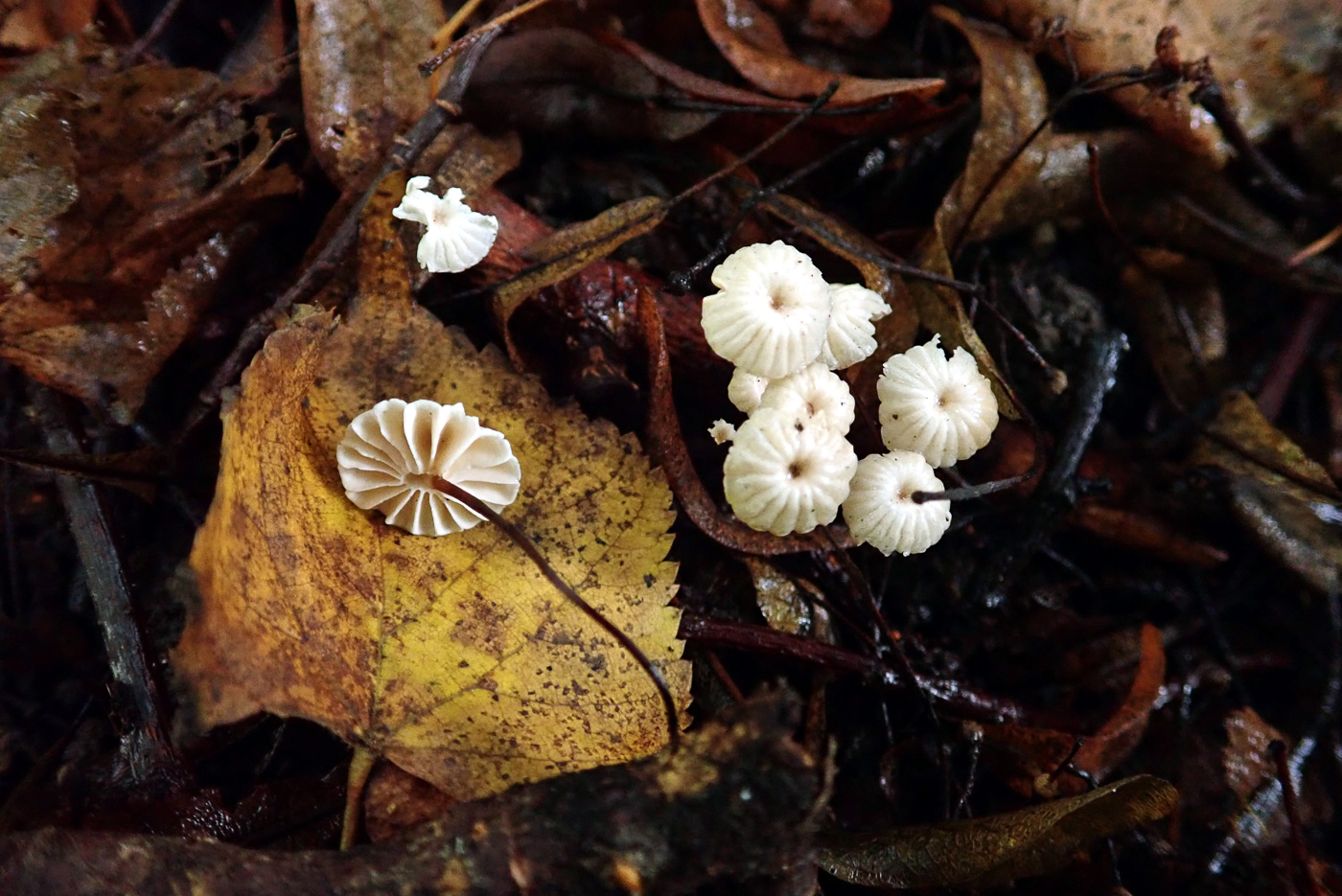
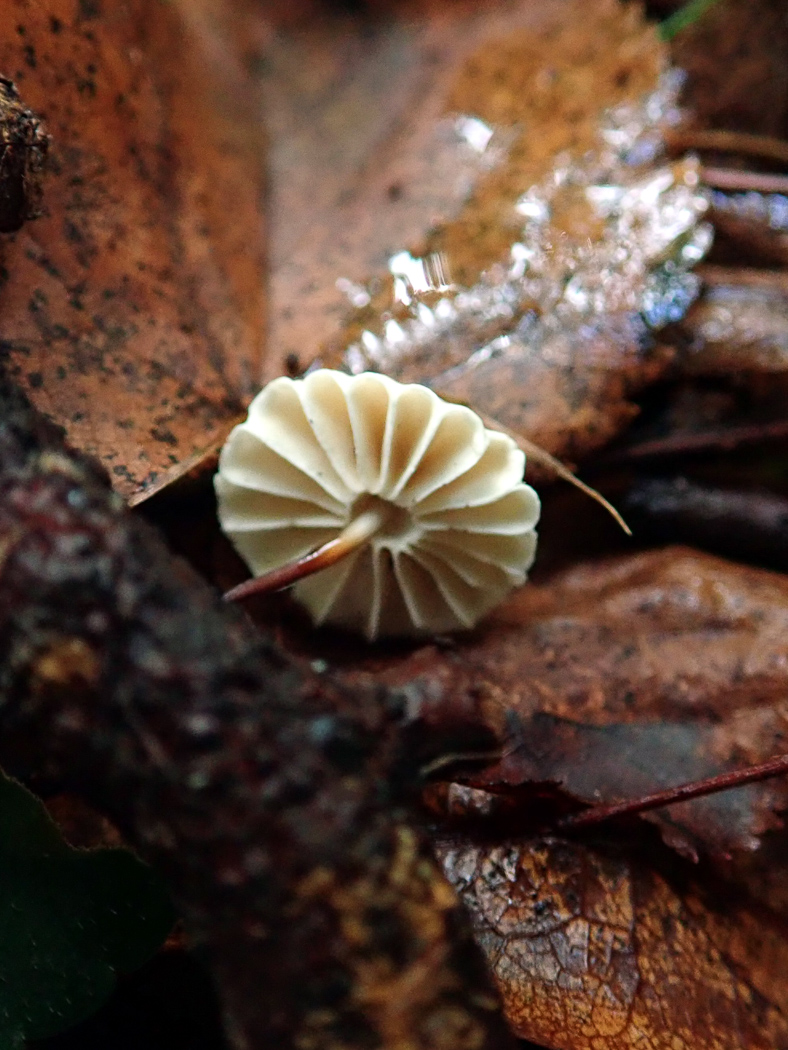
|
Marasmius rotula (Collared Parachute)
Jul 17, 2023. In woody debris under the Limes at Turville Heath Penny found this species popping up in many places in response to recent rains. From above this tiny mushroom could be one of several different species (photo 1) but the widely spaced gills attached to a 'cogwheel' rather than adjoining the stem (photo 2) leave its identity in no doubt. Only one other species (M. bulliardii) has this feature, but is much rarer, even smaller, found on fallen leaves of Beech, with the cap more cream than white and with a dark central dot.
Sep 7, 2022. At Turville Heath Penny found good numbers of this very common small white mushroom popping up attached to woody fragments. This is one of quite a few Marasmius species having a thin almost horse-hair like stem, black though changing to orange then white at the top. However, only one other species has this distinctive cogwheel-like collar where the gills attach to the stem - one which is half the size, is found only on fallen beech leaves and has a tiny black dot in the centre of the cap: the much rarer M. bulliardii. To compare these two species see Finds 2020 October 13th for M. bulliardii versus Oct 1st for M. rotula, also 2021 June 30th & July 31st for the latter.
In the piece of woodland on the edge of Ragpits Nature Reserve Penny found these very common tiny white Parachutes growing on a bare Beech stick. One look at the underside of the caps was enough to identify to species, there being only two possibilities having white or very pale fluted caps and gills which clearly attach to a collar around the top of the stem (photo 2). The even smaller and much rarer M. bulliardii occurs in similar habitat but on fallen Beech leaves, not on woody debris or actual wood as here, also in that species the sunken cap centre has a distinct black dot rather than just being a bit darker as here. See also in Finds 2021 Jan to June dated June 30th for another example of today's species, and for comparison in Finds 2020 dated Oct 13th for M. bulliardii.
Jun 30, 2021. At Turville Heath Penny found good numbers of this small white common mushroom coming up in deciduous woody litter on damp sticks. Similar to a small white species of Mycena (Bonnet), the caps - up to 1 cm across or more - have a fluted edge with a darker 'eye' in the middle, the wiry stems are white at the top but below this orange then brown then black - typical of many in this genus, and finally the clincher: look for the cog-wheel free collar around the stem top to which the widely spaced gills attach (see photo 2). Only one other species, the much rarer Marasmius bulliardii, has this particular feature but it's even smaller than M. rotula with a more distinct blackish 'eye' and is found on deciduous leaves (most often Beech), not on wood.
Oct 1, 2020. These common tiny white mushrooms were growing on woody debris under Lime at Turville Heath, found by Penny Cullington. Caps can get to not much more than 1cm across and have a sunken dark centre with distinct radial fluting. Turn one over to reveal the cog-wheel-like collar around the stem, a feature found in only this and one other species (M. bulliardii, much smaller and found exclusively on rotting Beech leaves, not woody debris). Note also the typical stem of the genus: pale at the very top then reddish and eventually black, also in this case extremely thin and wiry.
|
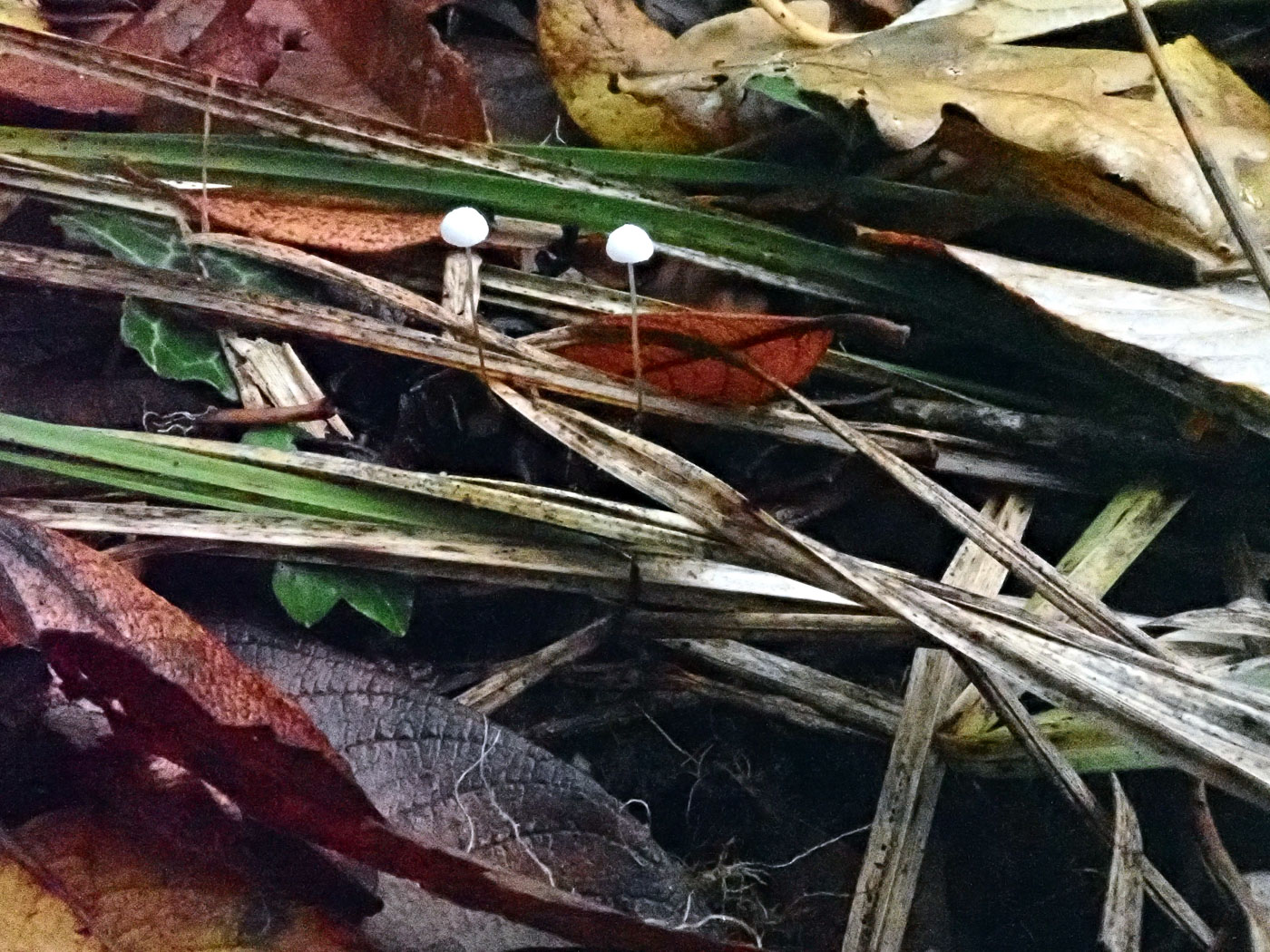
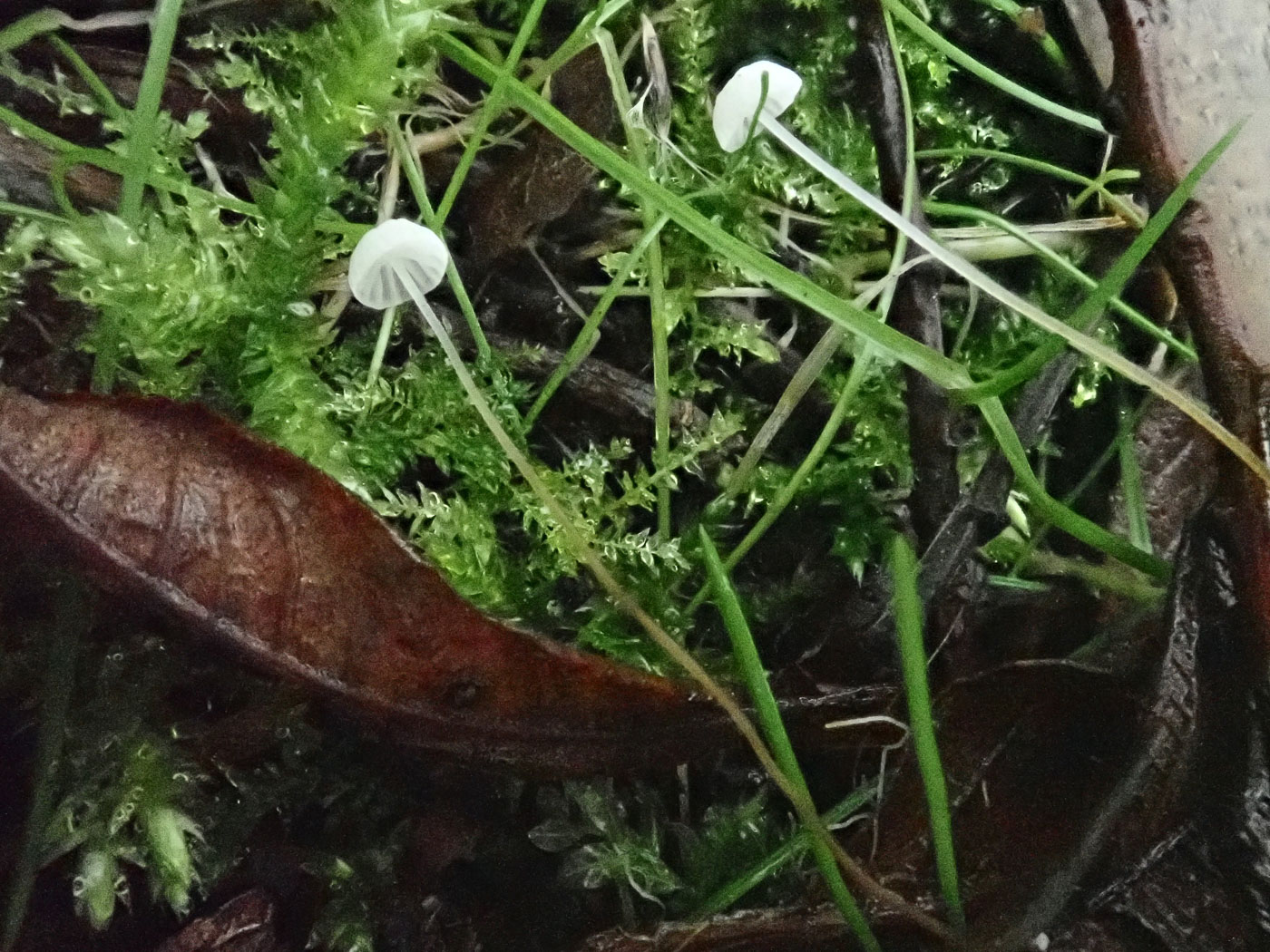
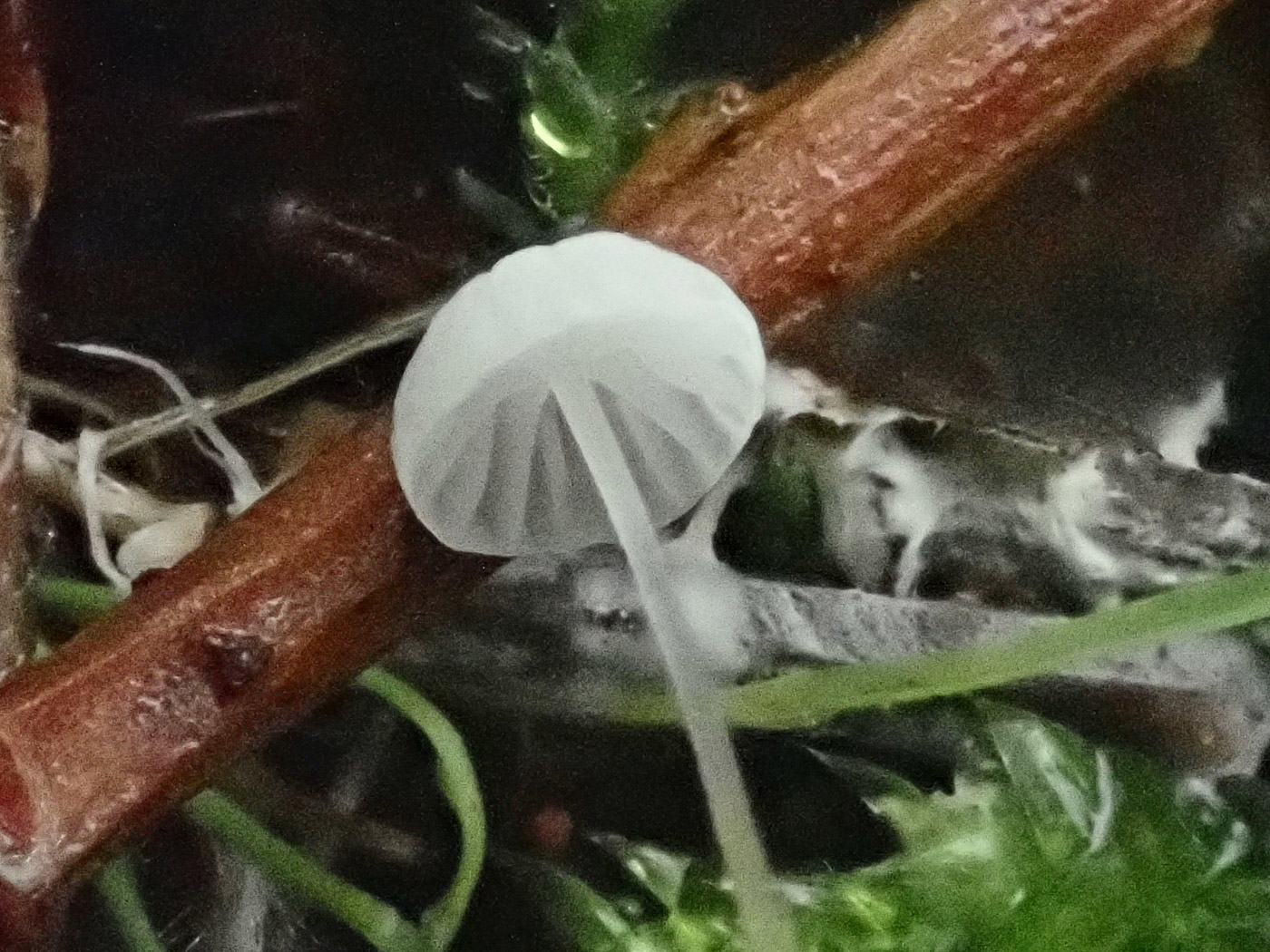 |
Marasmius setosus (Hairy Stem Parachute) 
Dec 3, 2022. At Weston Turville Reservoir Penny noticed a few of these tiny bright white caps glistening amongst the damp leaf litter under Willow near the water's edge (photo 1). Photo 2 shows their typical Marasmius stems once extracted from the vegetation, ie hairlike in thickness, white at the apex then gradually yellowish to ochre to reddish or black lower down - unlike Mycena stems which tedn to remain white throughout. Photo 3 shows the somewhat Mycena-like gills, however. The extremely finely hairy stem is not easy to see even with a handlens but the brilliant white cap, though at most 4mm across, is not difficult to spot amongst deciduous leaf litter. Though common this is a new entry for Finds.
|
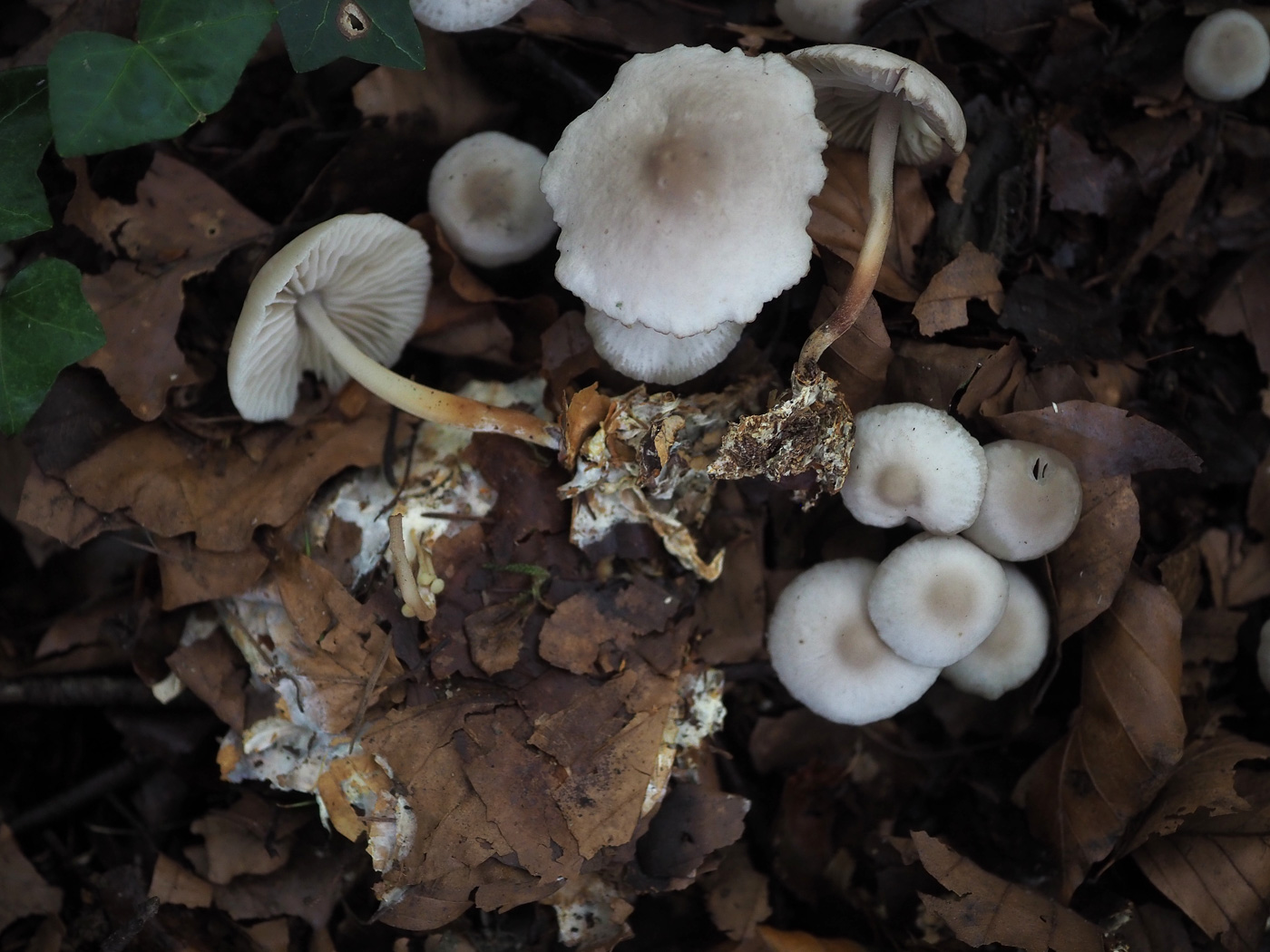
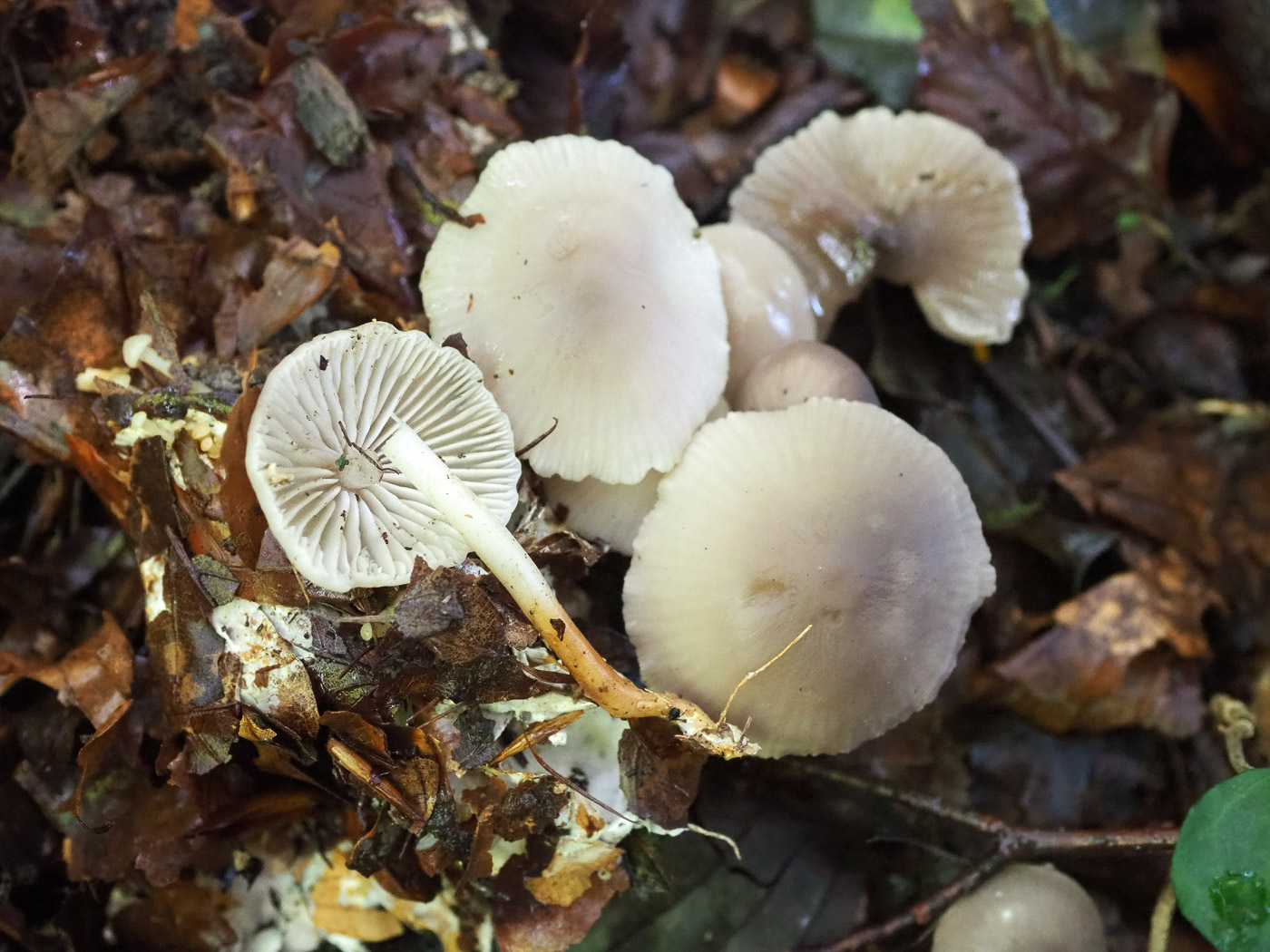
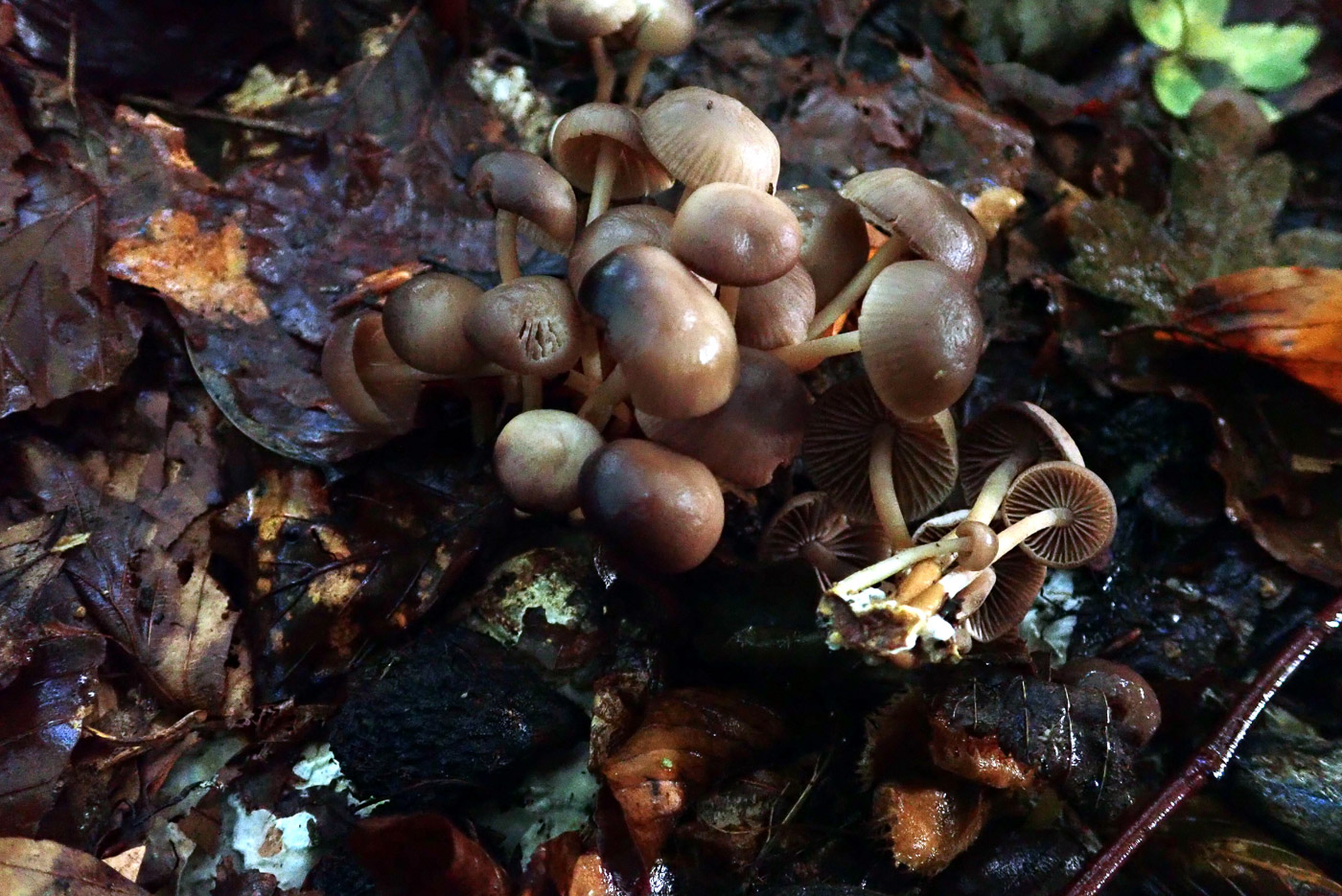
|
Marasmius wynneae (Pearly Parachute)
Oct 5, 2023. In Tinkers Wood John Catterson found the odd clump of this occasional species which favours Beech litter but regularly causes puzzlement in the field. It is a fairly nondescript 'Bonnetlike' mushroom, quite soft fleshed with a washed out slightly violaceous grey cream cap which fades to almost white, the white gills are widely spaced. The longish stem which, like several in this genus, is white at the top but gets darker towards the base with orange brown shades is a good pointer, however, together with its loosely clustered habit. It also has a strange scented smell - difficult to describe!
Sep 24, 2020. Penny Cullington found this cluster of young fruit bodies just emerging in Beech litter in Mousells Wood. An occasional species, it is superficially similar in appearance to the genus Mycena (the Bonnets) and has a strange smell not unlike mothballs. The cap colour tends to fade to almost white as it expands and dries out.
|
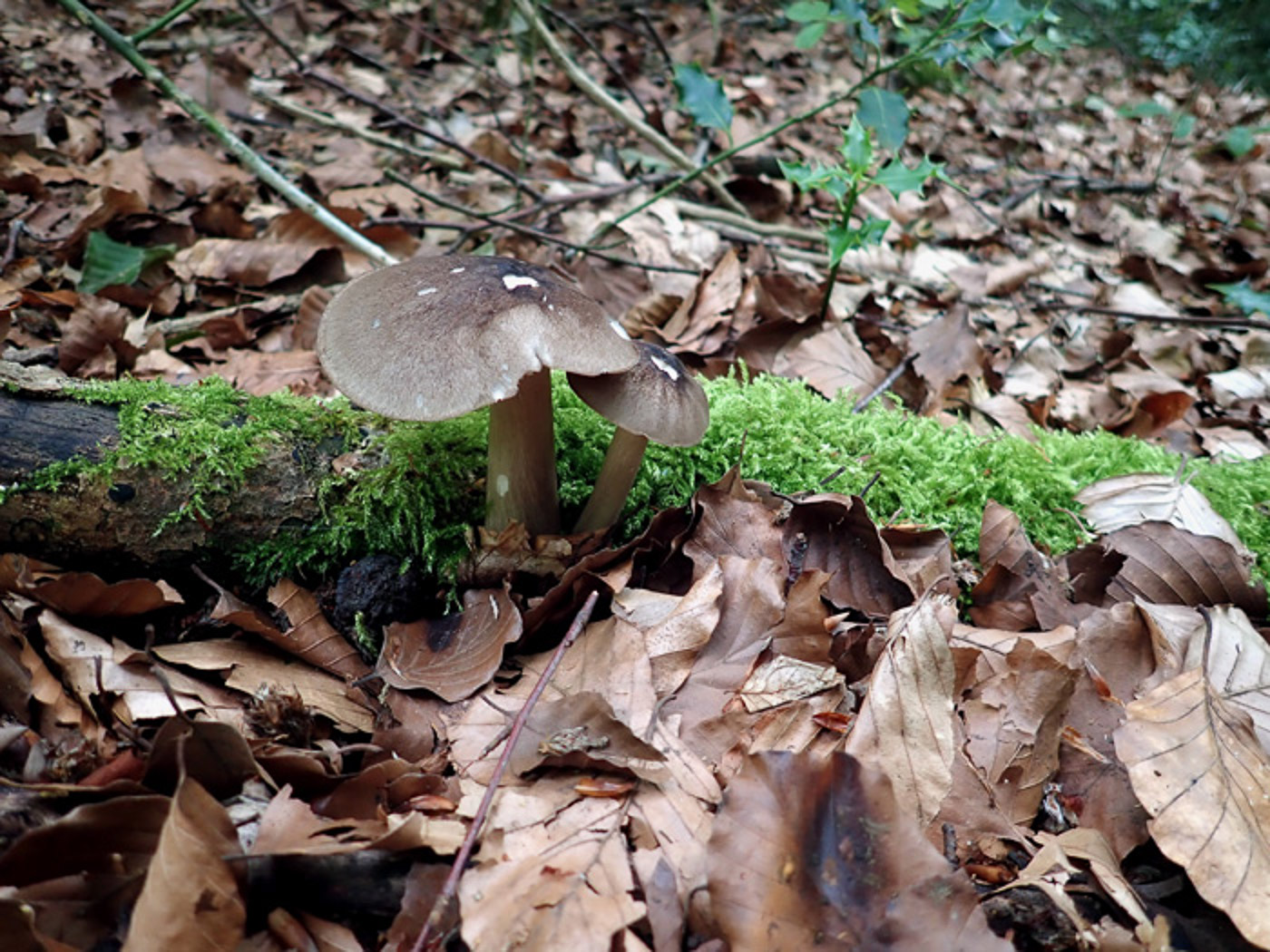
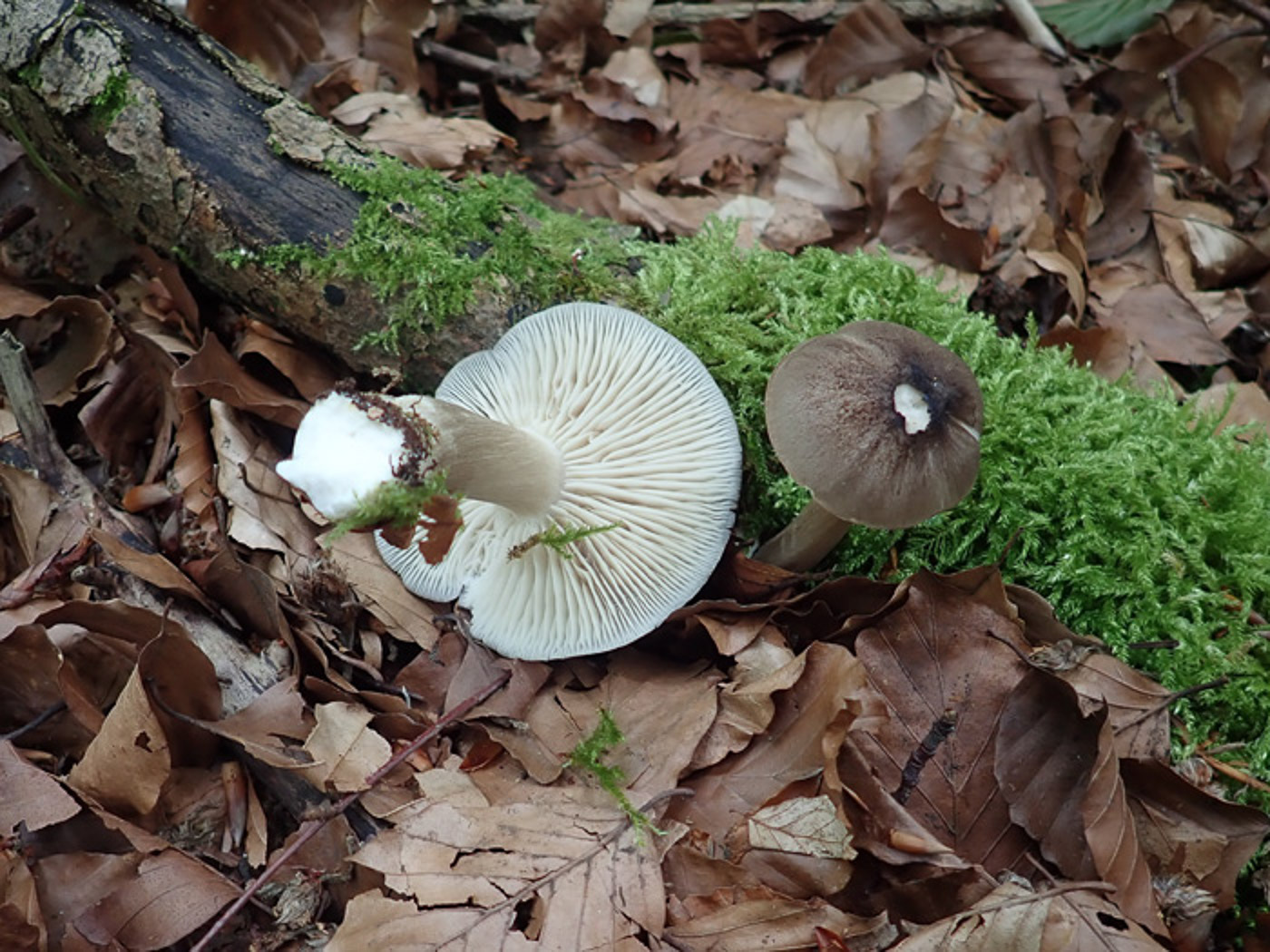
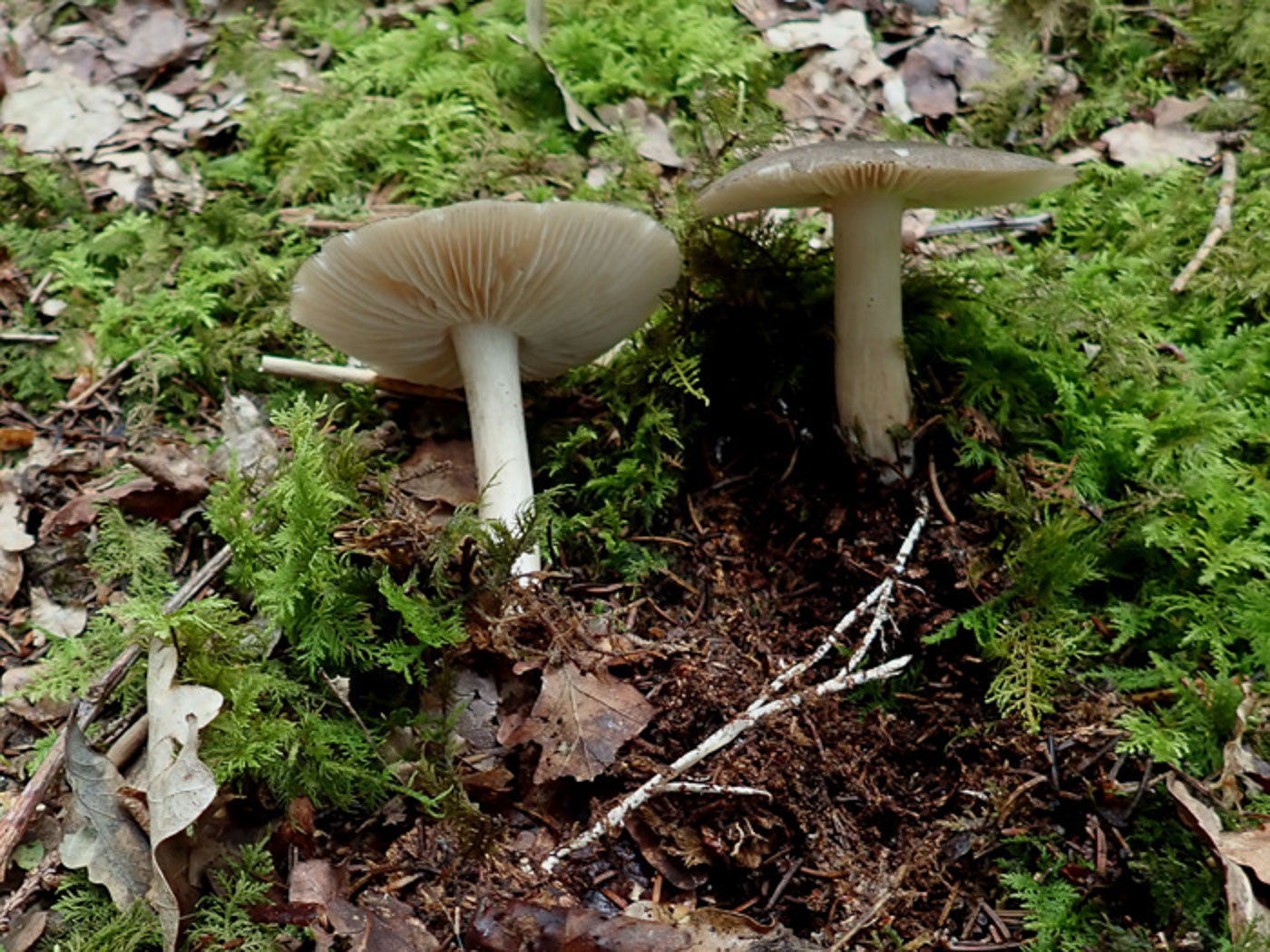
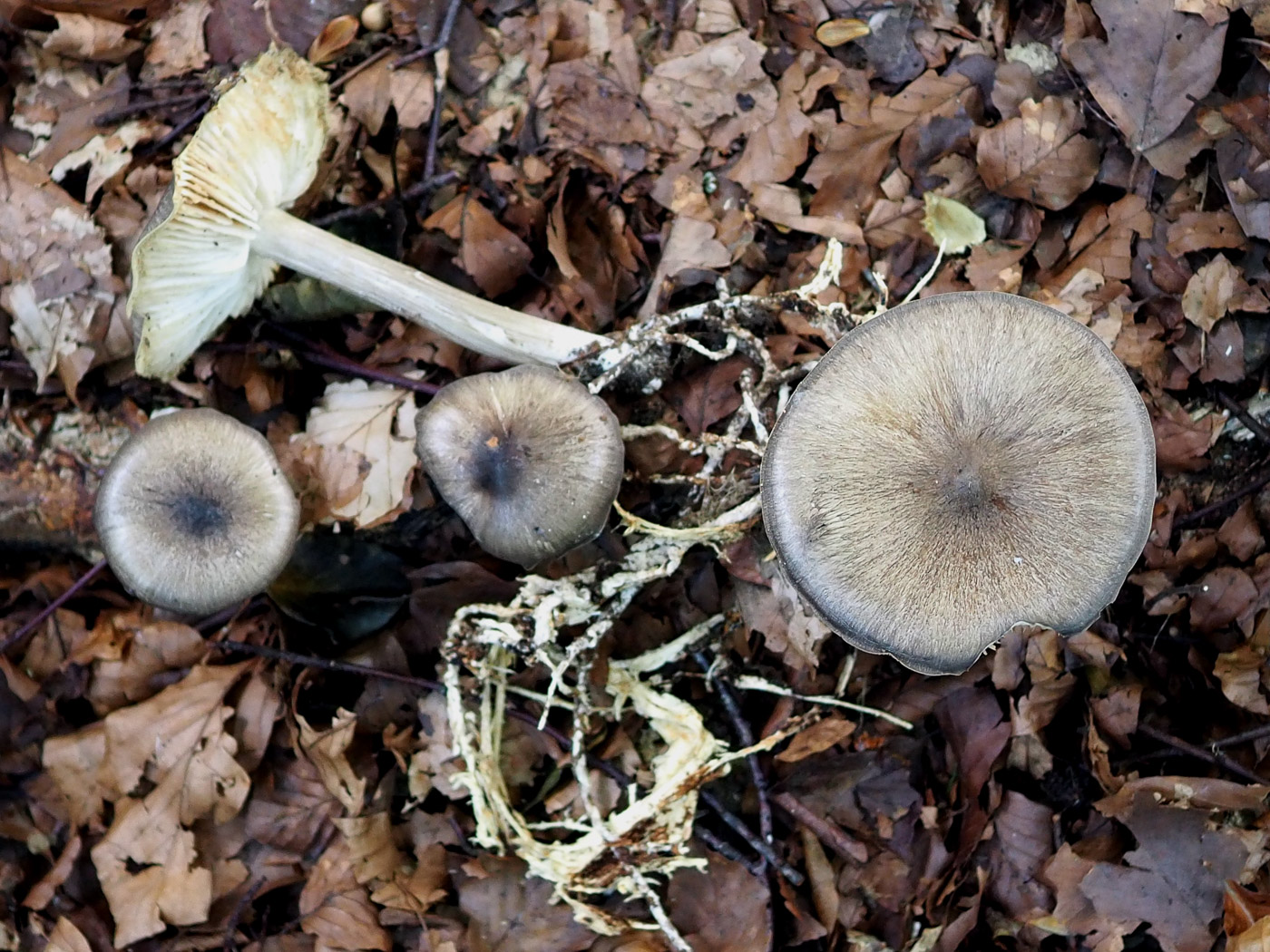
|
Megacollybia platyphylla (Whitelaced Shank)
Oct 11, 2023. Near Marlow Common whilst driving, Penny screeched to a halt when this dying Beech covered in white mushrooms caught her eye! There were too many to count - a sight for sore eyes! It is not unusual to see this attractive but very slimy species growing on standing Beech both live and dead, nor to find it on fallen Beech or even apparently on the ground when it's dropped off a branch from above. It is only found on Beech, however.(It was previously in genus Oudemansiella.)
Jul 19, 2023. In Kings Wood, Tylers Green, Penny spotted this fresh pair on a fallen rotting log and prior to picking one she guessed it was a species of Pluteus - typically on wood, with a mid brown cap about 4 cm across. Wrong! Take a look at photo 2 and spot the obvious mistake here. The gills are widely spaced and not crowded, they are cream and not pink, also they are adnate (attached to the stem) and not free - so definitely not Pluteus! When M. platyphylla occurs on wood above ground as here it attaches direct to the substrate and therefore lacks the telltale white 'bootlaces' (mycelial strands) which attach it to submerged roots and are easily uncovered with a bit of exploration. This nicely illustrates the need to collect and inspect all aspects of a mushroom before declaring its name! Photo 3 shows the bootlaces excavated by Penny in Bernwood Forest a few days later. Surprisingly we have only one previous entry of this common species in Finds.
Sep 11, 2020. John Catterson found good examples of this common species in Tinkers Wood in Beech litter. One of several woodland species having similar dull brown caps, this one is easy to identify if you probe into the litter at its base (as John did) to reveal the long white strings of mycelium which are attached - a unique feature. That together with the cream rather widely spaced gills are good characters in the field.
|
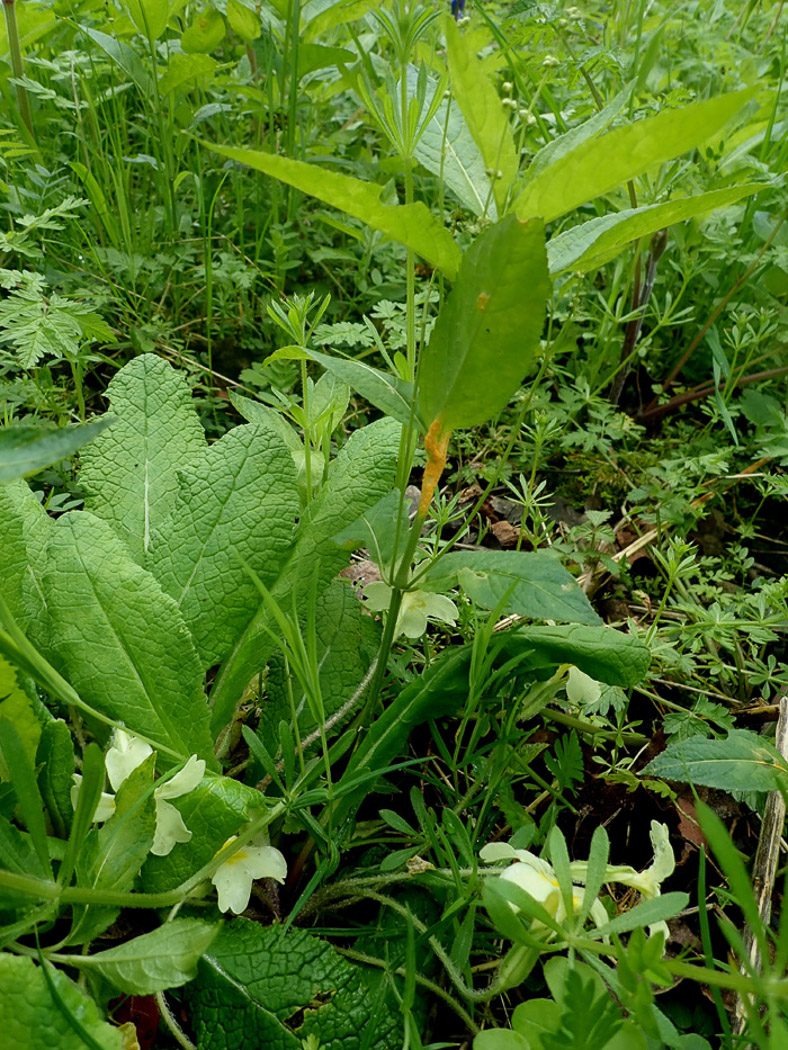
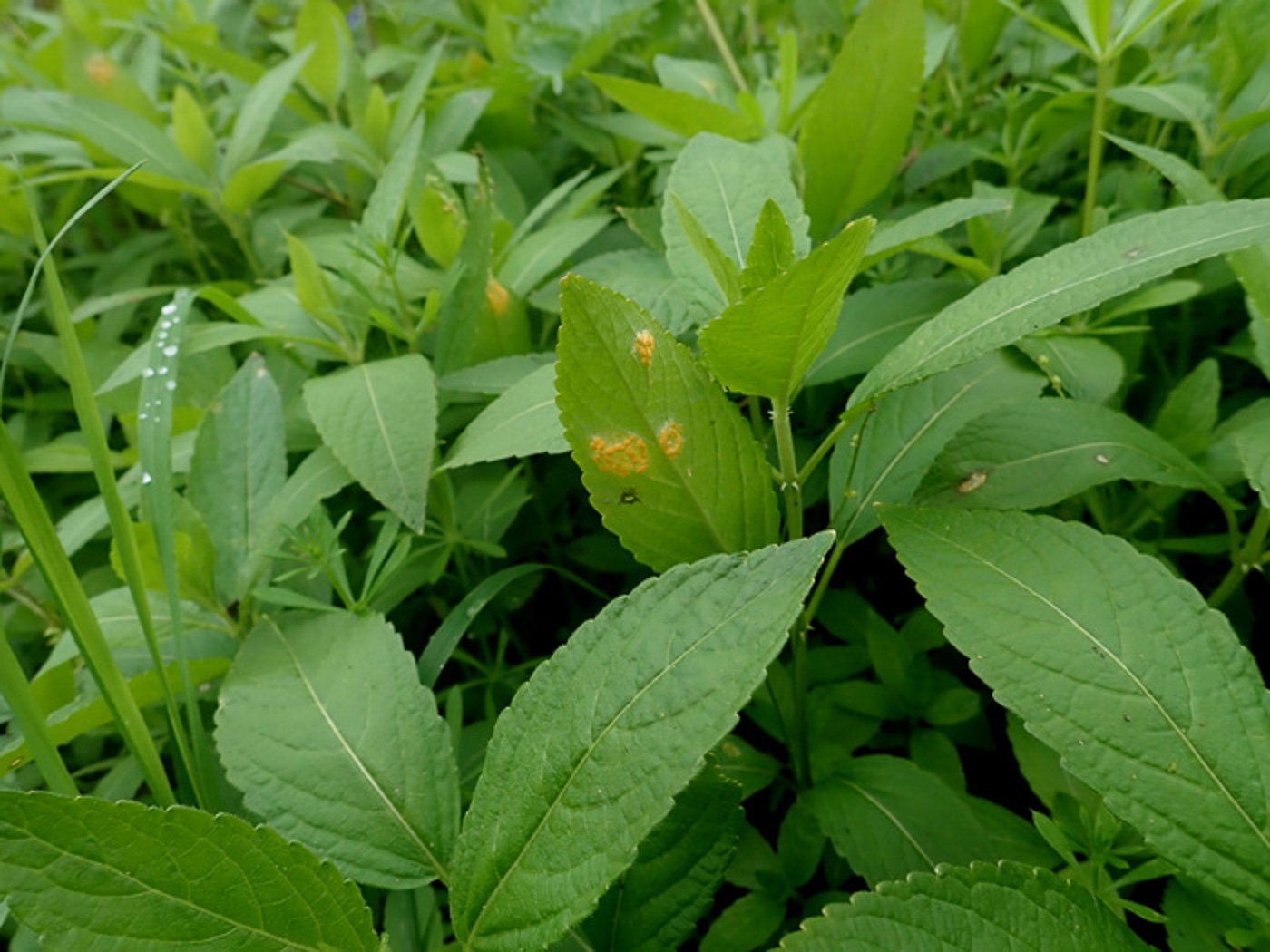
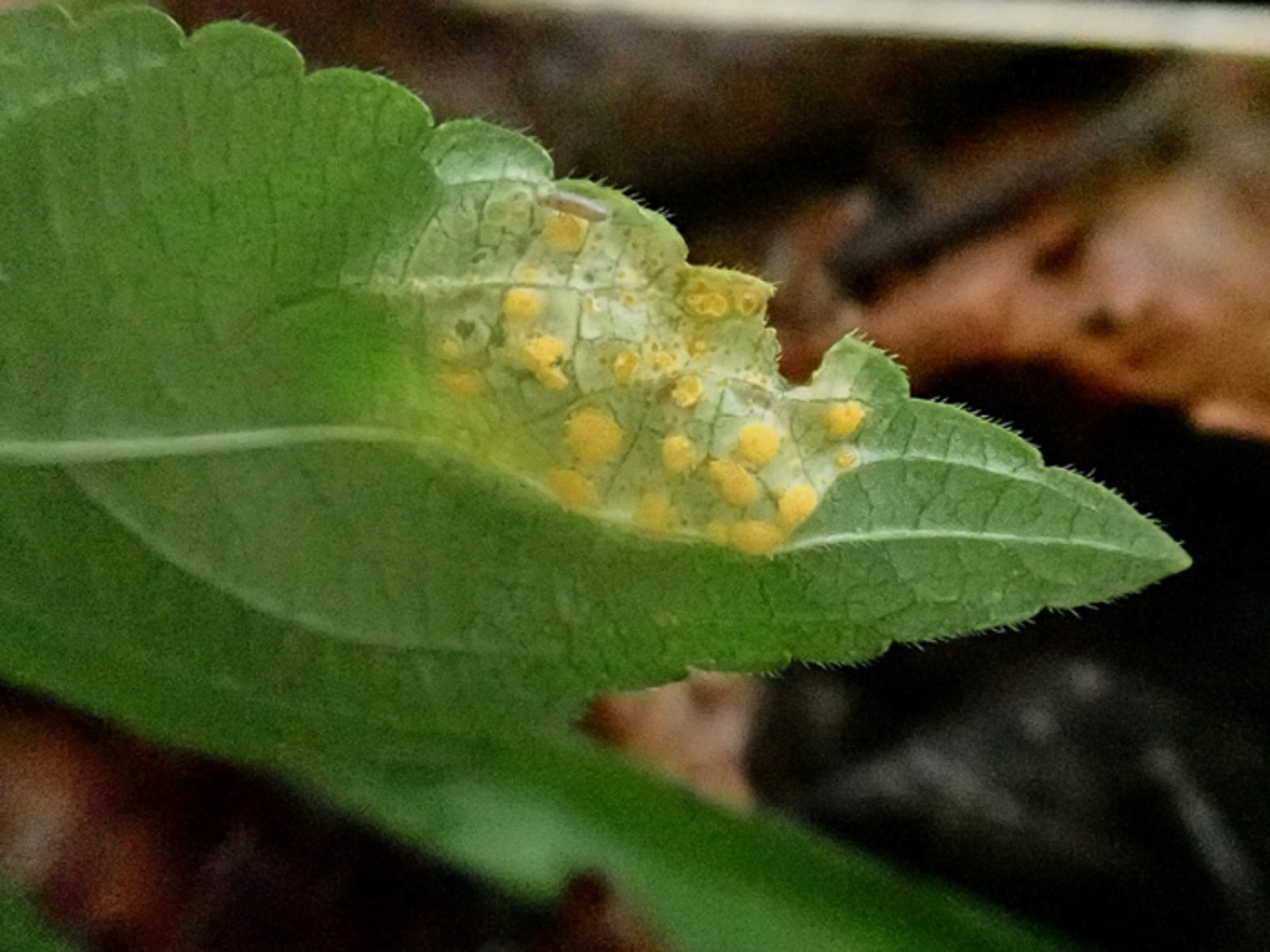
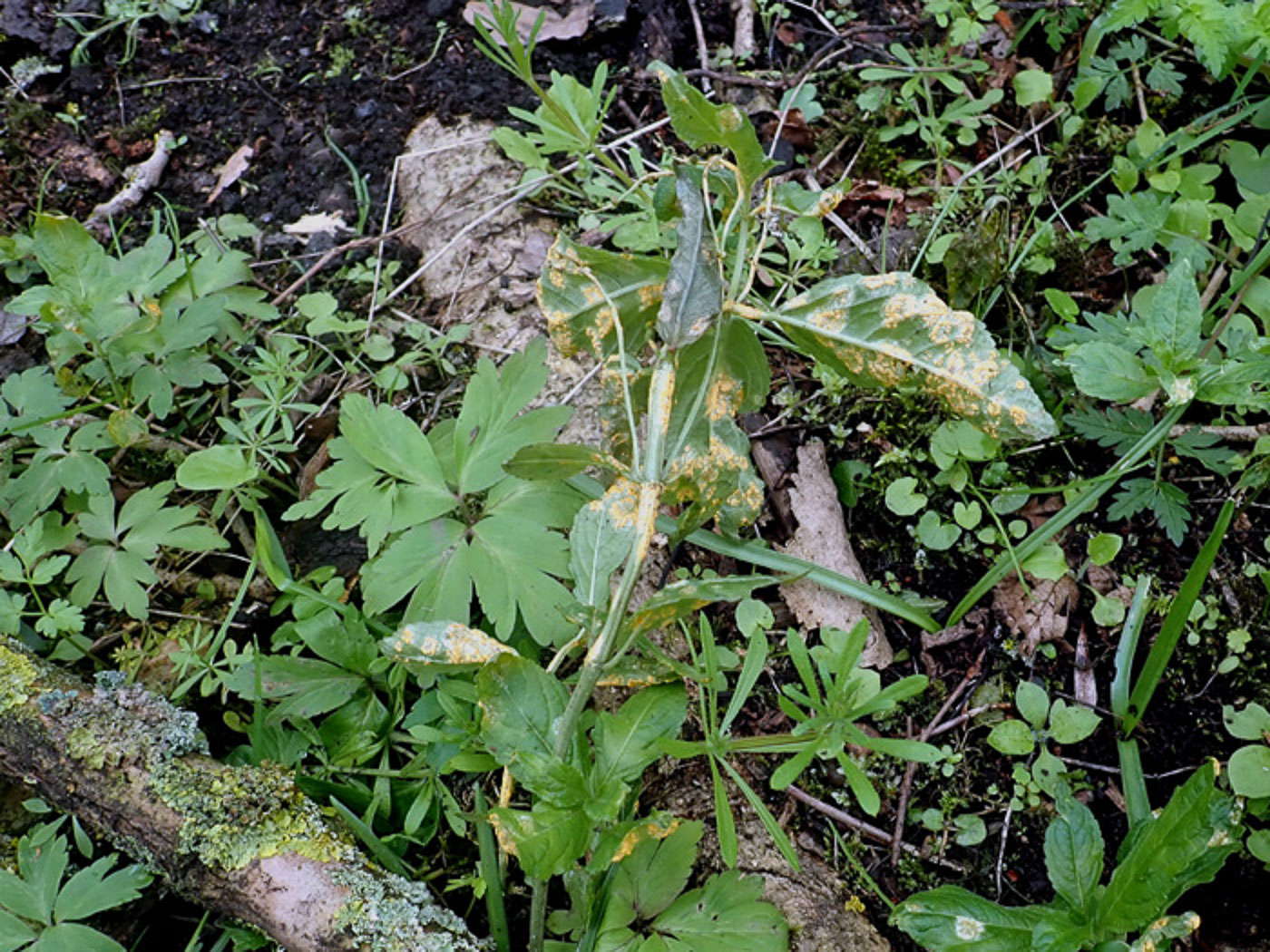
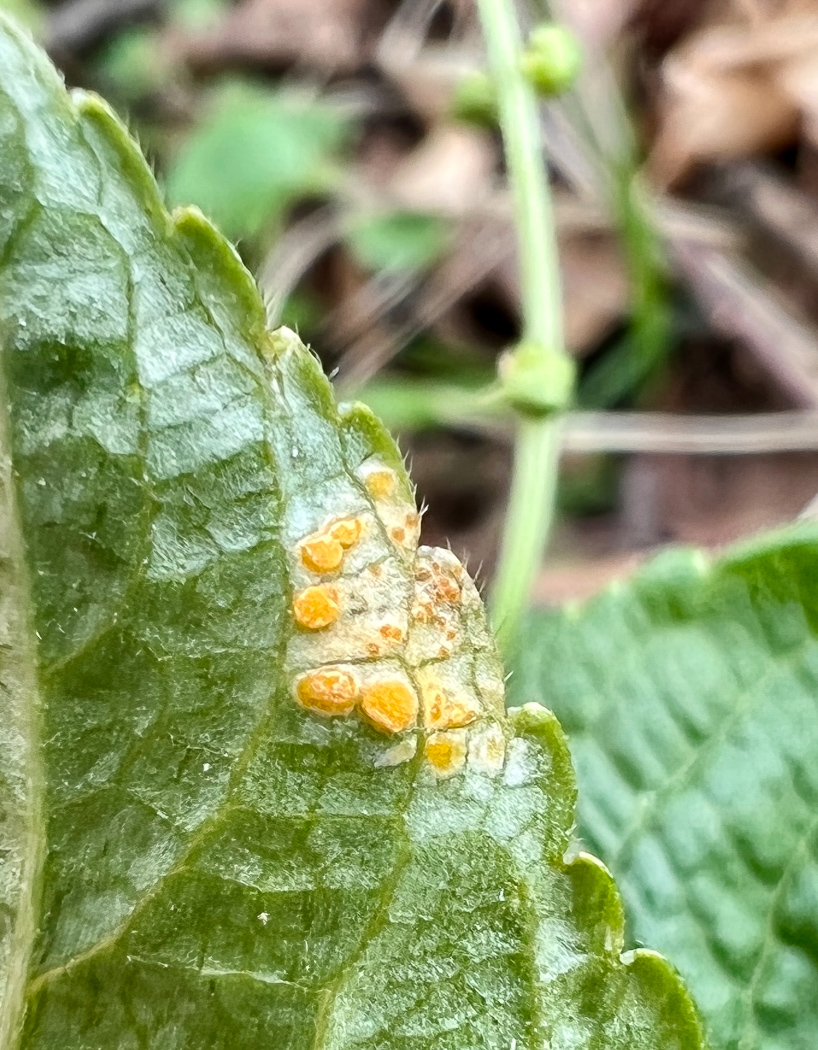
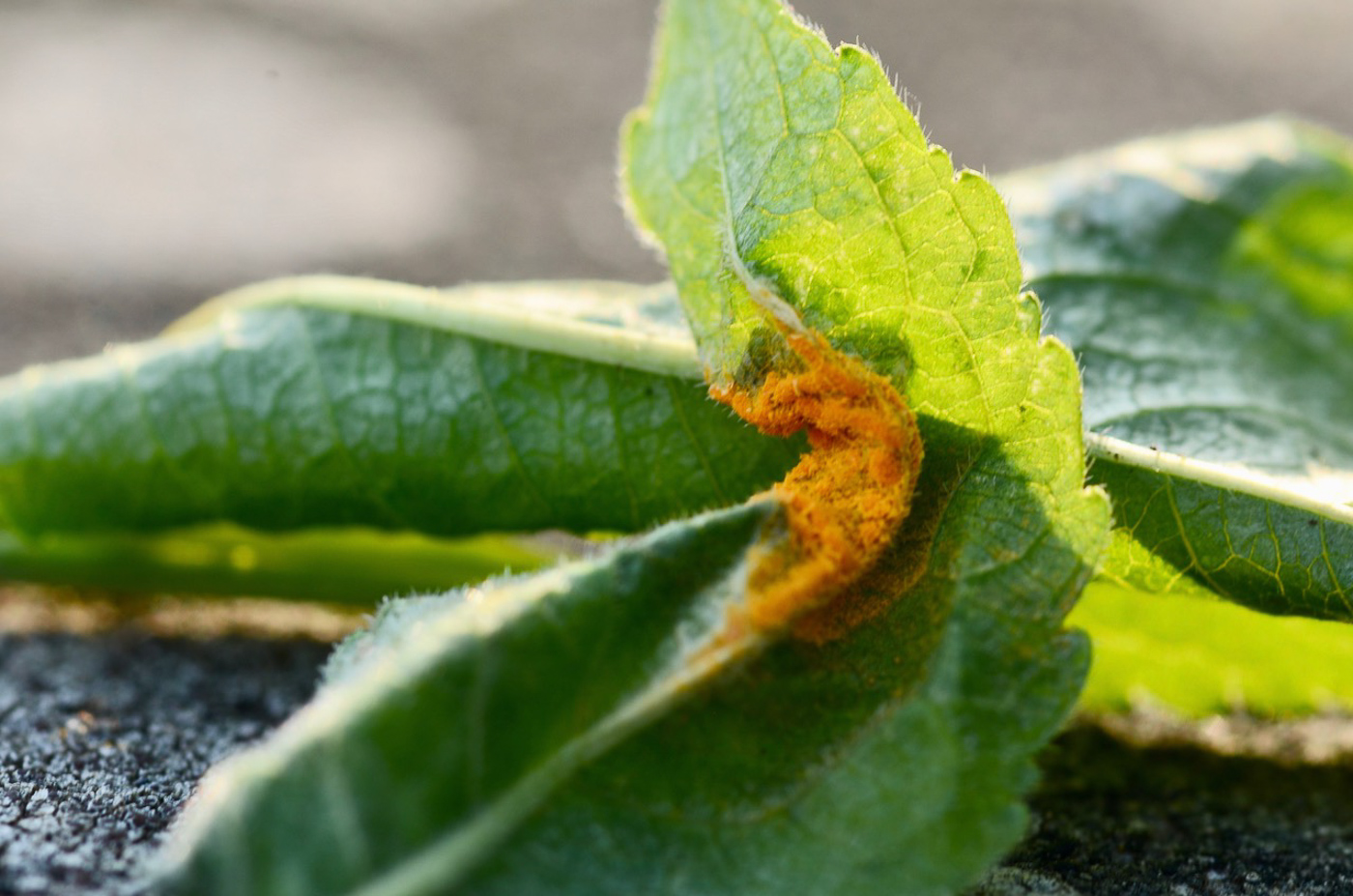
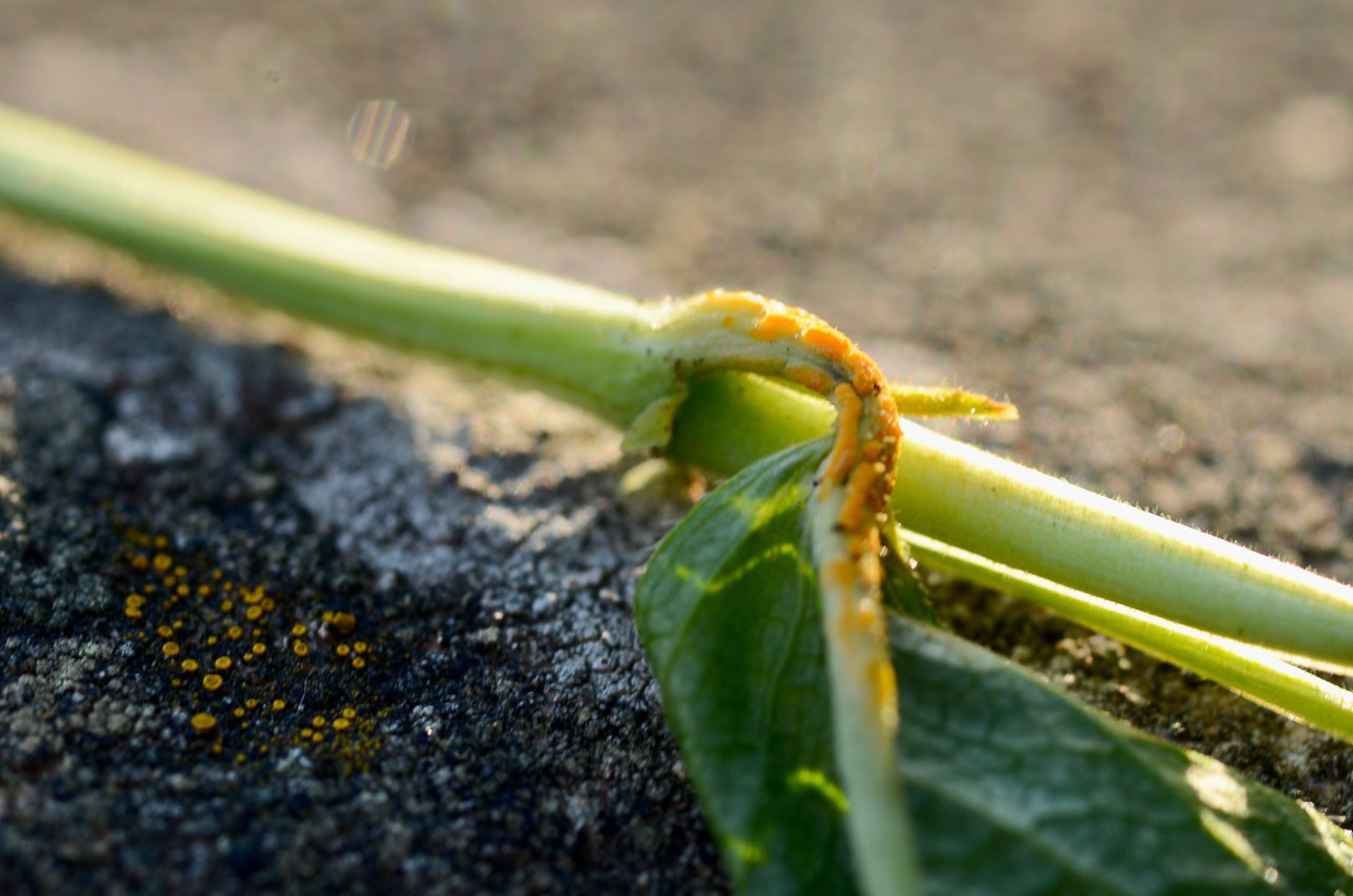 |
Melampsora rostrupii (Dog's Mercury Rust)
Apr 24, 2023. At Rushbeds Wood Penny found this common rust on many clumps of Dog's Mercury though it was not in evidence here when we visited a few weeks earlier. It affects both stem and leaves and eventually makes the plant look rather sick when it gets really established (photo 4) but plants seem to have no problem with reappearing the following year. Previously known as M. populnea, that name is now applied purely to the rust found on Poplar.
Apr 14, 2022. Neil Fletcher found this common rust fruiting in abundance on Dog's Mercury at Dancersend (photo 1) and reported to Penny that M. populnea (the name by which it was previously known) is now known to be a species complex occurring on various different hosts. The new name M. rostrupii now applies only to the rust fungus which is host specific to Dog's Mercury as here. Photos 2 and 3 were taken by Linda Seward two days later on our Walk at Rushbeds Wood. (See Penny's report on Rushbeds Wood April 16th for further photos of what we found there.)
|
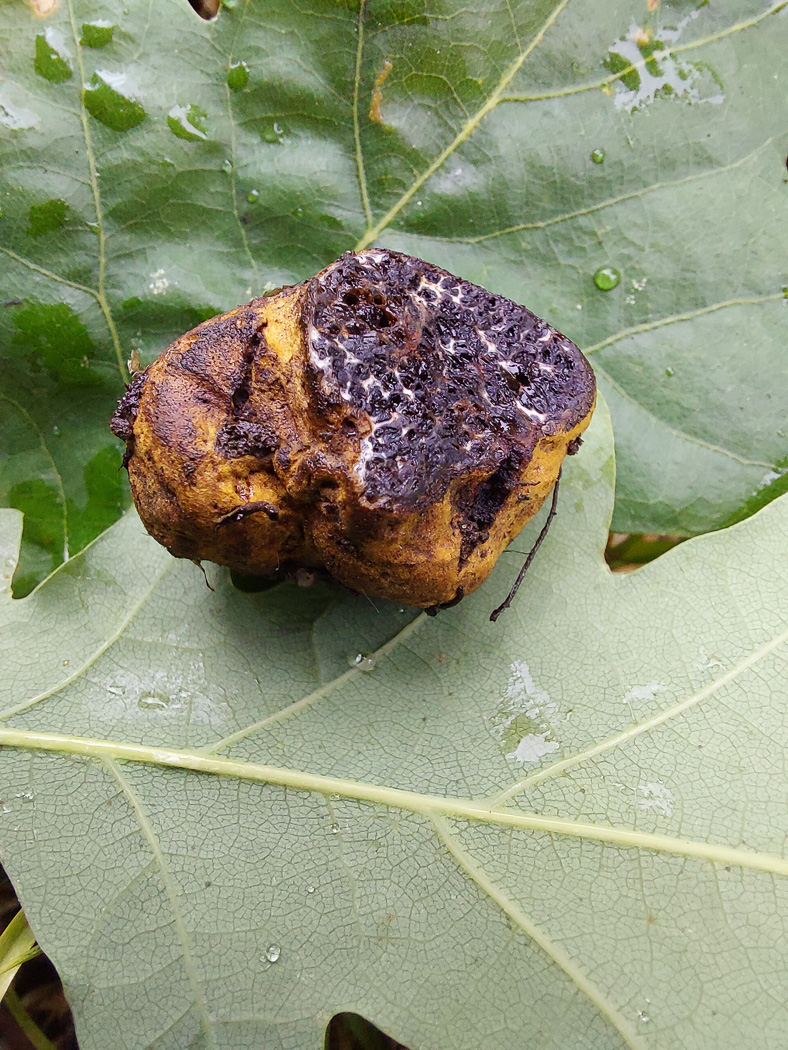 |
Melanogaster broomeanus (a truffle-like fungus with no common name) 
Jul 23, 2023. In Seer Green Jesper Launder spotted this unusual species 'just sitting in the bottom of a recently dug hole'. He suggests a squirrel must have been distracted and dropped it! The genus is, surprisingly, related to Paxillus, and its various species often have unpleasant smells and are not considered edible. There are around 50 national records in FRDBI including just one from Bucks (Beaconsfield in 1927 by the prestigious mycologist Carlton Rea!) but as that was almost 100 years ago Penny felt the yellow box was merited here!
|
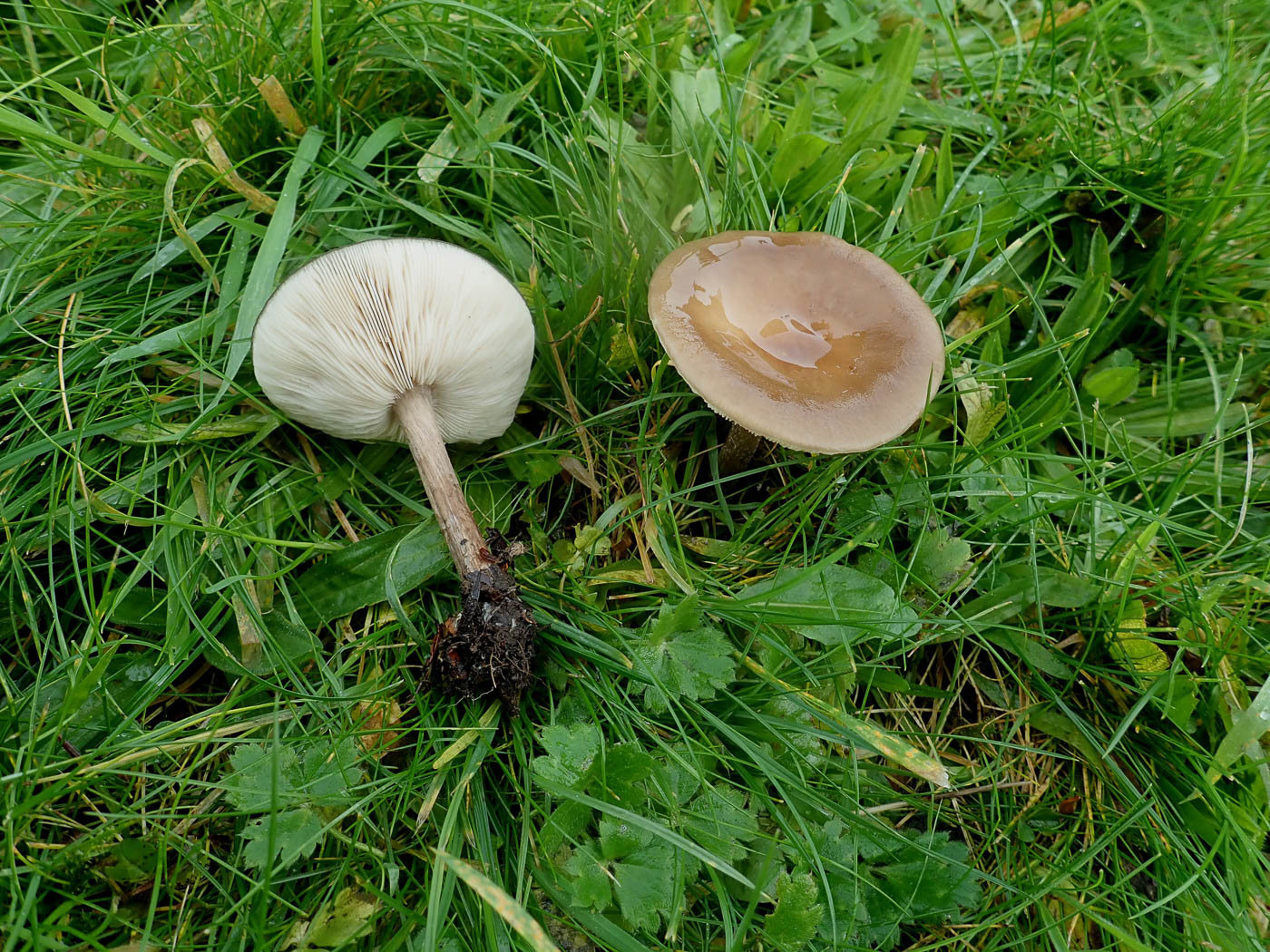
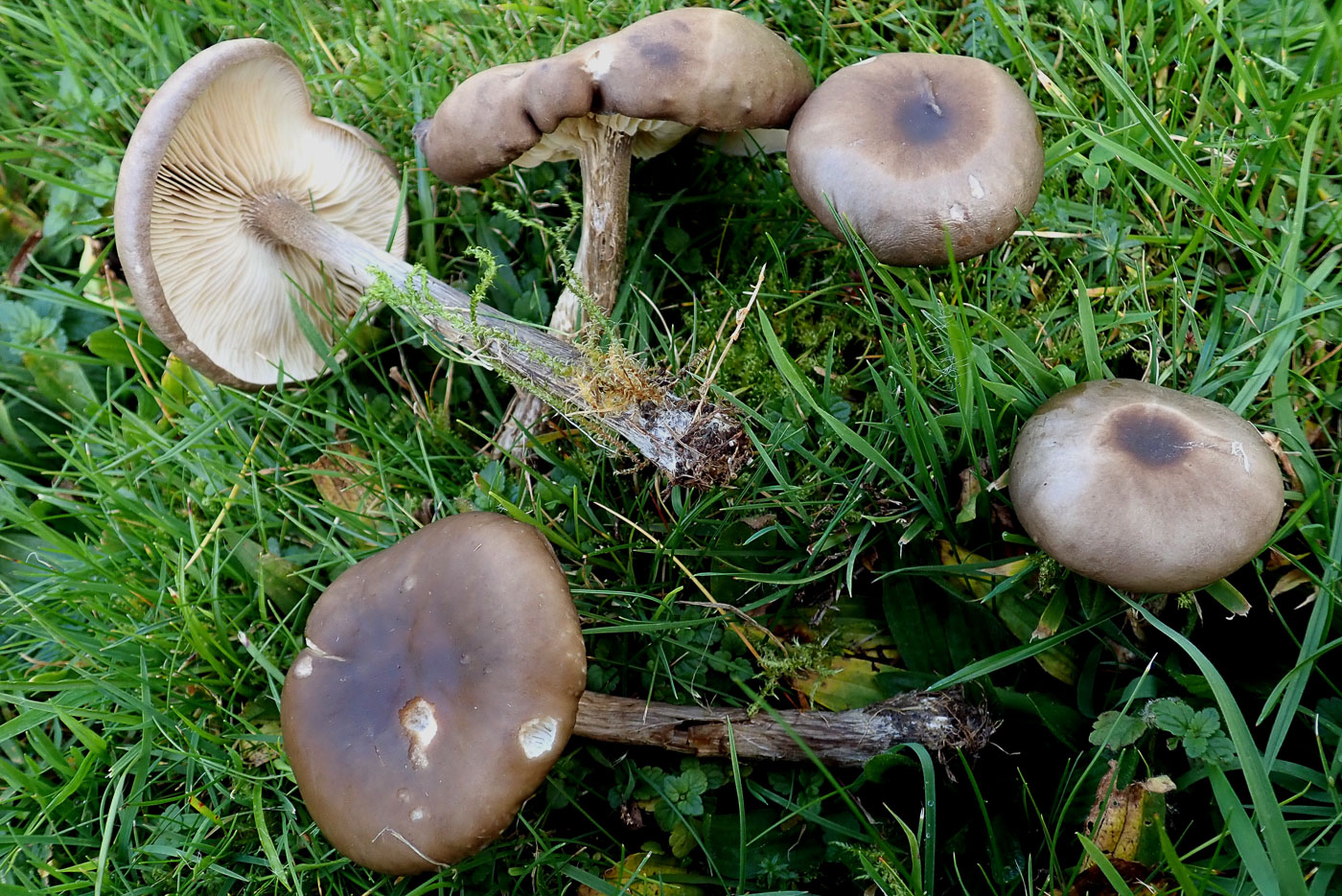
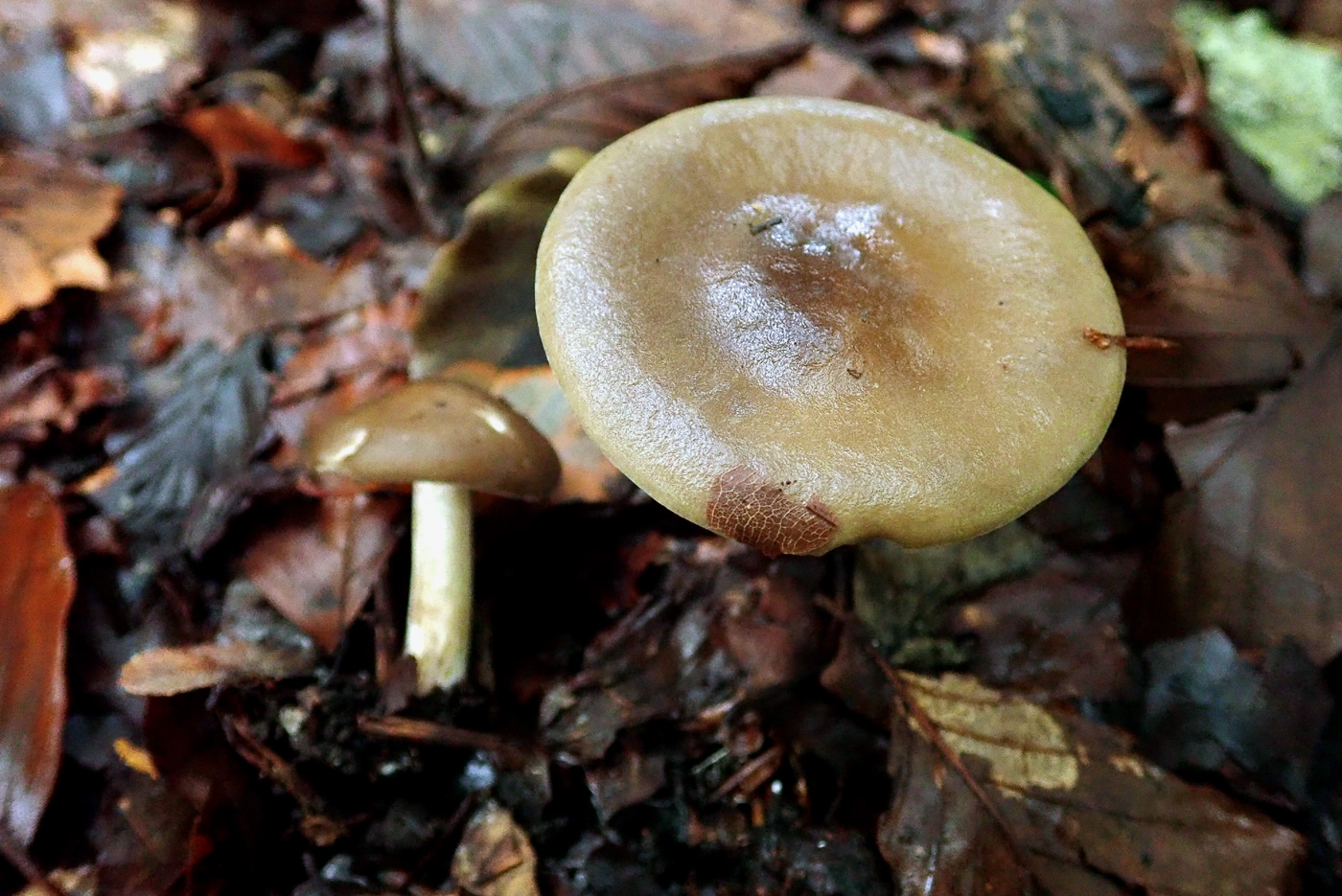
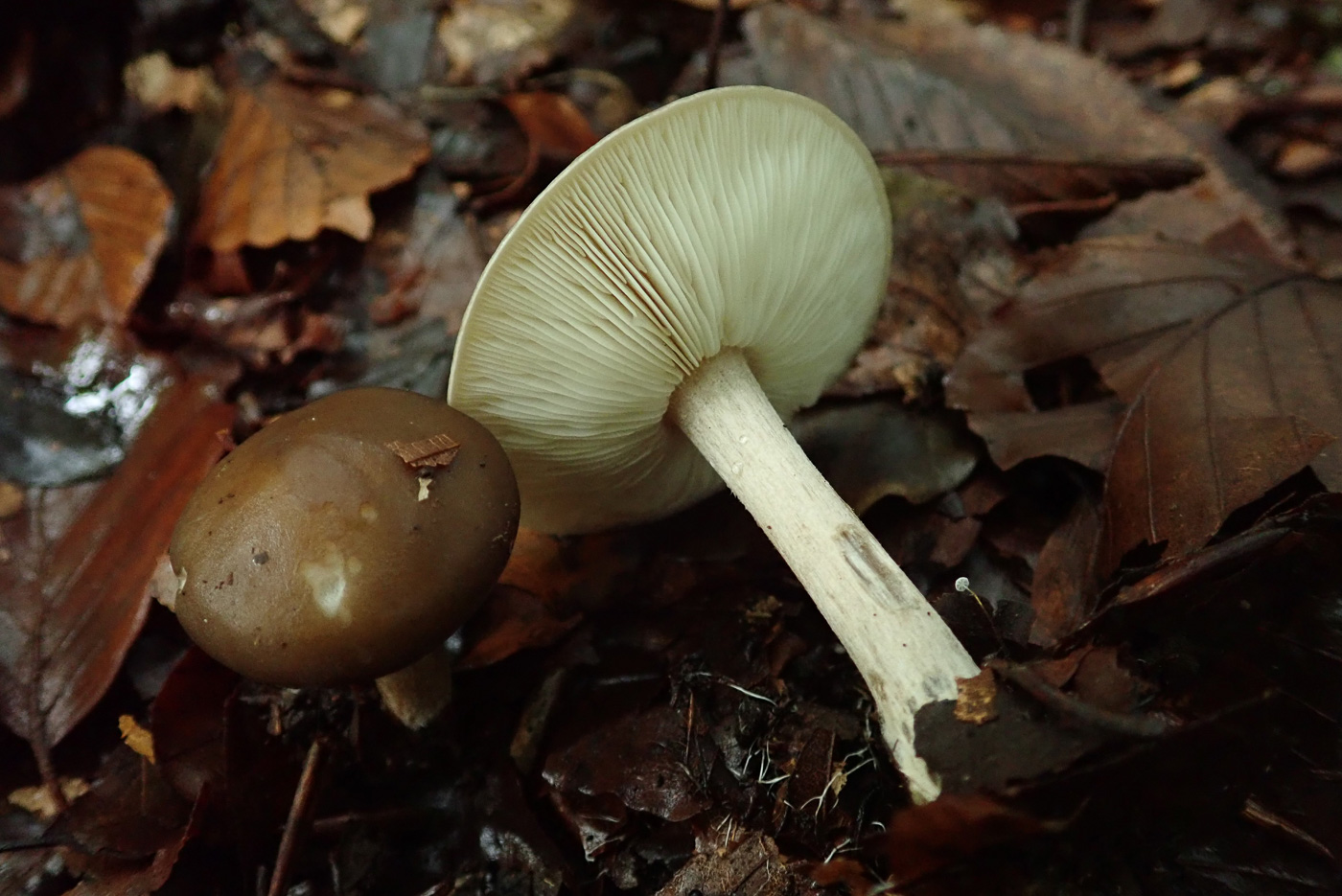
|
Melanoleuca polioleuca (Common Cavalier) 
Nov 1, 2023. In Bradenham Churchyard Penny found amongst many other species this mid-brown smooth capped mushrooms which often seem to confuse - they look pretty similar to several other species and lack much to distinguish them at first glance but tend to have a slightly raised rounded cap centre, the gills are off white and somewhat crowded and the stem is fibrous and often has dark flesh in the base (if you split it open). A sporeprint reveals strongly amyloid spores which are finely ornamented and the gill cells are certainly distinctive with tips like harpoons. The species favours grassy path edges in woodland glades, also grassland such as churchyards as here and is quite common.
Nov 2, 2020. There were plenty of specimens of this species in Bradenham Churchyard, found by Penny C. We do have a previous photo from woodland litter dated Oct 14, but these grassland specimens look rather different with darker brown caps (in fact Penny needed to check with a scope just to make absolutely sure of the identification) so are worth including here.
Oct 14, 2020. Penny Cullington found these two fruit bodies in Beech litter in Oct 14, 2020. Kings Wood. Another common brown capped mushroom of woodland litter, this species has been slow to appear this season and is one which takes time to recognise when you're first learning about fungi. The genus is not the most eye-catching with caps (sometimes up to 10 cms across or more) some shade of brown and smooth to shiny. They usually have a broad swelling in the centre and the gills are off white and very crowded (both features seen here). This particular species is very common and if you split the stem it has dark flesh at the base (see photo 3). It's a genus which often needs work with a scope to determine to species.
|
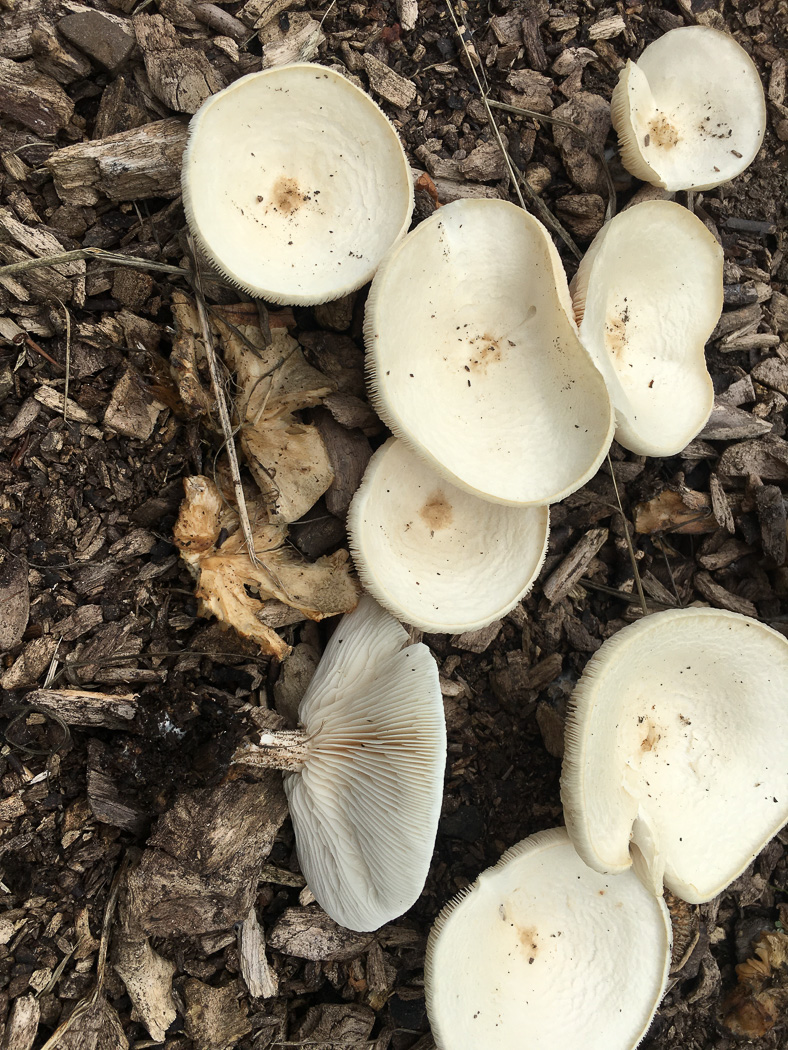
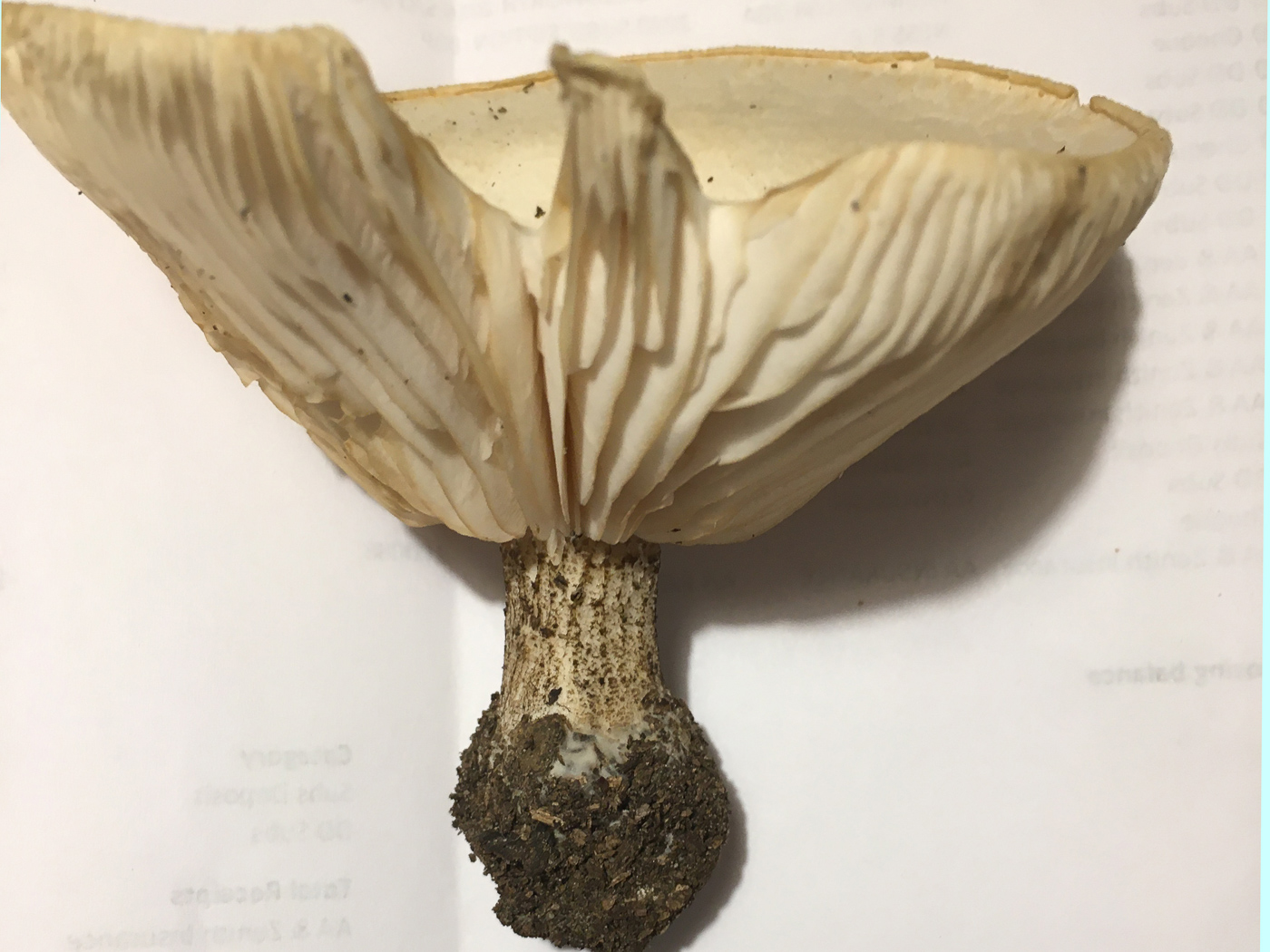 |
Melanoleuca verrucipes (Warty Cavalier)
Jul 11, 2021. On a woodchip pile in Brill Common (composed of diseased Horse Chestnut) Joanna Dodsworth noticed this impressive clump of unfamiliar white mushrooms, up to 12 cm across or more. She brought a specimen to share with attendees at our AGM that afternoon where Penny was able to name it having become familiar with the species from a large woodchip pile in Burnham Beeches where she recorded it nearly every year from 2003-2009, varying between the months of May to October. It has not been found in the county since then so this was a nice find. The distinctive features to note are the white cap which becomes finely scaly with age, the crowded slightly cream gills, a faint sweet smell of aniseed and most notably a short white stem pocked with black warts (similar to those found on the genus Leccinum).
|
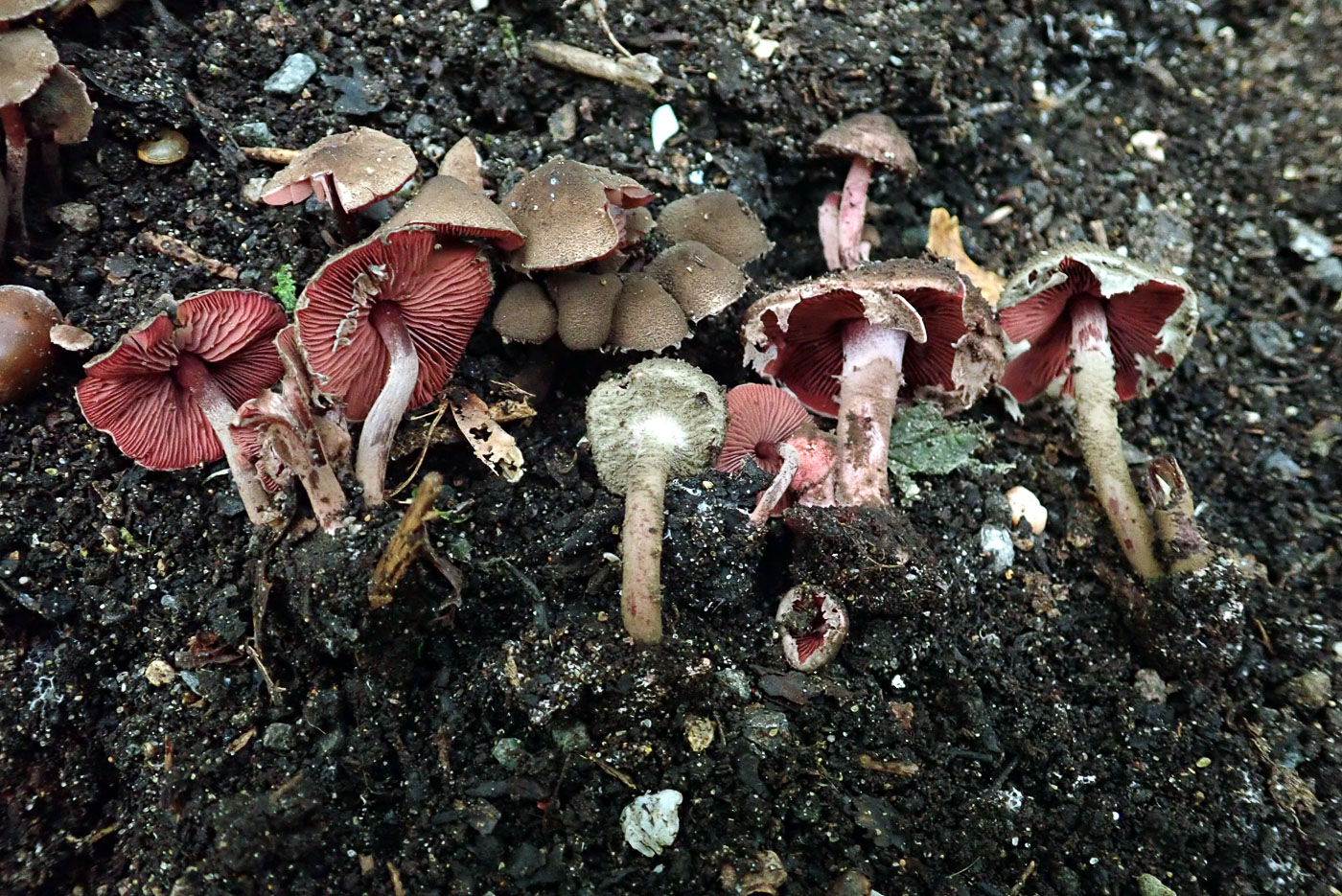 |
Melanophyllum haematospermum (Redspored Dapperling)
Oct 19, 2020. This distinctive species has the privilege of being our 300th of season on this webpage!! It was found by Penny C. amongst stinging nettles on a well rotted woodchip pile in Burnham Beeches. The rather dull dark cap is nothing to write home about, but turn one over and you're in for a surprise! This is the only mushroom to have red spores and such crowded red gills. It is loosely related to the genus Lepiota (hence the name Dapperling); note also the torn membranous covering - still in place on the youngest specimen at the front - which adheres to the cap margin as the fruit body expands. Not that common a species, but not rare though easily overlooked unless you pick one!
|
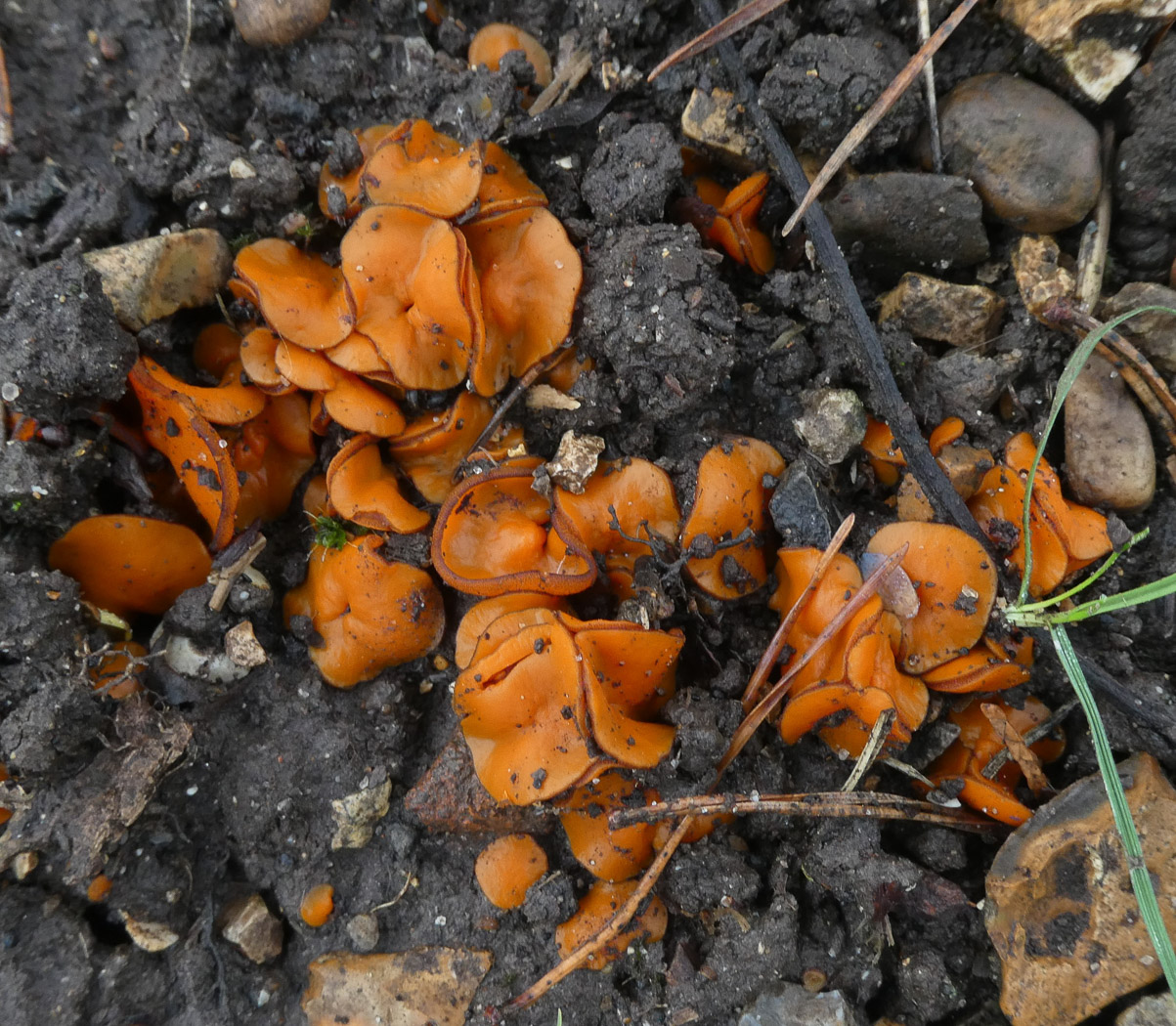
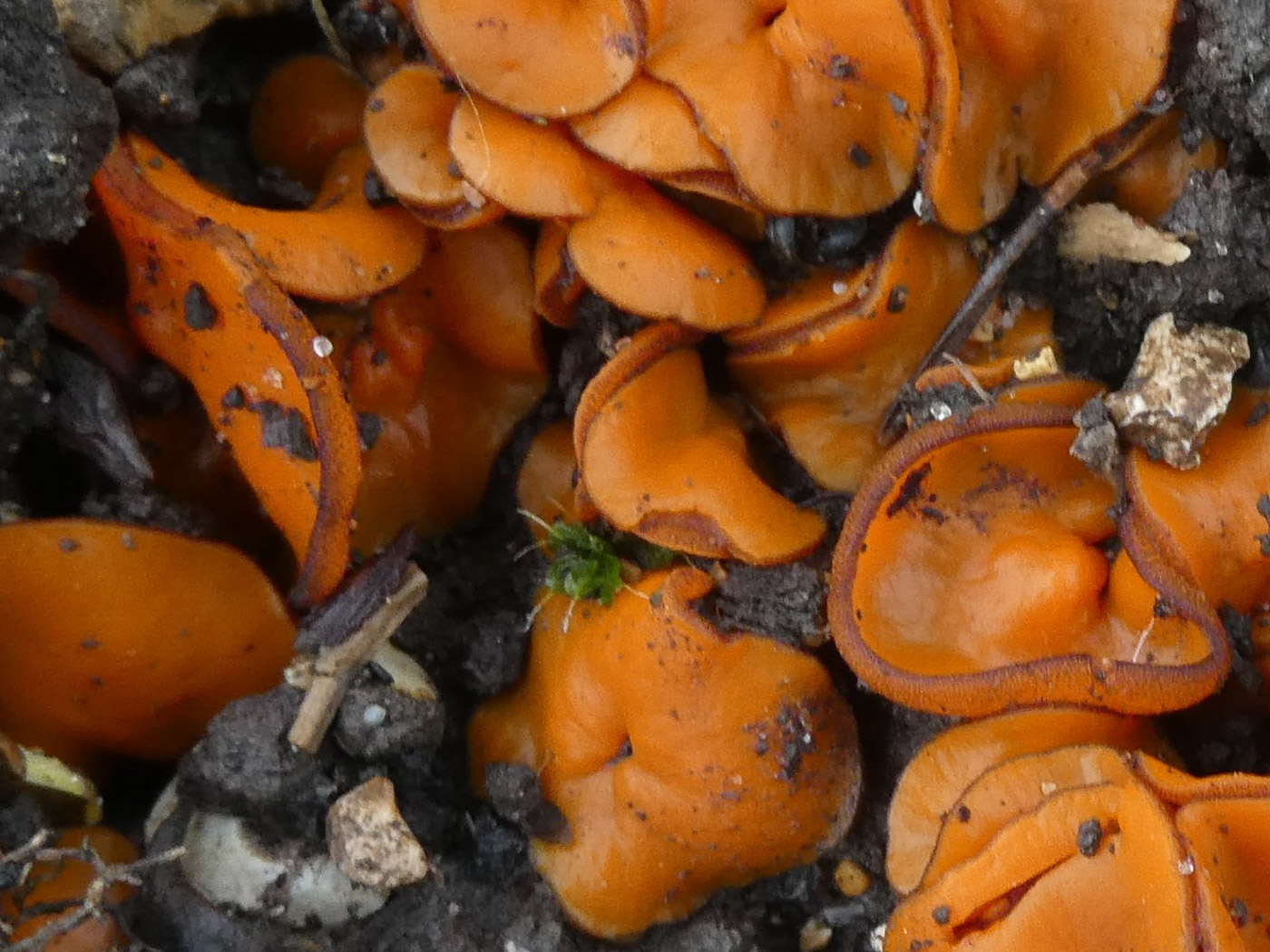 |
Melastiza cornubiensis (Orange Cup) 
Jan 4, 2024. In soil in a roadside grassy verge in Chalfont St. Peter, Jim Wills found this nice cluster of small orange cups. He noticed an initial similarity to various other genera including Scutellinia, but a scope revealed very different spores and marginal hairs much shorter than would occur in that genus. Possibly better known by its previous name, M. chateri, it favours sandy soil, also burnt ground, and is considered relatively common though we have just 8 previous county records, several of these from Wotton Park Estate. This is a new entry for Finds.
|
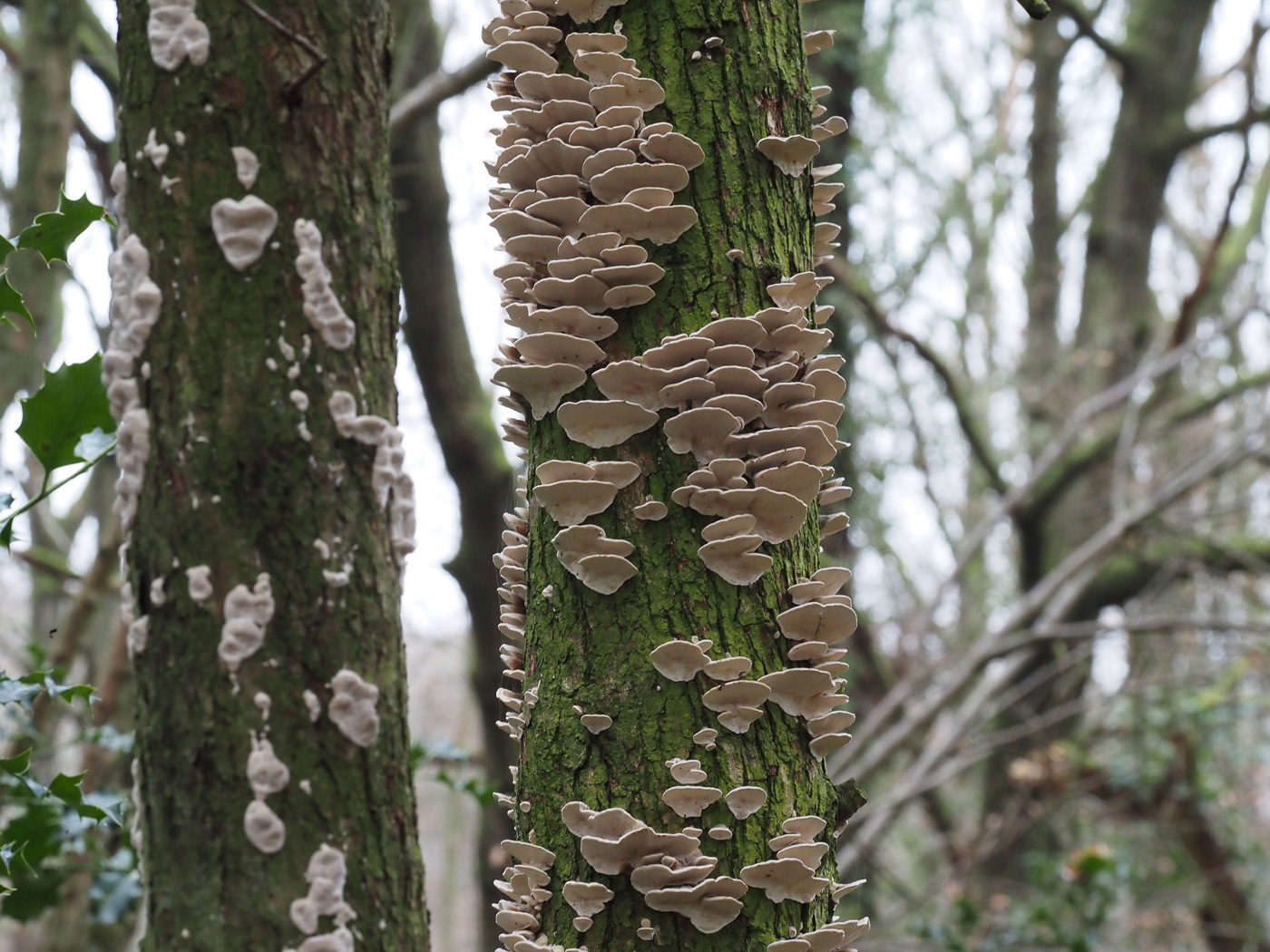
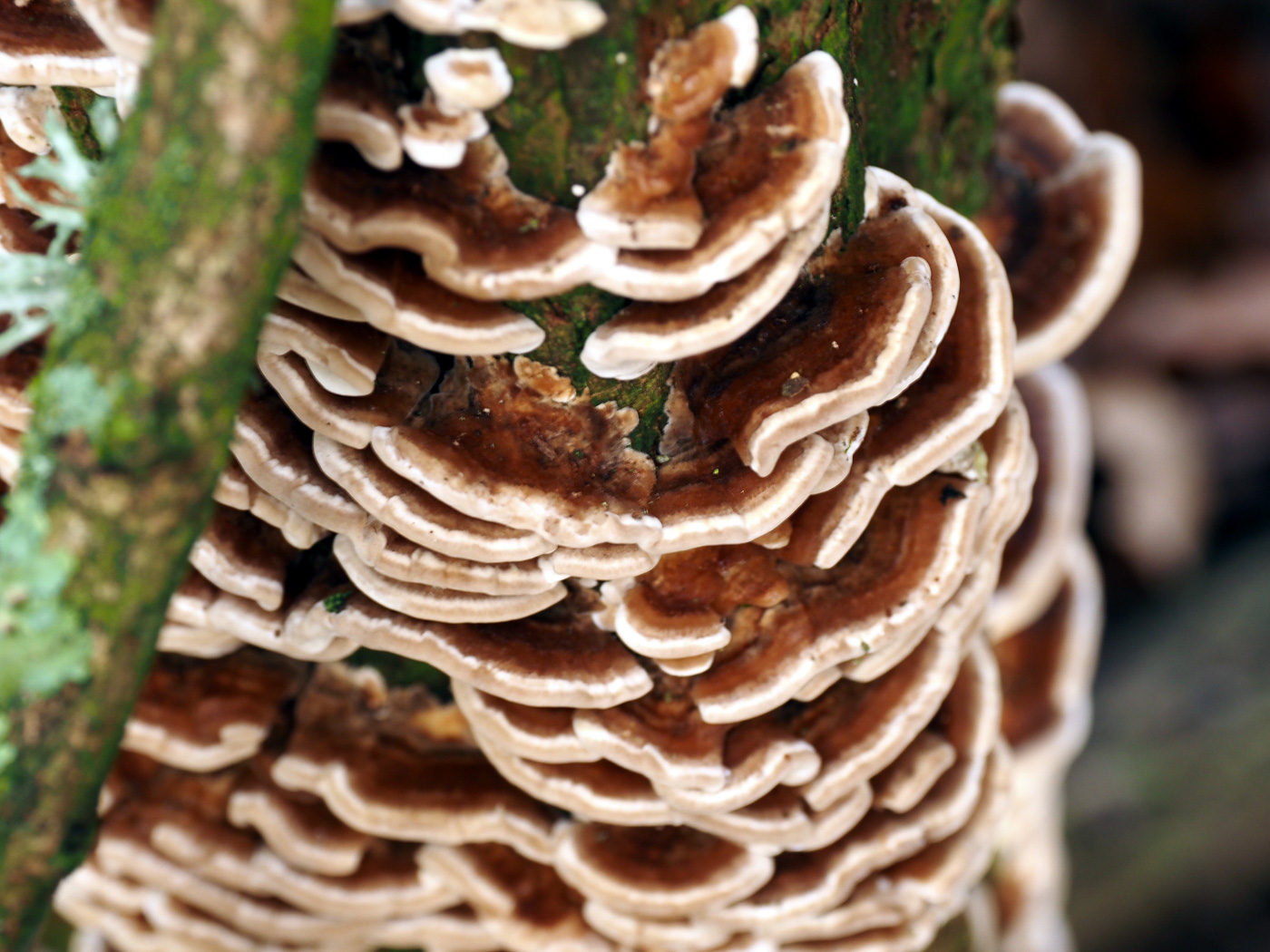
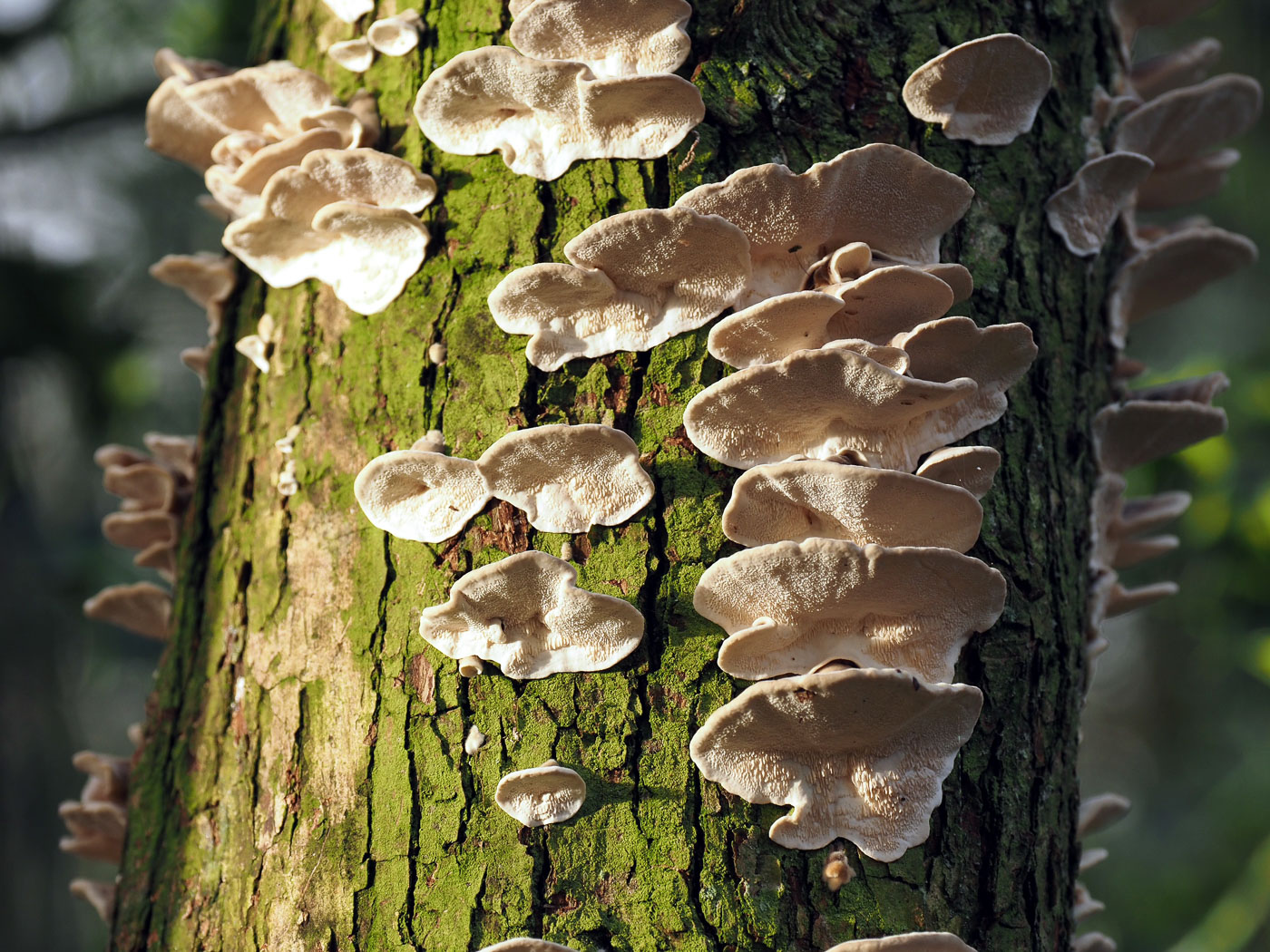 |
Mensularia radiata (Alder Bracket)
Jan 8, 2021. Claire Williams found several deciduous trunks liberally covered in these brackets in Downley Common Woods. Recently moved to its present genus from the better known Inonotus, this bracket is deceptively named and is just as likely to occur on other deciduous trees as on Alder. The trees here could not be identified but if anyone recognises the bark do please let Penny know.
|
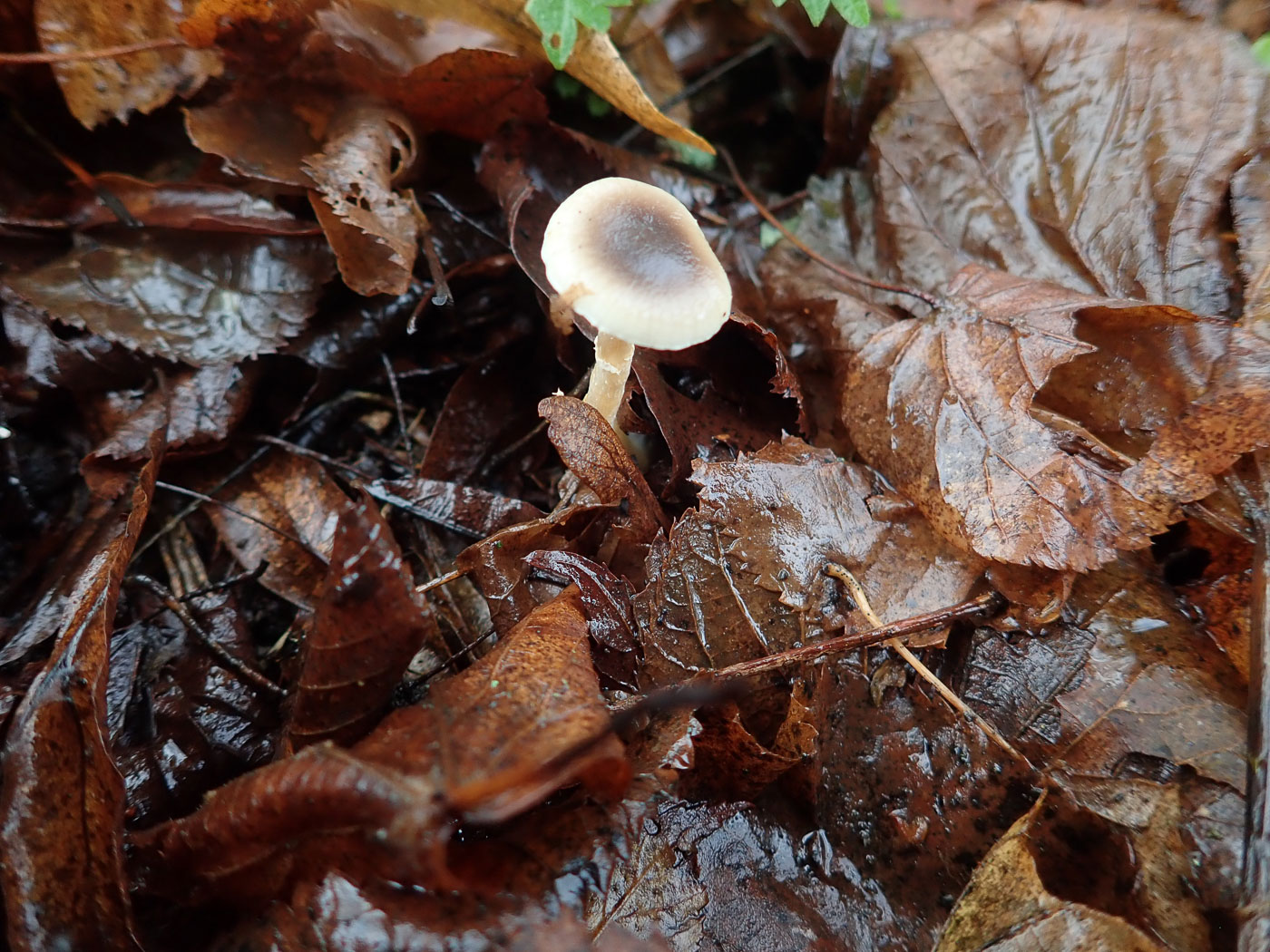
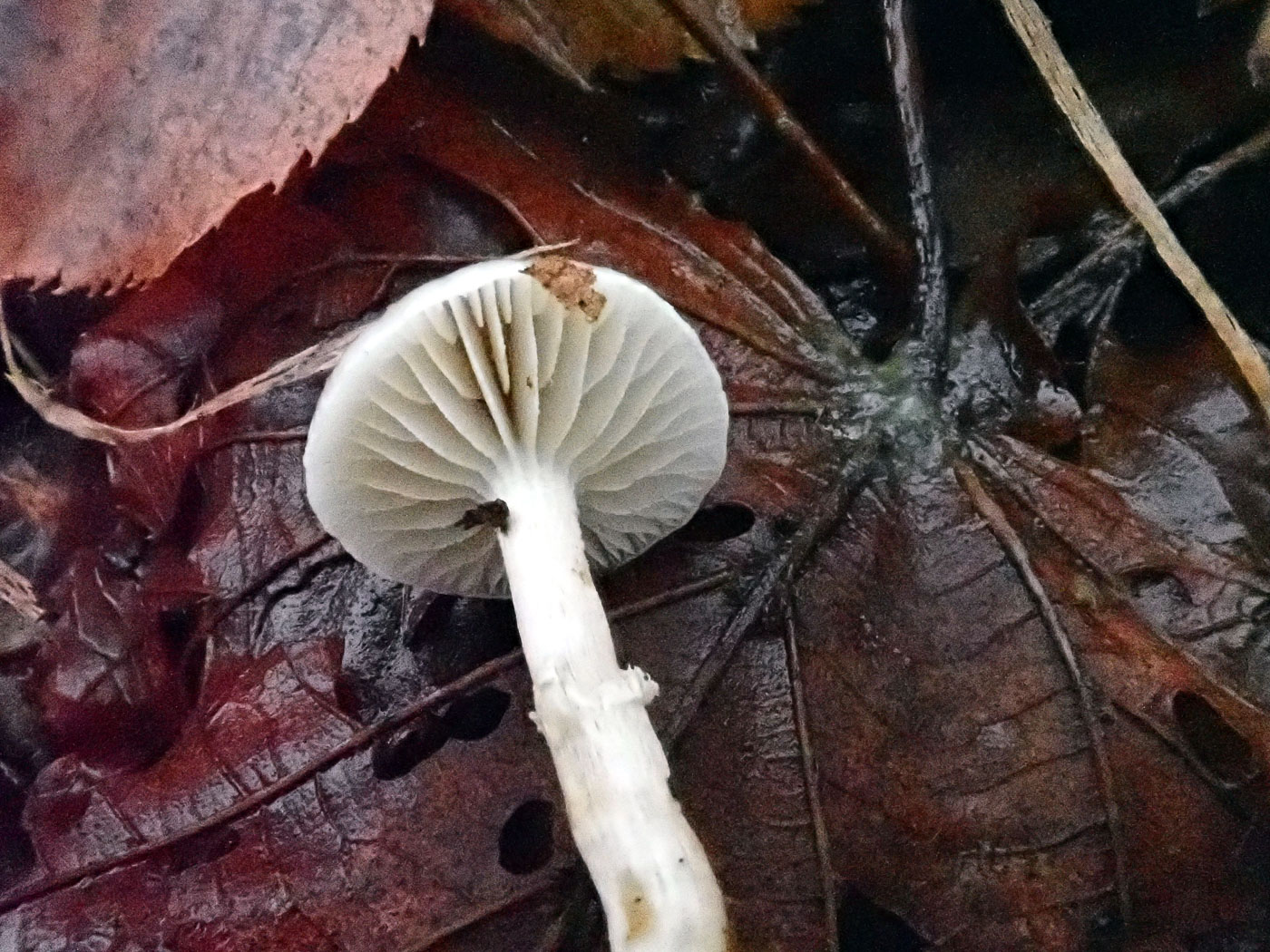 |
Meottomyces dissimulans (a rare agaric with no common name) 
Nov 27, 2022. Amongst thick leaf litter under Lime at Turville Heath Penny noticed this small brown cap, about 1.5 cm across. At the time she was stuck for a genus and it remained a complete mystery till a sporeprint the following morning revealed quite dark brown spores despite the pale gills. She'd already taken note of the slimy cap surface, clearly much darker in the centre, the signs of ring zone on the dry stem, also the presence of rather varied subcapitate to almost gnarled gill cells and small smooth ellipsoid spores. So flicking through Kibby vol 3 (how one does when clutching at straws) she came across M. dissimulans which instantly rang a bell: this was an unusual winter fruiting species featured in a Field Mycology article (by Nick Legon - vol 13 (1)) and subsequently found new to the county by Derek in December 2014. All the features Penny'd found fitted like a glove - very satisfactory! So this is our second county record and a new entry for Finds. It's interesting to observe that on the same day she should find this winter species almost alongside Amanita muscaria - see the entry below.
|
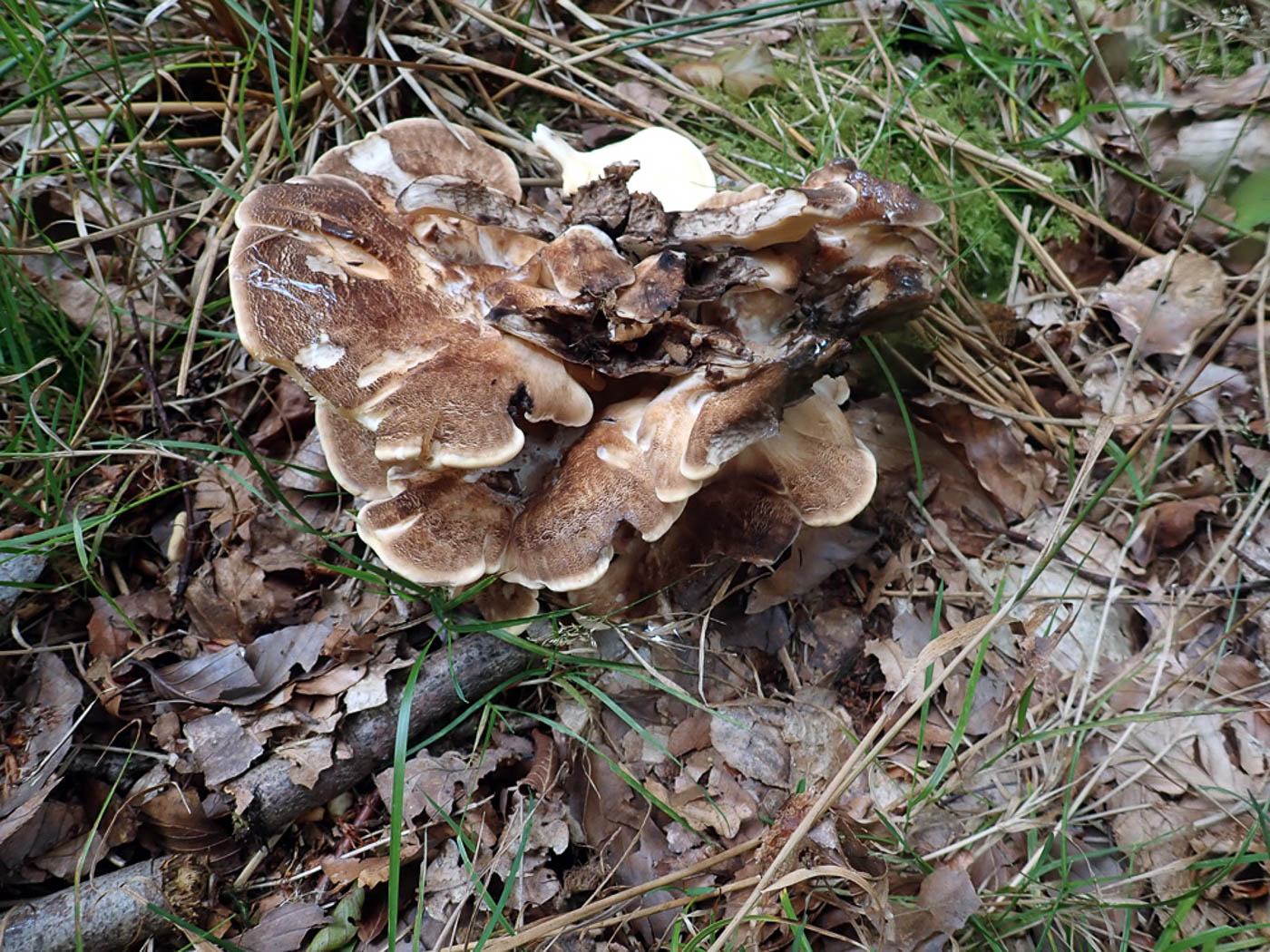
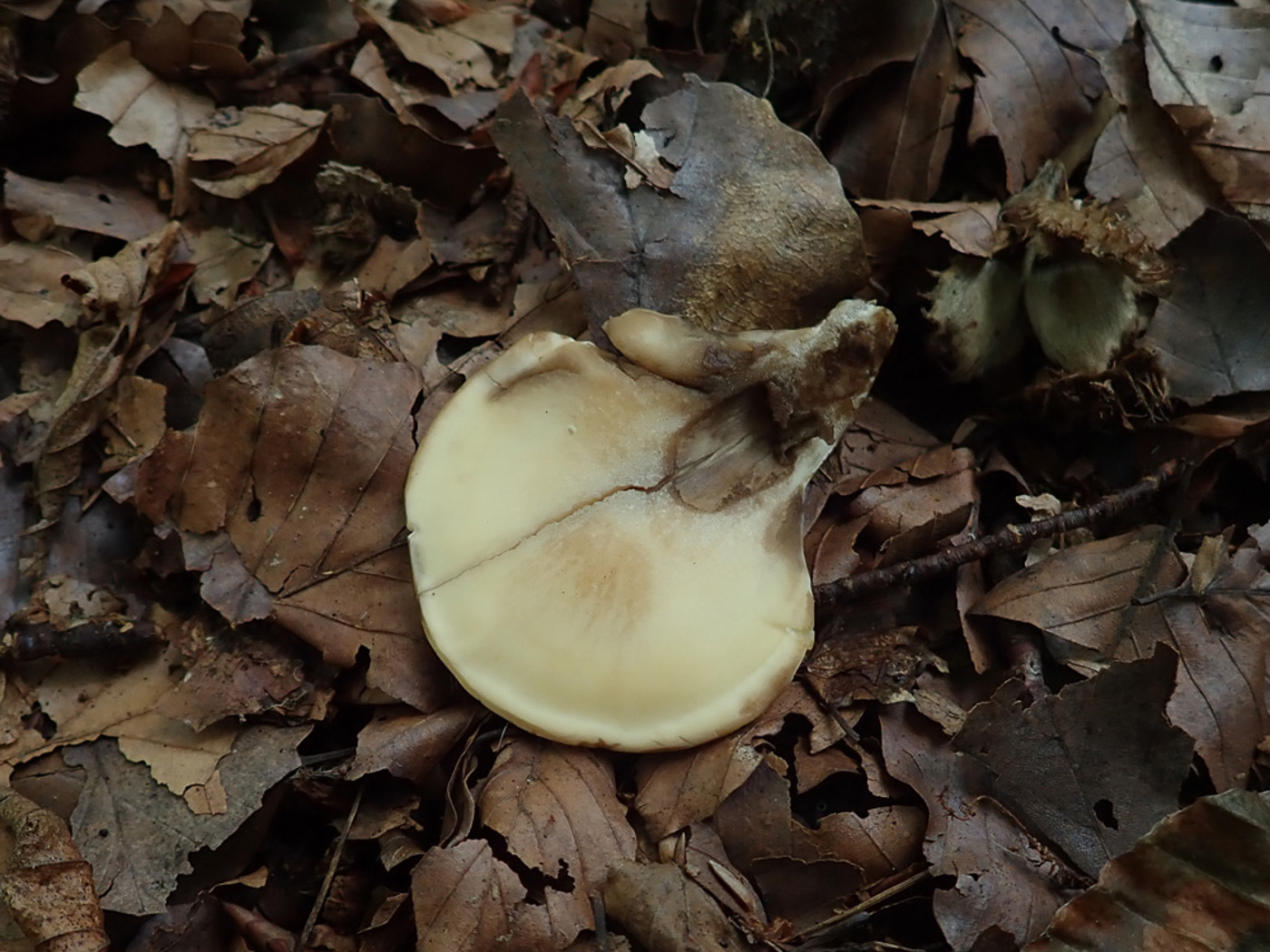
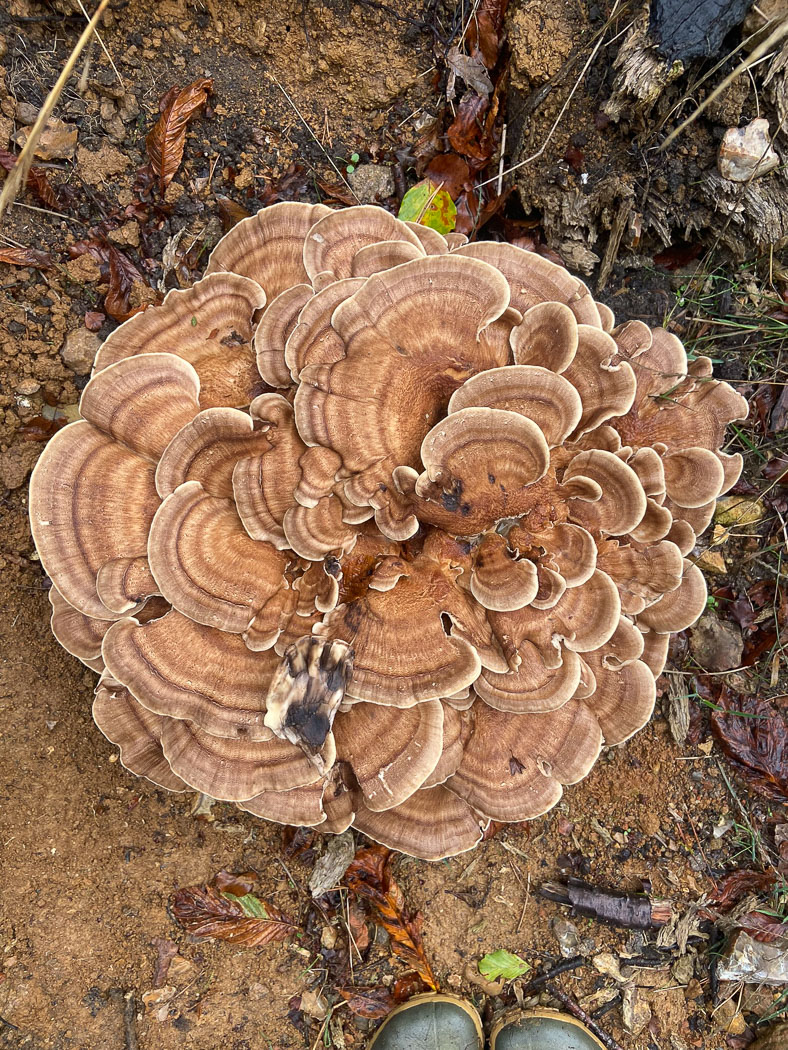
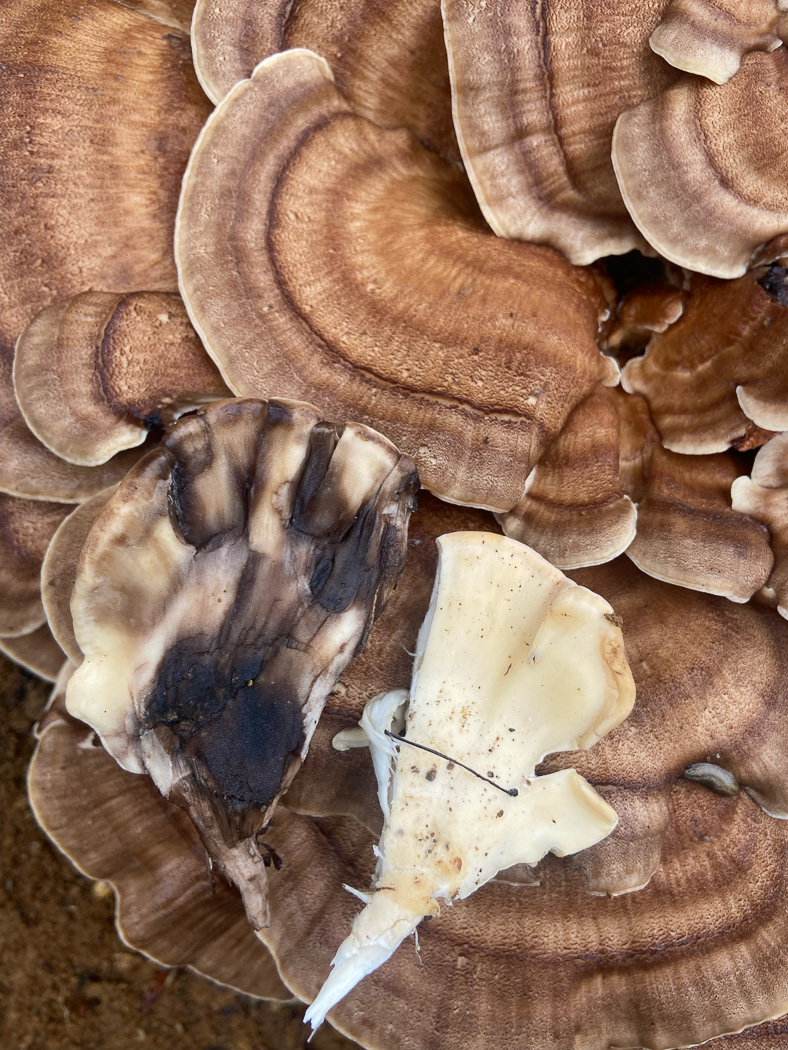
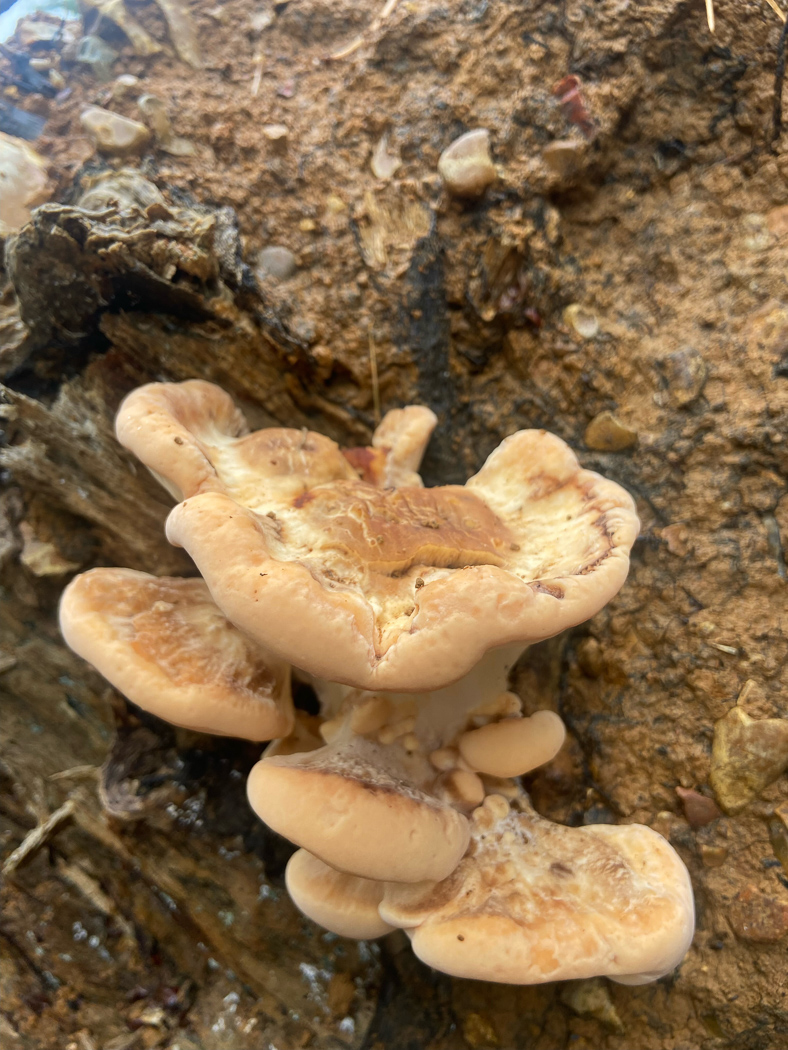
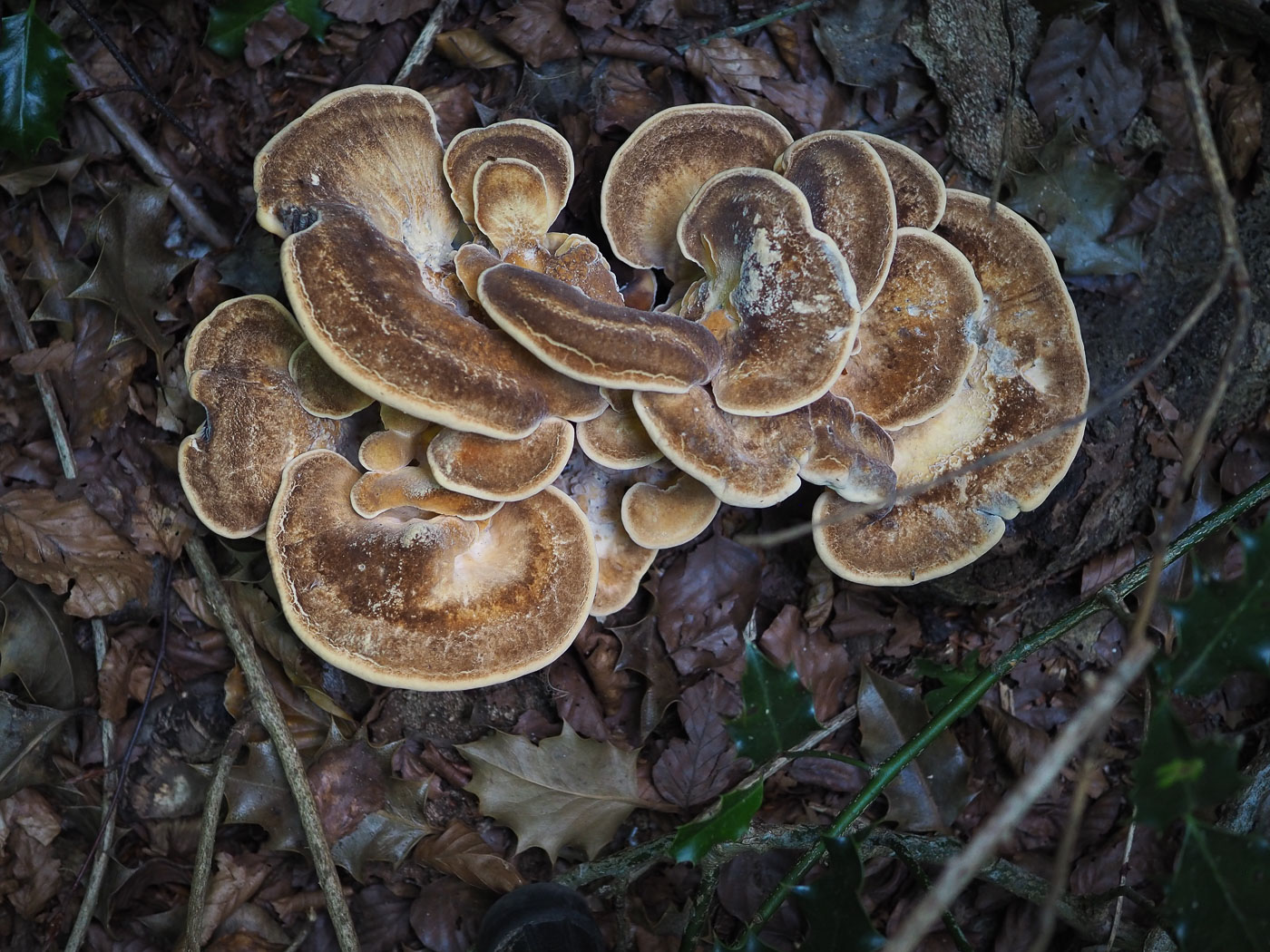
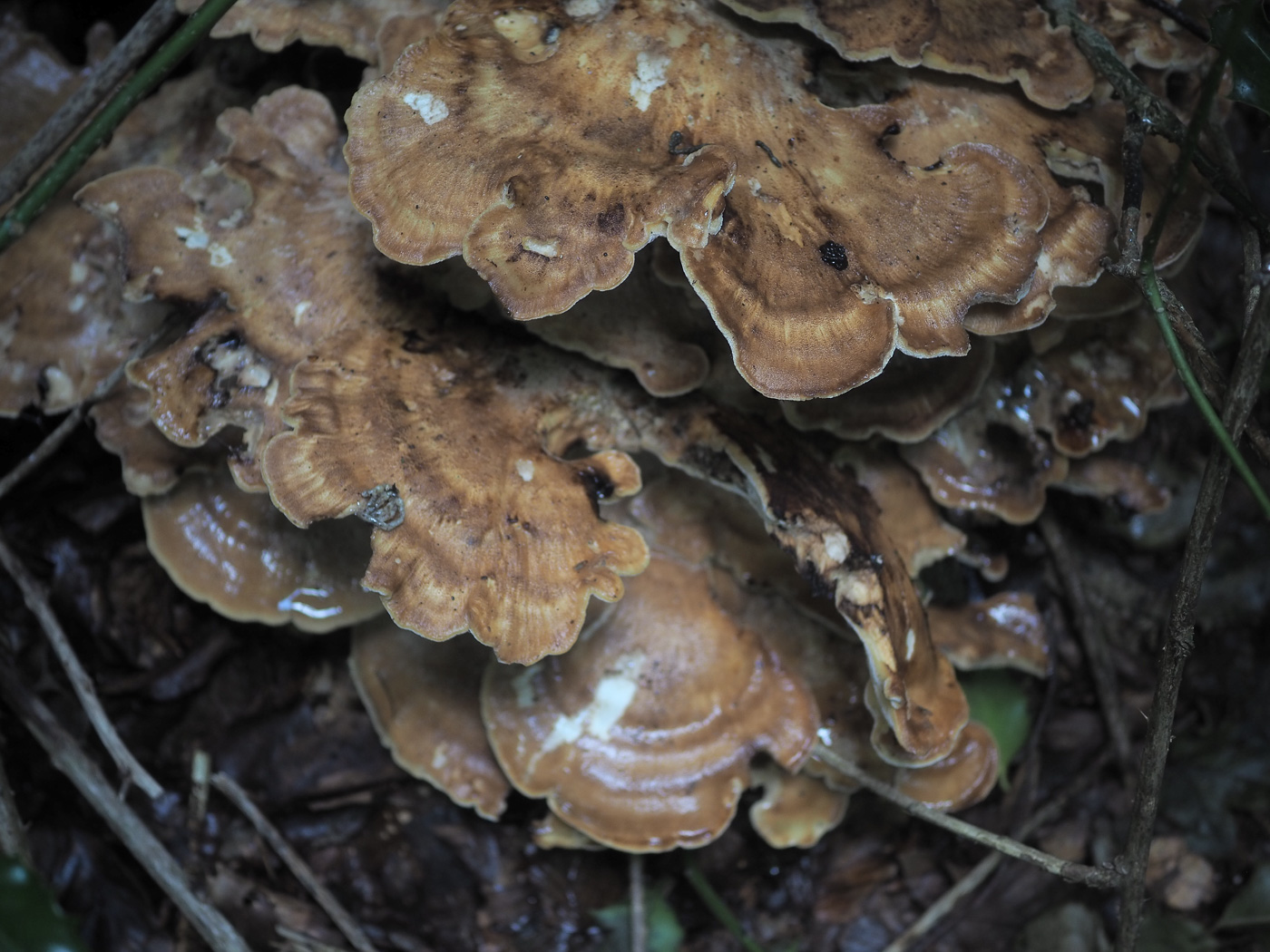
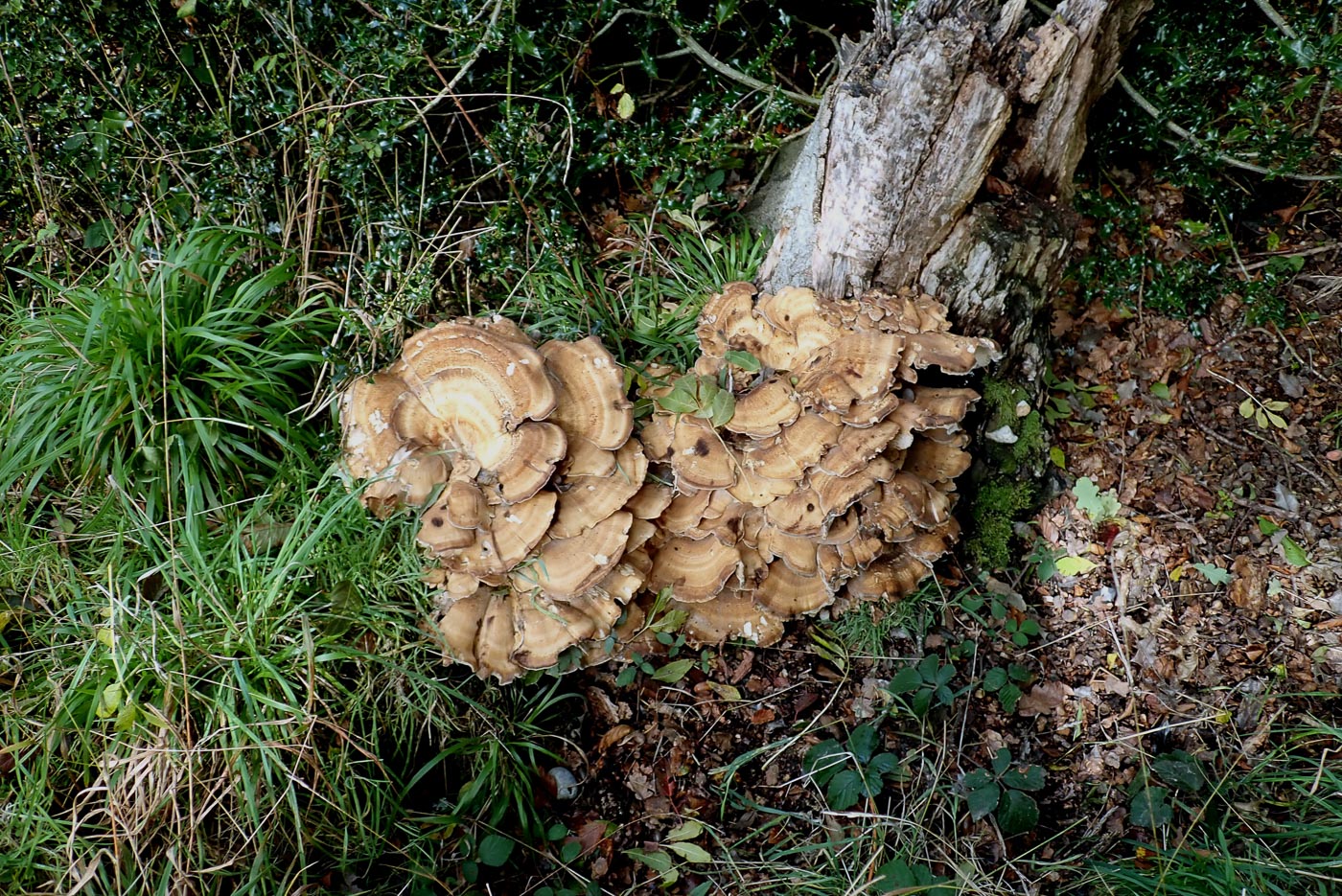
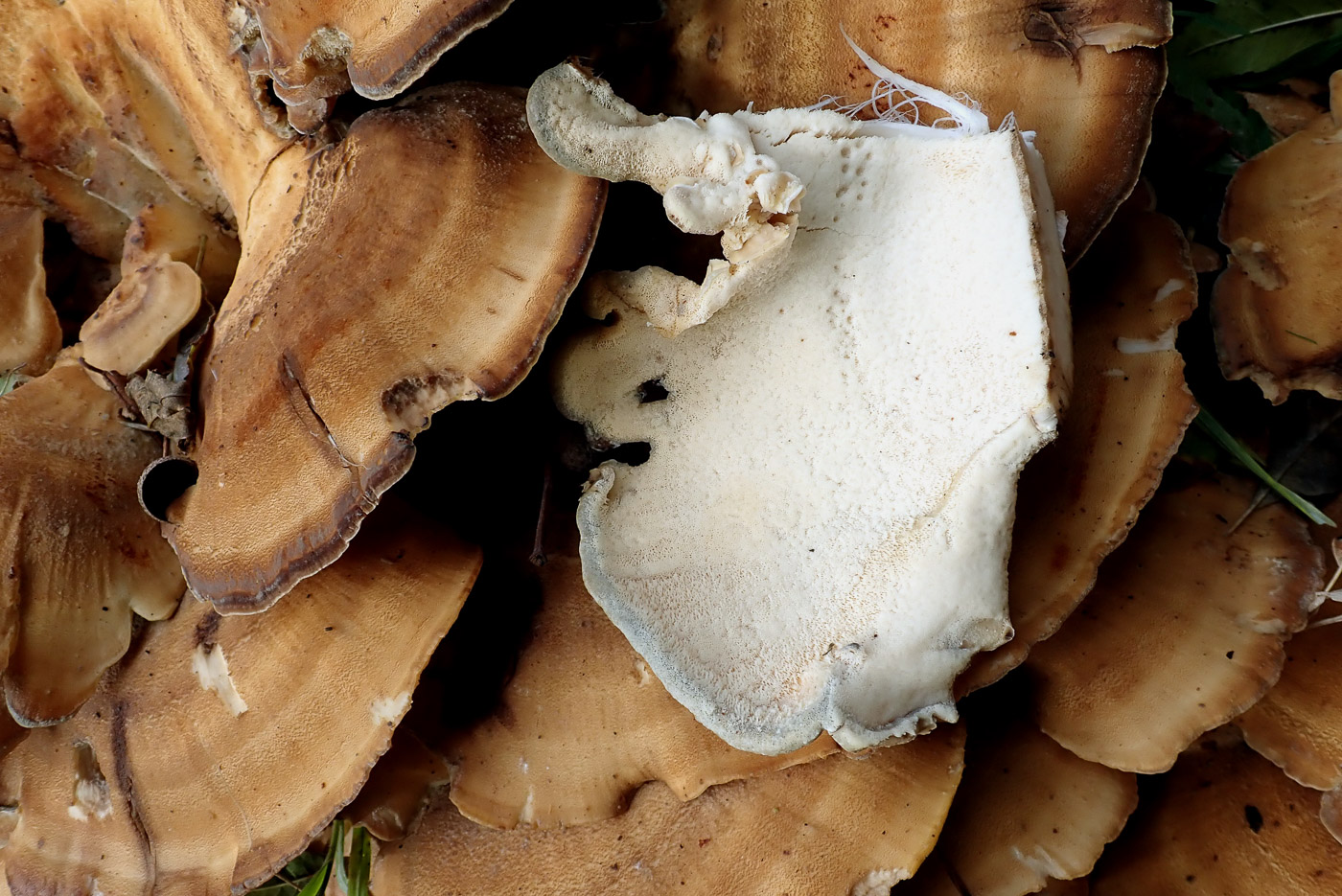
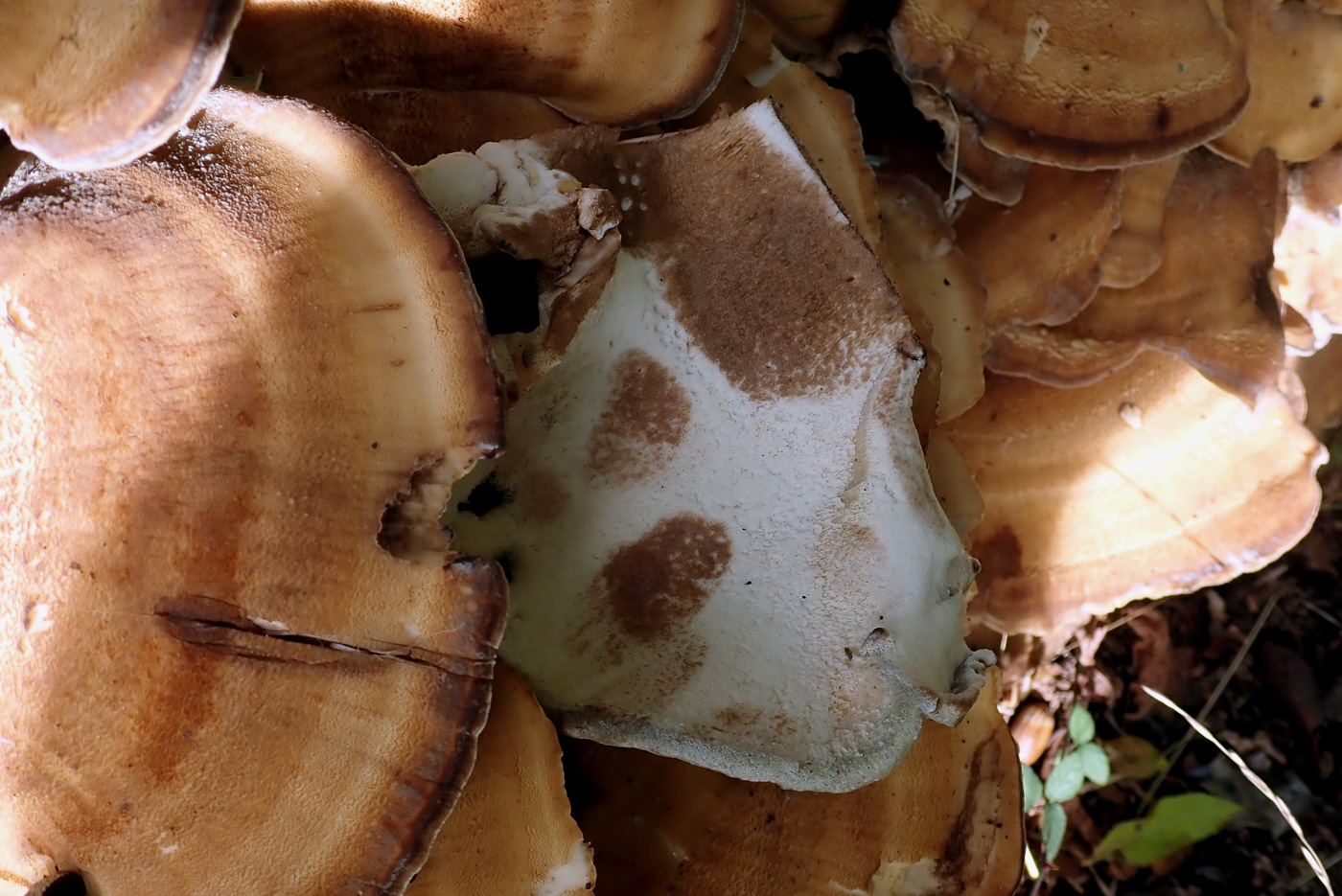
|
Meripilus giganteus (Giant Polypore)
Aug 21, 2023. In Bradenham Woods near an old Beech stump Penny found this quite common species just starting to expand - here only about a modest foot across but sometimes found in truly massive tiered clumps encircling Beech when its size makes it unmistakable. When small and young, however, ID is not so obvious but a clue is the finely pored undersurface and the blackening flesh where damaged though this takes time. Photo 2 shows a lobe broken off then kept for ten minutes when it was already beginning to blacken.
Sep 7, 2022. These super photos were sent in by Sarah Ebdon from Lacey Green at a spot where this species regularly fruits. Though its Beech host has now fallen the fungus is as yet unaffected and clearly fruiting profusely. Note the close-up shot showing a fresh sample torn off and upturned, and next to it an older sample which a few hours later had turned blackish - this being a useful diagnostic character: once enormous there's little doubt over its identity but when just starting to appear, as in photo 3, the species can look like several other brackets.
Aug 9, 2022. This lovely specimen, probably adjacent to a Beech trunk - it's most common host, was found by John Catterson in Tinkers Wood. When fruiting well this common species is indeed a giant - often completely surrounding the trunk with a spread of 6ft or more. When this size there is little difficulty over its identity, but if in doubt if you break a piece off and keep it for a bit the flesh where injured turns black.
Aug 25, 2021. In Downley Common Wood John Catterson saw this huge bracketlike fungus at the base of a Beech tree. This is quite a common species and is well named; it favours Beech and can sometimes be found with its tiers completely surrounding a living trunk covering several square feet - quite a site! When young and far smaller its identity can be much less obvious, but break off a piece and keep it for 15 minutes or so when the damaged underside will start to blacken - a sure sign to confirm it.
Oct 7, 2020. Surely the largest fungal species in the country, this spread of tiers (more than 2 ft across so relatively small for the species) was at the base of an old Beech stump in Benhams, a private garden near Fawley, found by Penny Cullington. Note the pale cream fine pores of the underside visible in photo 2 which after an hour or so had started to turn dirty brown (see photo 3) and would eventually turn black. This colour change to the bruised pores is diagnostic of the species though there can be little doubt over identity once it has grown to this sort of size. However, when young and small the blackening can be useful to separate it from Grifola frondosa (see photo dated Sept 26) for which it could be mistaken. It is common and often on or around Beech.
|
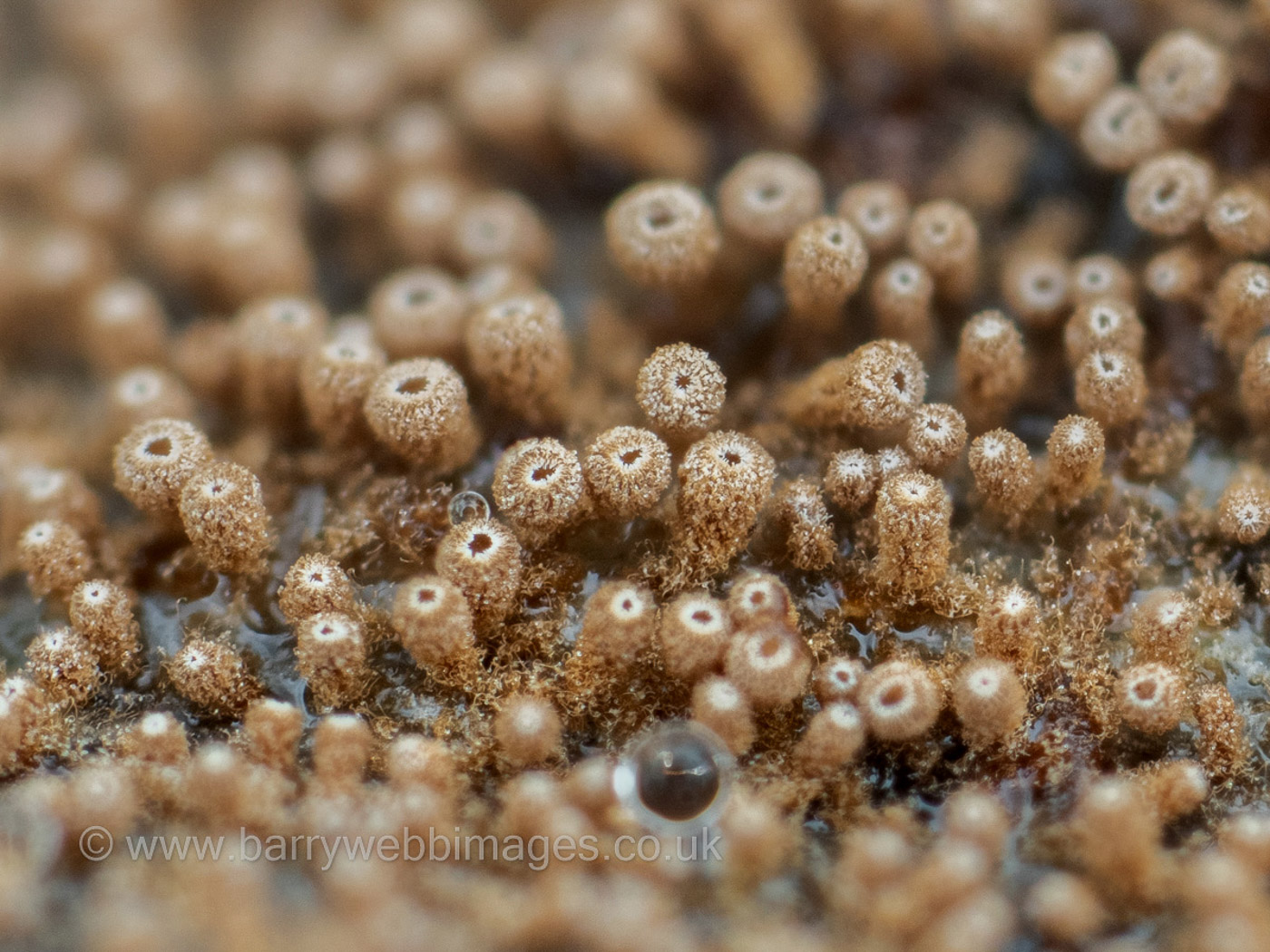 |
Merismodes anomala (a Basidiomycete with no common name)
Jul 28, 2021. In the Mire at Burnham Beeches on a piece of fallen wood Kerry Robinson noticed a brown Corticioid-like patch which on closer inspection she recognised as this somewhat unusual and tiny species, one of the Cyphelloid fungi (those having disc- / tube- / cup-shaped fruitbodies resembling an Ascomycete but in fact belonging to the Basidiomycetes). A x 10 lens is needed to appreciate the detail in the field, seen here in Barry Webb's lovely photo.Though there are plenty of national records this is new to the site and only the second for the county.
|
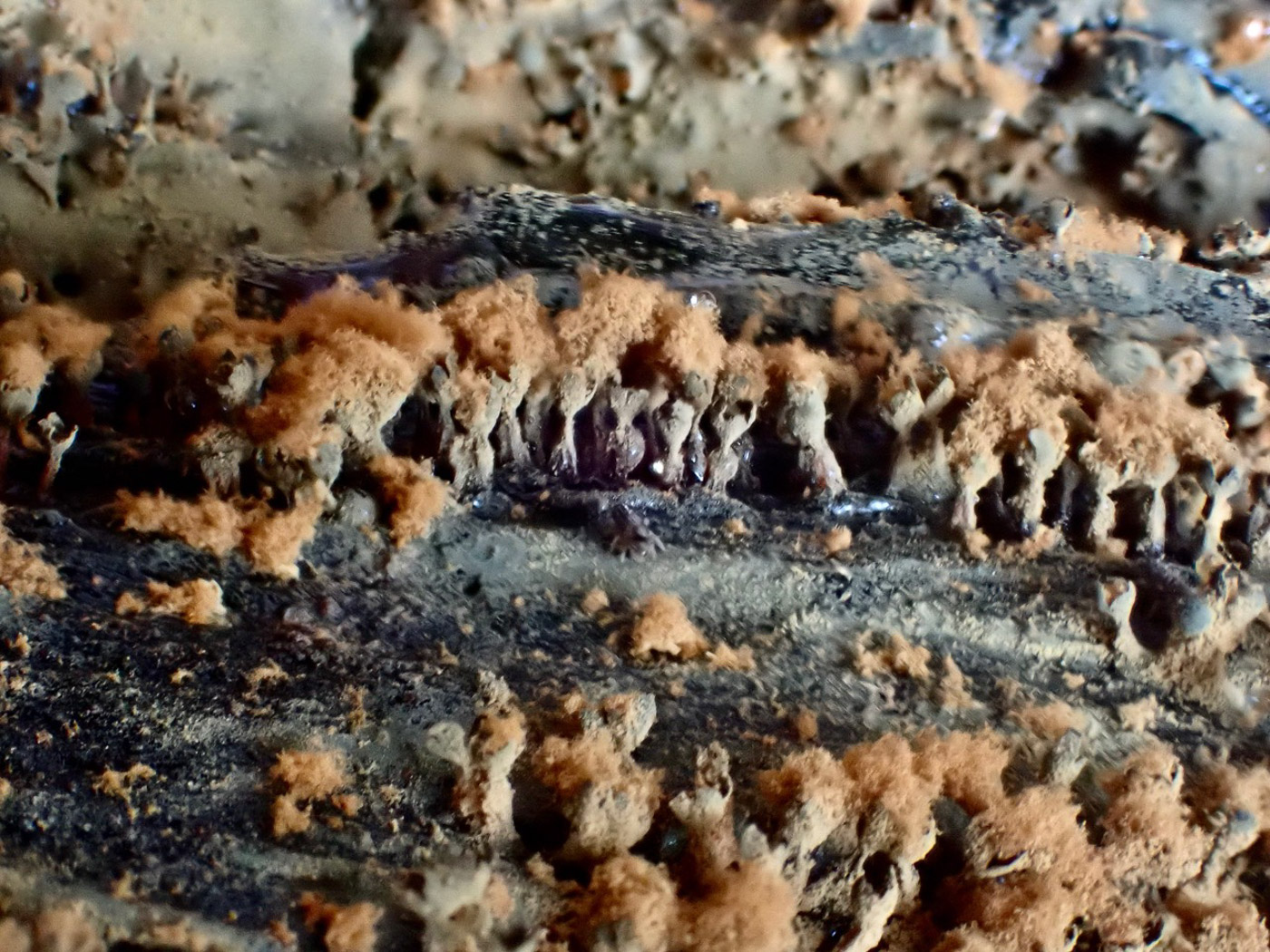
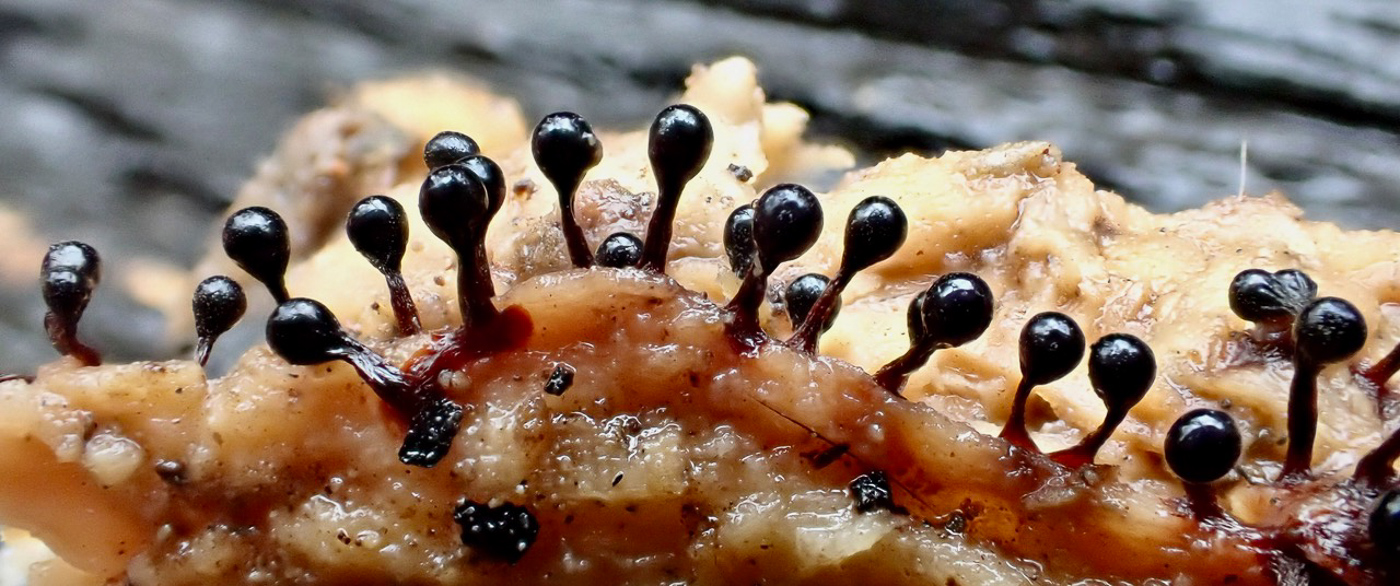
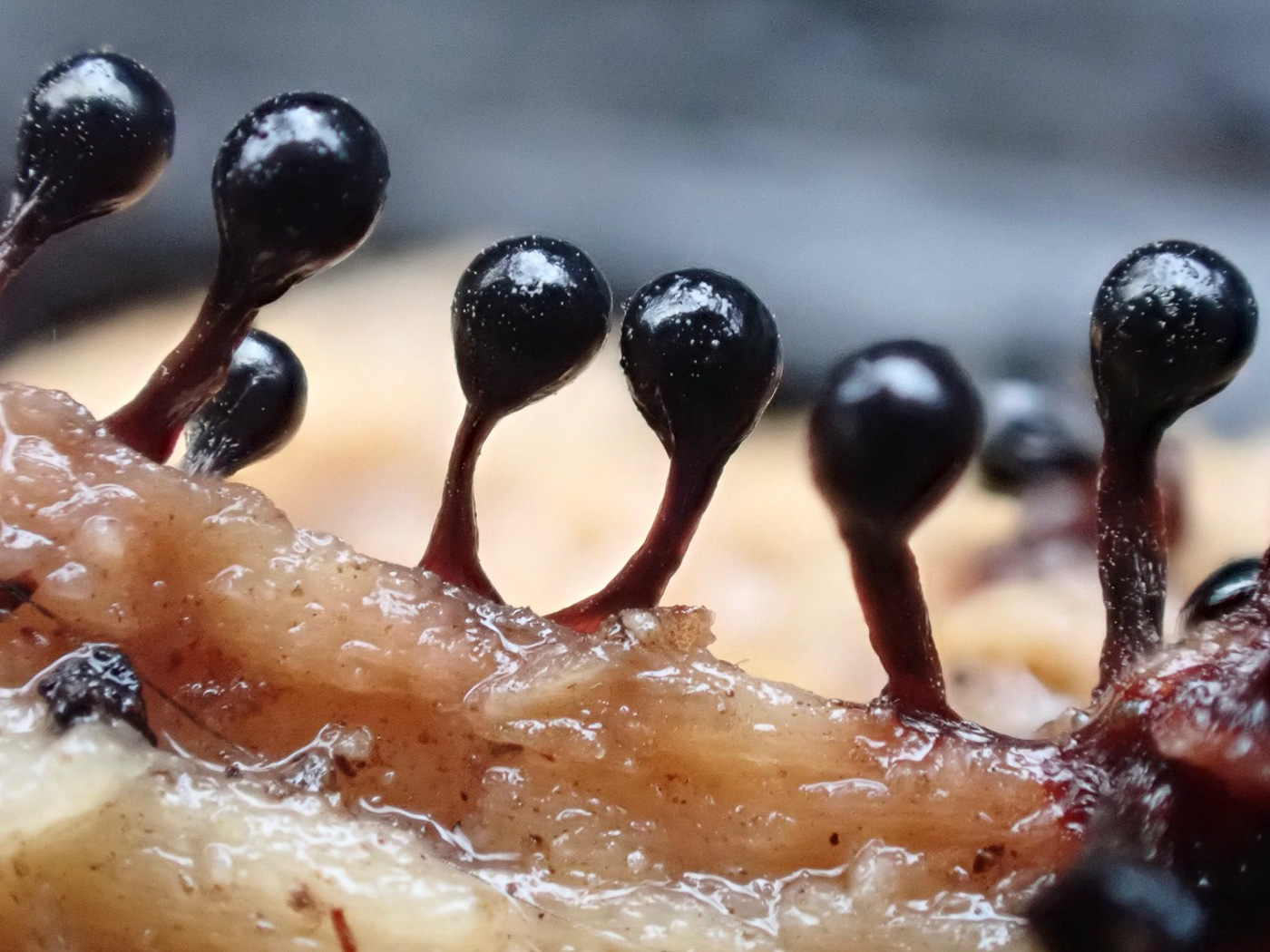
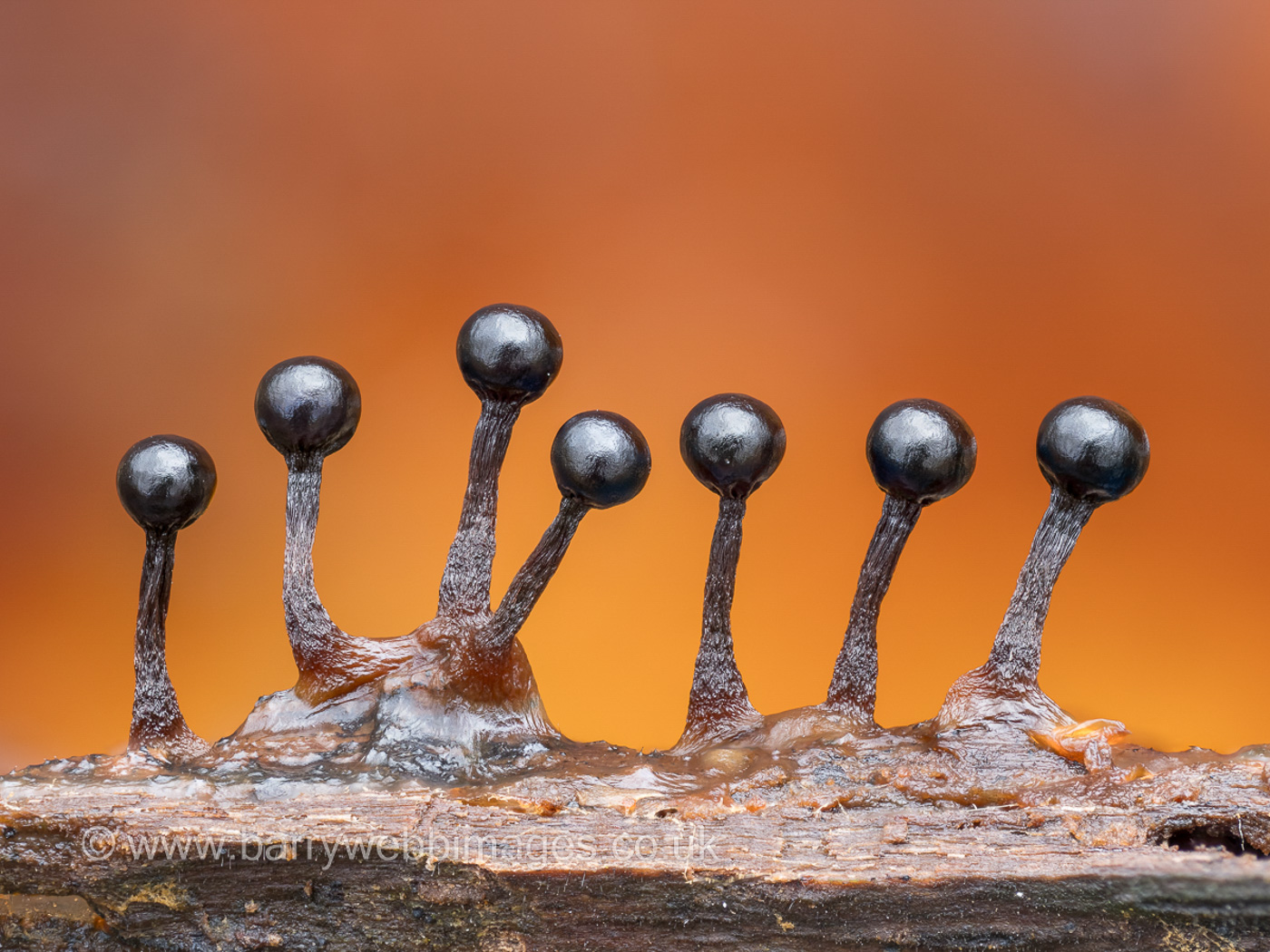
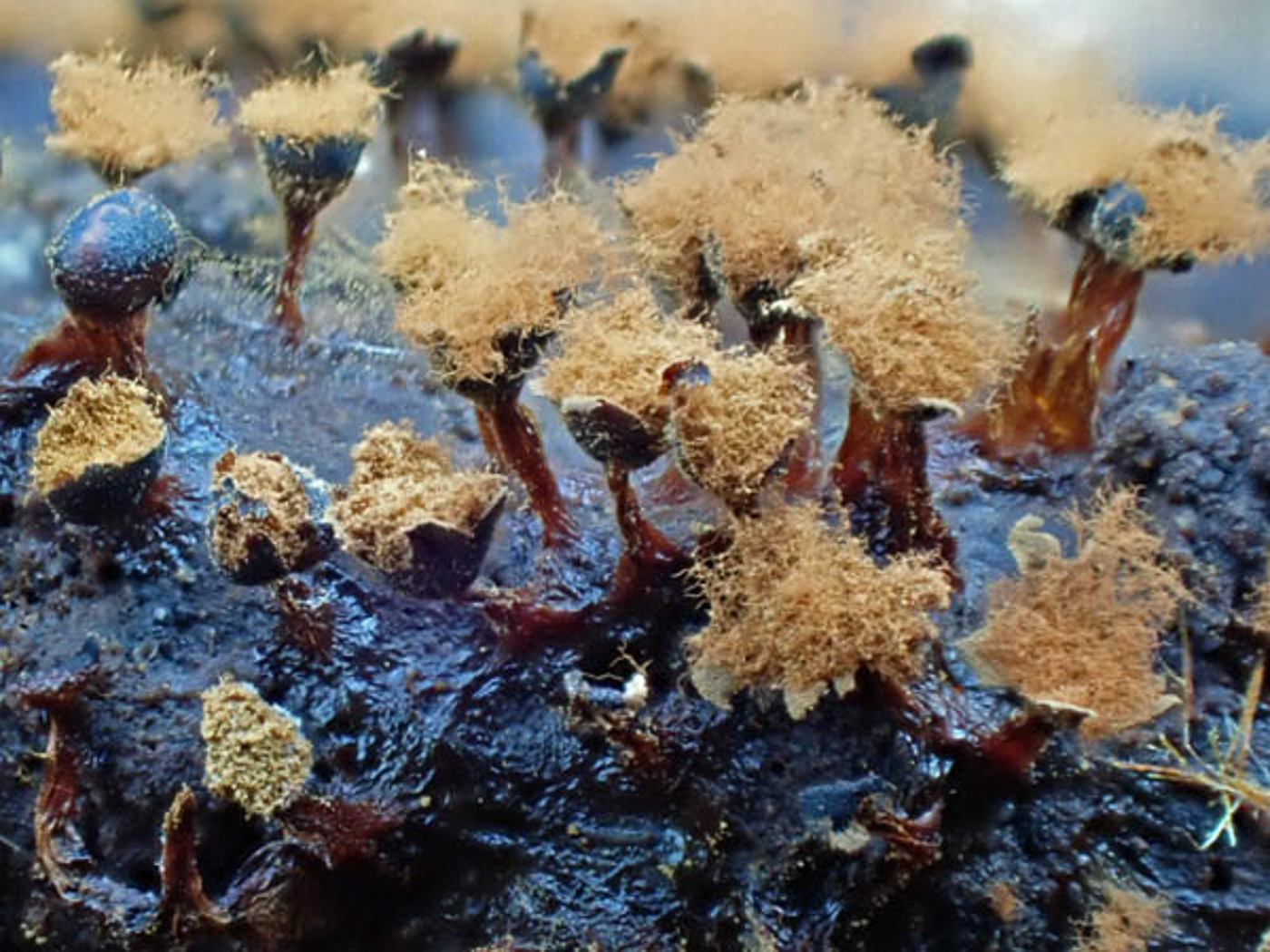
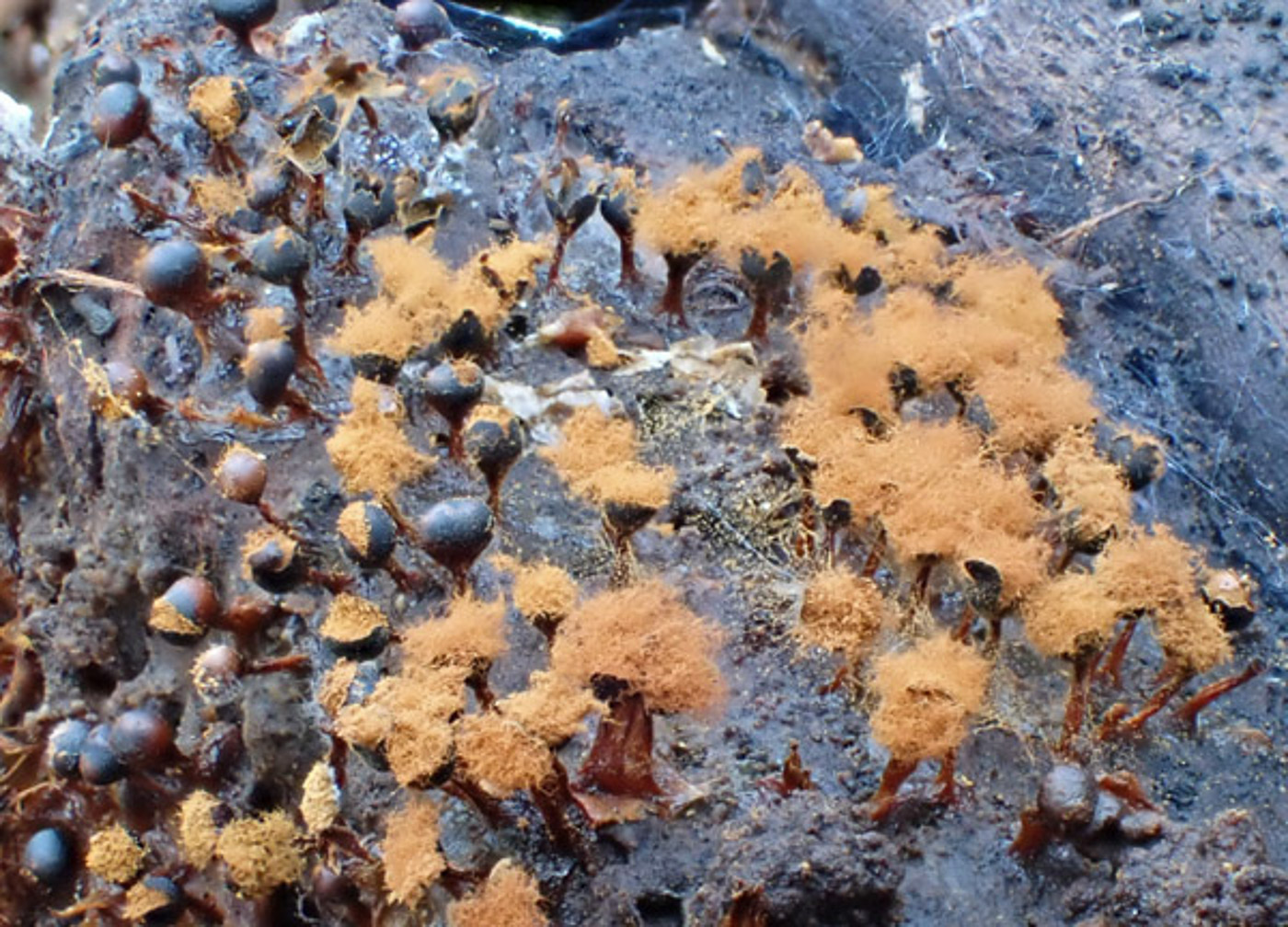
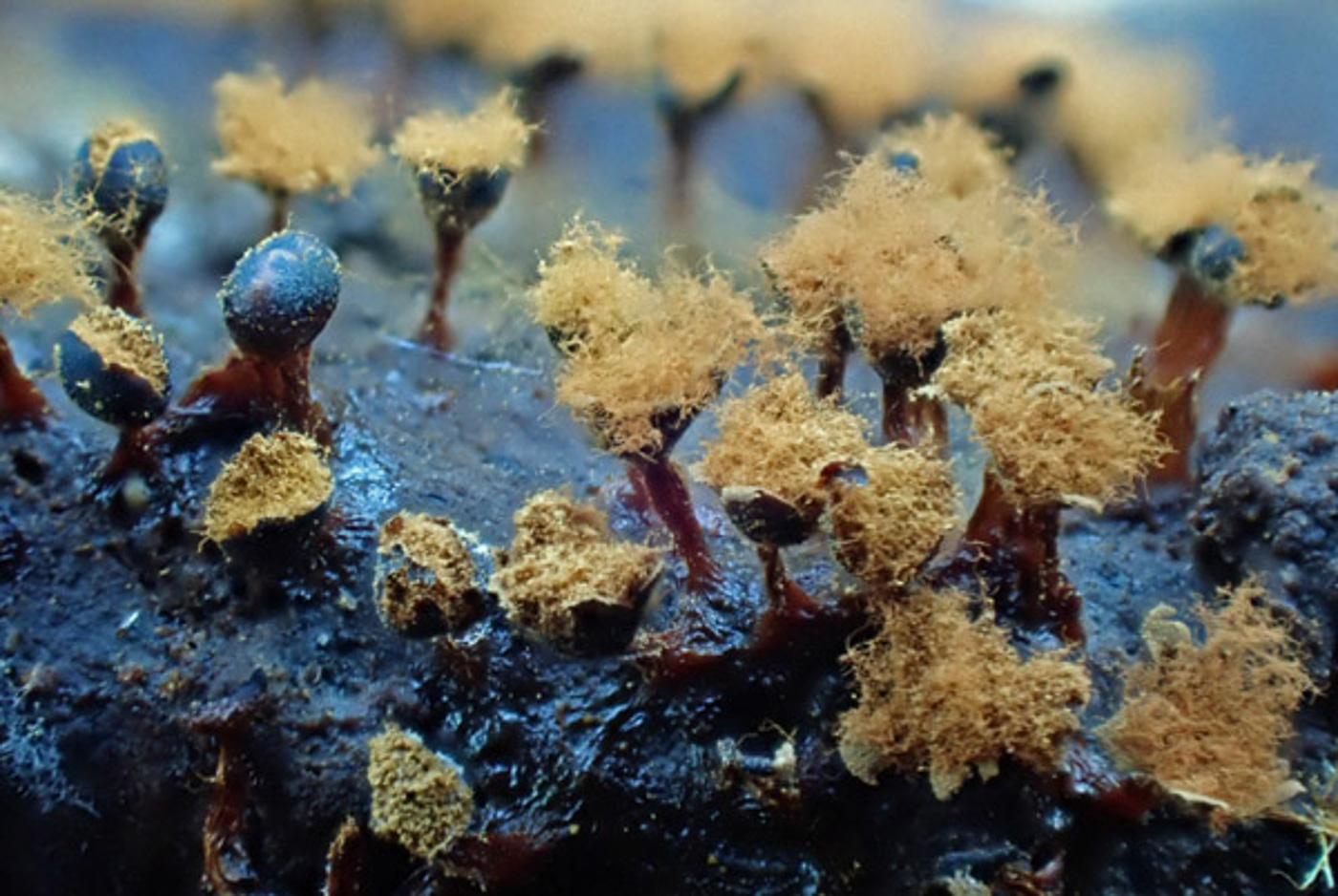
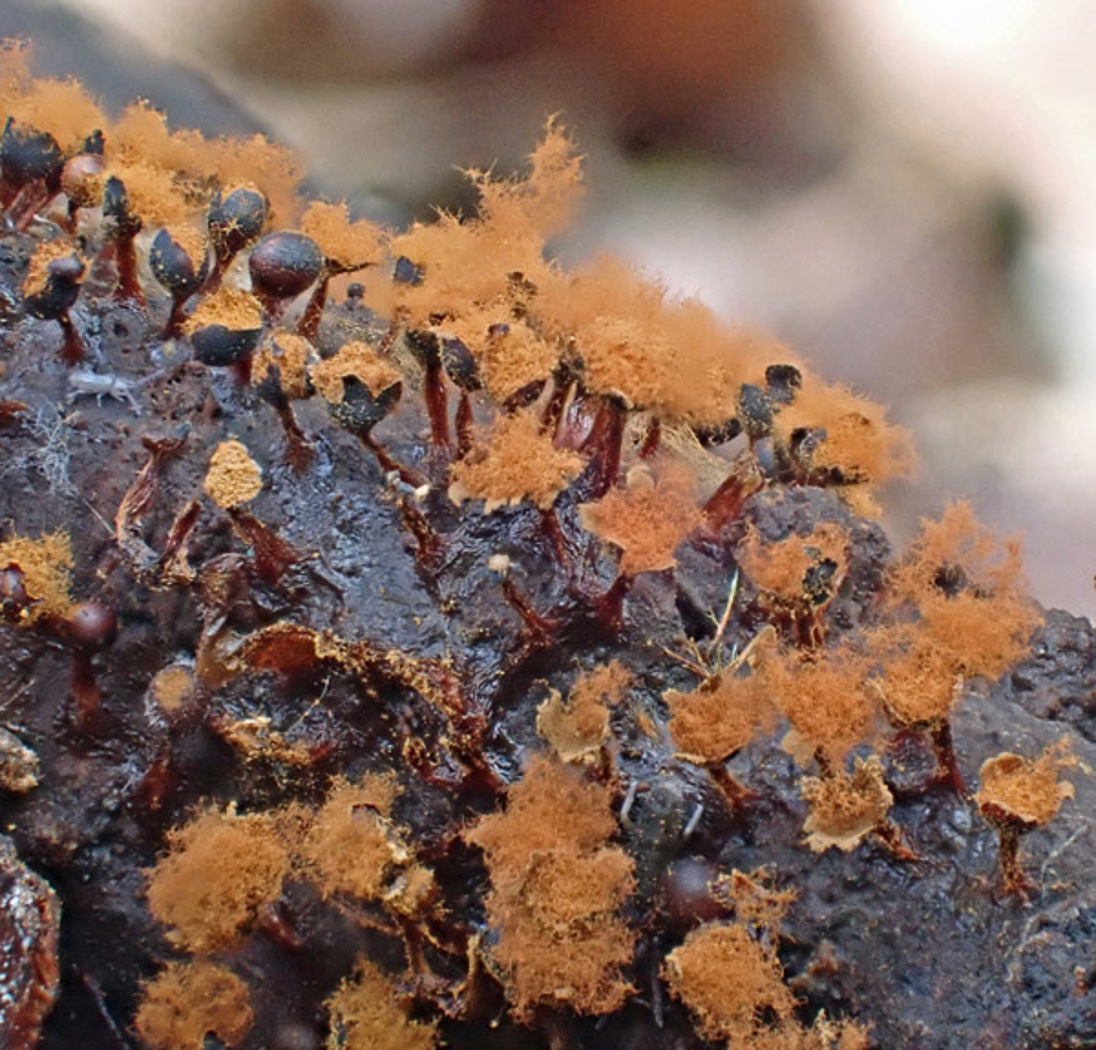
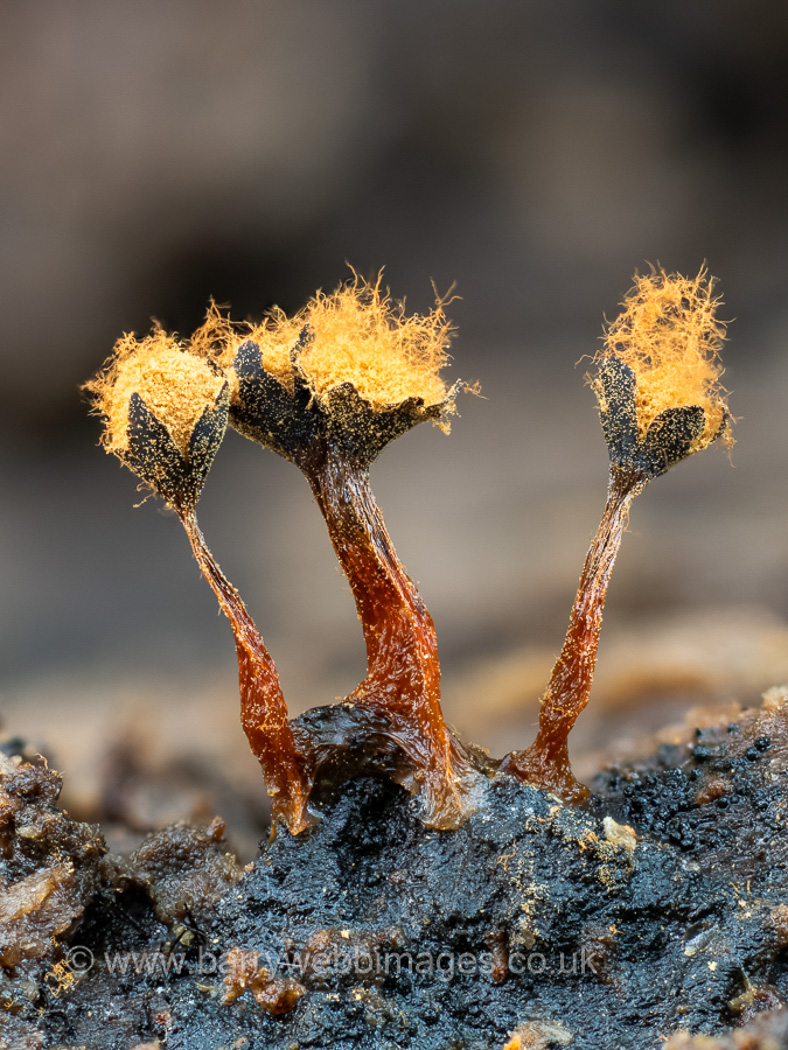
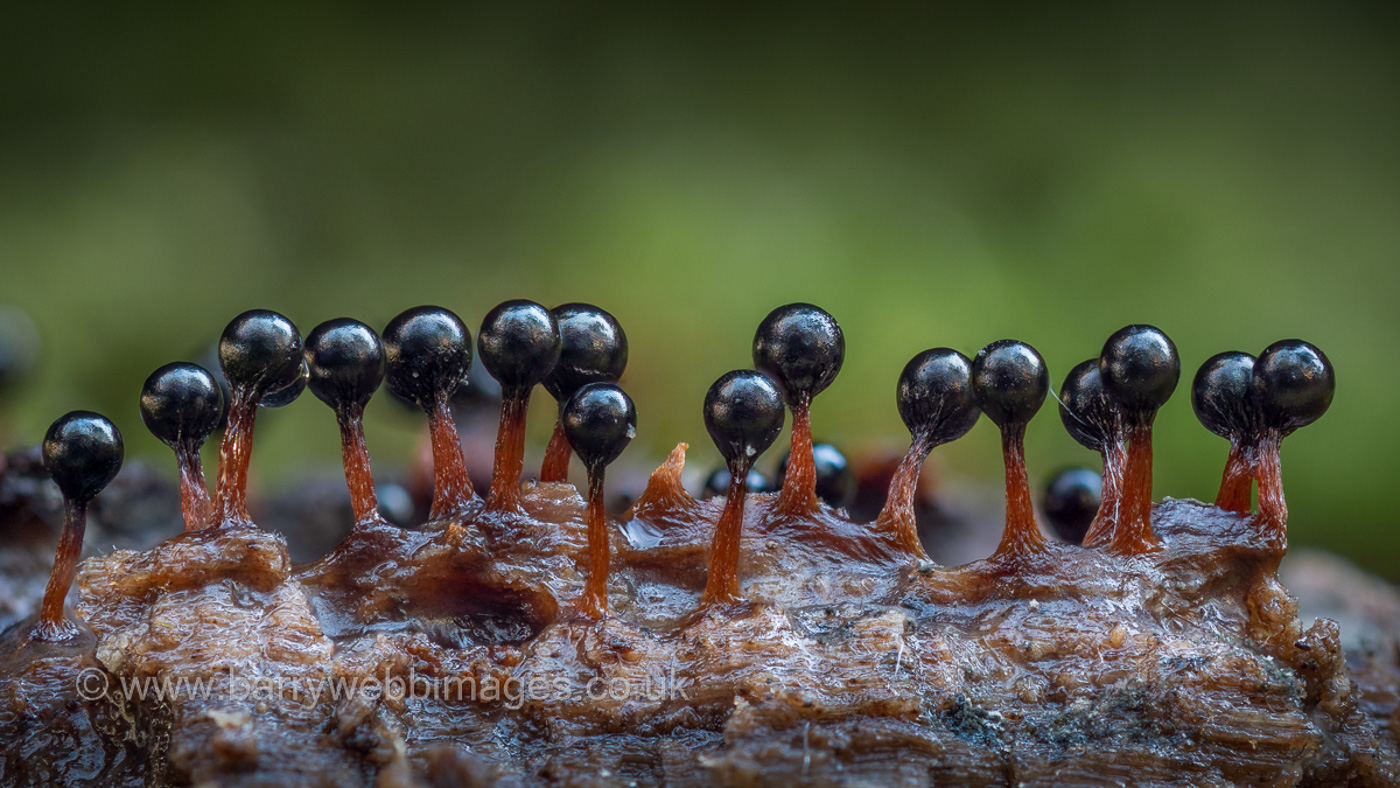
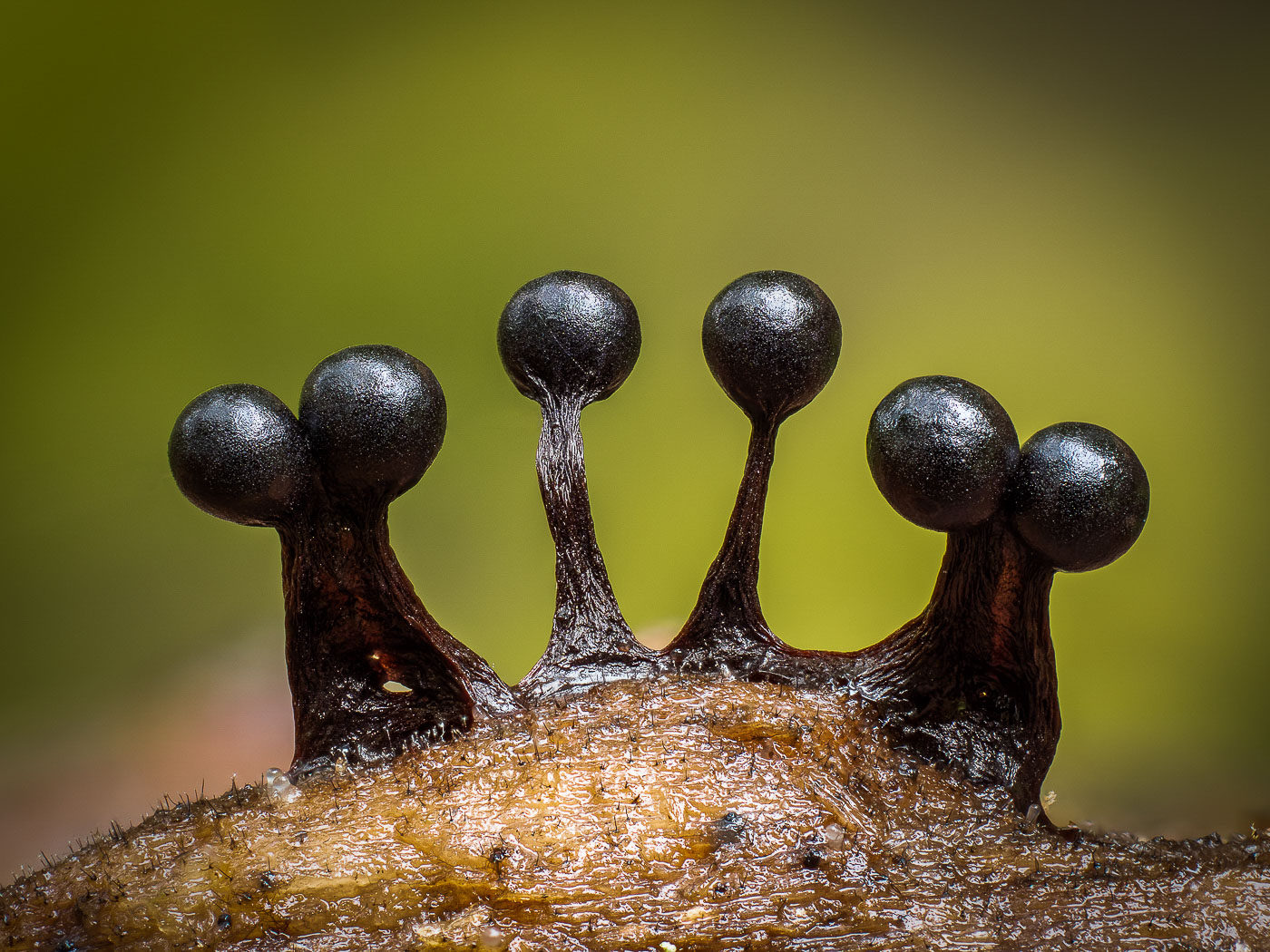
|
Metatrichia floriformis (a Slime Mould with no common name)
Mar 12, 2024. At Burnham Beeches our small group found several large colonies of this distinctive and common species on fallen damp rotting deciduous trunks, showing all stages of its development from the black blobs with dark orange stalks to the mature stage with fully opened tops with fluffy orange spore masses ready to be distributed by air currents etc (photo 3). The photos are Linda Seward's.
Jan 8, 2024. In Hodgemoor Wood Barry Webb found this little cluster under a Holly bush. Though not yet mature enough to have opened out into its typical 'floral' shape, in this form it is already recognisable with its shiny black round top and blackish stalk (officially mushrooms have stems but slime moulds have stalks!). This is one of our commonest Slime Mould species and found (if you search carefully) on fallen rotten wood and woody debris of all sorts.
Apr 18, 2022. At Hampden Common Neil Fletcher spotted a large patch of this common and distinctive slime mould on damp rotting wood. (We also found this species on our Walk at Rushbeds Wood a couple of days earlier.) His photos show some sporangia (the fruiting bodies) still closed with round shiny black heads on stalks as well as those which are mature and have split open like the petals of a flower to reveal the orange spore mass within.
Mar 23, 2022. In Burnham Beeches this was one of two fairly common slime mould species Barry Webb found on fallen rotting Birch. See also images on Barry's separate Finds page.
Jan 12, 2022. In Naphill Common on the 'Great Beech' Barry found several different 'Myxos' of which this was another of the commoner species and again is new to the site. See Barry's page on Finds for more images and information.
Oct 17, 2020. Barry Webb took this delightful photo in Penn Wood, part of a colony of this tiny very common slime mould which grows on rotting damp fallen wood. The plasmodium (early slimy stage) of this particular species is dark red to black, then it gradually 'mutates', developing into these black blobs on stalks less than 4 mm high which then split open forming a flower-like shape (hence its species name) and from which the spore mass disperses. See a beautiful example of this later stage included in Barry Webb's photos which follow below our list of dated photos.
|
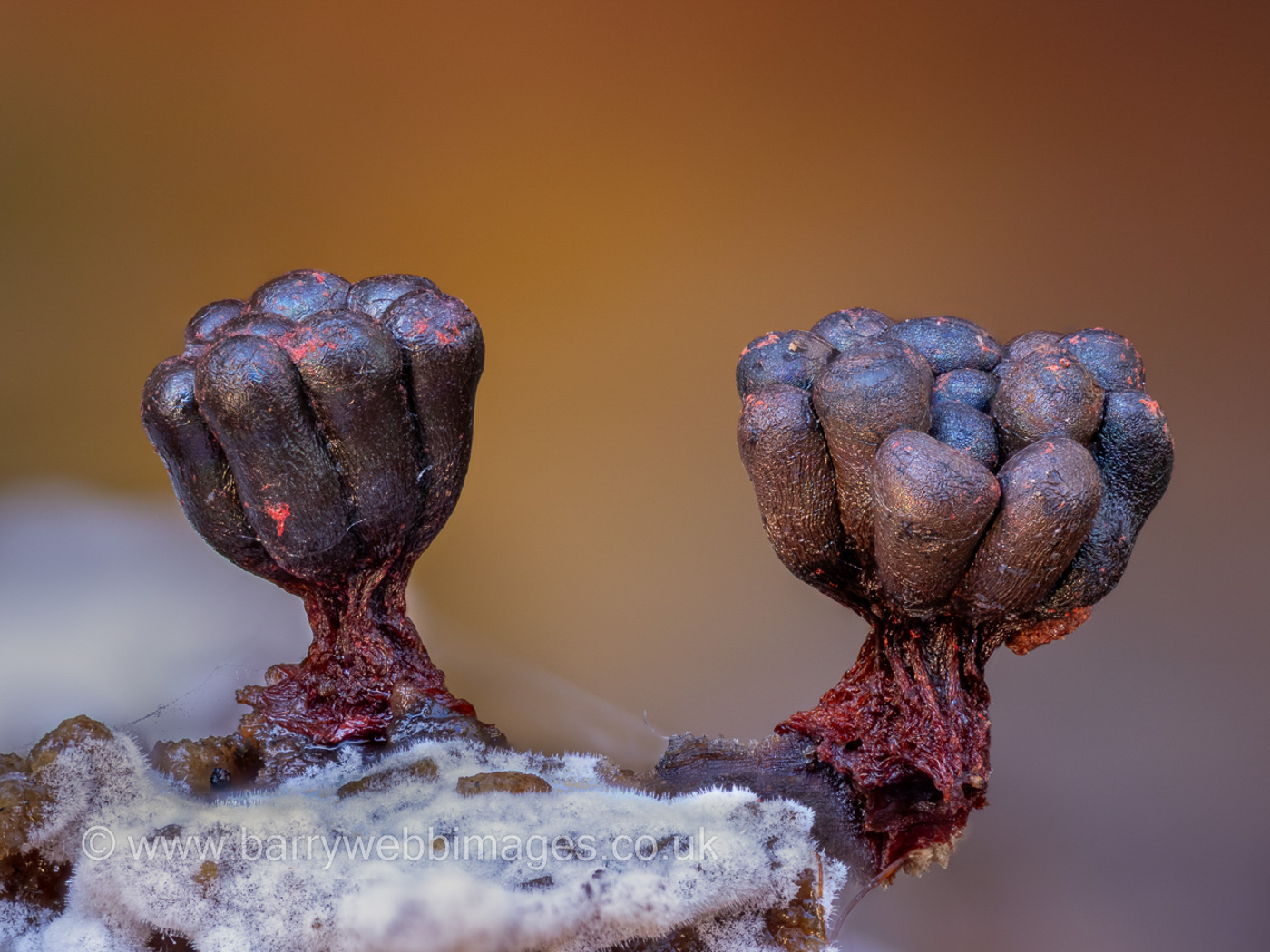 |
Metatrichia vesparium (a slime mould with no common name)
Nov 22, 2023. In Burnham Beeches on a large fallen rotten Beech Barry Webb was pleased to spot this particular species as it has been eluding him (and Penny)despite not being described as rare. He found it recently on a visit to the New Forest but this is a new record for Bucks. When mature as here it is, however, distinctive enough to be recognised and named in the field, the clustered sporangia bearing a distinct resemblance to a wasp's nest (which gives rise to its Latin species name) despite being tiny. This is a new entry for Finds.
|
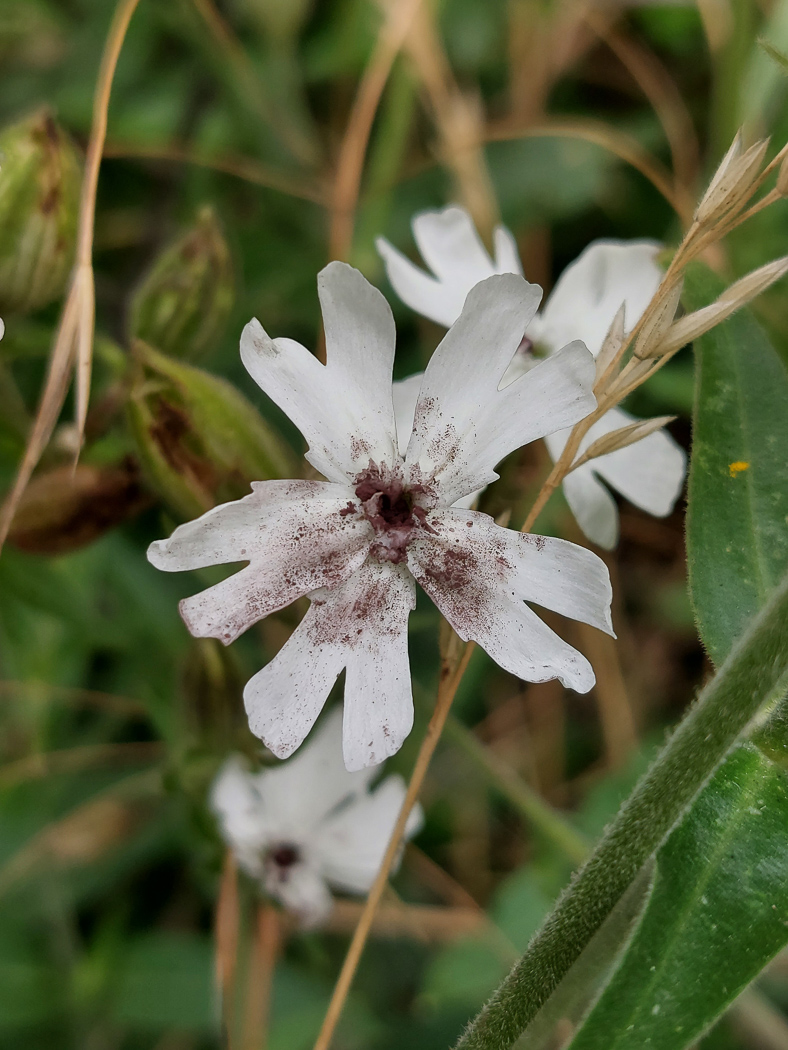 |
Microbotryum lychnidis-dioicae (Campion Anther Smut)
Jul 9, 2023. In Jordans Village Jesper Launder spotted a White Campion flower which had clearly been affected by this apparently common Smut fungus which replaces the host pollen with a mass of brown spores which are then spread by visiting insects. It appears to be known only from White Campion, not Red, and surprisingly it seems to be new to our database despite being considered quite a common species. It is another new entry for Finds.
|
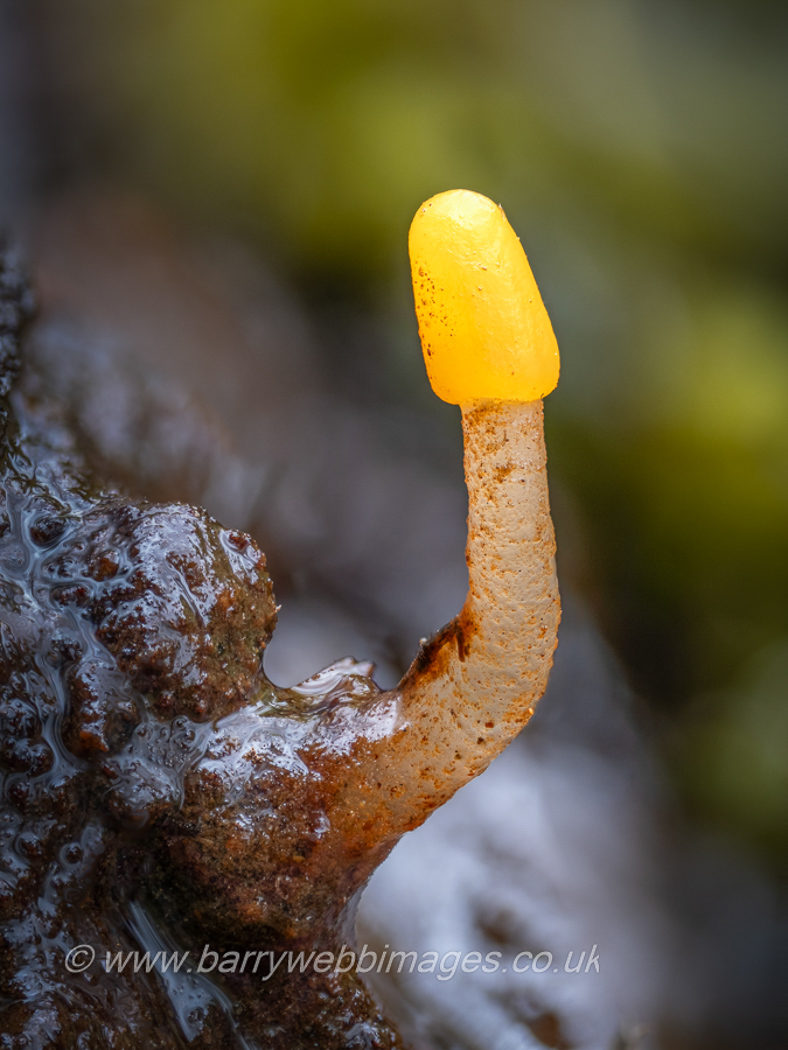
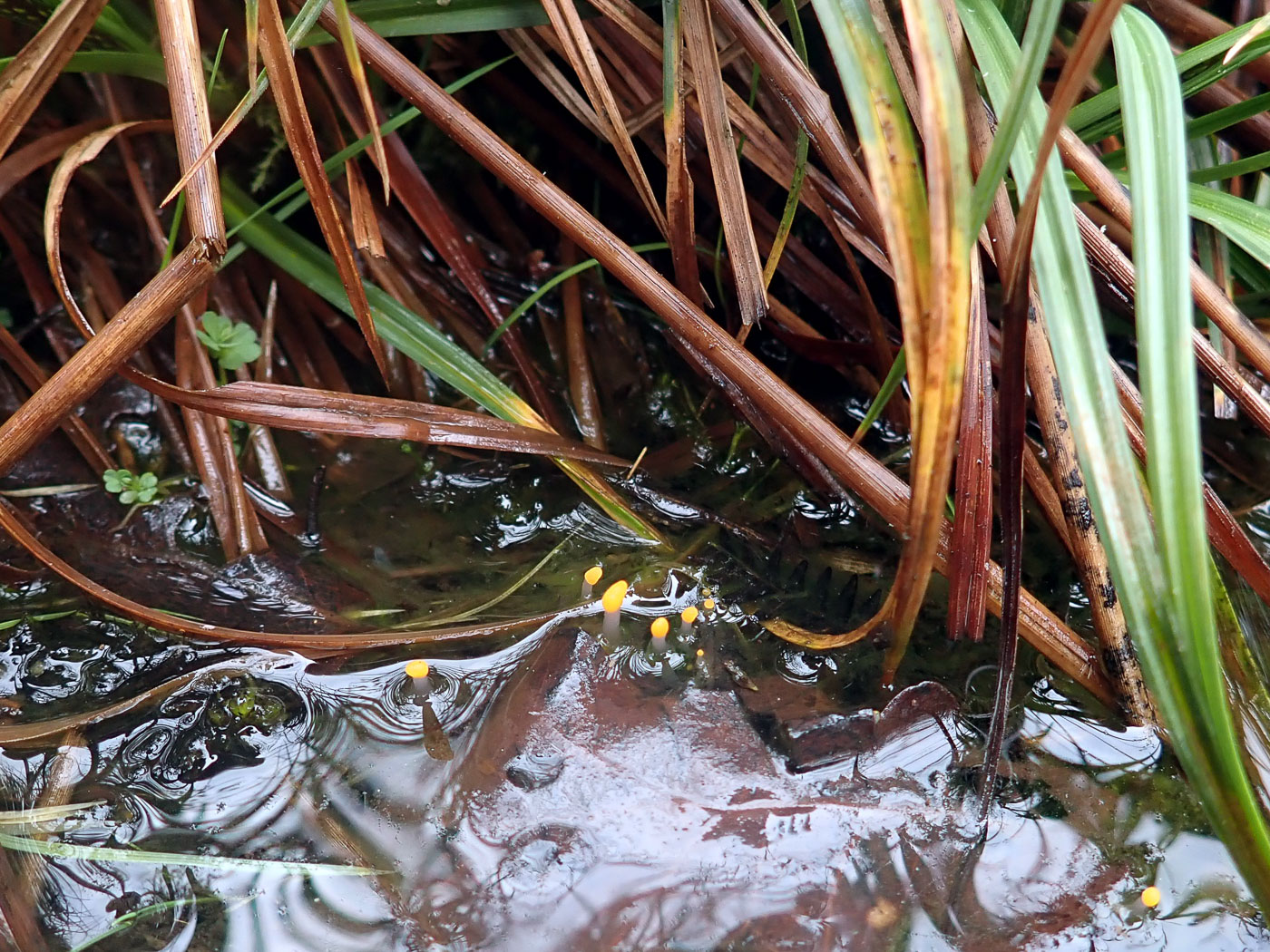
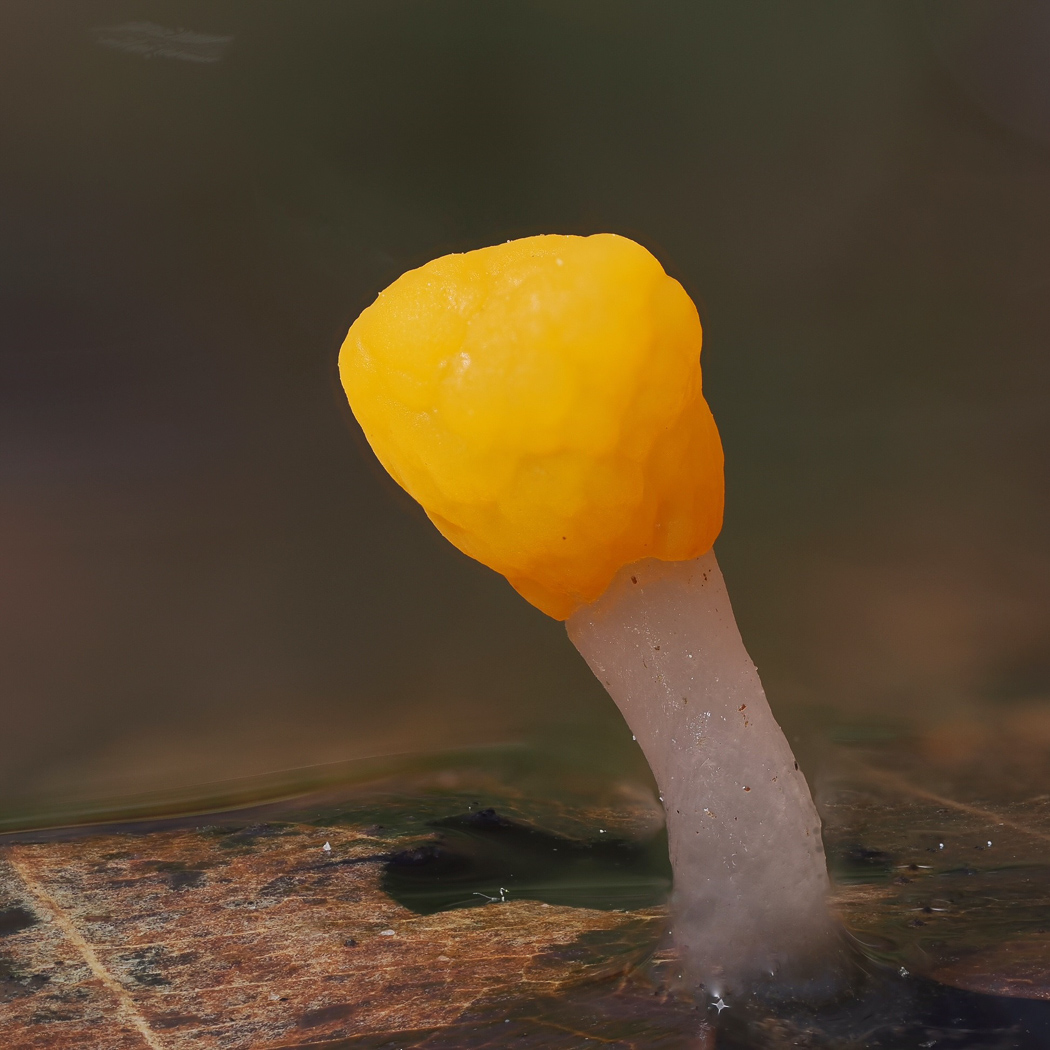
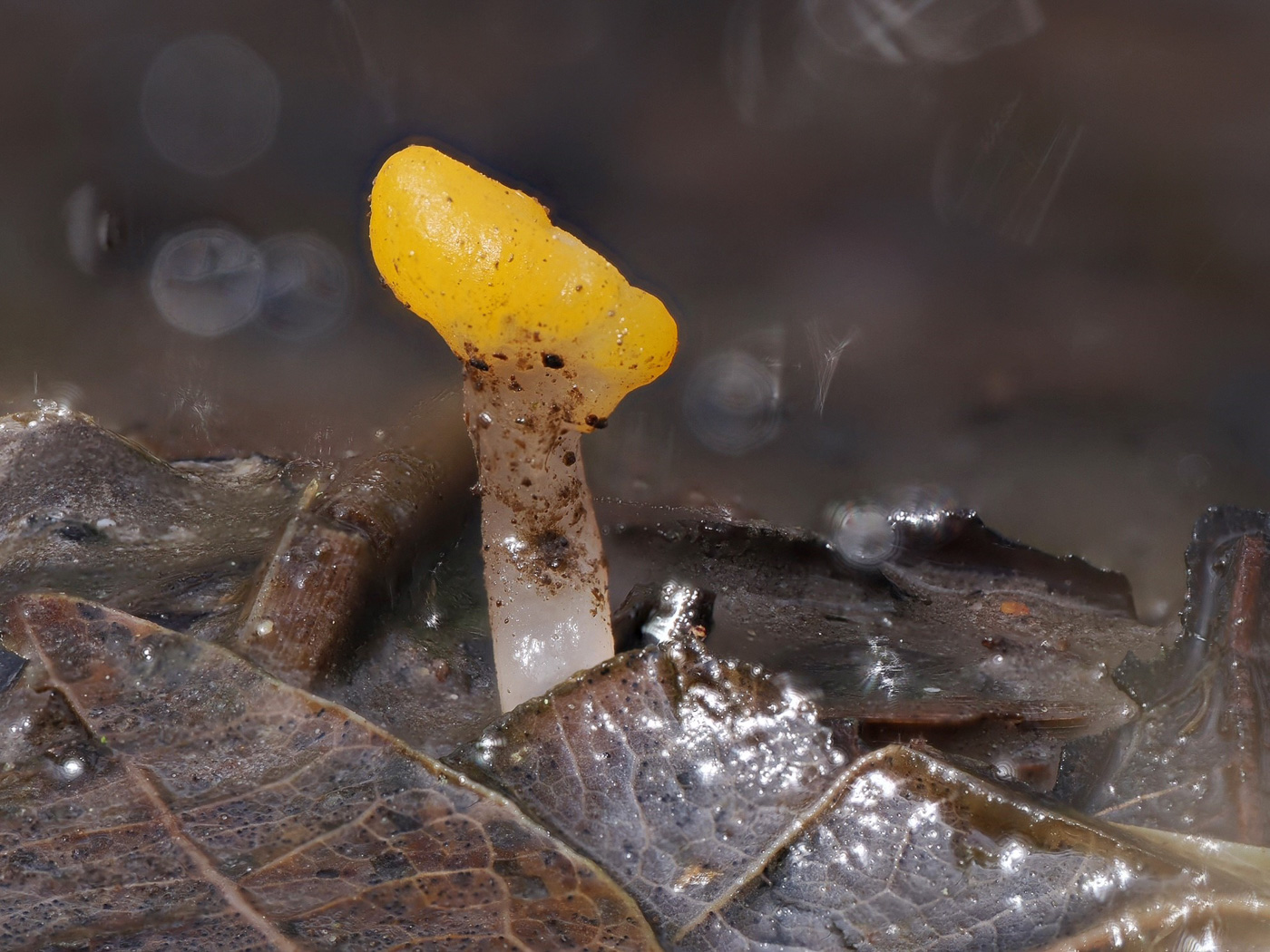
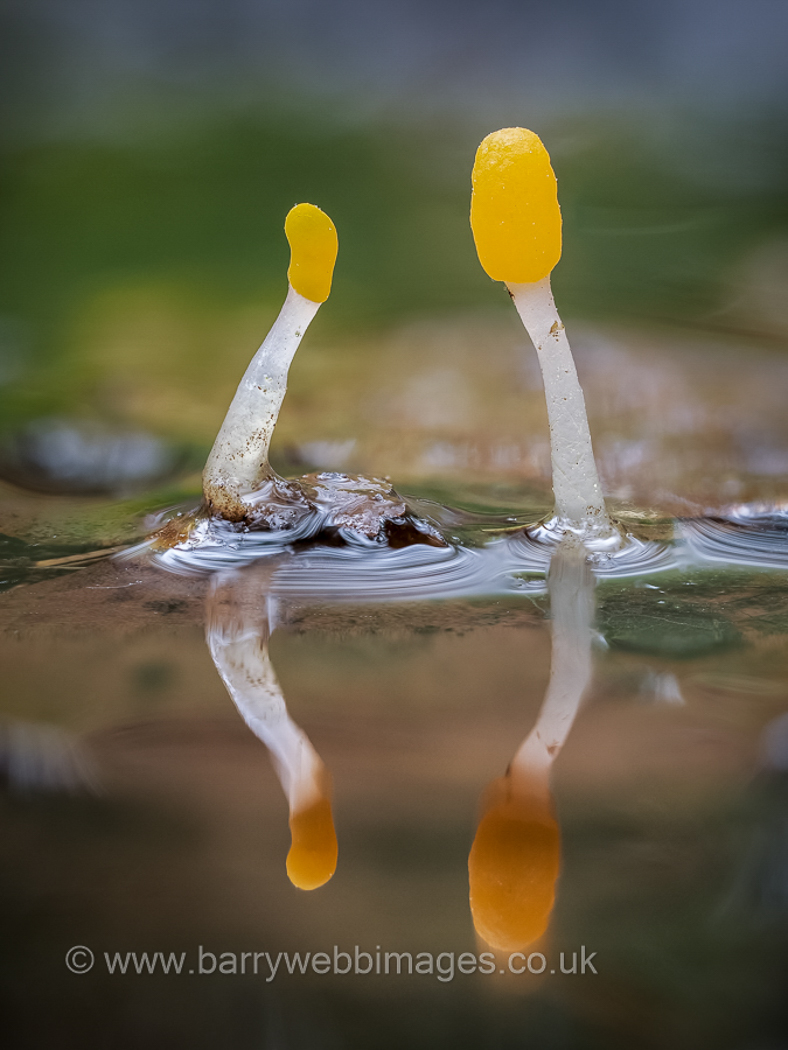
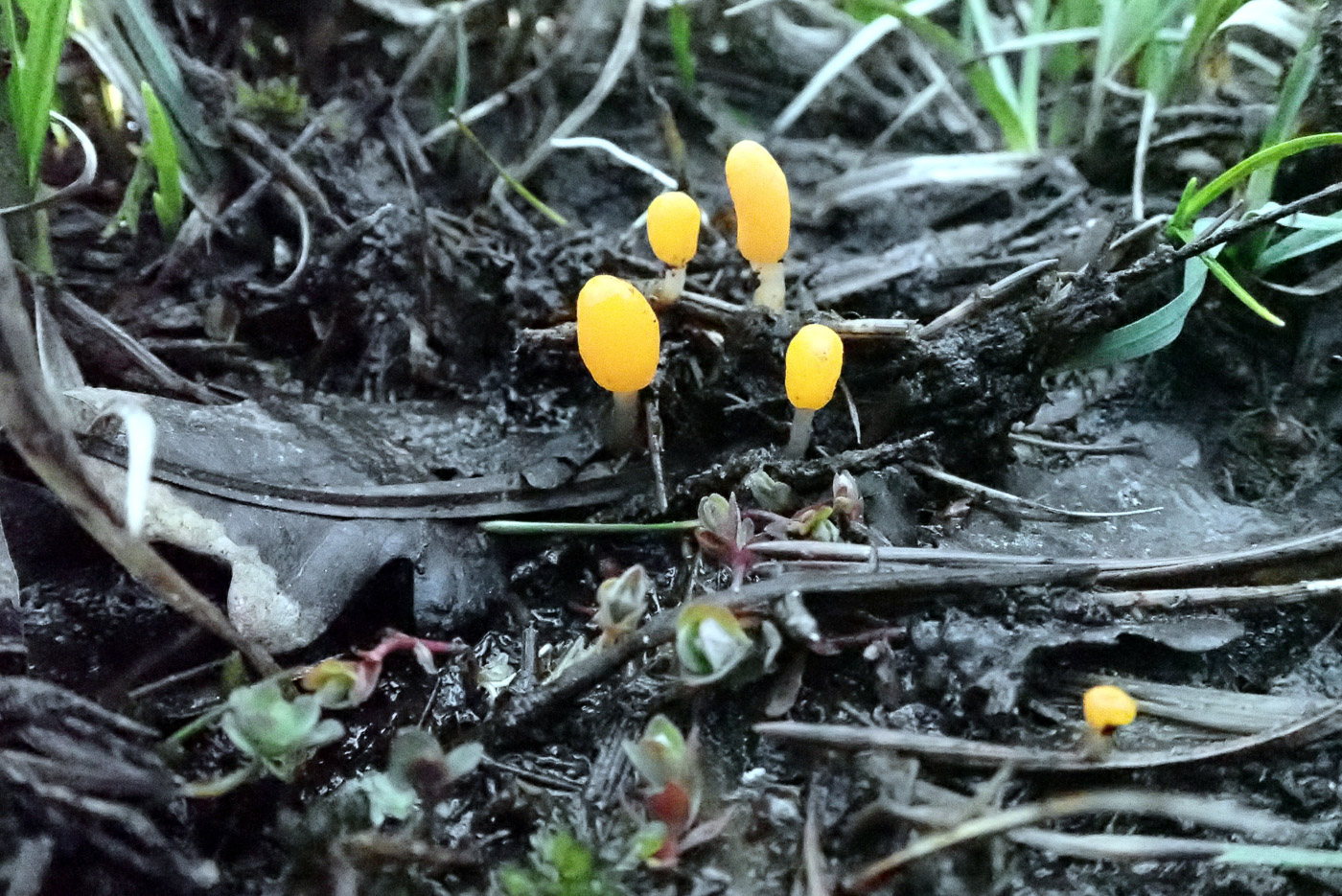
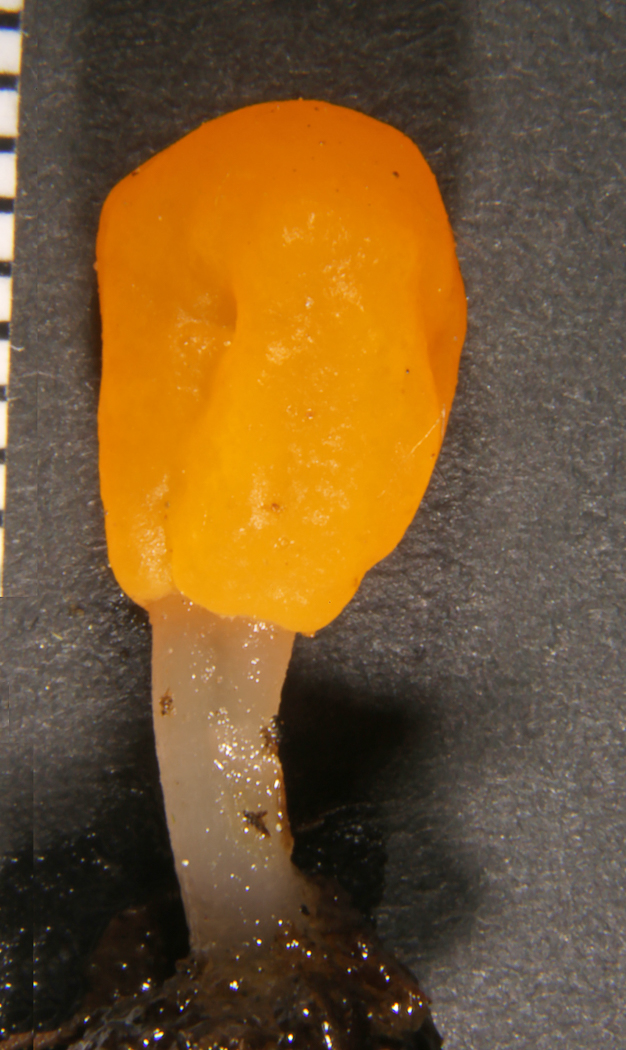
 |
Mitrula paludosa (Bog Beacon)
Mar 31, 2024.This is a relatively rare springtime species which we have recorded in the Burnham Beeches Mire area several times in the last few years. Today's find was made by Barry Webb in the stream there leading from the Mire to the first pond. Previous records are mainly from May or June though last year we found it in mid April. So Barry's find here is certainly the earliest we've seen it here.
Apr 18, 2023. By coincidence Penny and Claire Williams separately visited the Mire at Burnham Beeches today with the same objective! Both were rewarded though Penny could only find a very few really tiny specimens (still hiding their light under a bushel! - photo 1) whereas Claire looks to have found at least one decent sized Beacon! (photos 2 and 3). We still only have this site and Danesborough at the northern end of the county for this beautiful species which thrives on wet vegetation in really soggy sites, so it's surprising that it's not been found at Stoke Common, for instance. It should however, be on show when BFG visits the Beeches at the end of this month: all our records are from May bar one in June so it's only just beginning to fruit now.
May 7, 2022. At Burnham Beeches Barry Web took this stunning photo of this aptly named Spring-fruiting Ascomycete. It was not in the Mire area where we found it last year (see Finds 2021 May 5th) but in a sloping wet flush in woodland. It stands no more than 50mm tall and is not often recorded, its habitat requirements being very specific and it can be found in late spring to summer in really wet areas growing on soggy remnants of vegetation. We have records only from this site and Danesborough in the north of the county.
May 5, 2021. In the Mire at Burnham Beeches Penny was delighted to come across this attractive little ascomycete. At first glance it is not unlike Mycena acicula in colour and size, but this is a species of wet boggy places, ditches, standing water and the like, typically fruiting at this time of year, and a closer look reveals its lack of gills and typical clavate head on a whitish stem, the whole only 2cms tall or so. It tends to fruit in large numbers as it was here though only just coming up, so if you find one it's worth looking around for more. Though not rare given suitable habitat we have just one other site besides this one for the species (near Milton Keynes) and this is only our third county record. Photo 1 is Penny's, photo 2 and 3 are Derek's, the last showing a specimen sliced in half and hollow in the centre.
|

 |
Monilinia johnsonii (Haw Goblet) 
Apr 28, 2024. In Jordans Village Jesper Launder has been on the hunt for this species in its anamorph stage which affects fresh Hawthorn leaves in May / June and can be detected by crushing the leaves which produce a strong aromatic scent and which also curl up and brown as seen here. (In photo 1 it is the brown leaves which is the fungus, not the white flower buds!) He reports the small was amazing! The 'Goblet' teliomorph stage is found on last year's old fallen Haws in March / April, forming tiny brown cups with long stems and which we have yet to record in the county. We have just two previous records of the anamorph stage made by E. Mordue - a recognised specialist in such species - at the BMS Spring Foray week held at Green Park back in May 2002. This is a new entry for Finds.
|
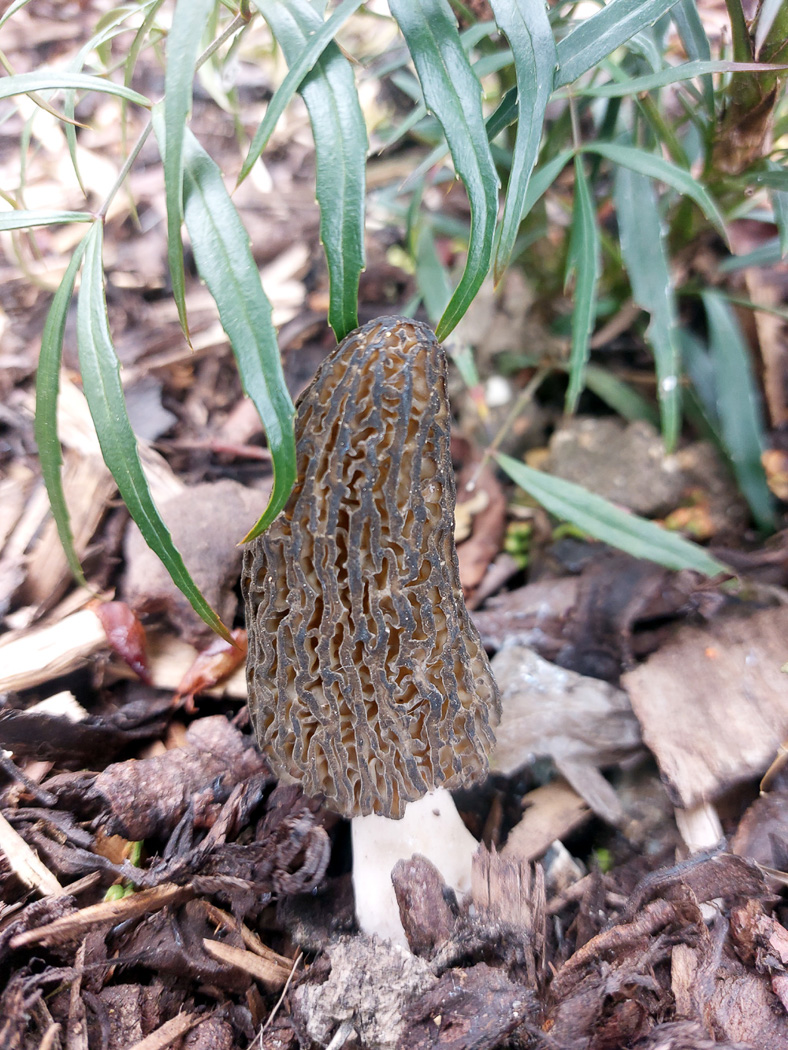
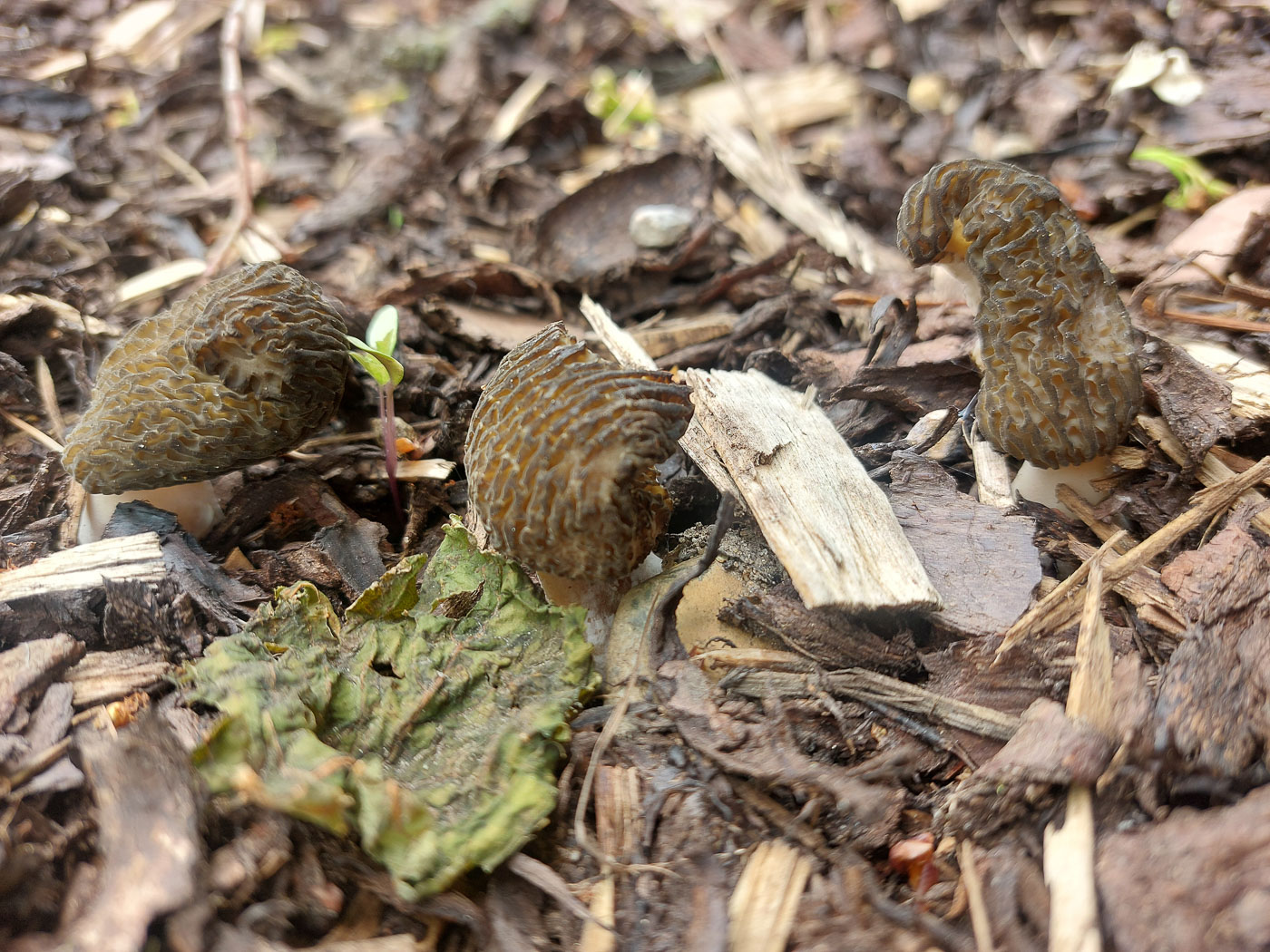
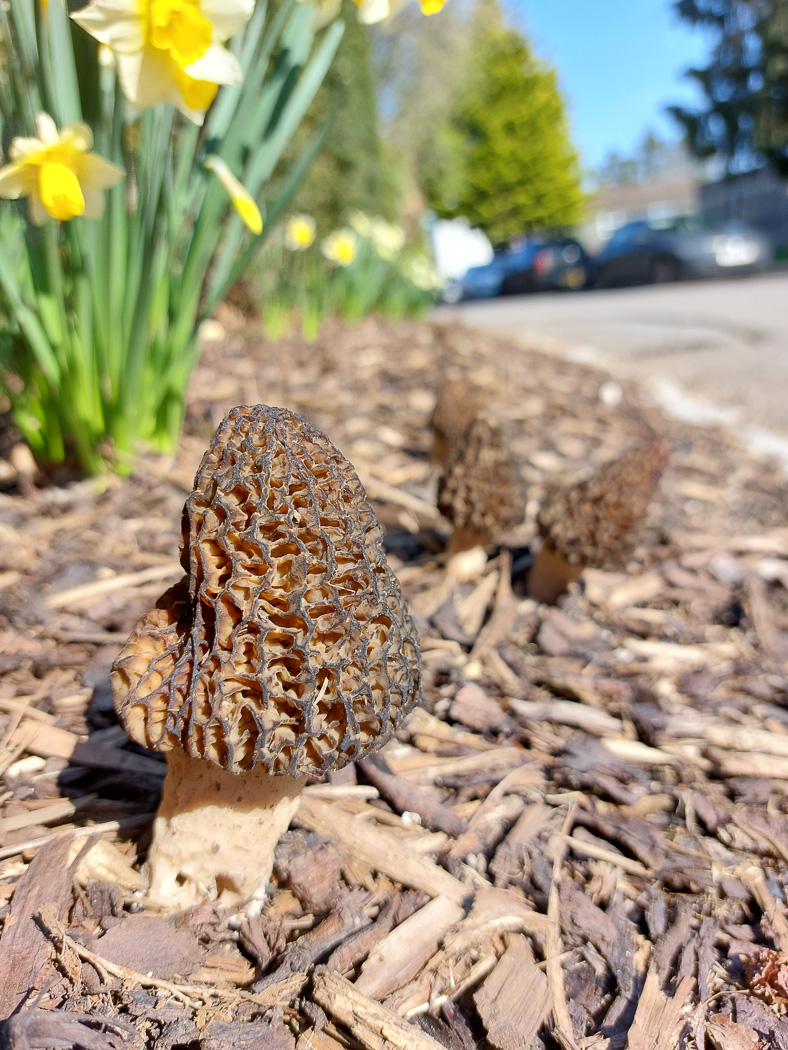

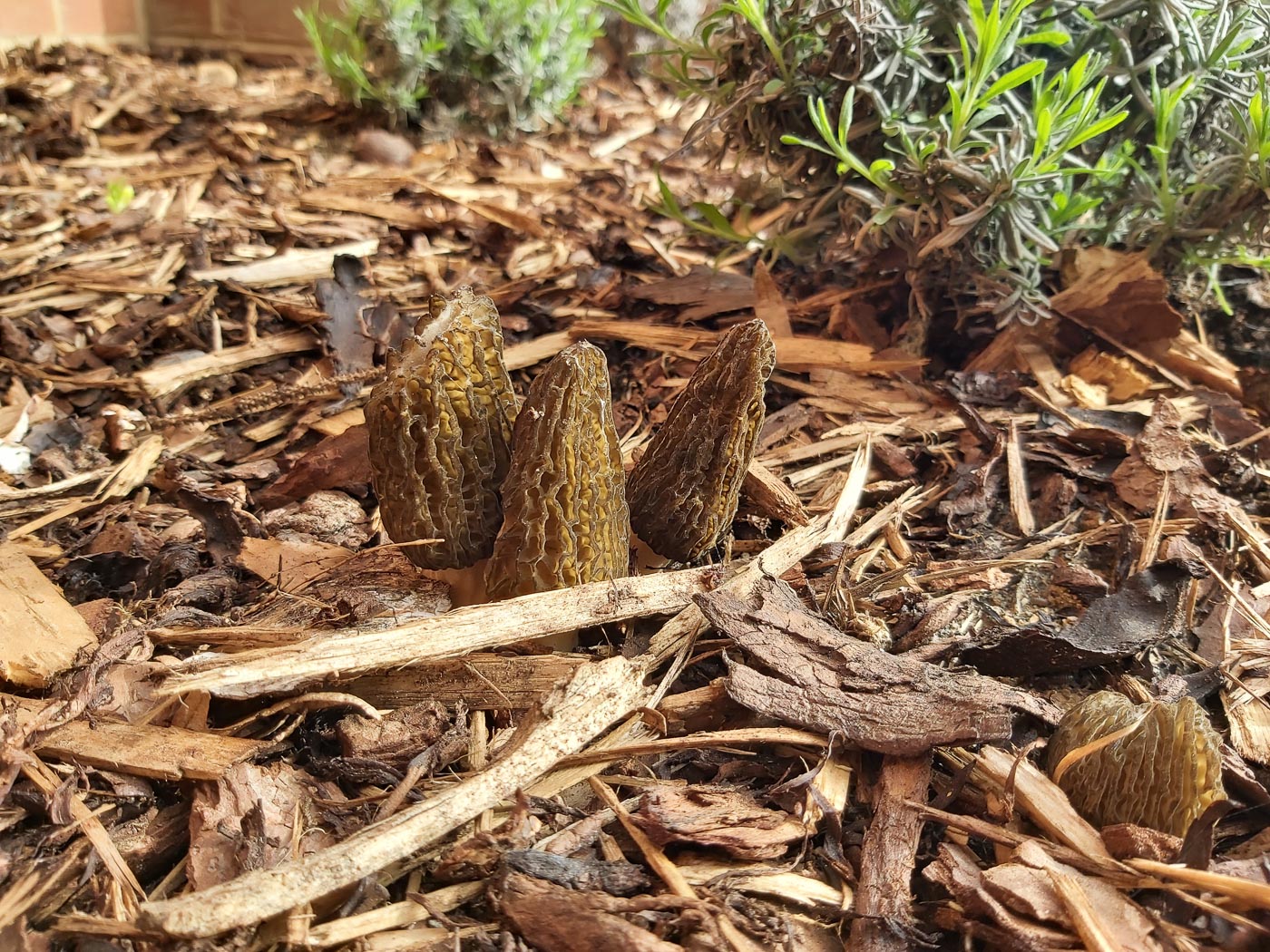 |
Morchella elata (Black Morel)
Apr 24, 2024. At Stoke Poges Memorial Gardens Jesper Launder found a good fruiting of this elusive springtime genus growing in the quantites of wood chip at this site. This species probably the commonest - has a preference for conifer wood chip, often fruiting in gardens where this substrate has been imported. So do keep an eye out for it if you've used this garden product at home.
Apr 3, 2023. In Seer Green Jesper Launder spotted these beautiful springtime specialities in woodchip - presumably Pine. This is a member of one of the most unpredictable genera, also one which is distinctive in appearance making it basically easy to recognise but determining to species is not at all easy. Microscopic characters vary very little but M. elata is one of the easier to name: it favours Pine woodchip, has a marked conical shape and the outer edges of the chambers tend to be black. (It appears, however, that this is a species complex and collections made on urban Pine woodchip may well be M. importuna - this is yet to be resolved.)
Apr 1, 2021. Jesper Launder found this beautiful springtime species in a private garden in Chalfont St. Giles. Though we have just two other county records this particular species is not a rarity and can often be found in good numbers in gardens fruiting on Pine woodchip which is suitably aged - as it was here. As the use of this garden commodity increases so it appears does the occurrence of the fungus, though it seems that it uses up the necessary nutrients in one fruiting and thus does not reappear the next year. So if you have pine woodchip in your garden it would be worth keeping an eye out for this tasty fungus!
|
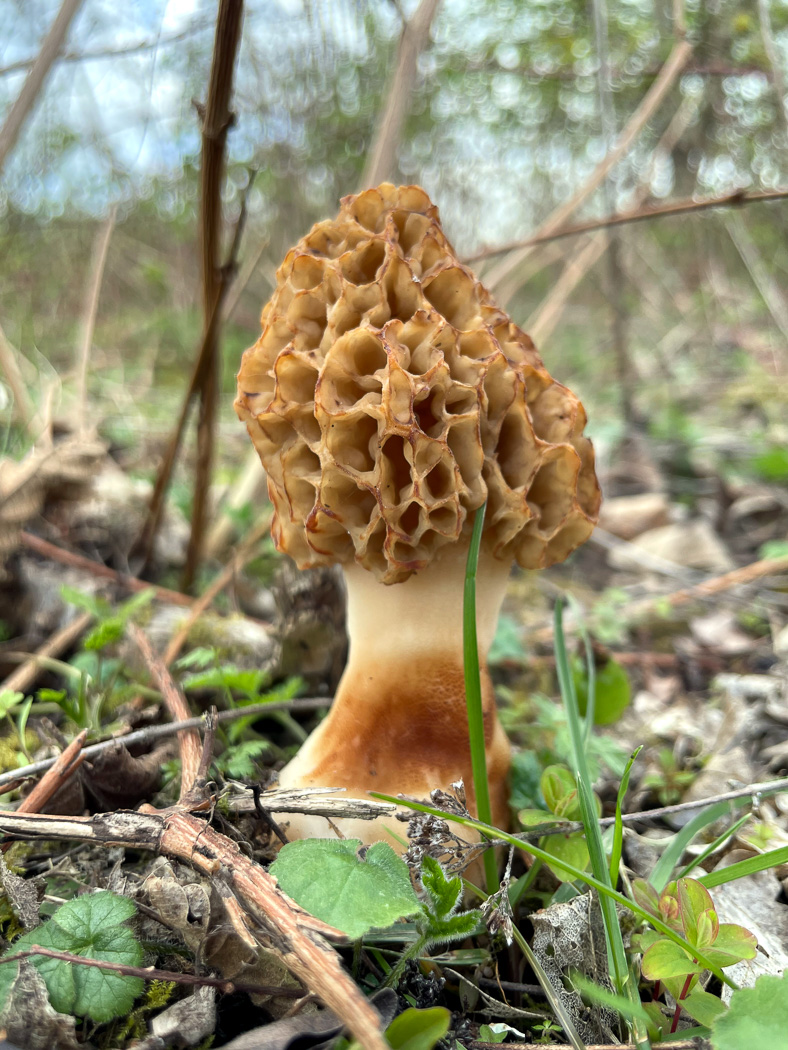
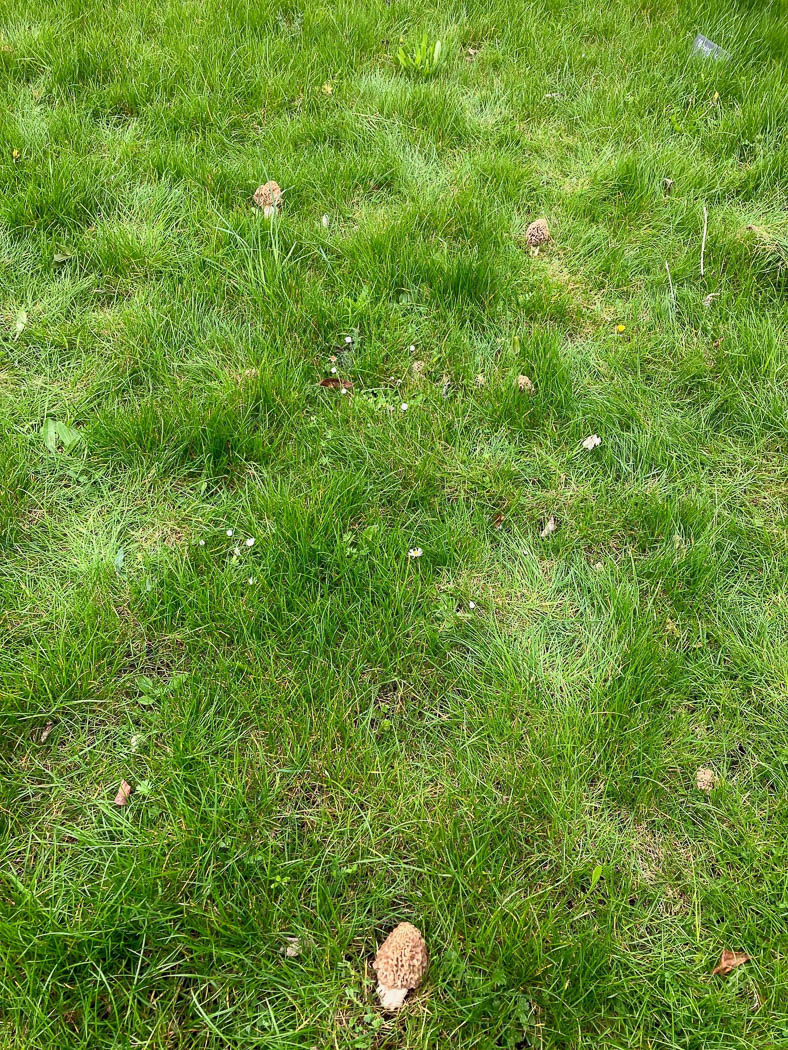
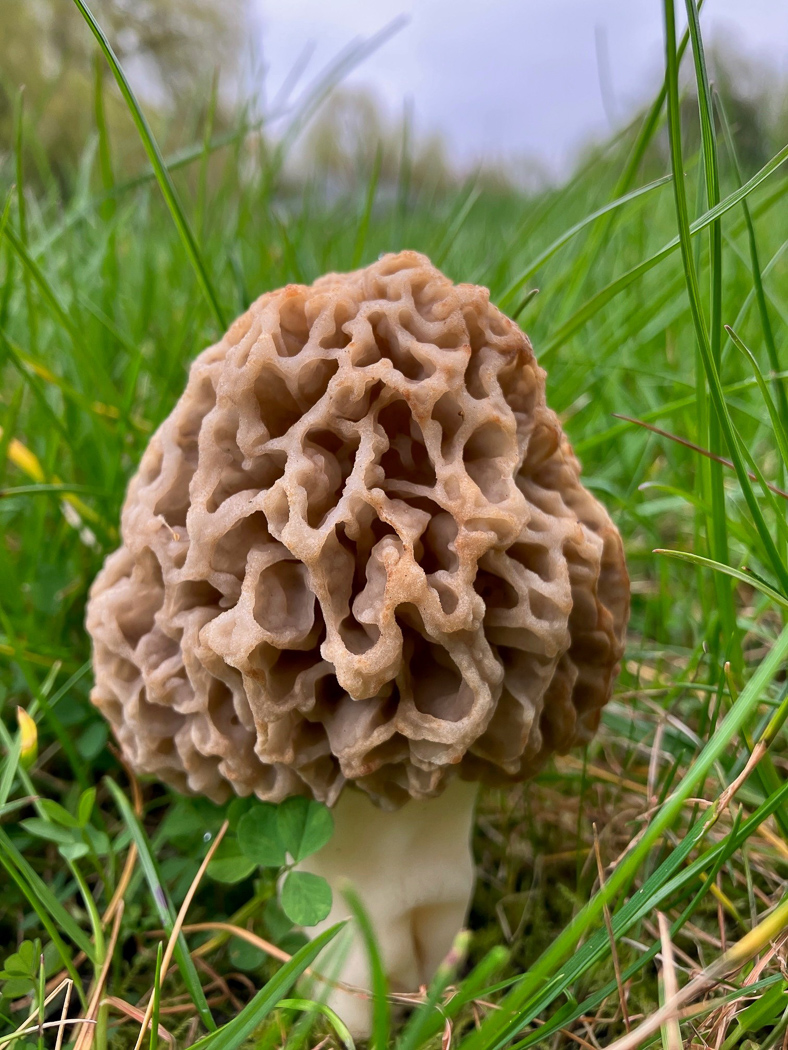
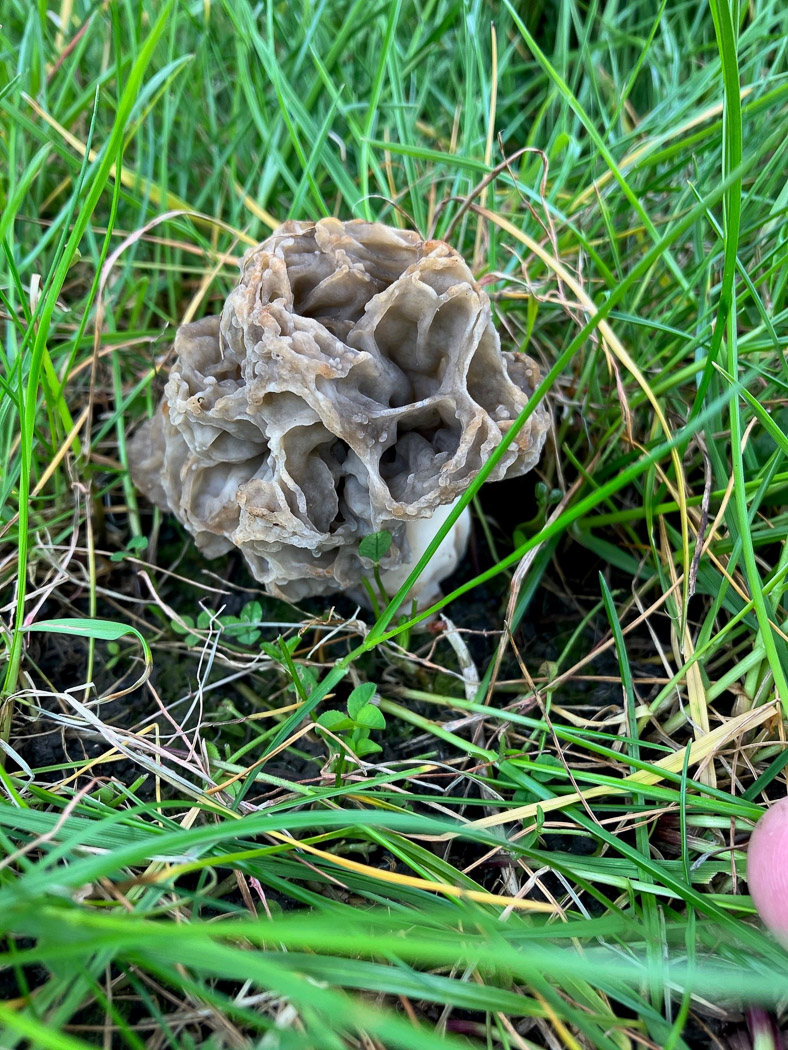
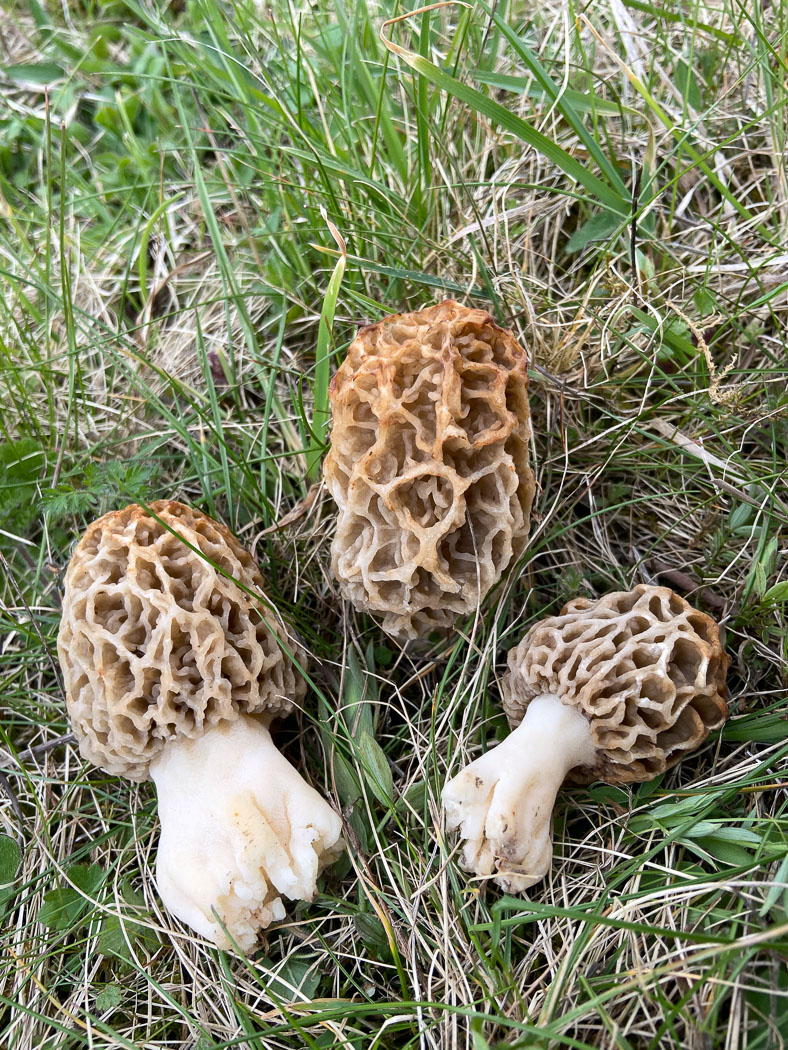
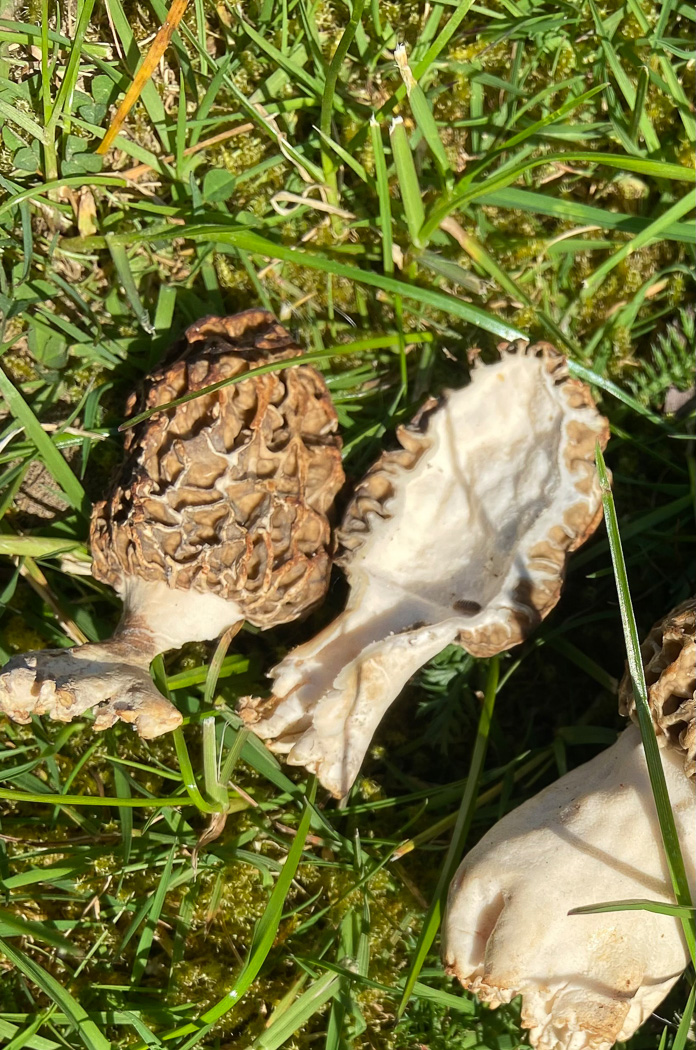
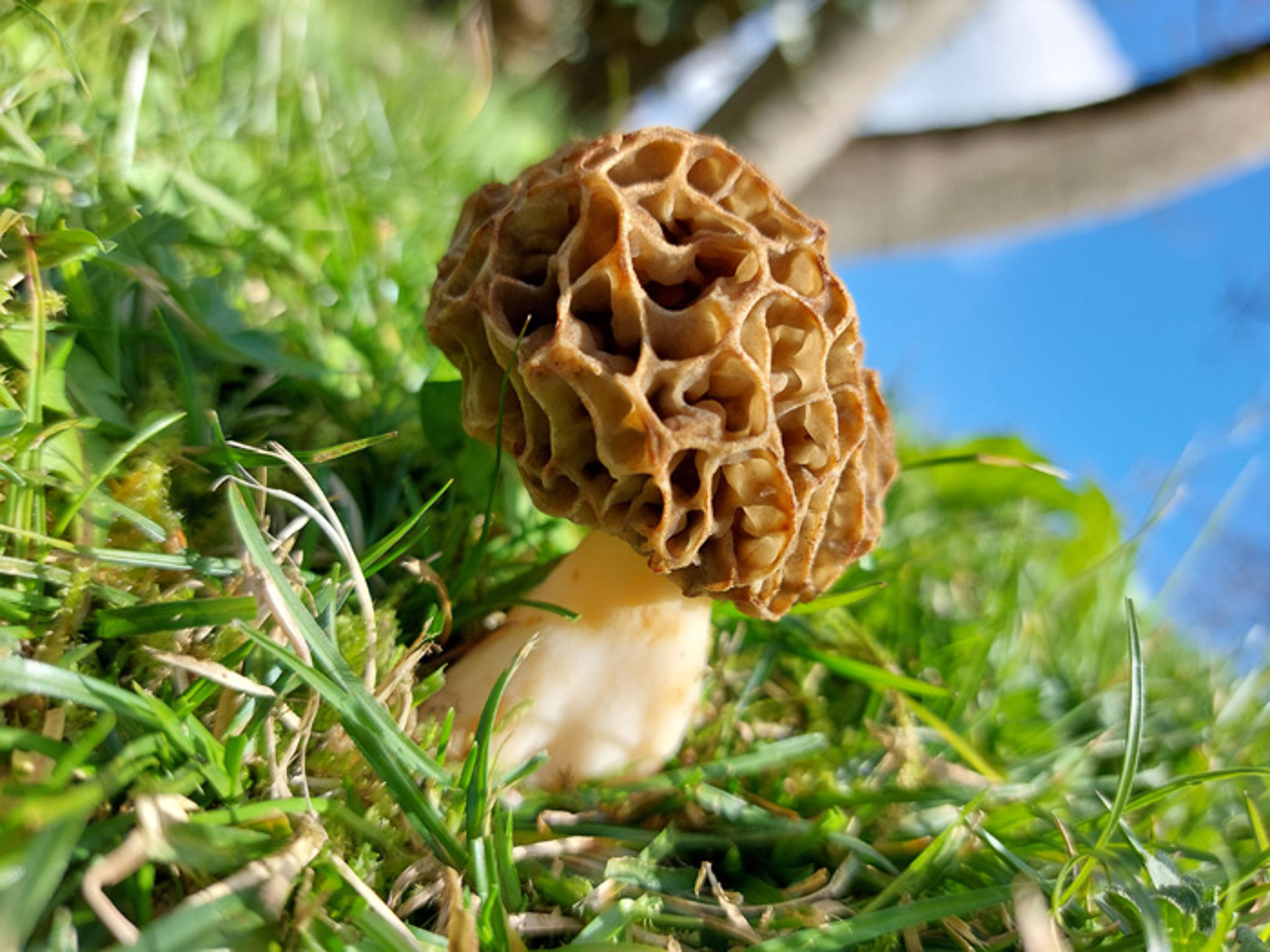
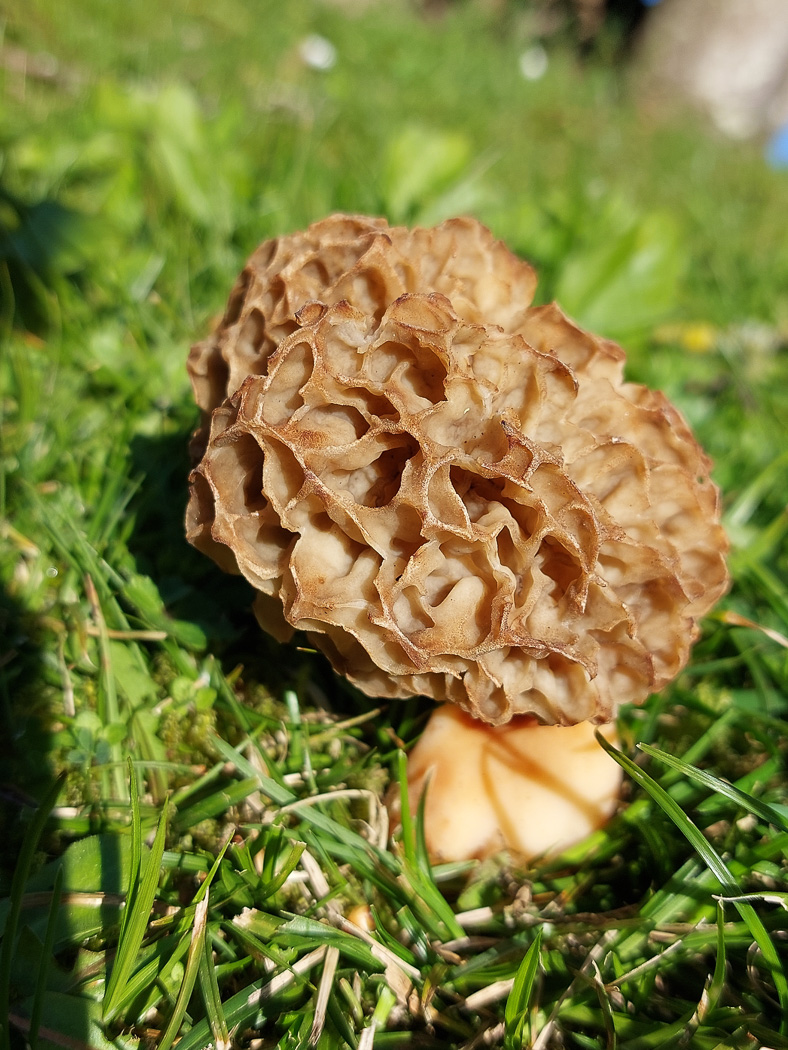 |
Morcella esculenta (Morel)
Apr 8, 2024. On a spot near Princes Risborough where she saw this species in good numbers last year, Sarah Ebdon went searching for Morels again and found just this one rather squat example. There are good years and bad years for these springtime fruiters; last year was especially good but this year seems not nearly so prolific. There's still time, however, but they remain as elusive and unpredictable as ever.
Apr 19, 2023. Justin Long received a tip off about a beautiful array of Morels fruiting now in Milton Keynes (site not specified for obvious reason). He found at least 20 specimens there though no trees nearby with which they could be associating, but he learnt later that there had previously been apple trees in the vicinity. Noticing the specimens had a distinct spermatic smell, he consulted Jesper Launder (who knows his Morels) and after sharing the photos they agreed that this was not the more common M. esculenta but the much more unusual M. vulgaris for which we have just one unsubstantiated county record from 1991! Photos 4 and 5 were sent in after Justin's and were found the previous day by Sarah Ebdon near Princes Risborough and also checked by Jesper. Penny is green with envy, never having found a collection of Morels like these! Justin's collection has now been sequenced and confirmed though only at 98.3 % which is less convincing than one would like - normally sequences come back at over 99% if a good match is accepted so there is an element of doubt here still.
Apr 7, 2023. In Gerrards Cross Jesper Launder came across this beauty growing under Acer. After some doubts as to which species to name it and returning a few days later to take a sample for possible sequencing (photo 2), he is now confident that this is M. esculenta and not one of the rarer species as he initially suspected. The members of this distinctive spring genus of Ascos are often surprisingly tricky to name to species and microscopic details do not help that much. Though this is by no means a rare species we seem to have only one previous county record this century which is rather a surprise. So this is another new entry for Finds
|
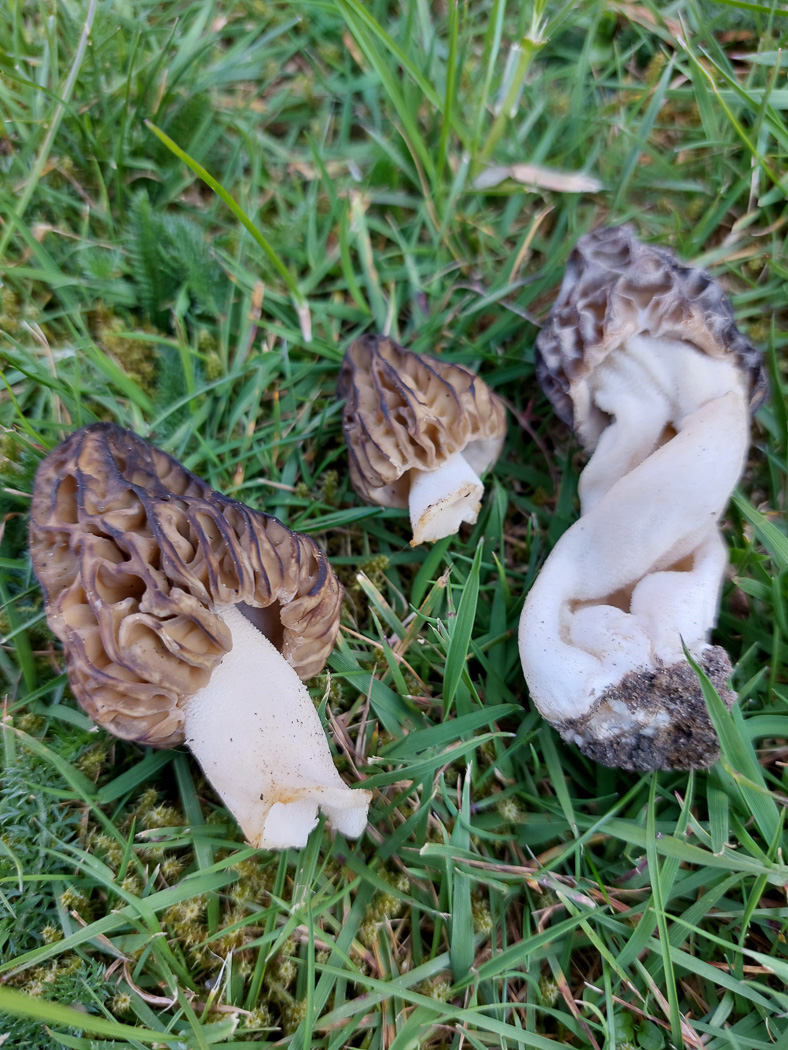
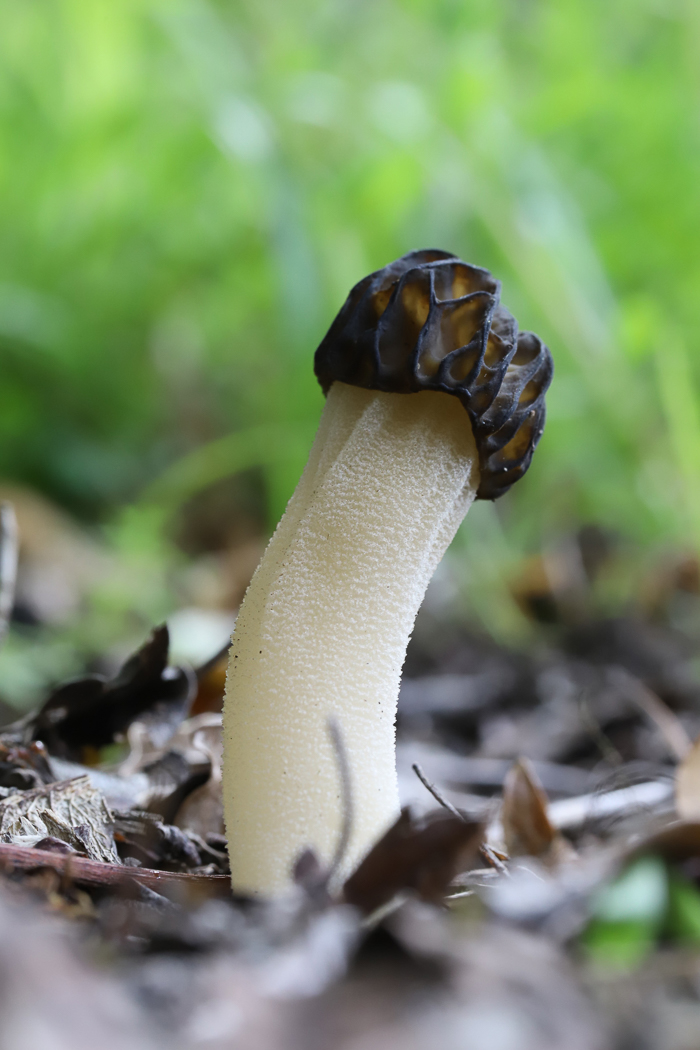 |
Morchella semilibera (Semifree Morel)
Apr 19, 2023. Jesper Launder and Sarah Ebdon went searching in the Aylesbury area and amongst some woodchip they found this species (previously in genus Mitrophora) - the last needed to complete our full house of Morel species found and featured in Finds during the last month! We have more county records of this species than any of the others though it is still by no means common - as a group Morels are generally considered some of the most unpredictable fruiters though all appear only in the Spring and this years seems to have been particularly prolific. Today's species is sort of half way between a 'true' Morel and Verpa conica. Like that species it tends to have a longer stem and smaller body than other Morels, i.e. different proportions, also the base of the body is not attached to the stem (hence 'semifree') whereas in other 'true' Morels the base folds under and is attached to the stem. It does, however, have the ridged body of other Morels in contrast to the merely wrinkled surface of V. conica. Previously in genus Mitrophora, this is a new species for Finds, but useful comparisons of the different Morel species can be made by browsing through our last few weeks of images. Photo 2 was taken by Philip Townsend 10 days later at Ragpits BBOWT Reserve.
|




 |
Morchella vulgaris (an unusual Morel with no common name) 
Apr 19, 2023. Justin Long received a tip off about a beautiful array of Morels fruiting now in Milton Keynes (site not specified for obvious reason). He found at least 20 specimens there though no trees nearby with which they could be associating, but he learnt later that there had previously been apple trees in the vicinity. Noticing the specimens had a distinct spermatic smell, he consulted Jesper Launder (who knows his Morels) and after sharing the photos they agreed that this was not the more common M. esculenta but the much more unusual M. vulgaris for which we have just one unsubstantiated county record from 1991! Photos 4 and 5 were sent in after Justin's and were found the previous day by Sarah Ebdon near Princes Risborough and also checked by Jesper. Penny is green with envy, never having found a collection of Morels like these! Justin's collection has now been sequenced and confirmed though only at 98.3 % which is less convincing than one would like - normally sequences come back at over 99% if a good match is accepted so there is an element of doubt here still.
|
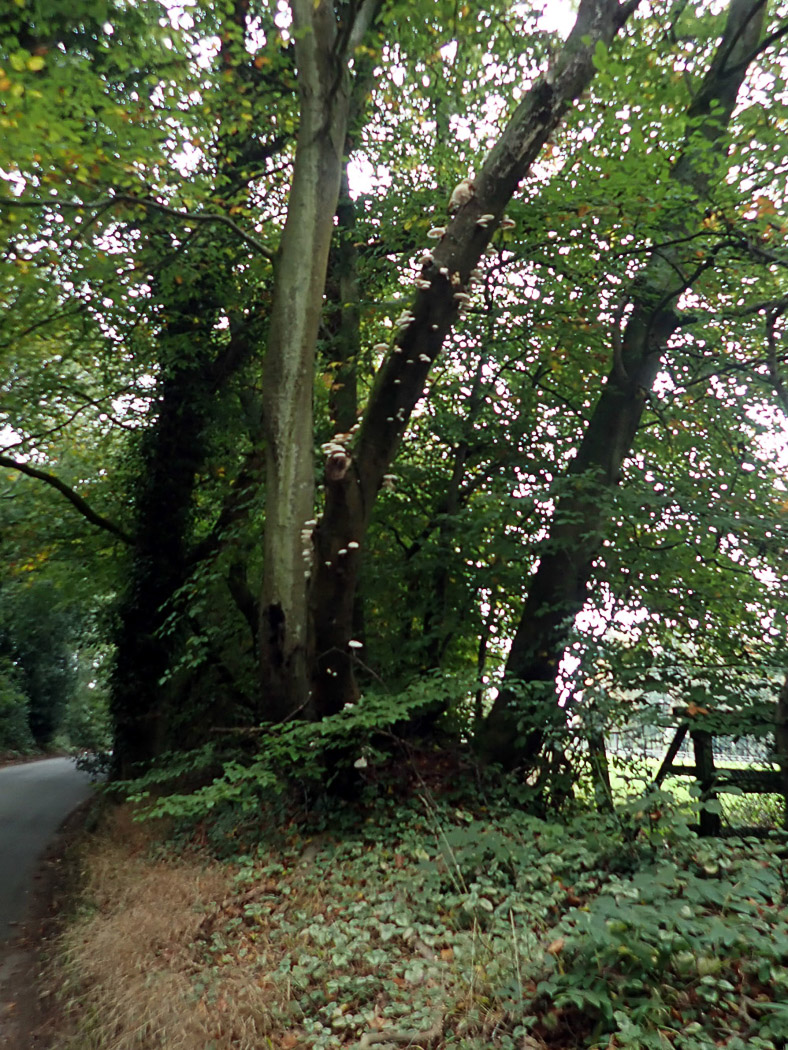
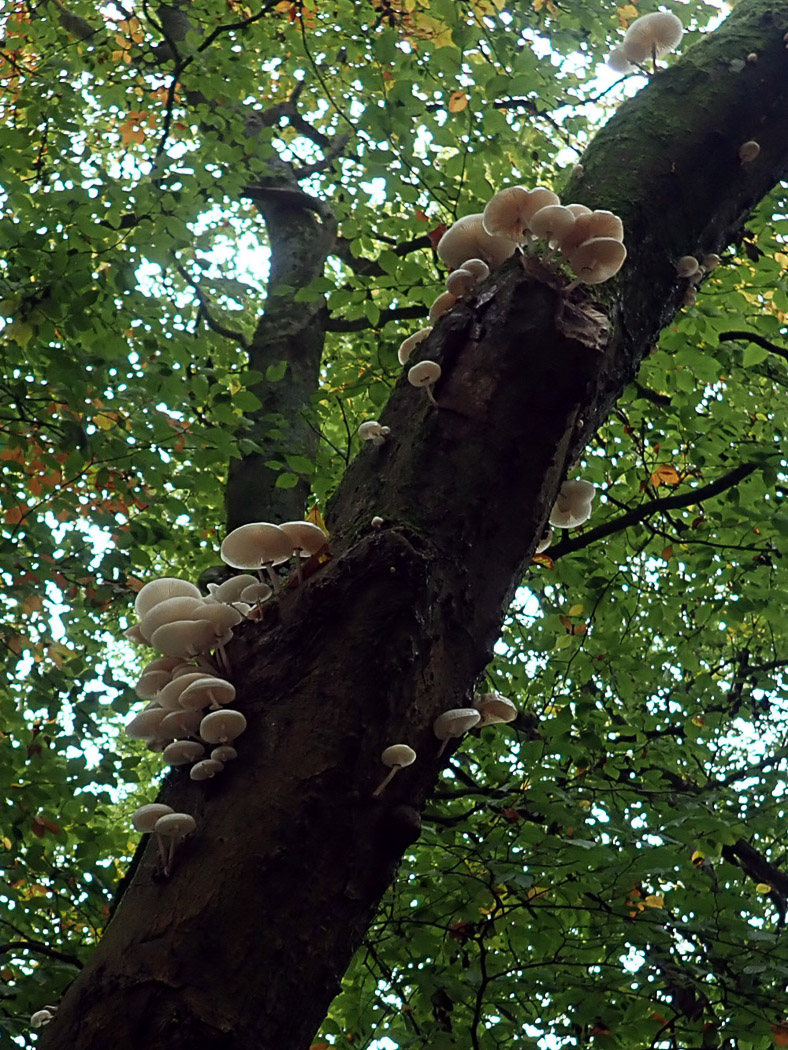
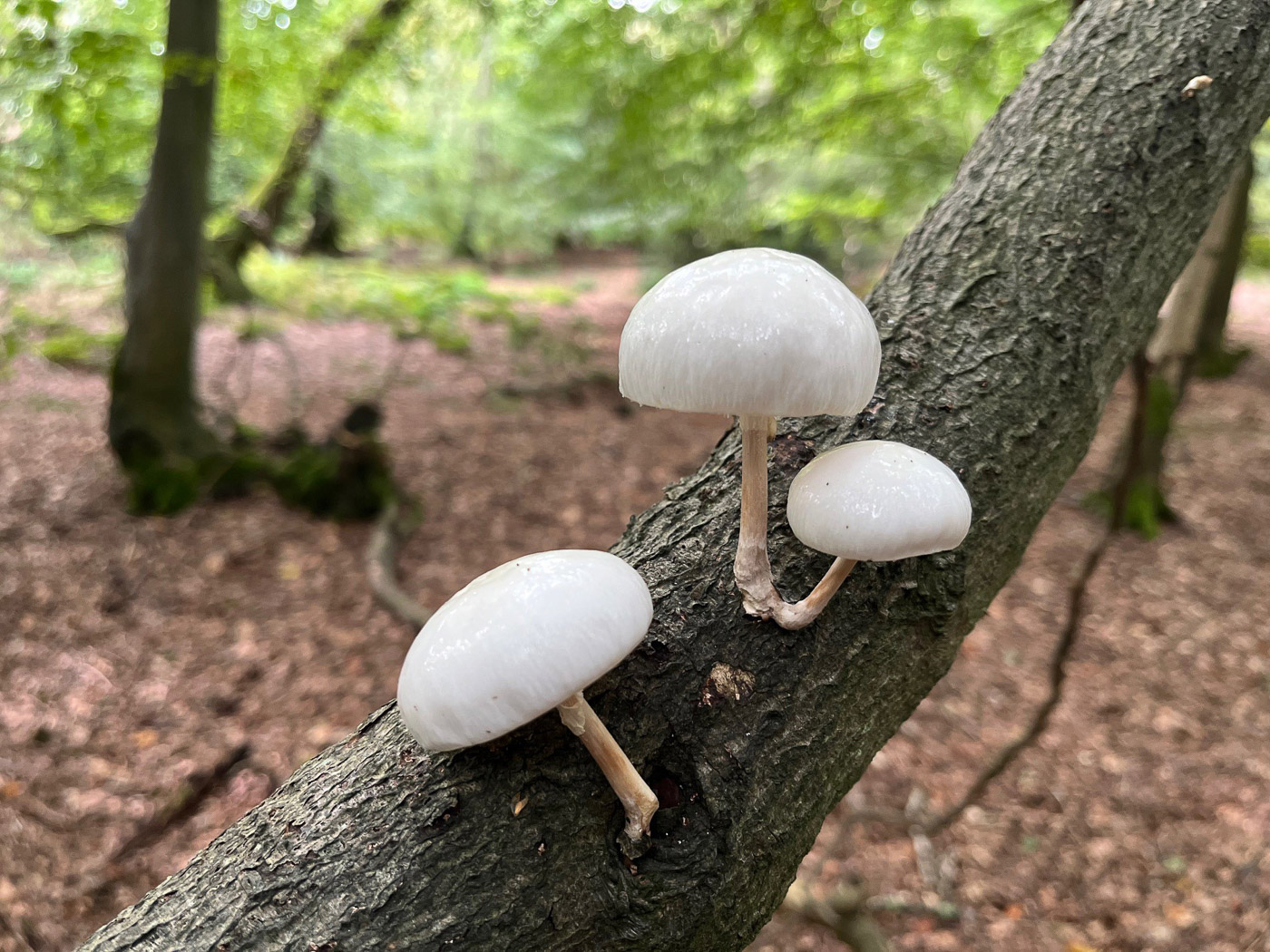
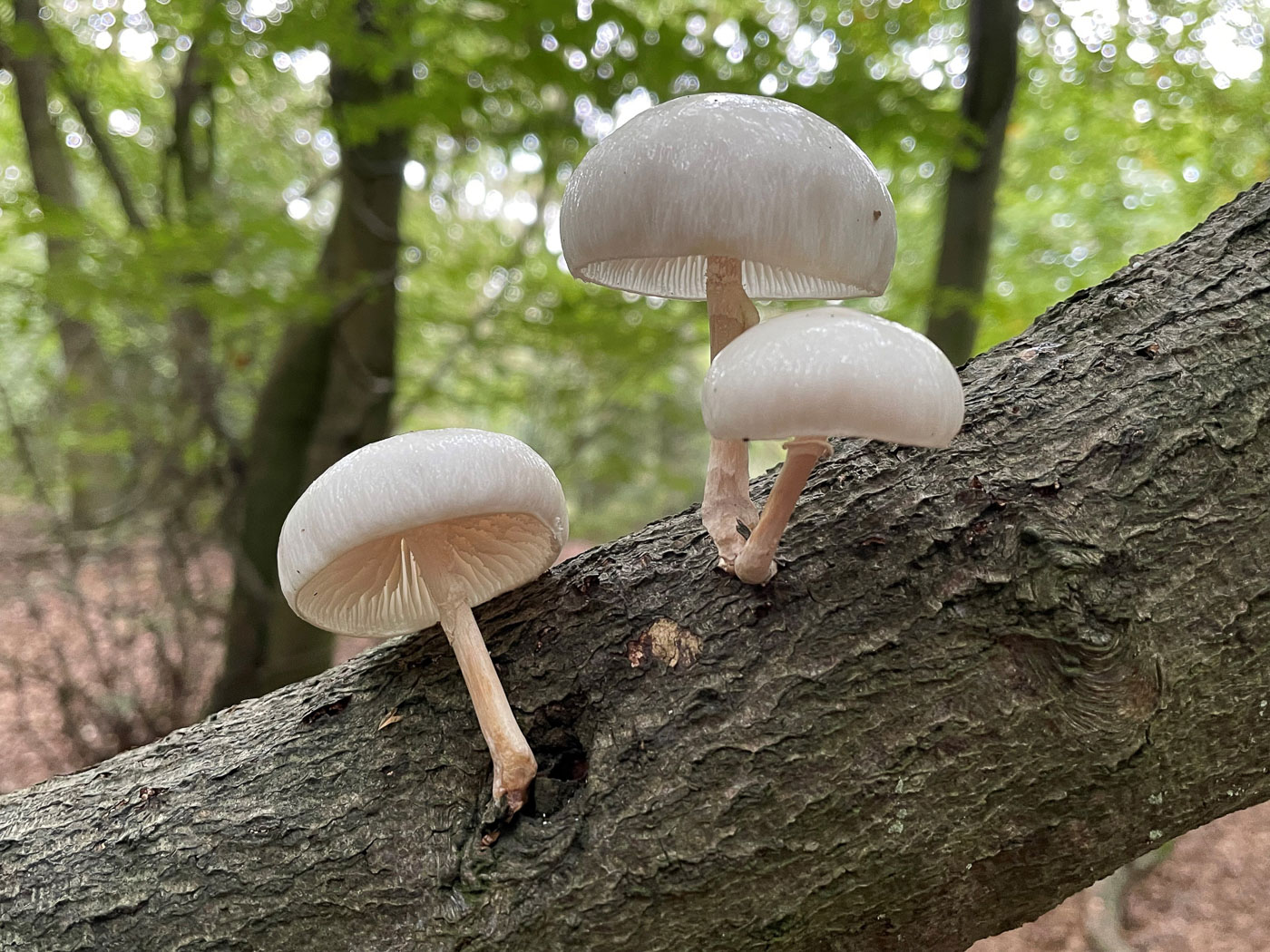
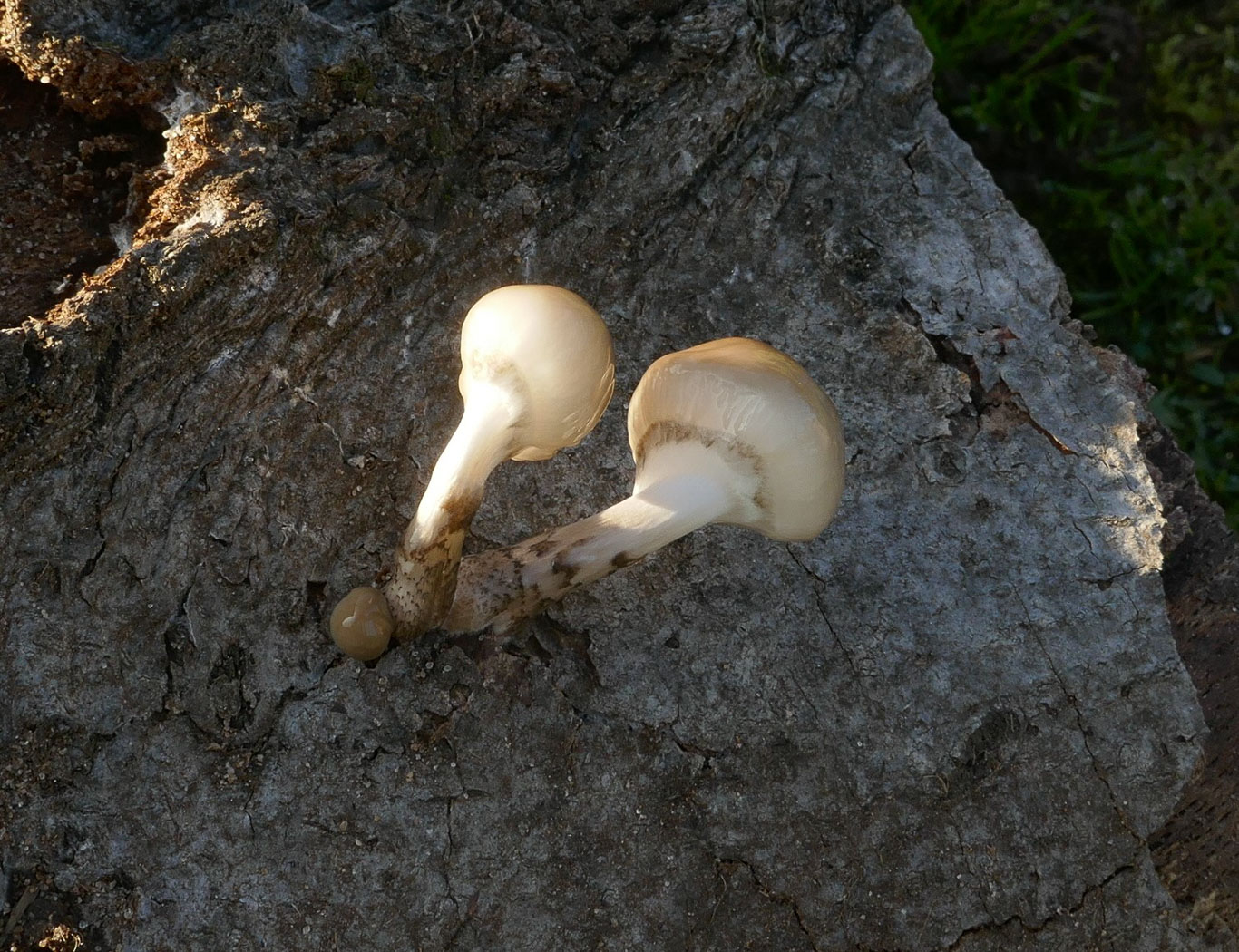
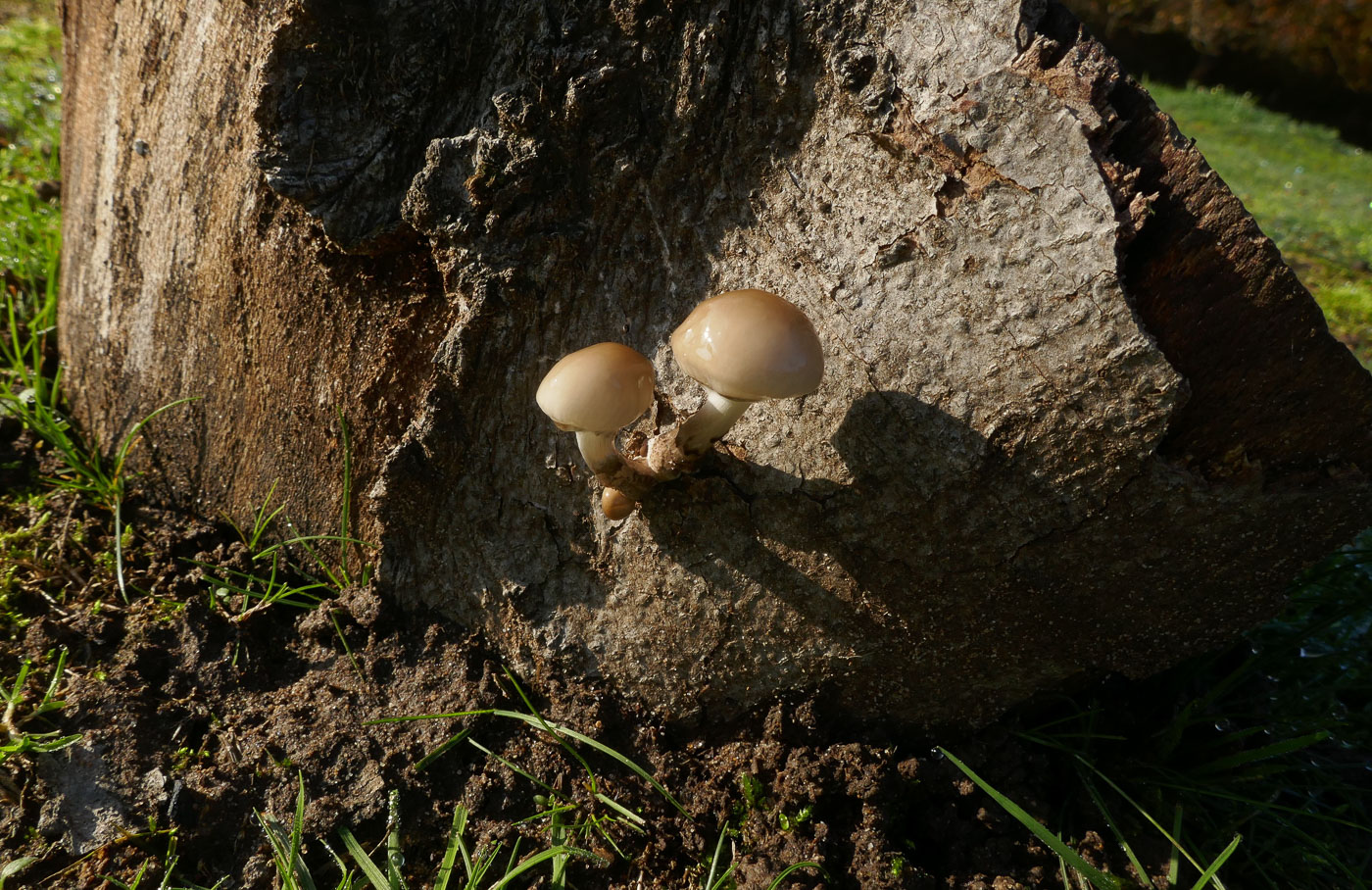
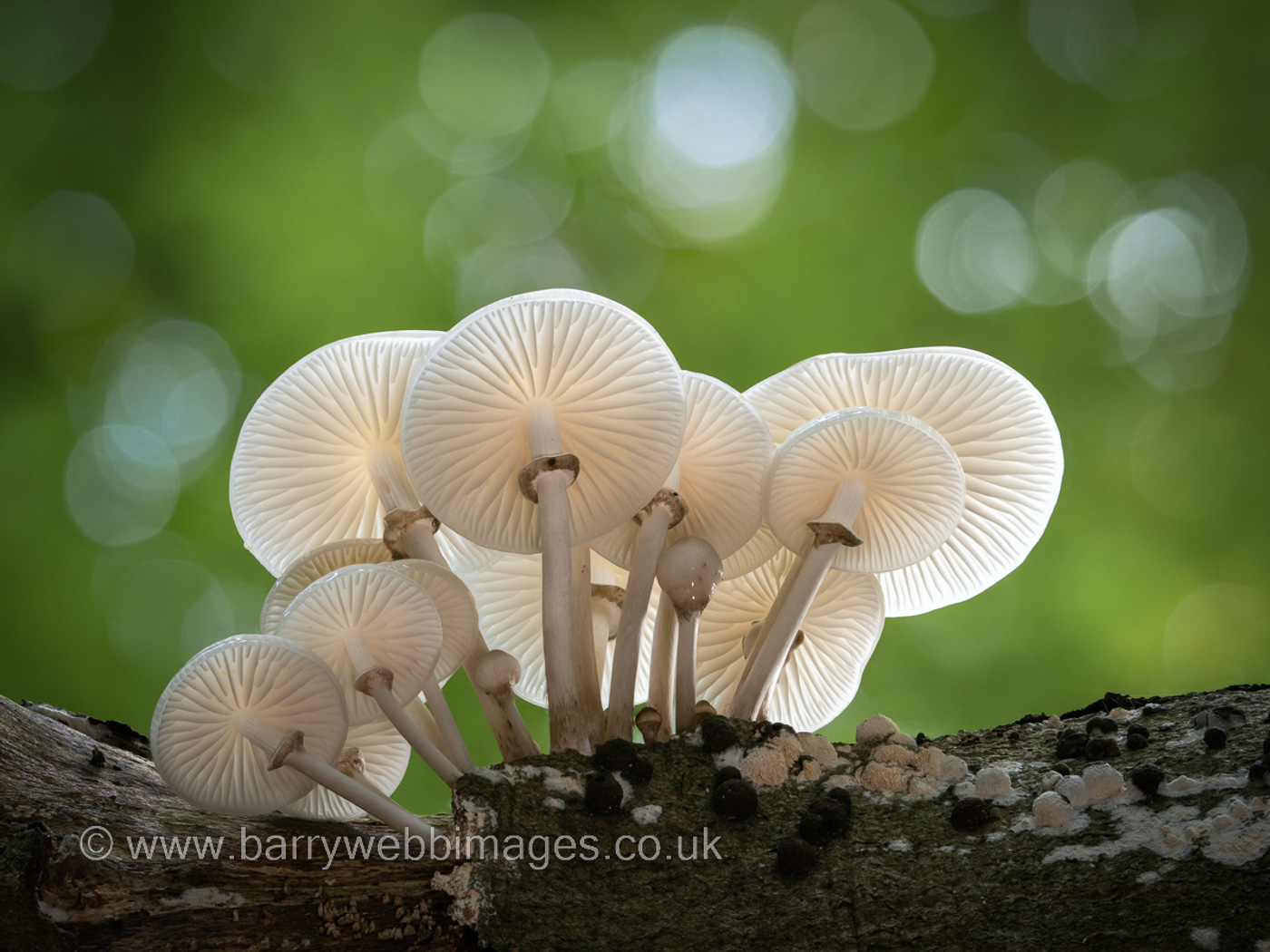
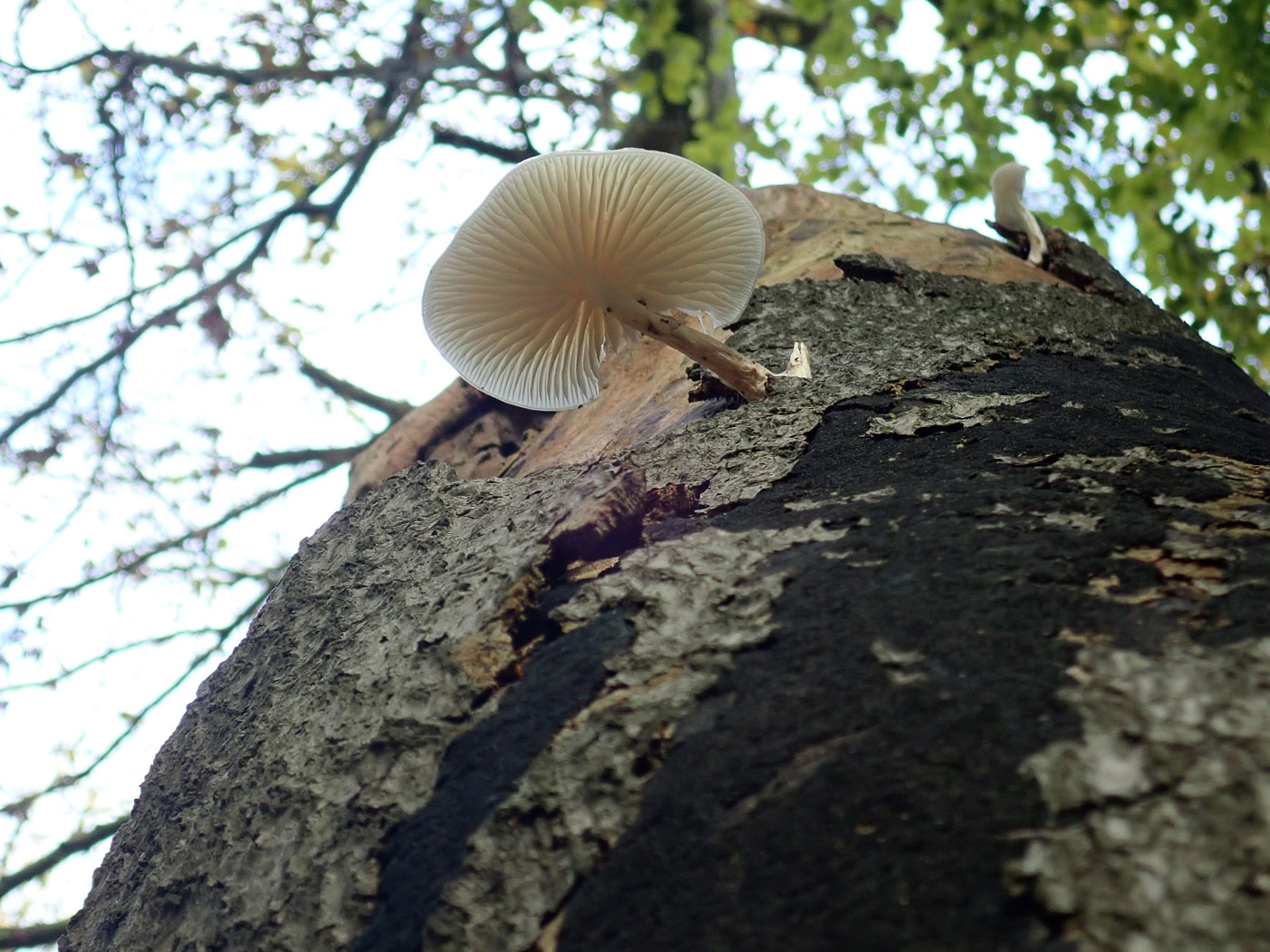
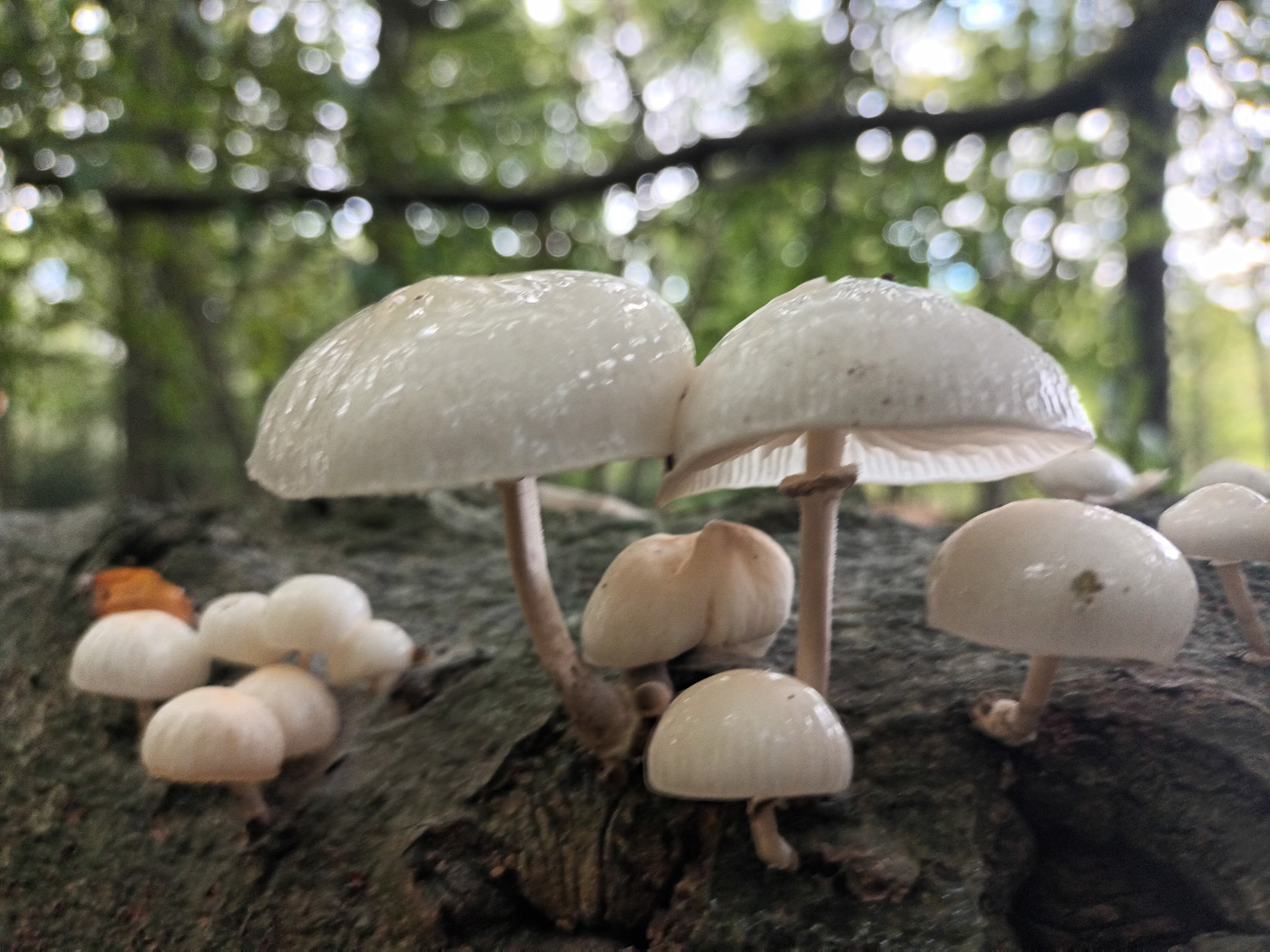
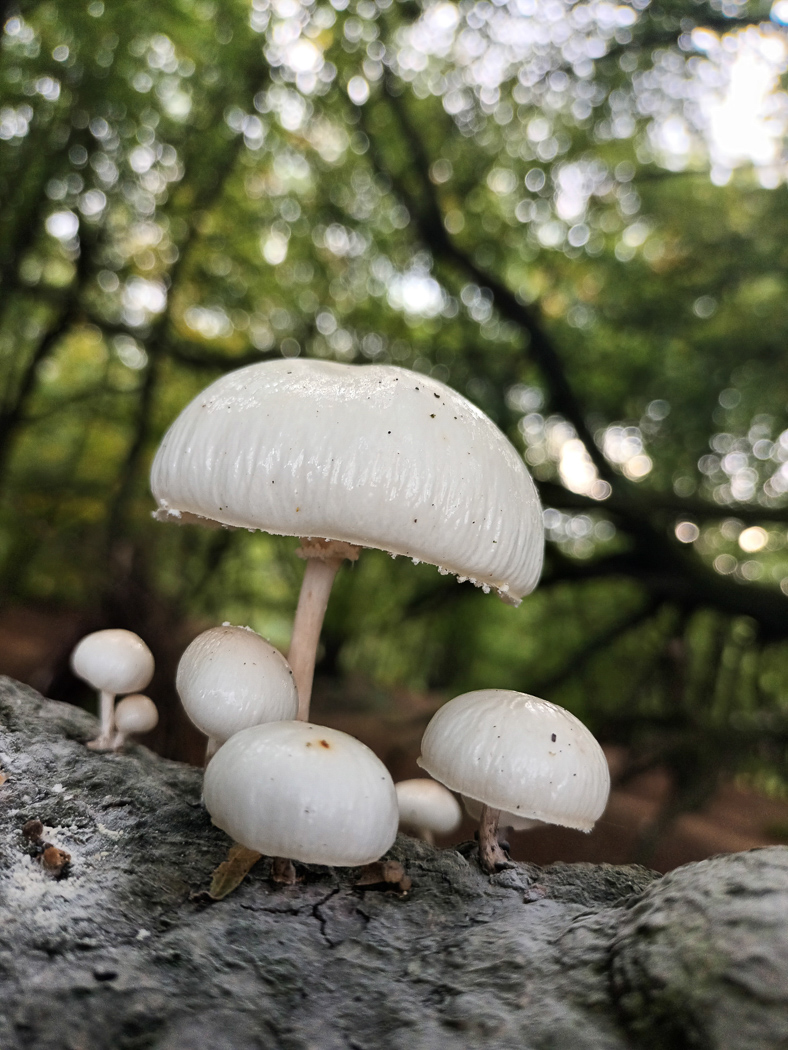
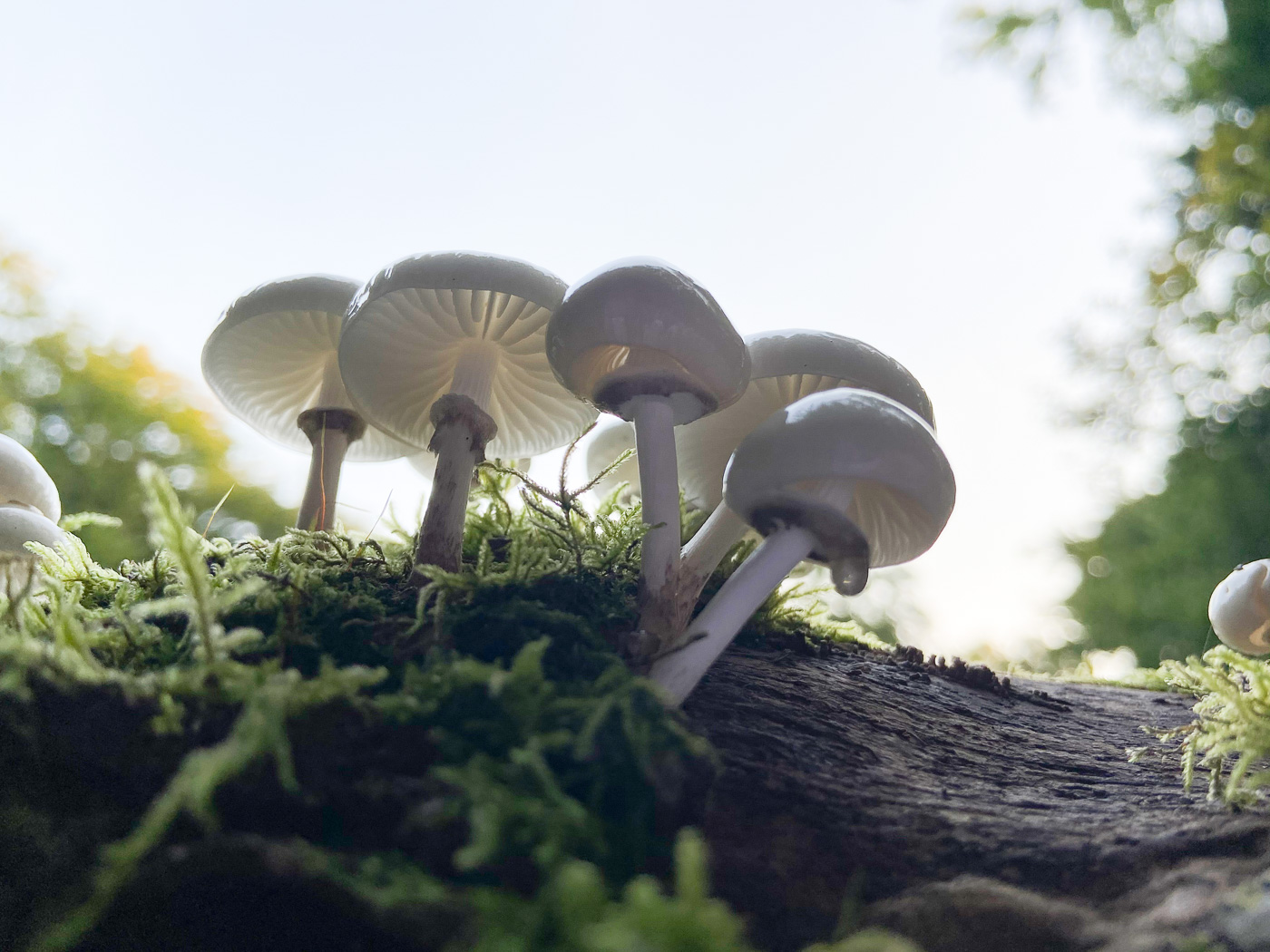
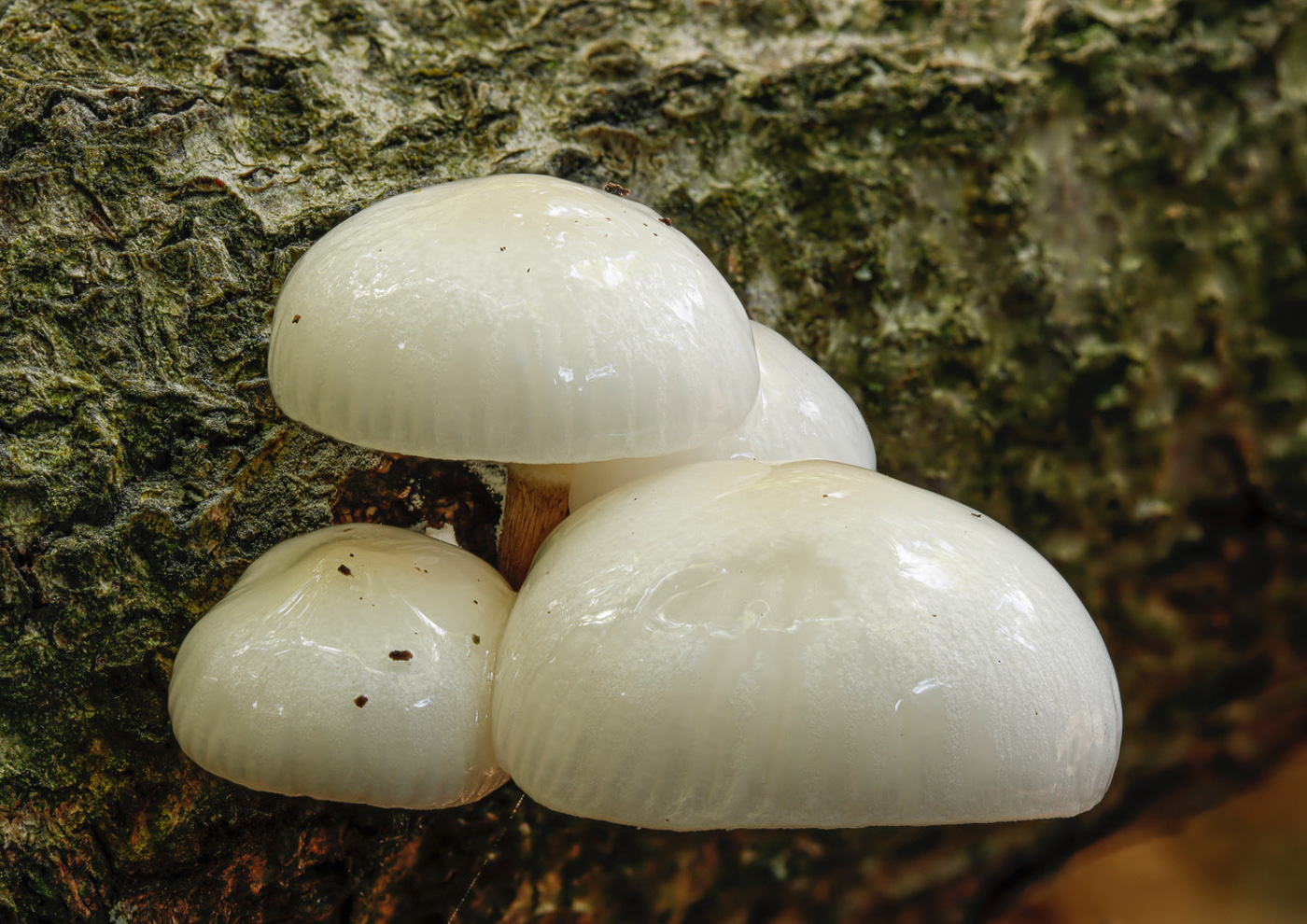
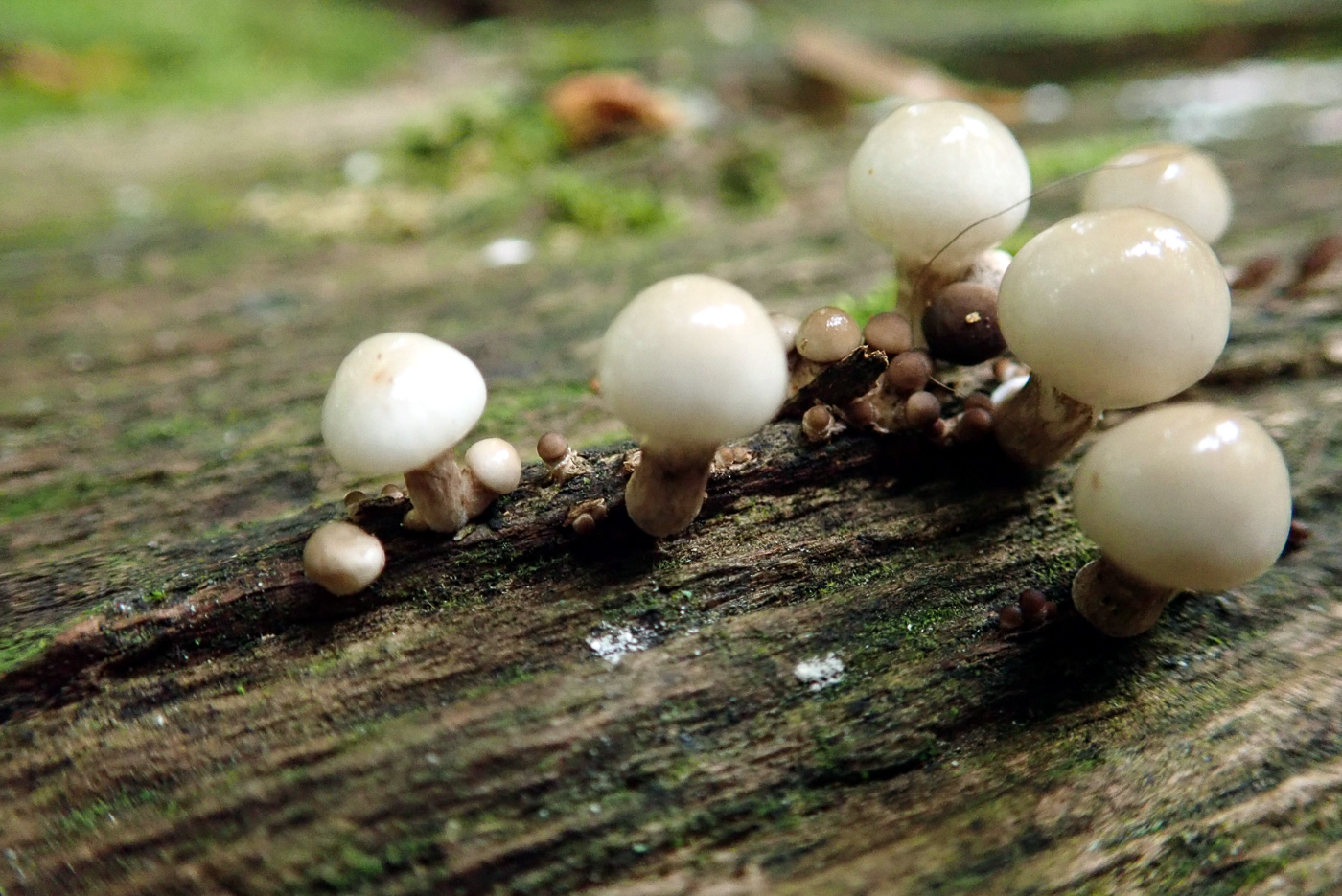
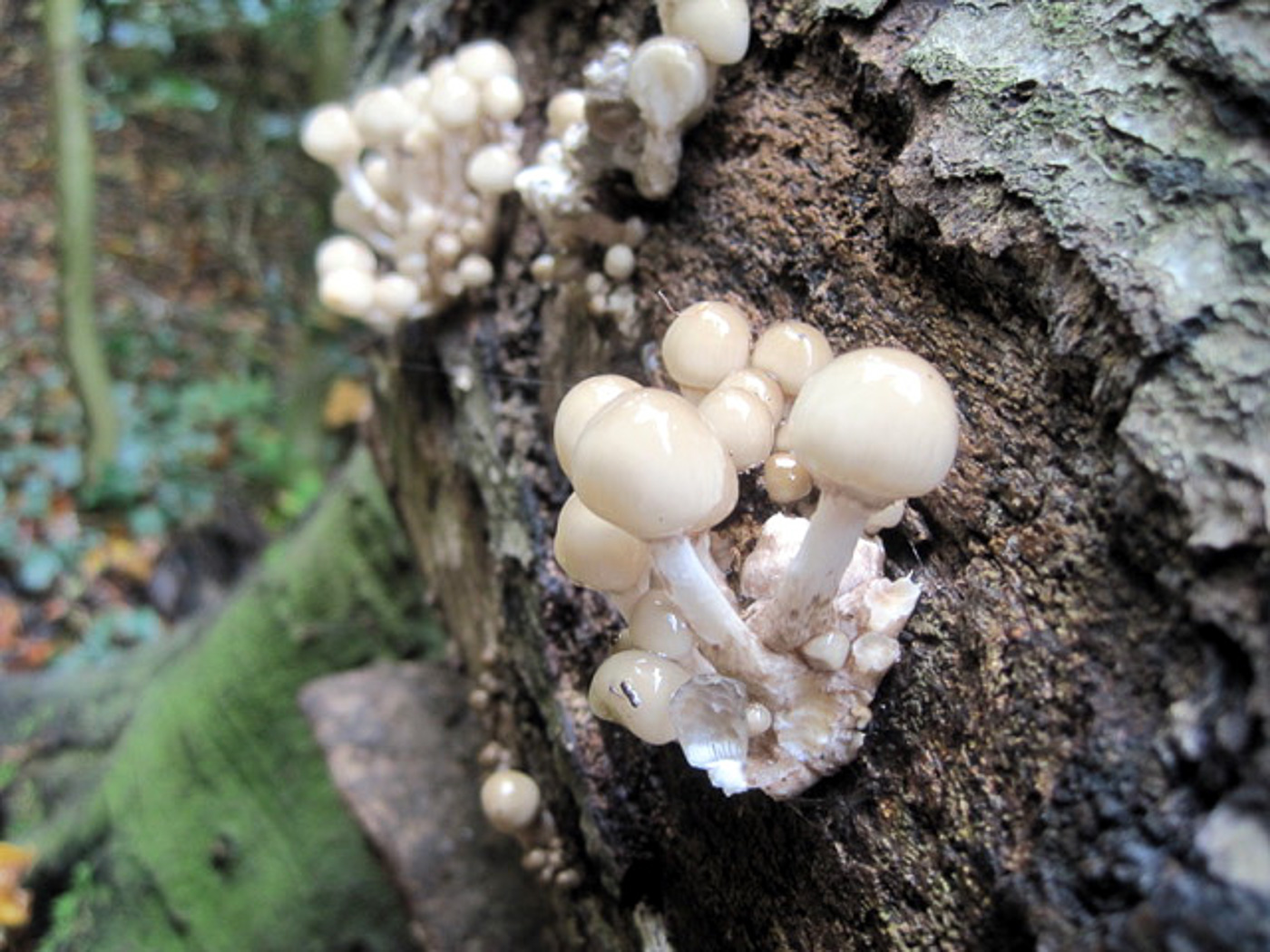
|
Mucidula mucida (Porcelain Fungus)
Oct 11, 2023. Near Marlow Common whilst driving, Penny screeched to a halt when this dying Beech covered in white mushrooms caught her eye! There were too many to count - a sight for sore eyes! It is not unusual to see this attractive but very slimy species growing on standing Beech both live and dead, nor to find it on fallen Beech or even apparently on the ground when it's dropped off a branch from above. It is only found on Beech, however. (It was previously in genus Oudemansiella.)
Oct 4, 2023. Whilst leading a walk for the Chiltern Society at Coombe Hill Penny found this common Chiltern species on living Beech branches. Though the first examples were dry and not photogenic, eventually this nice cluster was found. Since Penny's camera refused to focus, Amanda Barnicoat - one of the attendees - kindly came to the rescue with her phone: the collection was too photogenic to miss!
Dec 1, 2022. On a Beech log at Stampwell Farm Jackie Ewan noticed this late though fresh fruiting. The species (previously in genus Oudemansiella) is easy to recognise when mature, being shiny white translucent, very slimy and with a ring on the stem, always on Beech, but can confuse when immature. Hence these useful images showing the ring not yet formed as such but still attached to the cap edge to protect the young gills, also the grey-brown cap colour - see the tiny button visible at the stem base in photo 1, also the larger caps in photo 2.
Oct 5, 2022. At Burnham Beeches Barry Webb was spoilt for choice over which example of this beautiful and very slimy species to photograph. It only occurs on Beech - both standing and fallen - and, as can clearly be seen here, with the light behind it the mature caps are virtually translucent, hence its common name. Note also the greyish ring on the stem and the two tiny immature unopened specimens lurking underneath the cluster. What a stunning photograph! We have other images on Finds but none to compare with this one.
Oct 14, 2021. Better known as Oudemansiella mucida, this species is just beginning to make an appearance in this area (though Penny has had reports of a Beech at Whipsnade Zoo smothered in over 200 fruitbodies!). Photo 1 is of just one example spotted high up in a Beech at Whiteleaf Wood found by Penny and though not the most impressive example it shows the almost transparent cap when the light is behind it and also its habit of inhabiting living Beech, its sole host, often very high up. A day later Penny received Jesper Launder's lovely shots taken on fallen Beech in Hodgemoor Woods. Note the slimy cap surface and stem ring, both diagnostic features. There can be confusion when specimens are found apparently not on wood but on the ground - these will have fallen from the Beech above often from a great height.
Sep 13, 2020. This beautiful and common species (the genus name of which has only recently changed from Oudemansiella) was found on Beech in Naphill Common independently by Sarah Ebdon and Paul Goby. Sarah's photo shows how when viewed from below the cap is almost translucent (like porcelain), the gills are widely spaced and the ring is grey. Paul's photo shows another key feature: the slimy coating on the cap. It occurs on both fallen and living Beech, often way up in the canopy, and can cause problems with identification when mature specimens fall from a height to the ground and thus appear to be ground dwelling rather than wood dwelling.
Oct 13, 2020. We already have nice examples of this dated Sept 13, but here we have photos of the very early 'button' stage of the fungus (on fallen Beech at Gussetts Wood, Penny Cullington) and of developing young fruit bodies (Captain's Wood, Greg Douglas). It's not always easy to identify fungi when they're at a different stage from the examples given in the literature, thus their inclusion here.
|
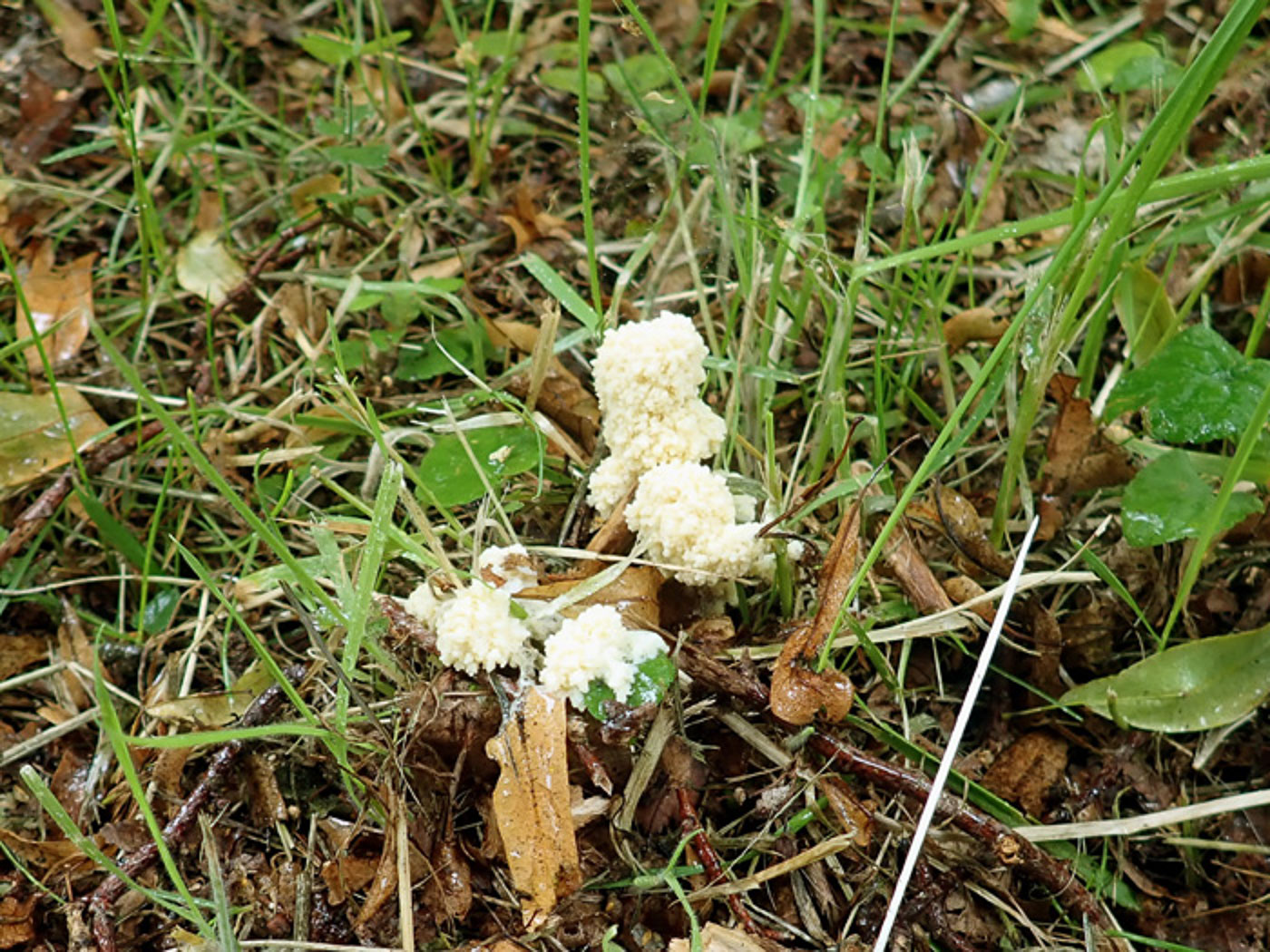
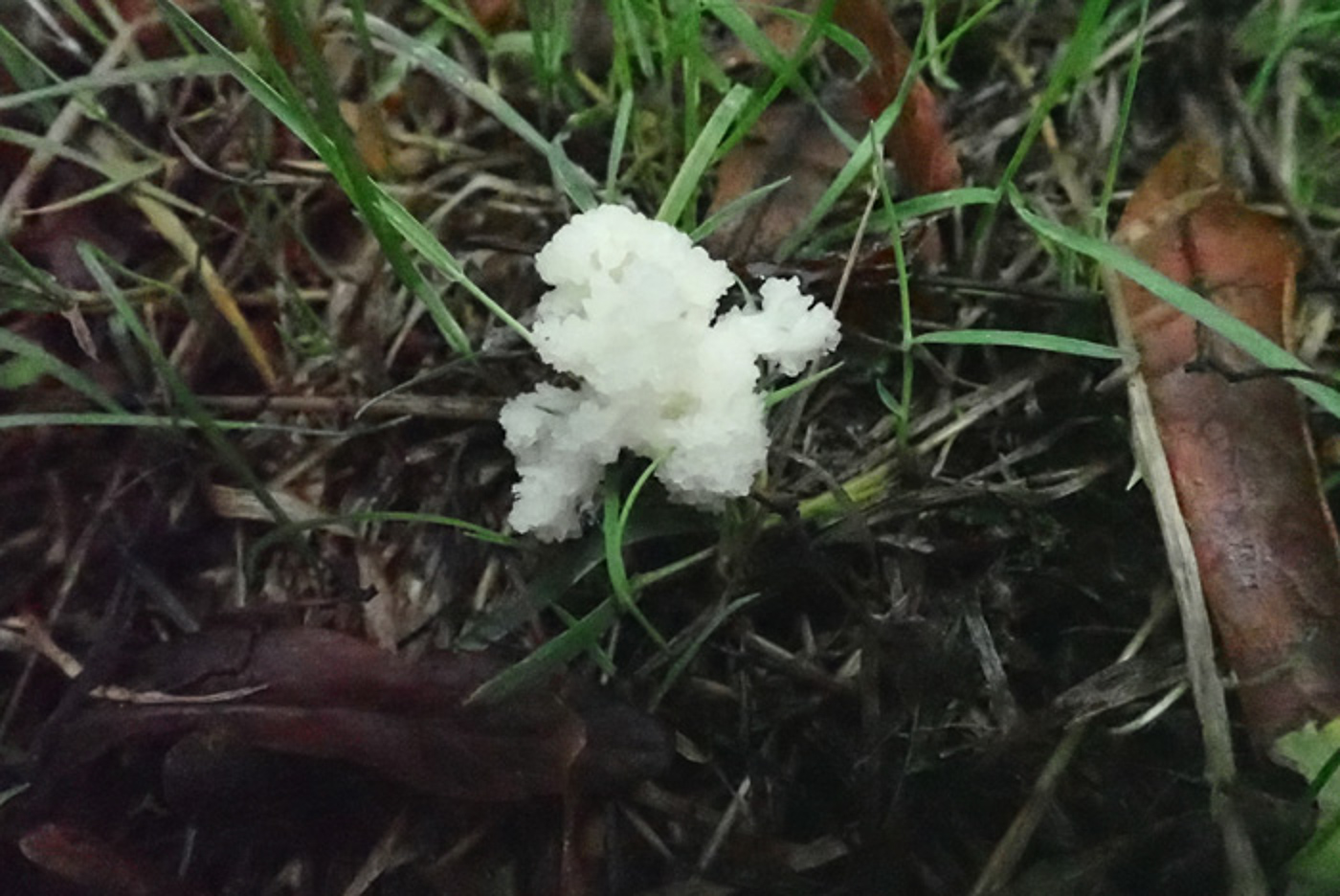
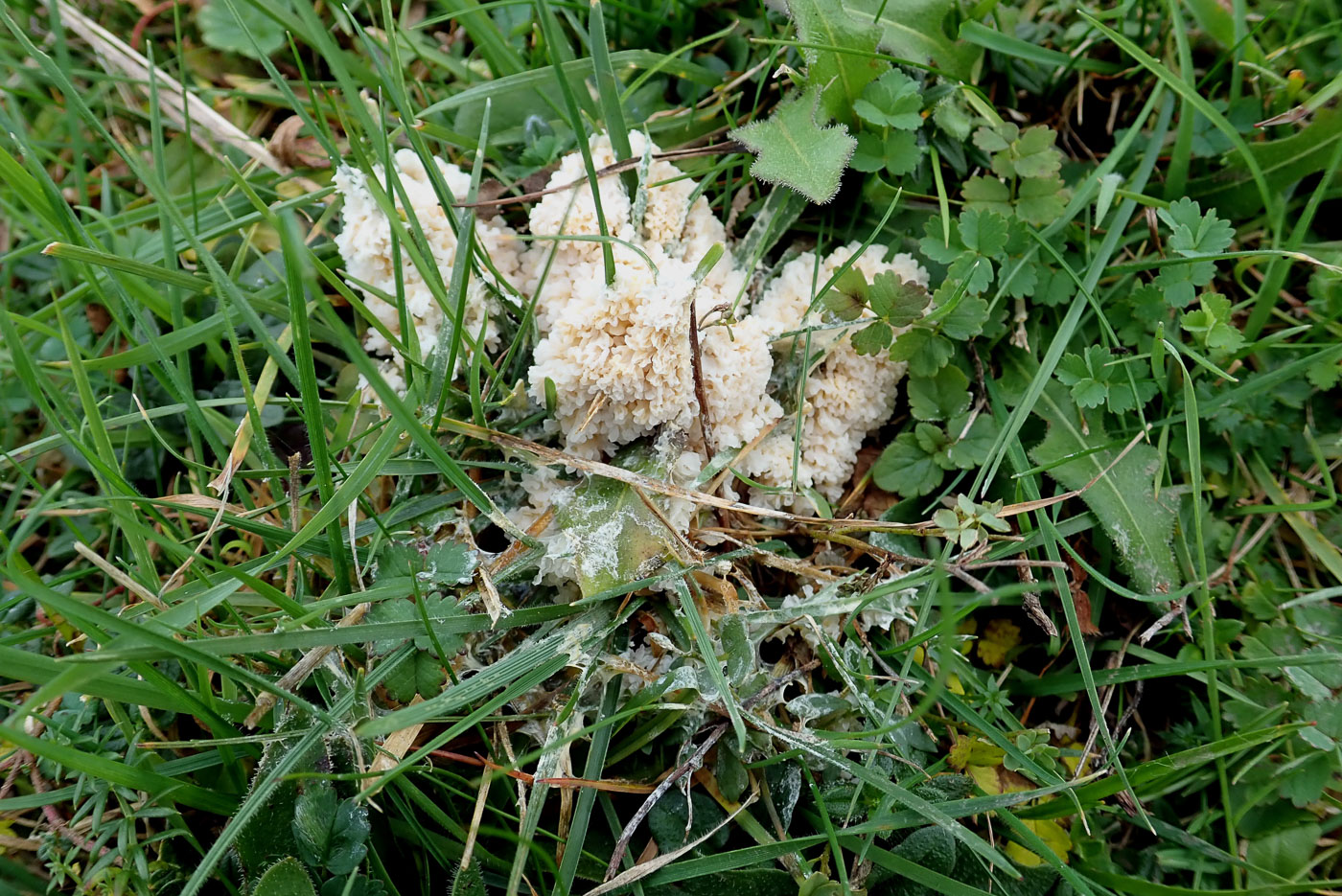
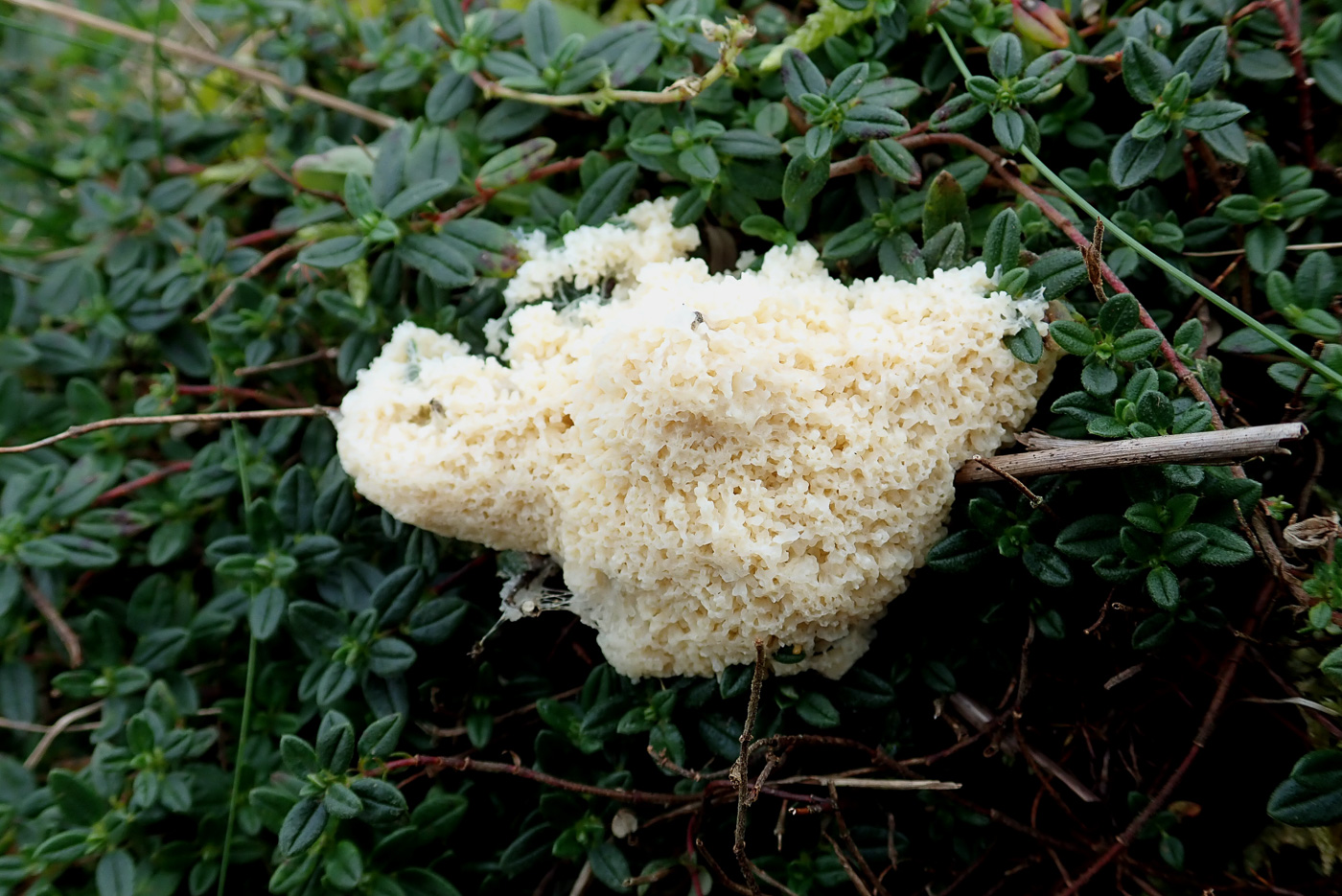
|
Mucilago crustacea (Dog Sick Slime Mould)
Aug 12, 2023. In grass at Turville Heath Penny found this common slime mould spreading over the stems before drying off and becoming crusty. The common name is far more suited to this species than to the bright yellow Fuligo septica var. flava for which it has recently (and in Penny's view) incorrectly been adopted!
Sep 7, 2022. At Turville Heath Penny noticed this small pure white patch - still at an early very slimy stage and 'on the move' - clinging to some vegetation debris as it does. Recently its descriptive though not official common name has confusingly also been applied to the bright yellow and very common slime mould Fuligo septica var. flava - in my opinion better named as Scrambled Egg!
Oct 30, 2020. Penny C. found two small 'piles' of this aptly named Slime Mould growing through vegetation on the escarpment at Coombe Hill. Photo 1 shows it at the very slimy stage, only just settling down having left trails of white as it's moved through the vegetation. Photo 2 is starting to dry off and go crinkly and it will eventually become crumbly to crusty white as the spores develop and blow away.
|
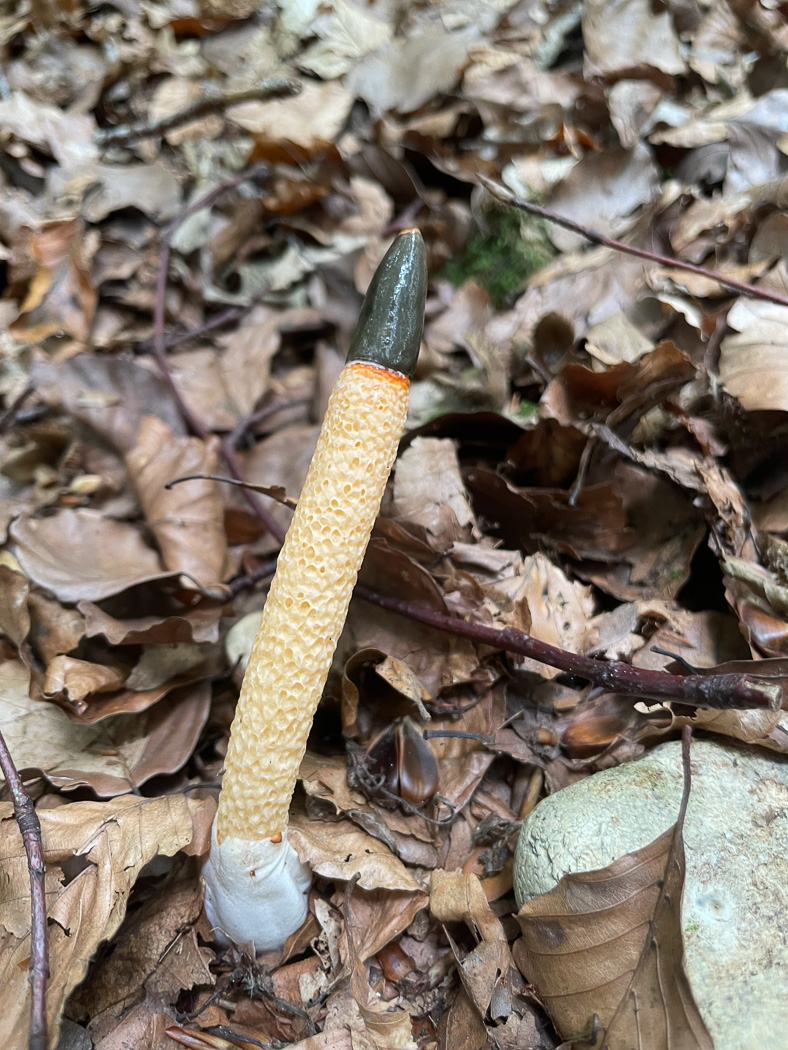
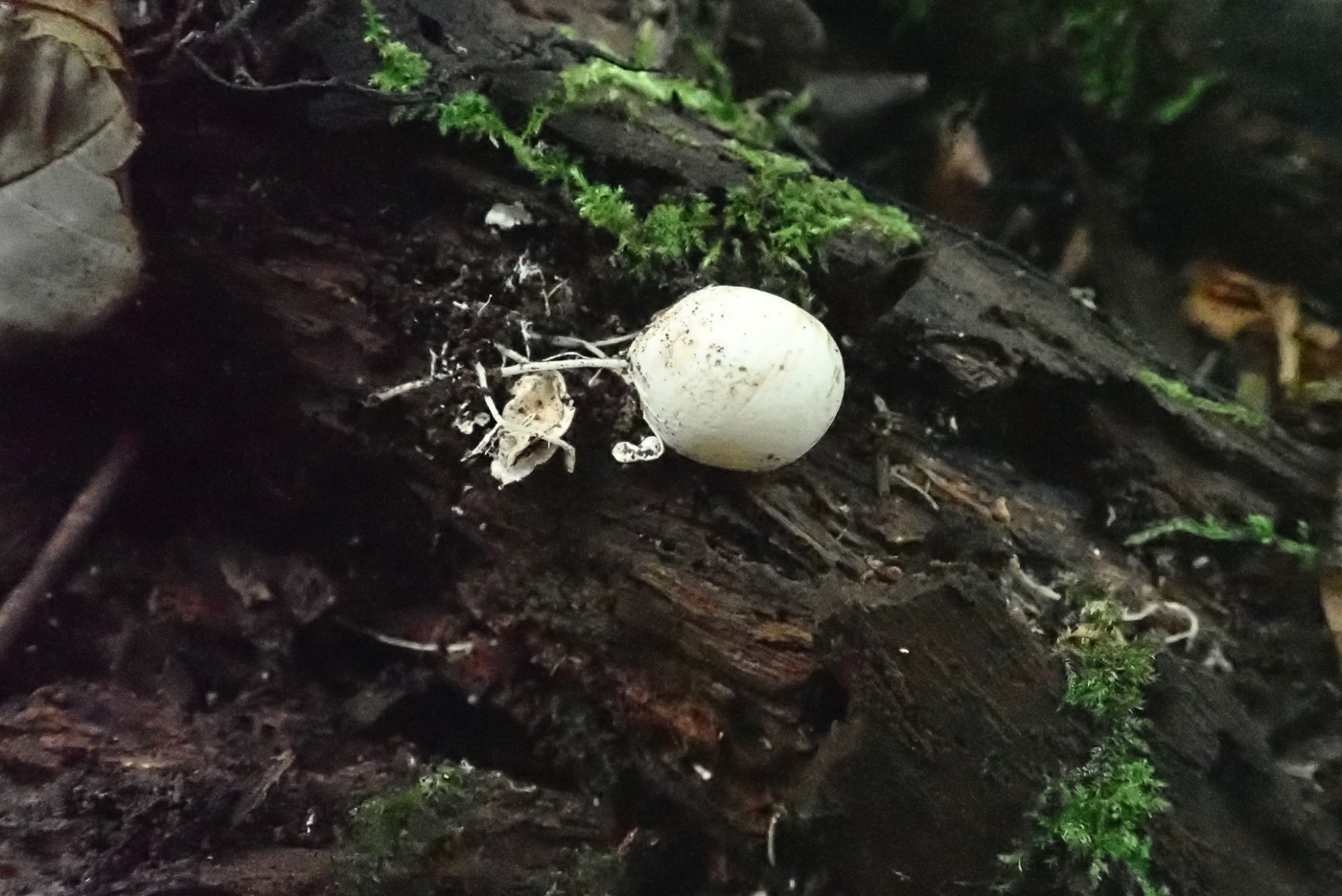
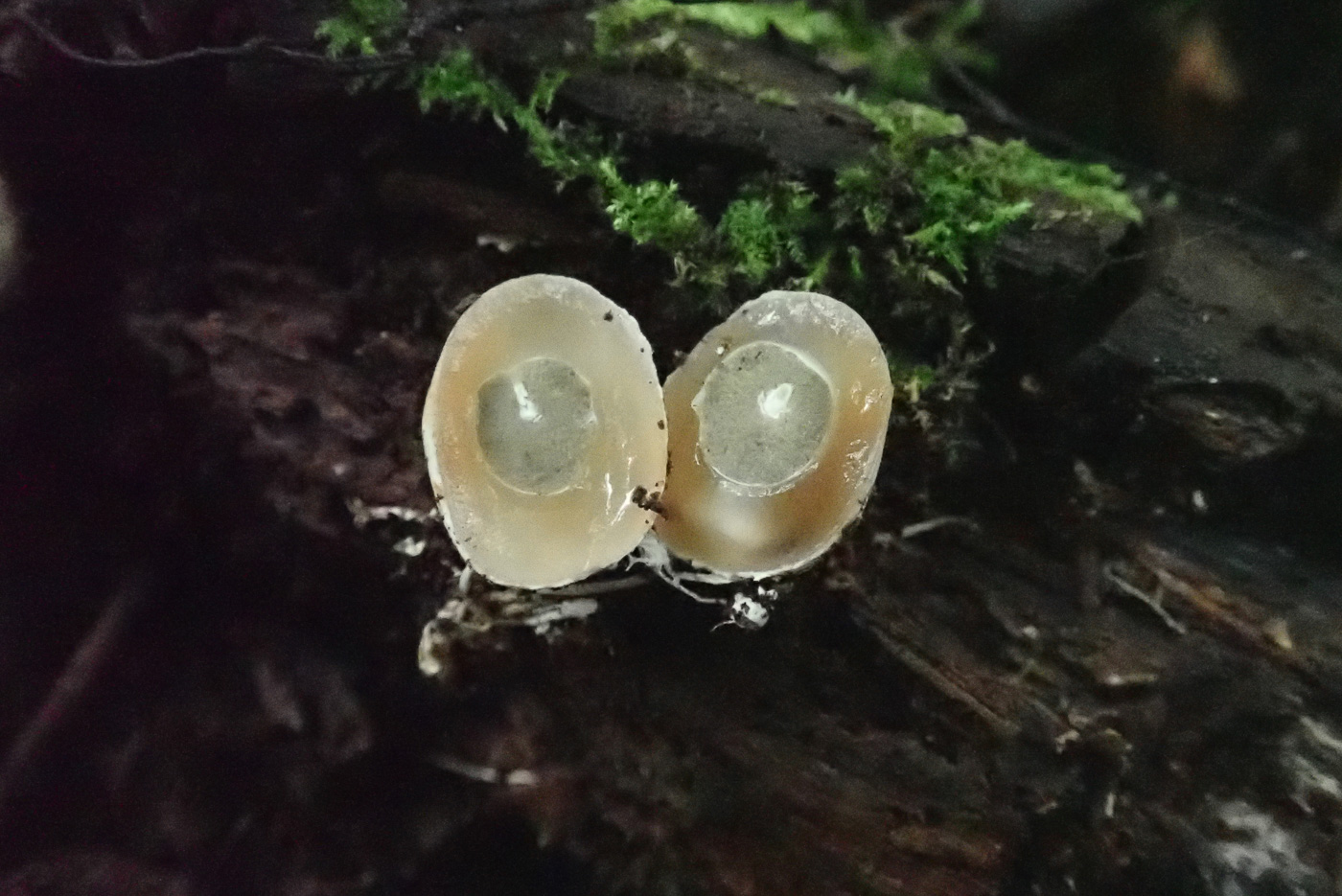
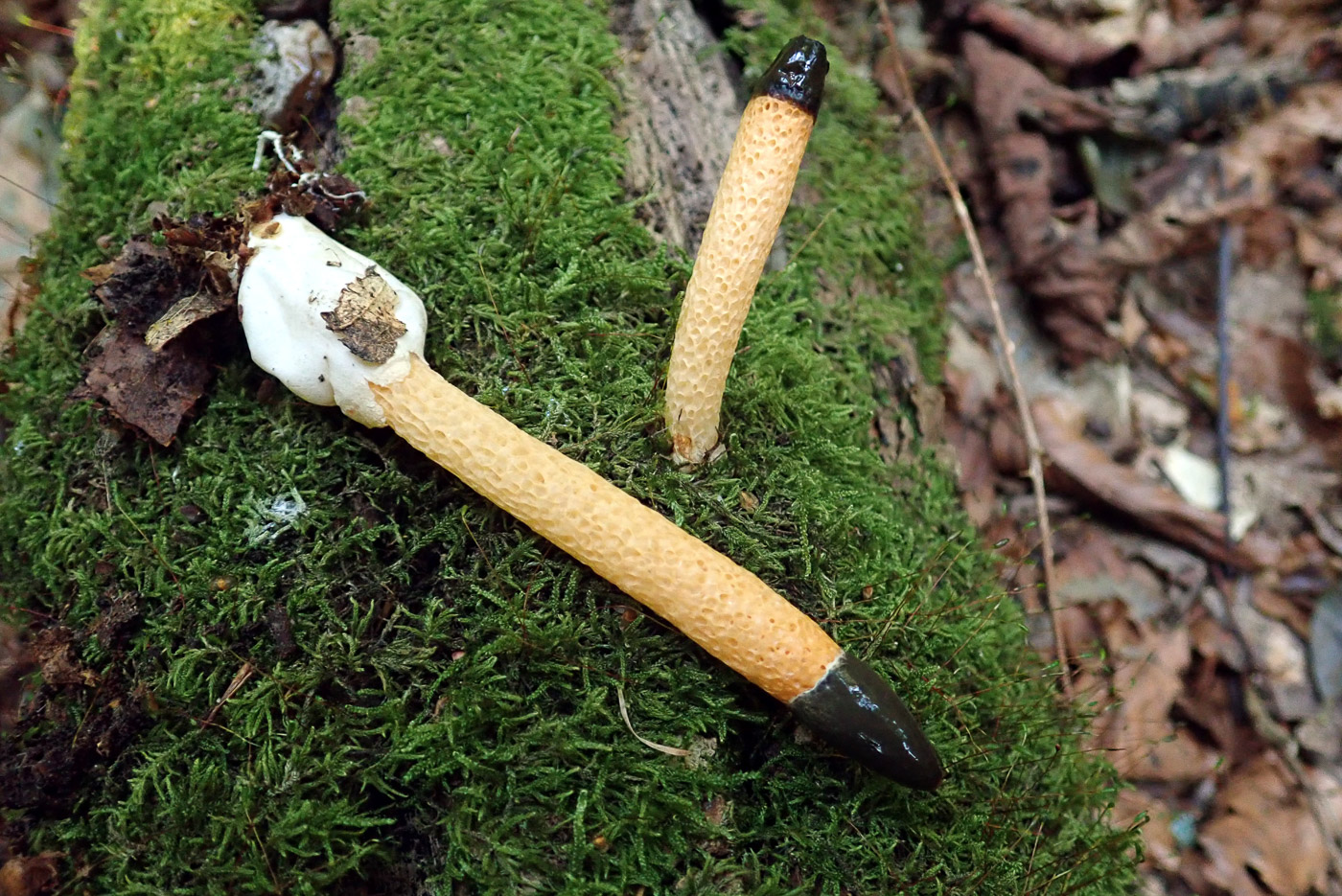
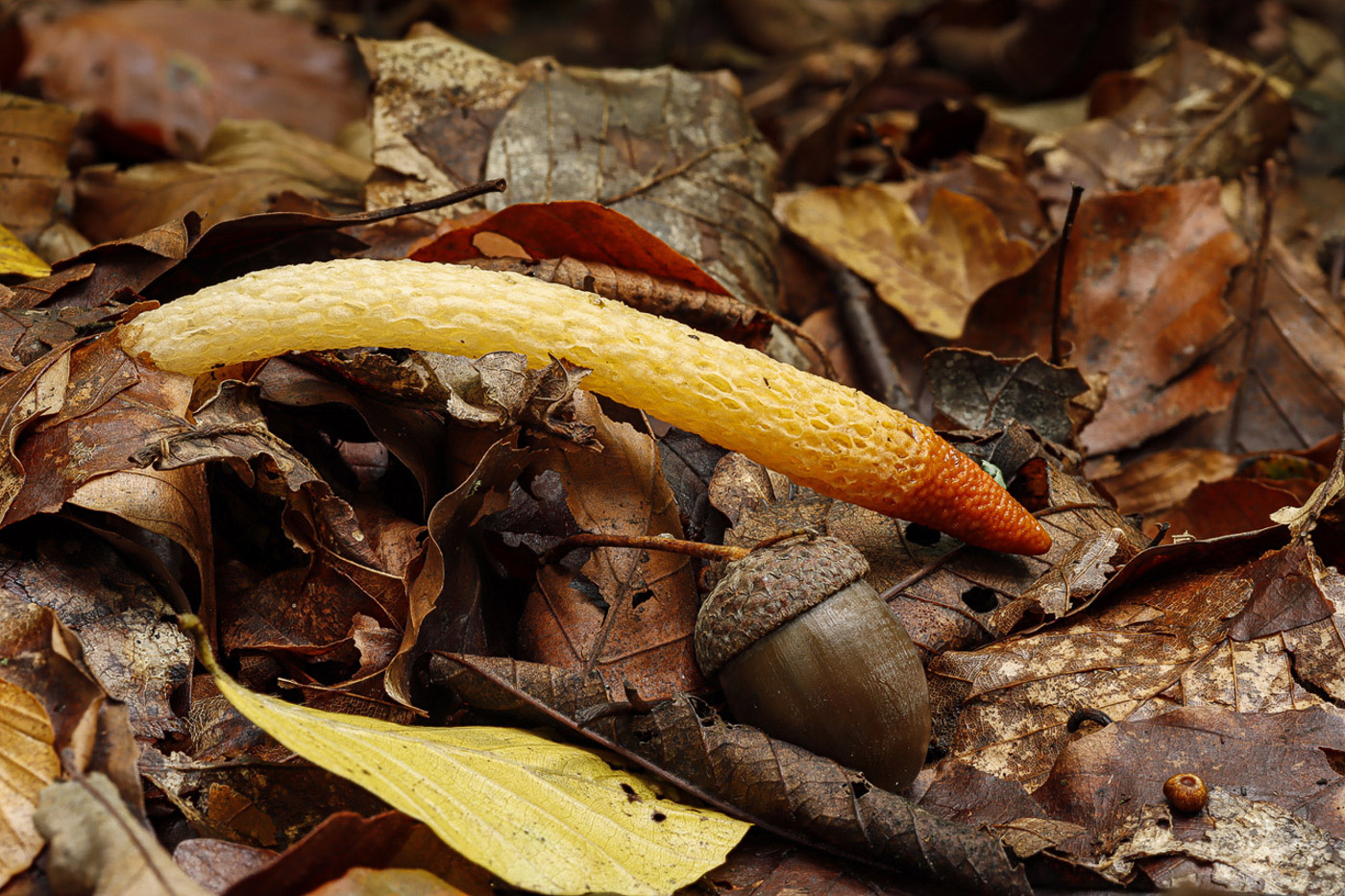
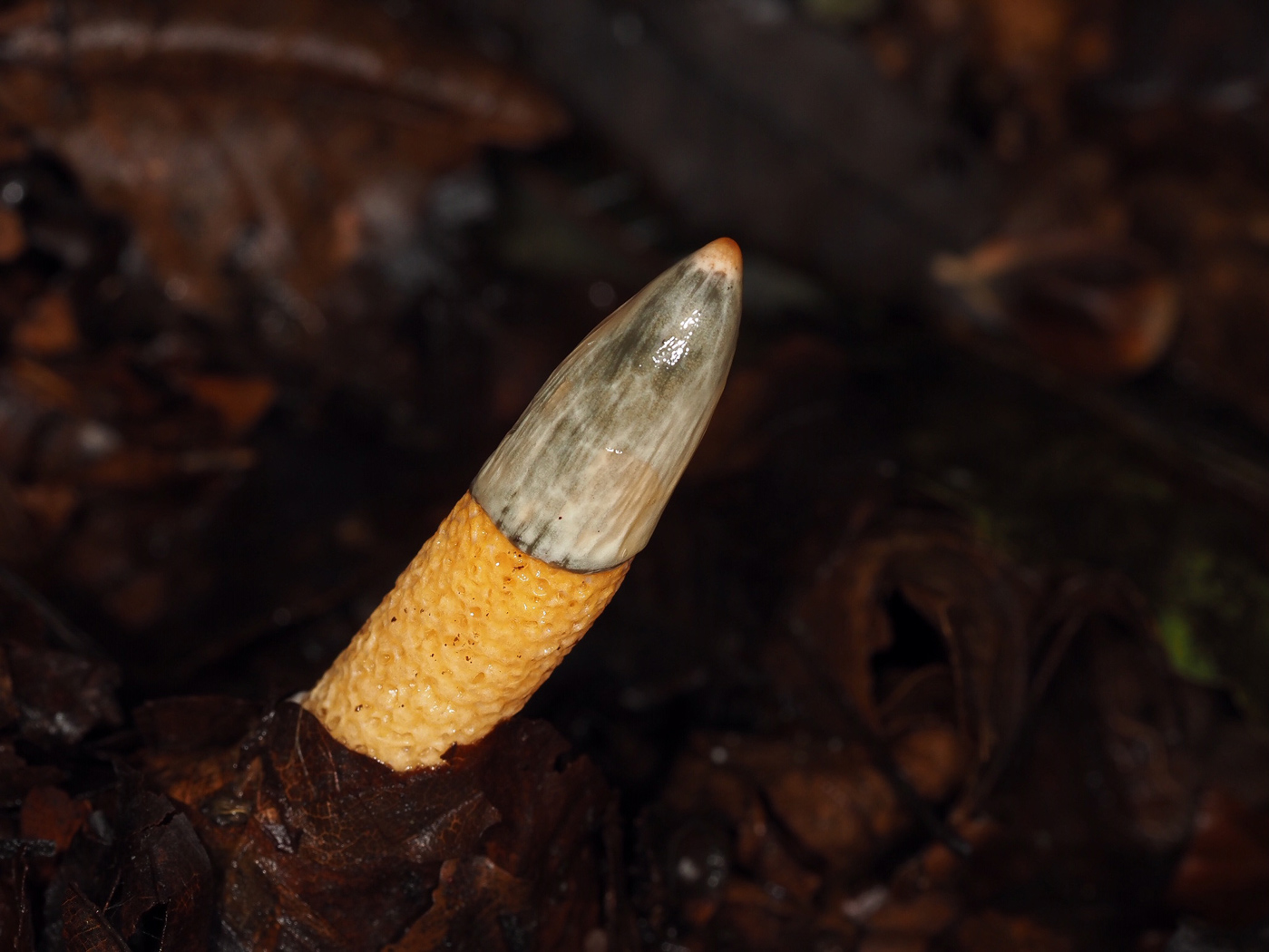
|
Mutinus caninus (Dog Stinkhorn)
Aug 31, 2023. In woodland near Prestwood Sarah Ebdon noticed this perfect specimen amongst woody litter and ready for some insects to come and feast on the delicious but smelly fertile top section, thus spreading its spores. The species arises from a white pear-shaped egg – much smaller than the round egg of the closely related and also much smellier Phallus impudicus (Stinkhorn); it is probably less common also.
Oct 7, 2021. In Rushbeds Wood Penny came across just the egg of this species attached to some rotting deciduous logs by long mycelial strands. The egg of this species is considerably smaller than that of Phallus impudicus and is also pear-shaped rather than round and less gelatinous. Penny cut it in half (photo 2) to show the central core which quickly expands into the familiar shape of the species. Hopefully we'll add photos of the later stage in due course. Though common, the species was new to the site.
Sep 20, 2020. This was found in Pullingshill Wood by Penny Cullington, the smaller specimen unusually actually growing out of the top of a mossy log as seen. Much smaller and also less common than our other Stinkhorn, Phallus impudicus - not yet fruiting much this season, this species usually grows in leaf litter and arises from a white 'egg' which ruptures as the stem expands and develops the dark sticky spore-bearing top which has a smell which attracts flies which then disperse the spores. This smell is insignificant in comparison with the extremely unpleasant smell of P. impudicus which can often be located by following ones nose! (The two later examples are from Bottom Wood, Oct 09, by Paul Goby, and the spear from Tinkers Wood, Oct 10, by Claire Williams.)
|
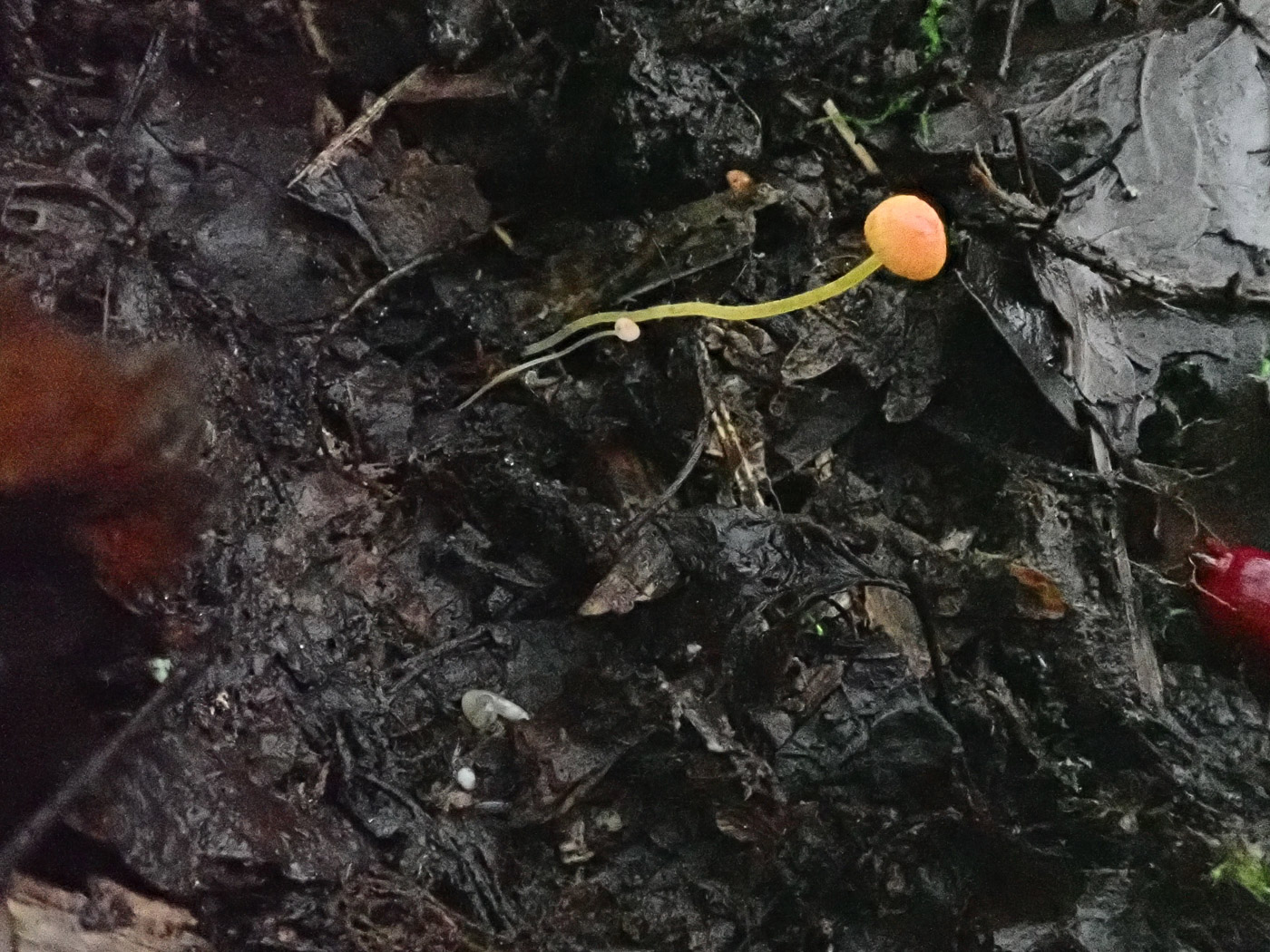
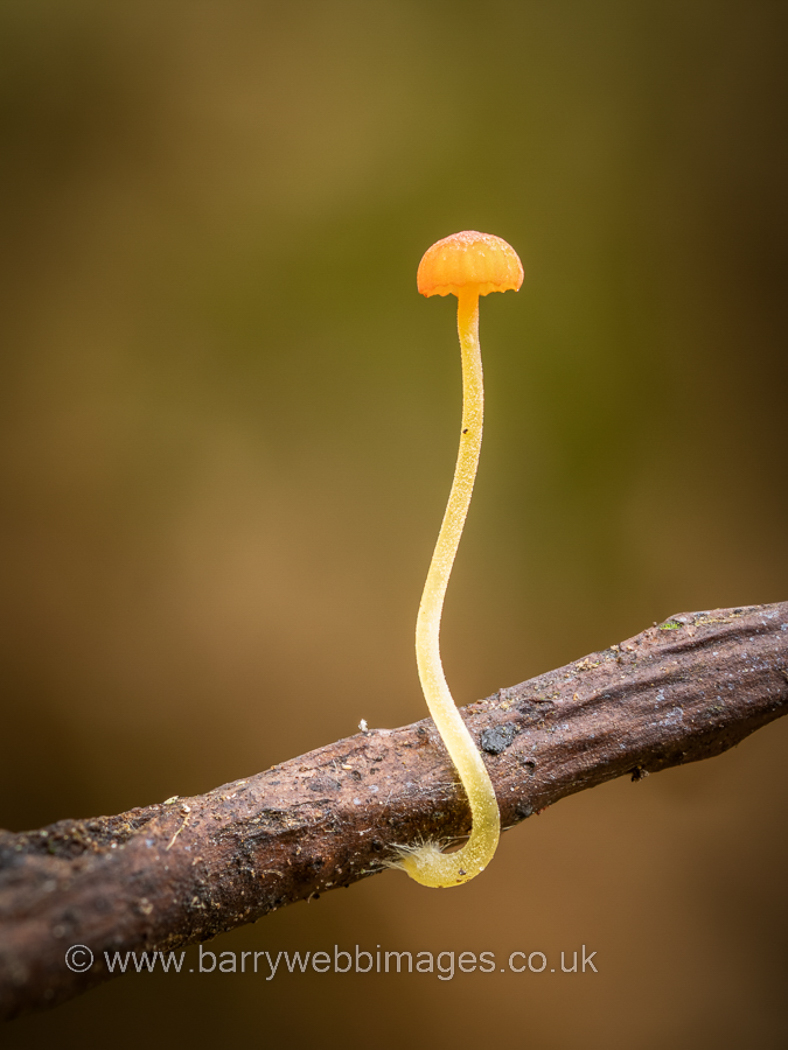
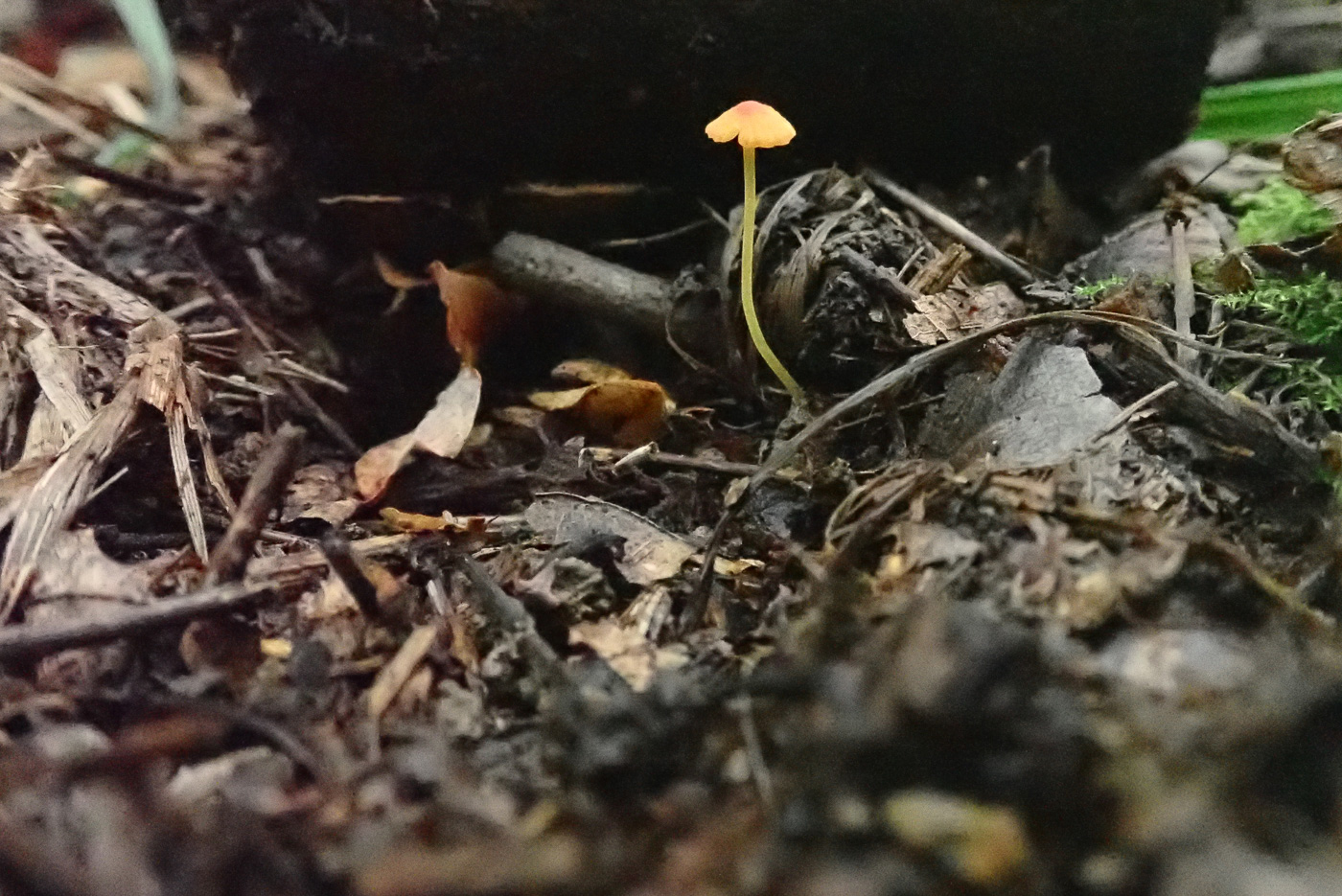
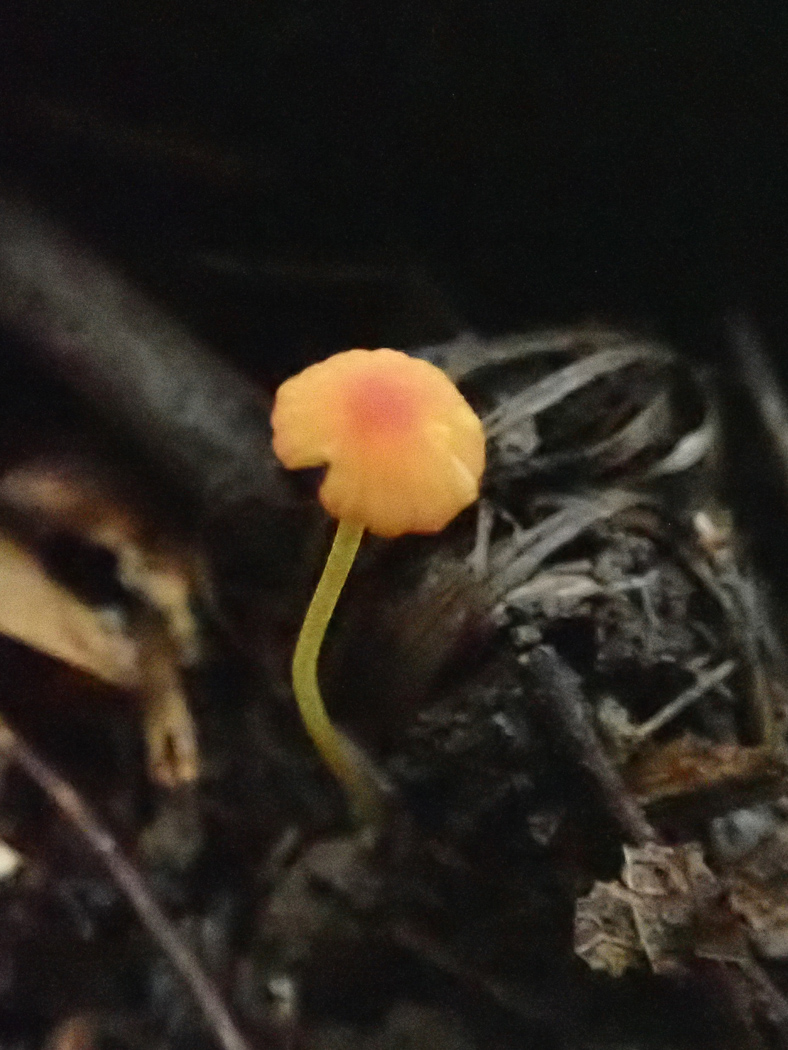
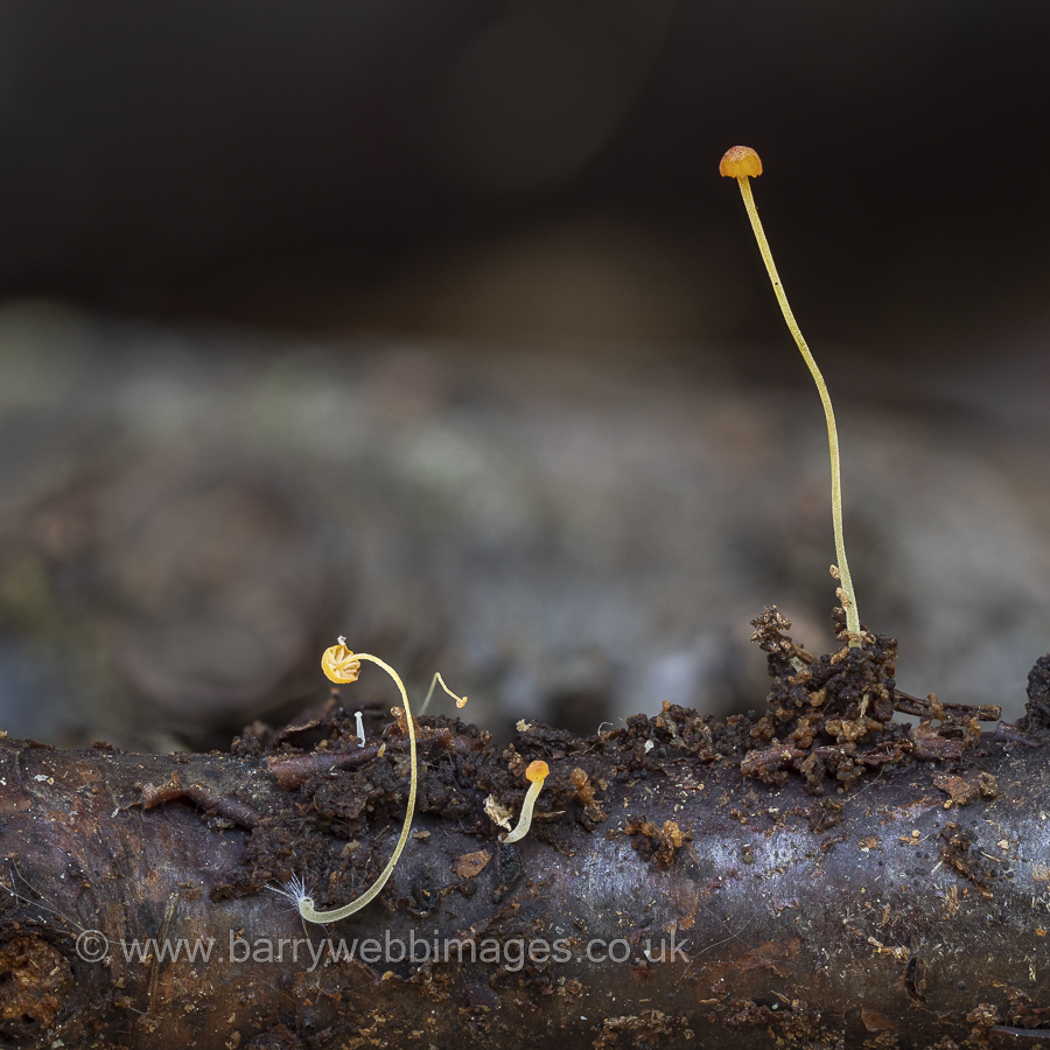

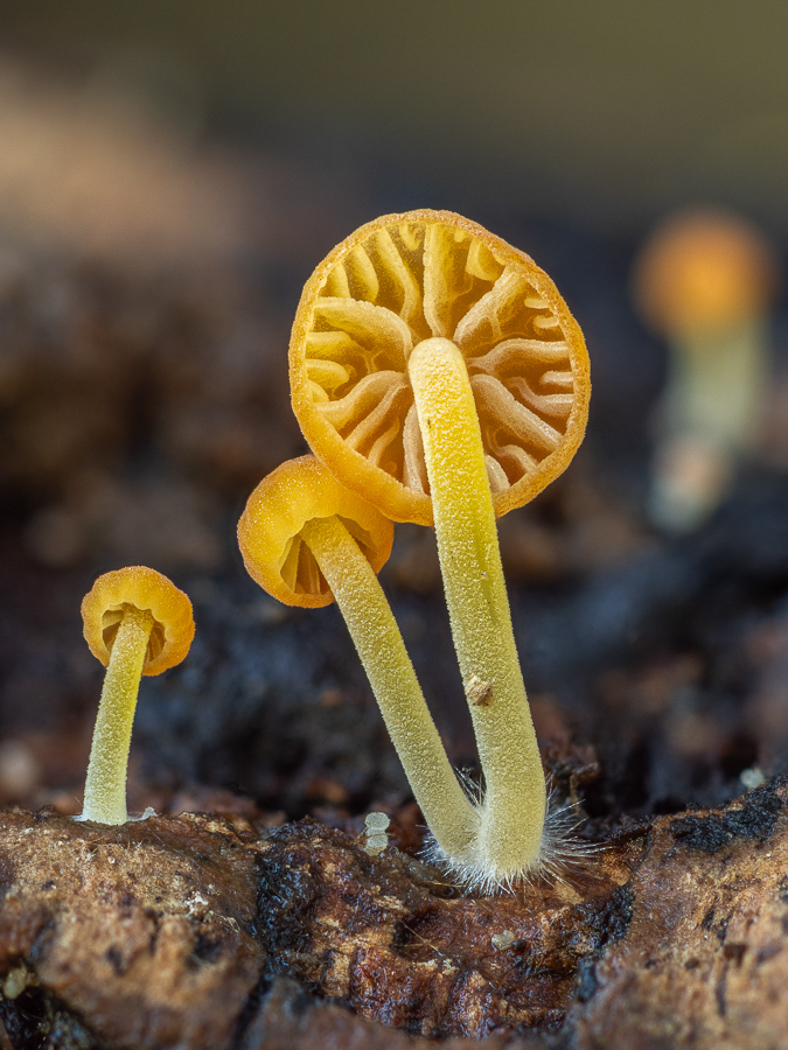
|
Mycena acicula (Orange Bonnet)
Nov 27, 2022. Amongst a pile of woody remains at Turville Heath Penny uncovered this brightly coloured tiny Bonnet - always a delight to find and an easy one to recognise with its orange cap and yellow stem. If the stem is not yellow and it has decurrent gills you probably have the very common Rickenella fibula IMoss Cap), but other than that species there is nothing else to be confused with it.
Oct 12, 2022. On a deciduous stick at Dancersend this tiny but vividly coloured Bonnet was found by Barry Webb. The species is quite common on woody mossy litter but easily overlooked. The contrasting tiny orange cap and yellow stem make it easy to identify as long as one checks that the gills are not deeply decurrent and the stem also orange which would point to the equally tiny Rickenella fibula (Orange Mosscap).
Oct 7, 2021. In a pile of rotting woody litter in Rushbeds Wood Penny saw this bright orange spot contrasting with its surroundings and knew what it must be. This tiny Bonnet is always a pleasure to find, its brilliant orange cap less than 5mm across and contrasting yellow stem making it an easy one to identify as well.
Jun 9, 2021. On the edge of the Mire at Burnham Beeches Barry Webb was searching for tiny fungi amongst woody litter and noticed a tiny speck of orange. Further investigation revealed a piece of stick with this cluster of miniscule fruit bodies just emerging. Even when this size (the largest cap can't have been more than 2mm across at most!) the distinctive combination of orange cap and bright yellow stem make this delightful species unmistakeable.
Sep 20, 2020. Barry Webb found this tiny and very pretty Bonnet in Hedgerley Green. Caps are only 5 mm across but despite its size the brightly coloured caps make it easy to spot amongst deciduous litter, woody debris. Note the yellow stem and hairy stem base where it attaches to the substrate. These features together with the orange cap make it possible to name in the field. (See also under Sept 29 where it was found together with Mycena galericulata)
|
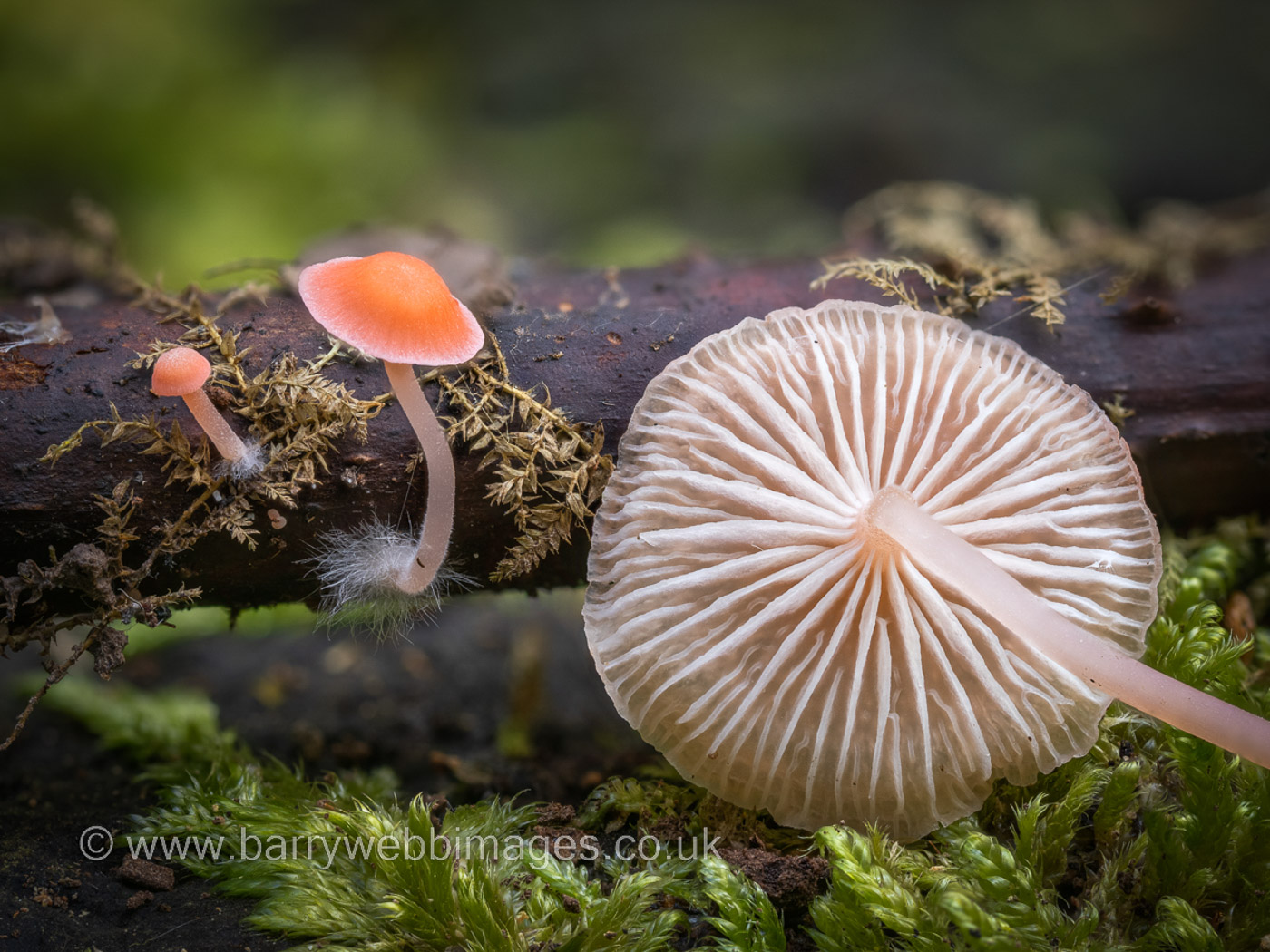
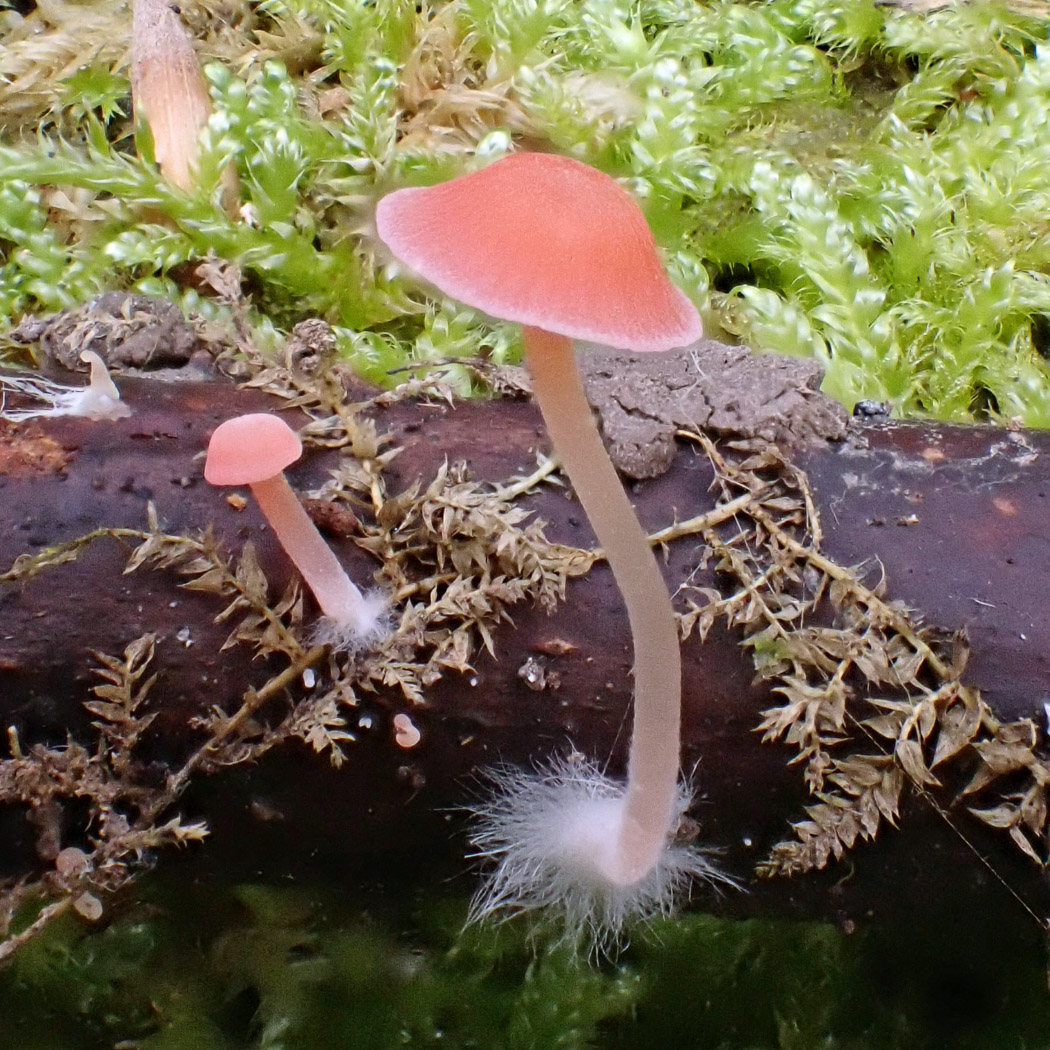 |
Mycena adonis (Scarlet Bonnet) 
Oct 12, 2022. At Dancersend Lisa Dodd spotted these little beauties lurking in a patch of thick rotting woody debris behind a fence, the bright pink caps instantly attracting attention. After carefully extracting the bramble stem to which they were attached we were able to set them up for photos. Photo 1 is Barry Webb's and photo 2 Neil Fletcher's. The species is not really rare but we don't have many county records, most of them from this site though dating back to the previous century.
|
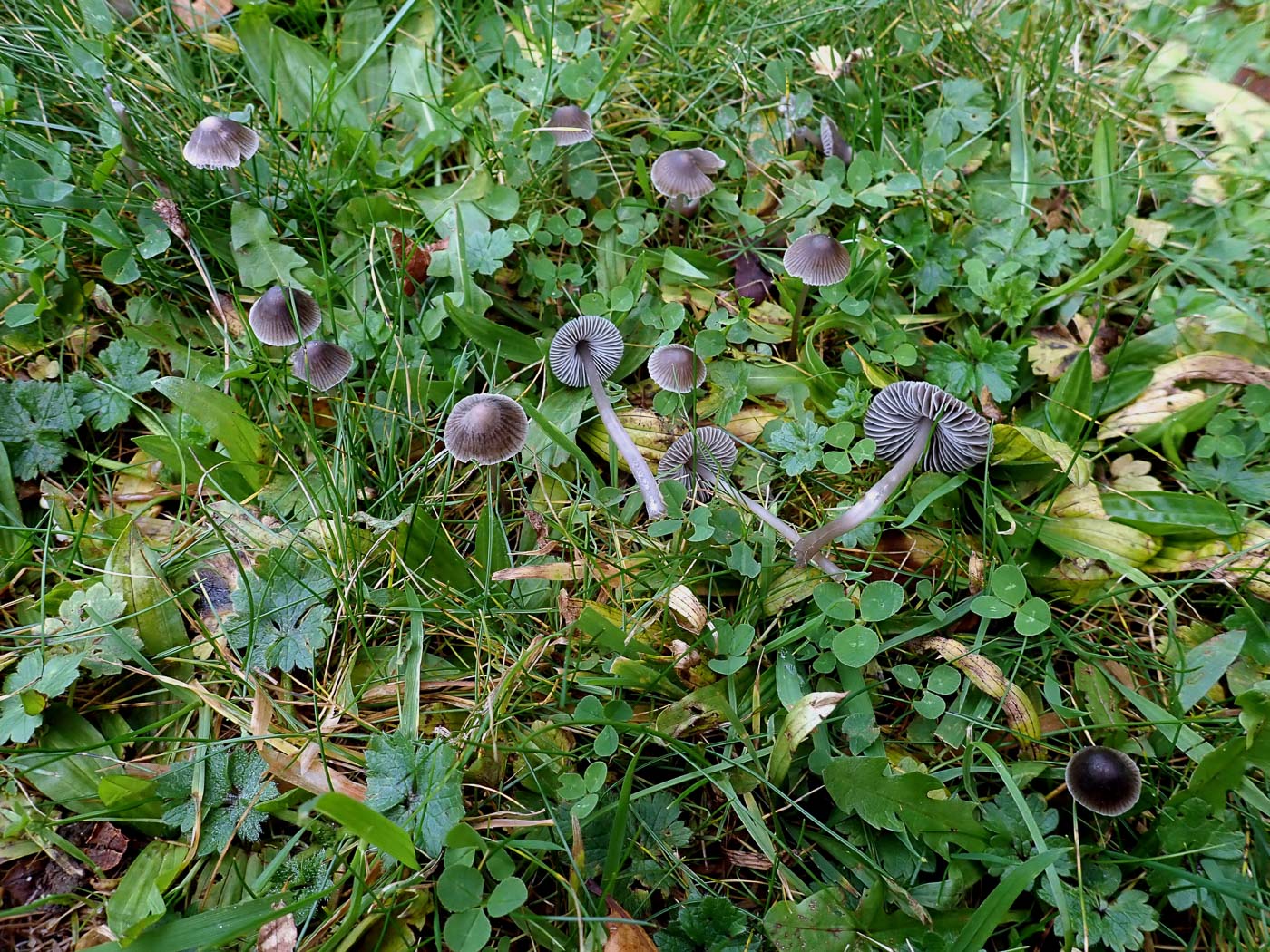
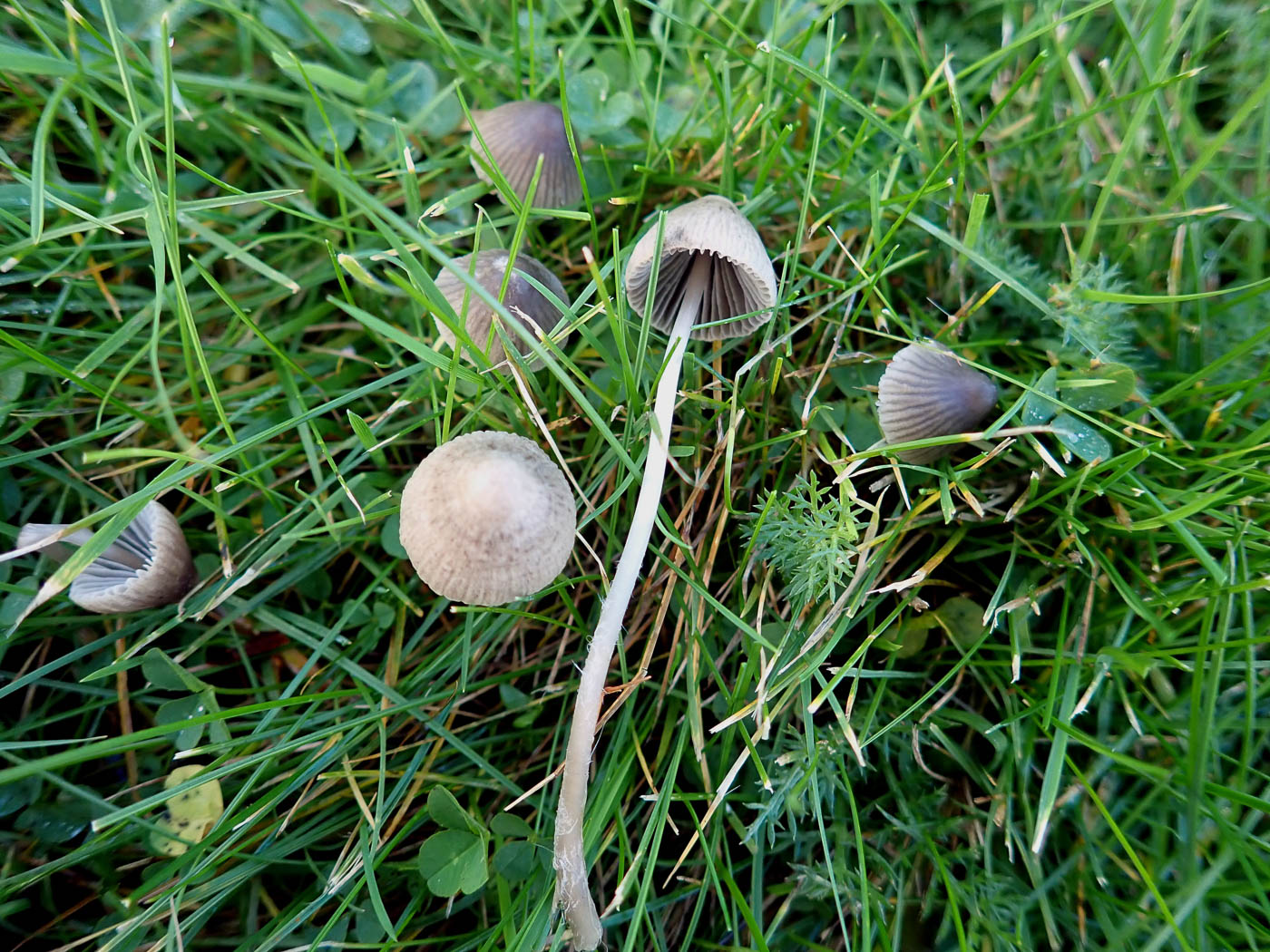
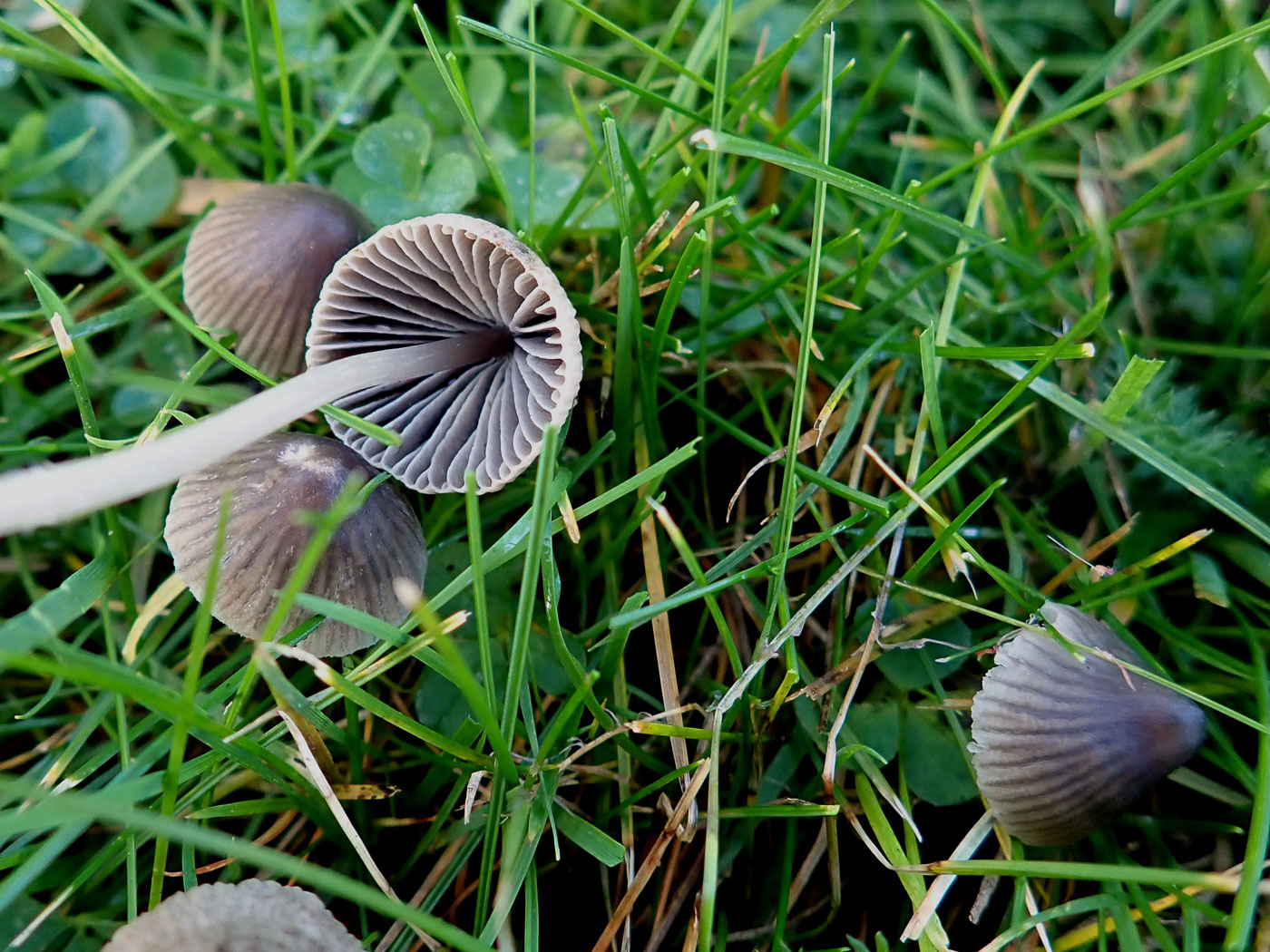
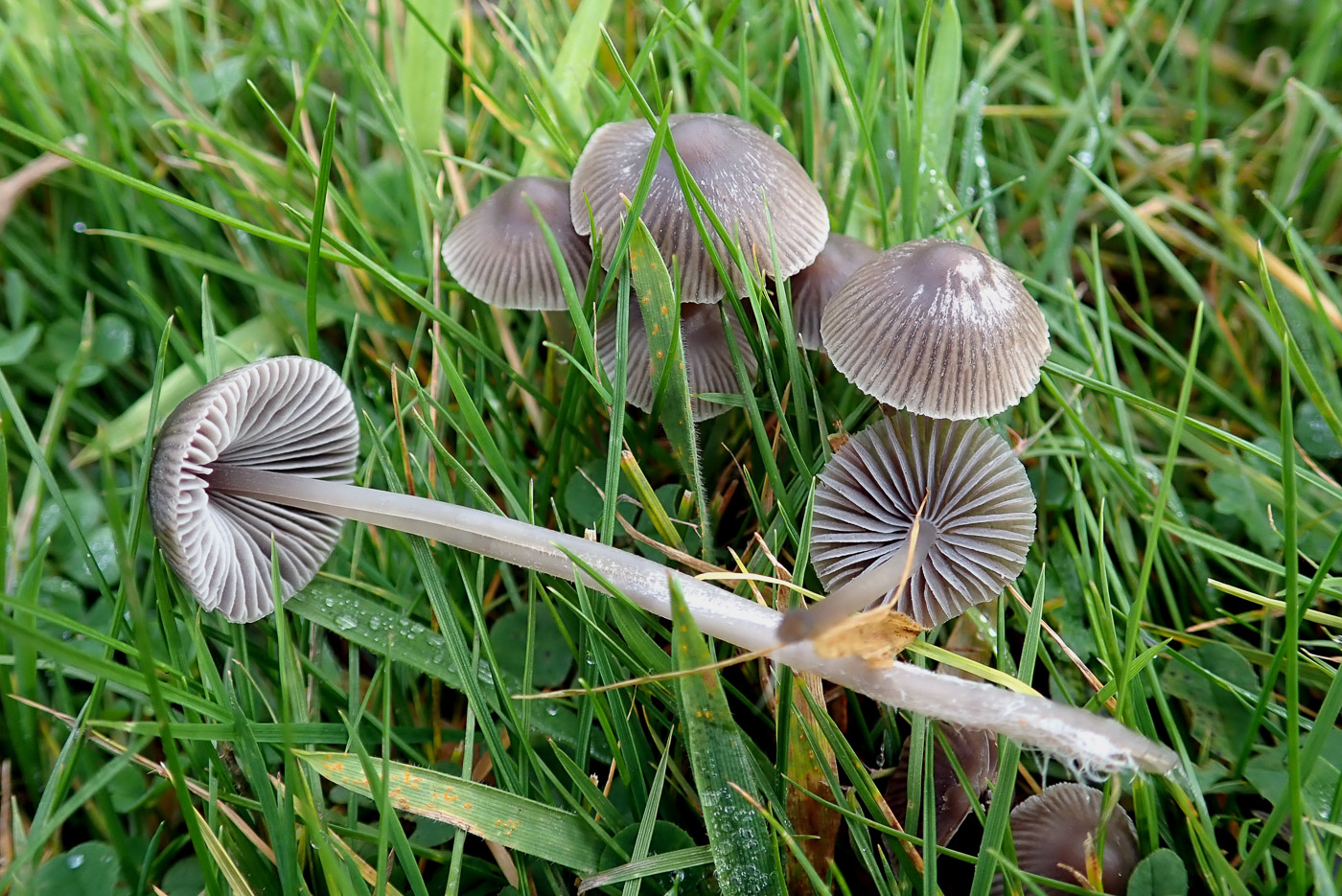
|
Mycena aetites (Drab Bonnet) 
Nov 3, 2023. In longish grass at Cadmore End Penny found good numbers of this common grassland Bonnet recognisable in the field from its medium size - larger than other grassland Bonnets - and darkish grey colours including the gills. It also has a faint bleach smell though this is never as striking as it is in the quite similar M. leptocephala which occurs in grassland and well as woodland litter.
Dec 6, 2022. At Stoke Poges Memorial Gardens Penny found this group of grassland Bonnets just managing to make it above the height of the grass, hence their rather long stems. This is one of the larger exclusively grassland bonnets, recognisable from its grey colours (both cap and gills) but faint radishy smell - not to be confused with M. leptocephala (Nitrous Bonnet), also greyish but with a strong bleachy smell, found in both woodland litter and grassland. If in doubt try crushing the gills before testing for the smell: the bleachy smell of Nitrous Bonnet is very distinctive. The safest way is, as always, to check the gill edge with a scope, however. Both species are very common.
Oct 28, 2020. Penny C. found many examples of this grassland Bonnet in Stoke Poges Memorial Gardens. It's quite an easy Bonnet to recognise in the field if all the available features are taken into account together: Not just the grey cap but grey gills as well (this is unusual), cap translucently striate in damp conditions (as here), its occurrence on lawns / in grass, and its strong nitrous smell of beach. N.B. Other Bonnets have this smell also but not with this set of features.
|
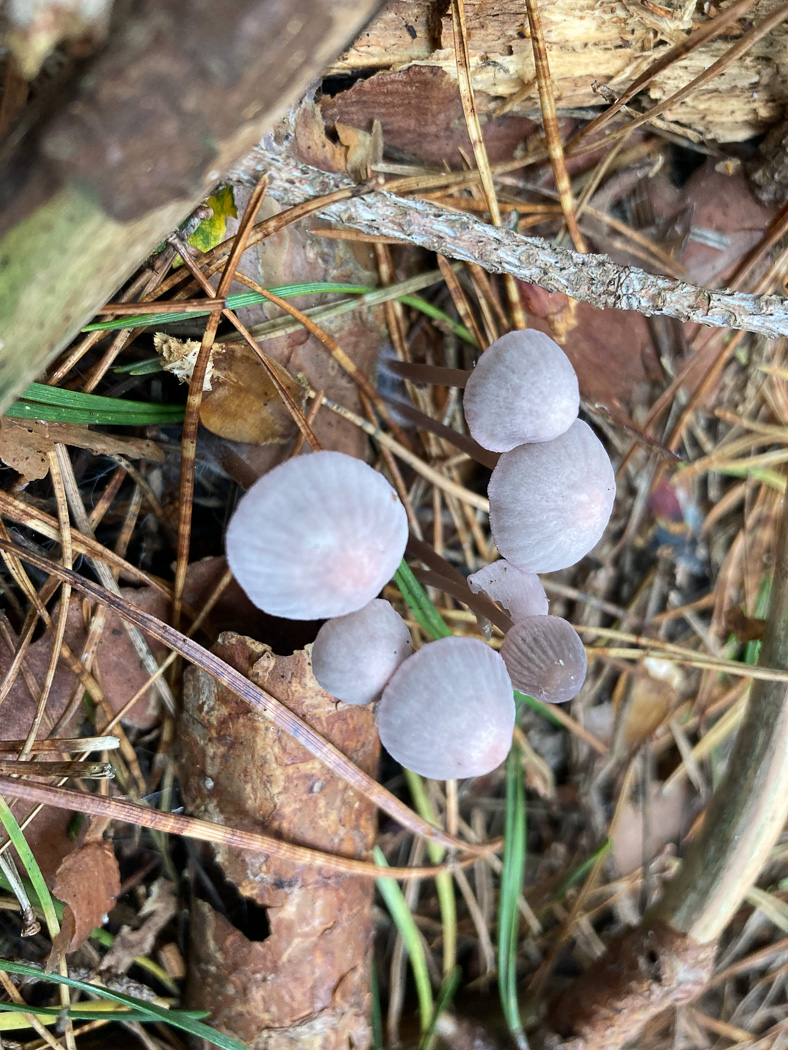
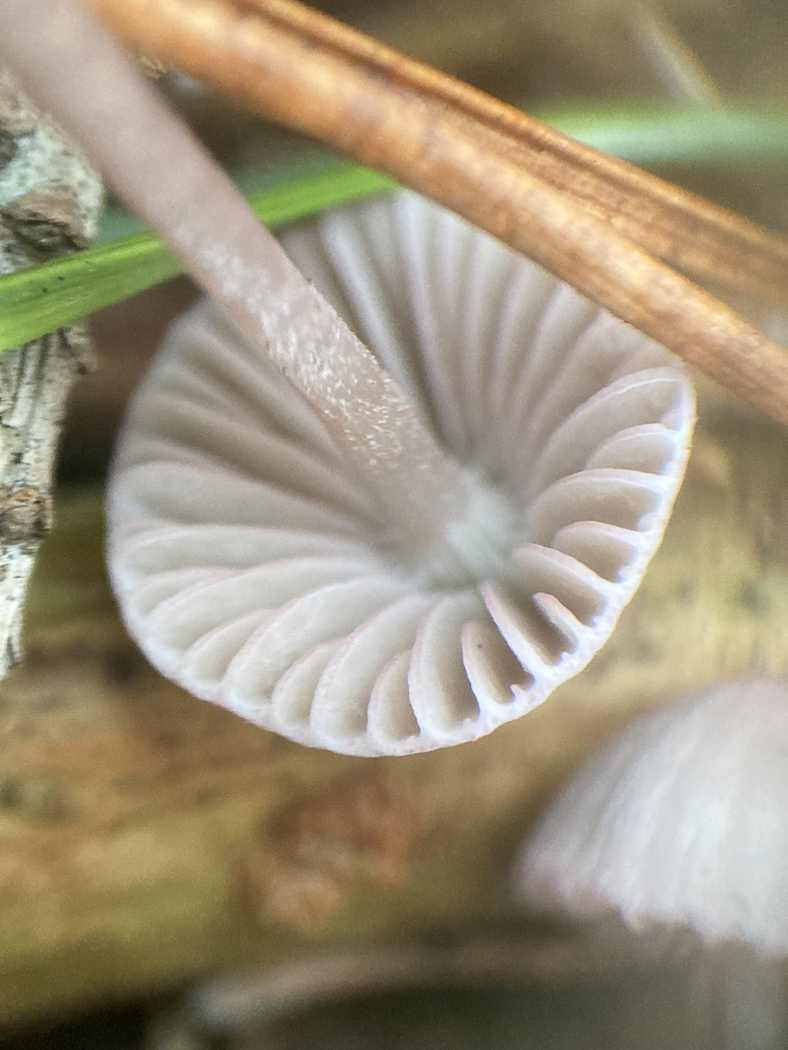 |
Mycena albidolilacea (a rare Bonnet with no common name) 
Oct 14, 2021. At Stoke Common in Pine litter Russell Ness found this cluster of Bonnets and took them home to work on (often essential with this genus). The cap had a slightly pink lilac flush which made him suspect it was something unusual, this confirmed when the gills under close inspection sported a pale pink edge. Under the scope he found the correct cells on the gill edge to confirm this exciting find, not only new to the site and the county but with only a handful of UK records, all from the south. Sadly at the time he didn't realise the significance of what he'd found, so no voucher material was retained.
|


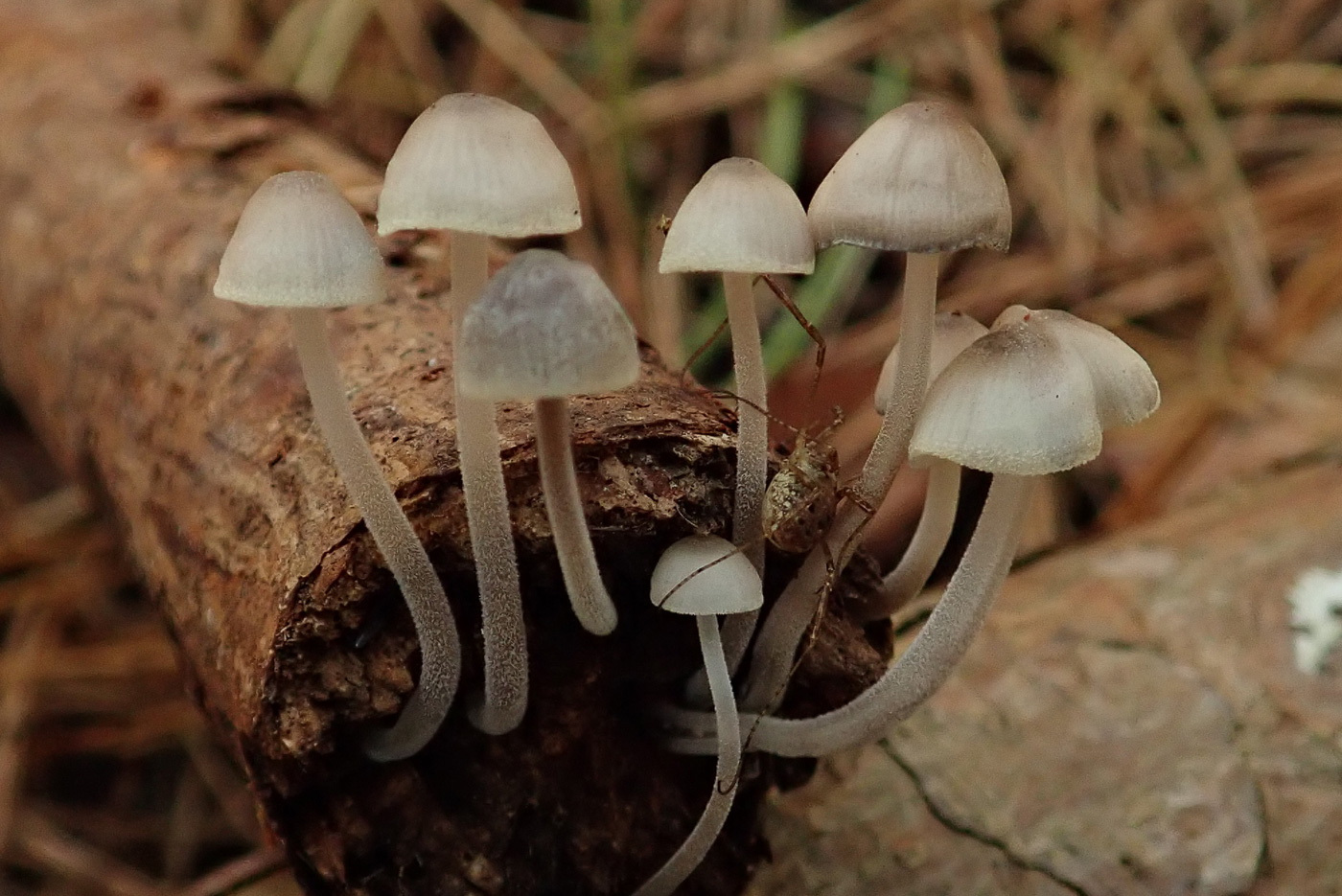
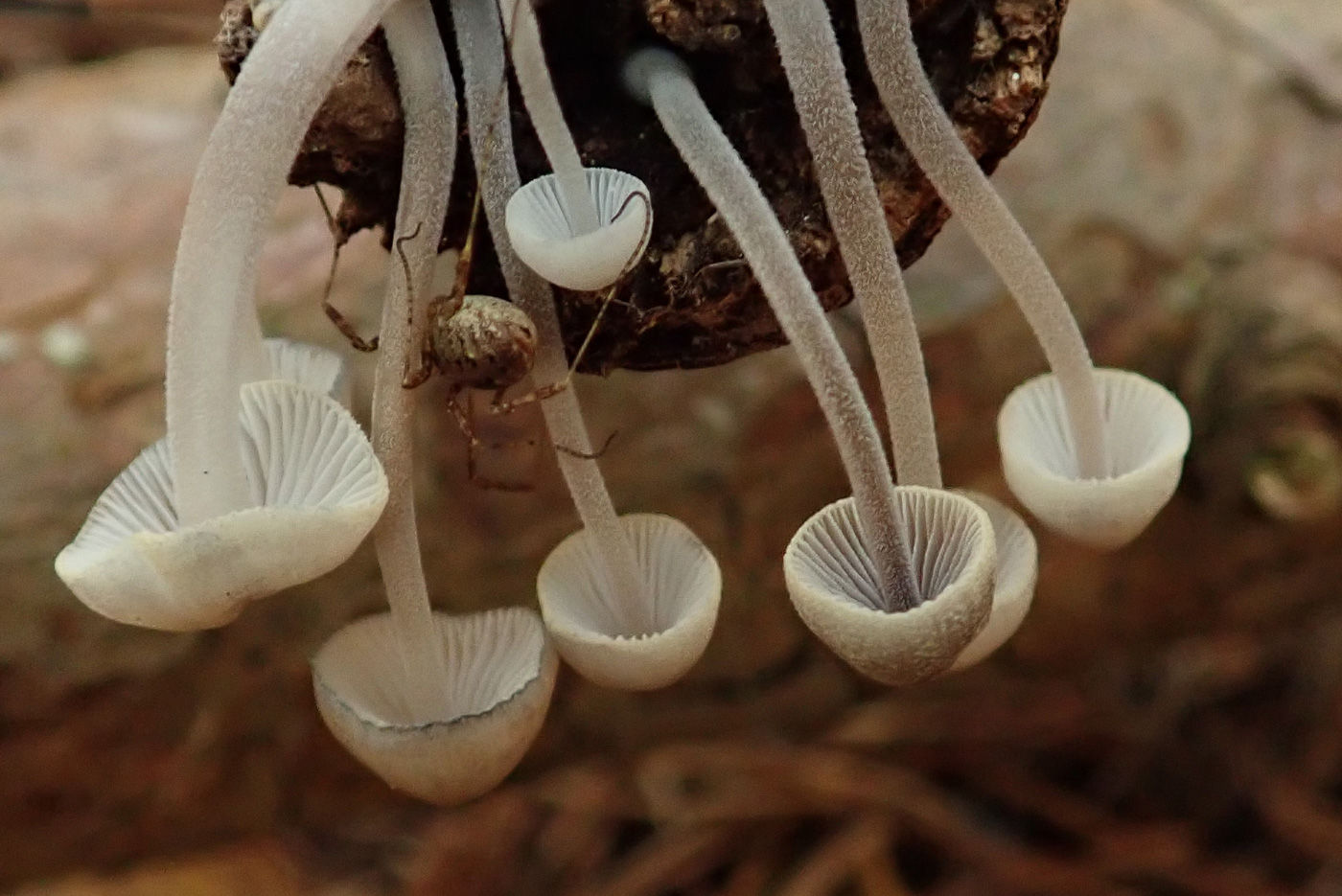

|
Mycena amicta (Coldfoot Bonnet) 
Aug 12, 2023. In Burnham Beeches Russell Ness noticed this rather drab Bonnet growing in woody litter and at home was not able to come to a conclusion as to its identity. Penny, on receiving his photo and reading that it had a notably hairy stem with blue-green staining at its base was able to point him in the right direction. When the blue-green colour shows on the cap, sometimes just on the rim, the species becomes instantly recognisable, but often this clue is entirely missing, leaving one with little to go on. However, if one know to test for it, it does have a removable gelatinous cap coating (like that found in M. epipterygia (Yellowleg Bonnet). The species is not that common and favours rotting conifer wood though not exclusively.
Nov 7, 2020. Penny C. found this attractive little collection growing out of the end of a Pine stick in Stoke Common. Caps were just 5 mm across and she knew it could be one of several species but thought she could see signs of dark blue on the cap margin of one fruit body which suggested to her that it might be M. amicta. This is an occasional species though not really rare but our records showed it has only been found here once before. It occurs mainly on conifer wood or woody debris and looks much like many other smallish Bonnets but usually at least one specimen has signs of dark blue, either on the cap somewhere or at the stem base (hence its common name). At home Penny confirmed the identification with a scope, then attempted to show the dark blue cap margin under the stereo (photo 3).
|
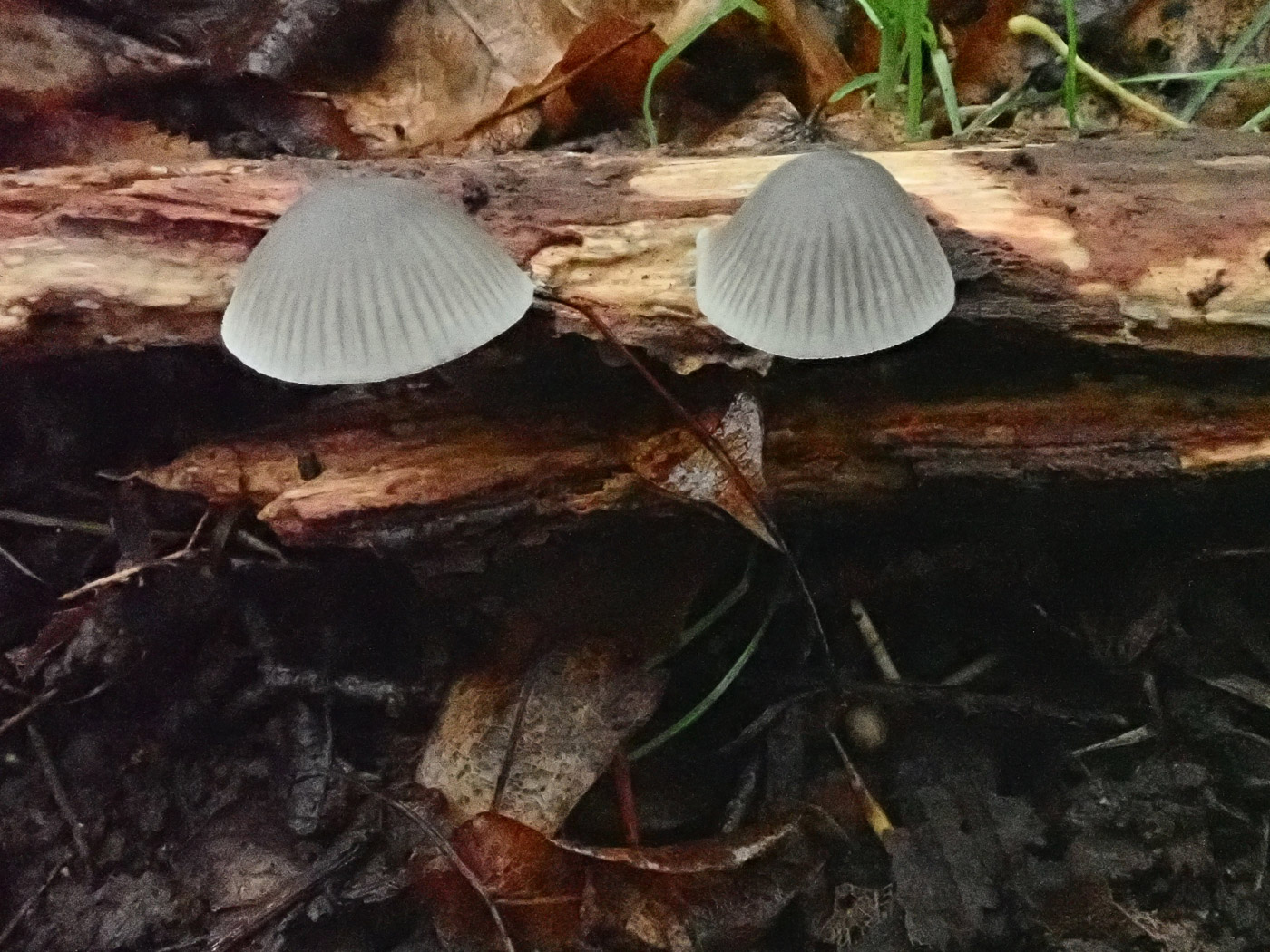
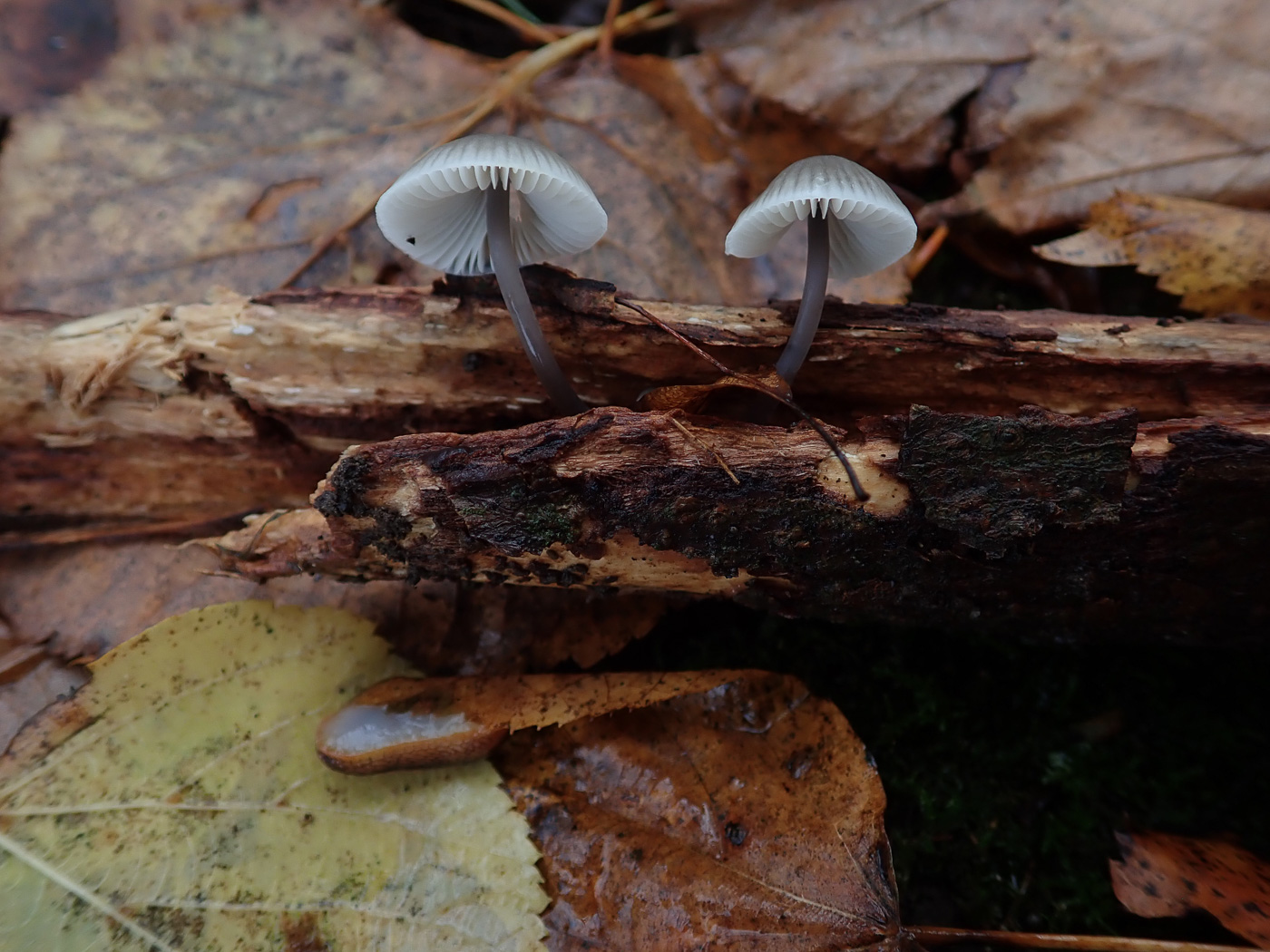
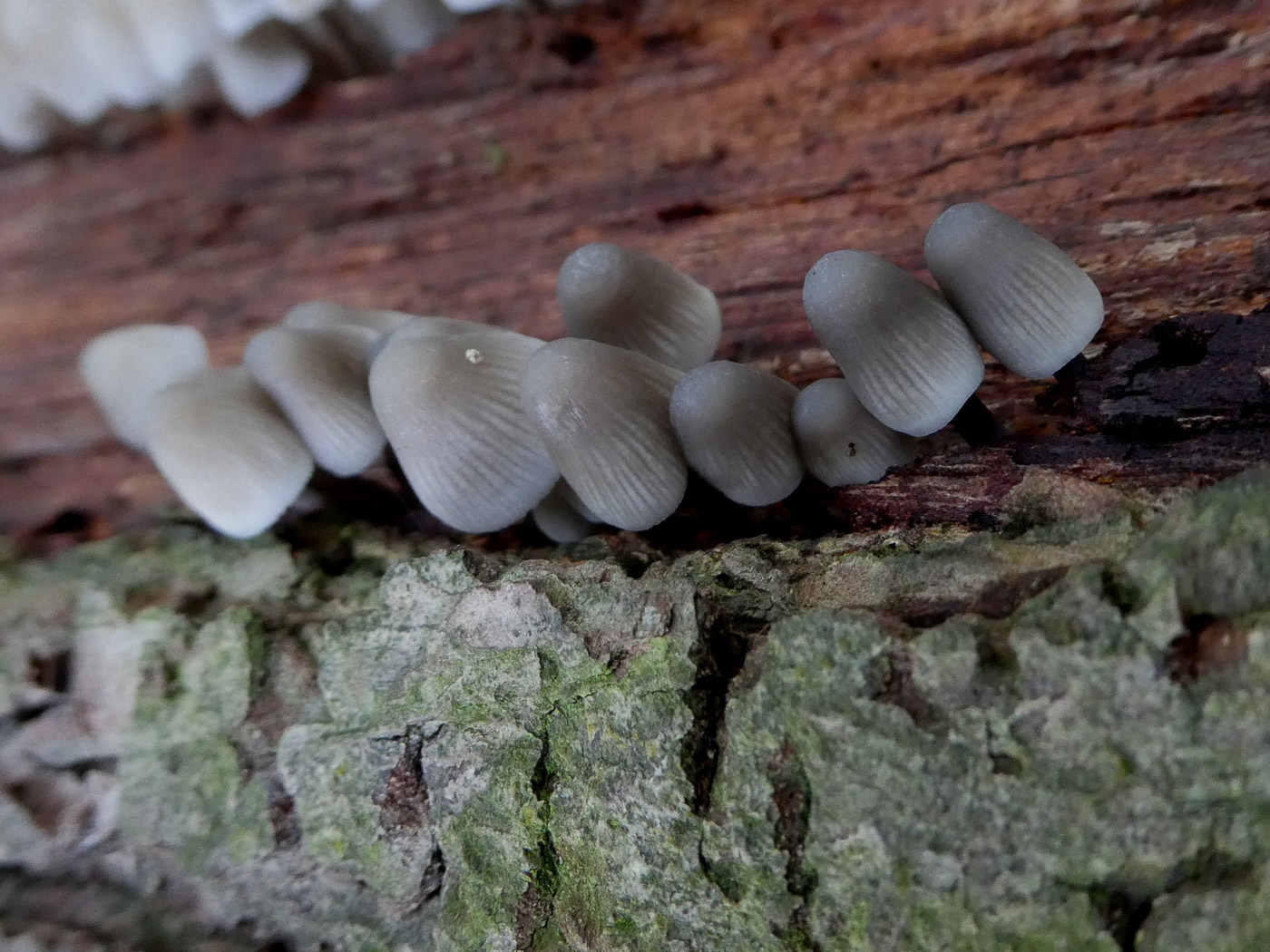

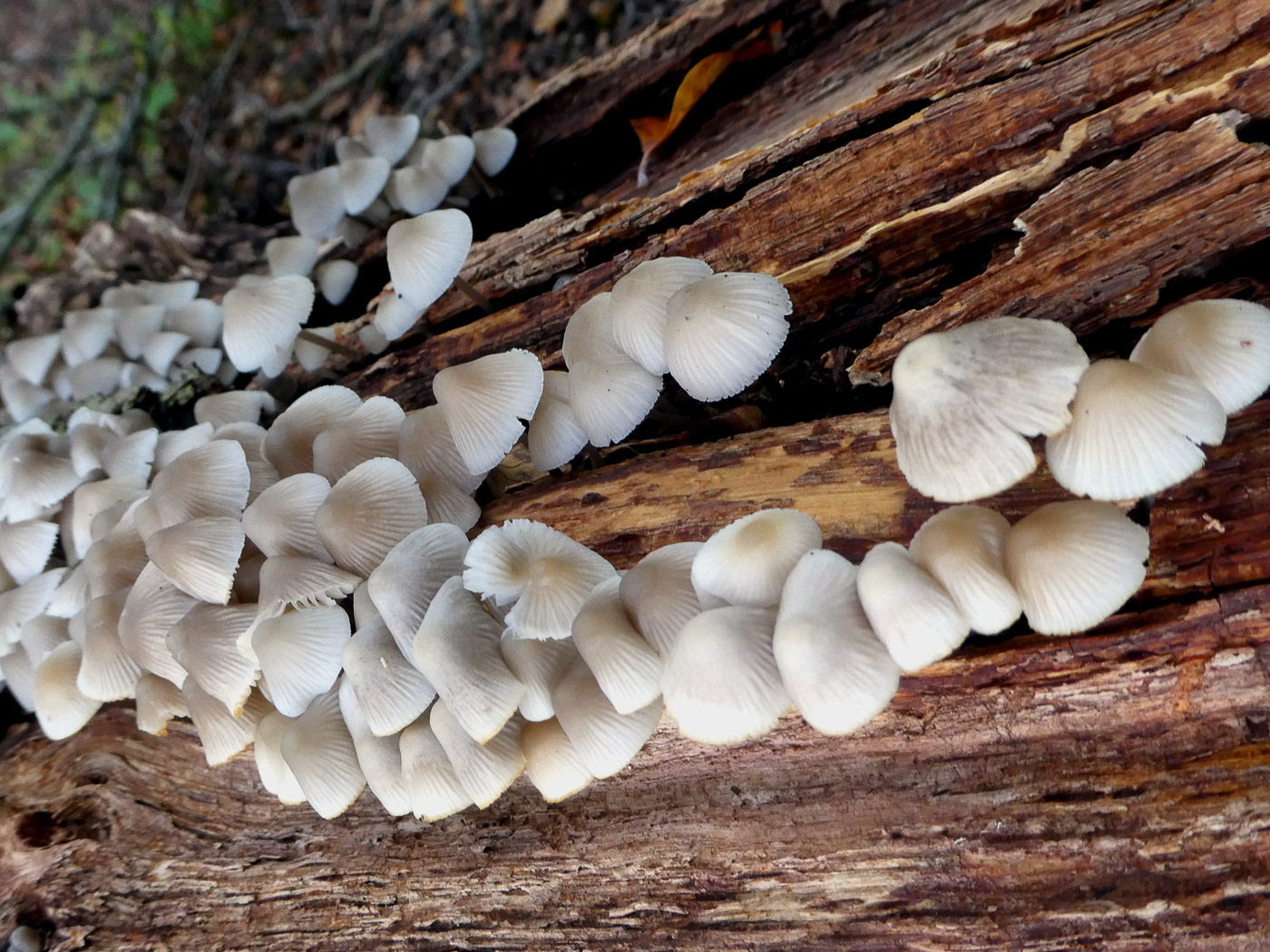
|
Mycena arcangeliana (Angel's Bonnet) 
Nov 27, 2022. At Turville Heath Penny saw this pair growing out of the side of a stick, probably Lime. She suspected they were this common wood-inhabiting Bonnet and turning it over to reveal the rather dark purplish stems also strengthened this theory - later confirmed with a scope and by the smell of iodoform emanating from its pot as it dried out. We find it most commonly in large groups on fallen Beech. less often in ones or twos on other deciduous woods.
Oct 10, 2020. This colony of Bonnets was fruiting on a fallen Beech trunk in Gussetts Wood, found by Penny Cullington. One of our commonest wood-inhabiting Bonnets, it tends to form troops, as here, and caps rarely gets much bigger than 2 cm across. The shape, colour and visible striations on very young fruit bodies is typical, as in photo 1; the white gills of the genus and and olive brown tinge to the caps seen in photo 2 is also typical, making this species recognisable (with experience) without recourse to a scope, especially if you place a few specimens in a small container where the smell of iodoform develops as they dry out.
|
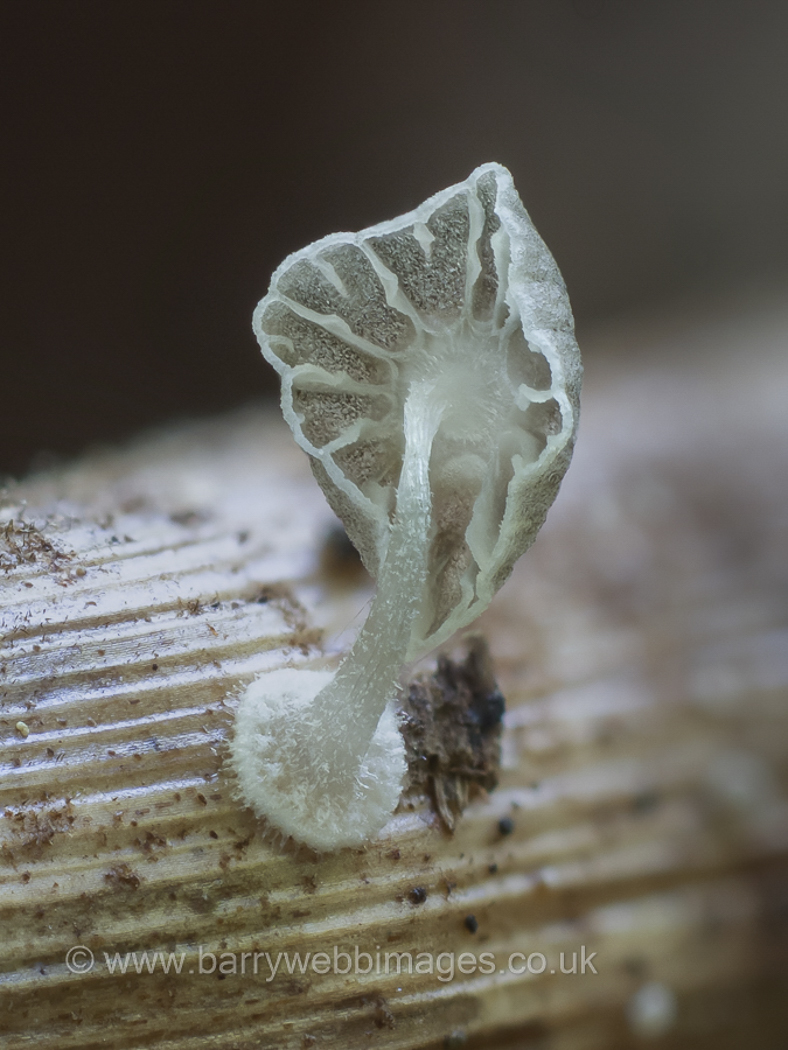 |
Mycena bulbosa (Rush Bonnet)
Jun 9, 2021. In the Mire at Burnham Beeches Derek searched amongst the dead Juncus stems and was rewarded with four beautiful specimens of this one of the tiniest species of Bonnet. The base of Juncus stems is a good substrate on which to find a range of tiny fungi, but this particular species is easy to distinguish despite its diminutive size (here no more than 5mm tall) because of its platform-like stem base. It is the only Bonnet found on Juncus with which it is host specific.
|
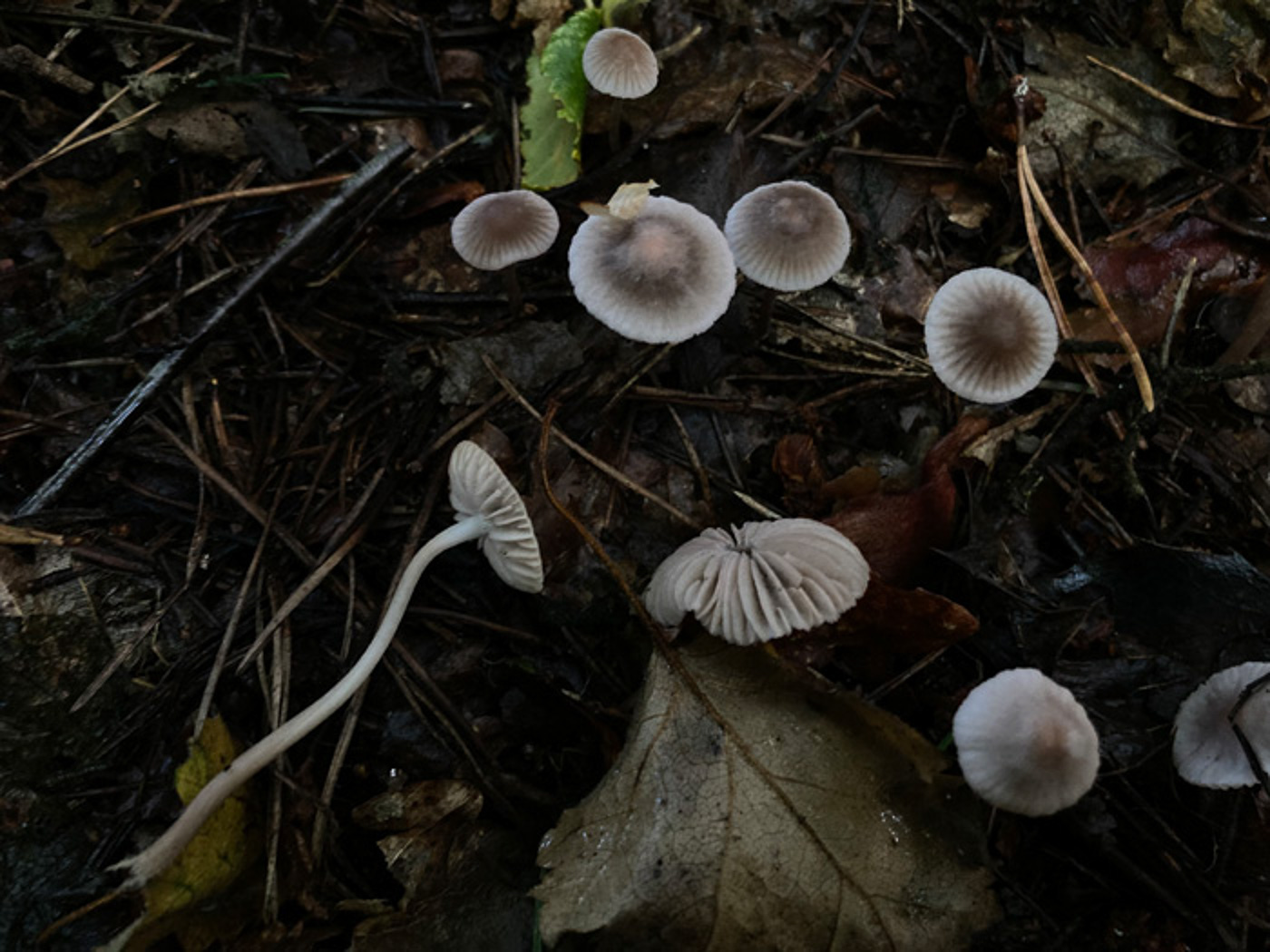 |
Mycena capillaripes (Pink Edge Bonnet) 
Aug 6, 2023. Under Pine at Burnham Beeches Russell Ness found good numbers of this unusual Bonnet, one for which we have only a very few county records. (Do not confuse with the similarly named M. capillaris which is tiny and grows on fallen Beech leaves!) Though in appearance very similar to a number of others with greyish caps, this particular Bonnet is confined to conifer litter, is hygrophanous (it fades), has a nitrous smell and - most notably - the gills have pink-brown edges (though hard as Russell tried in the fading light he couldn't capture this feature though he could see it!). This is a new entry for Finds.
|
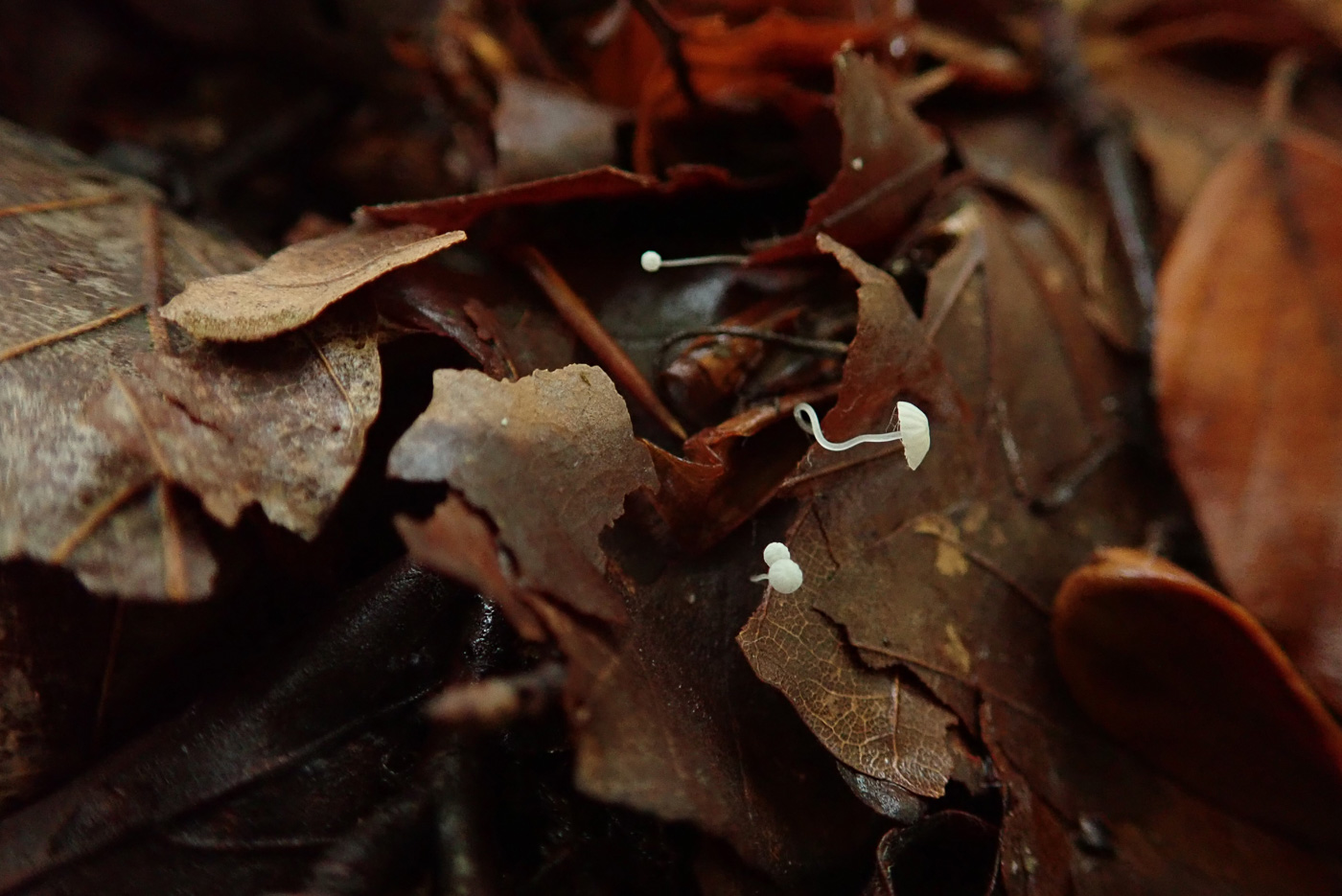

|
Mycena capillaris (Beechleaf Bonnet)
Oct 24, 2020. Penny C. spotted these miniscule mushrooms growing on a fallen Beech leaf in Gussetts Wood. Only found on this substrate it is not uncommon in our Beechwoods but seldom recorded for obvious reasons! Caps are slightly fluted and never get above 3 mm across (these were considerably smaller than that) and stems are extremely thin and fragile (like a capillary). Sometimes found in large numbers on one leaf.
|
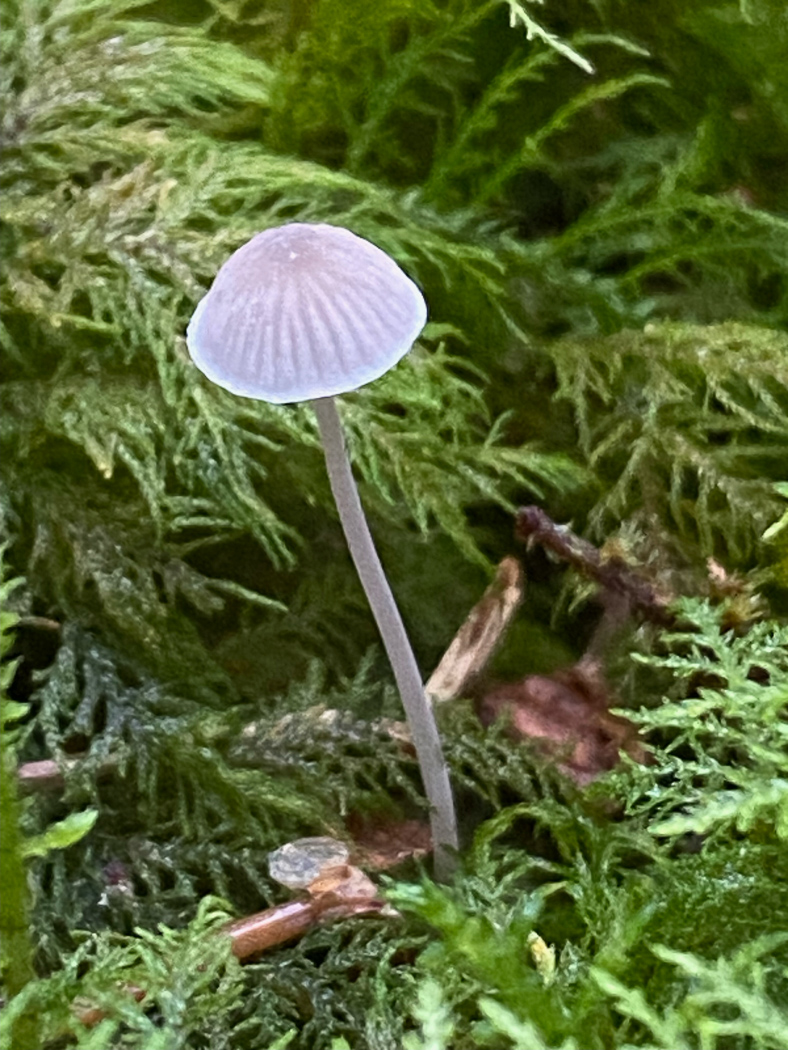
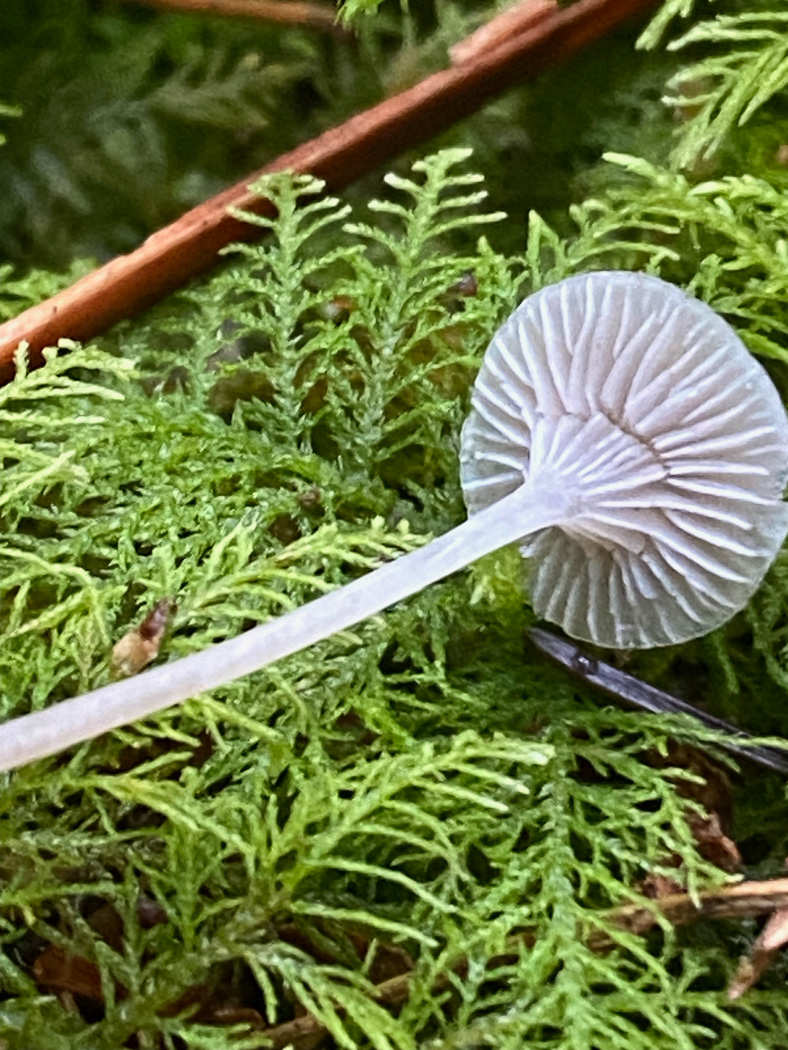
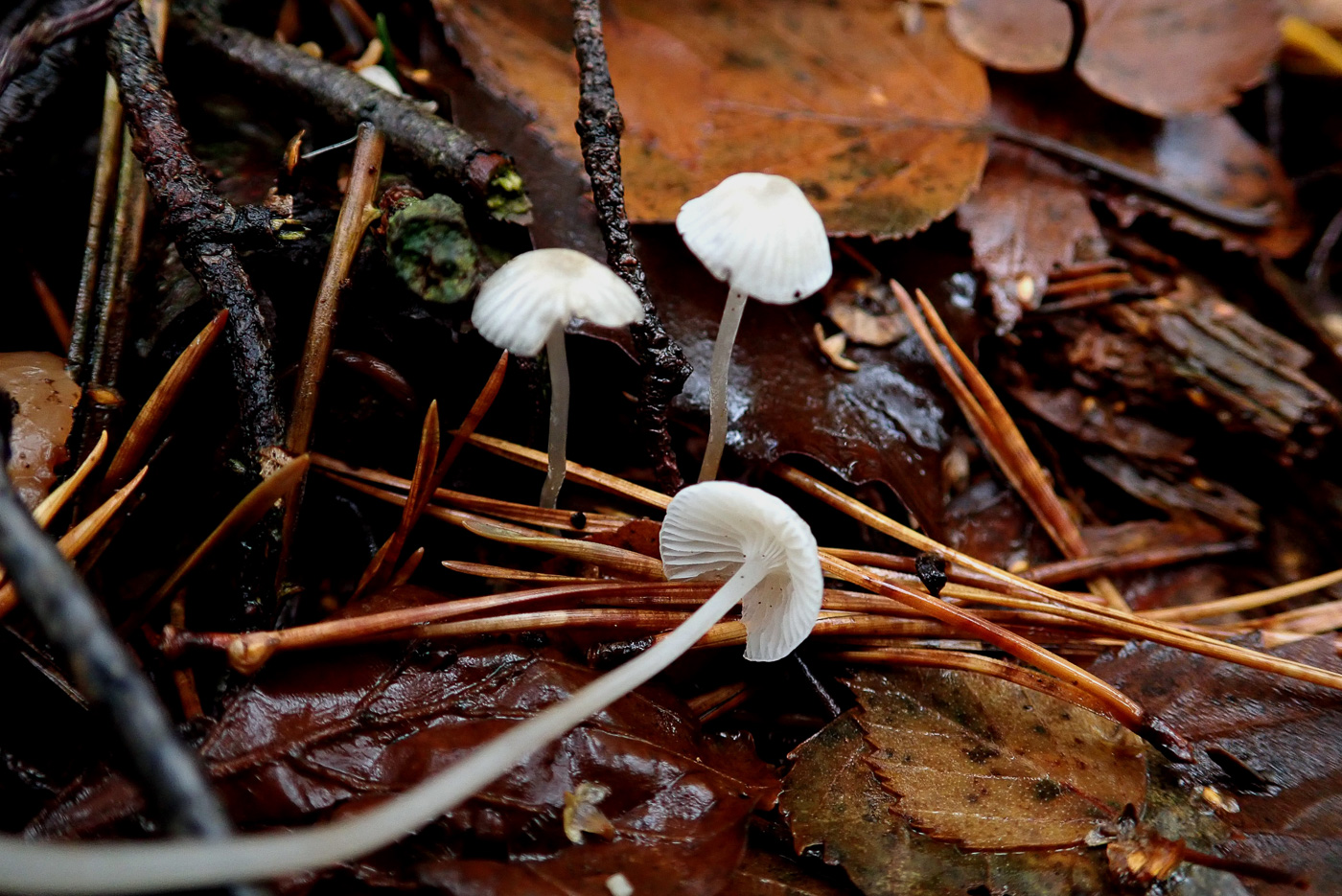
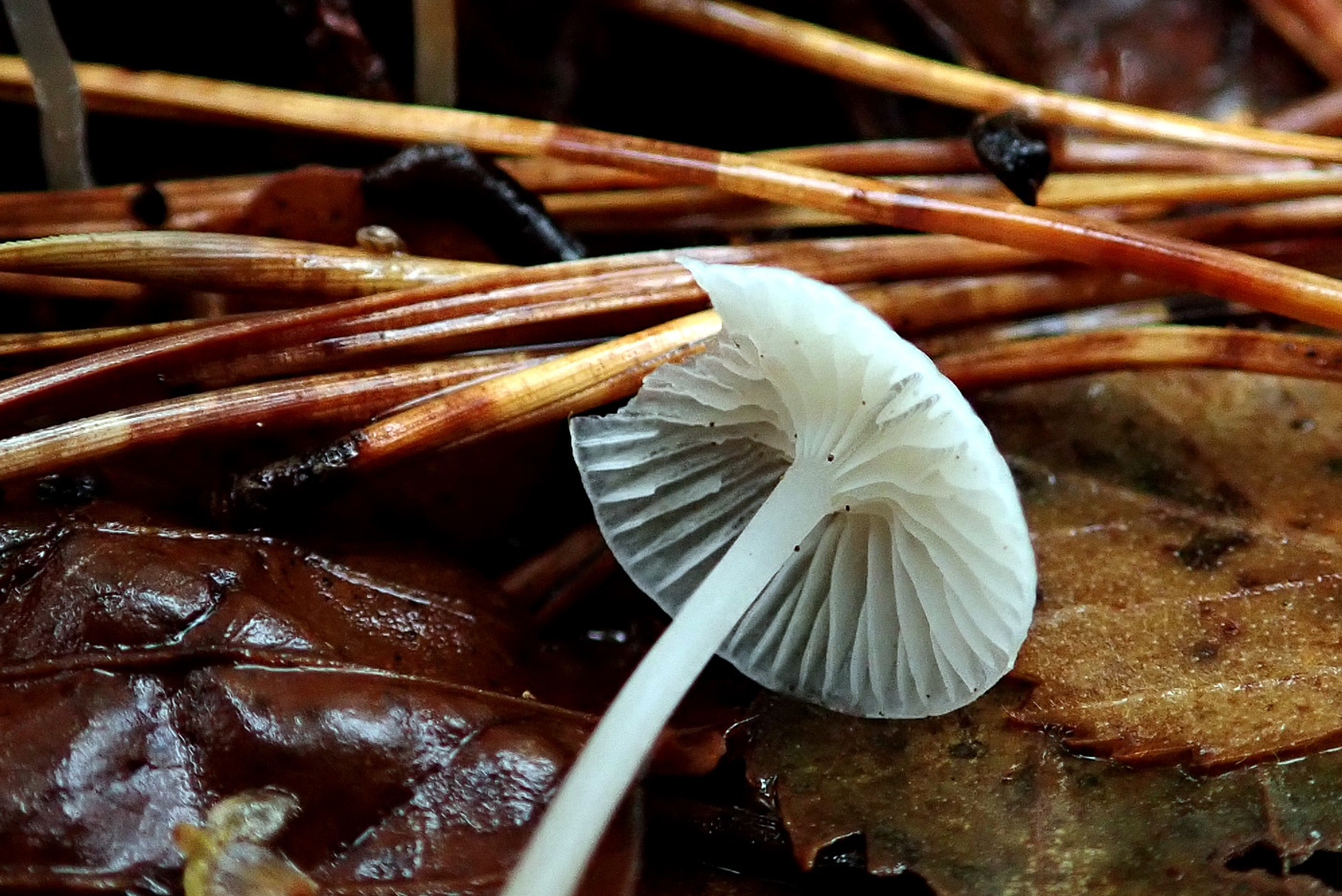 |
Mycena cinerella (Mealy Bonnet)
Nov 24, 2023. In Bernwood Forest Chris Grimbly noticed this Mycena in good numbers in the conifer litter. Though not confirmed by Penny with a scope this ID is fairly certain to be correct noting its distinctive decurrent gills, substrate and general appearance despite the fact that Chris commented that he couldn't pick up on the rancid flour smell depicted in its common name. However, fungus smells do tend to be fickle towards the end of the autumn season especially once the frosts set in. We have a fair number of records within the county, always in conifer litter of one sort or another.
Nov 3, 2020. One of many Pine associating species found today by Penny C. in Burnham Beeches, this small to medium Bonnet is not uncommon given plenty of needle litter though surprisingly appears to be new to the site. Two redeeming features to notice in the field make it an easy one to recognise given this particular substrate: the crowded but clearly decurrent gills and its strong smell of flour (known as a mealy smell and frequently encountered in fungi).
|
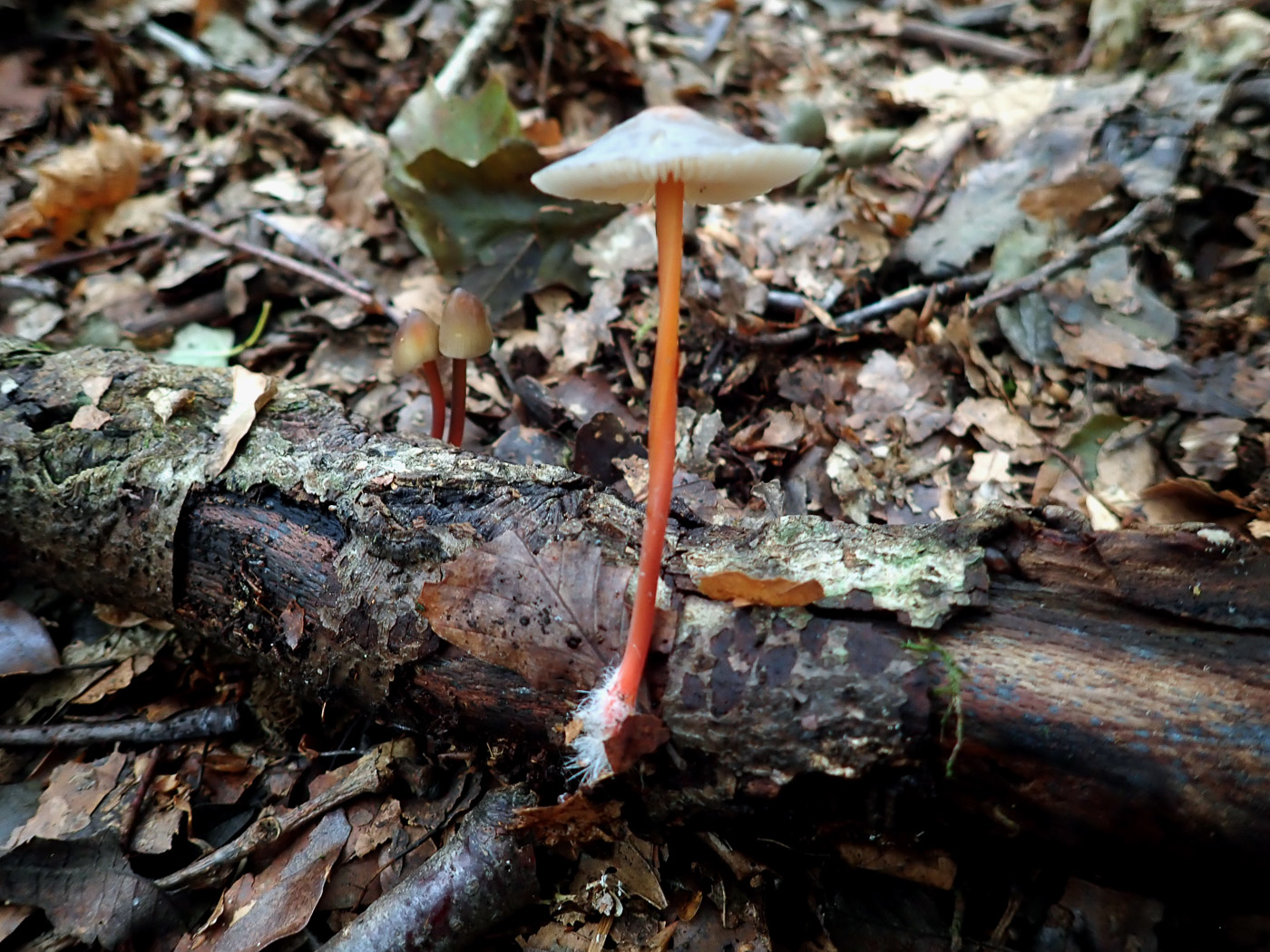
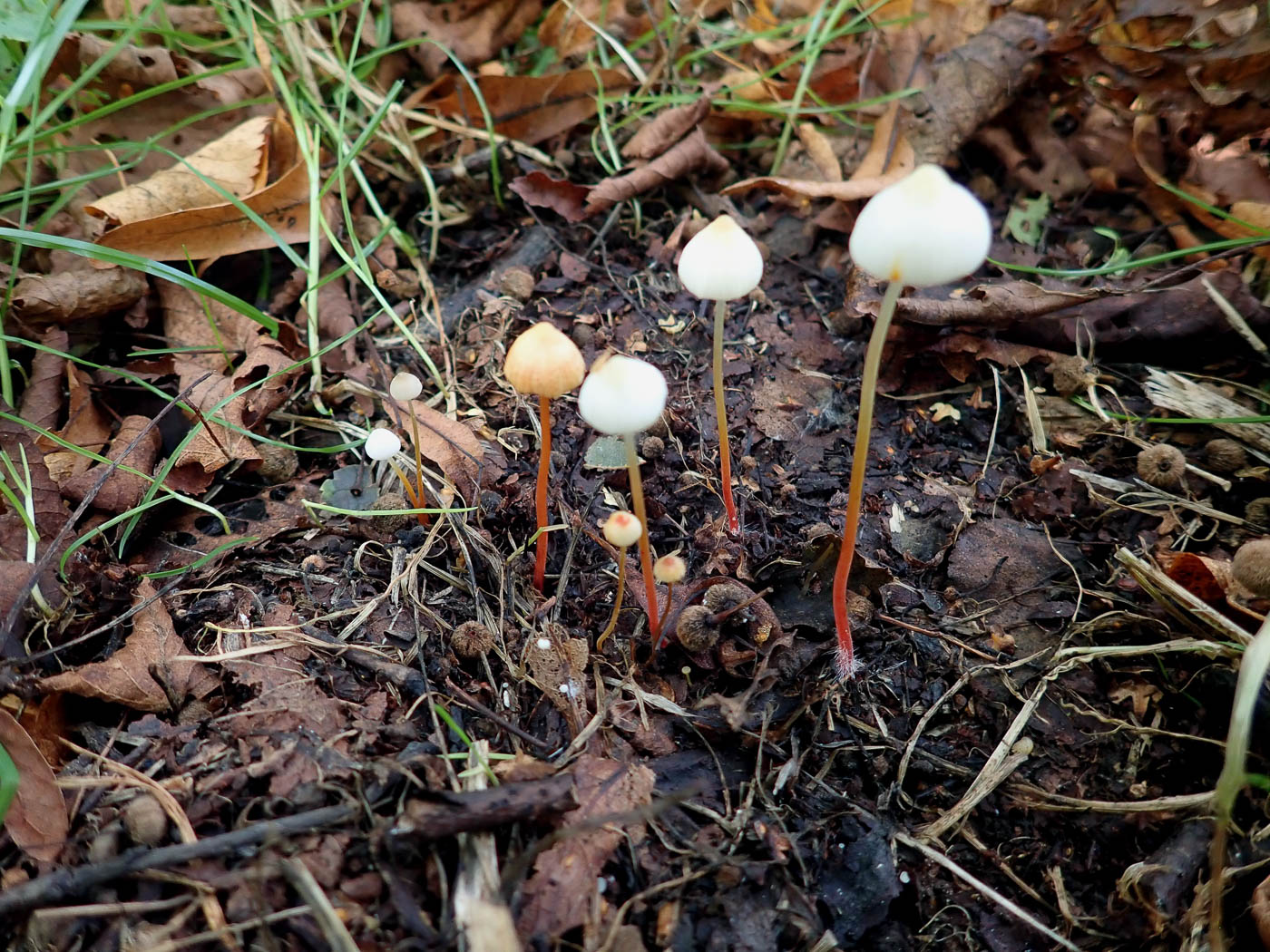
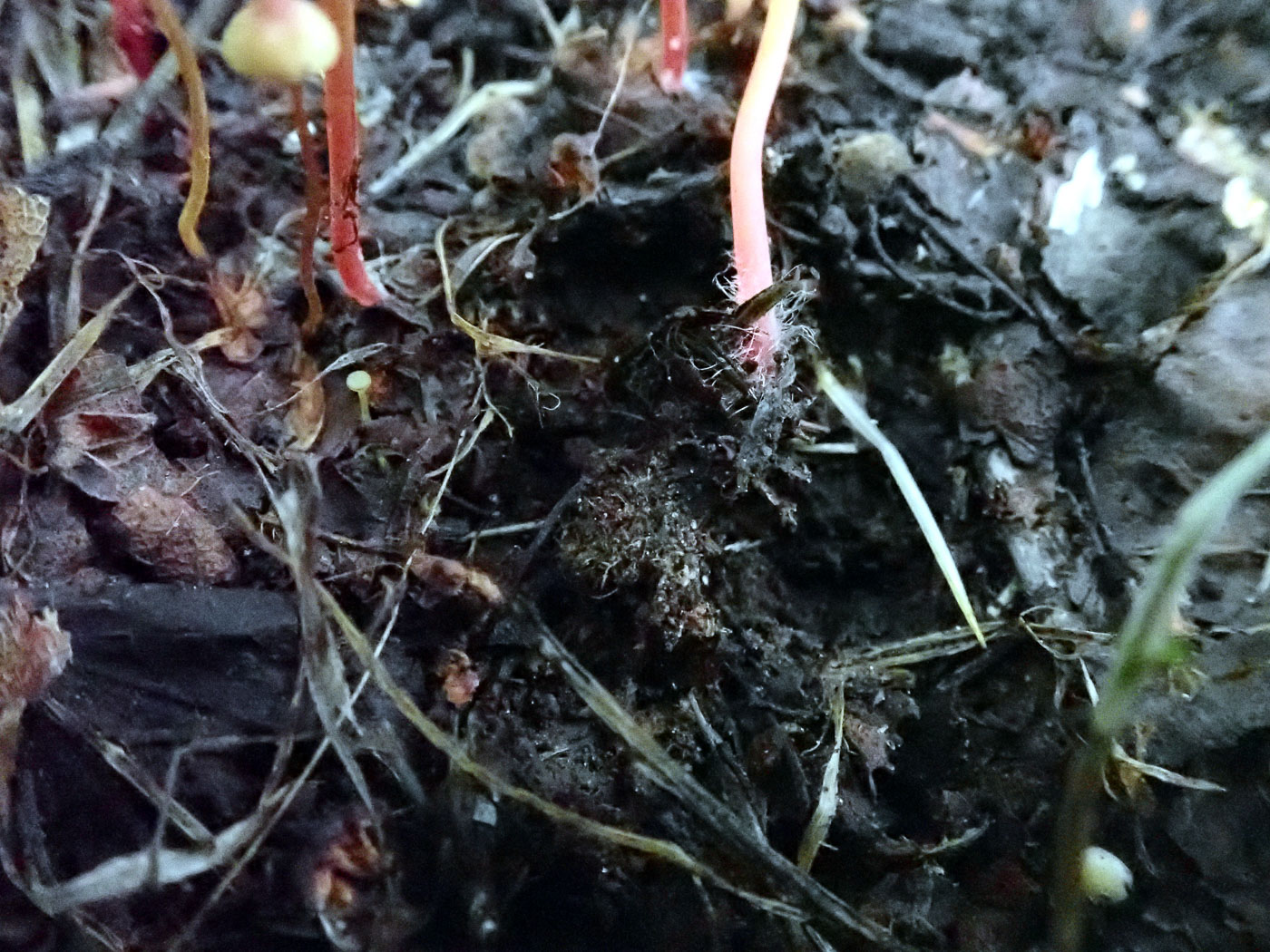
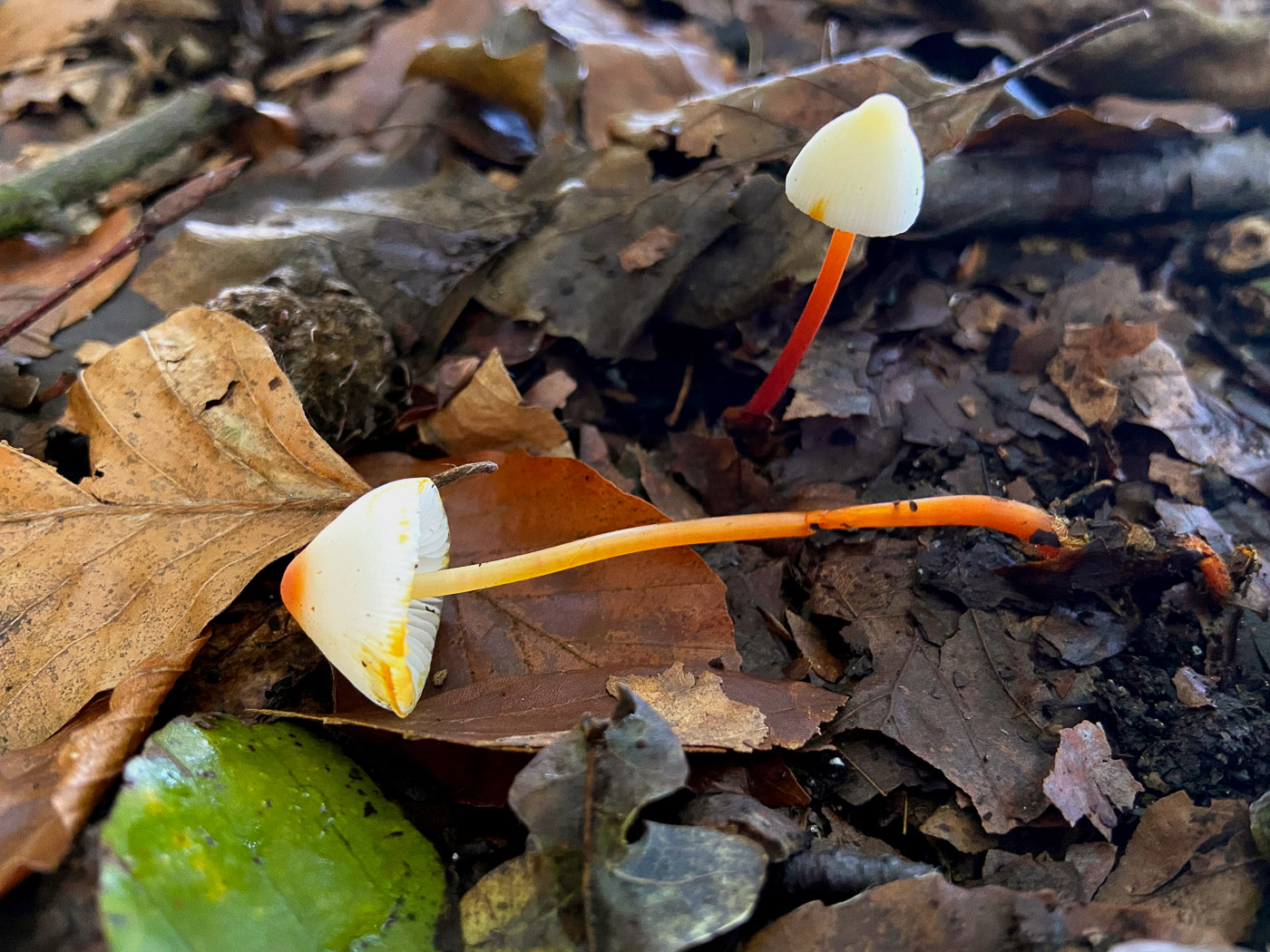
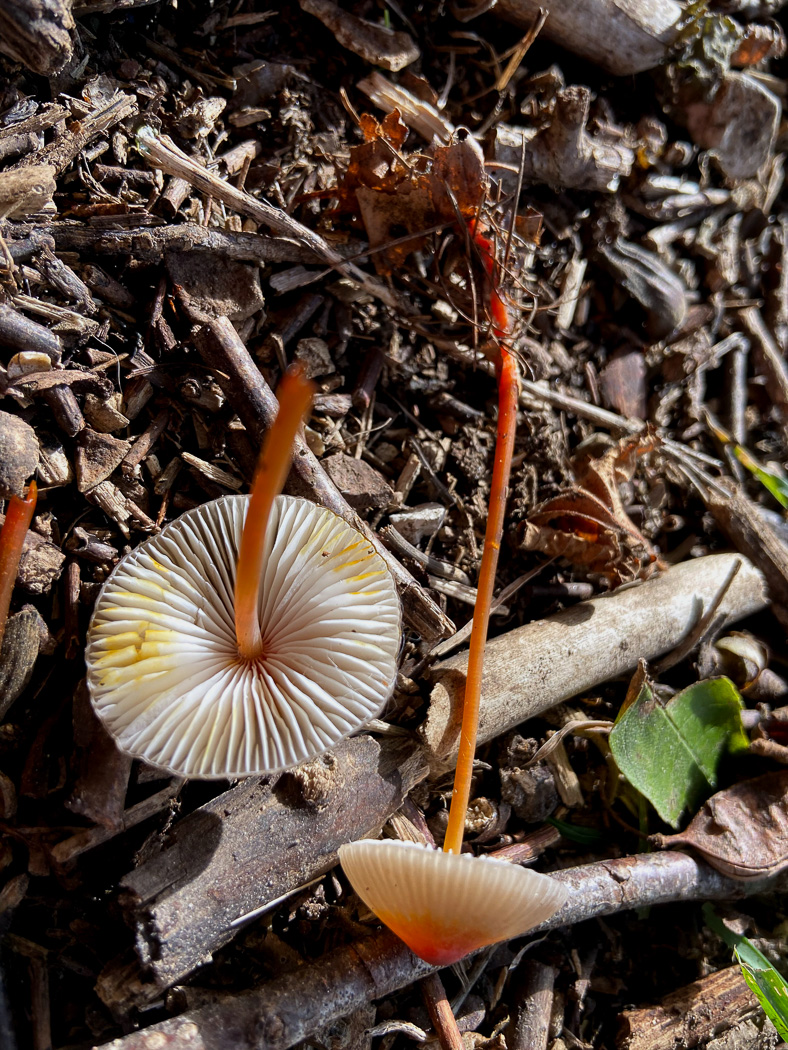
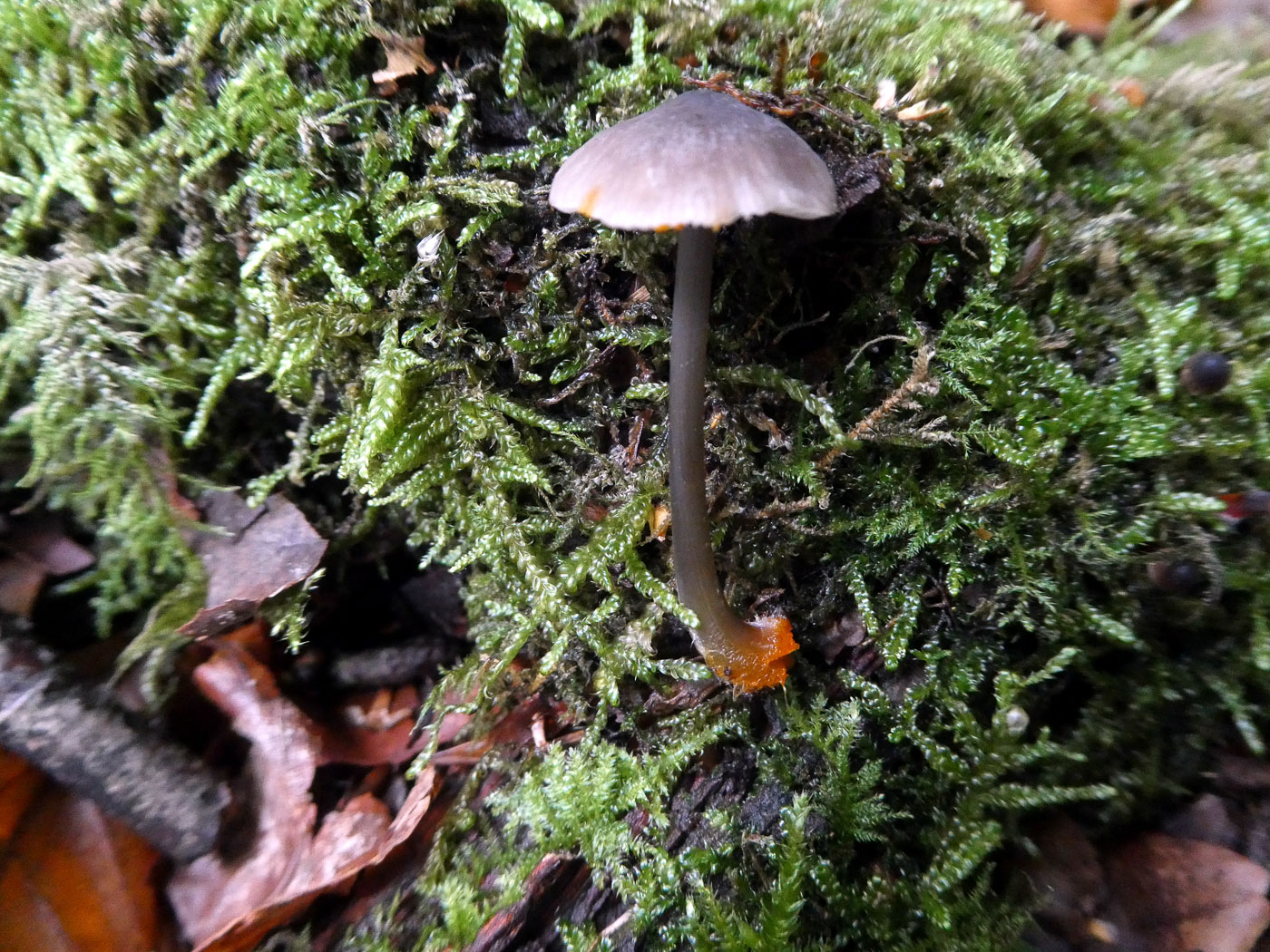
|
Mycena crocata (Saffrondrop Bonnet)
Oct 4, 2023. Whilst leading a walk for the Chiltern Society at Coombe Hill Penny found this common Chiltern species just starting to fruit on fallen Beech. Always a crowd pleaser and a nice easy Bonnet to name in the field owing to its bright orange 'juice', it is often to be found on Beech but also occasionally on both Birch and Lime. We have three previous images in Finds (note how similar the dates are!): 2020 October 7th, 2021 October 6th, 2022 October 6th.
Oct 6, 2022. This species - common in the Chilterns - was nevertheless a surprise to Penny under the Limes at Turville Heath today. Known to fruit abundantly on fallen Beech (and by some considered to occur only on that substrate), here there are no Beeches anywhere near, furthermore it was not on fallen wood or even on submerged roots but on soil / litter under Lime - Penny made a careful examination with her knife! The caps were all either pure white or saffron tinted, not some shade of brown as one would expect, hence this collection is being dried for sequencing.
Oct 7, 2020. This particular Bonnet, common in the Chiltern Beech woods, has been hardly seen this season until found here in Bradenham Wood by Sarah Ebdon. It is only found on wood or woody remains of fallen Beech and in other parts of the country is considered rare. If, however, one were to chose a fungus to represent the Chilterns, this would certainly be a contender! Caps can be white, as here, or some shade of brown, even almost black (see photo 3 taken three days later, Penny Cullington), but the telltale feature is the amazingly prolific orange 'juice' which exudes when any part of the fruit body is damaged. Once collected, the stem base often drips with it but also the flesh within bleeds making even the cap and gills tainted as seen in Sarah's excellent photos. Do not confuse with M. haematopus (see photo dated Sept 07) which also grows on fallen branches but has much darker wine red juice.
|
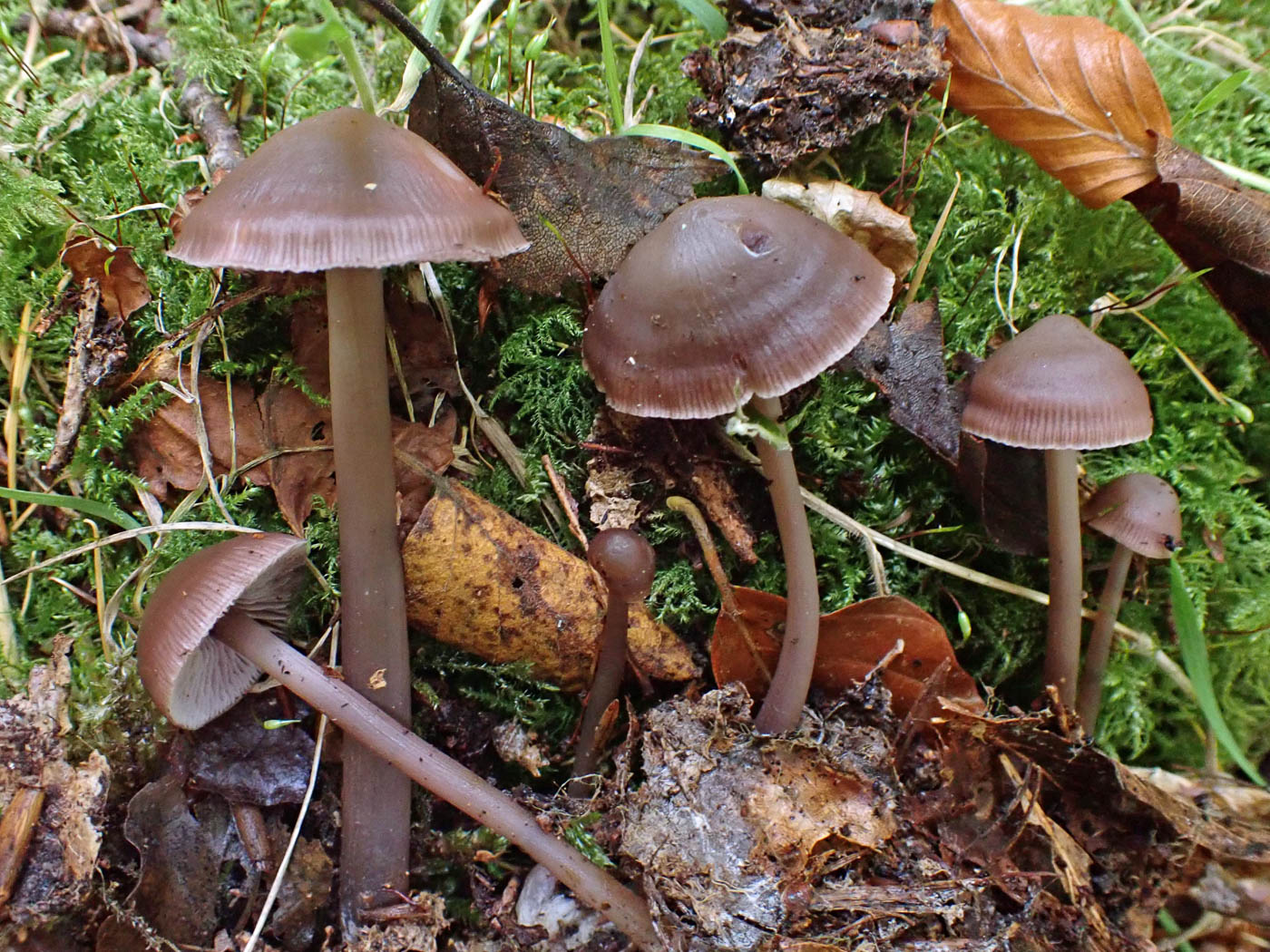 |
Mycena diosma (a Oct 19, 2022. Bonnet with no common name) 
Under mixed deciduous trees at Bittam's Wood, Dancersend, our small group found a nice collection of this rather unusual Bonnet - one of the litter-loving 'pura' group with the typical radishy smell though a bit more spicy and fragrant than in the much more common species, ie M. pura, rosea and pelianthina. It is much less variable in colour than M. pura which has a wide range of lilaceous shades (and can even be yellow or white on occasion) but differs from it by having some zoning on the cap. It was new to the site today and is also new for Finds.
|
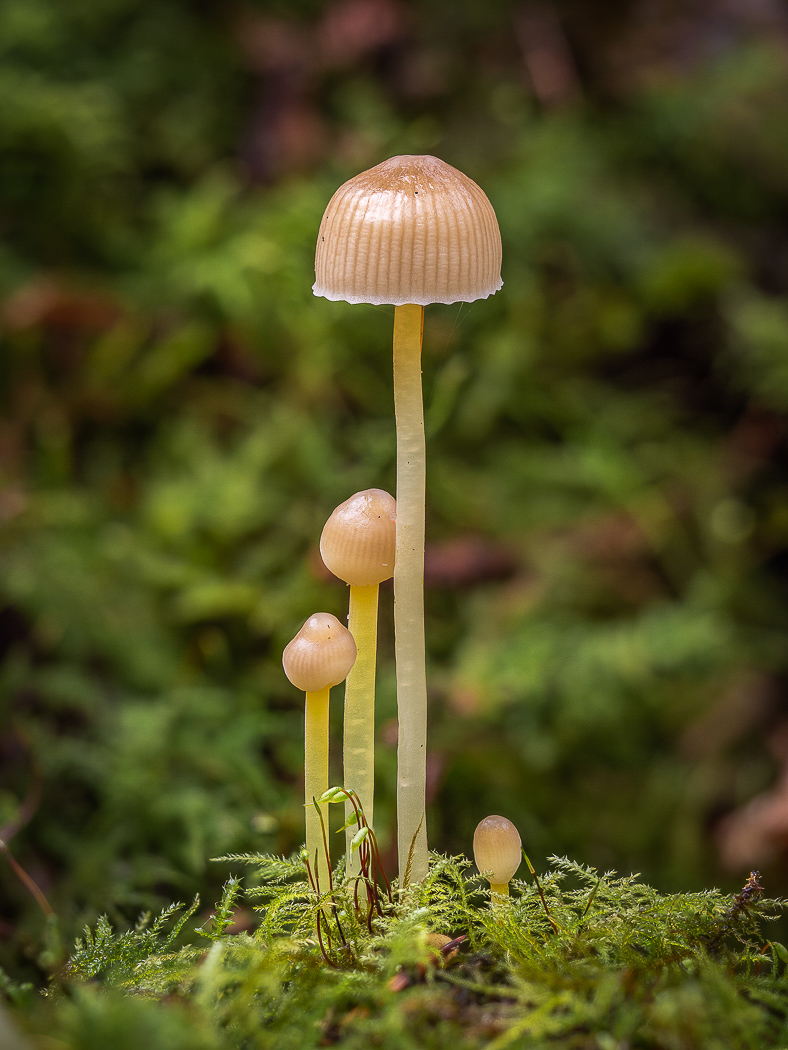
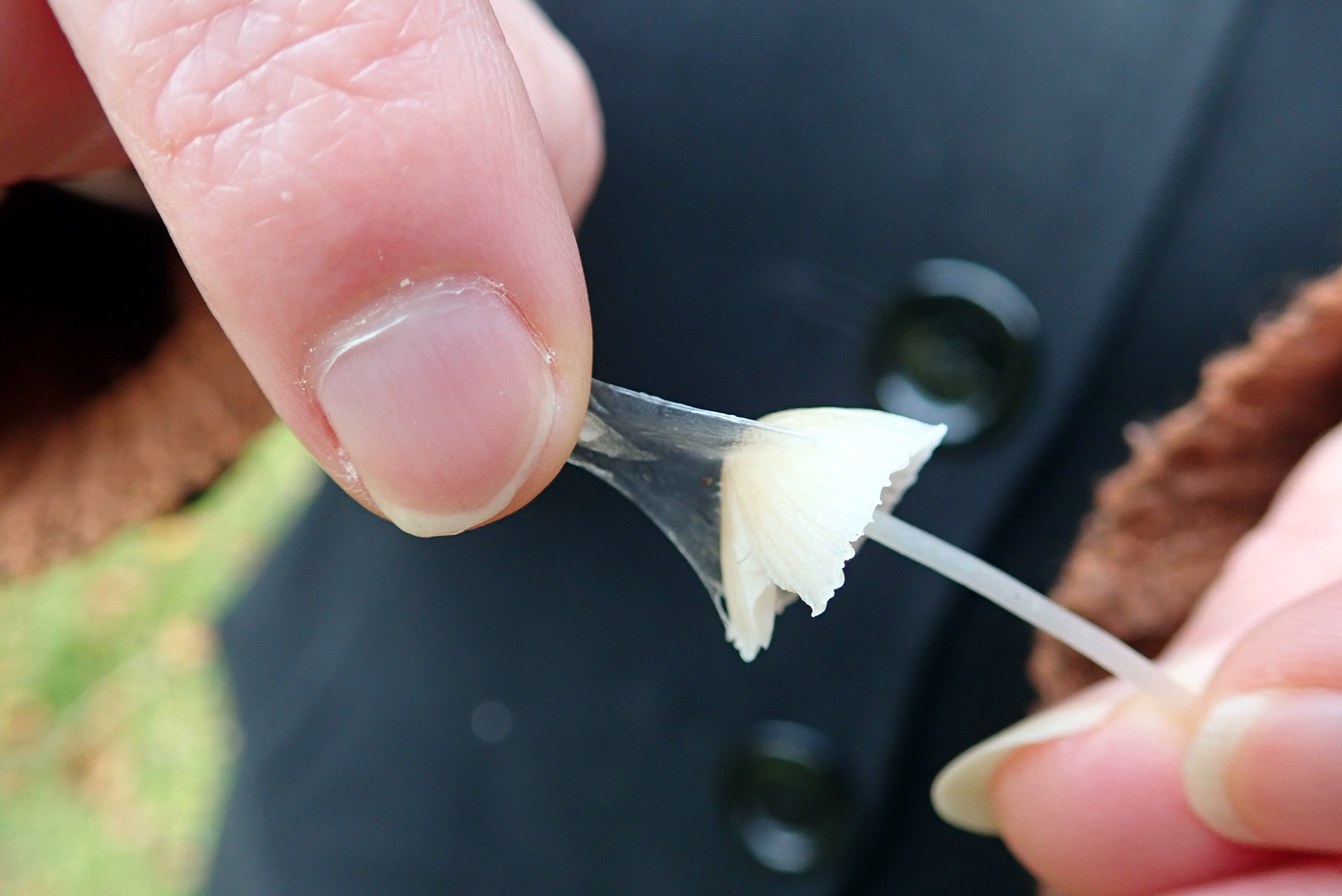
|
Mycena epipterygia (Yellowleg Bonnet)
Nov 1, 2020. Barry Webb noticed these little beauties on a pile of mossy branches in Penn Wood. This is a small to medium Bonnet, quite common, and can be identified in the field if one knows which features to look for. The whole fruit body is very sticky, so much so that if you pick one it sticks to your fingers and you can't drop it! With care you can peel the whole of the outer gelatinous layer away from the cap. (See photo 2 demonstrating this on a specimens found in Burnham Beeches on Nov 6th - photo Penny C.) Note also the decurrent gills and yellow stem, this often being the first feature to alert one to its identity. It occurs most commonly on conifer wood or litter but can also be found in mixed woodland
|
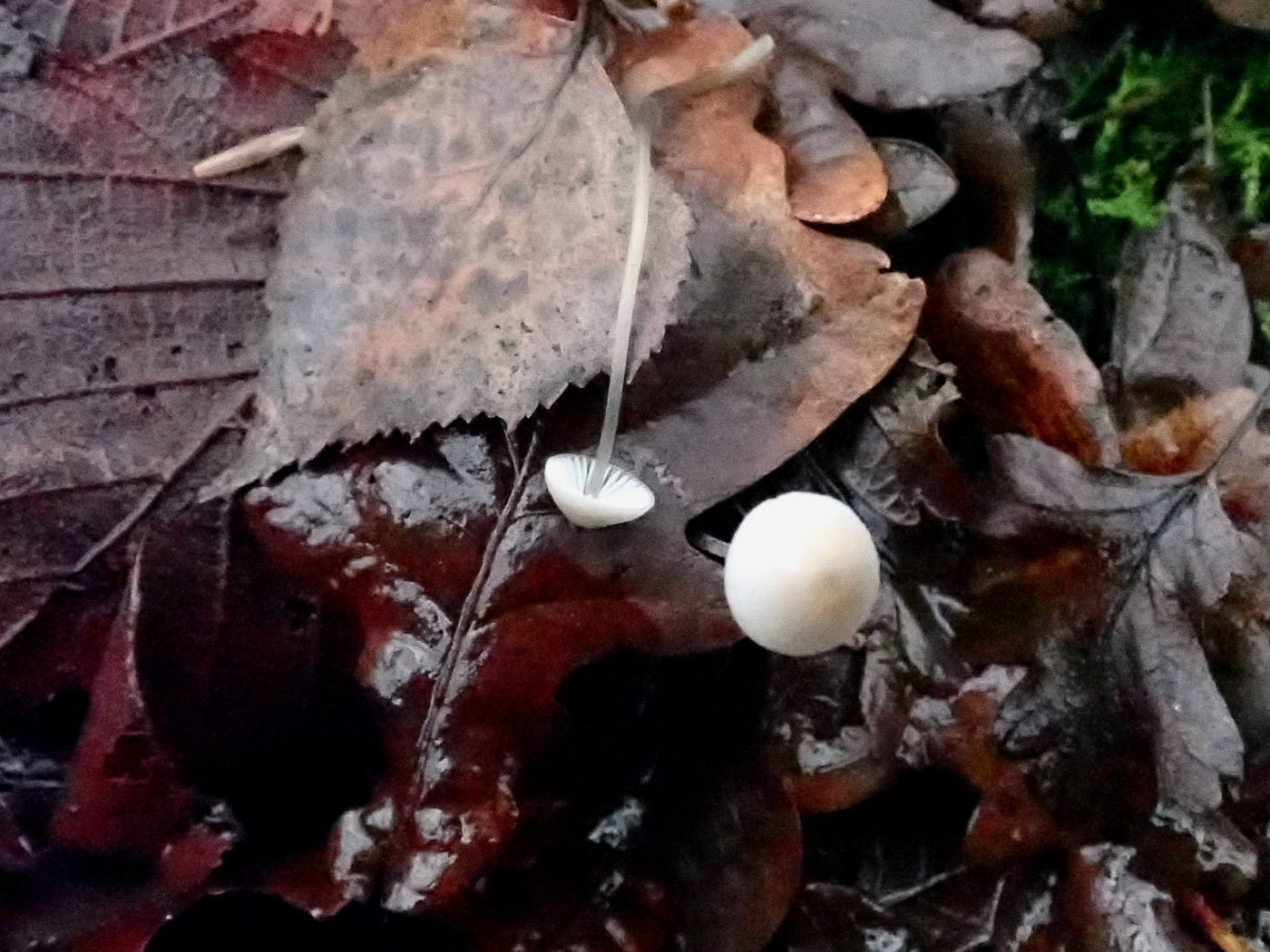
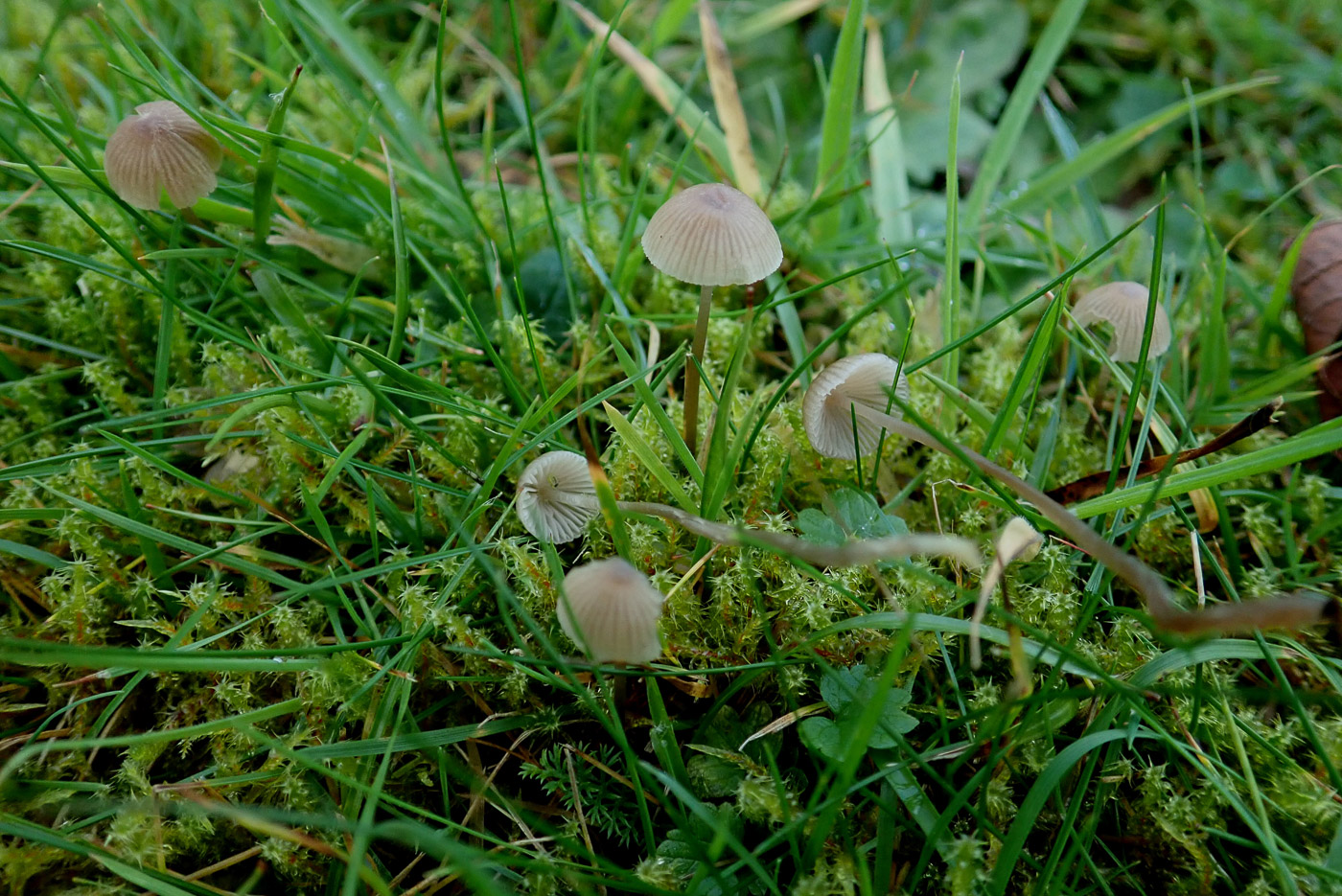
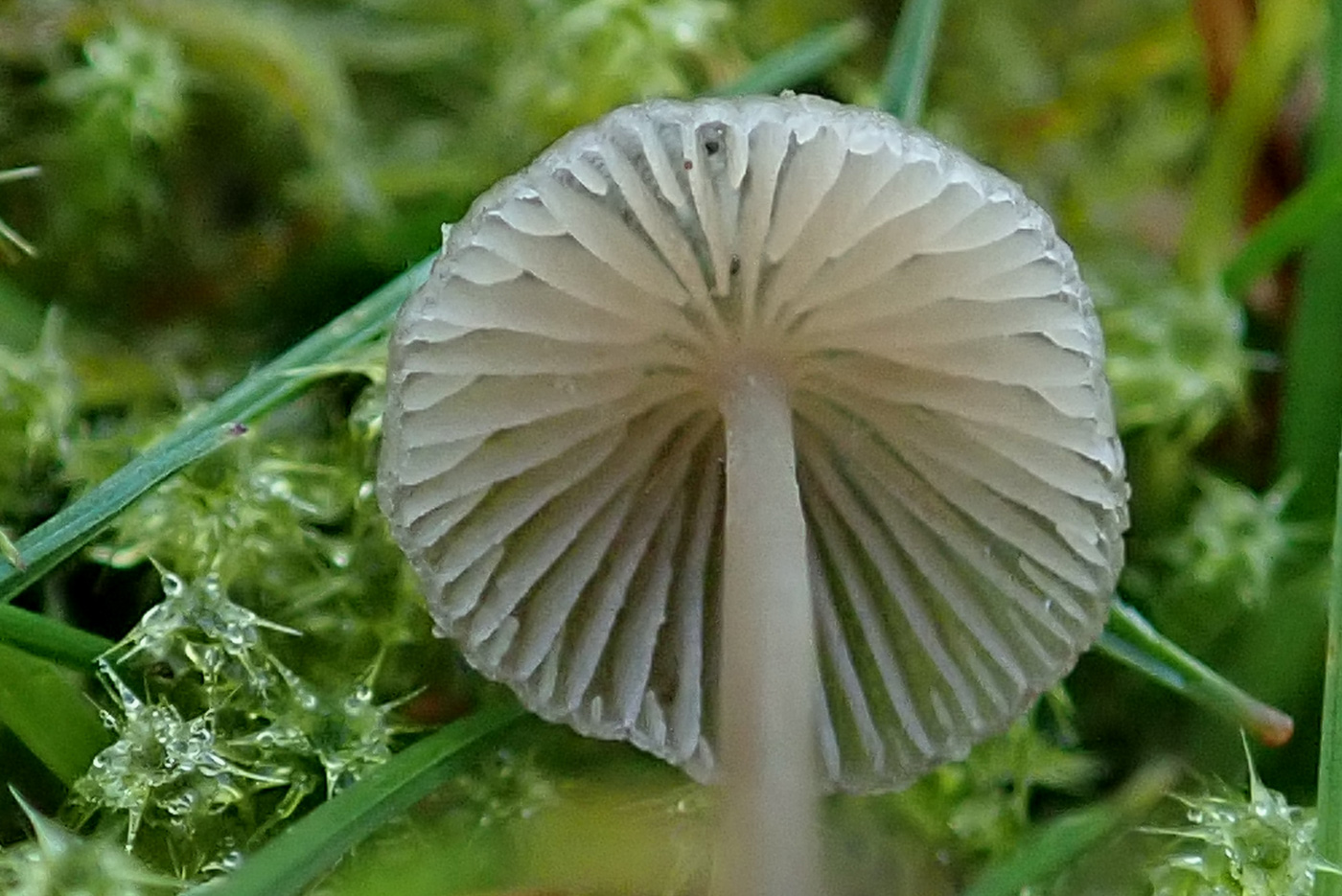
|
Mycena filopes (Iodine Bonnet) 
Jan 3, 2022. On her muddy winter stroll in Rushbeds Wood Penny, to her surprise, found two species of Bonnet - this one needing a scope to identify. This is a typical nondescript smallish to middle-sized Bonnet found very commonly in woodland litter and not nameable to species with any certainty without a scope. It could just as easily have been M. vitilis (Snapping Bonnet) especially as its iodine smell is often faint and at best takes time in a pot to develop. The method of waving the specimen about to see if the stem snaps as it breaks is proven not to be reliable, so neither of the common names are particularly useful!
Nov 13, 2020. Penny C. paid a visit to Prestwood churchyard in search of grassland fungi and was richly rewarded today. This species was the first of two different Bonnets and very common in both woodland and grassland settings. It has a typical small conical pale brown cap which is translucently striate when moist, white crowded gills and a pale thin stem. If you put it in a pot it develops a smell of iodoform as it begins to dry out, but as there are so many other Bonnets which fit this description the only safe way to identify it is with a scope.
|
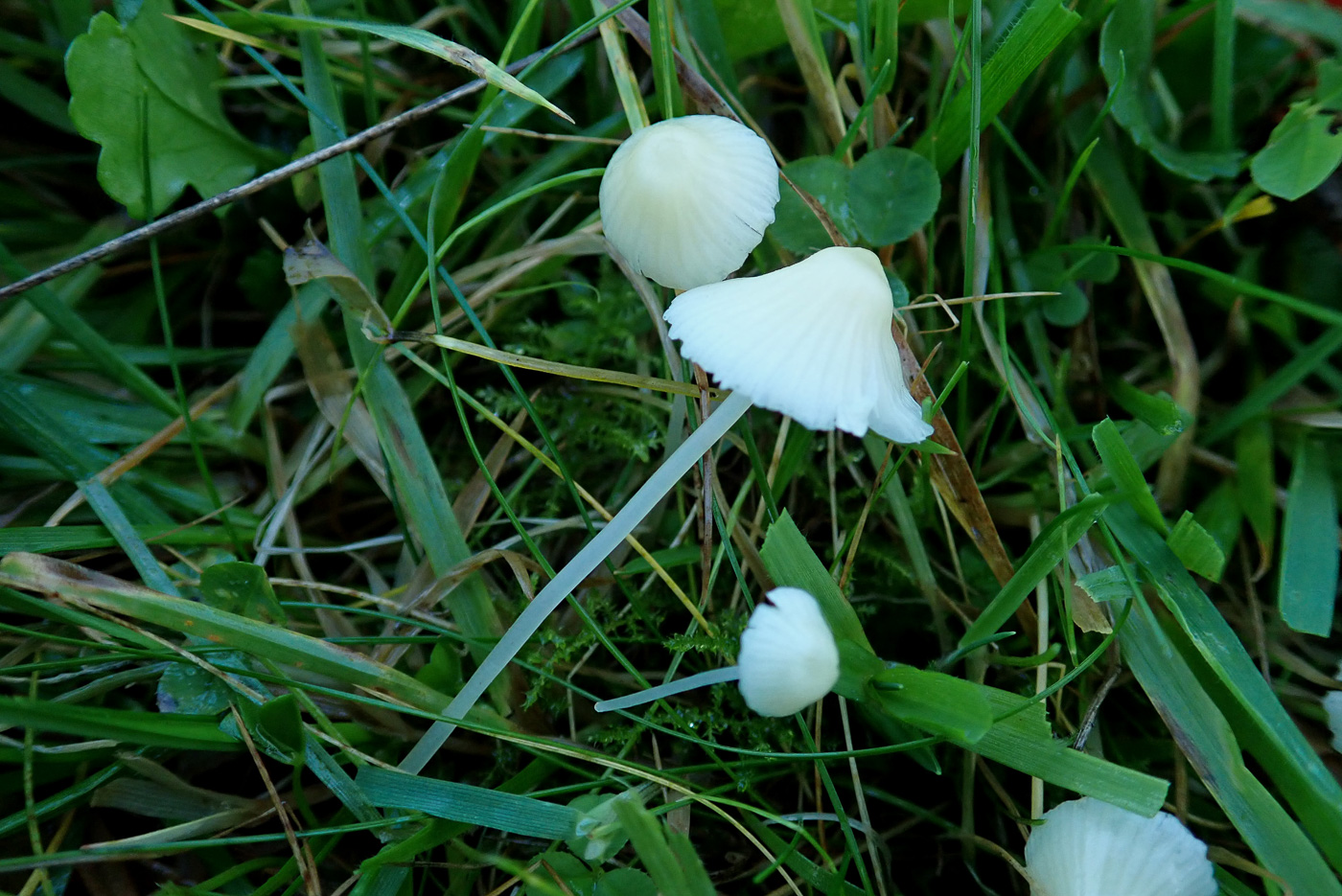
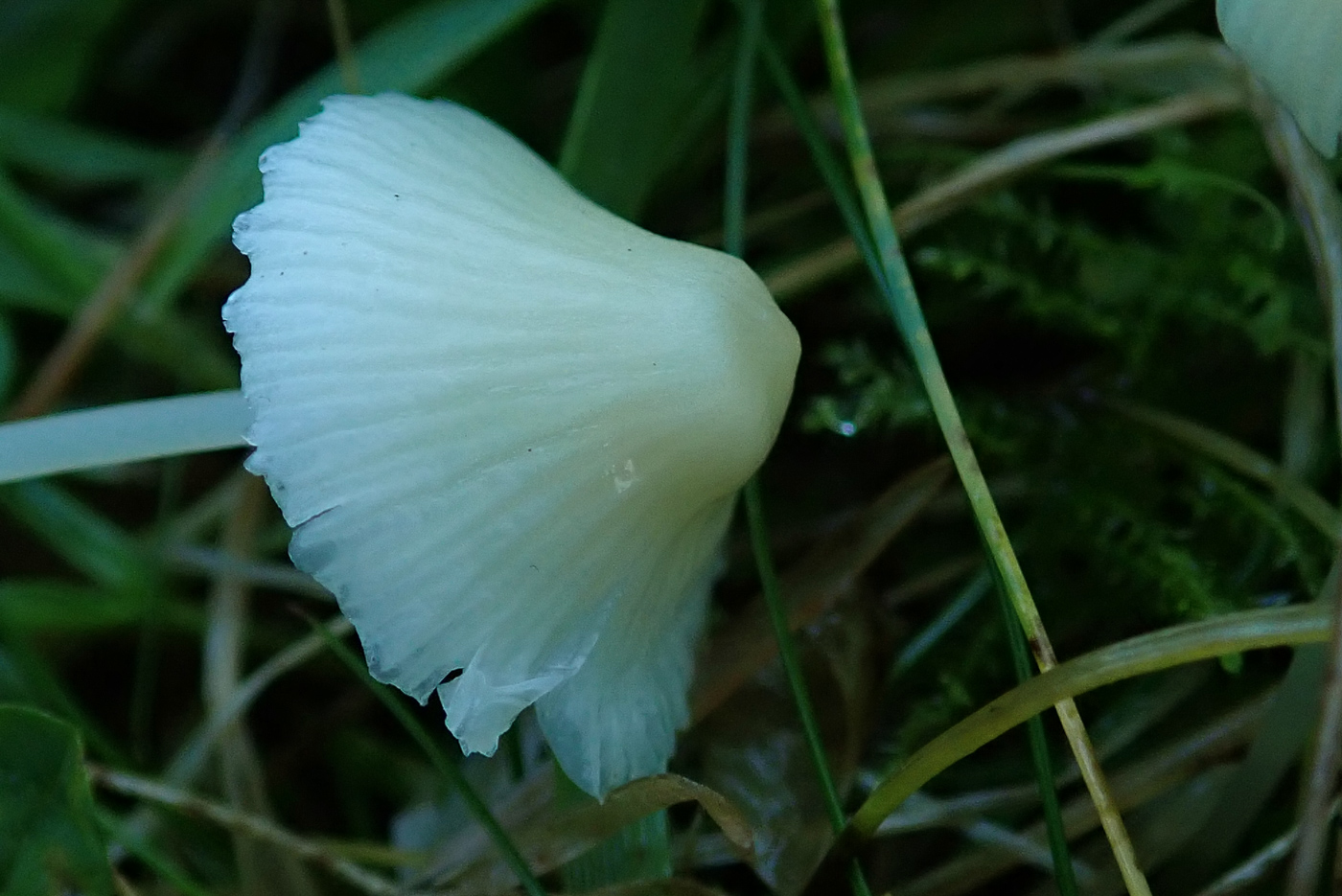
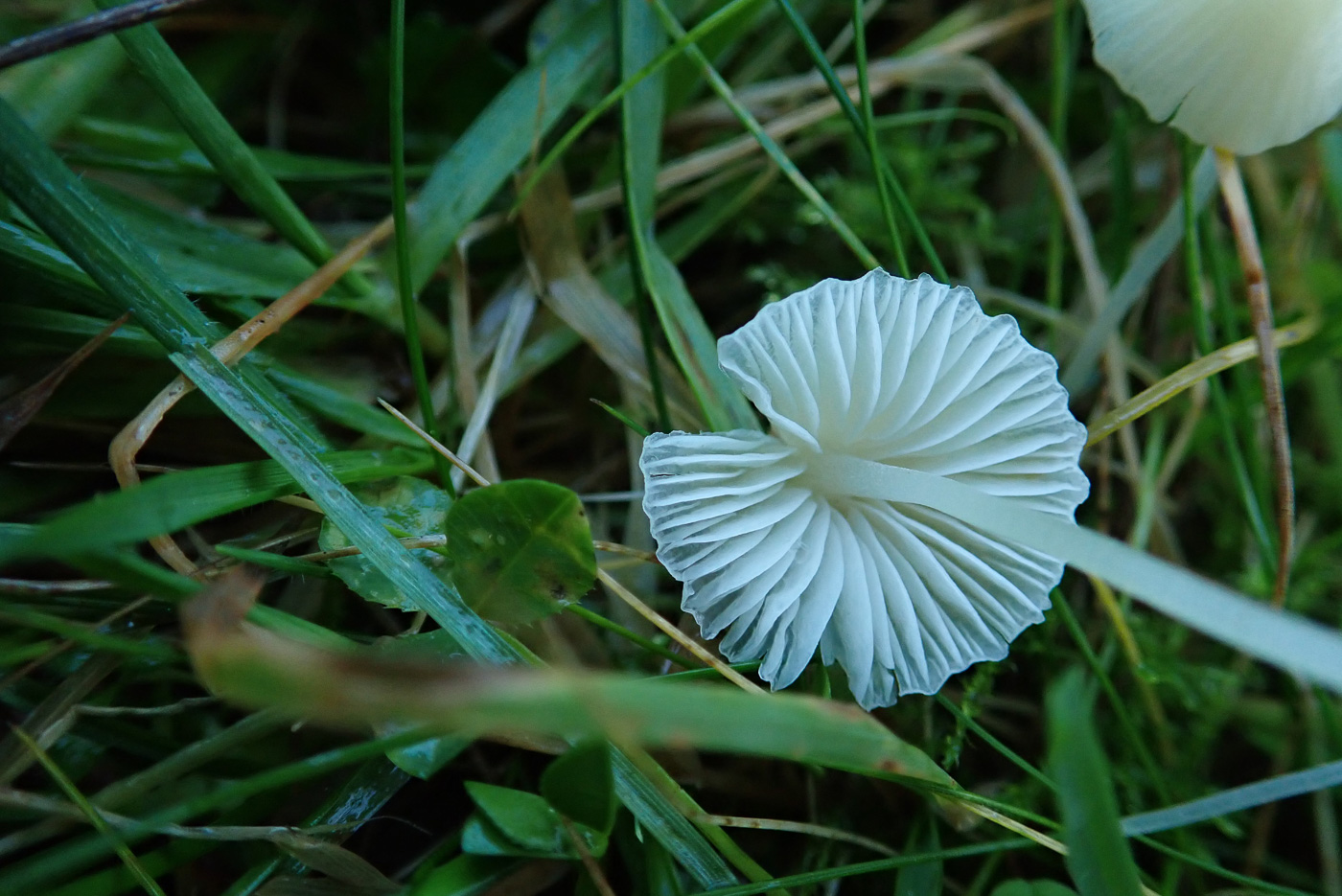 |
Mycena flavoalba ((Ivory Bonnet)
Oct 31, 2020. Penny C. has been focusing on grassland recently for two reasons: they aren't so thickly covered with fallen leaves so it's easier to find fungi, also late season is the best time for many of the grassland species. Today in Ibstone Common she found this cpmmon delicate white grassland Bonnet - an easy one to identify because the cap is tinged with yellow when mature unlike other white Bonnets, also this is the only white species likely to be found in this particular habitat. There are many others but all occur in woodland litter or on wood. Caps can get to about 1 cm across, and at this stage often have a small dimple in the centre, just visible in photo 2.
|
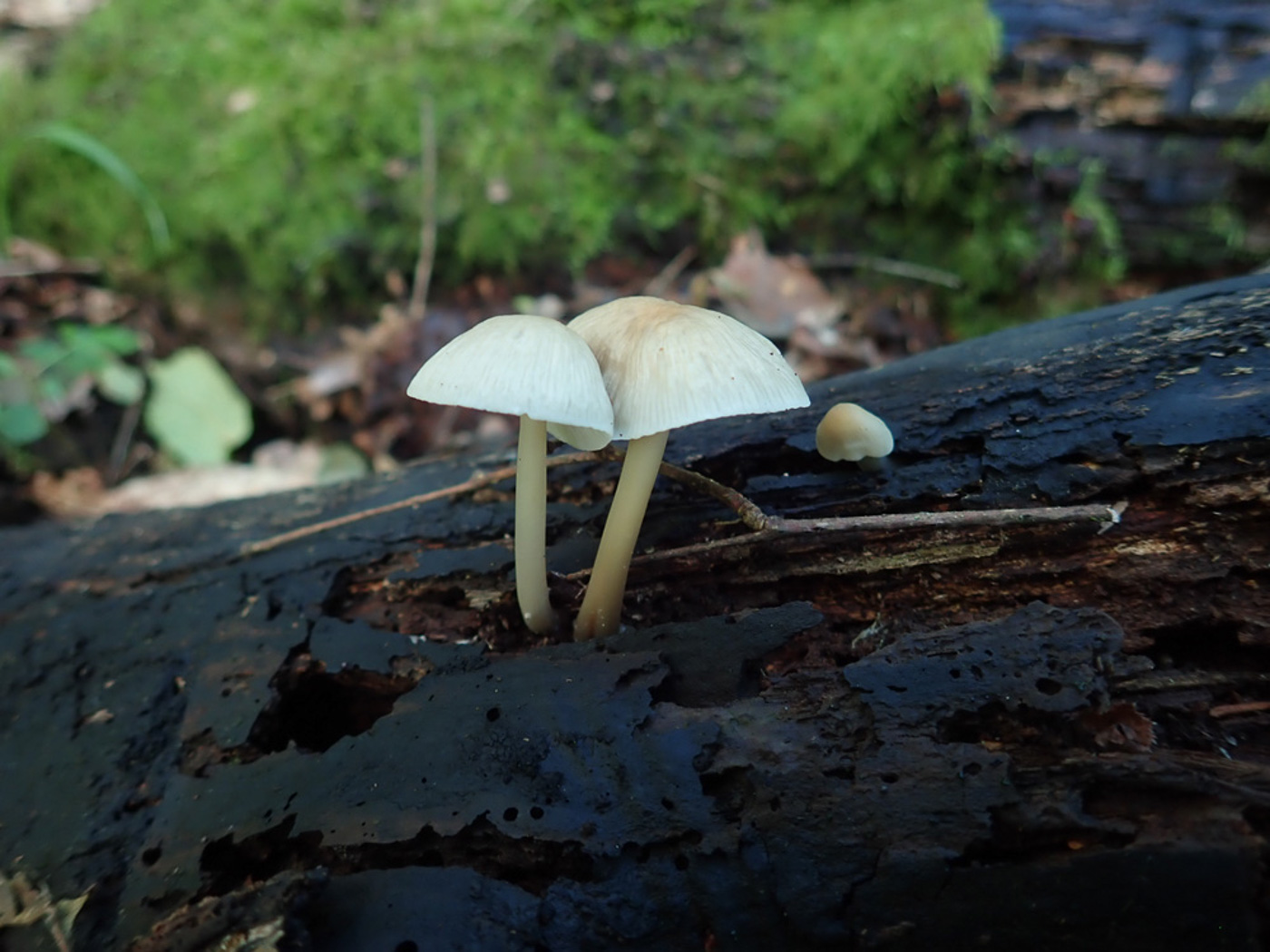
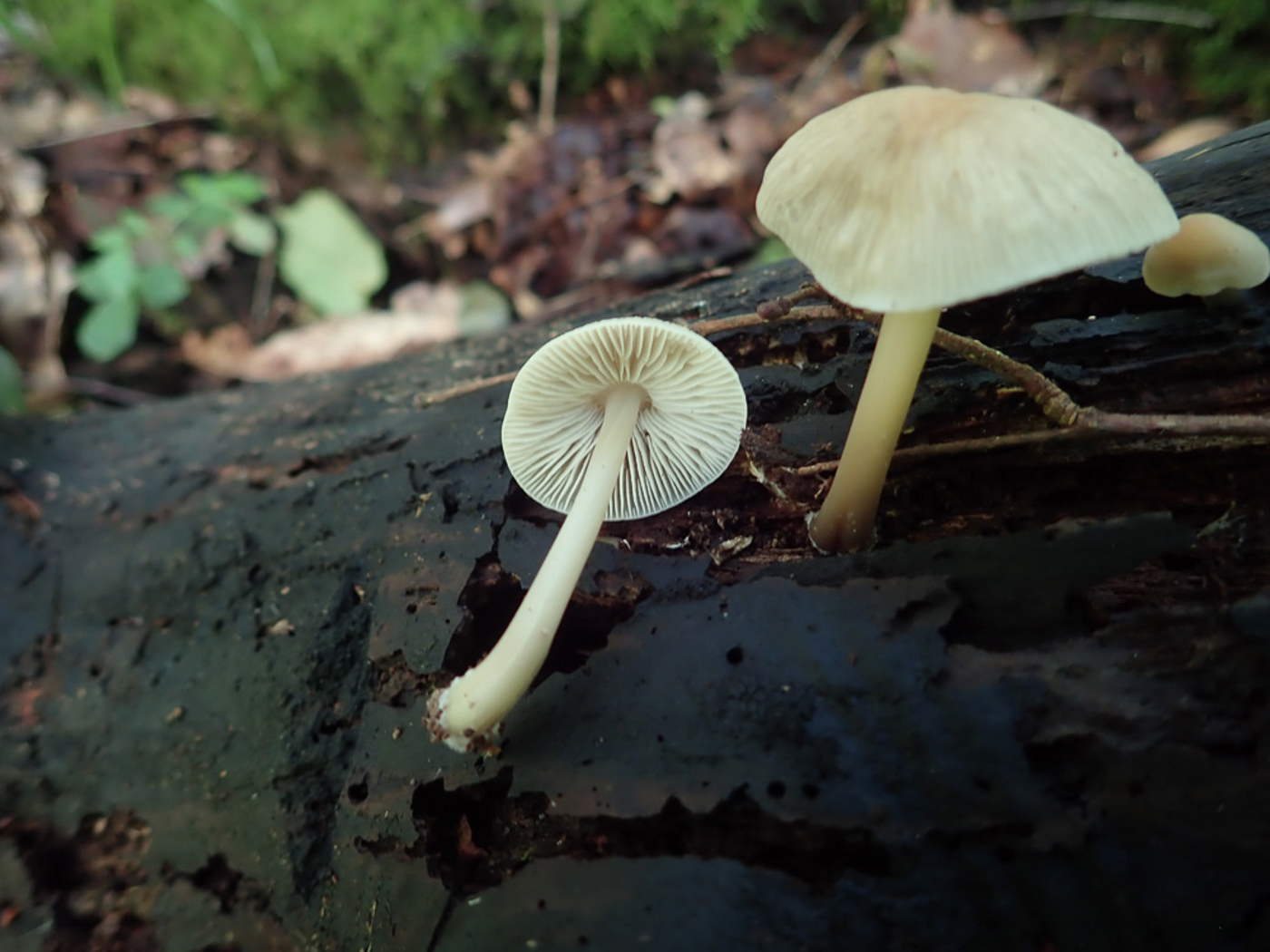
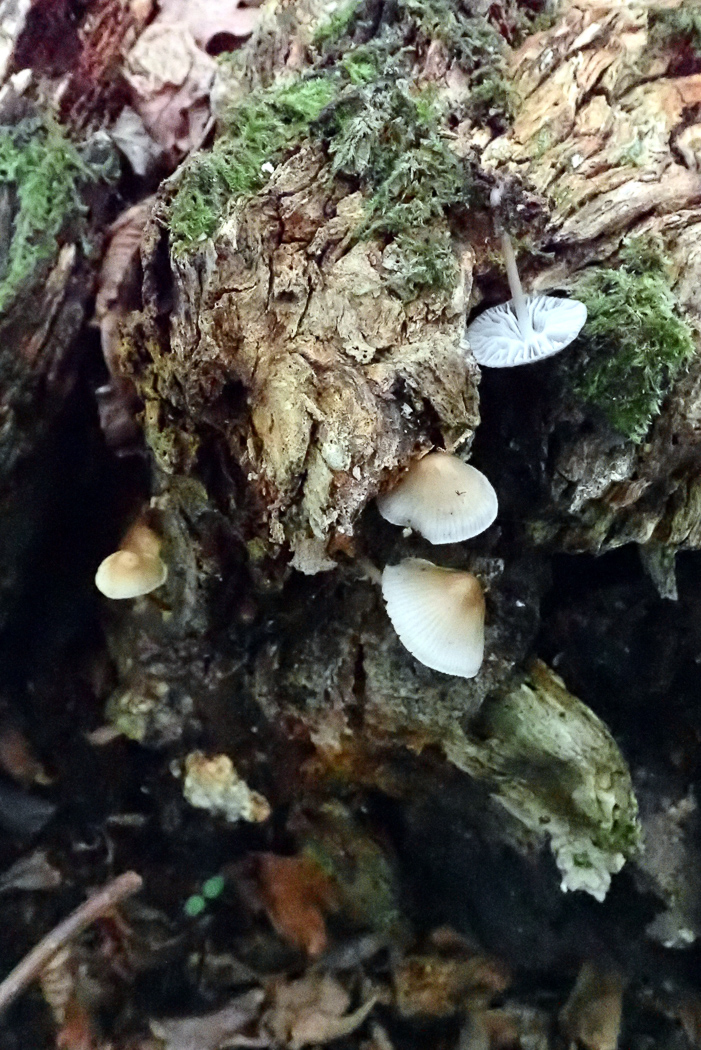
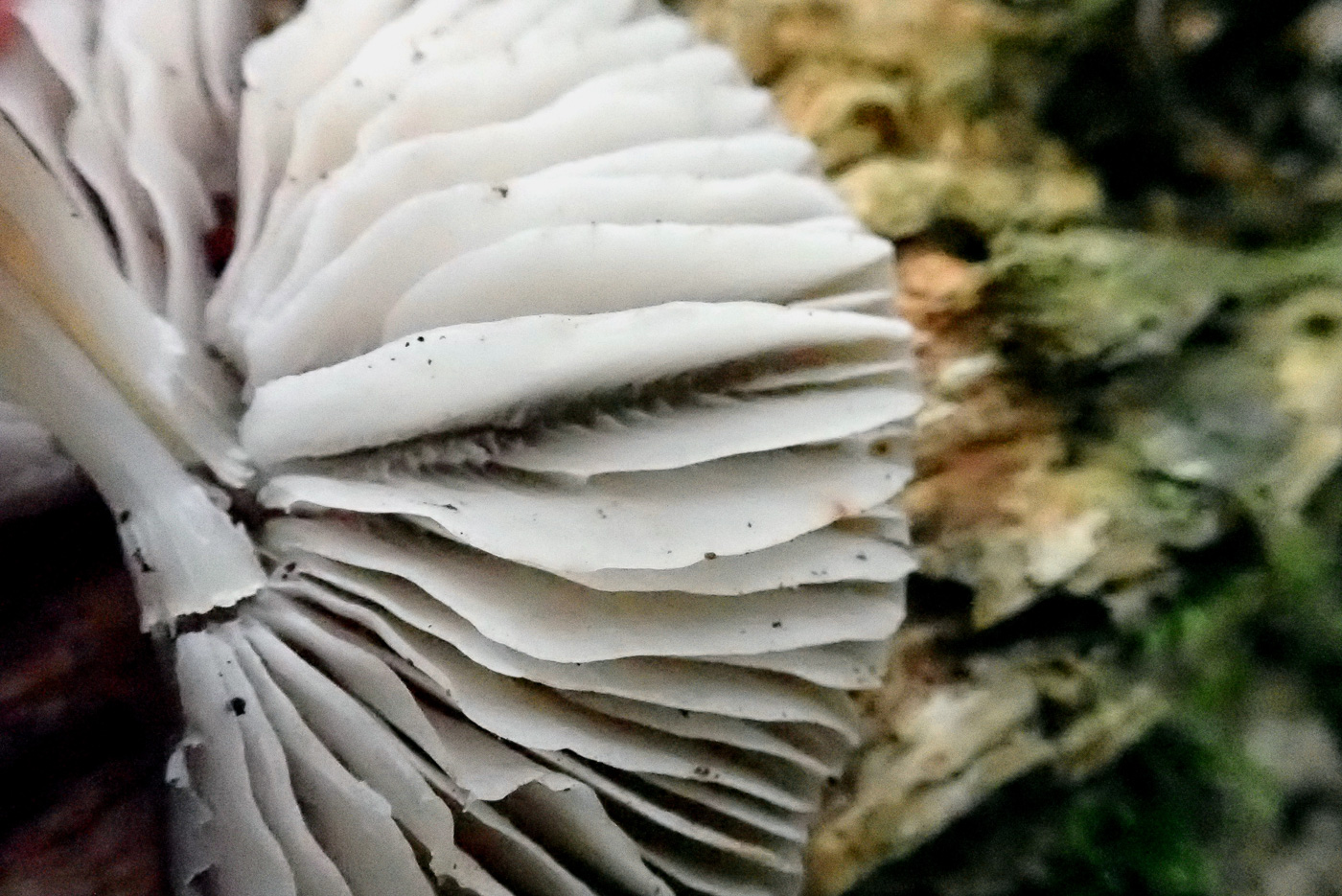
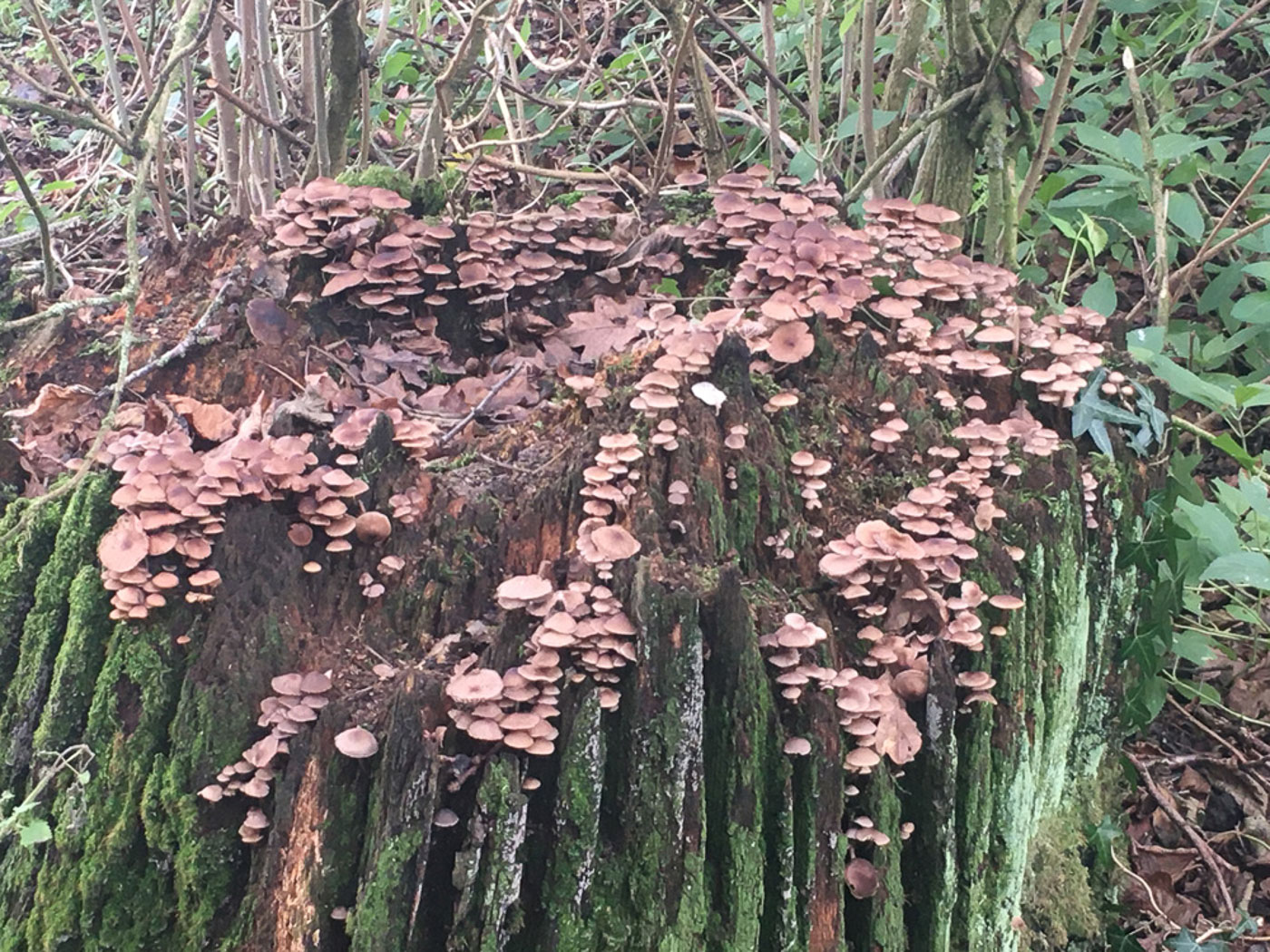
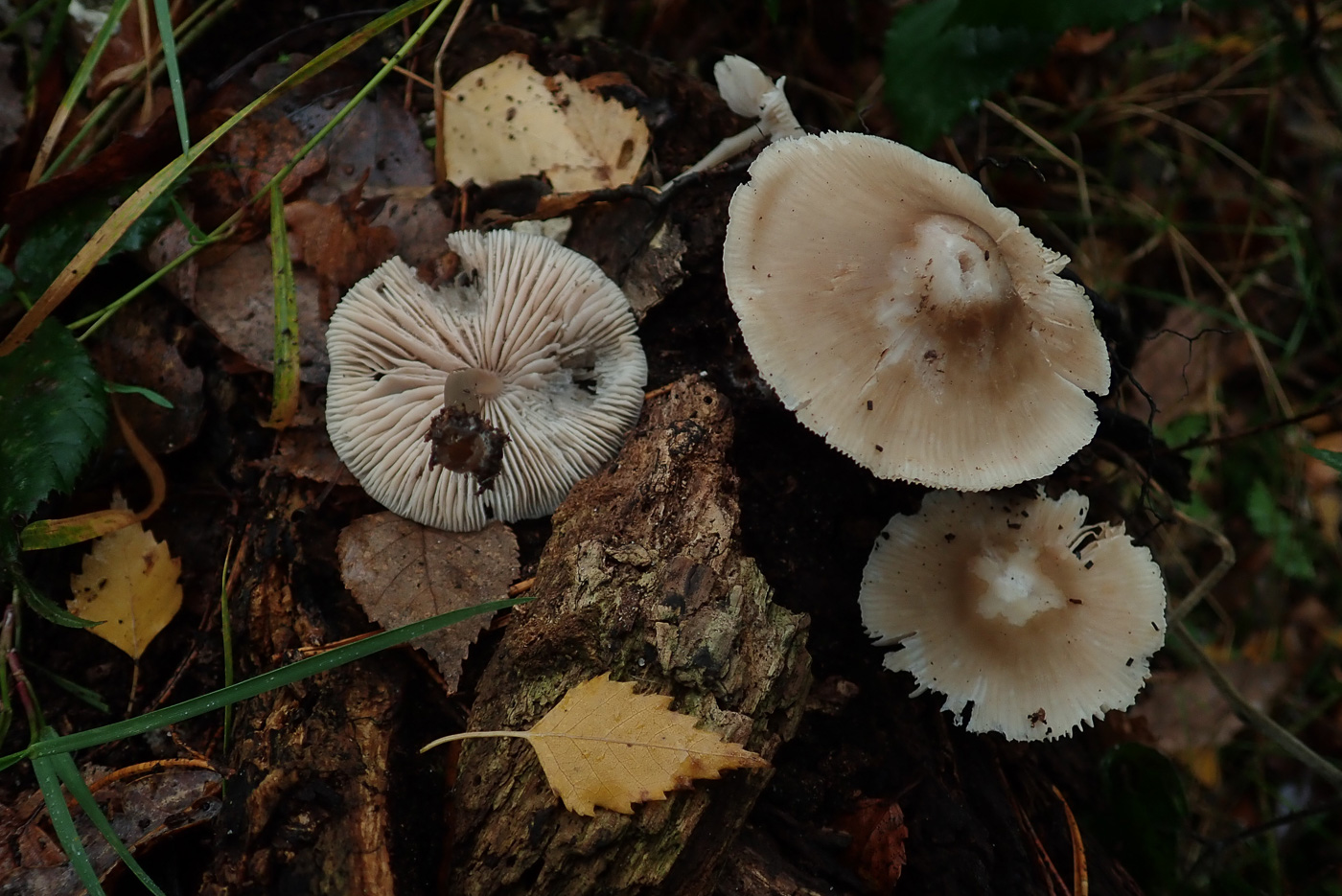
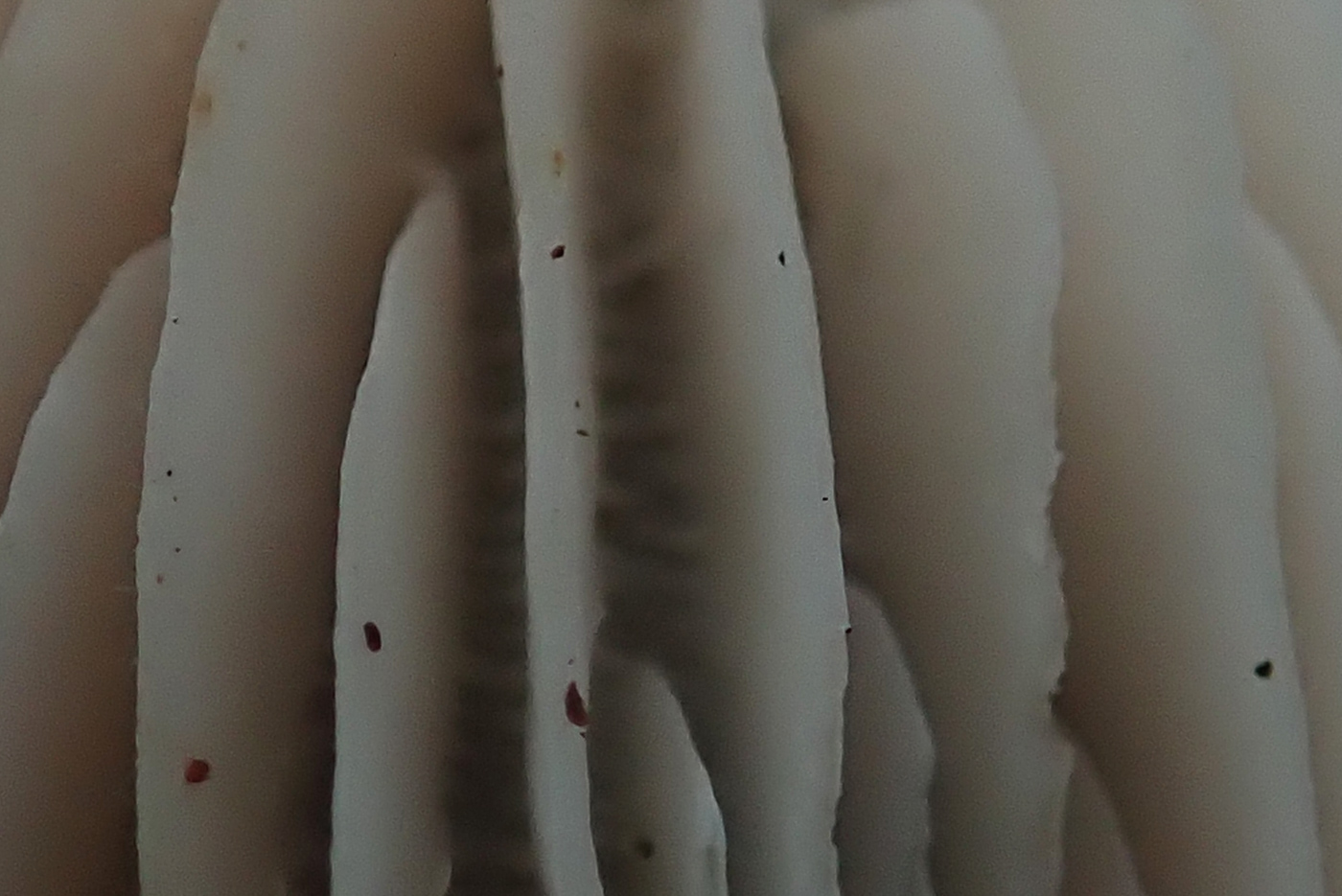
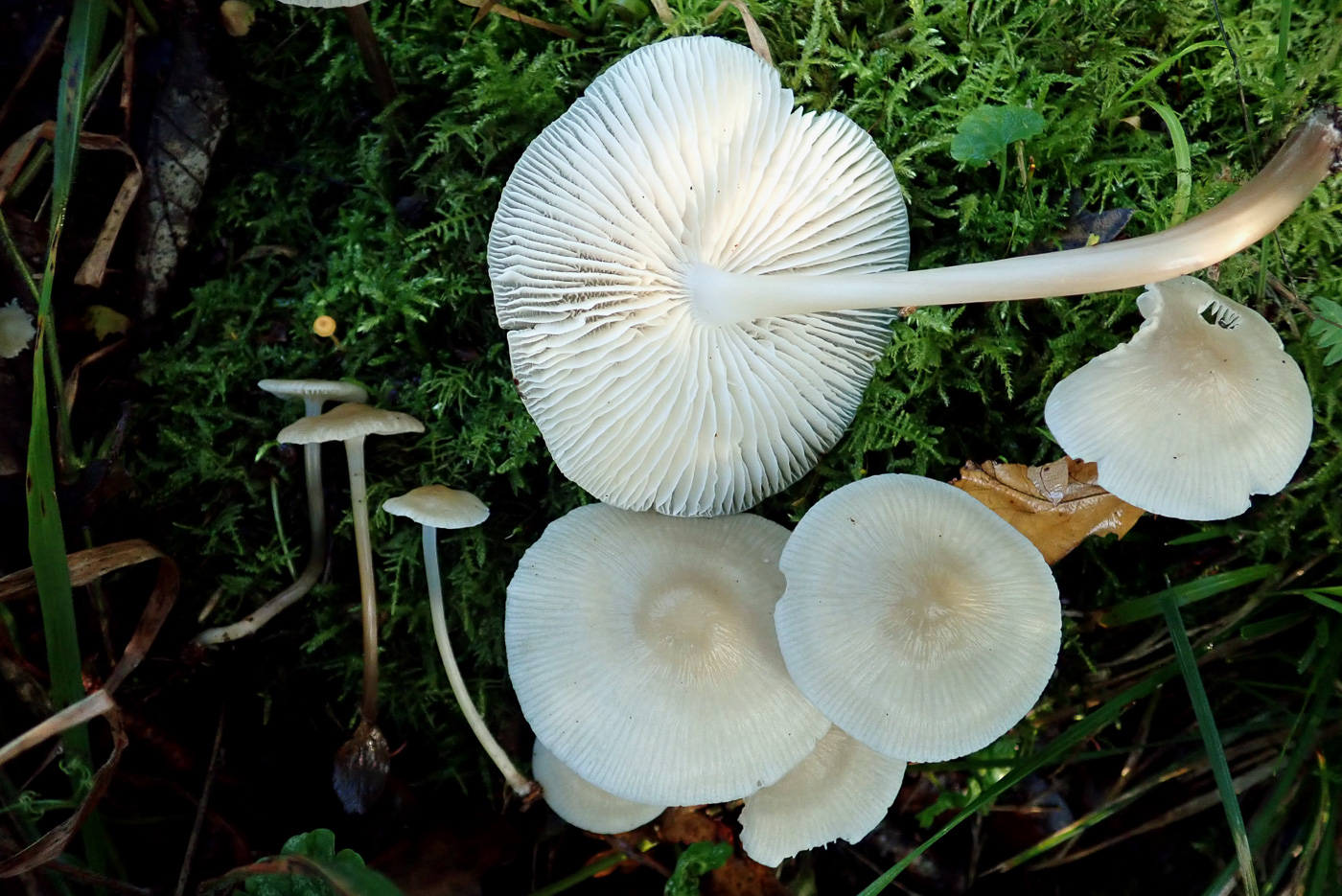
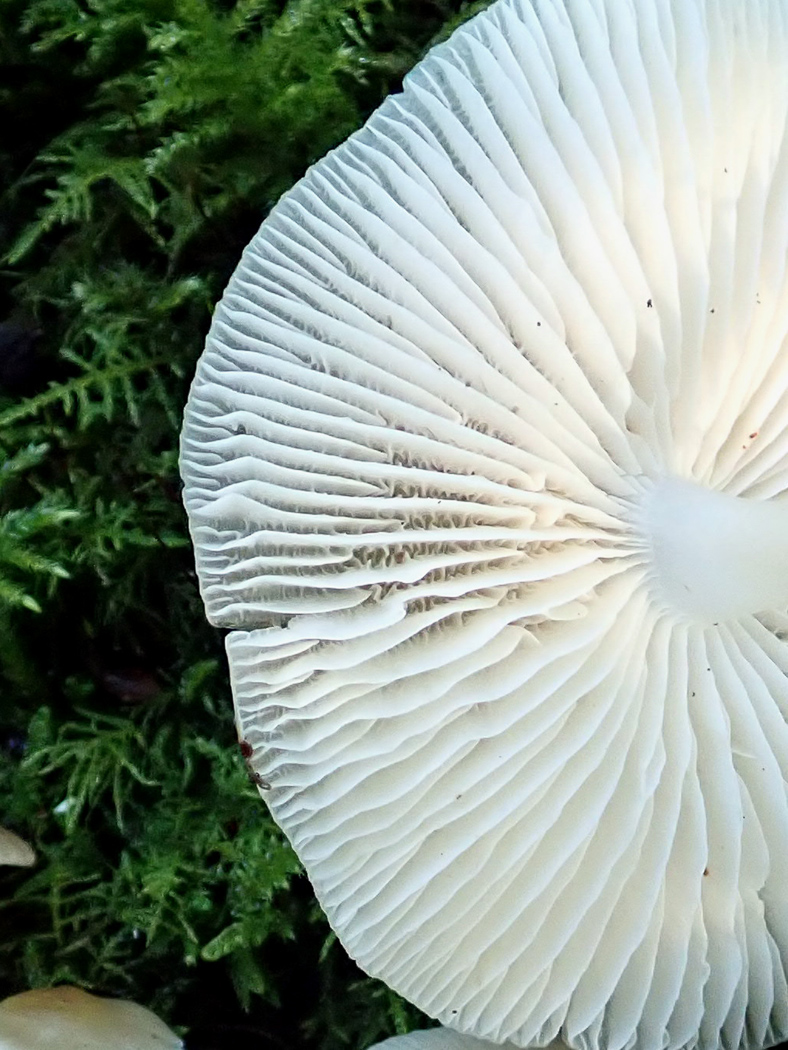
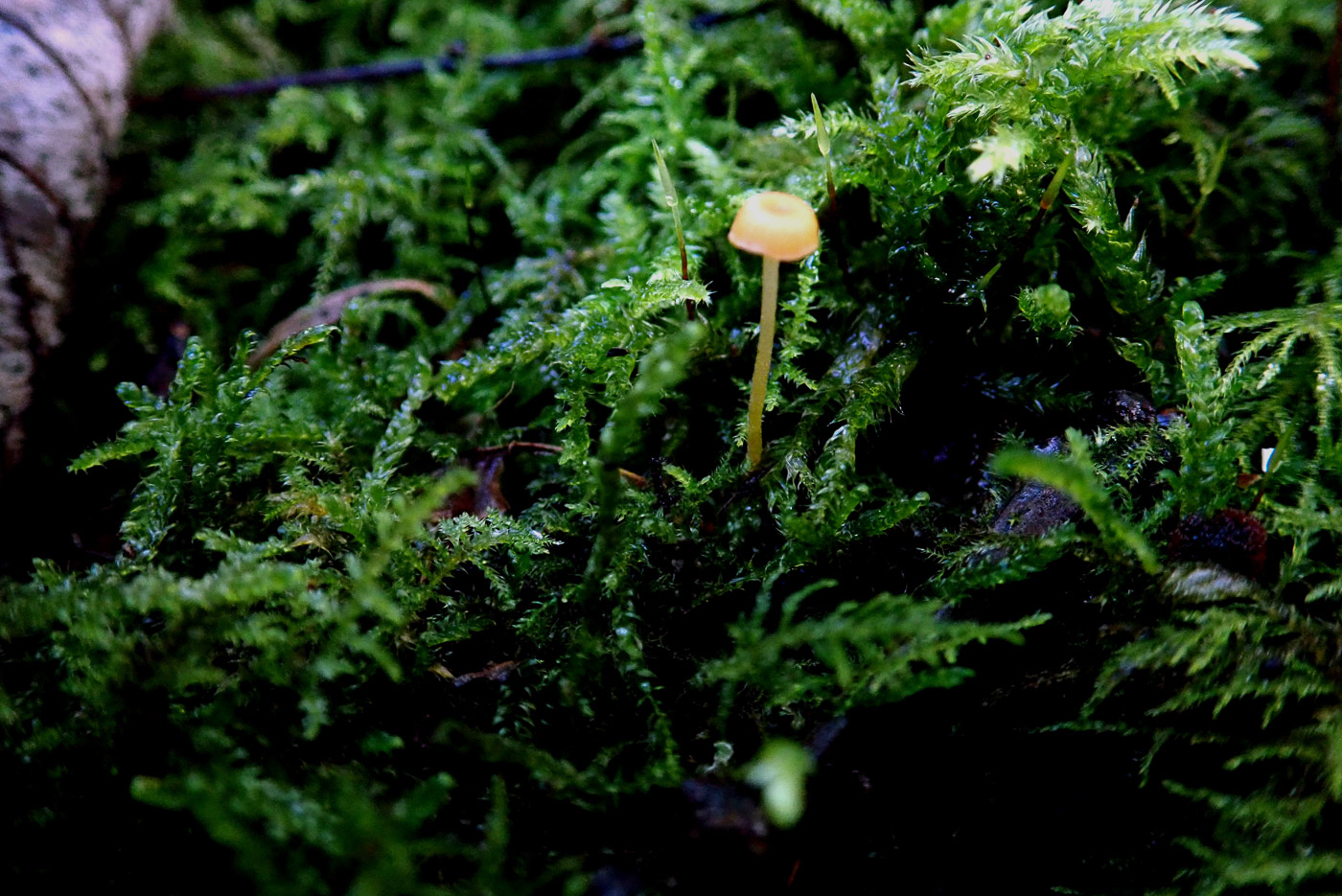
|
Mycena galericulata (Common Bonnet)
Aug 19, 2023. In a deciduous log pile at Rushbeds Wood Penny saw this pair and, noting that they were deeply rooted into the wood, was able to identify them on sight. The genus generally seems to have
Jan 3, 2022. This was the second unseasonal species of Bonnet Penny found in Rushbeds Wood - this one growing on a deciduous stump and recognisable in the field. Photo 2 shows the largest cap upturned and the gills opened out to reveal the telltale cross-ridges (galleries) which confirm the species. It is a large grey-brown capped Bonnet found only on deciduous wood on which it is firmly rooted - on collection one nearly always snaps the stem base off as a result. Photos 3 and 4 were sent in by Joanna Dodsworth from Brill Common, found on the same day (and only a mile away!) and rather putting Penny's photos in the shade - what a bumper crop!
Nov 30, 2020. Penny C. took the opportunity to illustrate this common but large species of Bonnet since our only other photo is dated Sept 29 which seems a long time ago now. On fallen Birch in the Mire in Burnham Beeches the caps were a good 4 cm across (it can get much bigger than this), the gills were typically rather pink and it was very firmly rooting into the wood. Note in photo 2 the telltale cross-ribbing between the gills which - when one finds much smaller specimens therefore making it easy to confuse with other wood inhabiting Bonnets - is a very useful field feature.
Sep 29, 2020. Penny Cullington found these two species of Bonnet together on a mossy log in Rushbeds Wood - one of the largest Bonnets alongside one of the smallest! M. galericulata is very common on fallen deciduous wood and when still small (see the three LH specimens) looks like many other fallen wood inhabiting Bonnet species. It becomes easier to recognise when it gets larger (with caps up to 6 cm or more across) just because of its size, but a key feature to note is the interconnecting ridges between the gills (hard to see when young but increasingly obvious as it grows - see second photo). Take another look at the first photo where M. acicula is just visible as an orange speck above the far LH. specimen!The cap never exceeds 6 mm (the third photo being a close-up of the same specimen). Much more detailed photos of this species can be seen dated Sept 20. There are many other tiny Bonnets but this is the only one with a bright orange cap and yellow stem. It's quite common though easily missed and favours woody mossy litter.
|
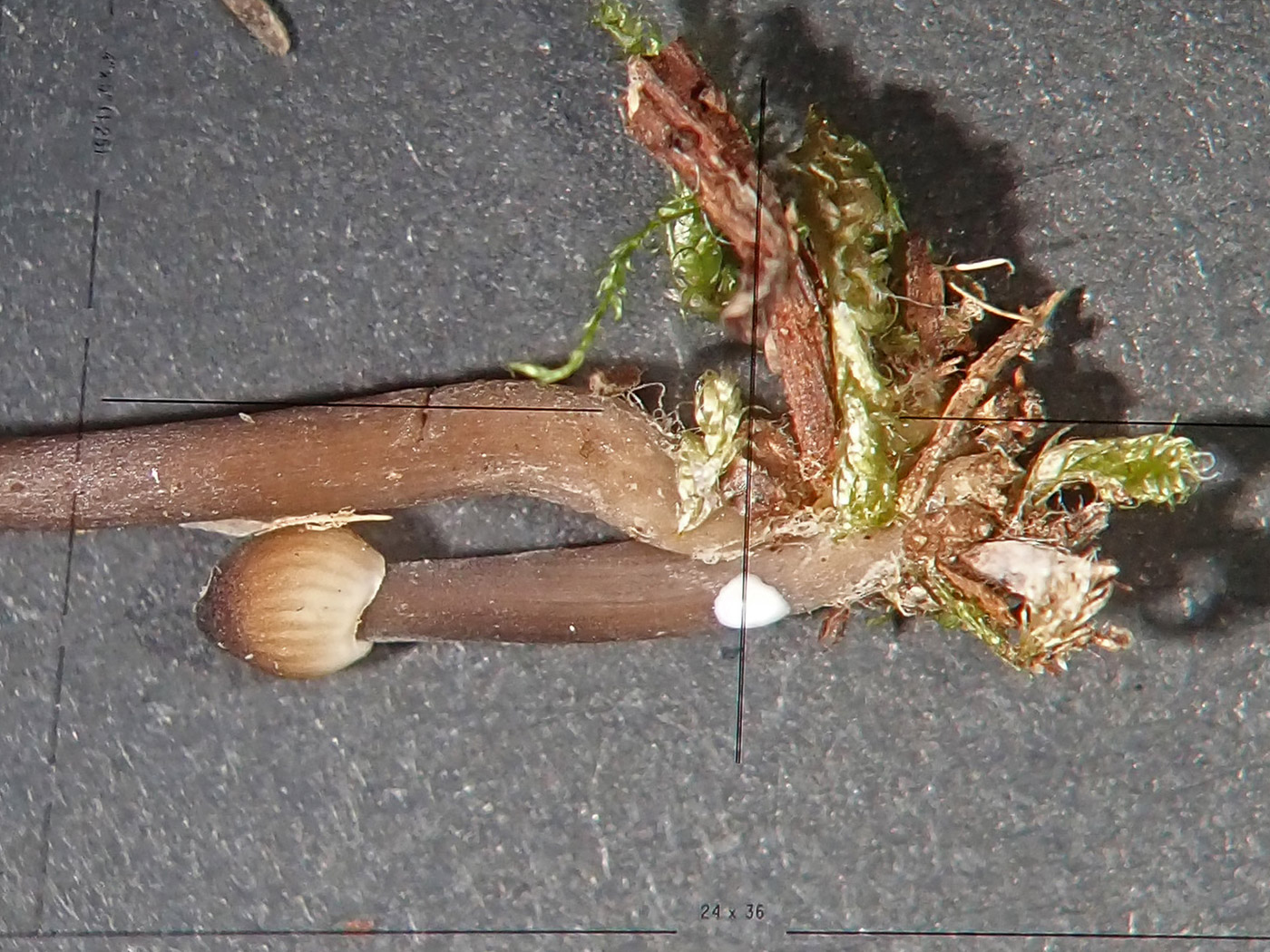 |
Mycena galopus (Common)
Jan 4, 2022. Following his find of the rare Marasmiellus tricolor at Stoke Common yesterday, Jim Wills returned today and hoped he'd collected more material of the same species. However, when examined by Derek Schafer it turned out to be not the same at all but the common M. galopus! (Note the large drop of 'milk' on the stem of this tiny specimen - Derek's photo.) It is interesting that of our 250 odd county records of this species we have a handful from January but all found either in 1998 or 2001 which, checking online, were pretty well frost free and damp in the south for much of that month.
|
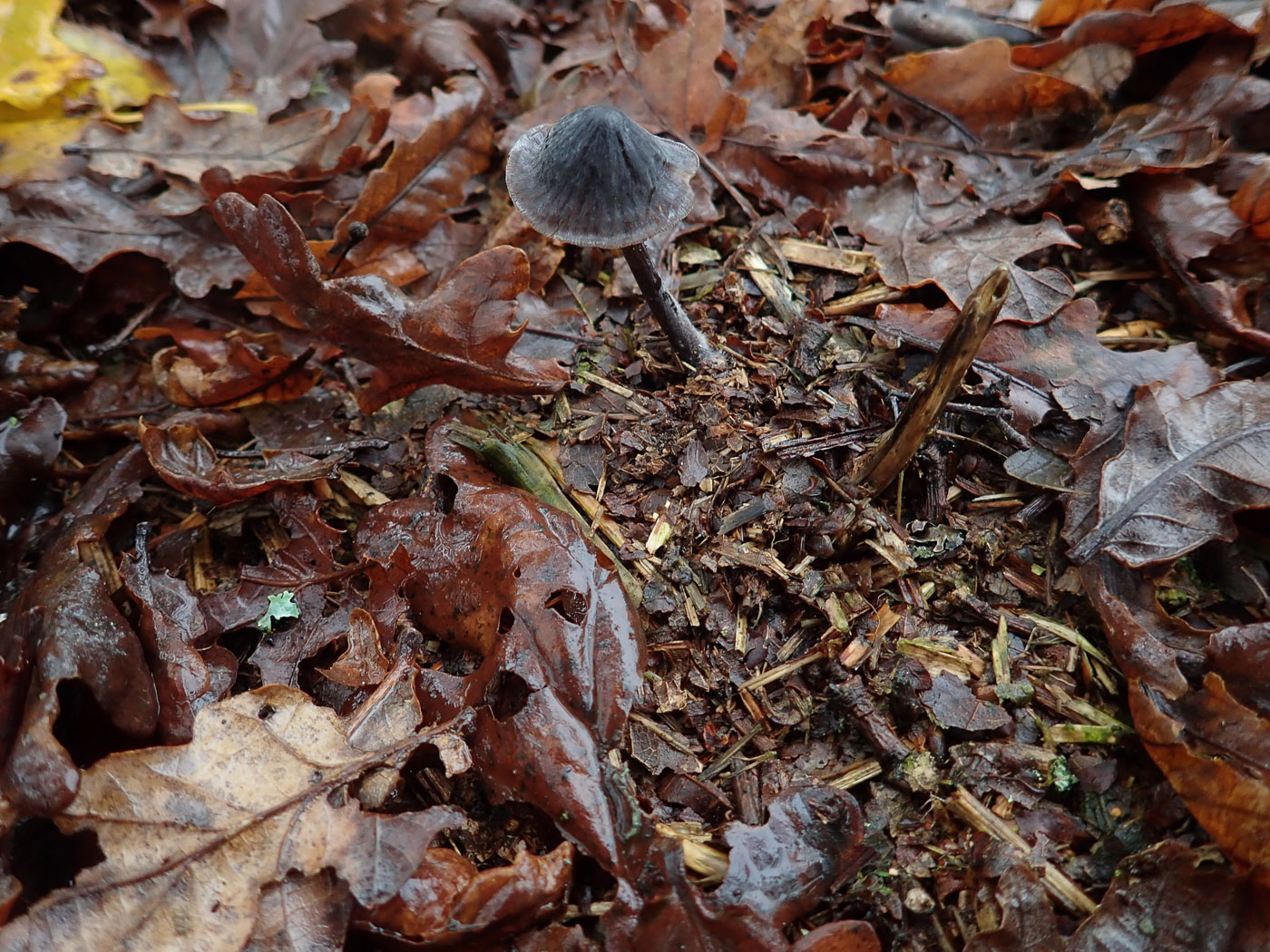
 |
Mycena galopus var. leucogala  (Milking Bonnet) (Milking Bonnet)
Nov, 2022. At Turville Heath under Oak Penny noticed this dark-capped singleton in disturbed soil and woody debris. Both cap and stem were equally dark which put her in mind of this particular species - one of two unusual varieties of the Milking Bonnet, the other being entirely white - but damaging the stem produced no sign of the white latex which normally exudes to confirm ones ID. At home, however, the long fusiform gill cells left her in no doubt, nor was she surprised having come across Milking Bonnets which entirely lack any white latex before. See Finds 2022 January 4th for an example of the species in its normal brown state - this is the first entry of the darker variety.
|
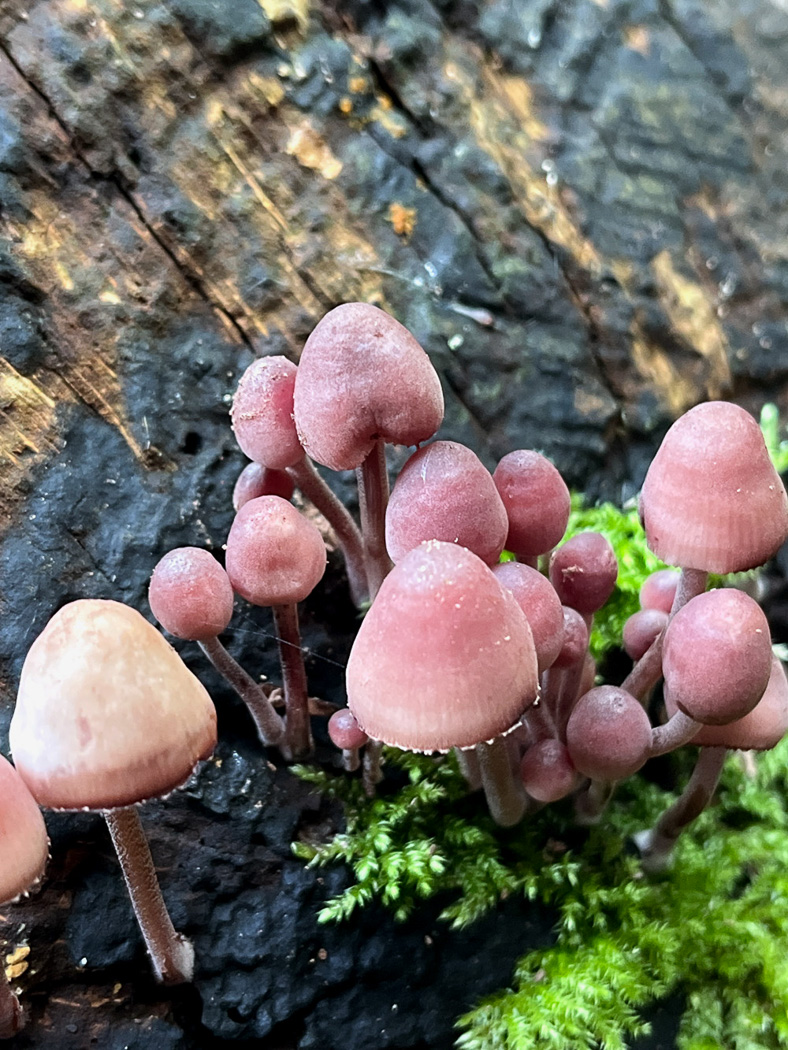
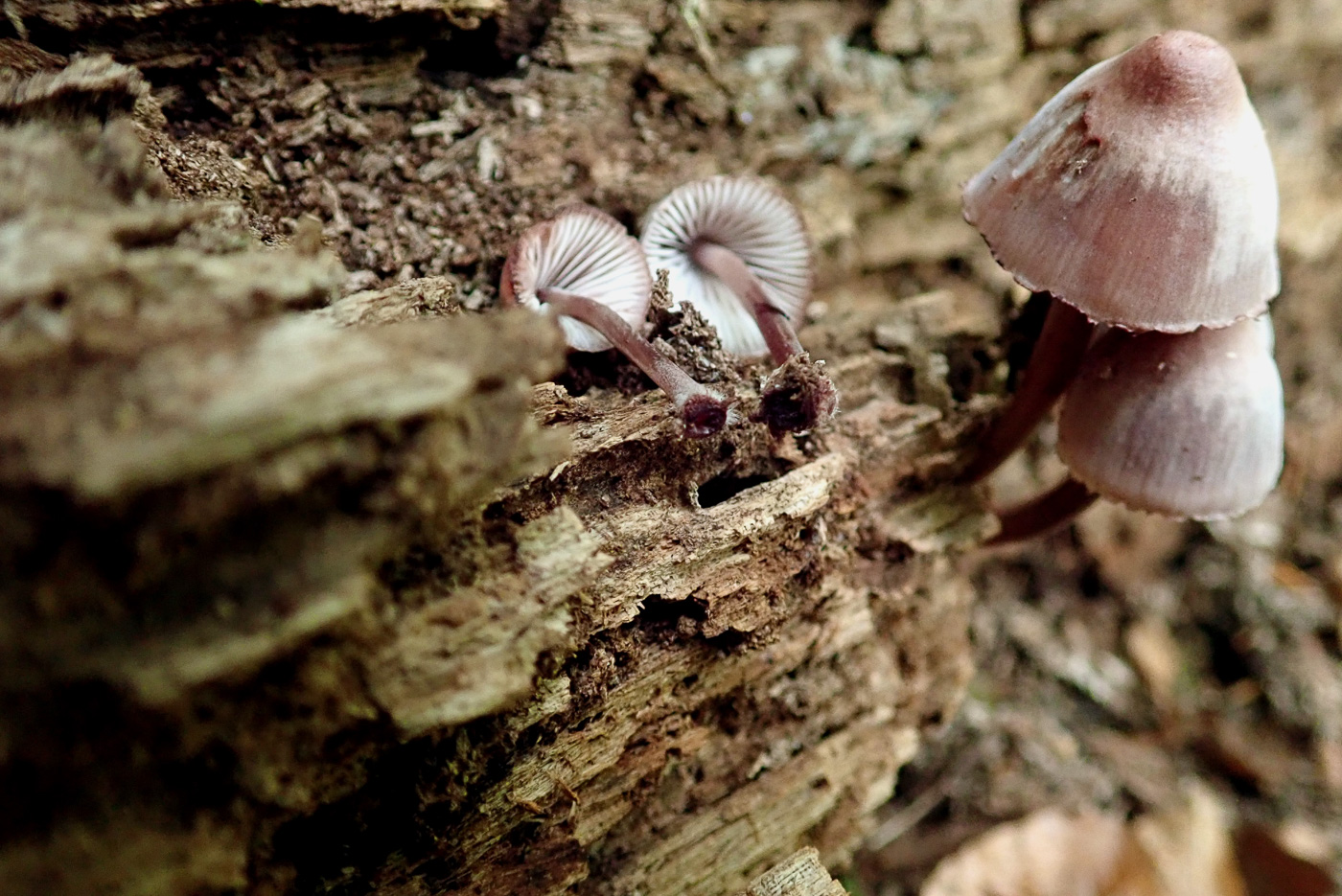 |
Mycena haematopus (Burgundydrop Bonnet)
Oct 17, 2023. In Churchfield Wood Jim Wills found this attractive cluster of Bonnets on fallen deciduous wood. When finding a cluster like this on wood with caps as pink as they are here the species is easy to recognise without the need to check whether the stem contains the telltale red/brown latex to which its common name refers. This is one of our commonest Bonnets and often has the white slightly frilly margin seen on a couple of caps here.
Sep 7, 2020. Our first Bonnet of the season, this collection was found by Penny Cullington in Mousells Wood growing on a rotting deciduous log. A typical species of Bonnet, it is easily distinguished from others in the field by its pinkish colours and most notably the dark wine red 'juice' which exudes from the stem where damaged (visible in the central fruitbodies). Do not mistake for Mycena crocata, possibly more common in the Chilterns, which has bright saffron orange juice - both species grow on fallen wood.
|
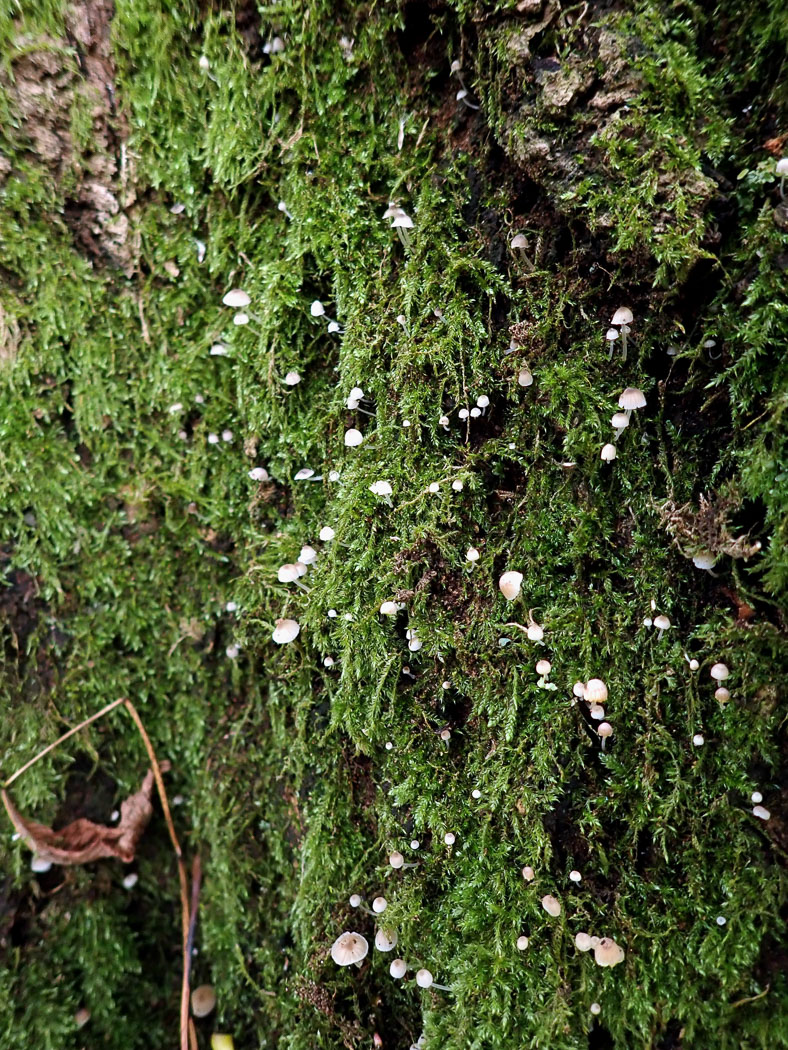
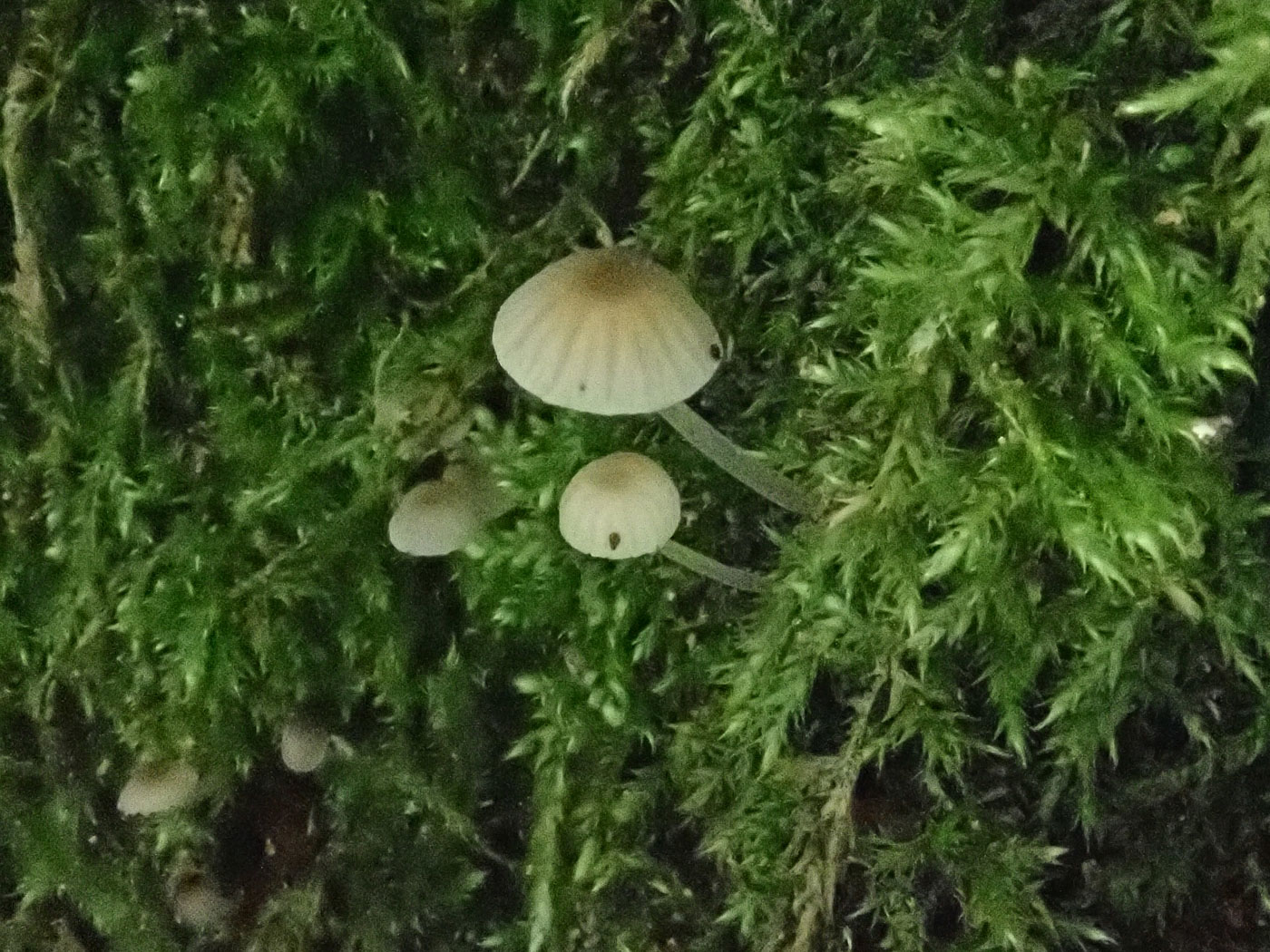
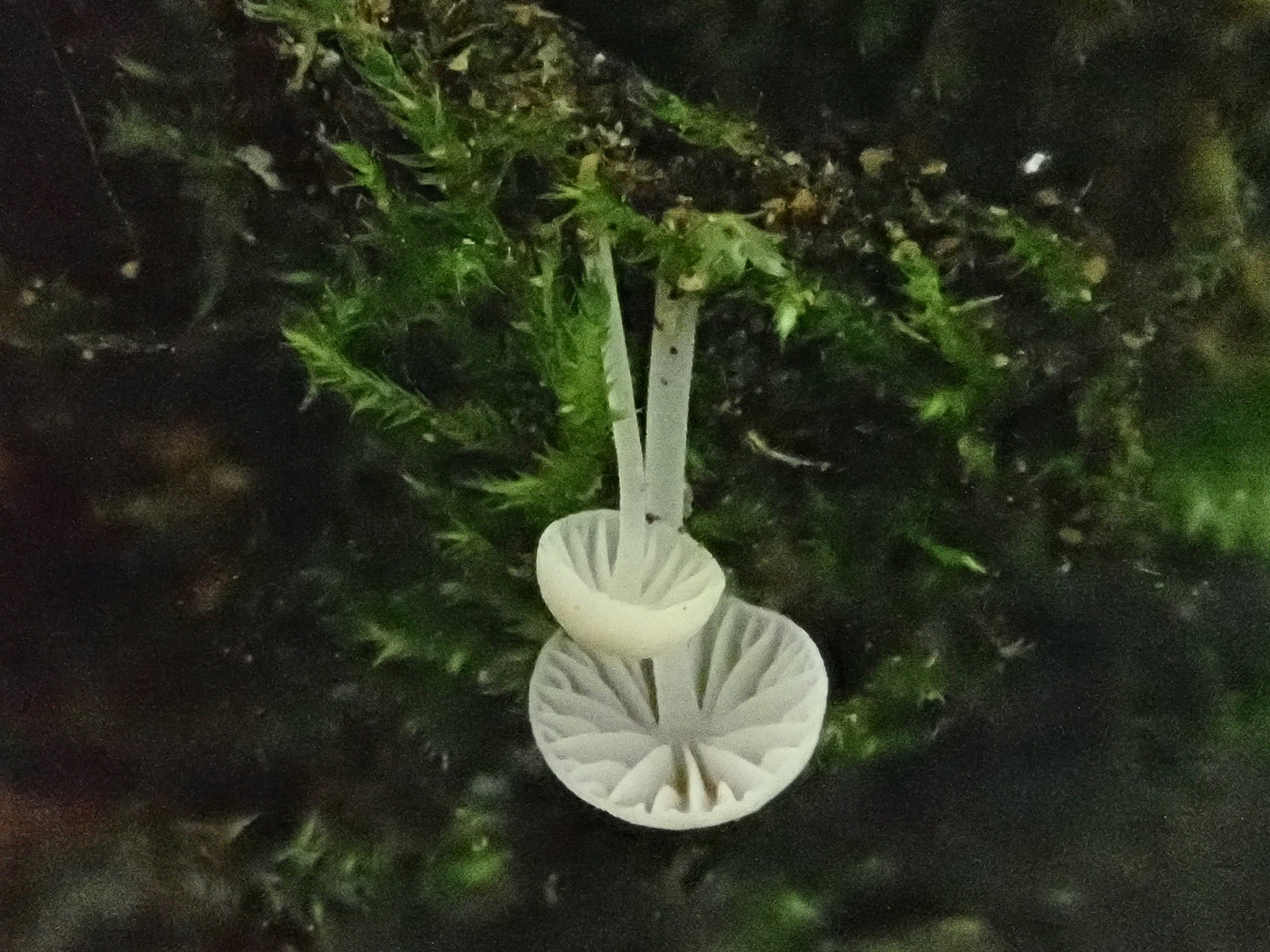 |
Mycena hiemalis (a Bonnet with no common name) 
Dec 3, 2022. Low down on a mossy Willow trunk at Weston Turville Reservoir Penny noticed a swarm of tiny Bonnets, wondered about M. speirea (Bark Bonnet) owing to their beige colour with darker cap centre, but on turning one over noticed that the gills were not decurrent thus eliminating that species and suggesting the very similar M. hiemalis. This was confirmed by the cells found on the gill edge with a scope at home. The species is quite common and favours exactly this substrate, ie mossy deciduous standing trunks, and though initially very similar to M. speirea, the lack of decurrent gills are key to its recognition. This is a new entry for Finds.
|
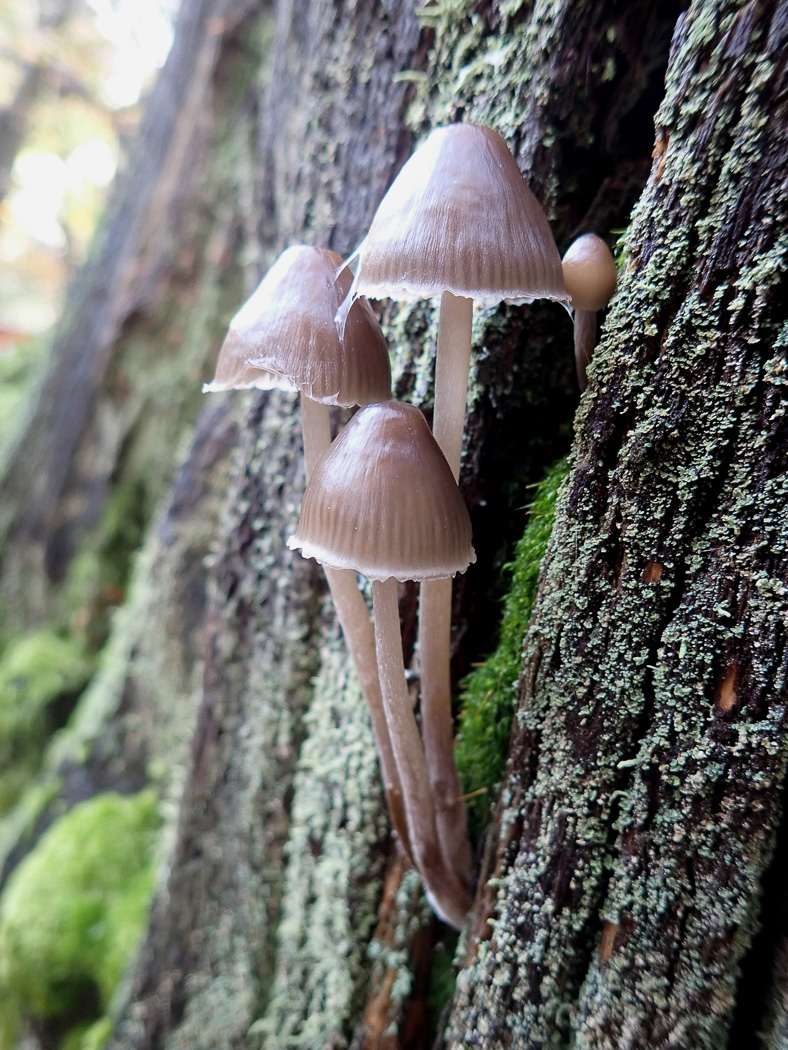
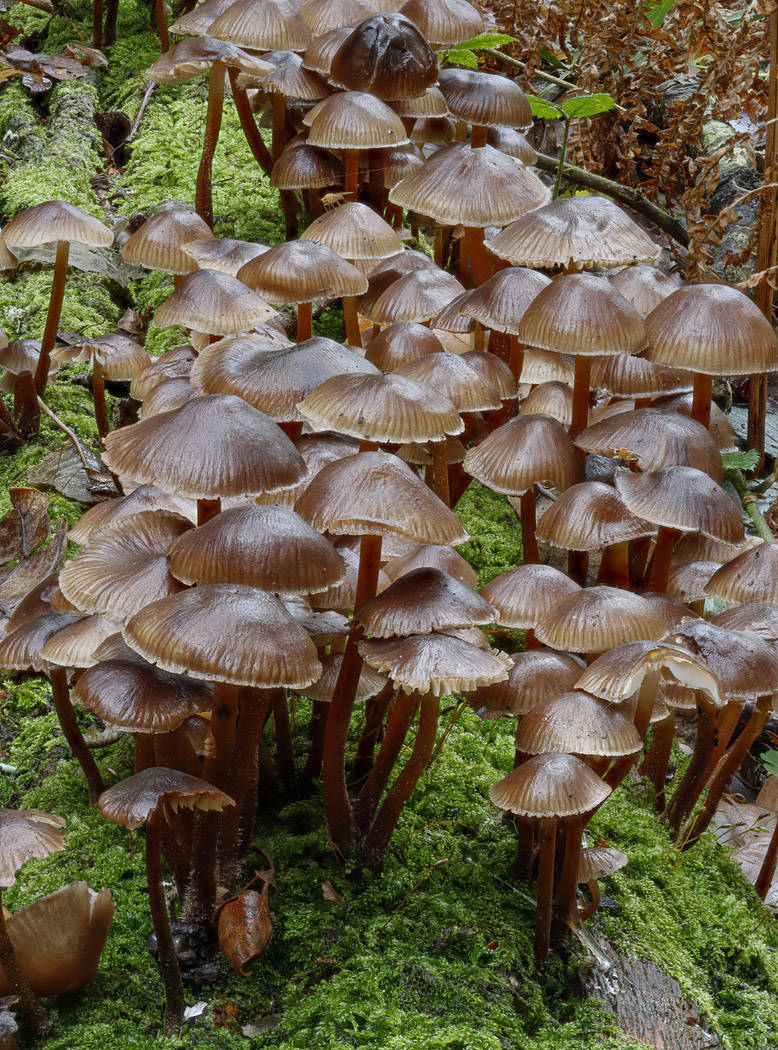

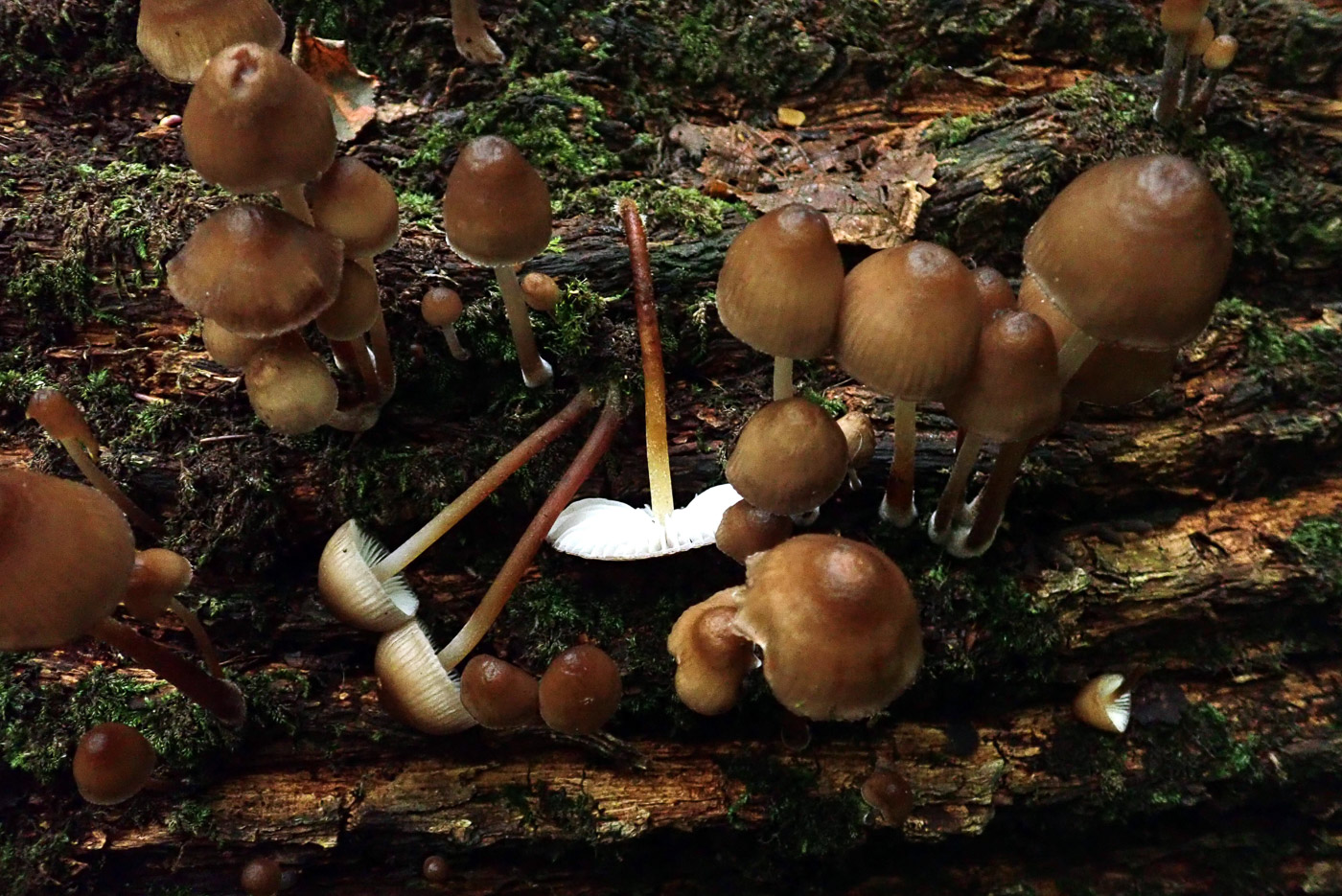
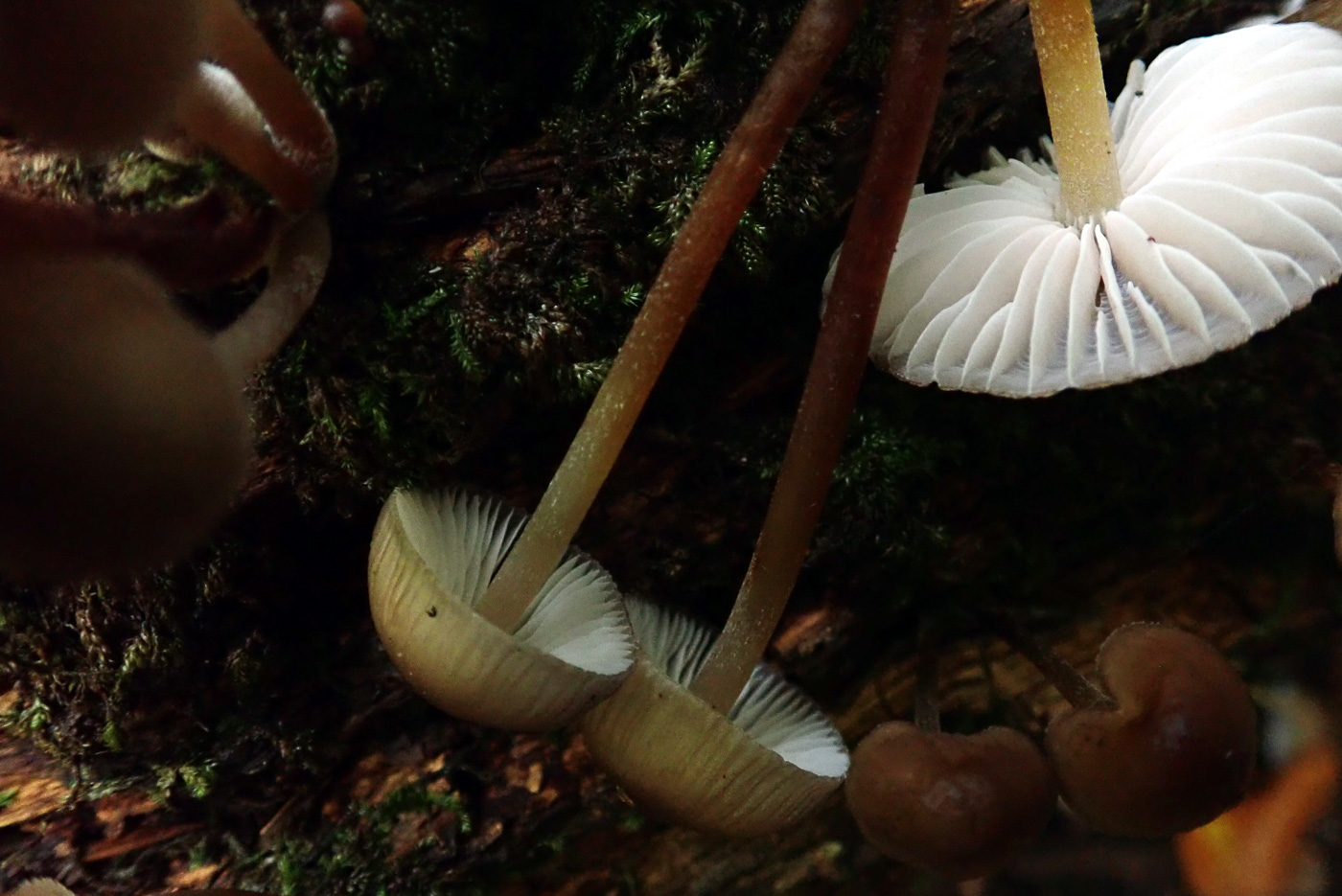
|
Mycena inclinata (Clustered Bonnet) 
Nov 25, 2022. On an Oak stump in Egypt Woods Penny and Sarah spotted this little group and were very unsure which Bonnet it might be until one was collected and smelt! The give-away smell, described officially as 'soapy, farinaceous, rancid' (but to Penny clearly of Lupins!), left Penny in no doubt despite the fact that it completely lacked the darker orange lower stem - usually another useful clue. This late in the season such clues - including smells - can be fickle so it was essential to confirm here with a scope. The slightly frilly edge to the cap seen here is a feature which does often seem to present with this species, however. The photo is Sarah's.
Nov 6, 2020. We have a collection of this species dated Oct 16 but Paul Goby's photo taken in Naphill Common is well worth including here because it shows all the diagnostic field characters really well (but not its smell!). The shiny brown medium sized caps and orange stems, together with the tightly clustered growth habit and occurrence on fallen Oak, are sufficient to name it in the field. Pick one to acquaint yourself with its very individual smell which to Penny is of lupins!
Oct 16, 2020. Penny C. found this cluster on a rotting Oak trunk in Burnham Beeches. It is quite common and one of the larger species of the many wood inhabiting Bonnets and with experience is recognisable in the field. Features which distinguish it are the clustered habit (also found on Oak), the brownish caps with outer half striate (not markedly so in today's collection), the stems which typically are white at the top but become gradually darker through orange to reddish at the base, and the very distinctive strong smell described as spicy-rancid but for Penny of lupins!
|
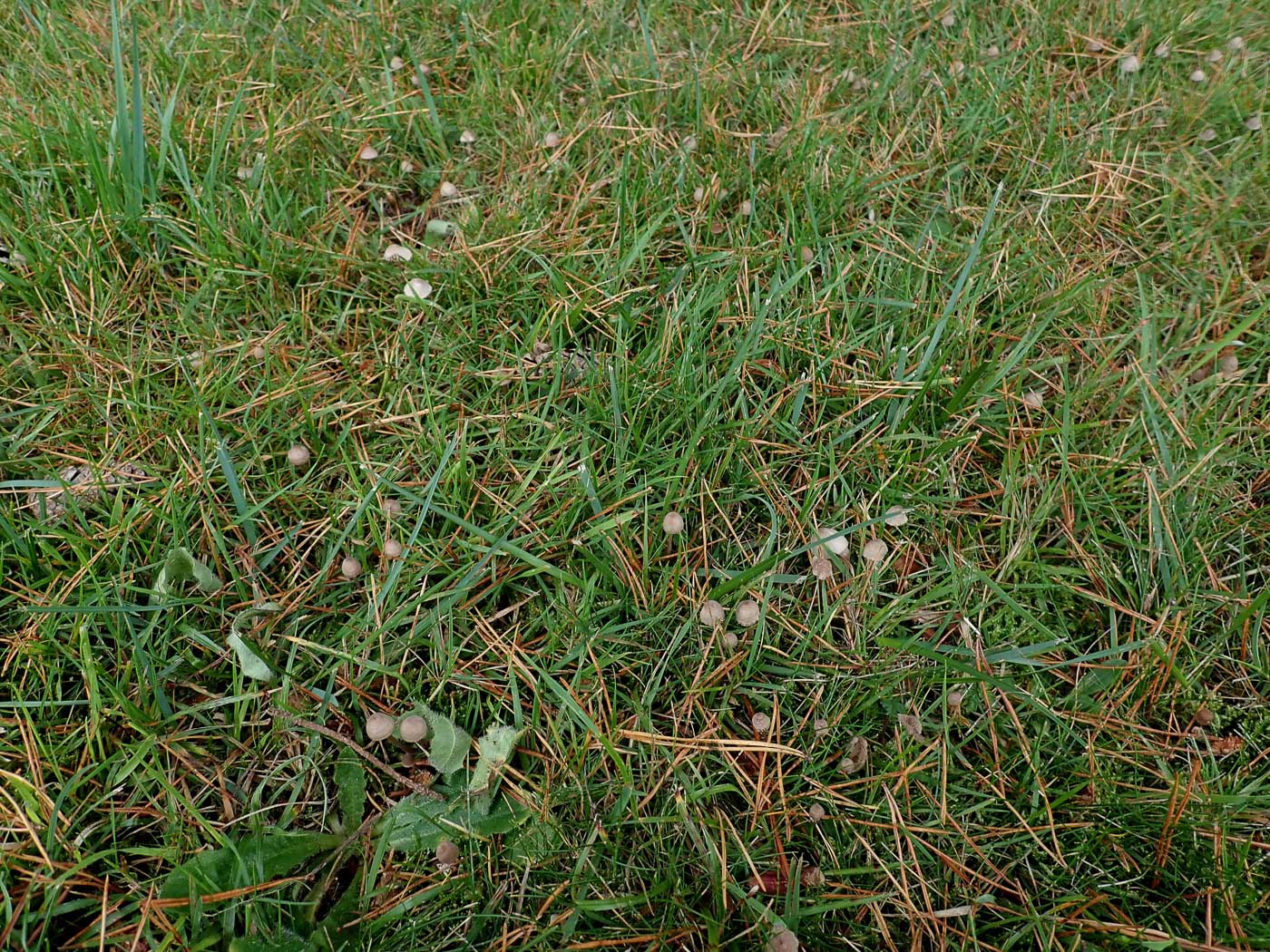
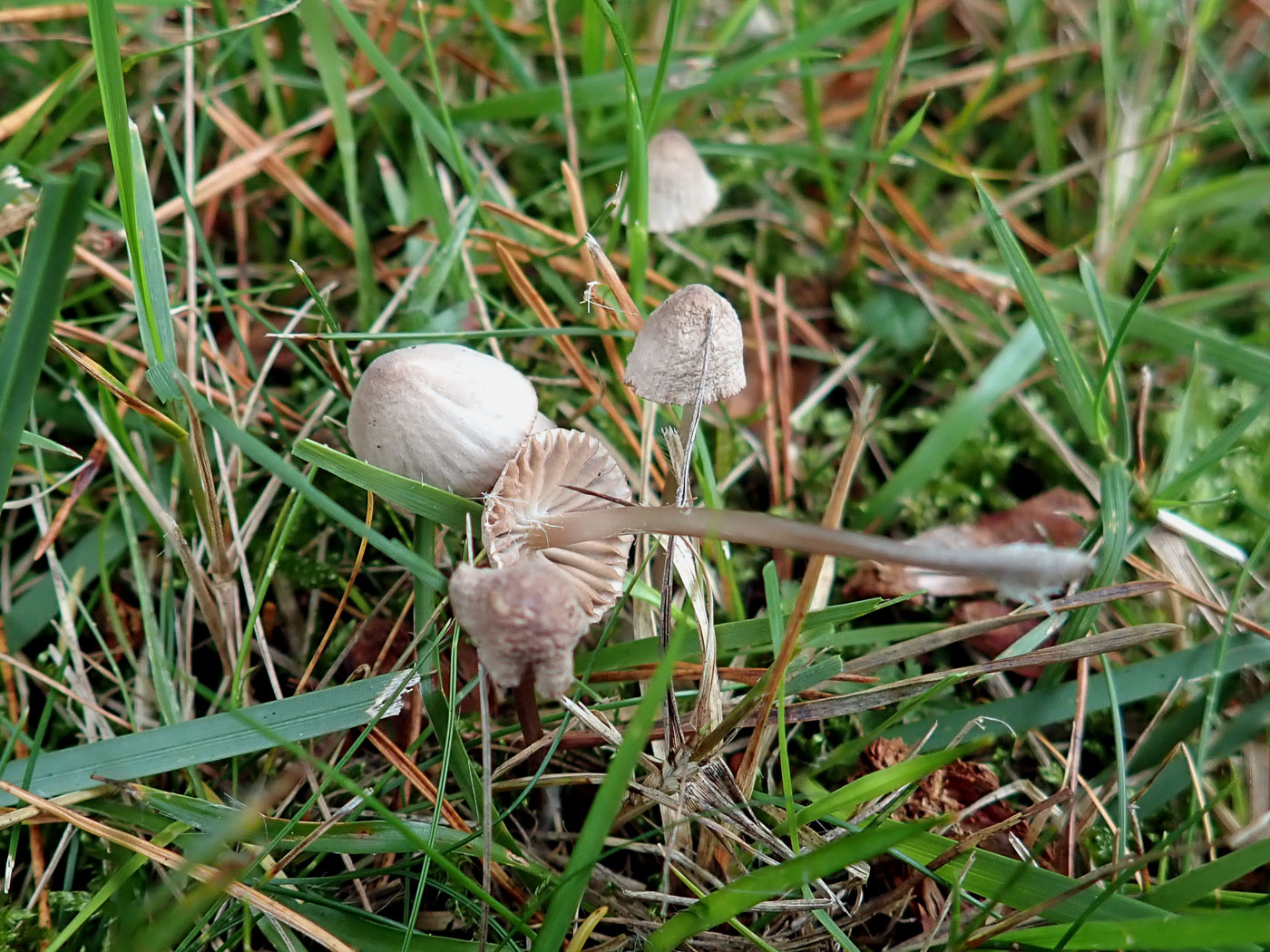 |
Mycena leptocephala (Nitrous Bonnet) 
Sep 28, 2023. Amongst the Pine litter at Prestwood Churchyard Penny found good numbers of a small nondescript Mycena and at first thought it might be the unusual M. vulgaris which is a regular in this particular spot. However, straight away on picking one she realised it was not that species which has a distinctly slimy stem - the stem was dry; so the next likely candidate was M. leptocephala, common in both deciduous and conifer litter, with a dry cap and stem but a distinct smell of bleach. The smell confirmed it, as did the microscopic details when checked at home later. Though one of our commonest Bonnets this is a new entry for Finds.
|
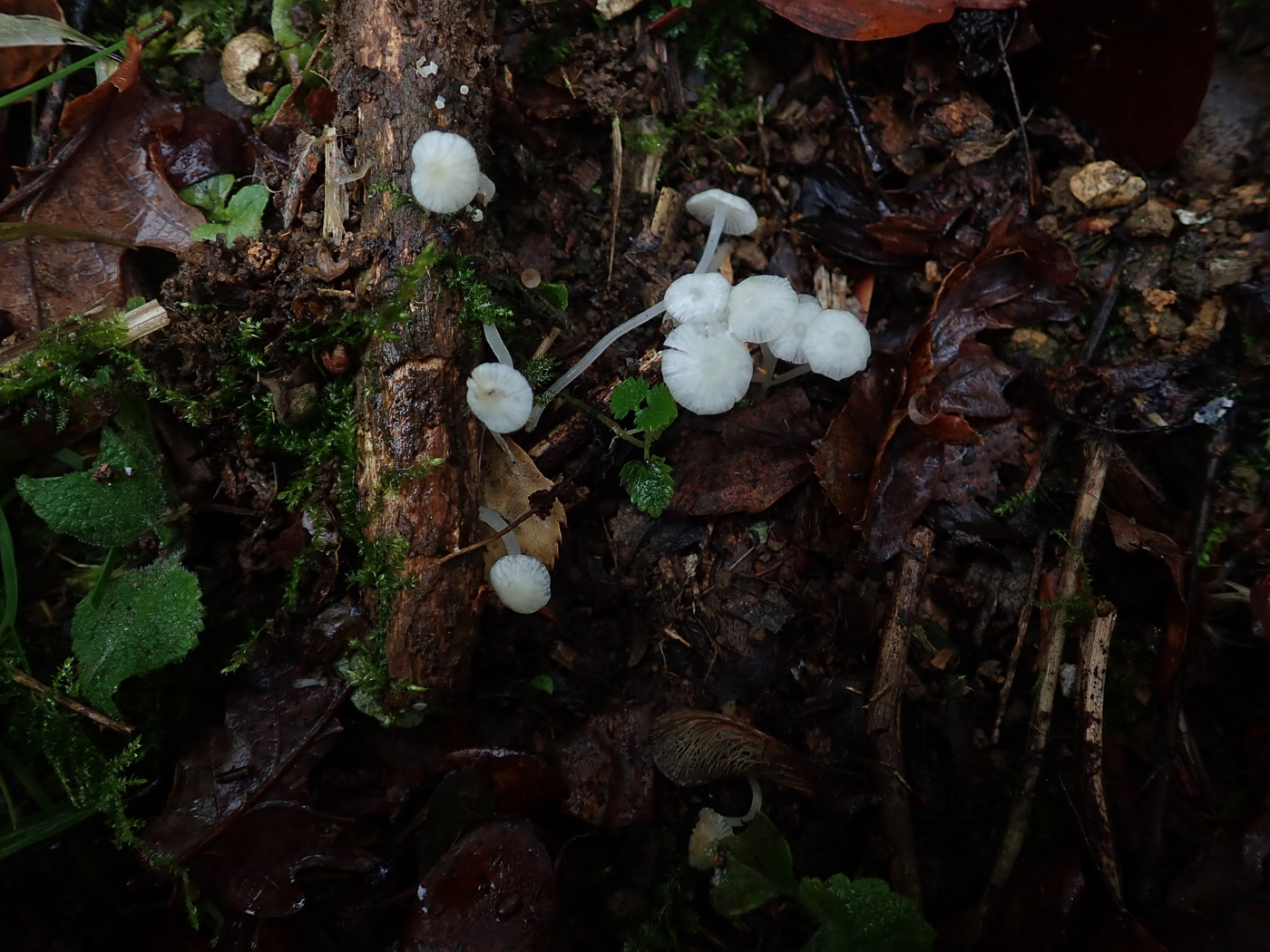
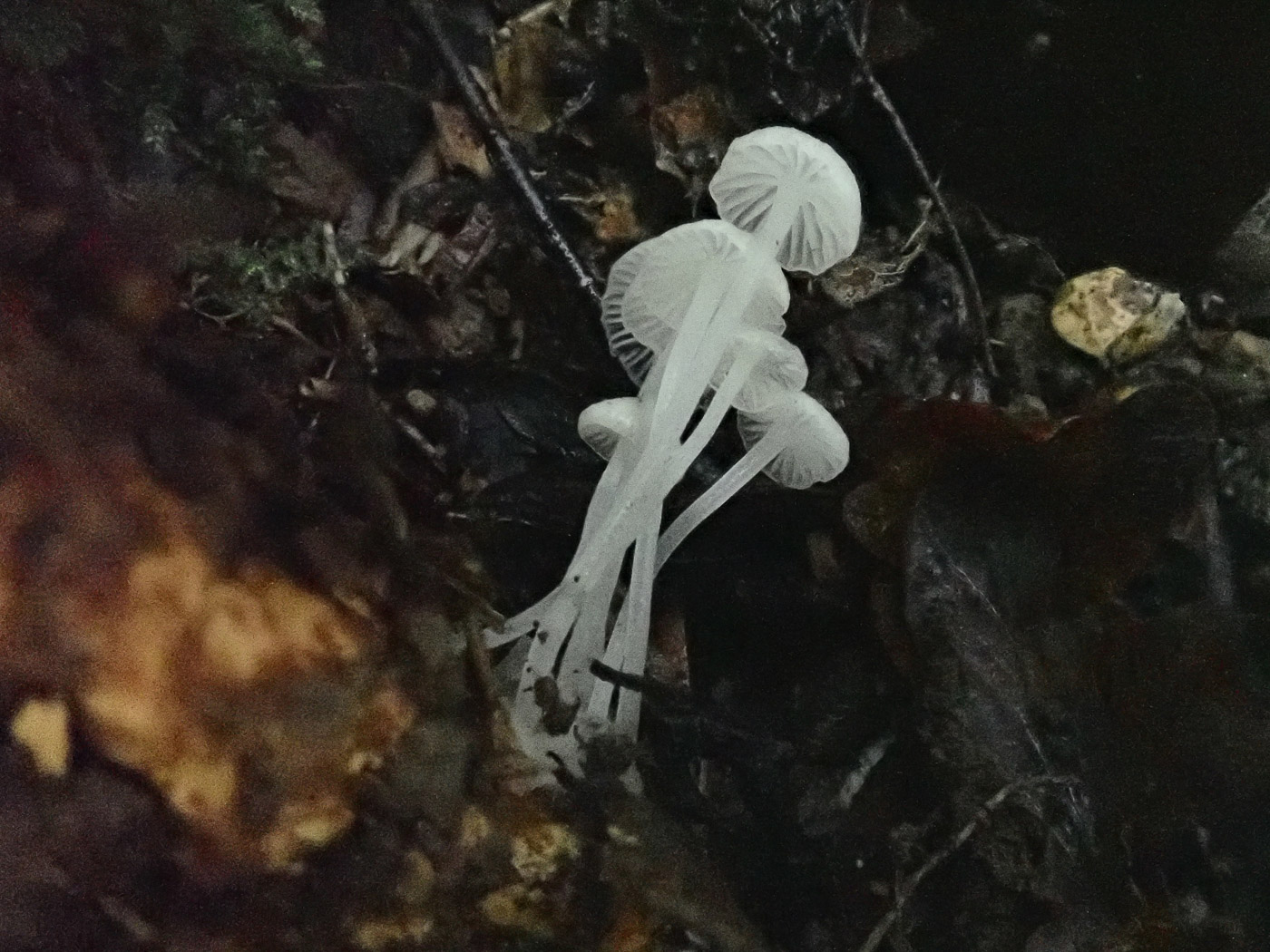 |
Mycena olida (Rancid Bonnet) 
Nov 27, 2022. At Turville Heath Penny came across a tight cluster of smallish white Bonnets on some woody remains. It is quite a common white wood-inhabiting Bonnet with a preference for mossy logs and exposed roots, and can be separated in the field from the equally common M. speirea (Bark Bonnet) by its white cap with no brown central dot and the much less obviously decurrent gills. (Compare with the entry above.) Its mealy smell is difficult to detect and therefore not a particularly useful character. There is a name change here: It is now moved to genus Phloeomana! This is our first entry for Finds.
|
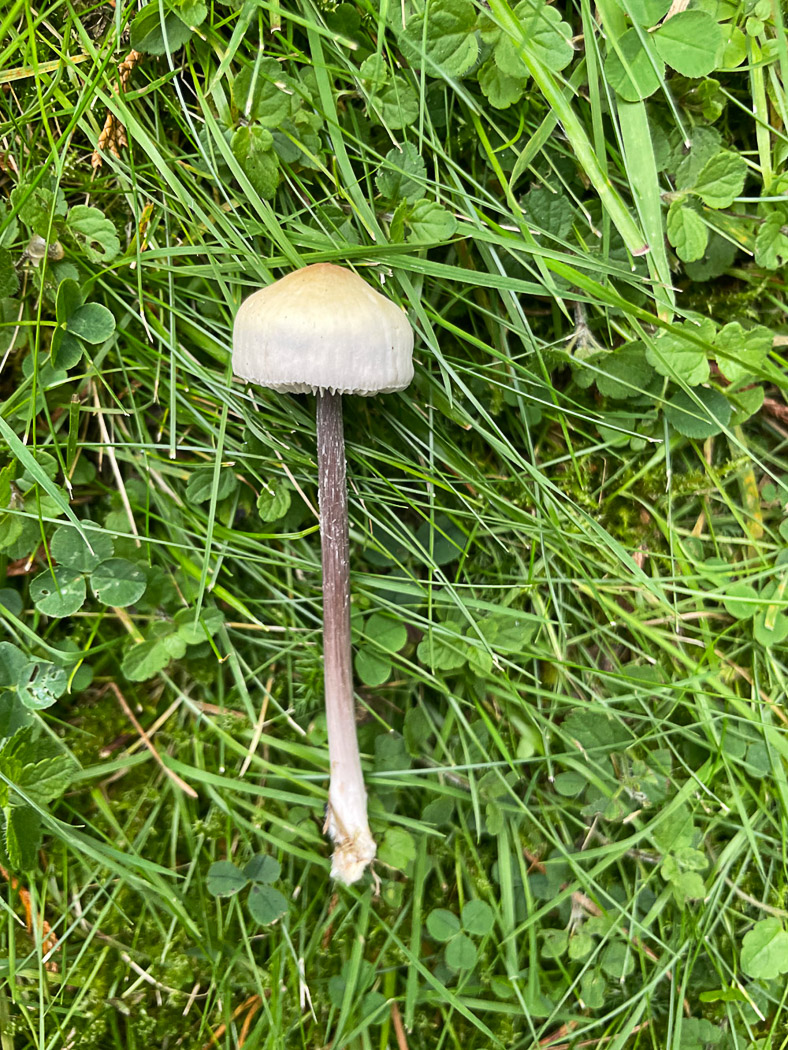
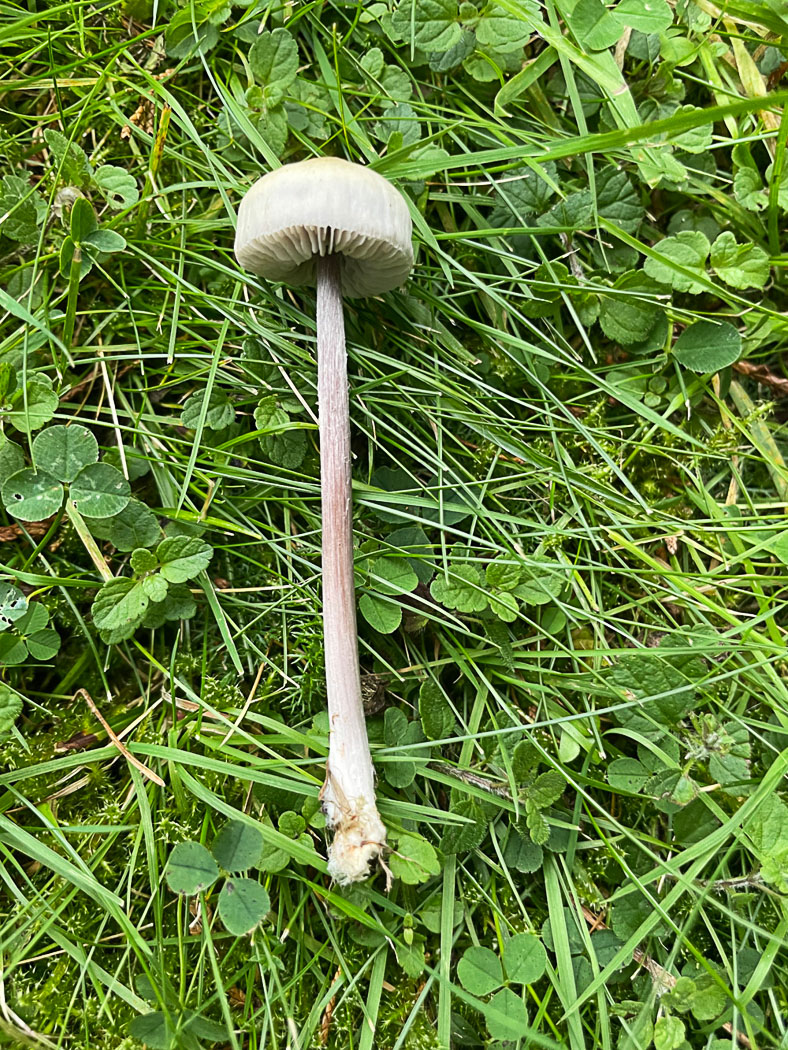
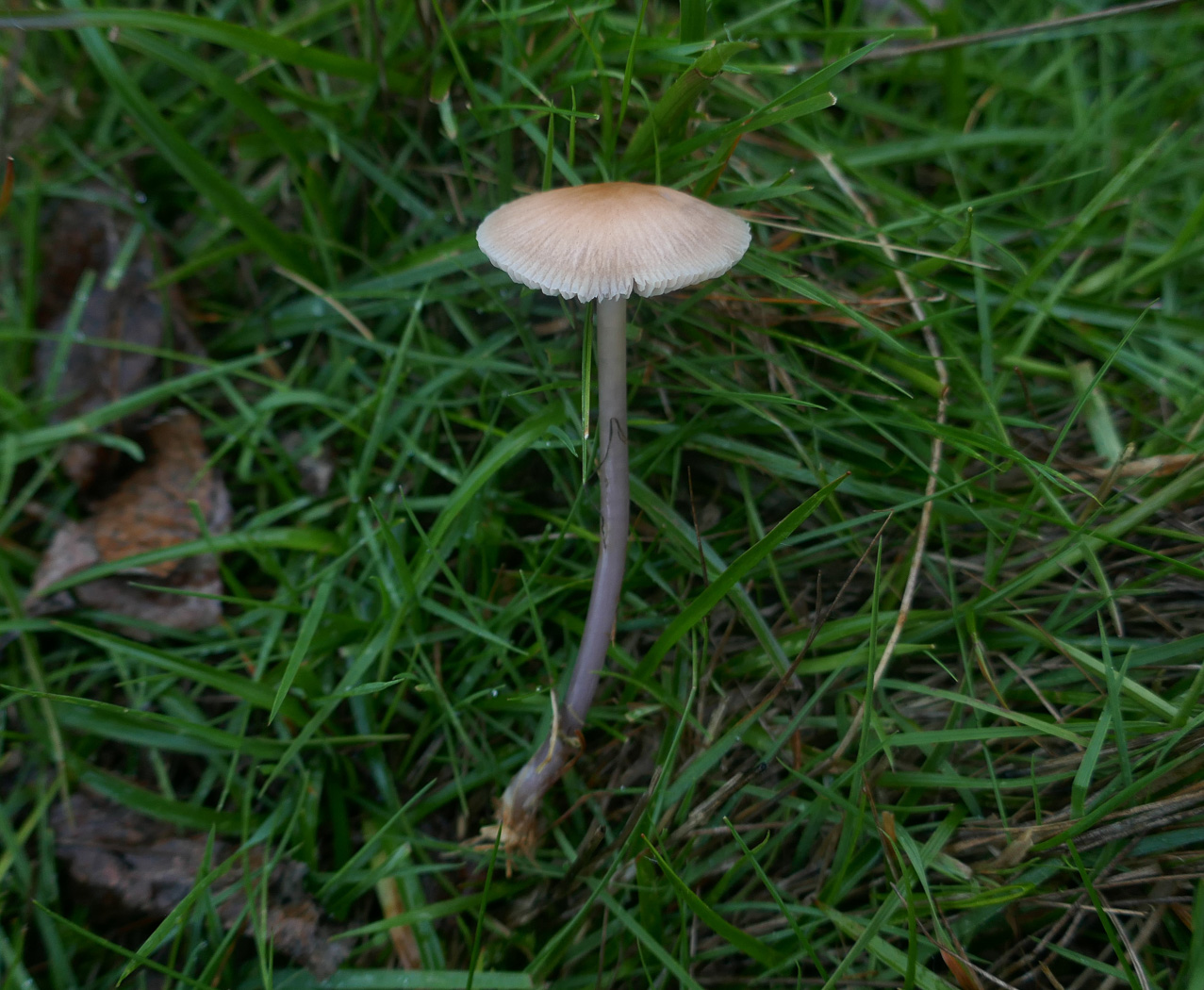
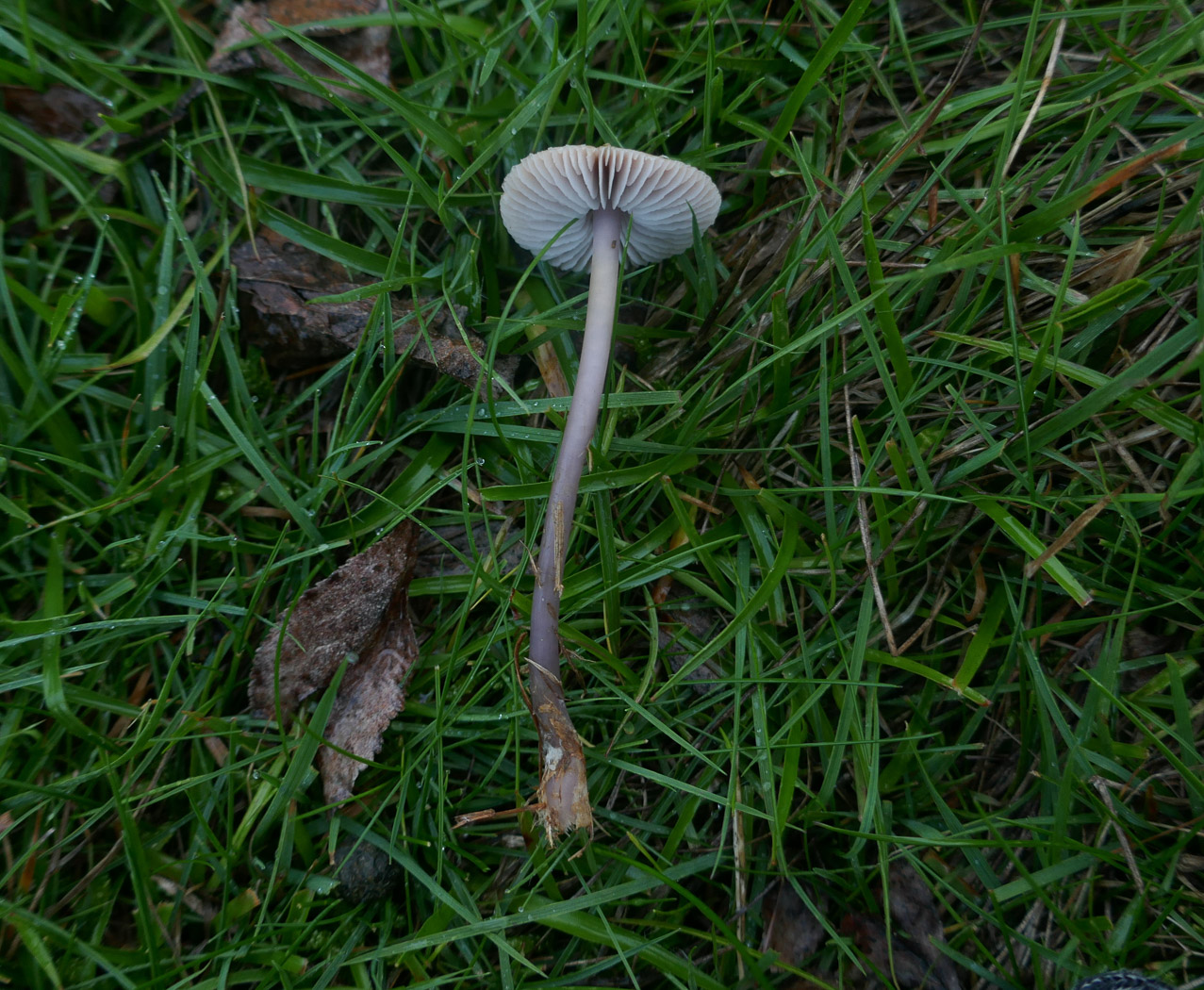 |
Mycena luteovariegata (a Bonnet with no common name) 
Oct 11, 2023. In grass in Penn Street Churchyard Jesper Launder found this strange Bonnet which he didn't recognise and which Sarah Ebdon took home to examine. The raphanoid smell, also microscopic characters, suggested it was in the M. pura group though its yellowish tinged colour did not match any obvious candidates within that group. However, for some years a M. pura var. lutea has been described and is now elevated to species level after DNA analysis. It is the only member of this species complex to be found consistently in grassland and also has slightly different microscopic features. Penny has found such examples in grassland before but this is the first official county record and is a new Finds entry. See also the two entries below. (The photo is Sarah Ebdon's.)
Oct 24, 2022. At Stampwell Farm Jackie Ewan found this species - previously described as a variety of M. pura (Lilac Bonnet) in a grassy area. Yellow forms of M. pura are found in grassland not that uncommon, and as this variety has now been elevated to species level it counts as new to the county as this is the first time we've recorded it under this name! It has the same radishy smell as others in the 'pura' group and the lilac tint is often present - here seen at the top of the stem. it is a new entry for Finds.
|
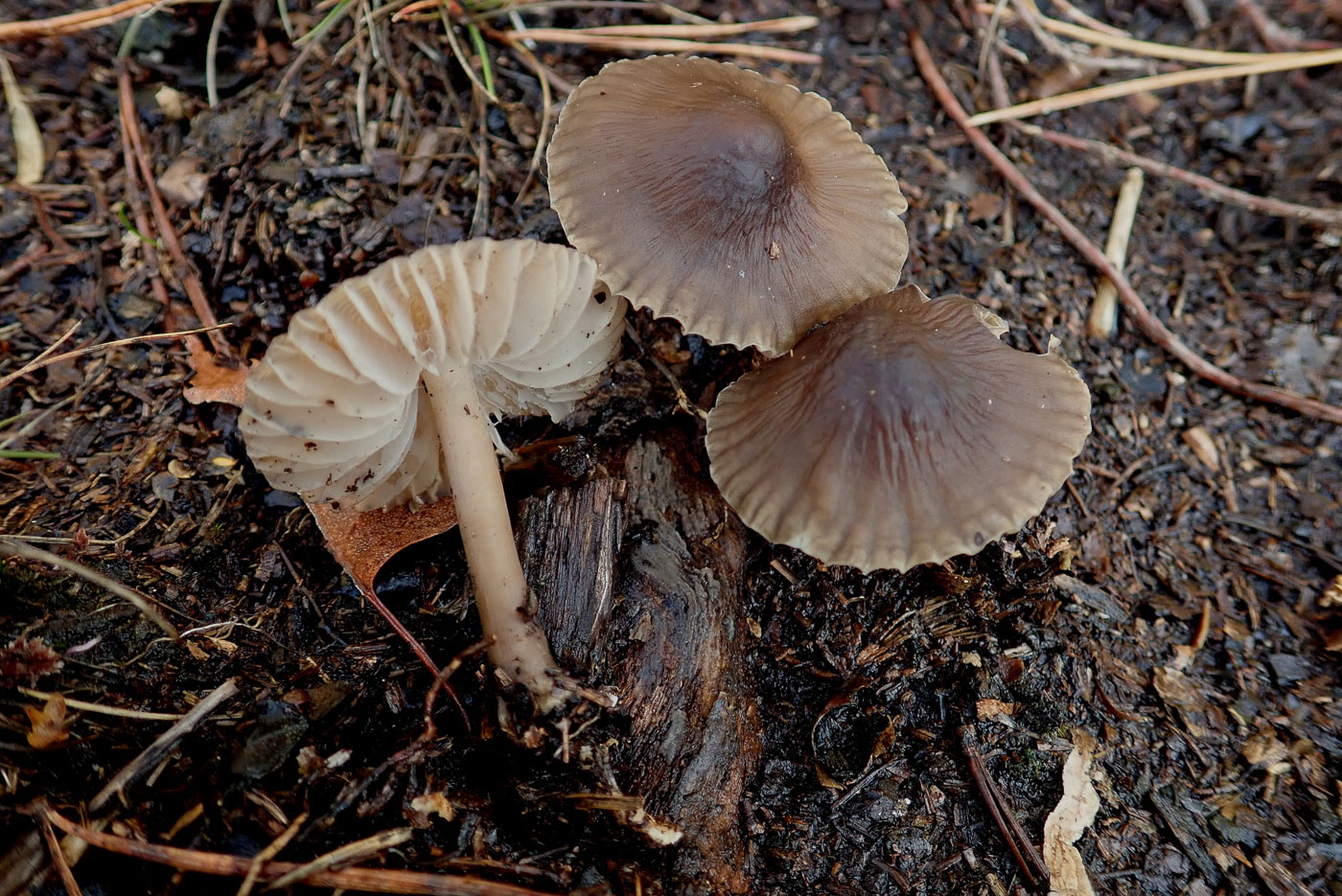 |
Mycena megaspora (Rooting Bonnet) 
Nov 7, 2020. In the same open heathland area at Stoke Common as Penny C.'s two dung species were found was a medium sized dark capped Bonnet growing on the very waterlogged ground. Knowing the Common well, she knew this might well be the rare Mycena megaspora having recorded it here before. A species of acid heathland and only known in the county from this site and nearby Burnham Beeches (just three records in all), it is basically a dark brown capped smaller M. galericulata having the same cross ribs between the gills (use a handlens to see this) and also deeply rooting though not onto fallen wood as in that species. Microscopically similar too, it does have particularly large spores, hence the Latin species name.
|
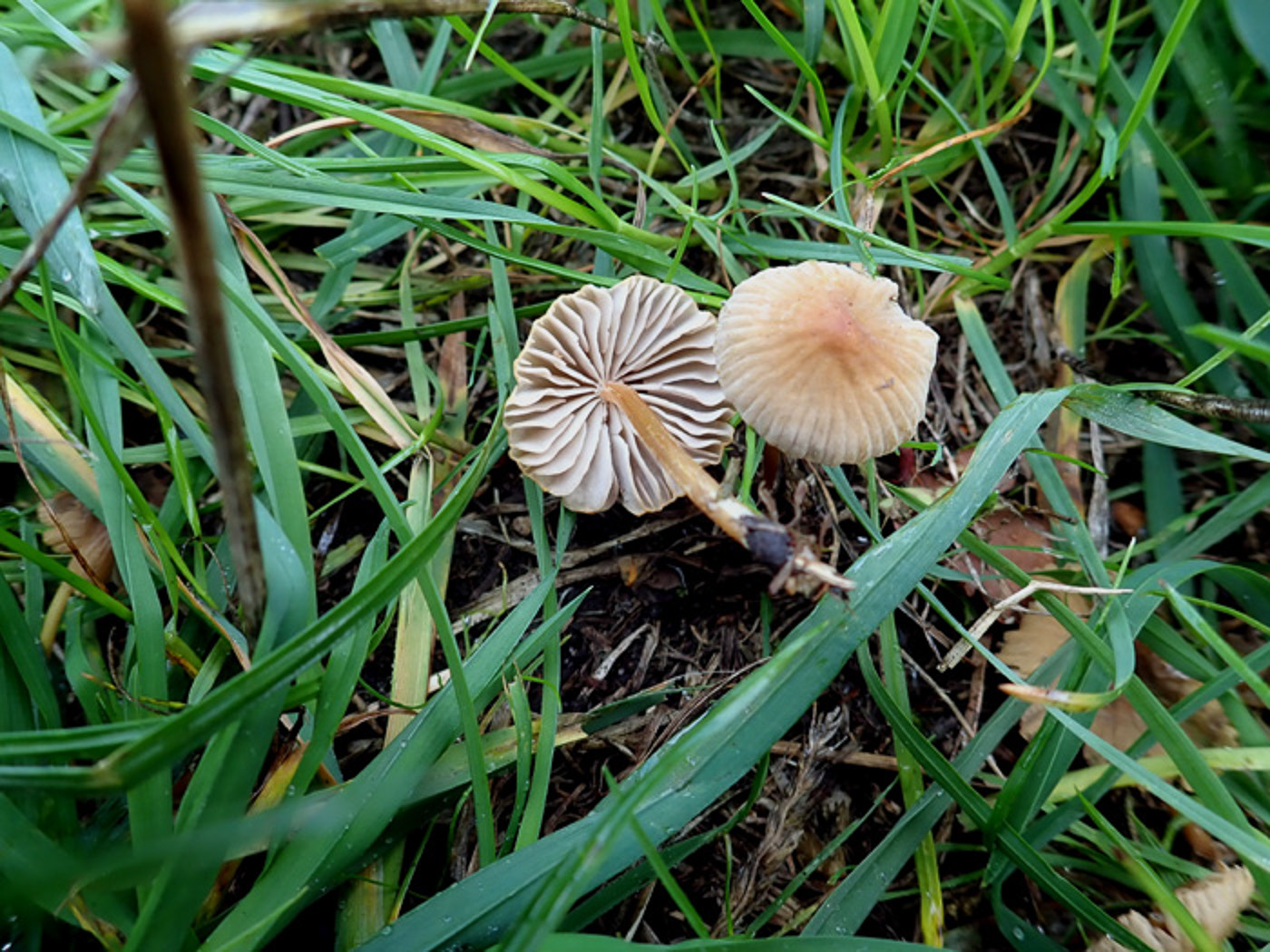
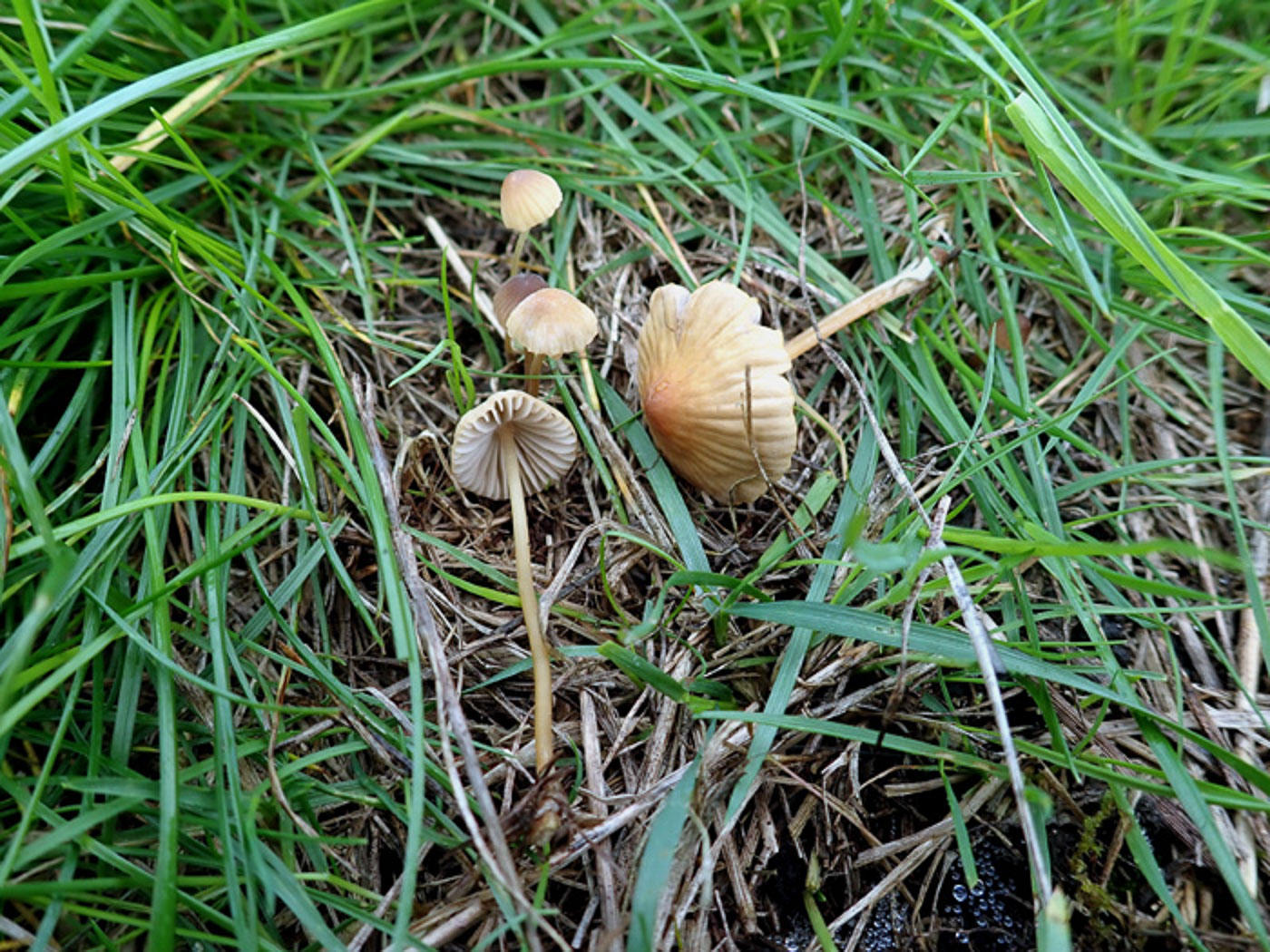
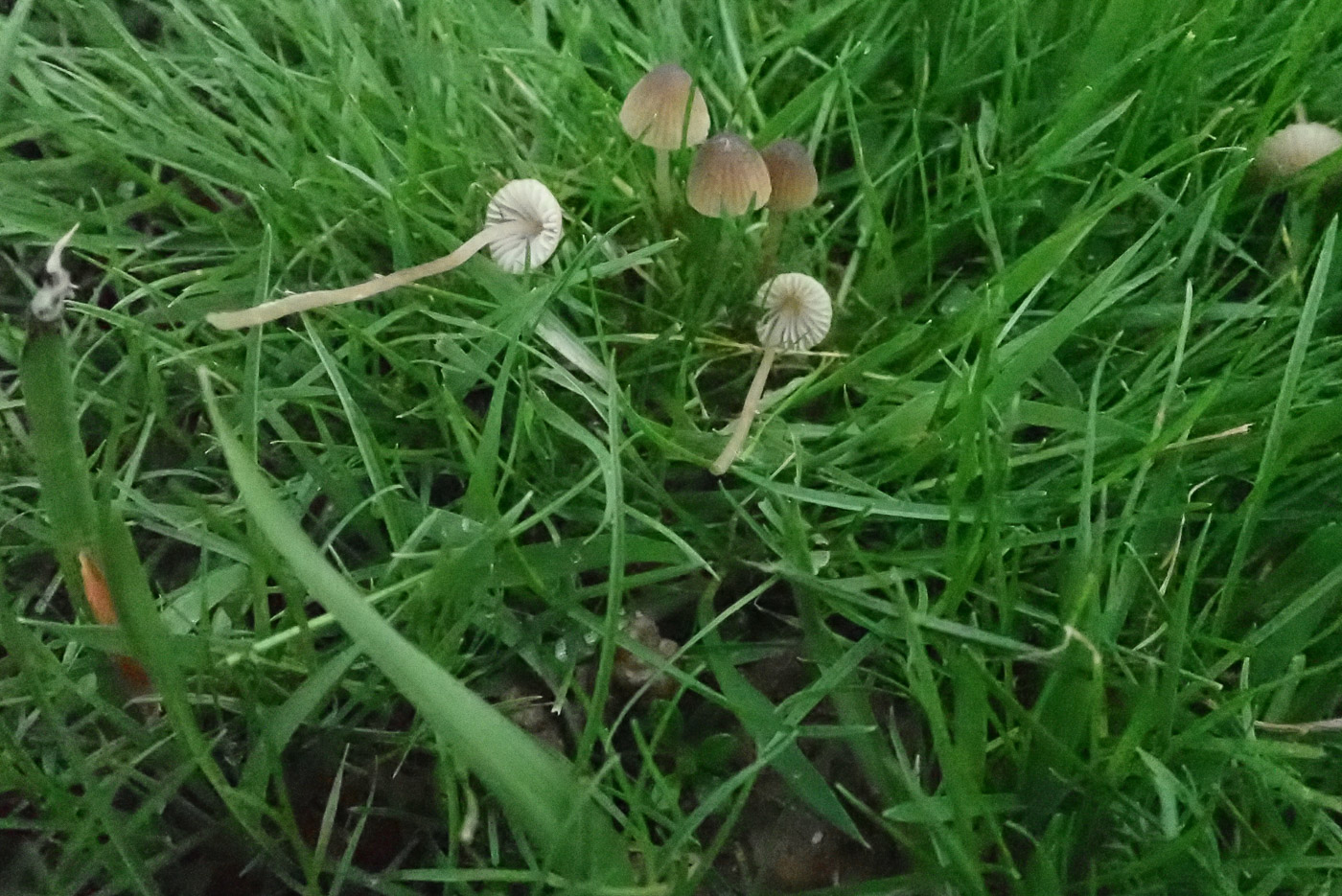
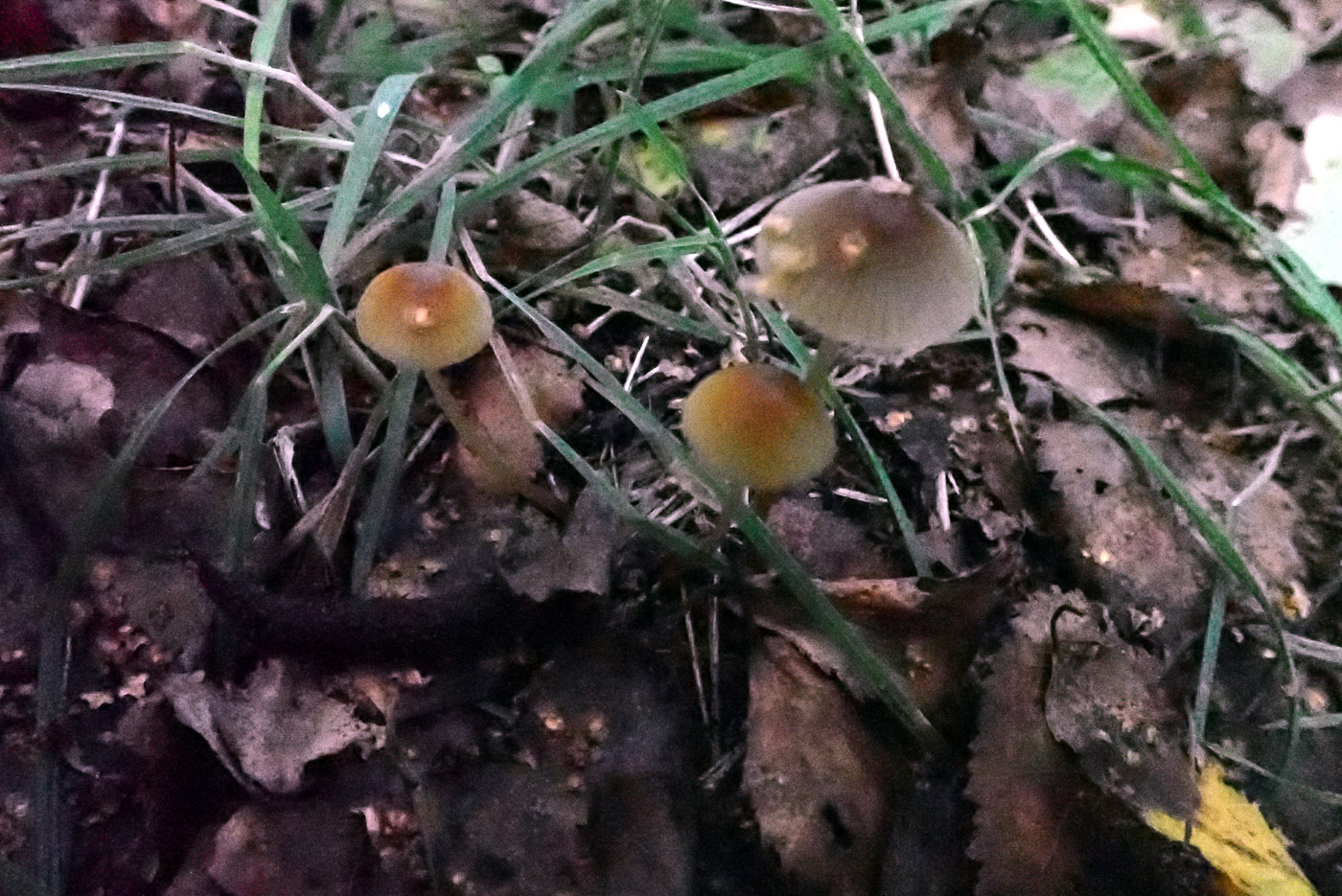
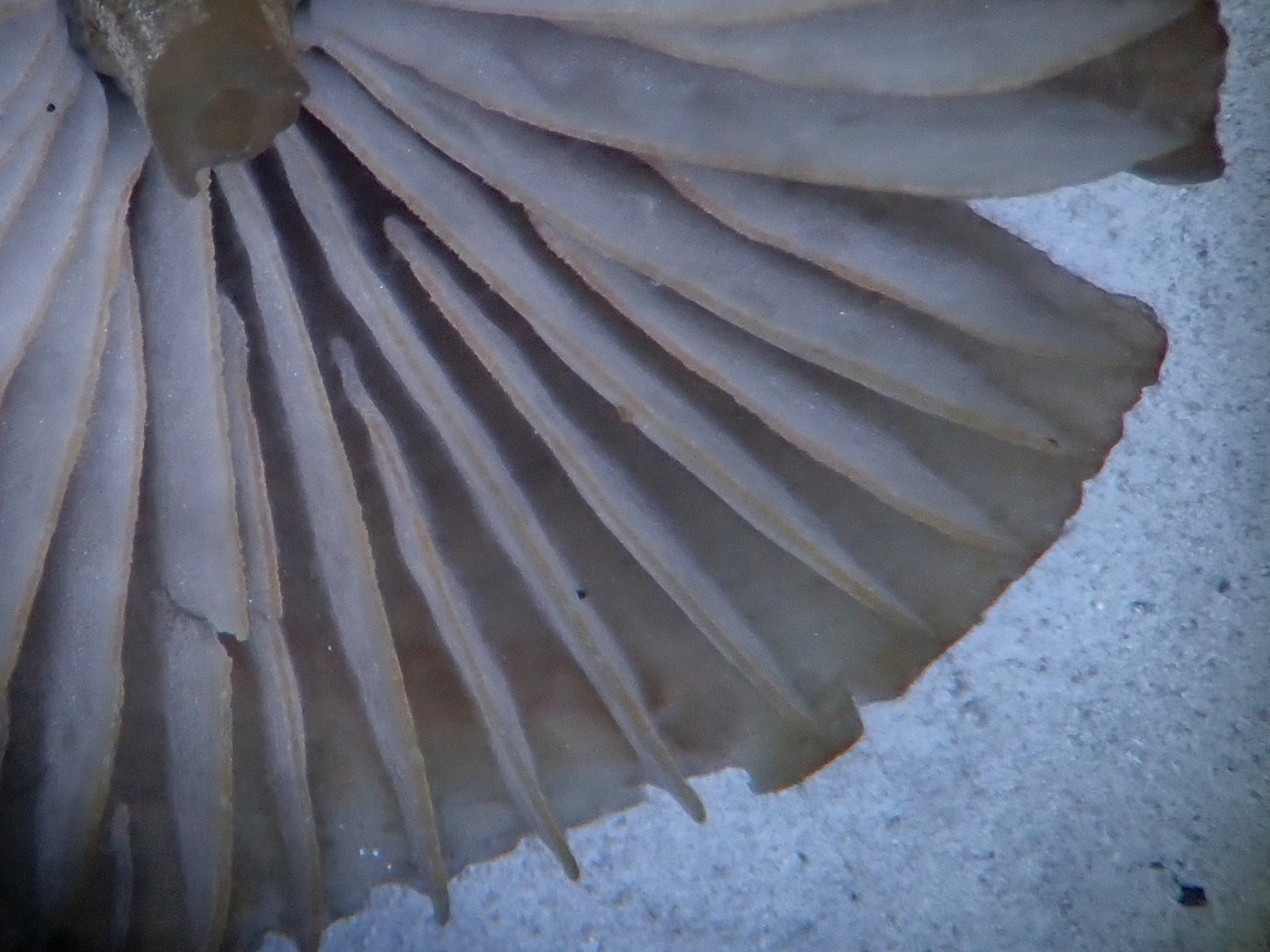 |
Mycena olivaceomarginata (Brownedge Bonnet) 
Oct 3, 2022. In the open grassy area near the car park in Burnham Beeches Penny found several different groups of this grassland Bonnet, though some were somewhat bigger than usual and fooled her even to genus until she got them home to examine in more detail. Bonnet gills are normally white with a concolorous edge, also often rather crowded, but these were not only quite widely spaced but also rather dingy, and until she had the gills under a disecting scope she didn't pick up on the fact that the gill edges were faintly pale brown (not visible in these images, sorry). Then all fell into place!
Dec 1, 2021. On Bradenham Cricket Pitch Penny found the odd cluster of small brown capped Bonnets and suspecting it was this species she checked the gills with a x10 lens to see if the edge was faintly brown. It was only faint but definitely there (though sadly the image is not good enough to show this), confirming this grassland Bonnet which otherwise looks similar to many other Bonnets. The species is not that common but easily misidentified because the olive brown gill edge is not that easy to see.
Oct 5, 2021. In longish grass at Turville Heath Penny - on her knees with the camera - was surprised to notice this Mycena which usually occurs in short mown grass. It has the typical conical Bonnet shape with a thin delicate stem and white gills, but has an olive brown cap and (uniquely) the gills have a faint olive brown edge - seen best with a handlens or disecting microscope. (Apologies for the slightly blurry images!)
|
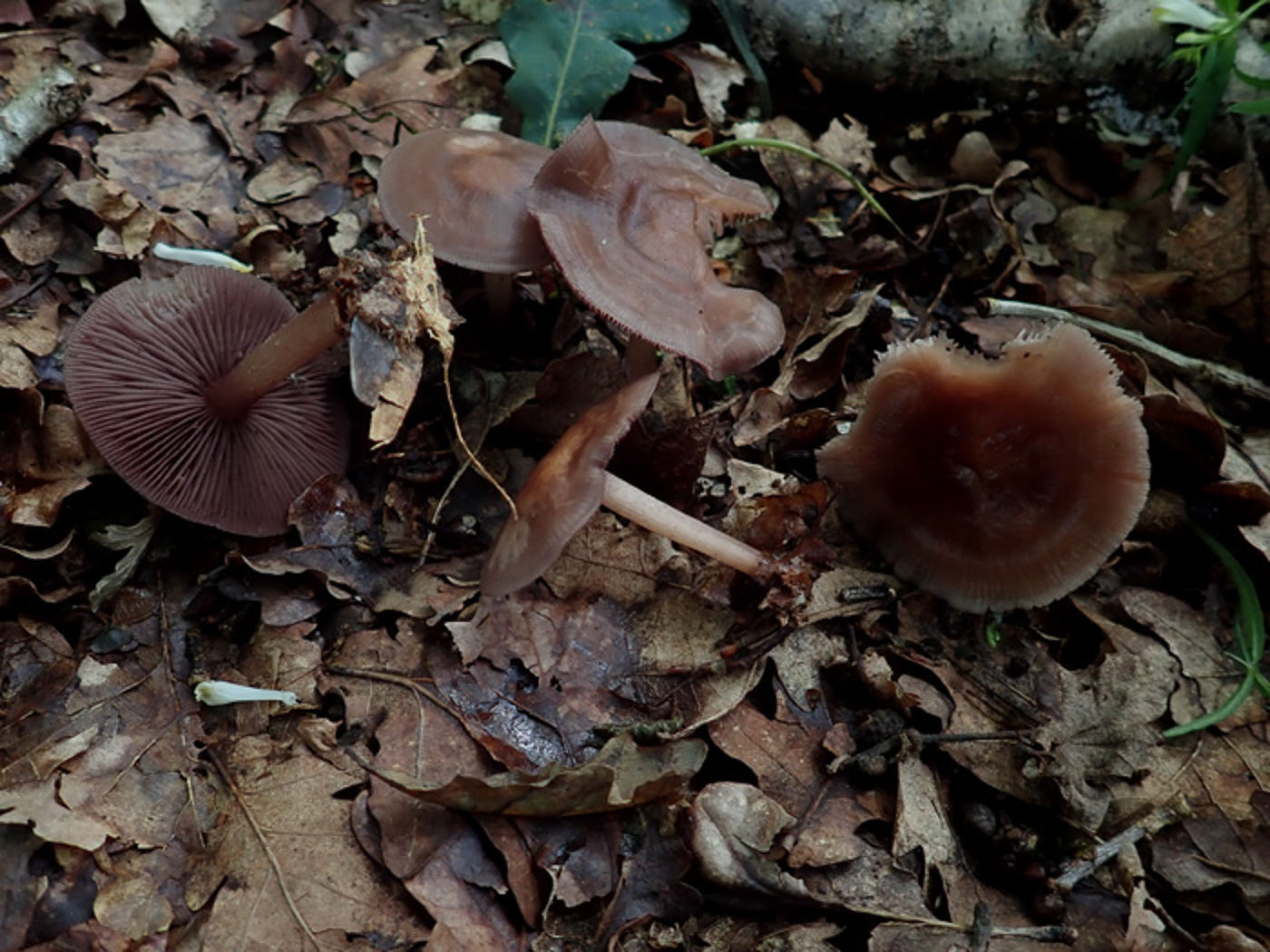
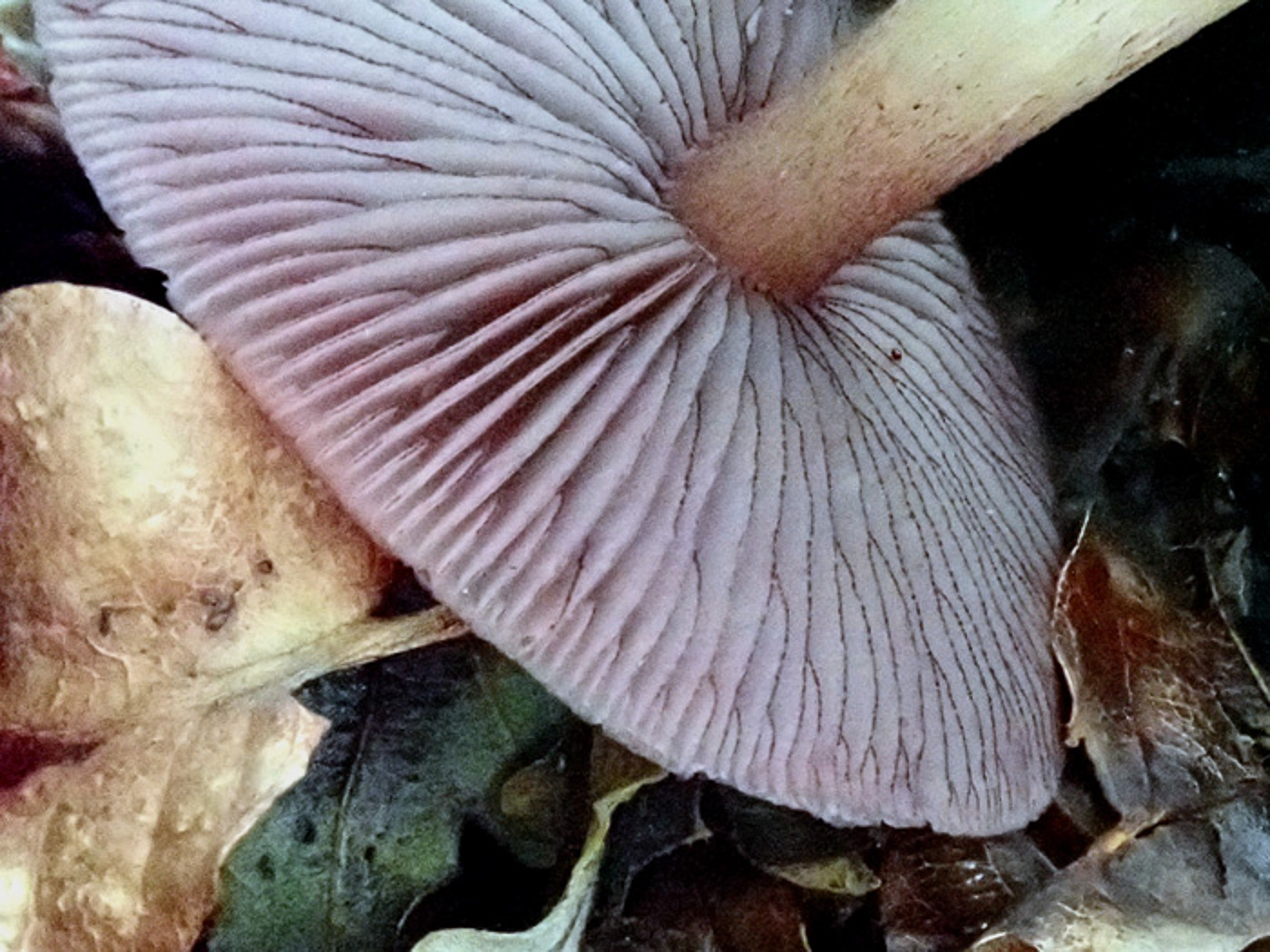
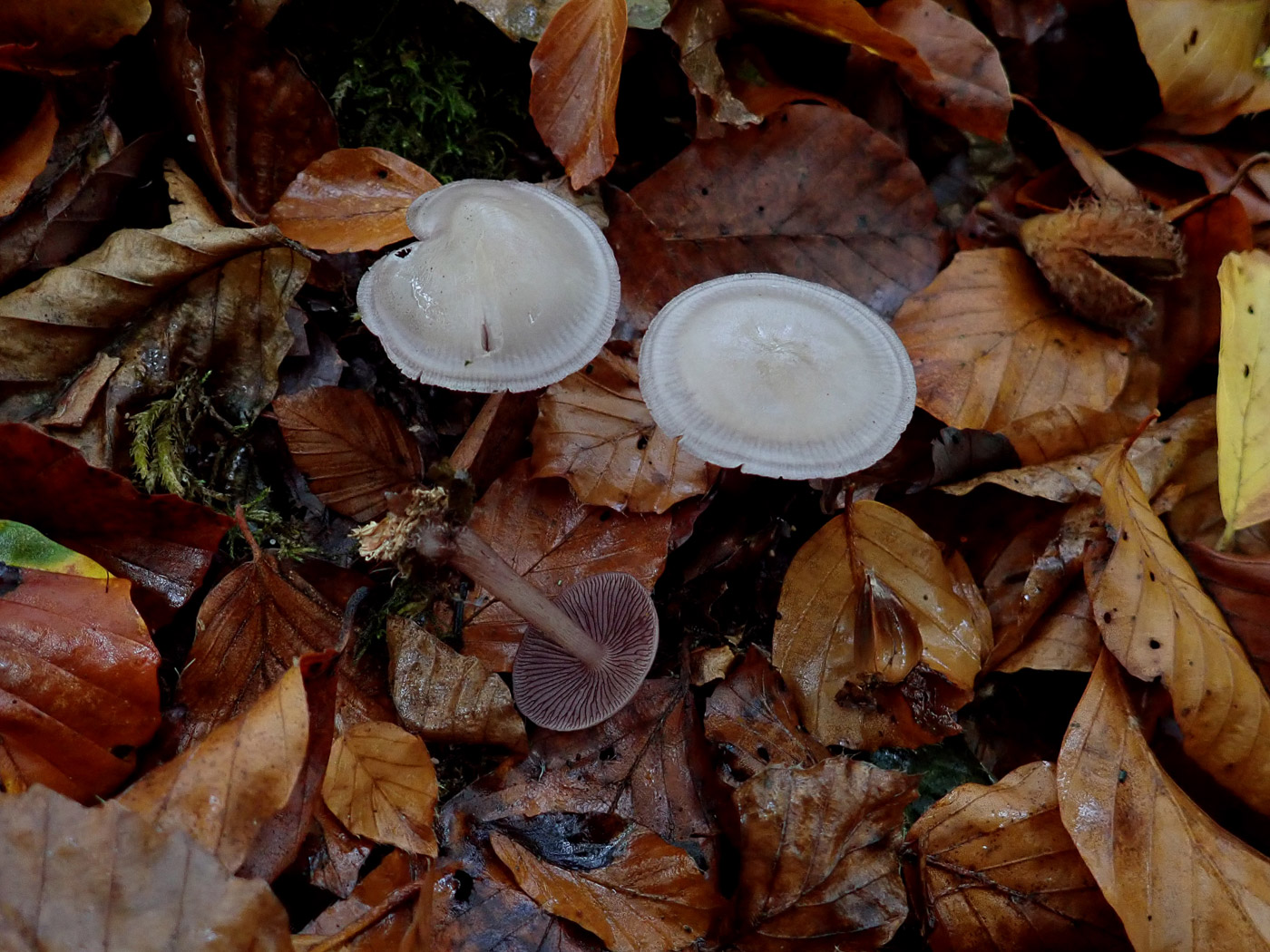
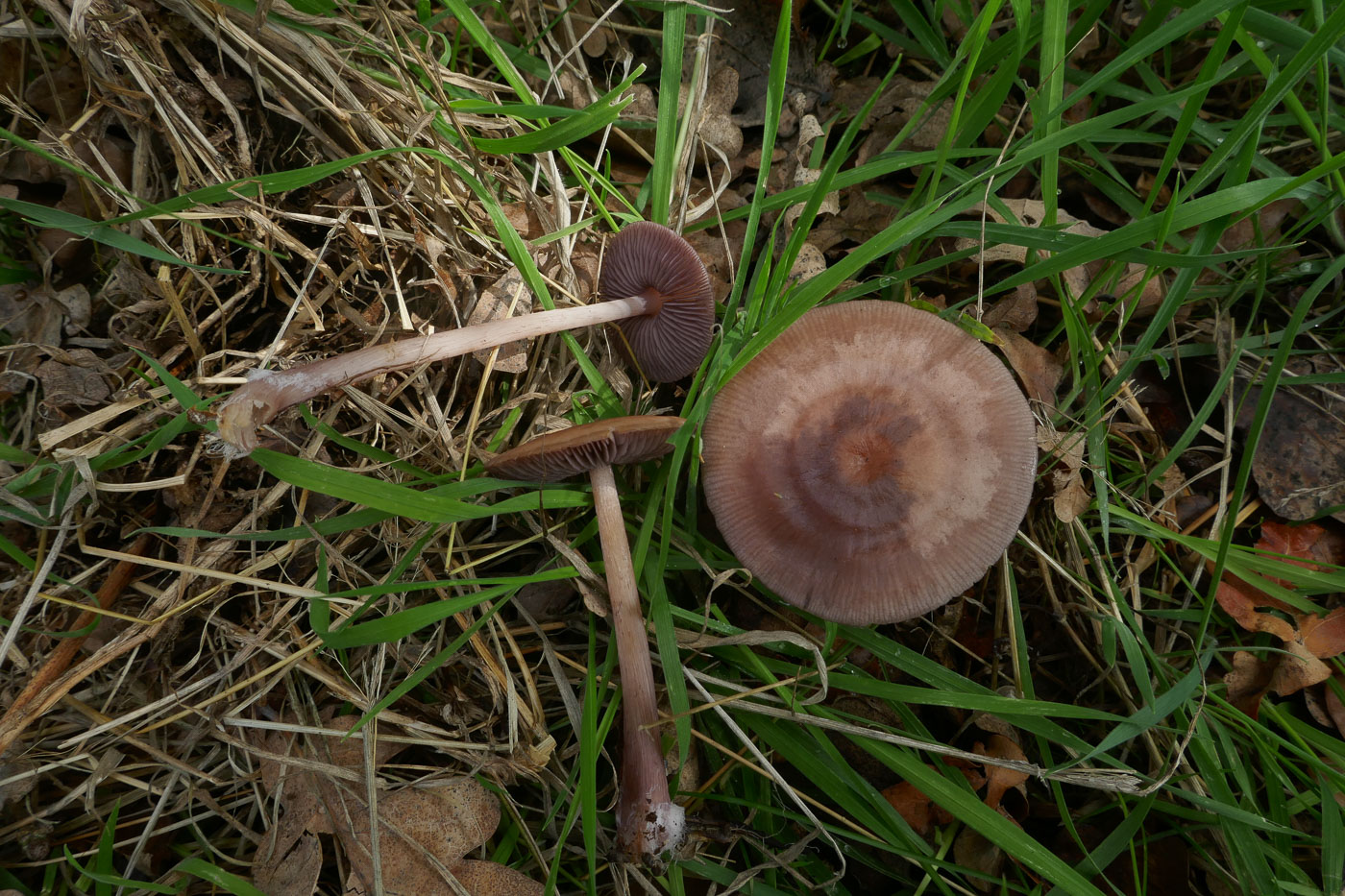
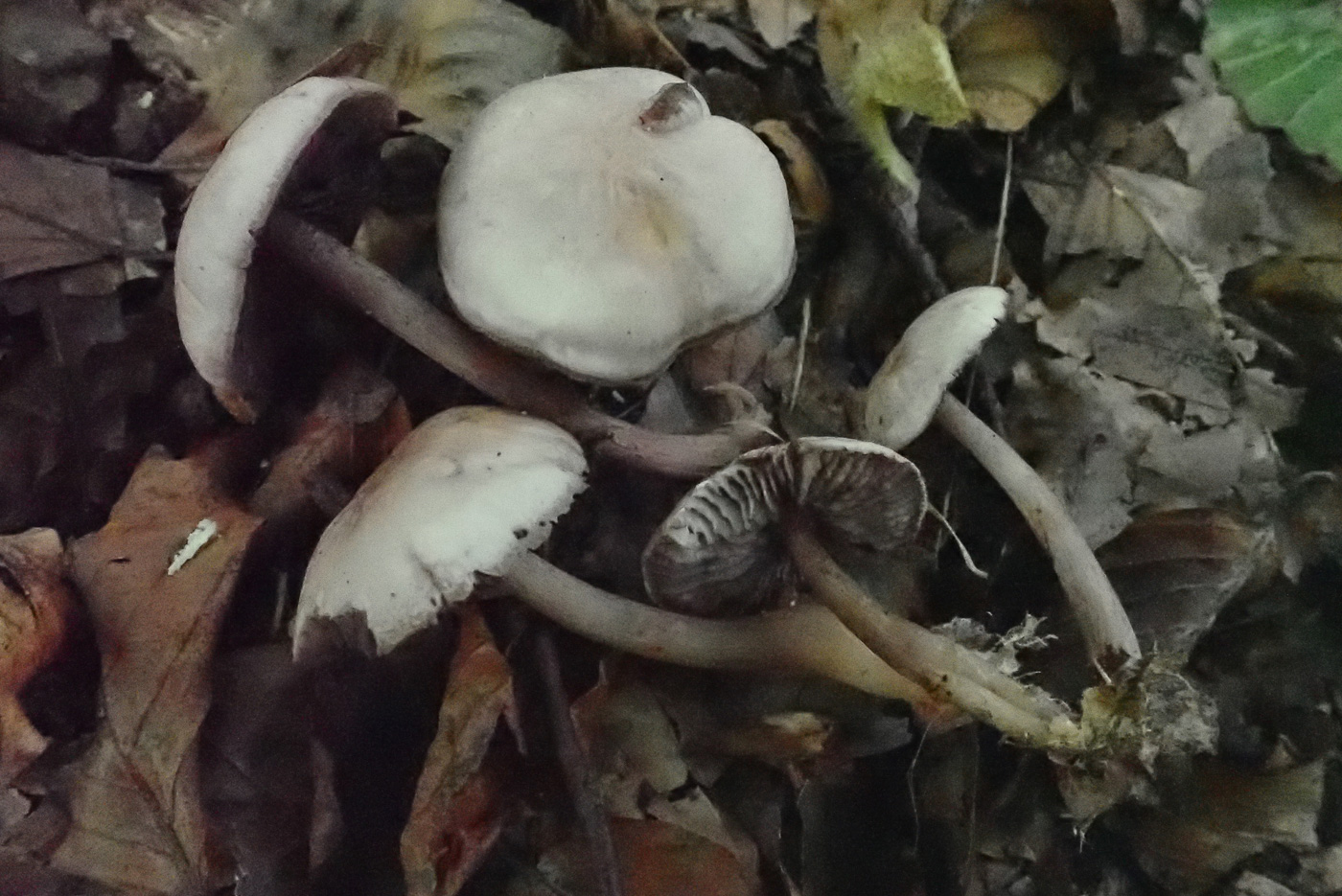
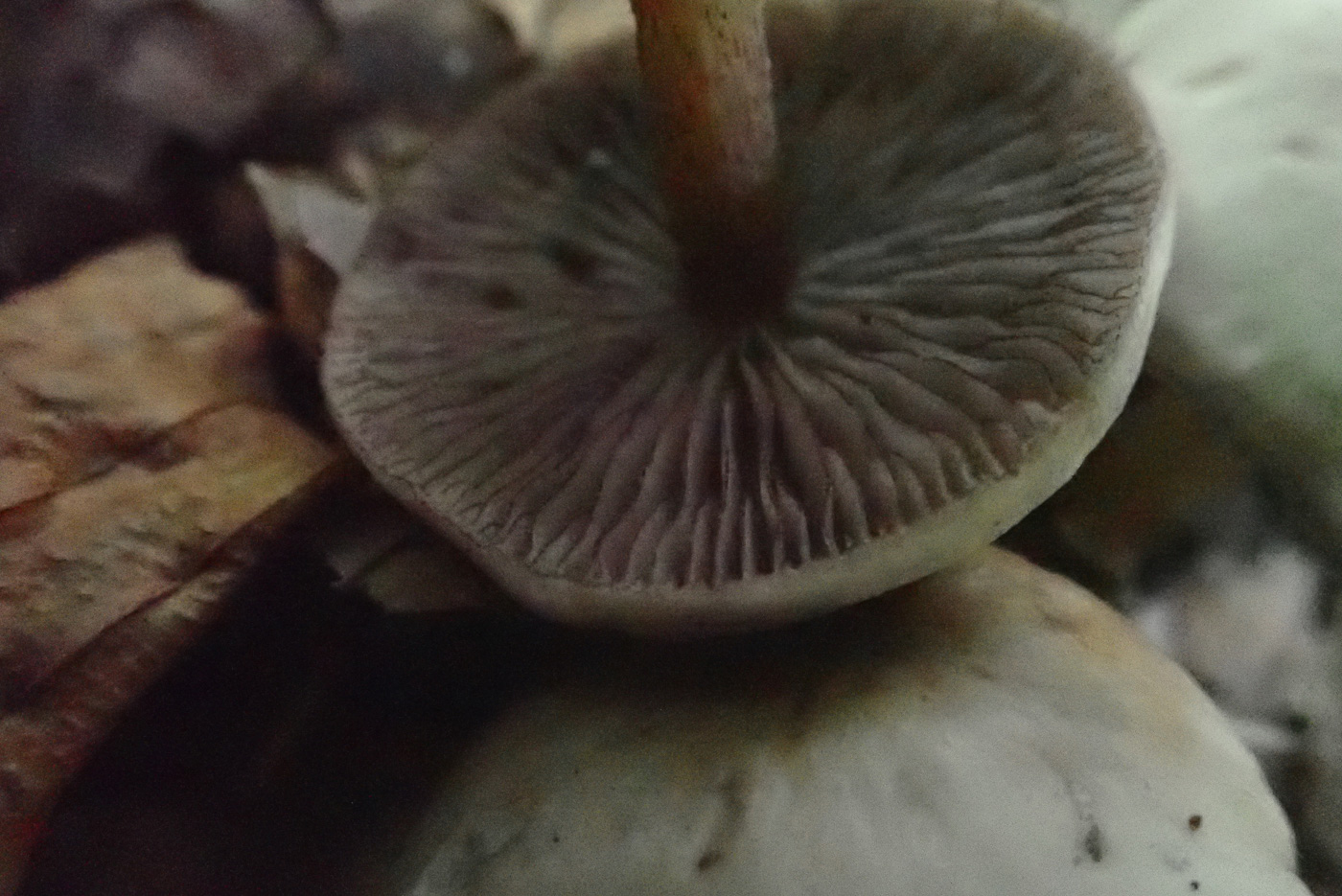
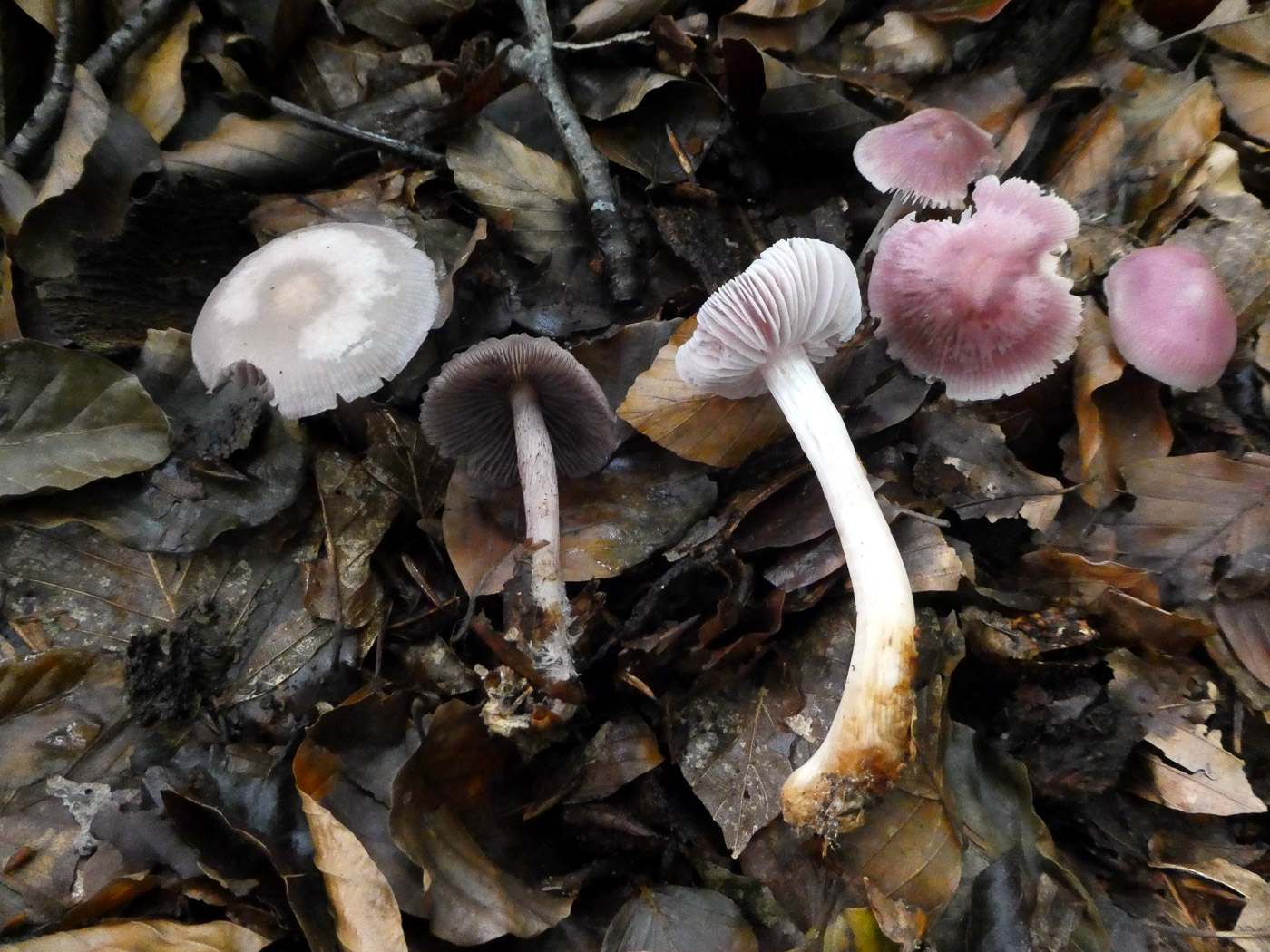
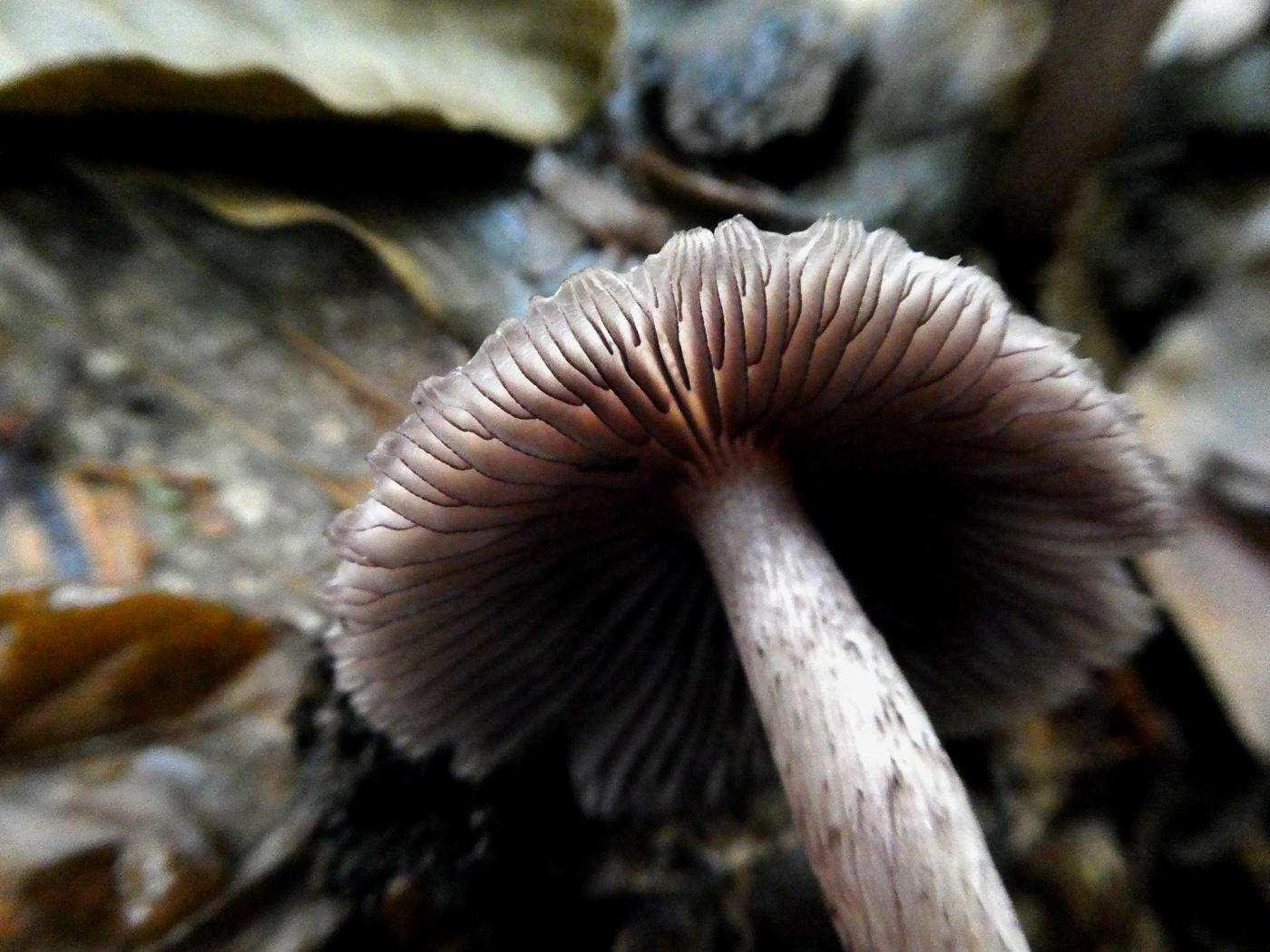
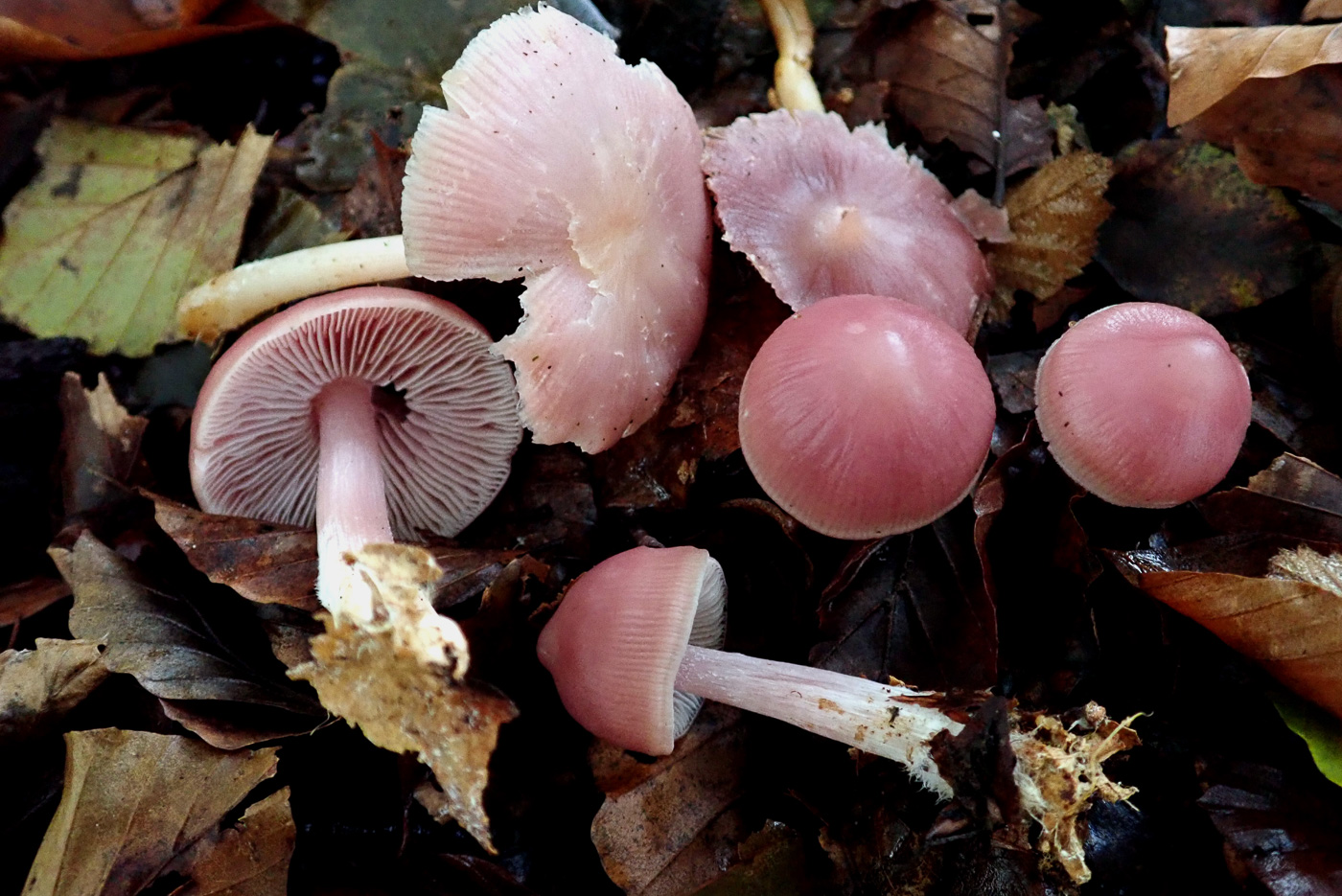
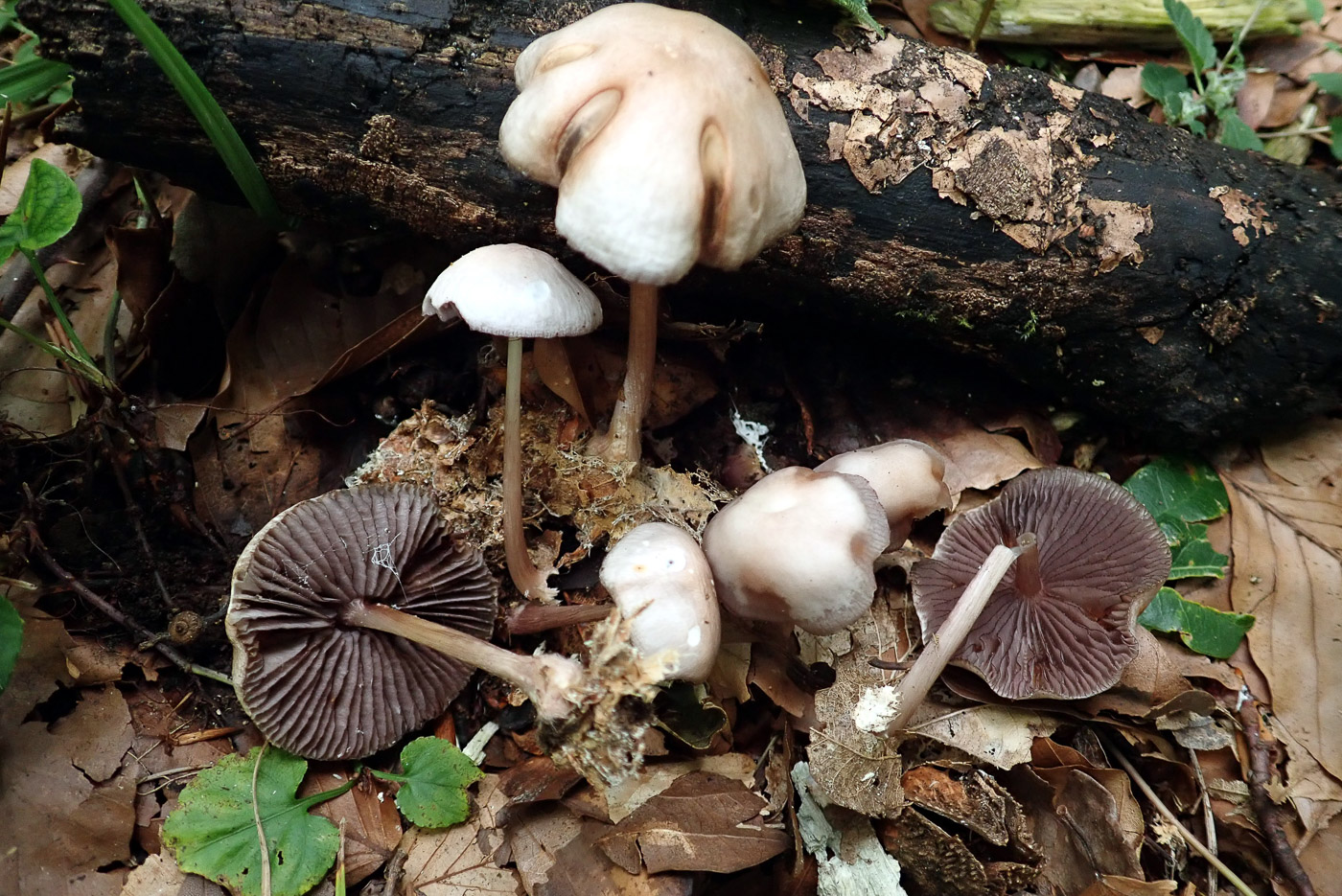
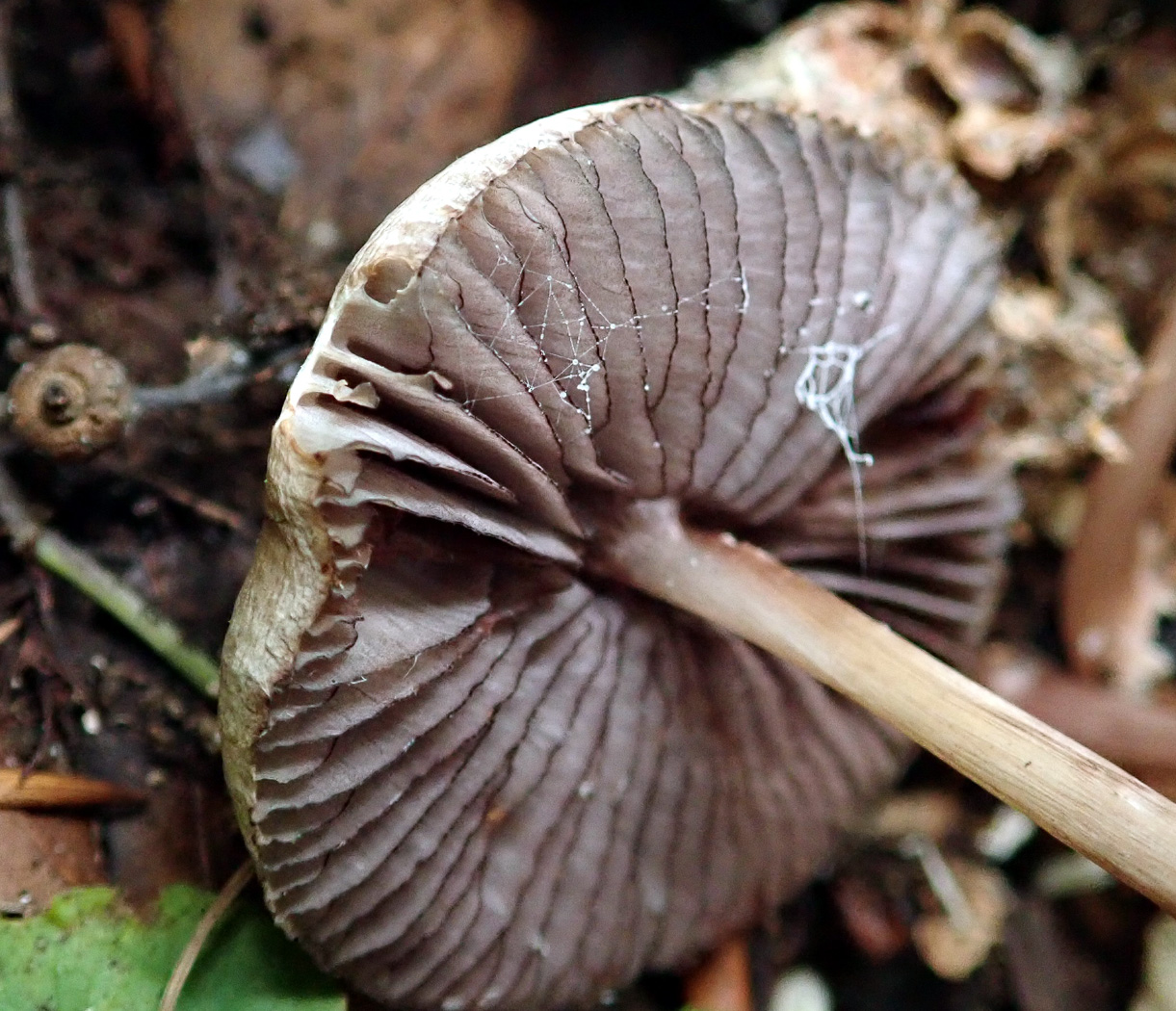
|
Mycena pelianthina (Blackedge Bonnet)
Jul 25, 2023. In Oak litter in Bernwood Forest Penny and Paul found this species just beginning to make an appearance. One of a group of Bonnets which inhabit leaf litter, often quite large for the genus, with a sharp radishy smell and with caps ranging from pink to some shade of purple, it is easy to recognise once you check the gills underneath which have a deep purple edge (photo 2) - a unique feature.
Oct 21, 2022. In the Beech litter in Gussett's Wood Penny noticed these impressively pristine examples of what is often rather a drab Bonnet. Closely related to M. pura and rosea (Lilac and Rosey Bonnets) it shares their radishy smell but has a much duller cap colour and sports a dark purple gill edge which often needs a hand lens to see clearly.
Sep 29, 2022. Under Oak at Stampwell Farm Jackie Ewan found this trio of a Bonnet species with rather drab cap colours but two redeeming features: it has a sharp smell of radish (as in the closely related and equally common M. rosea and M. pura) but differs from both those two in having a distinctly dark gill edge - actually deep purple, not black).
Oct 6, 2021. On a visit to King's Wood Tylers Green Penny found several examples of this rather nondescript Bonnet, closely related to M. pura and M. rosea (see both these dated yesterday) and having the same 'radishy' smell and frequenting Beech litter. The cap is similar to a washed out M. pura, rather cream coloured, but the revealing feature is its gills which are not only dark for the genus but have a distinct dark purple edge (seen best with a handlens), unique to the species.
Oct 10, 2020. Penny Cullington took the opportunity to make a comparison between these two Bonnets growing together in Beech litter in Gussetts Wood. They are closely related, are roughly the same size with caps up to 3 or 4 cms across, have the same distinctive smell of radish and are equally common in Beech litter. On the right: four specimens of Rosy Bonnet (note the white gills and stem which contrast with the rosy cap); on the left: two specimens of Black Edge Bonnet (note the much more non-descript cap colour and dark edged gills). (We have an earlier photo of this dated Sept 11.) Photo 3 is of a pristine collection of M. rosea found two days later at Pulpit Hill. There is a third similar species, Mycena pura, which we hope to be able to illustrate soon.
Sep 11, 2020. A somewhat nondescript and quite common species, this Bonnet has one redeeming and unique feature visible in the close-up photo: the edges of the gills are lined with (not black but) dark purple. It was found by Penny Cullington in Kingswood, Tylers Green in Beech litter. It is closely related to the even more common M. pura and M. rosea, both of which inhabit the same substrate; all three species have a sharp smell described as similar to that of radish.
|
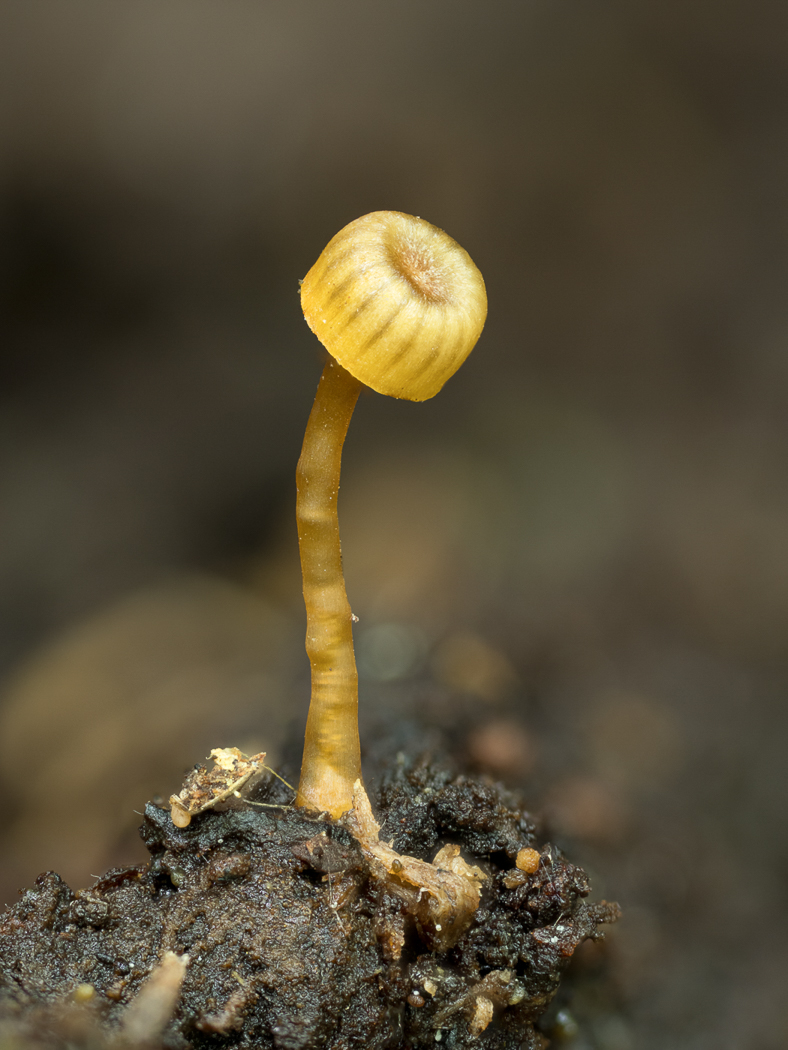
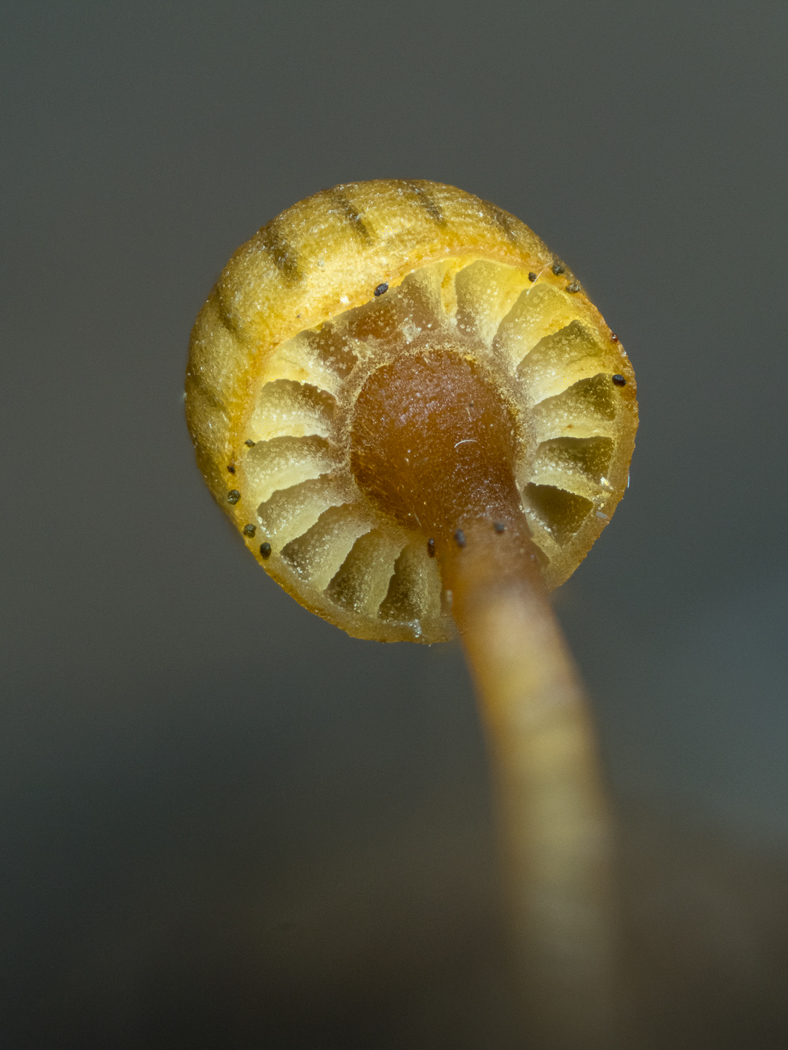
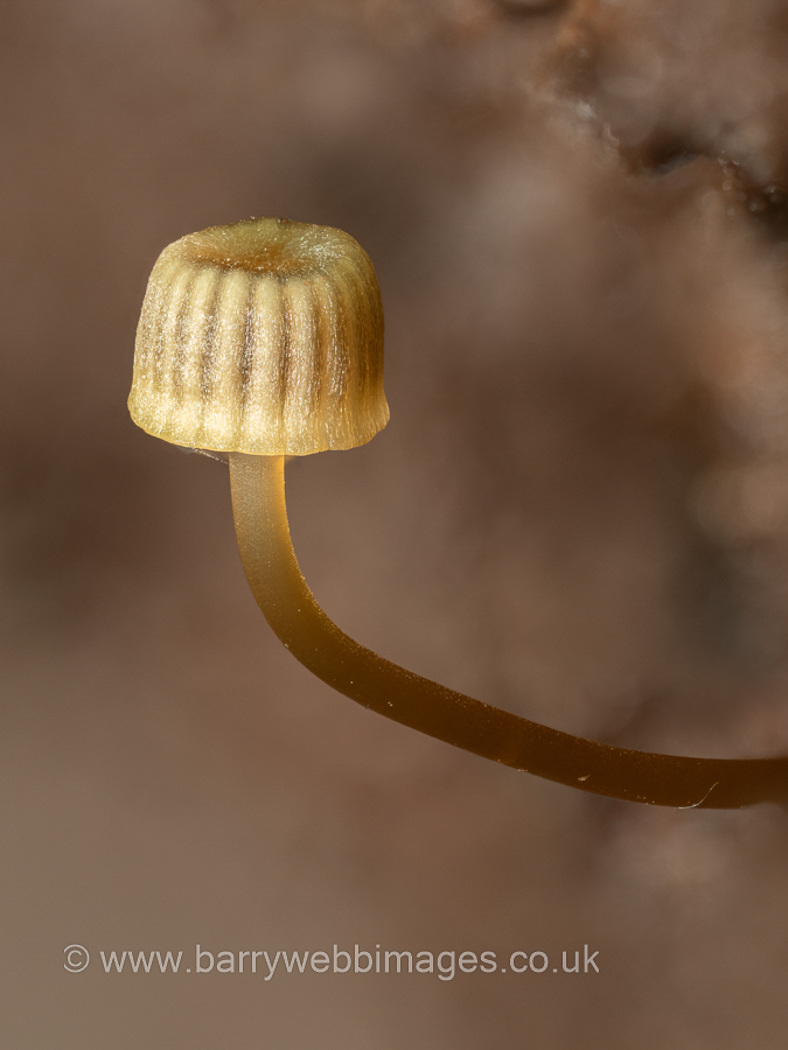 |
Mycena picta (Cryptic Bonnet) 
Jul 21, 2023. In Burnham Beeches Stephen Plummer spotted this tiny but exquisite little Bonnet on rotten woody debris in a marshy woodland area but had no idea what it might be, guessing at possibly Marasmius. Barry Webb was luckily at hand to take the photos which, hoping for help with ID, were then sent to Penny who recognised it instantly despite never having found it herself! Photo 3 is of a further find made by Barry here three weeks later. This is a very rare Mycena, unique in appearance with its flat-topped cap with translucent fluted straight sides, almost horizontal gills enclosed within and a thick mass of mycelial strands attaching it to the substrate. In fact Barry found it in a different area at this site in 2021 when it was new to the site and the county (see Finds 2021 October 16th). Penny is green with envy and congratulates Stephen for finding such a special little mushroom.
|
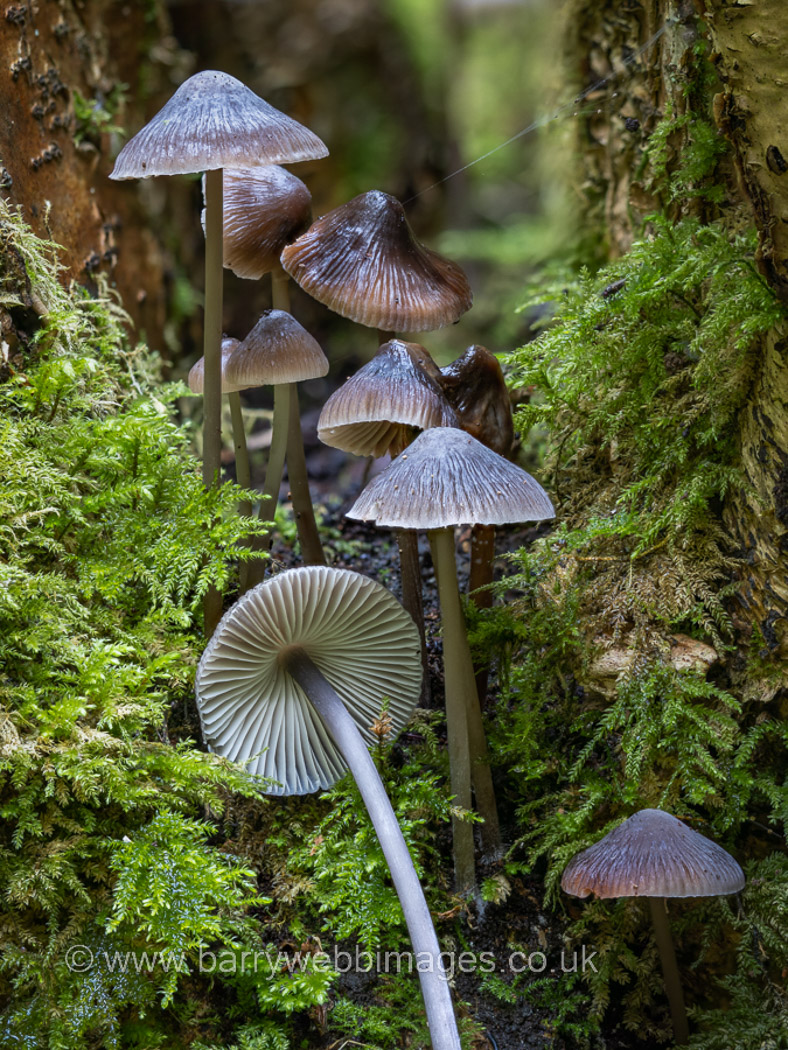
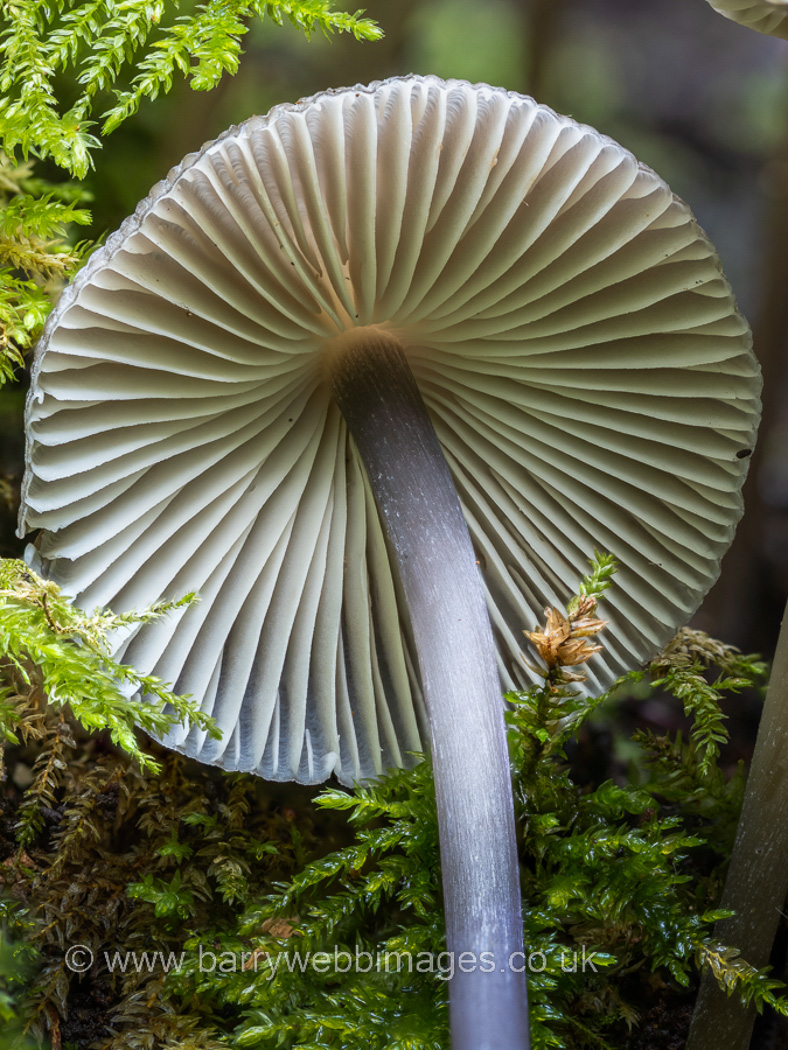
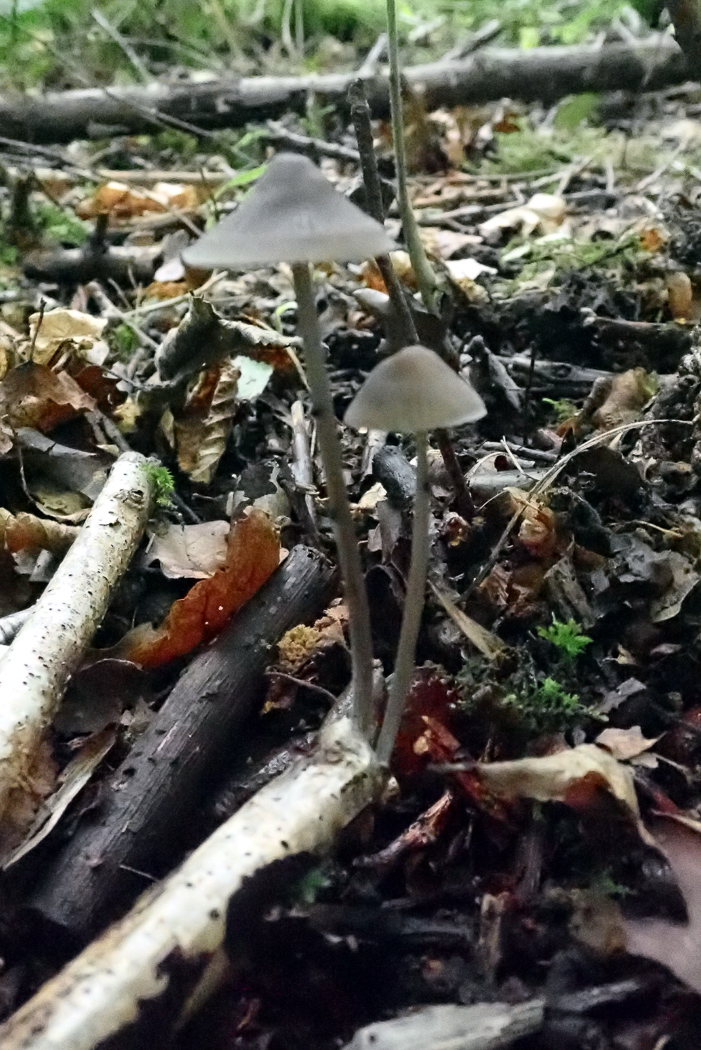
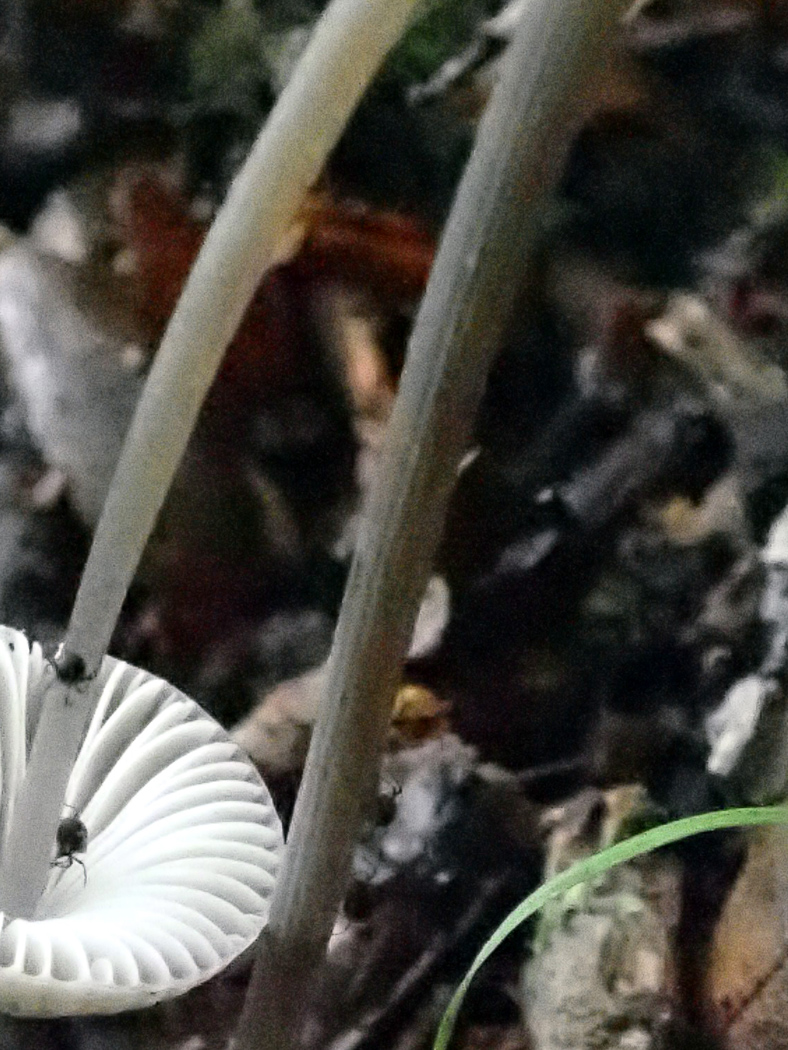
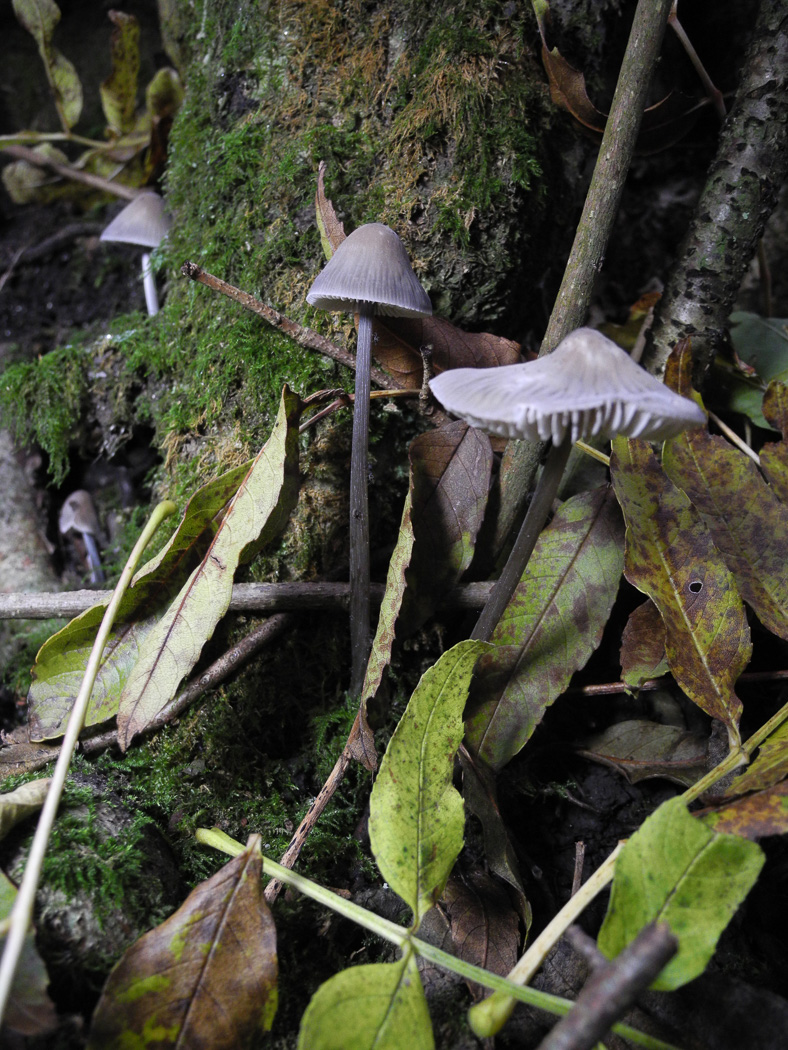
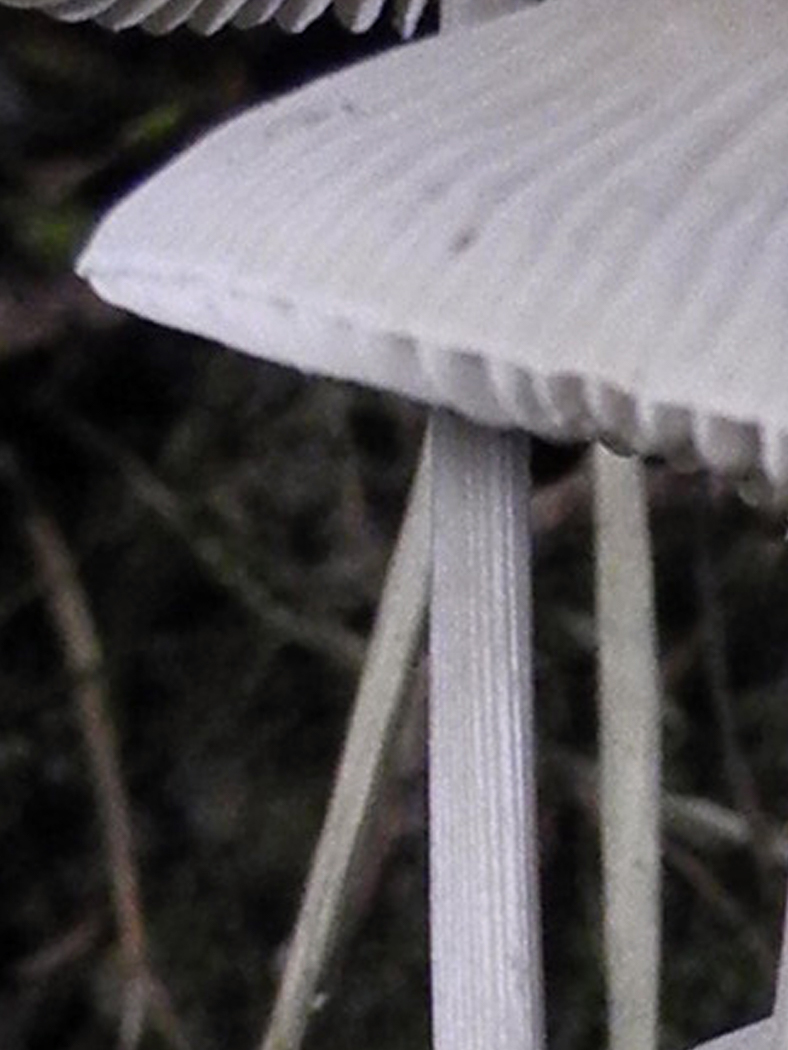
|
Mycena polygramma (Grooved Bonnet)
Oct 12, 2022. On a Hazel stump at Dancersend Claire Williams found this cluster of greyish Bonnets which were somewhat similar to the many examples of M. galericulata (Common Bonnet) on display on the fallen wood - this site often boasts many different Bonnet species. Penny suspected this might be M. polygramma which is a regular here, so checked the stem for the telltale longditudinal grooves - not always obvious or even present, but diagnostic when they are. These are just visible in photo 2 especially just under the apex.(The photos here are Barry Webb's.)
Oct 7, 2021. On a deciduous stick in Rushbeds Wood Penny noticed these two greyish Bonnets standing about 6cms tall. It wasn't until she saw the shape of the gill cells under the scope at home that she realised what species it was, then realised she could have named it in the field had she remembered to look for the grooved grey stem with a handlens. Though not always very prominent and easy to see, if present - as they were here - the grooves separate the species from the many other Bonnets found on fallen wood. (Apologies form the blurry images.)
Oct 18, 2020. Antony Knight found (and identified) this group of Bonnets fruiting on the roots of Ash in Rushbeds Wood. It is very similar to other wood inhabiting Bonnets of medium size and easily mistaken for M. galericulata (Common Bonnet). However, with care you can recognise that it's different in the field with its rather grey tones to cap and stem and, more importantly, the fine longditudinal grooves on the stem - its unique field character and seen here in photo 2. However, these lines are not always present or nearly as obvious as they are in today's collection, in which case it's a matter of detective work with a scope to separate it from other likely contenders.
|
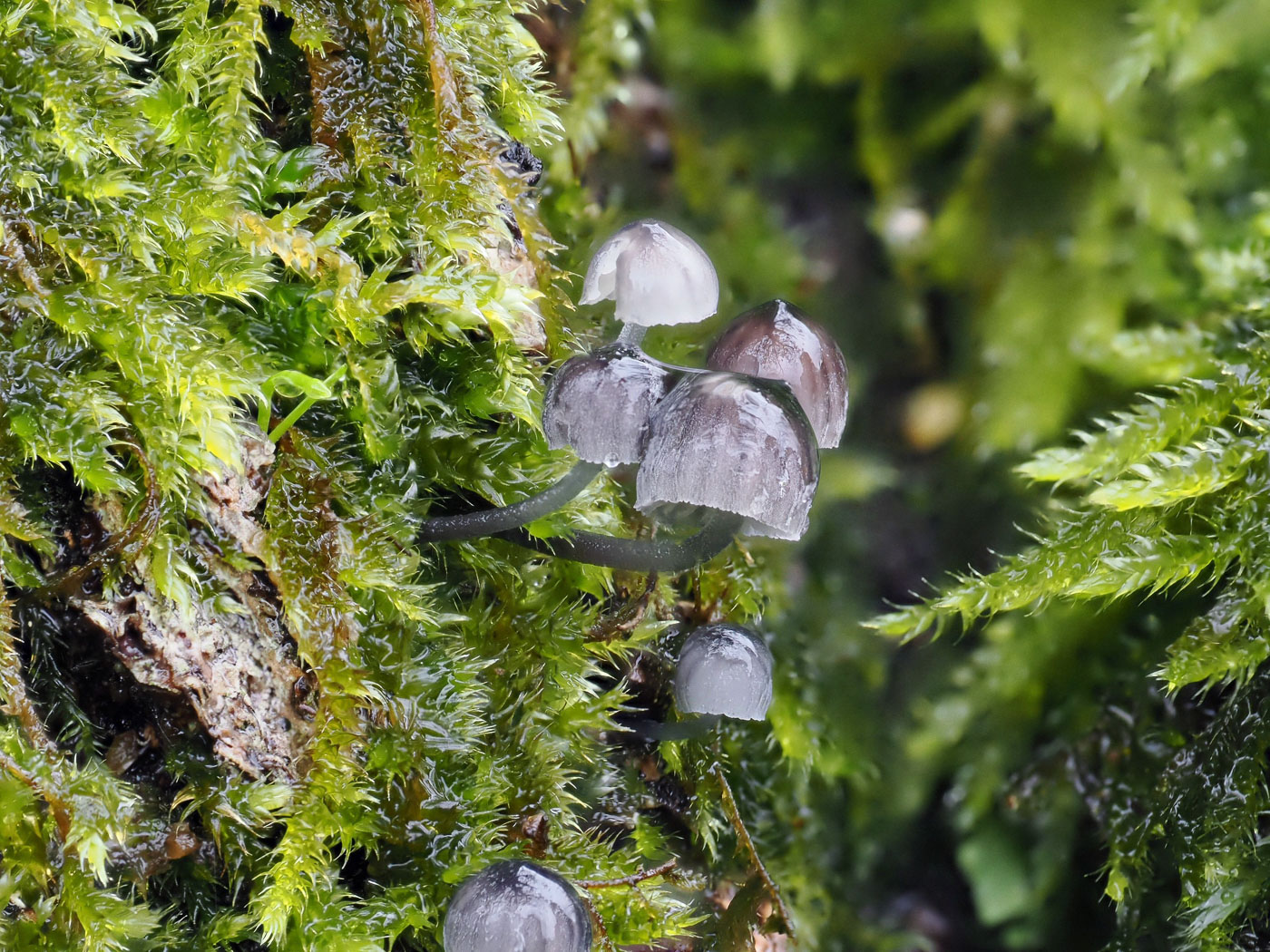
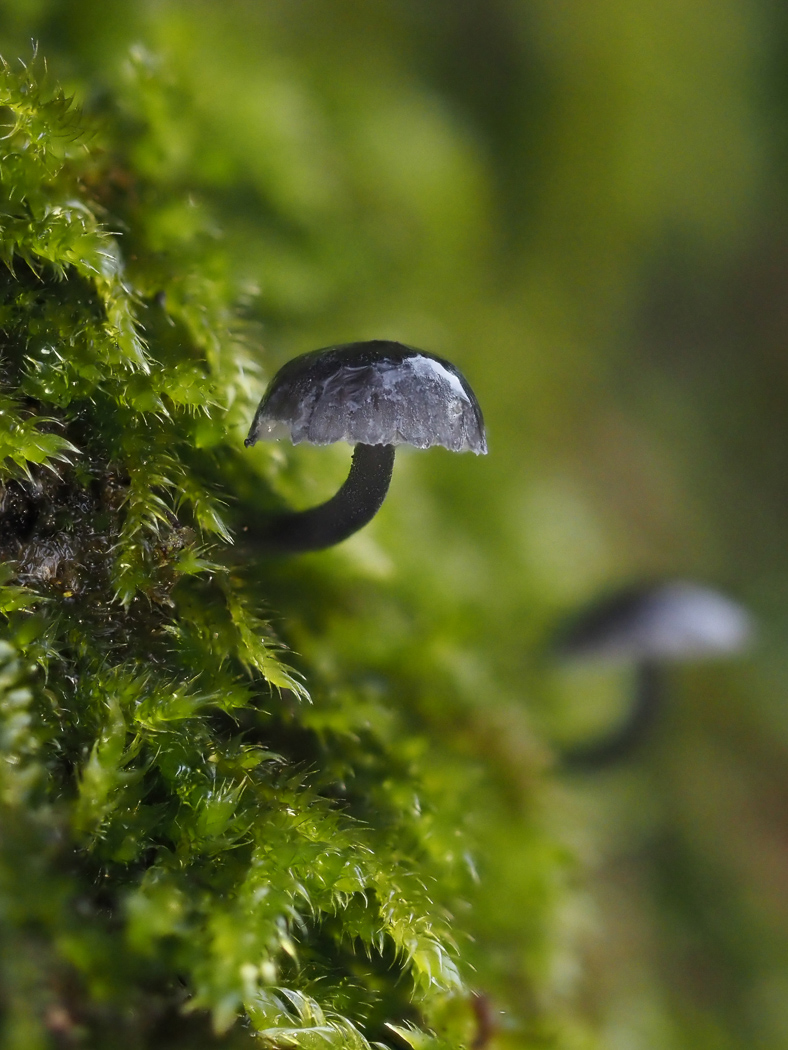
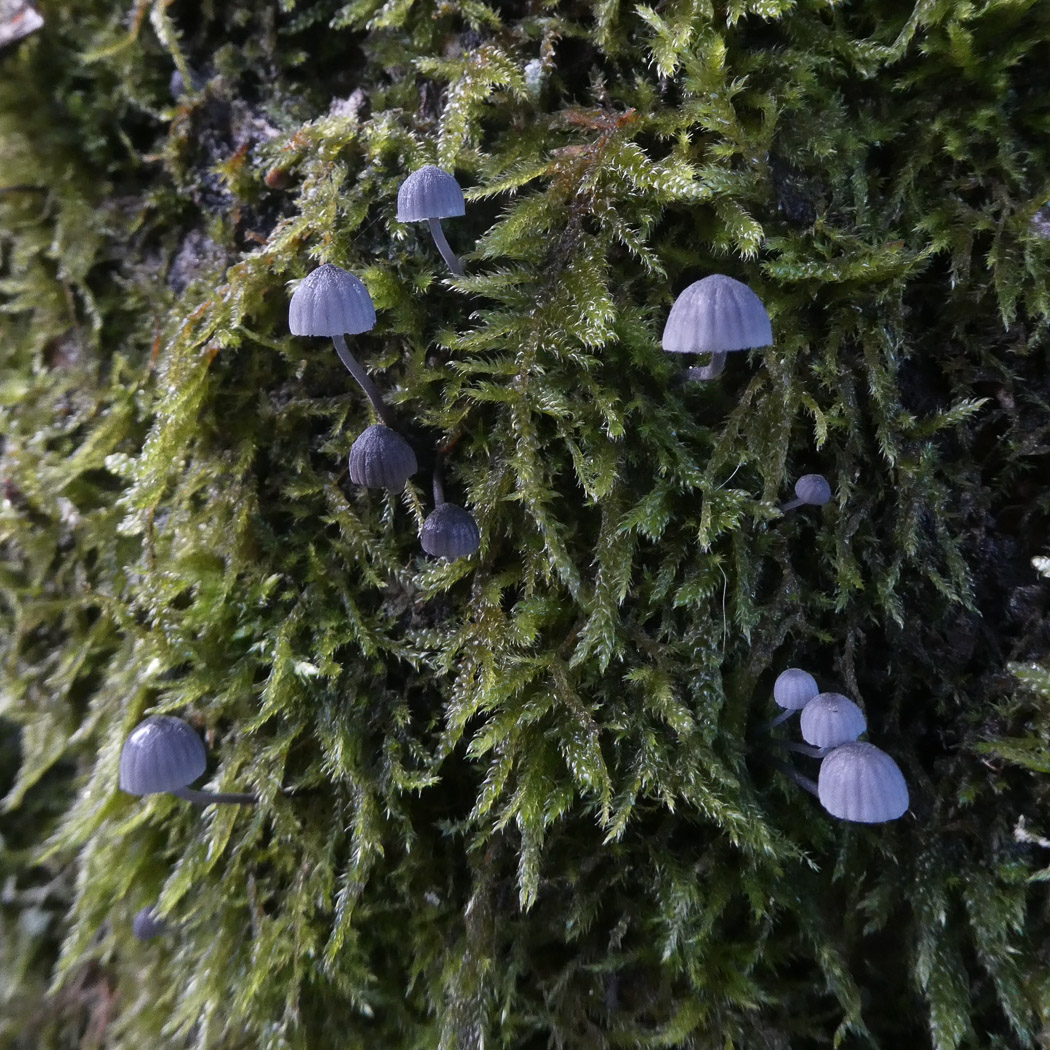
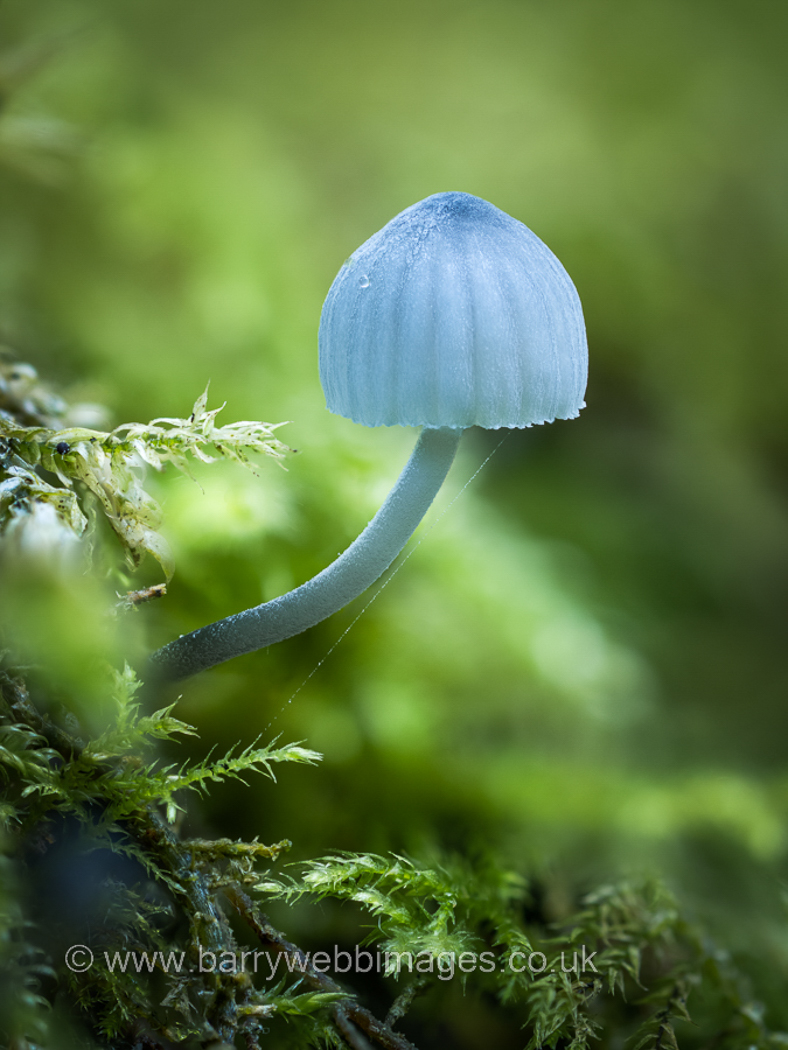
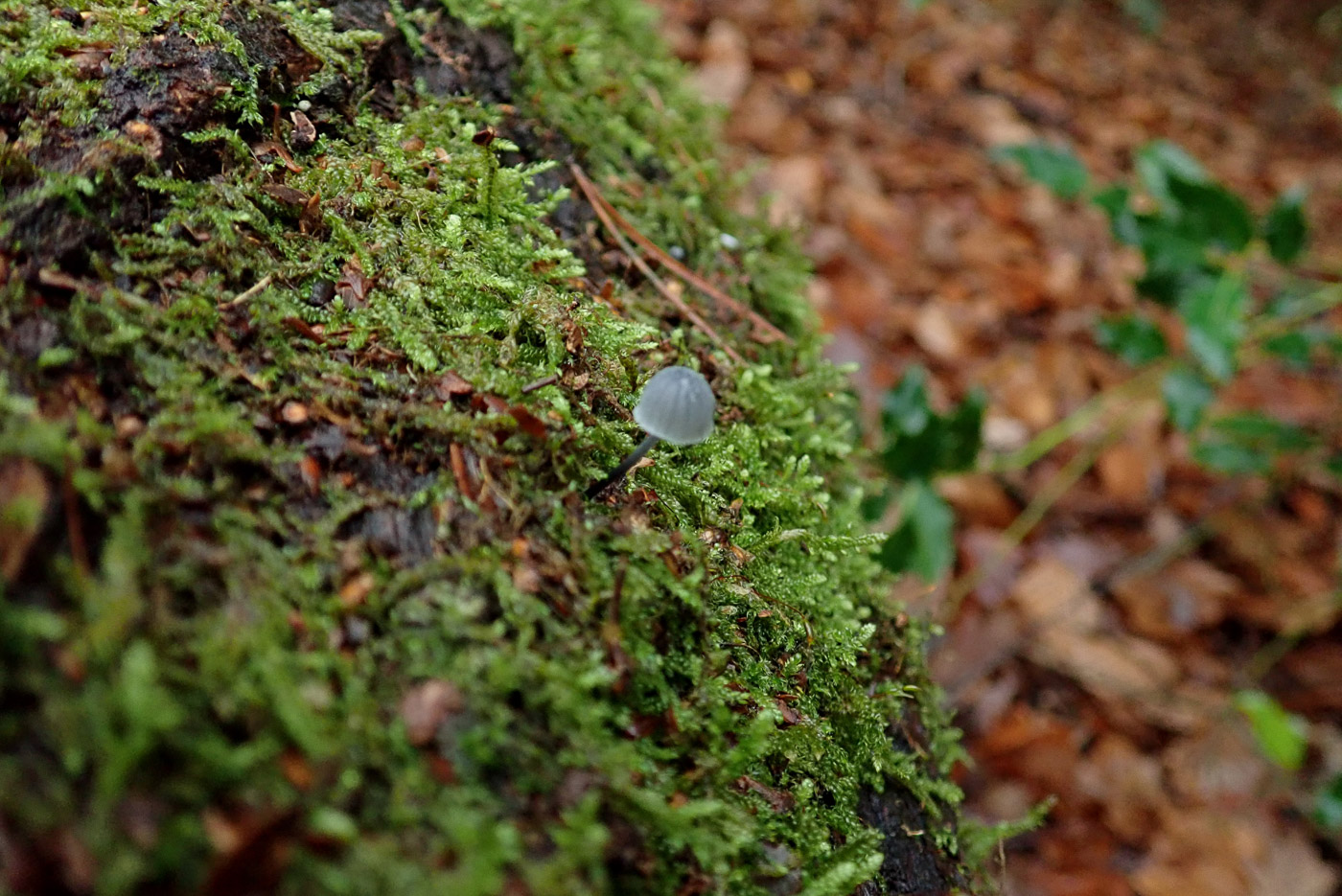
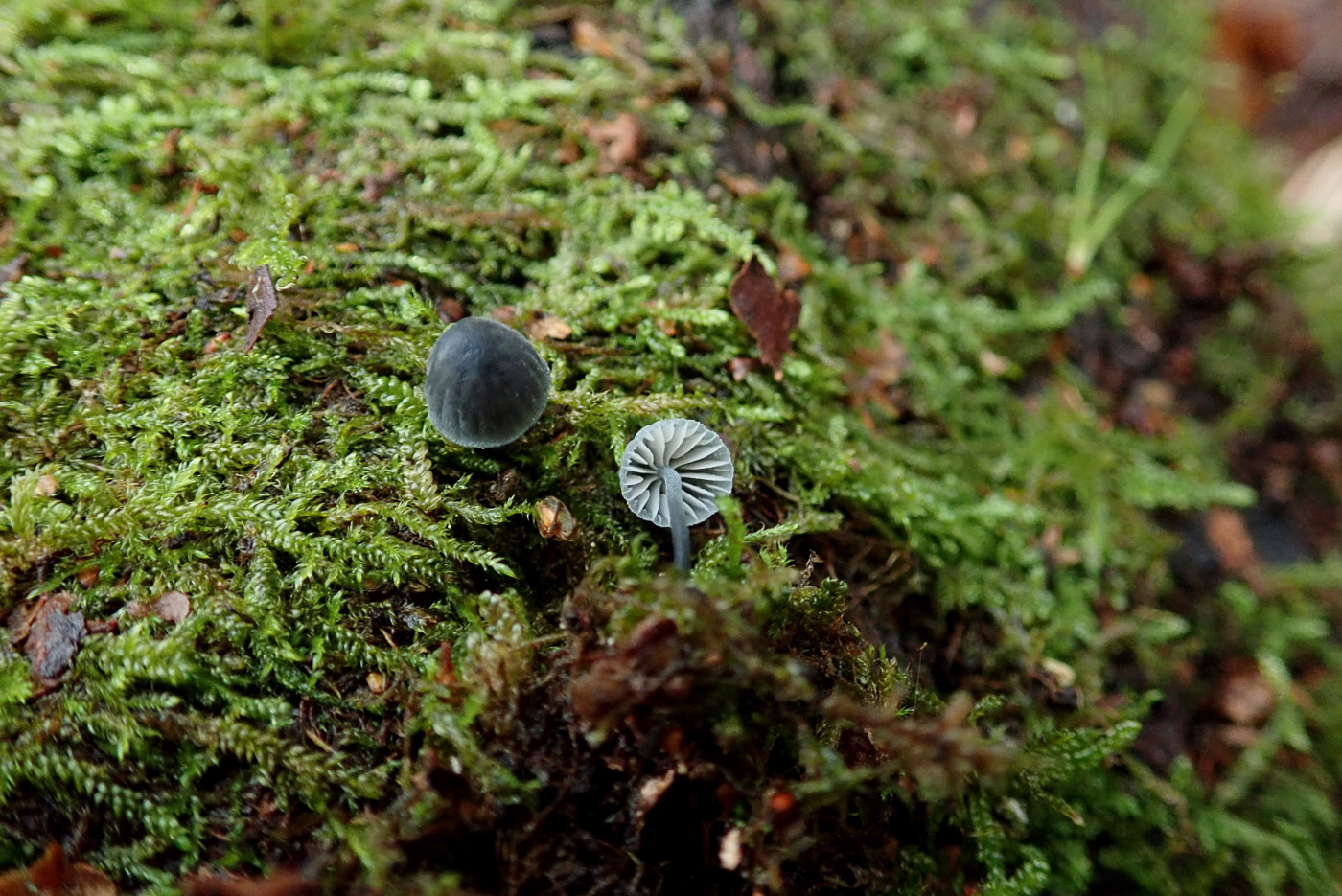
|
Mycena pseudocorticola (a Bonnet with no common name)
Nov 2, 2023. In moss on an Oak at Stoke Common Memorial Gardens Claire Williams spotted these tiny little beauties with caps only about 5 mm across and which are new to the site today. The stunning blue colour is quite variable and sometimes the caps appear dull beige or grey, but as luck would have it Jim Wills also found this same species the following day in Chalfont St. Peter, this time on mossy Field Maple, with the most intense blue caps - stunning! Photo 1 is Claire's, photo 2 is Eleanor Page's also taken today, photo 3 is Jim's.
Oct 12, 2022. On a fallen mossy Willow trunk at Dancersend Barry Webb found several fruitbodies of this beautiful little species just emerging. There is always something of the 'Wow' factor about this Bonnet which is not rare but easily overlooked. It was new to the site here today.
Nov 30, 2020. Every time Penny C. has visited the Burnham Beeches Mire this autumn she's checked a certain very mossy fallen Willow where last year we found this stunning little blue Mycena when it was new to the site. At last today she was rewarded and found just two tiny but perfect specimens! We have a handful of county records but this is not a common species, apparently often fruiting late in the season, and always a delight to find. Caps are only 1 cm across at most, often much smaller than this as today, and stems are grey blue as well though with age the colour tends to fade.
|
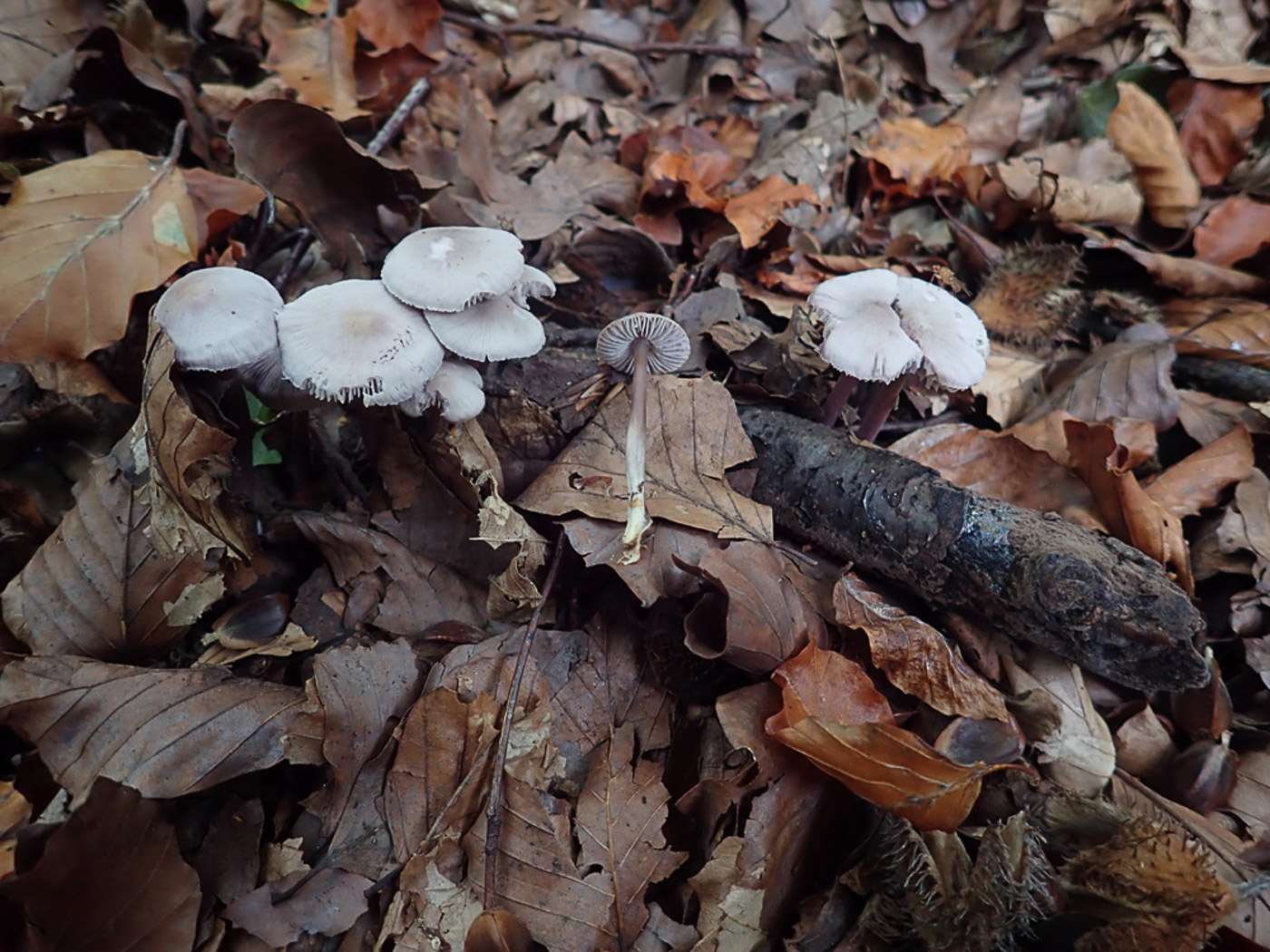
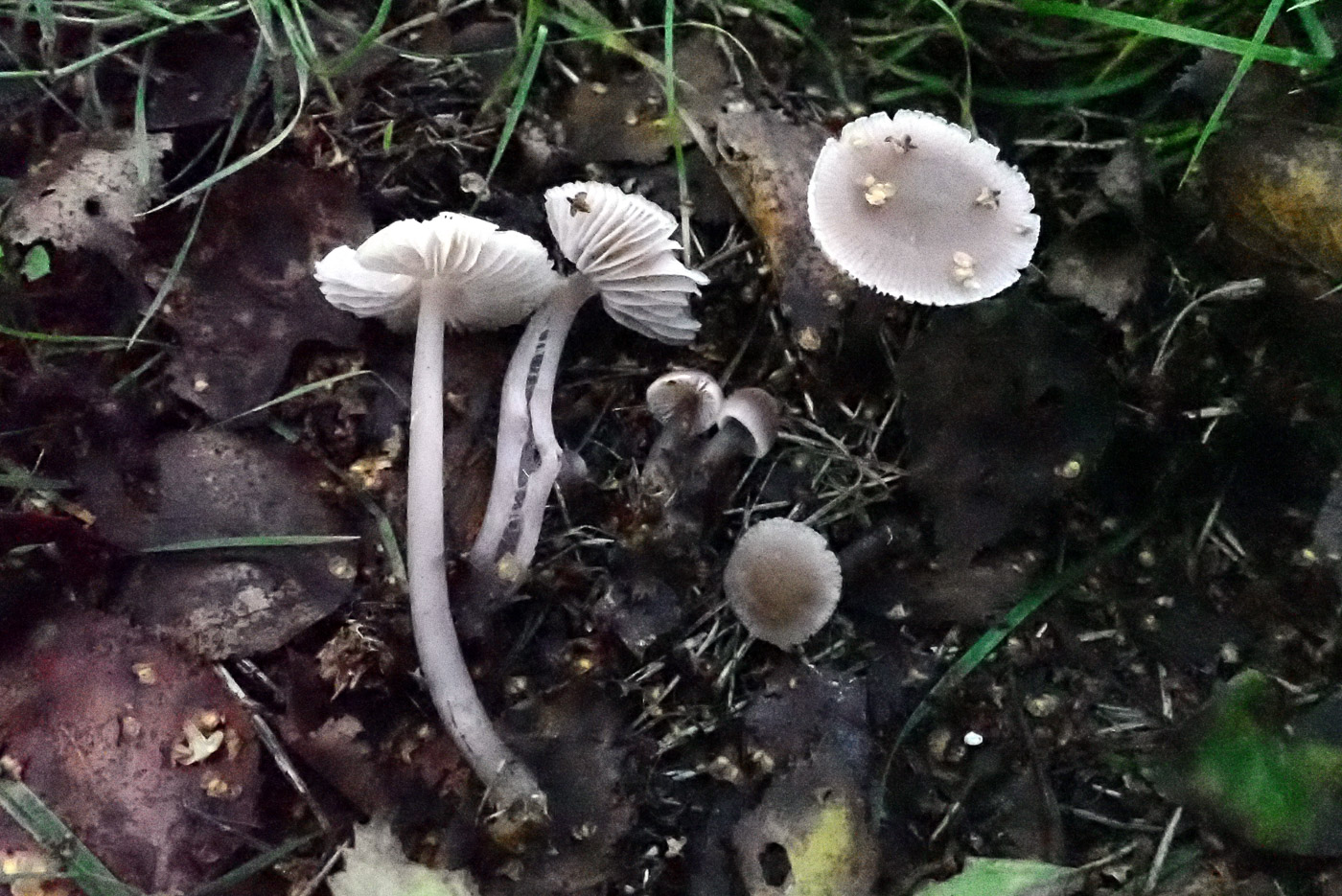
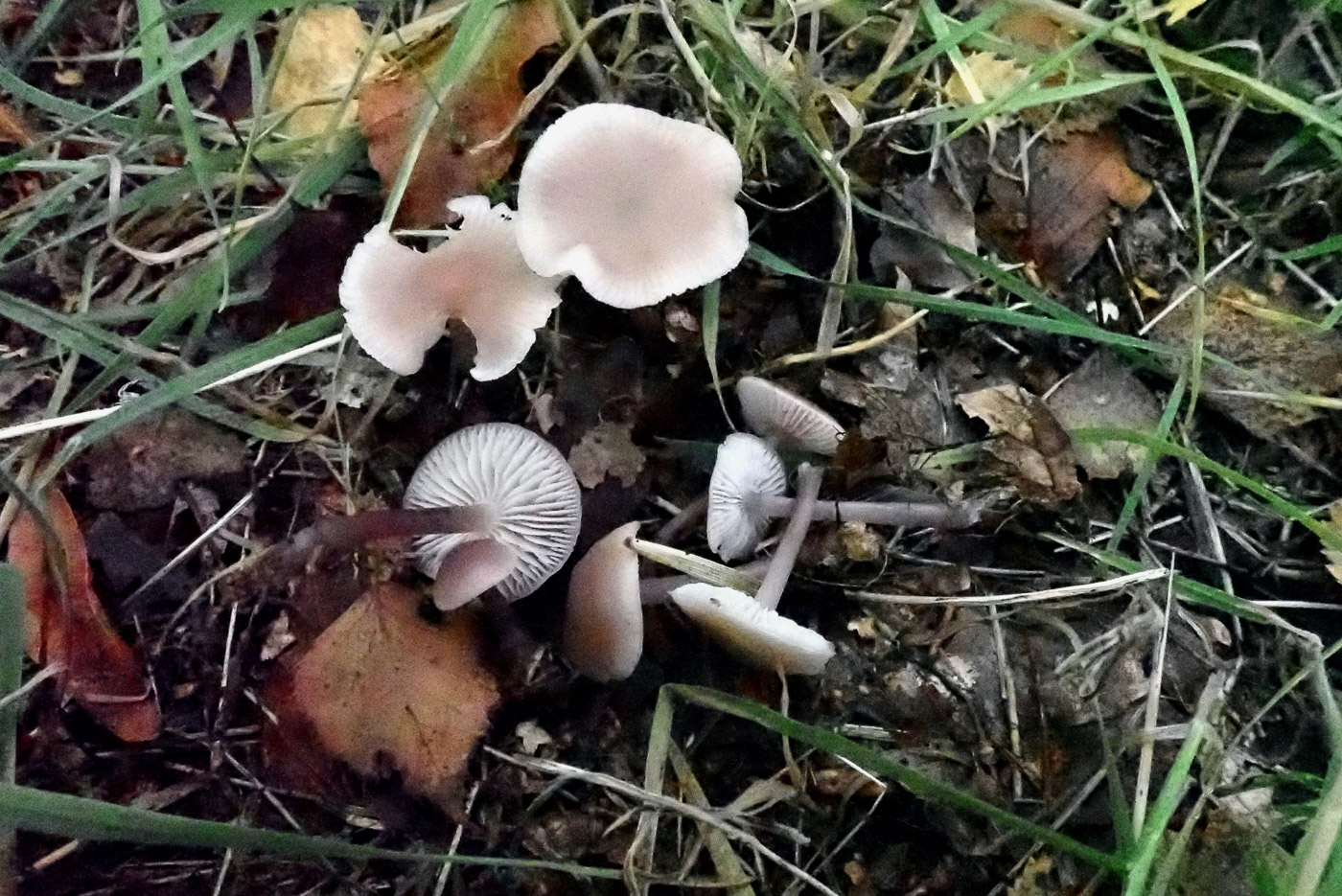
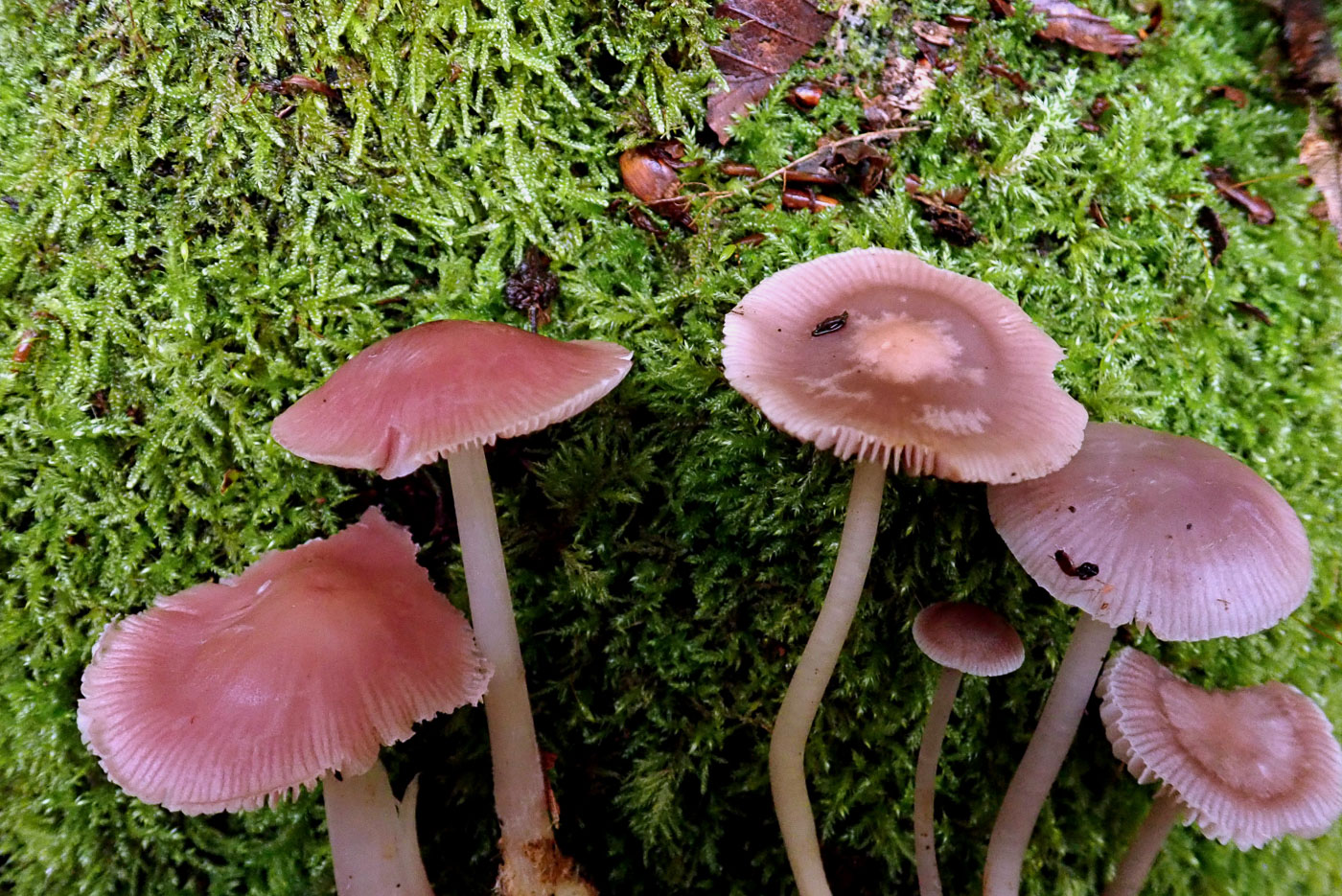
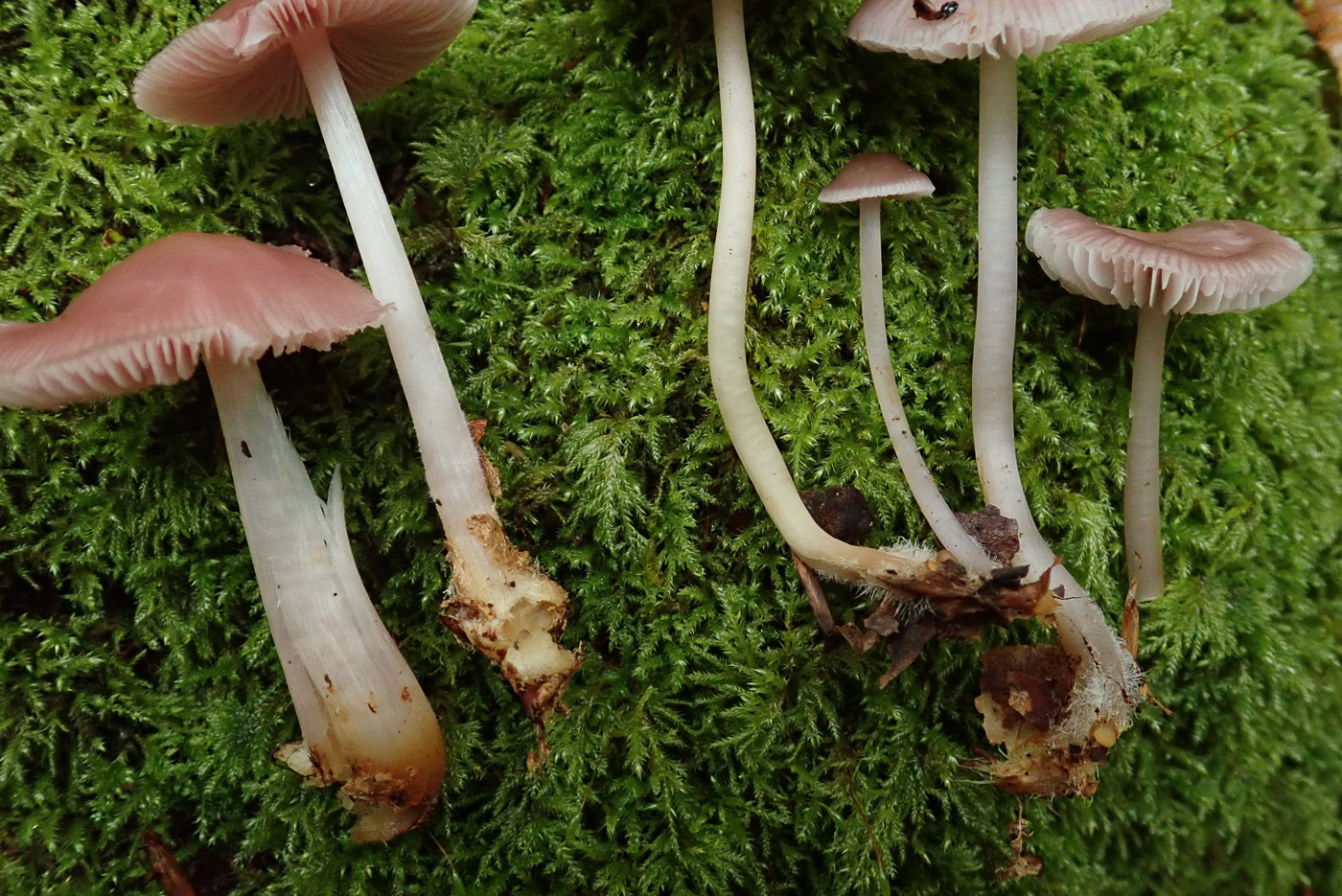
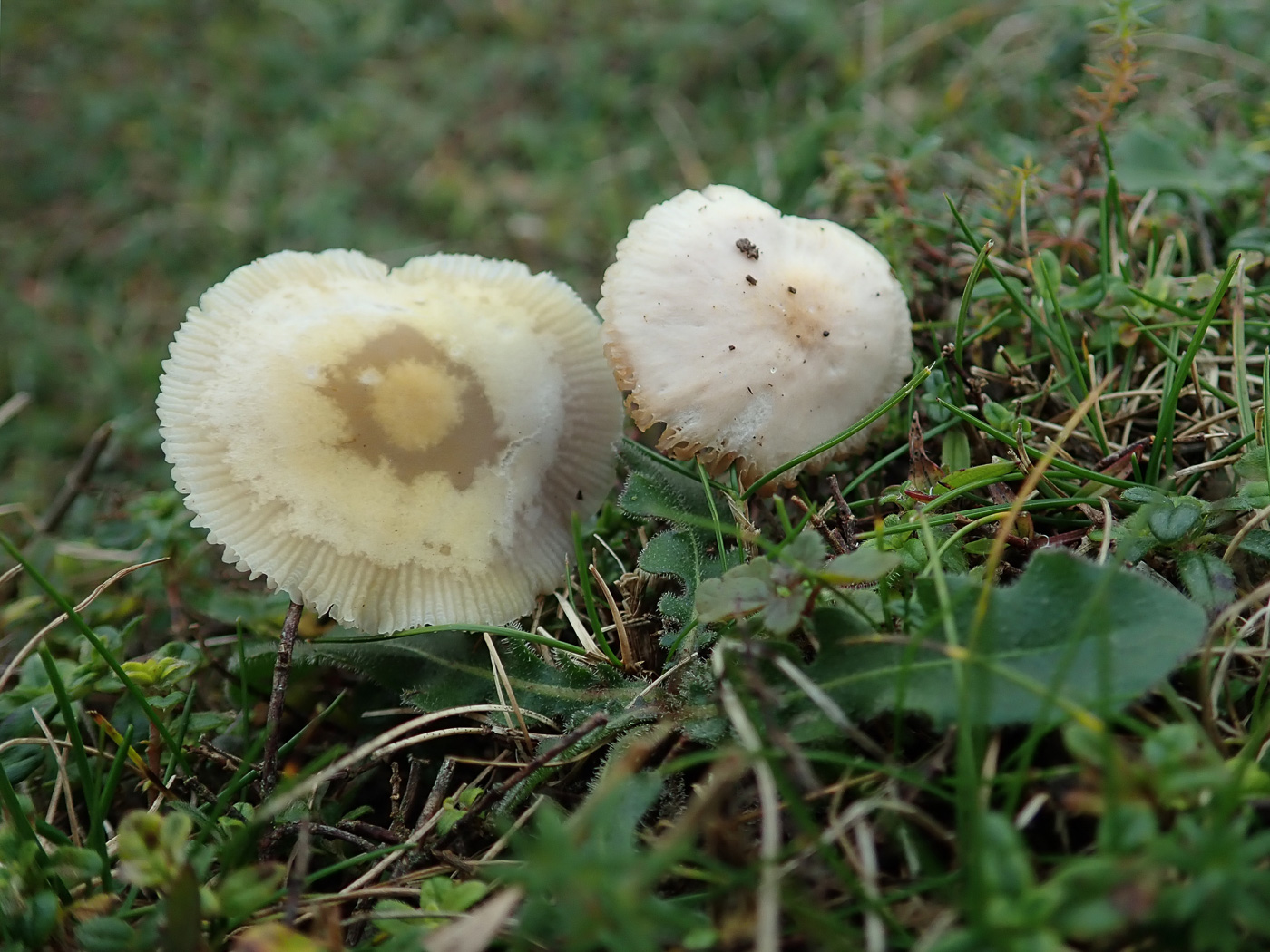
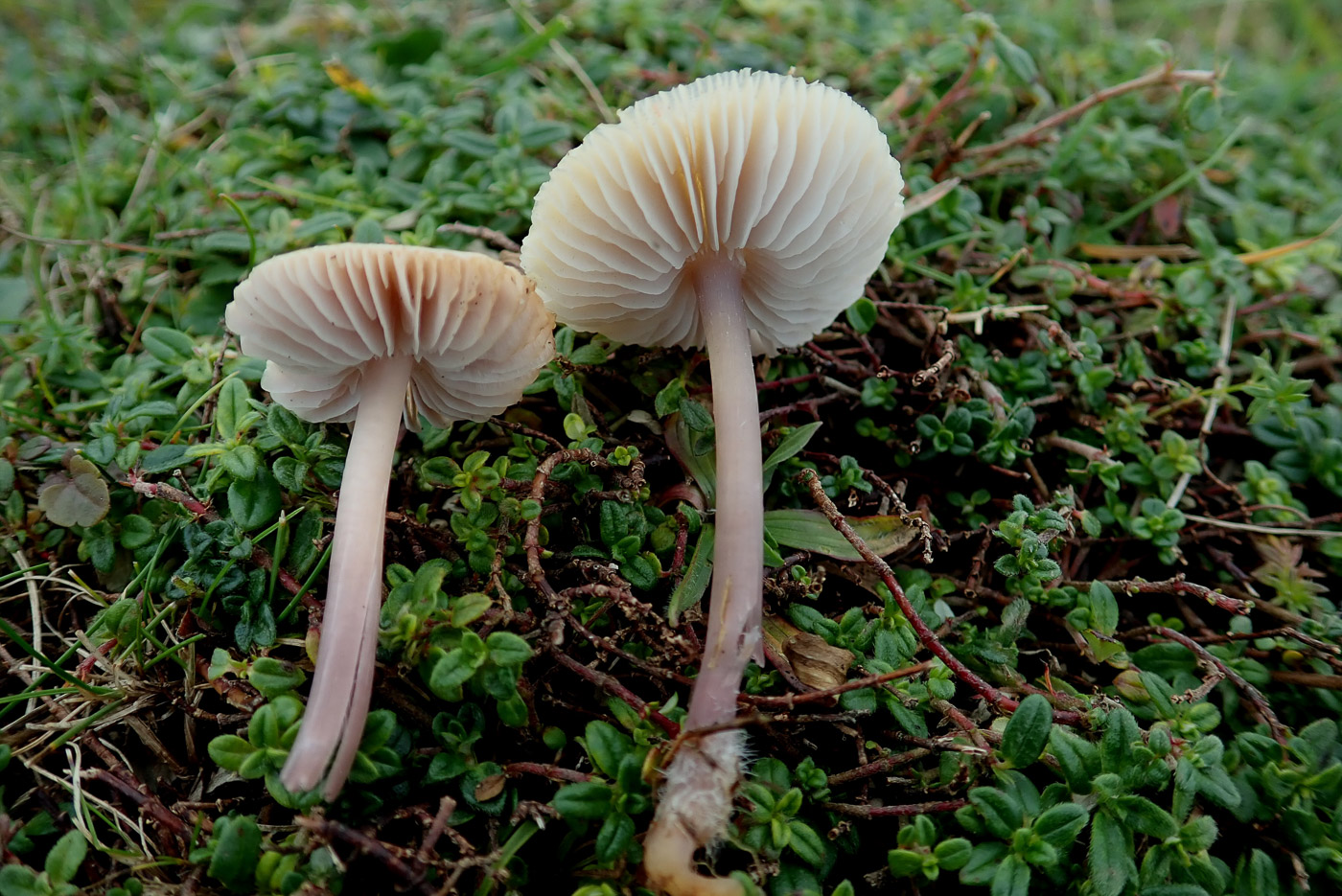
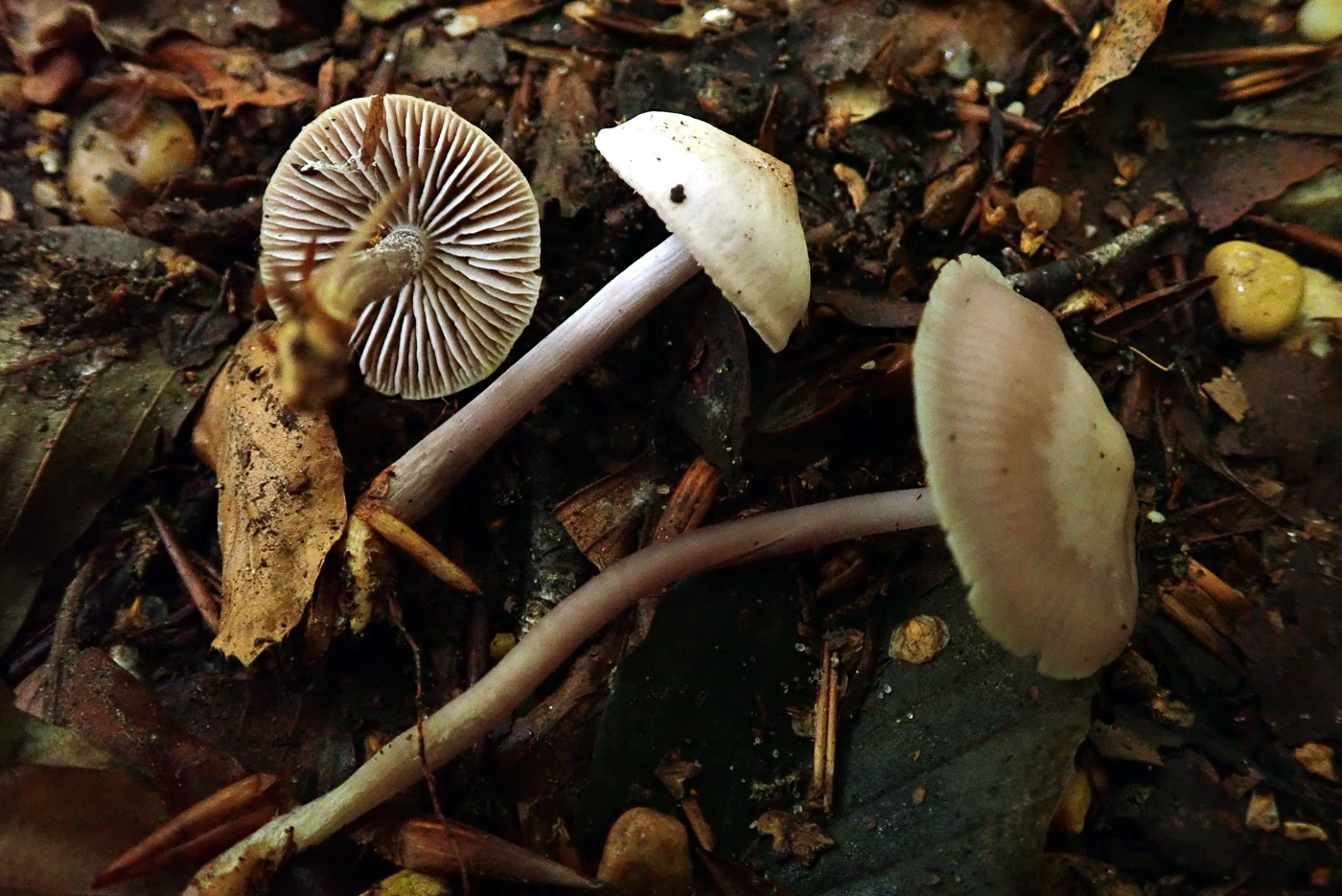
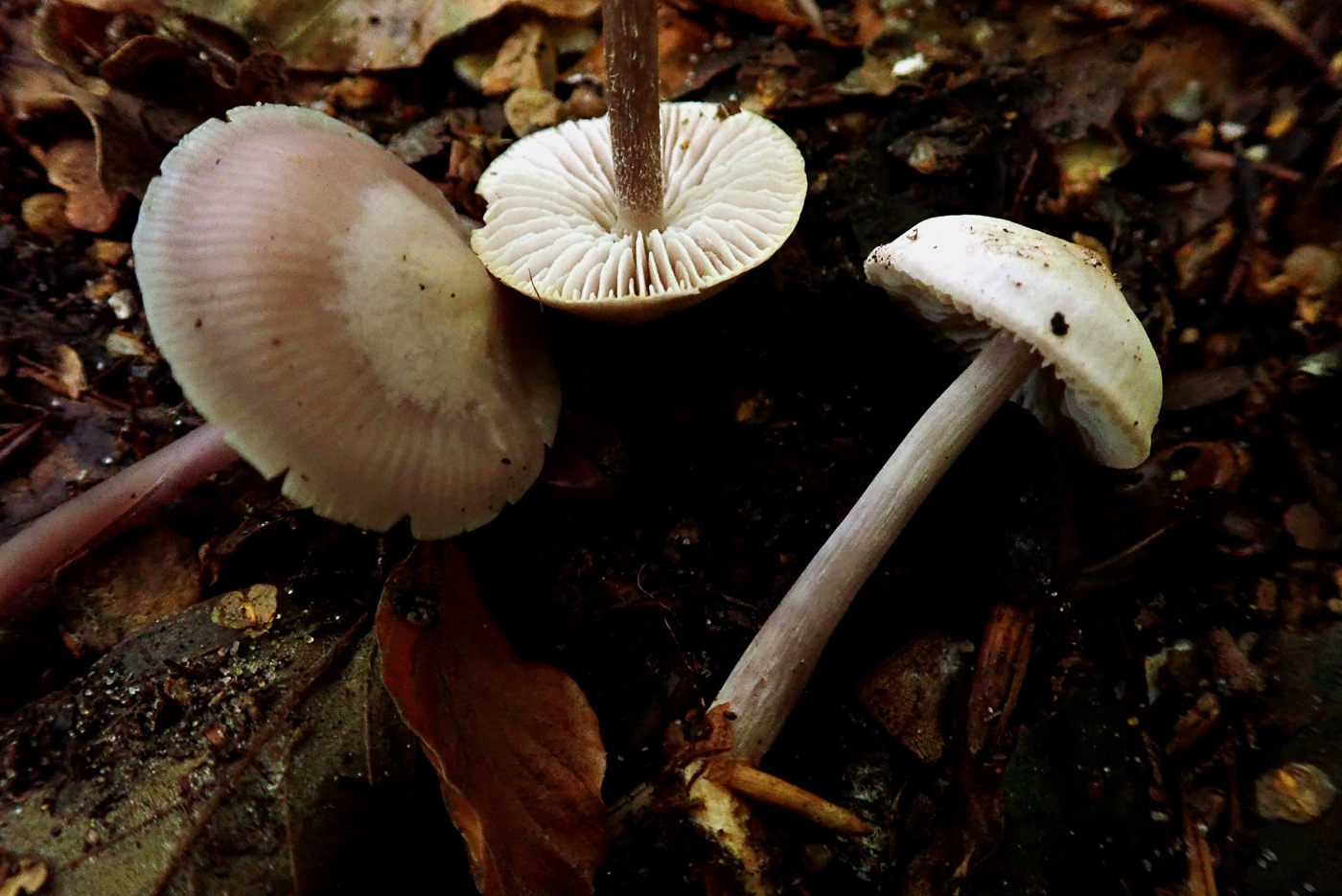
|
Mycena pura (Lilac Bonnet) 
Oct 11, 2023. In litter in Pullingshill Wood Penny found a pale group of this species which is not as common as the beautiful pink M. rosea in this area though closely related. (See the entry below and also above!) It was not many years ago that both lilac and pink forms of this Bonnet were lumped together as M. pura and only separated when DNA showed the pink form to be distinct. Both species come in a range of different shades, however, the constant feature being the strong raphanoid smell.
Oct 5, 2021. Coming up in grassy litter under Birch at Turville Heath were these small but distinctive Bonnets, found by Penny. This together with M. rosea (Rosy Bonnet) are quite common litter dwellers, most often under Beech, and also two which get confused. (In fact until fairly recently M. rosea was considered only a variety of M. pura: they have almost identical microscopic features and also share the same sharp 'radishy' smell.) Nearby today Penny also found just a single M. rosea (see below to compare). M. pura is very variable in colour but its cap never sports the beautiful pink of M. rosea. It can be white or even yellow but in woodland is most often as seen in the two collections here with brownish lilac colours in both cap and stem, the stem being cylindrical.
Oct 24, 2020. We do have both species already (dated Oct 18 and Oct 10) but as both species were growing together in Beech litter in Gussetts Wood Penny C. took the opportunity to compare the two as their separation can cause difficulty. Both are common and found in the same habitat, both have a raphanoid smell (sharp, of radish). On the left is M. rosea (2 specimens), on the right is M. pura (3 specimens plus a baby). Note the pink with no mauve / brown tints in the caps of M. rosea which also tends to be chunkier and fleshier though that feature not so apparent here. Note also the stem shape - tapering upwards and thicker at the bottom in M. rosea which can be white or pale pink. In M. pura the stems are cylindrical and never pink but either whitish or a paler version of the cap colour. Photo 3 shows how confusingly variable M. pura can sometimes be, seen here with yellow tones rather than lilac when growing in grassland (at Coombe Hill Oct 30th). Note the lilac tones still apparent in the stems, however, and the radish smell is always a good character to check, whatever the cap colour!
Oct 18, 2020. Emily Peace found just these three rather faded specimens of a normally common species of Bonnet in Hollowhill Wood (photo Penny C.). Closely related to the much more common M. rosea (Rosy Bonnet), there is often doubt about the difference between the two, especially as it's only in recent years that M. rosea has been split from M. pura, previously being just a variety of that species. Both favour Beech litter, but compare not just the colours but the shape of the two (see photo dated Oct 10 for M. rosea): the stem of M. rosea is notably narrowed at the top and wider at the base, also pale pink to white, but cylindrical in M. pura and with lilac tones as in the cap. Both will fade as they dry out, but when fresh M. pura has a distinctly lilac cap with a brownish tint; M. rosea is pure pink with no brown or lilac.
|
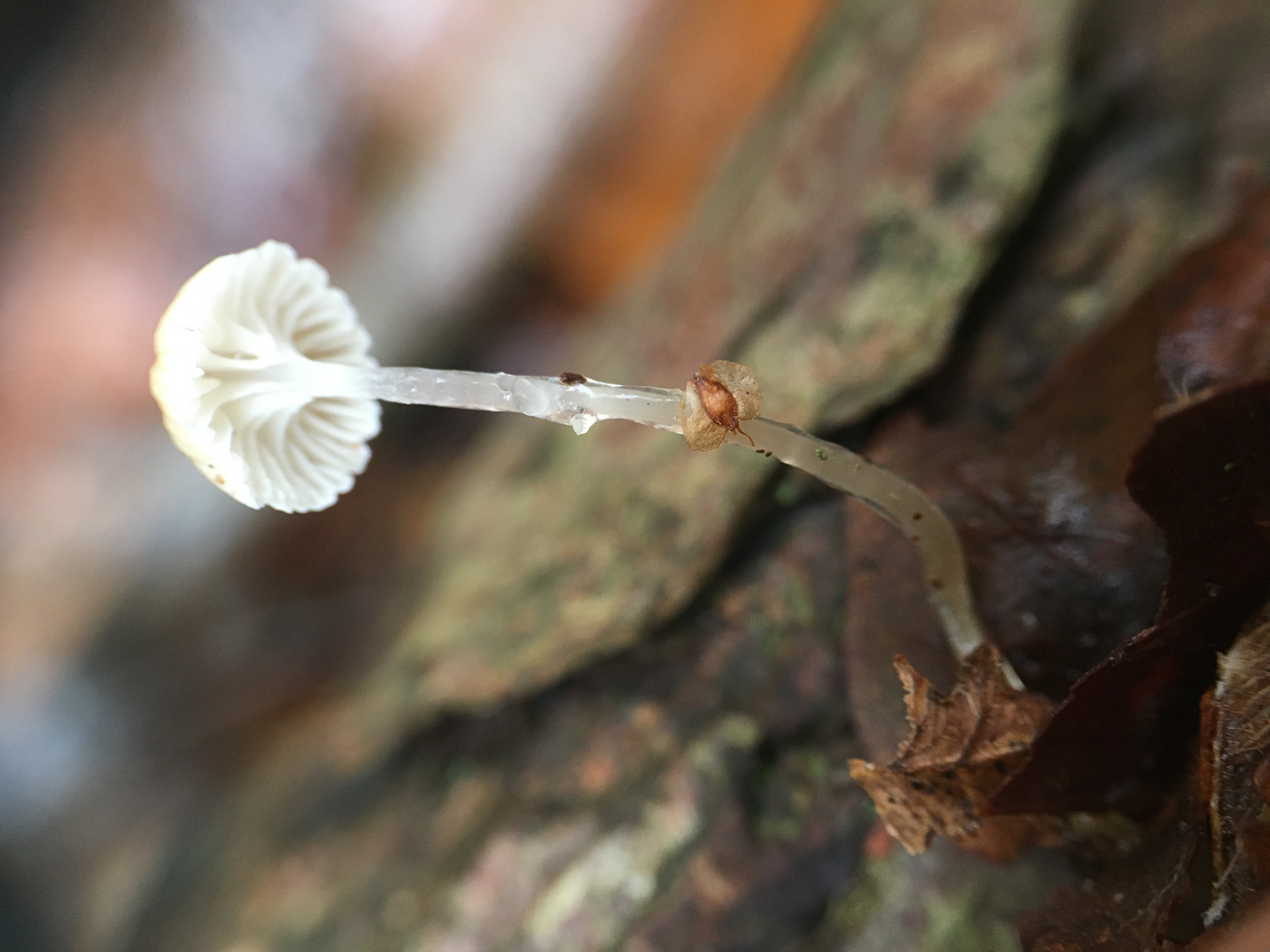 |
Mycena rorida (= Roridomyces roridus) (Dripping Bonnet)
Nov 3, 2020. Russell Ness noticed this single specimen growing in vegetation in Egypt Woods, Burnham Beeches. Here is more proof that this particular part of S. Bucks has acidic soil in a predominantly calcareous area, this Bonnet being one which mainly occurs in heathland and acid woodland. On first glance it is a typical pale capped Bonnet having decurrent gills but the stem is covered in a layer of slime (even more apparent after rain) which is the diagnostic field character. Look for it on bramble stems in thick vegetation.
|
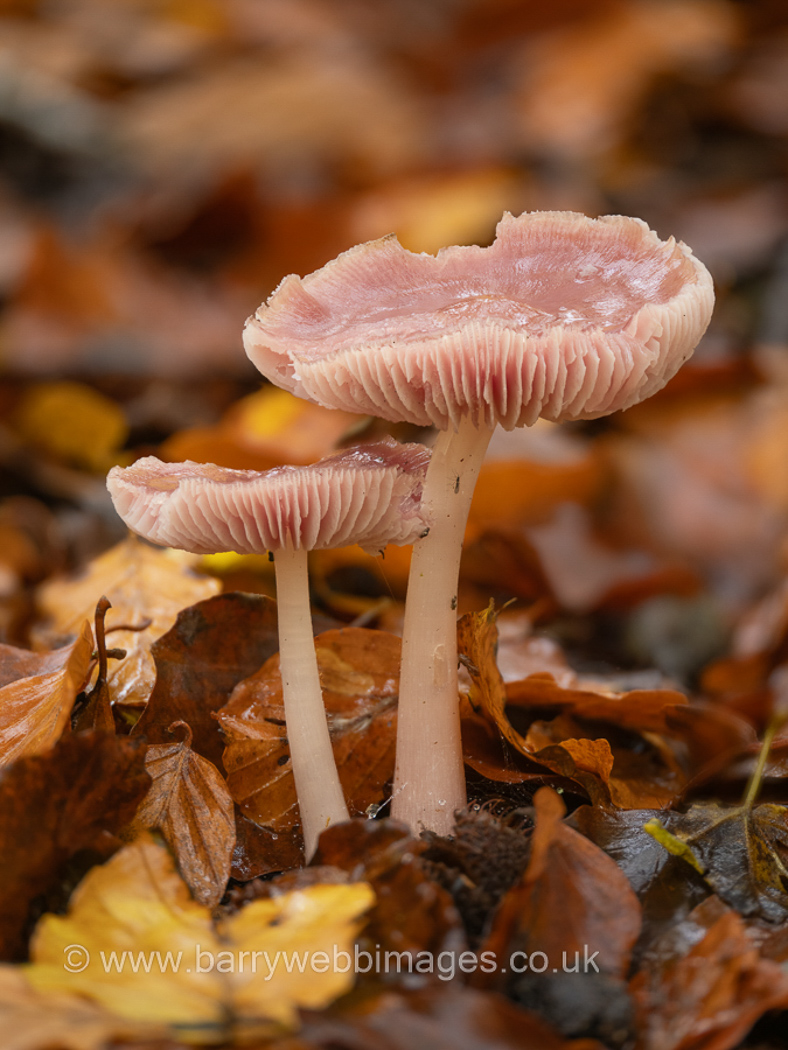
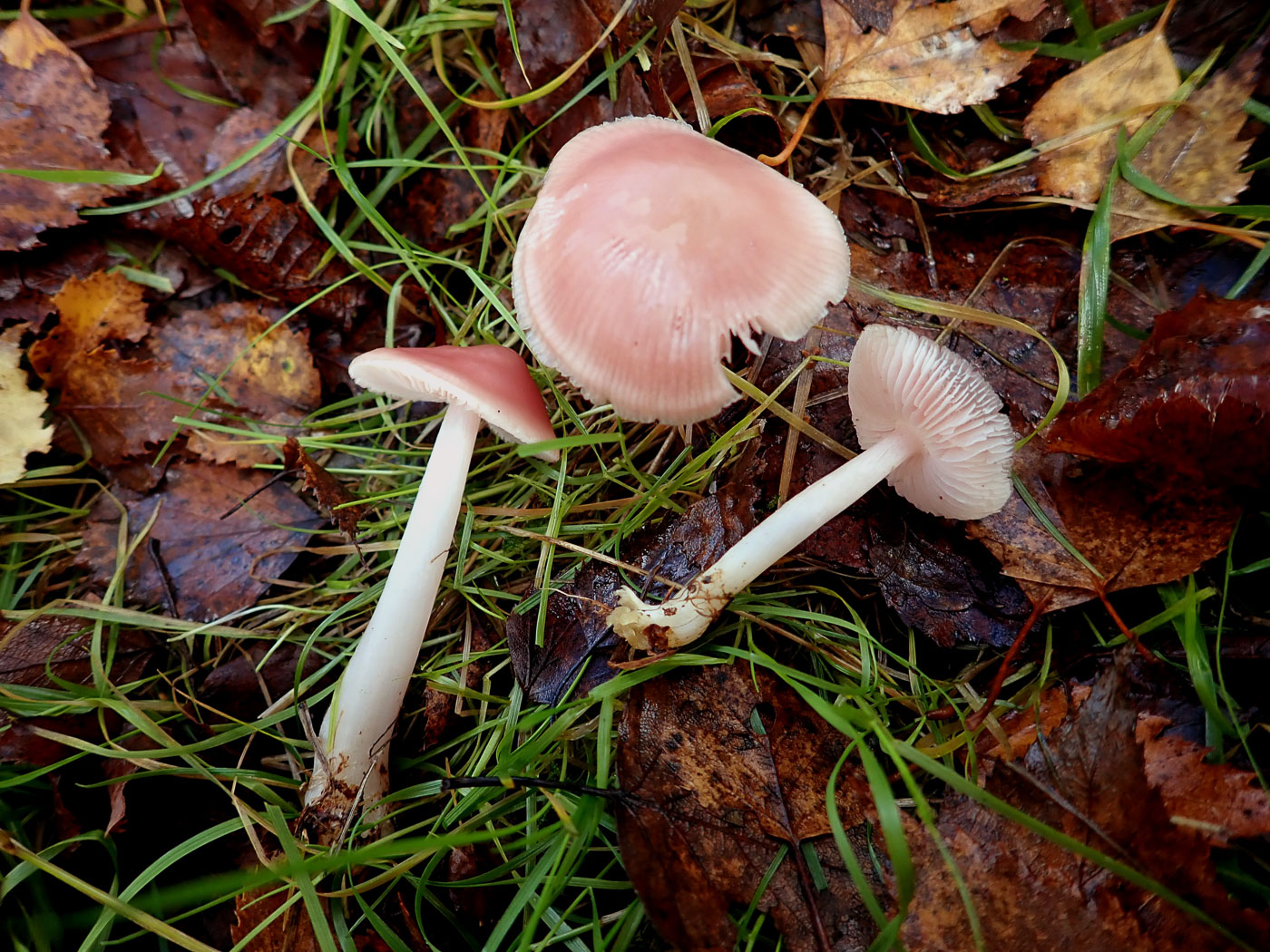
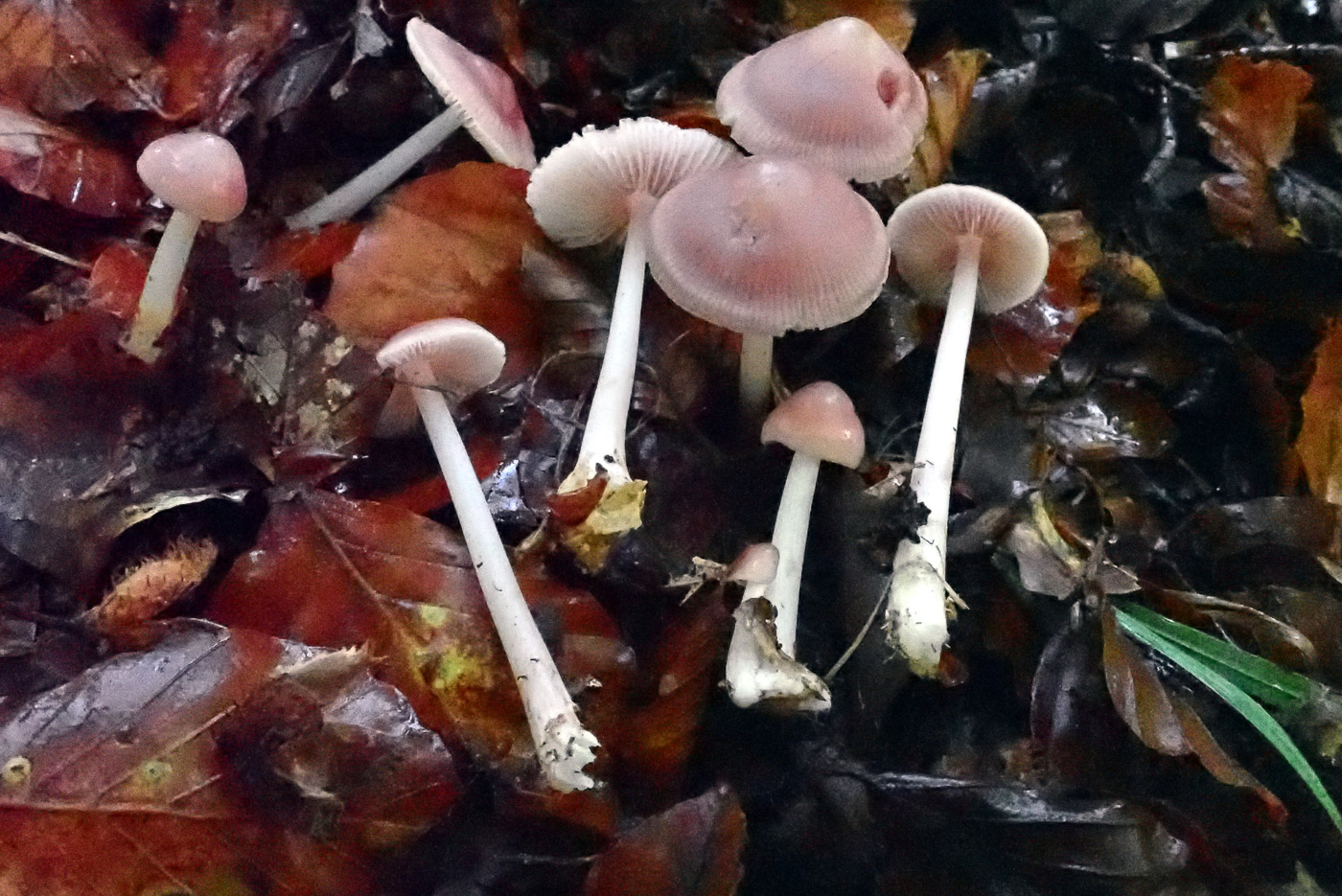
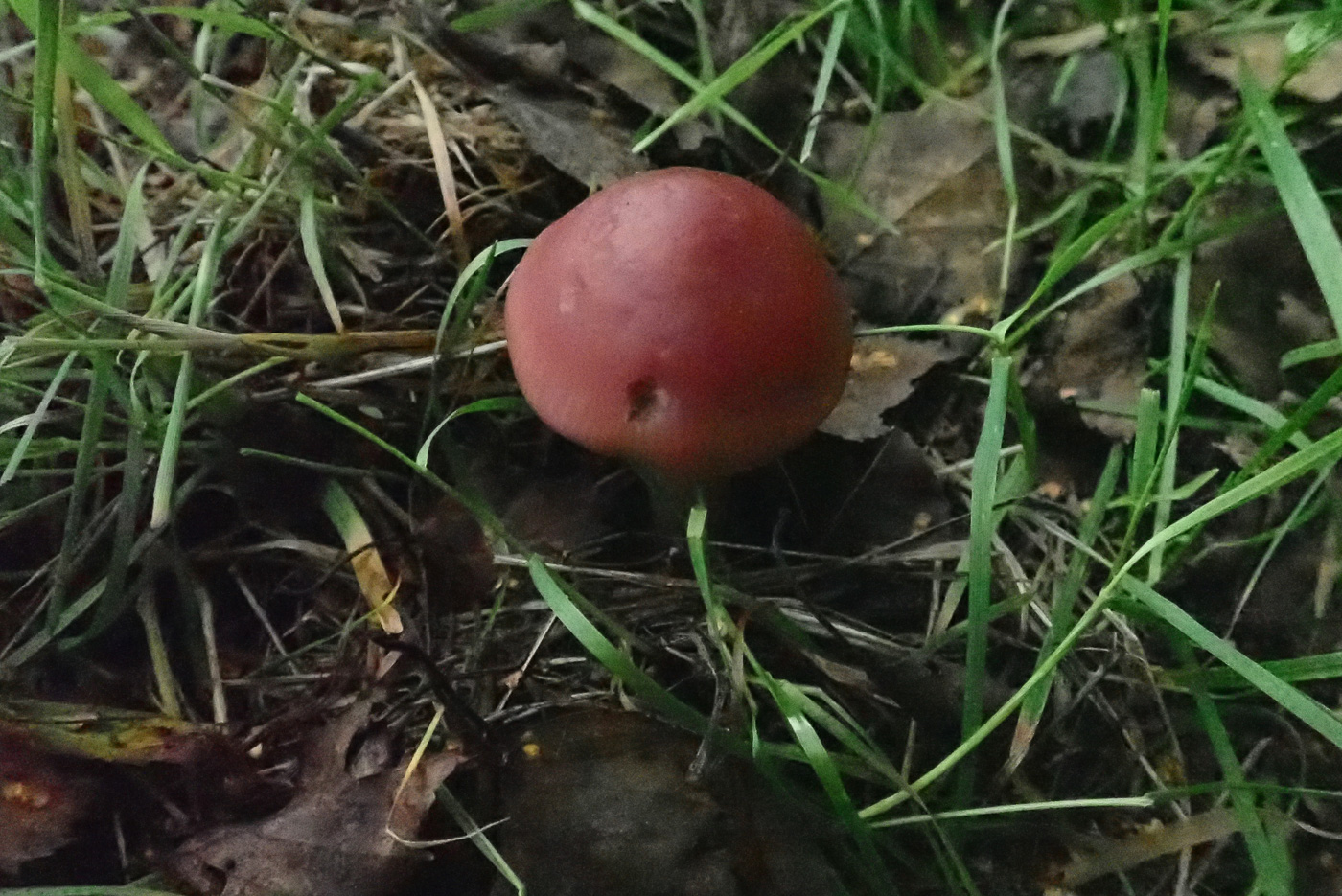
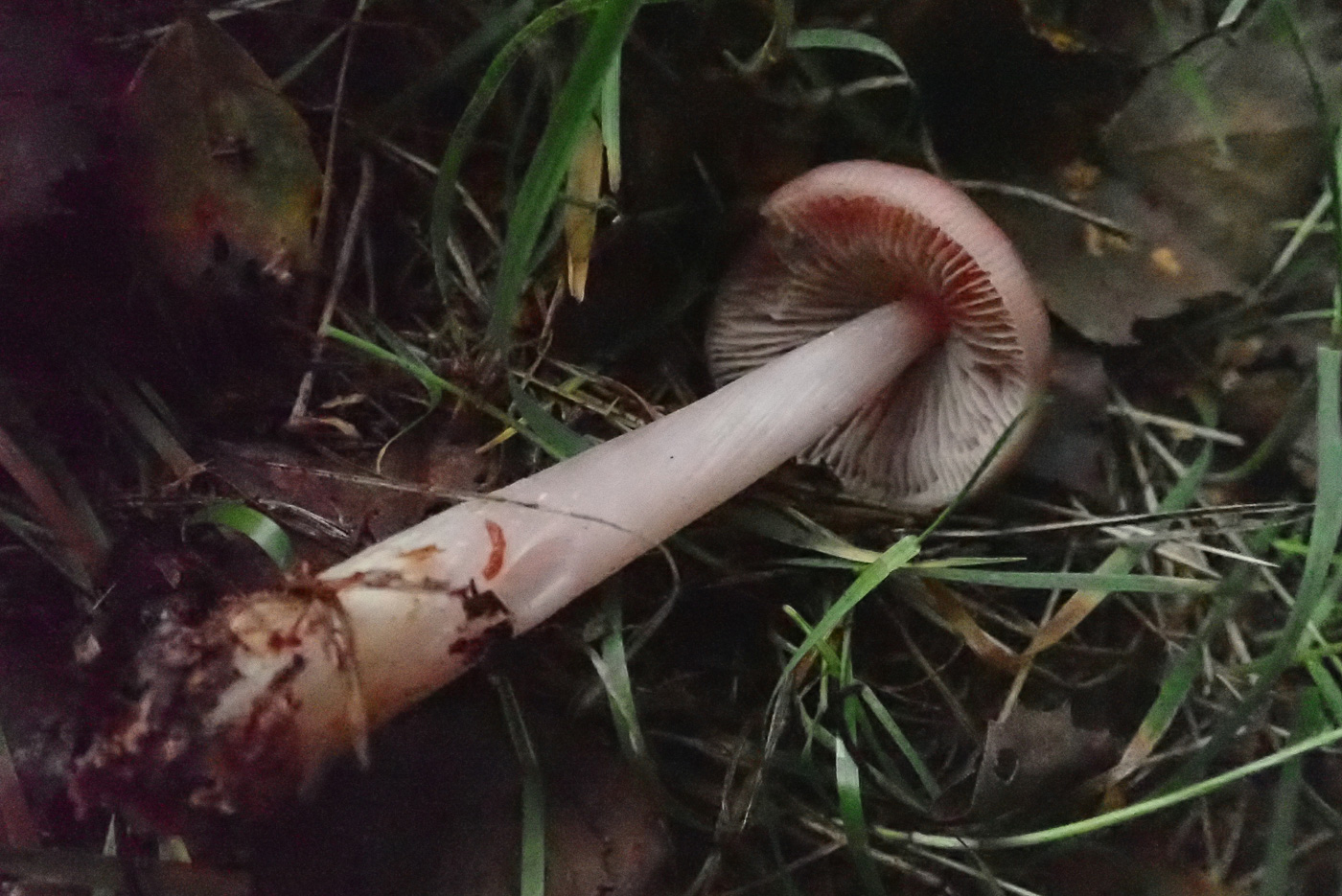 |
Mycena rosea (Rosy Bonnet)
Nov 8, 2023. Today in Mousells Wood we found plenty of examples of this common species in the Beech litter. It is in fact by far the commonest of the M. pura complex of species in our area, occurring in litter of various deciduous trees though is most prevalent under Beech. The photo is Barry Webb's.
Nov 23, 2022. In grassy Birch litter at Turville Heath Penny found these three specimens in relatively good condition despite the recent rain etc. It is a large but common Bonnet of the woodland floor, readily recognised by its rosy pink smooth cap, pale gills and a pale pink to white stem which tapers upwards. It also has a sharp smell of radish.
Oct 20, 2021. In Gussets Wood Penny found plenty of these bright pink Bonnets - one of the larger species in the genus. They are common in deciduous litter, particularly under Beech as here, they have a whitish stem which tapers upwards and a sharp radishy smell, making them quite easy to identify in the field unlike many other smaller Bonnets.
Oct 5, 2021. Penny found just one fruitbody of this species in grassy litter under Birch at Turville Heath, but was surprised by the amazingly deep pink cap colour which almost made her question it. However, turning it over revealed the typical white stem, much thicker at the base and gradually tapering towards the cap. This together with the raddishy smell was all the confirmation needed. This is a large species for a Bonnet, often more substantial than the quite similar M. pura discussed above.
|
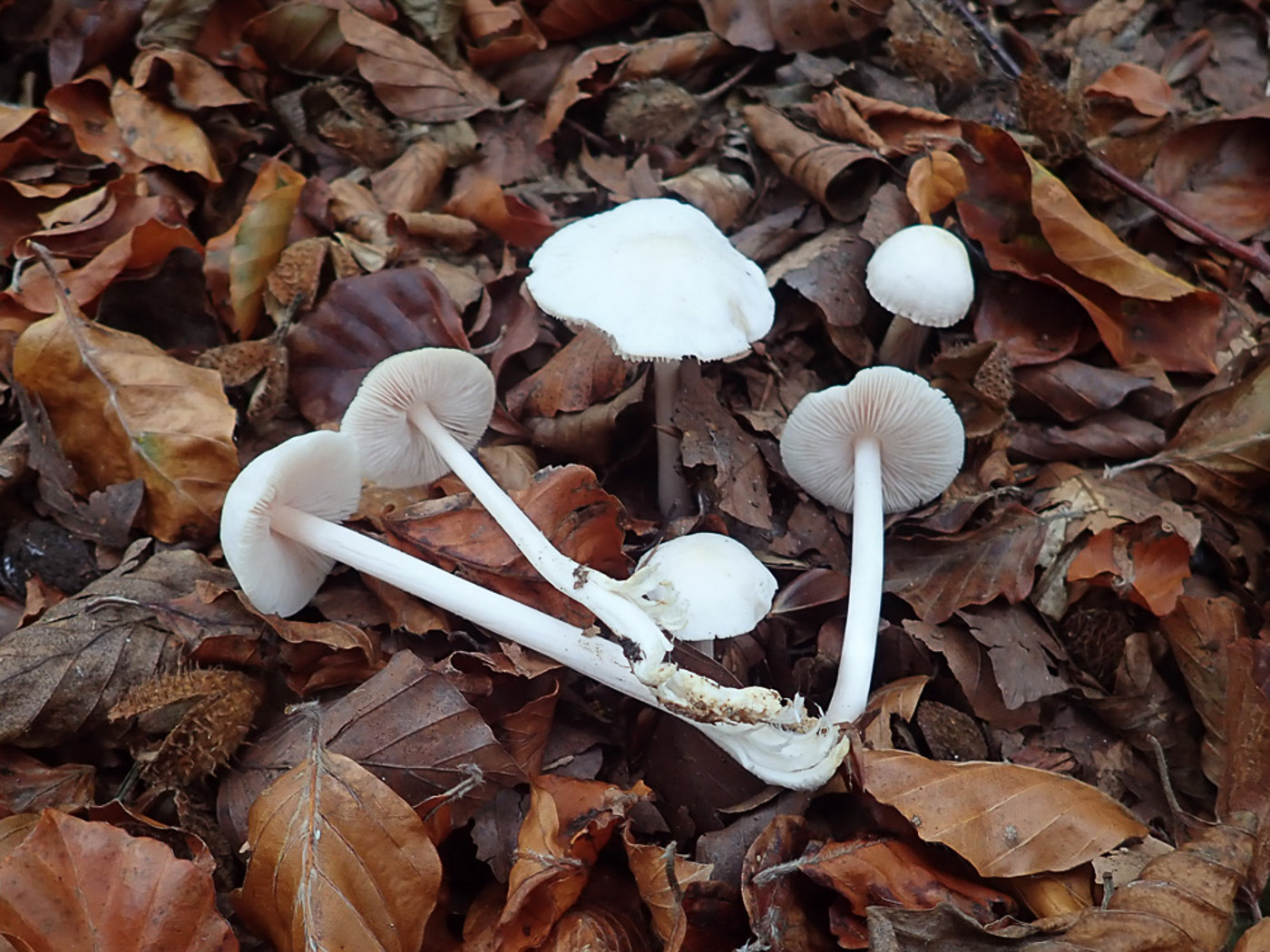 |
Mycena rosea forma candida (a form of Rosy Bonnet)
Oct 11, 2023. In litter in Hollowhill Wood - just across the road from Pullingshill Wood, Penny noticed a group of white capped Bonnets and quickly realised that they had to be related to the M. pura group of Bonnets which all share a distinctive raphanoid (radishy) smell. The pink gills together with tapering white stem pointed to a white form of M. rosea which she then found mentioned in several specialist Mycena books. Though we have entries of M. rosea in Finds this is the first white collection.
|
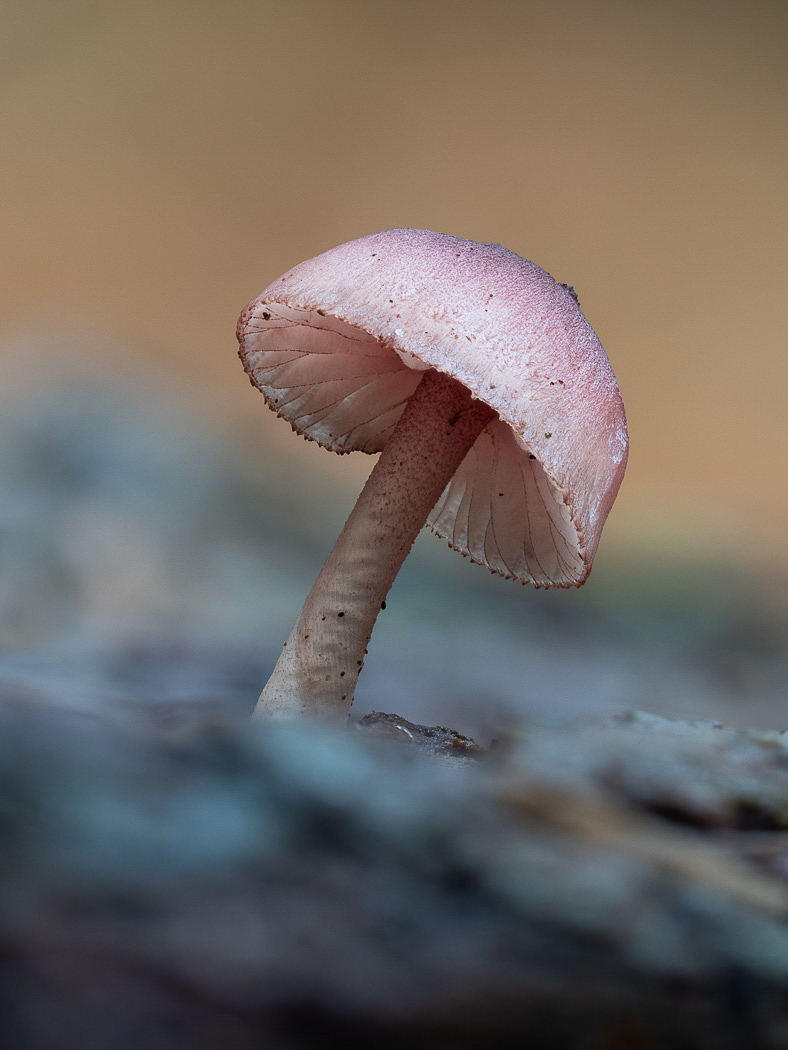 |
Mycena rubromarginata (Red Edge Bonnet)
Oct 30, 2020. Gill Ferguson found this singleton of a rare Bonnet on a stump in Burnham Beeches. Penny C. is sticking her neck out here over the identification and would have been much happier if the microscopic characters had been examined to confirm - Bonnets should really be checked with a scope, especially rarities which are new to the county! However, it is difficult to see that it could be anything else: growing on wood, the cap is the correct colour and shape, gills clearly have a vinaceous red edge and the stem is also pruinose at the top with the same colour but below this silky smooth.
|
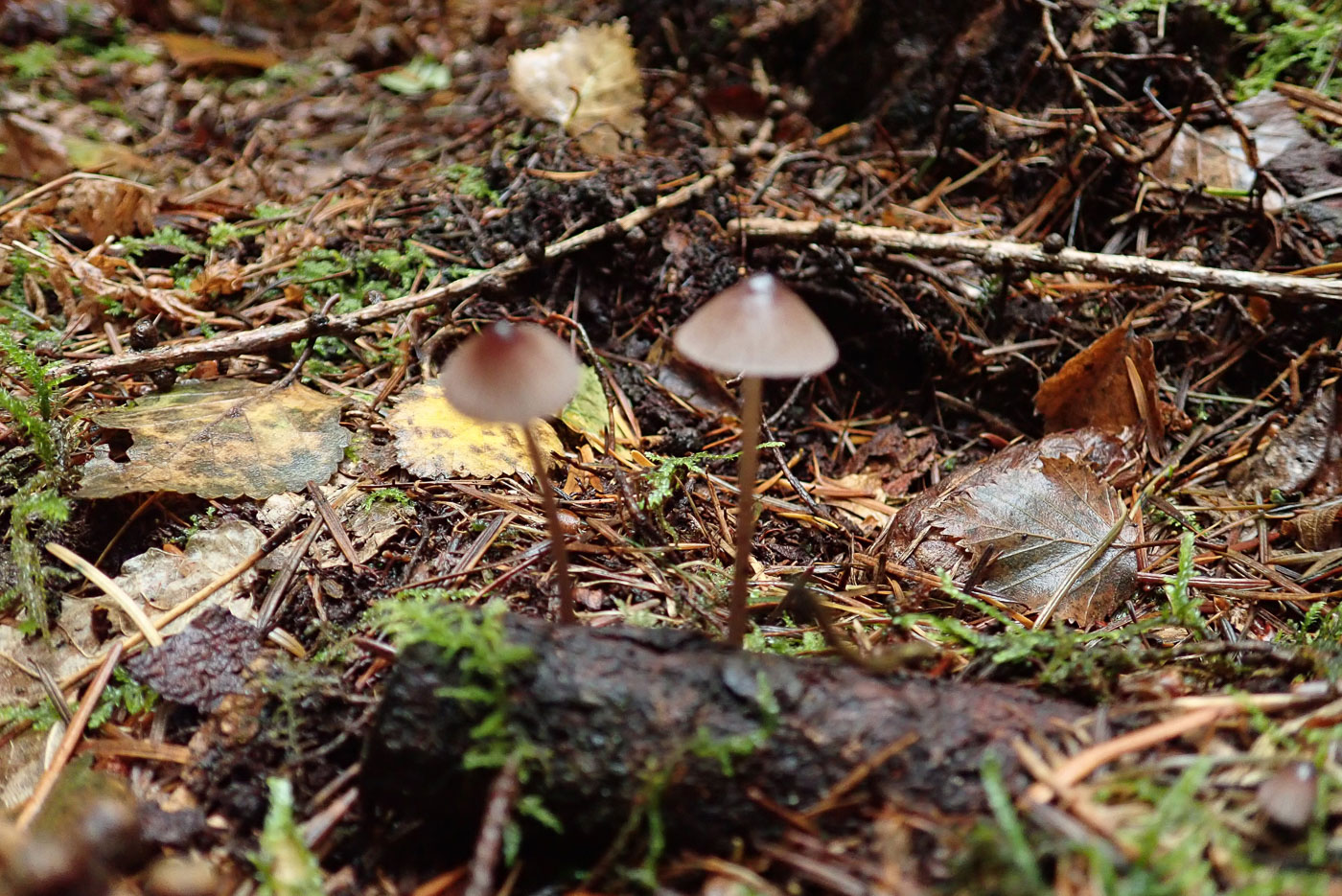
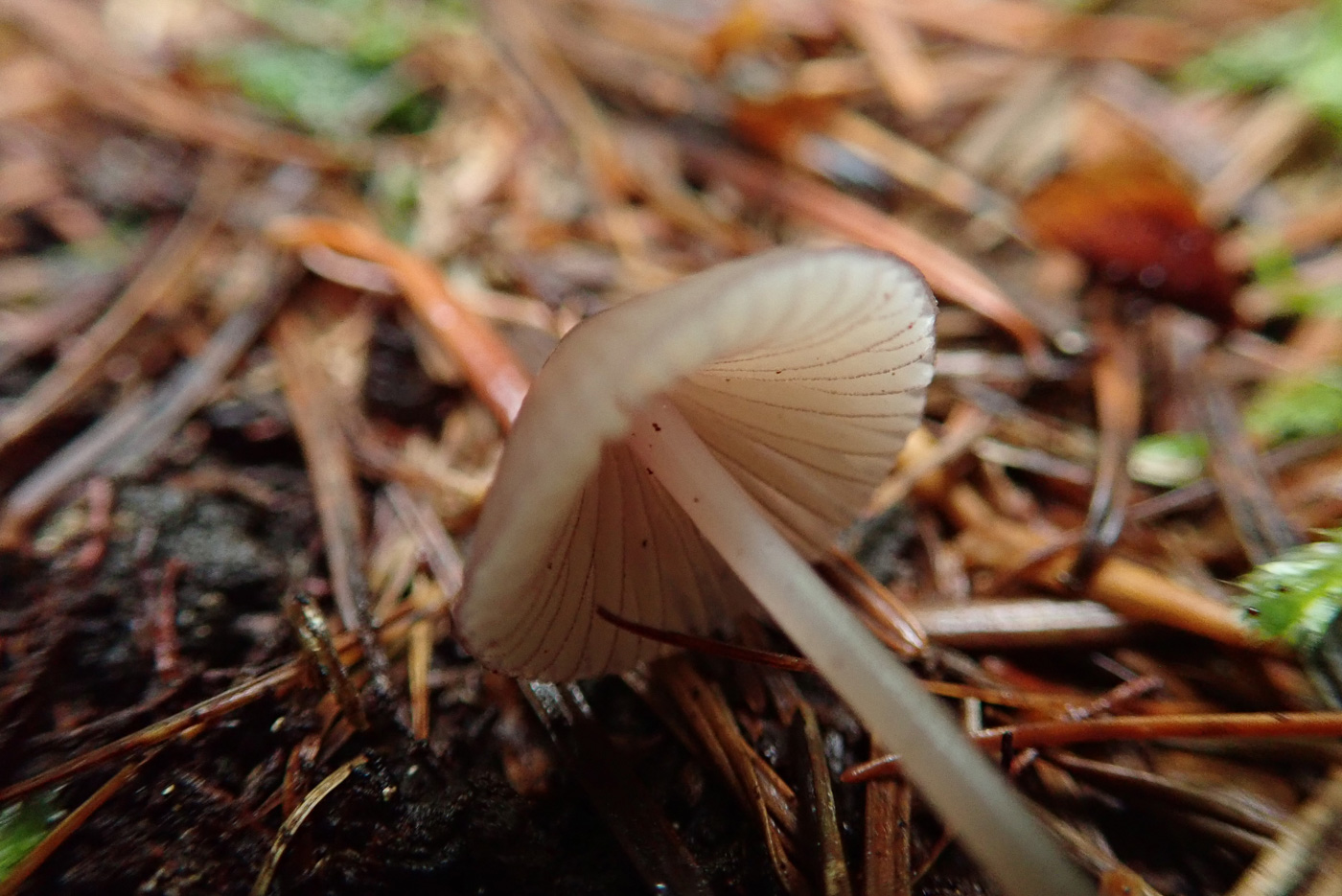 |
Mycena sanguinolenta (Bleeding Bonnet)
Oct 5, 2020. Penny Cullington found just two fruit bodies of this unusual Bonnet in woody conifer litter in Common Wood. This is a delicate species with caps barely more than 1 cm across at most and a fragile stem which when broken exudes a watery reddish juice. It has a preference for Spruce litter, as here under Douglas Fir which is in fact a Spruce!), and the gills have a fine brown red edge (just visible in photo 2) which is a useful diagnostic feature if the juice is not forthcoming or noticed.
|
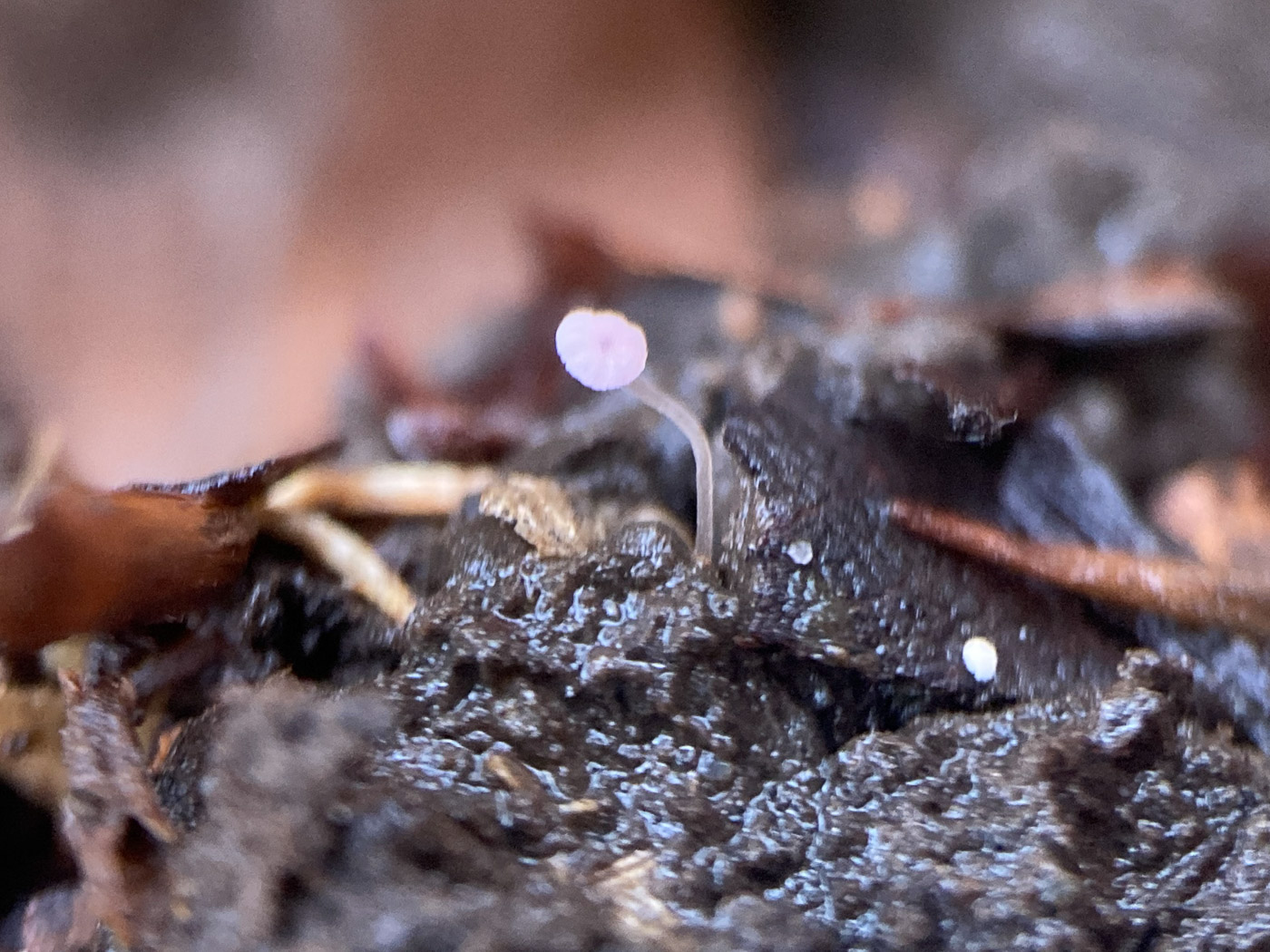
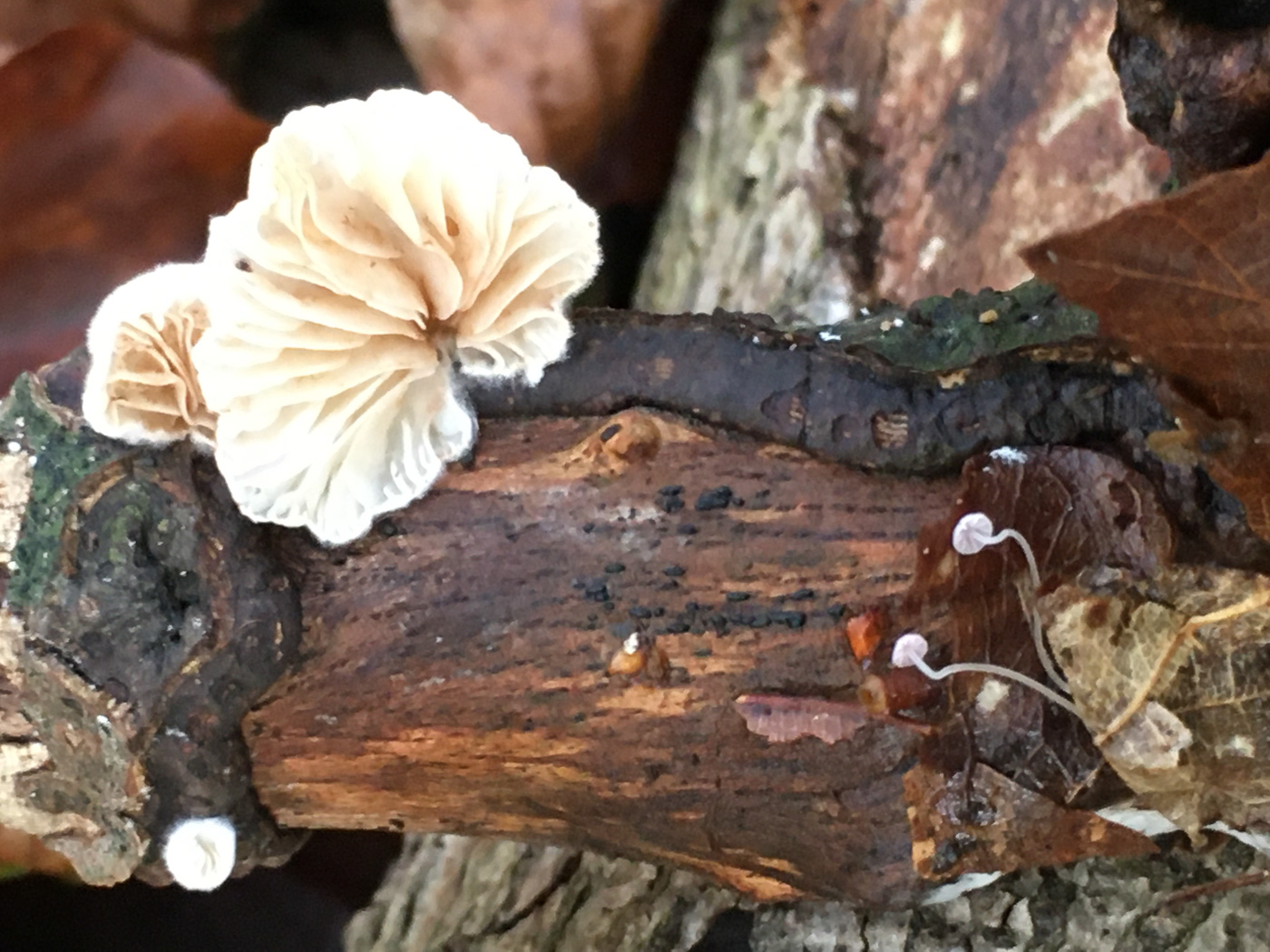
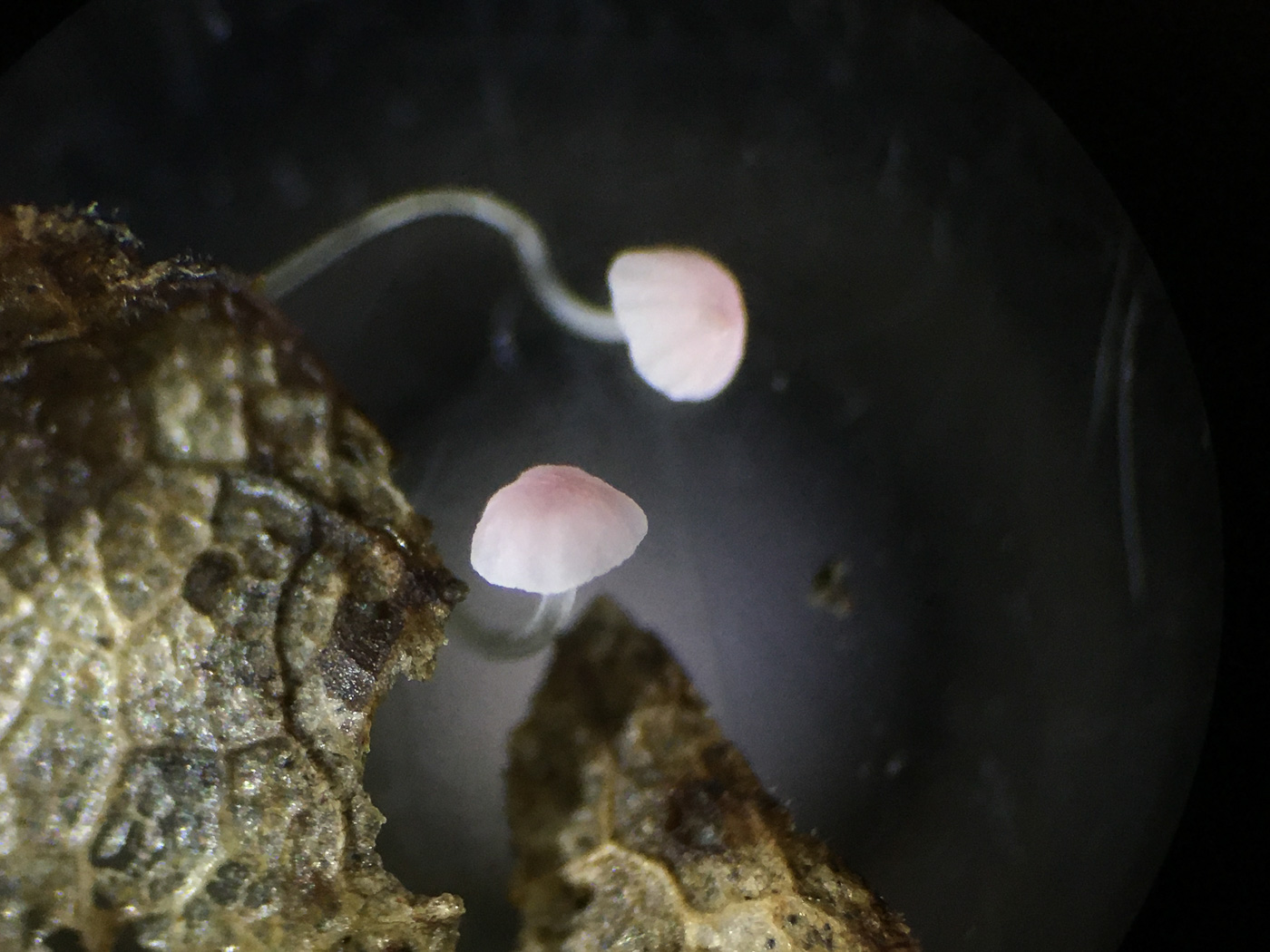
|
Mycena smithiana (a Bonnet with no common name) 
Dec 11, 2021. In Cliveden Estate when under Oak Russell Ness spied this tiny mushroom amongst the rotting litter. There are quite a few tiny white Bonnets which can be found in leaf litter but this species can often be separated by its distinct pink tinge and its occurrence only on fallen Oak leaves. We have a handful of county sites where it's been found but it was new to this site today.
Nov 7, 2020. This minuscule Bonnet was spotted in Burnham Beeches growing on an Oak leaf by Russell Ness. One of several very similar tiny Bonnets which never exceed 5 mms across - the enormous Crepidotus in photo 1, itself probably no more than 1 cm across, utterly dwarfs the two Mycena specimens on the right - the species is alone in using Oak leaves as substrate and also has a distinct pink glint. These two field characters (if clearly apparent as they are here) together with the tiny size are sufficient to name it in the field. If not, however, then work with a scope is necessary. We have a good handful of county records but the species is never common and obviously often goes unnoticed, so a nice find today and not recorded here since 2004.
|

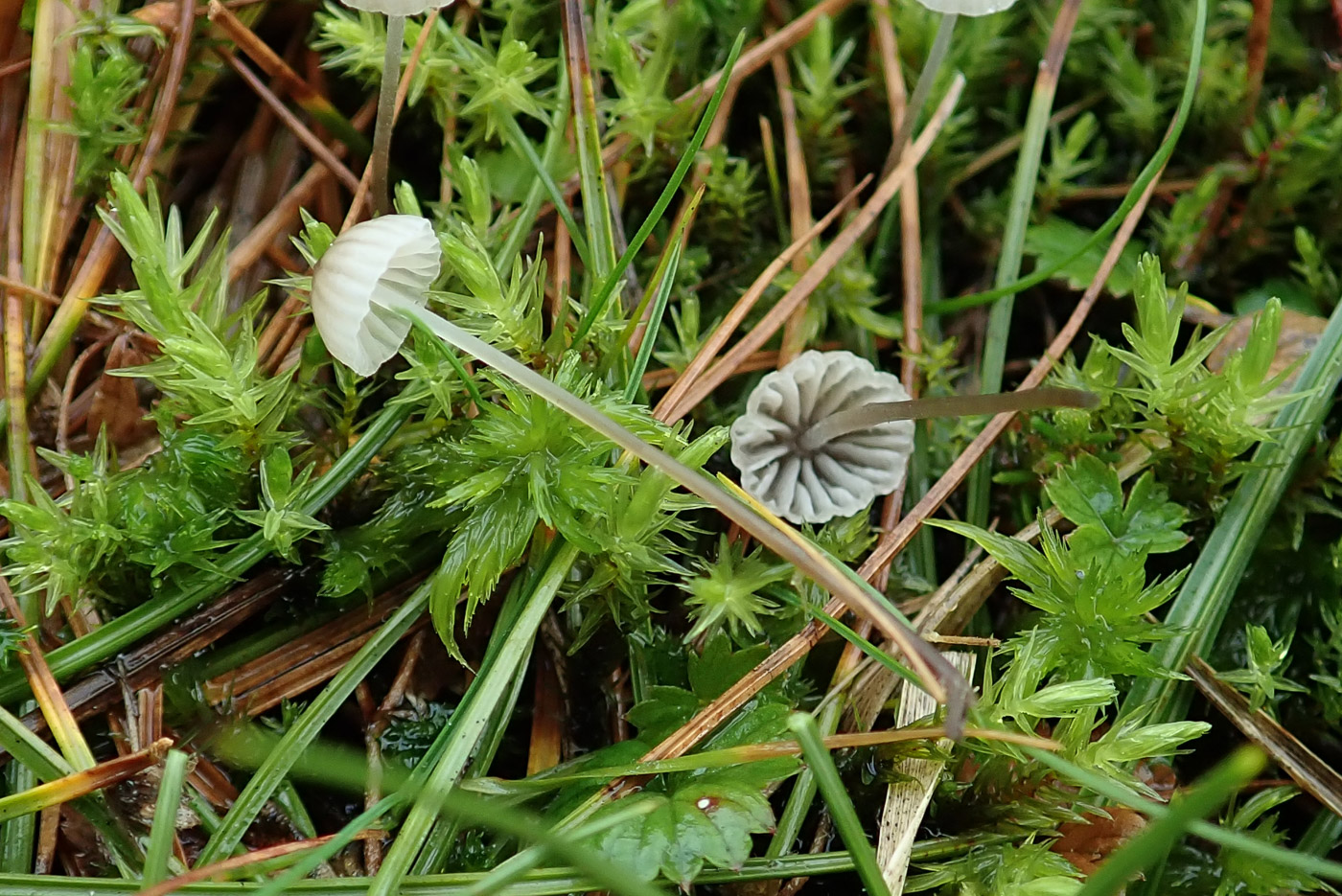
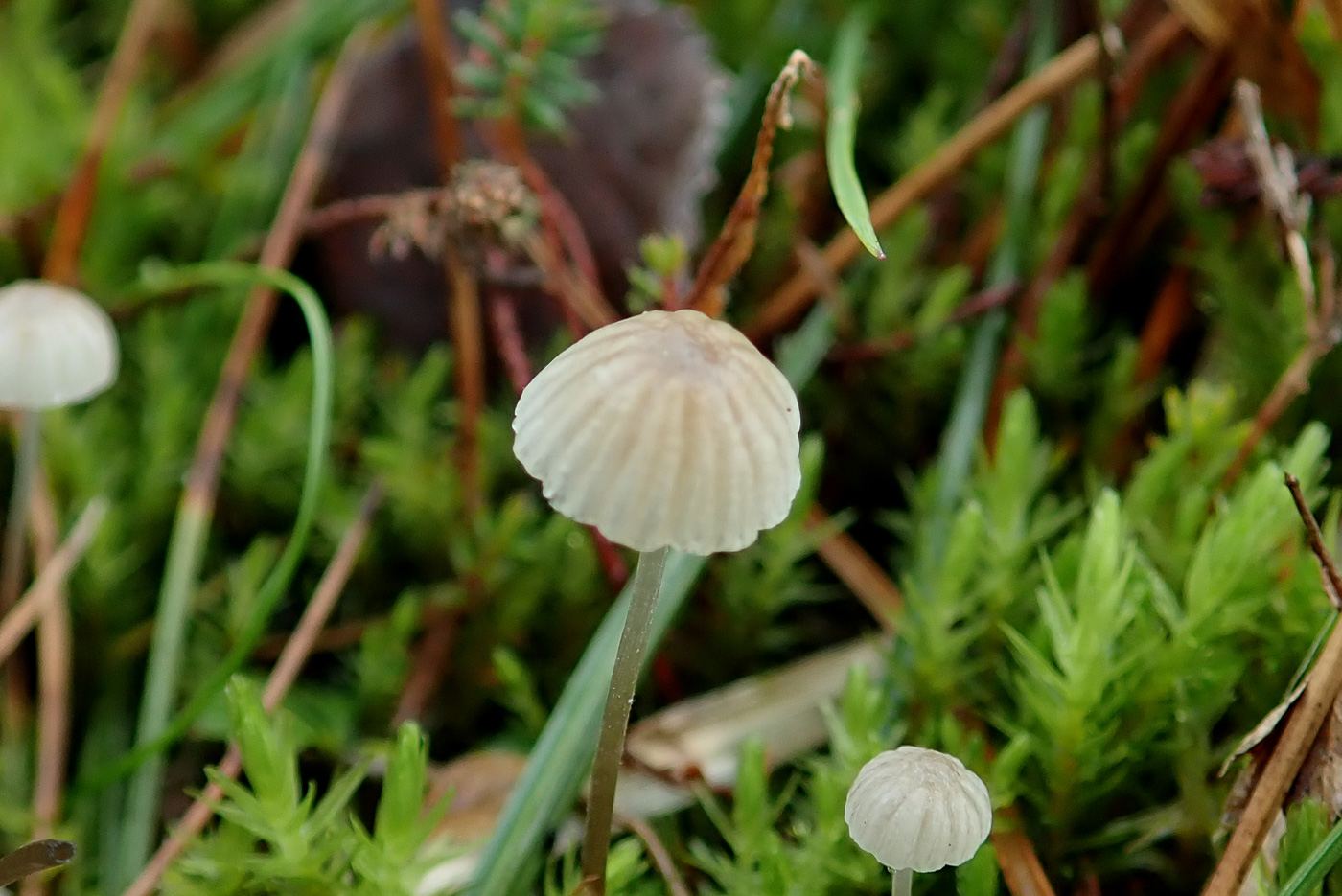 |
Mycena sp. (an as yet undescribed or named Bonnet) 
Nov 3, 2020. This small and insignificant species of Mycena was first discovered by Penny C. amongst Sphagnum in the Mire at Burnham Beeches several years ago and she's found it there in good numbers every autumn since, though today she had to search and found just one group. Caps are about 5 mm across, bell shaped and translucently striate, whitish - with a brown tinge towards the centre when mature; gills are white, not crowded and stems are pale at the top but darker below. Nothing particularly notable there, but with a scope it has unique and quite remarkable cells on the gill edge - the feature which first alerted Penny to the fact that it might well be of particular interest. Its DNA sequence appears to have no match and Mycena especialists Aronsen and Laessoe have been consulted but these things take time. Hopefully it will eventually receive recognition and a name!
|
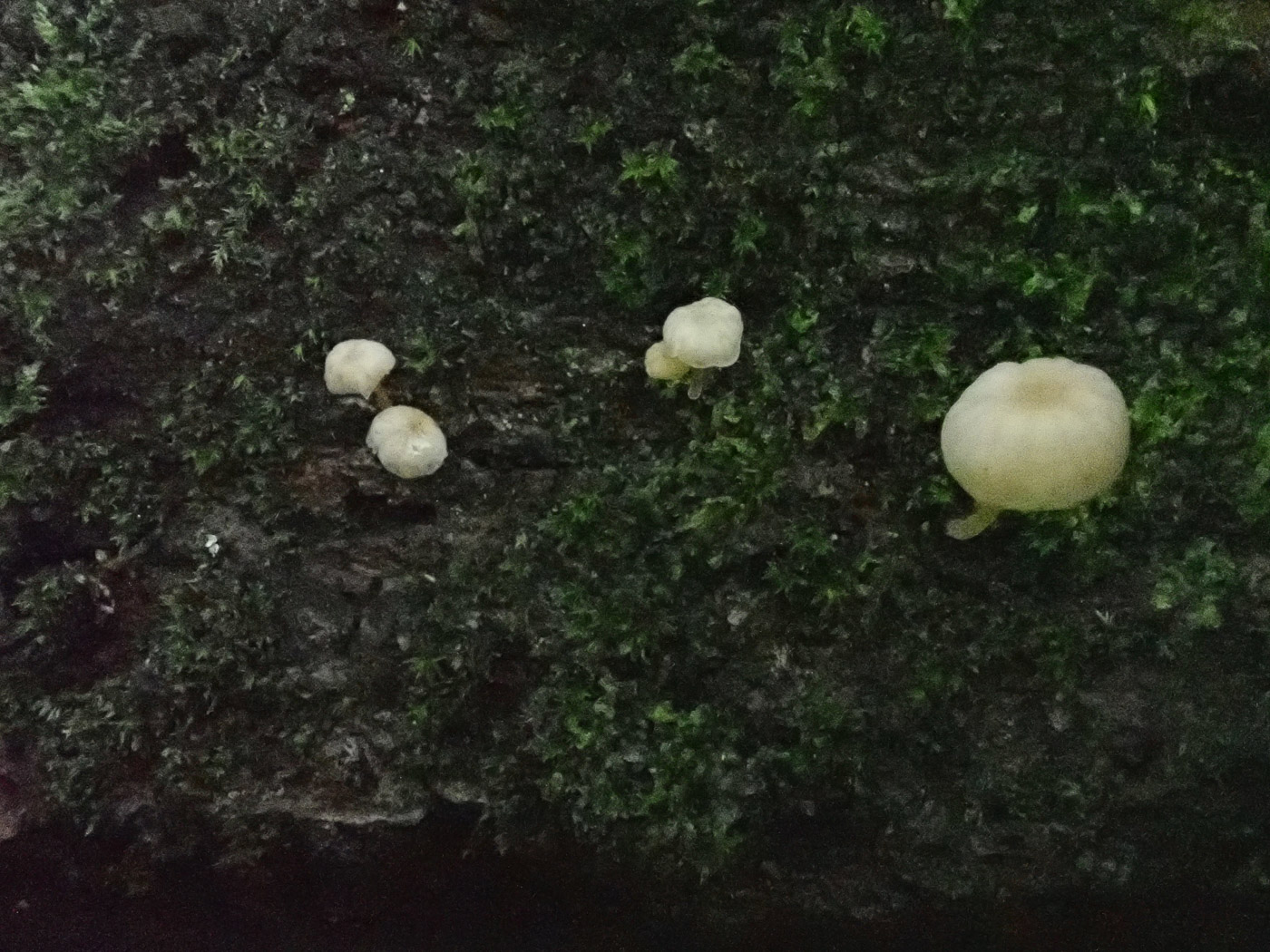
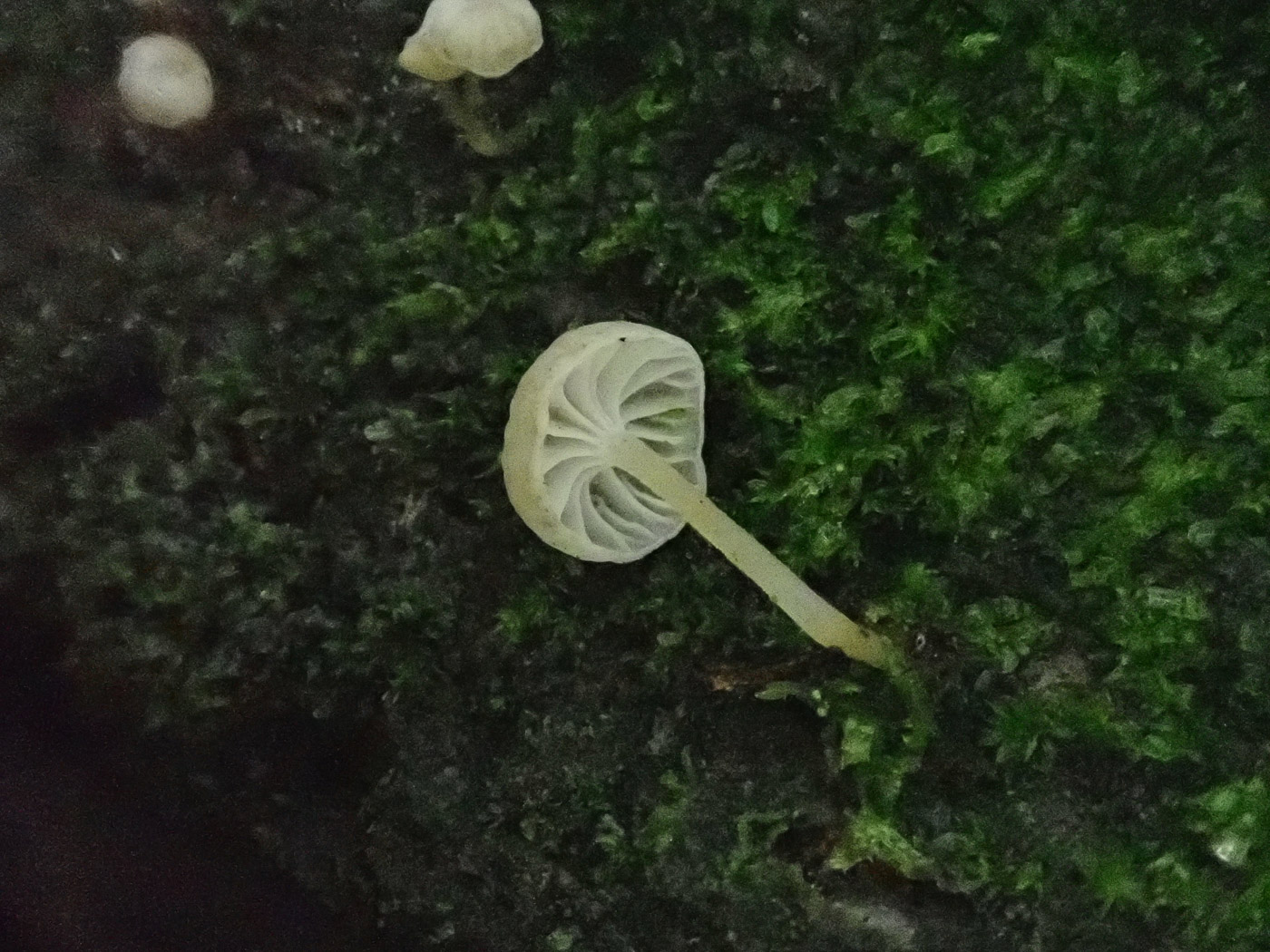
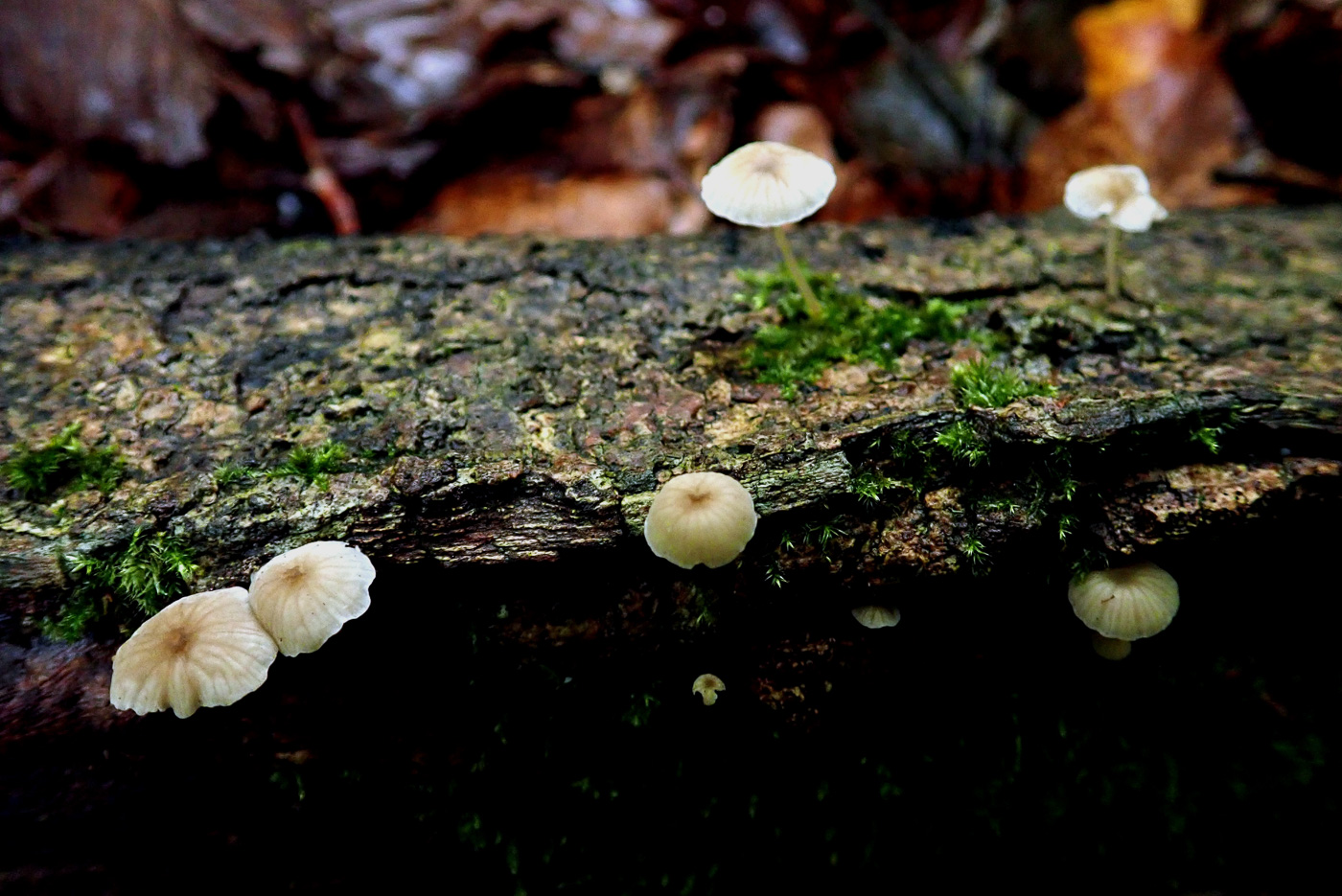
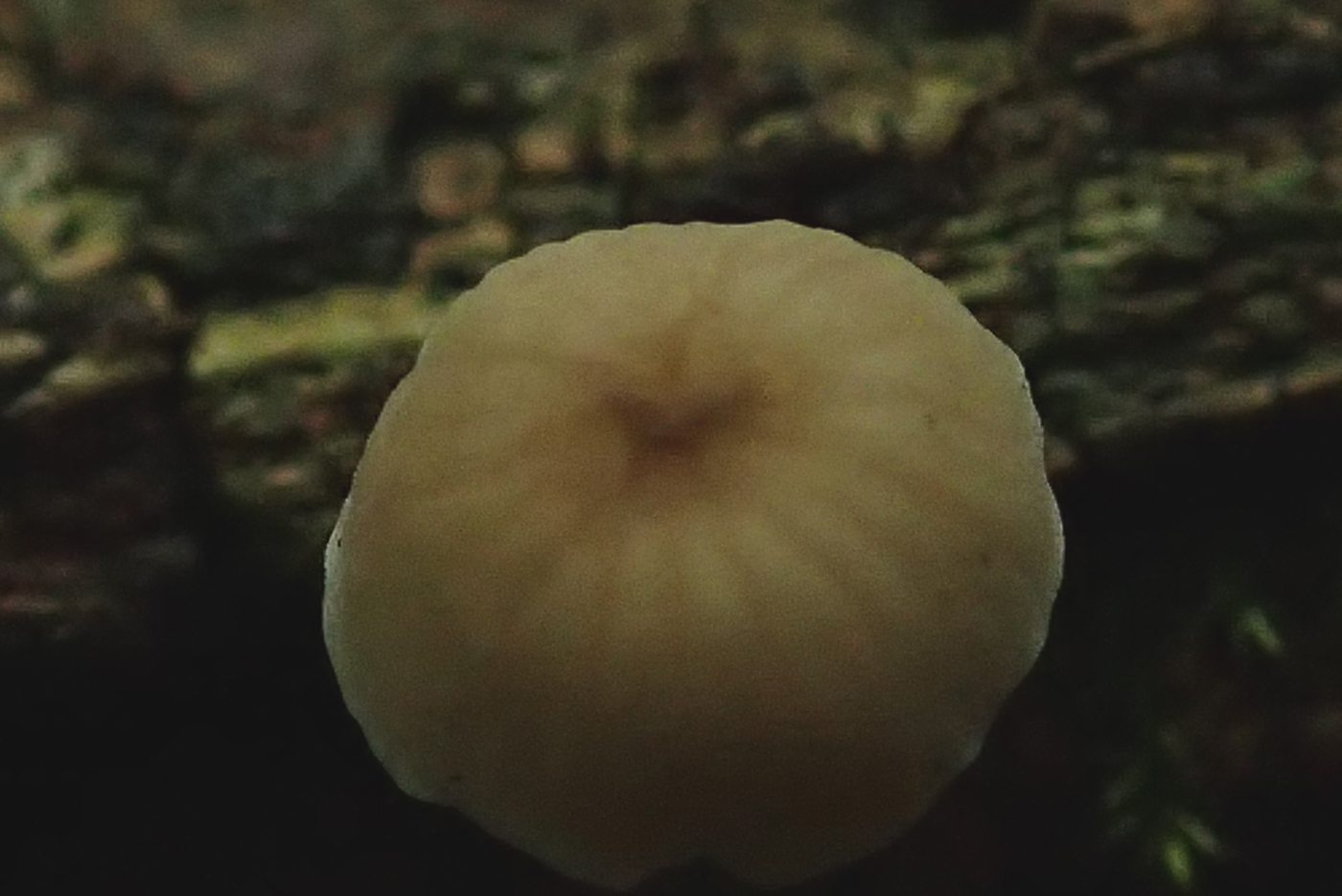
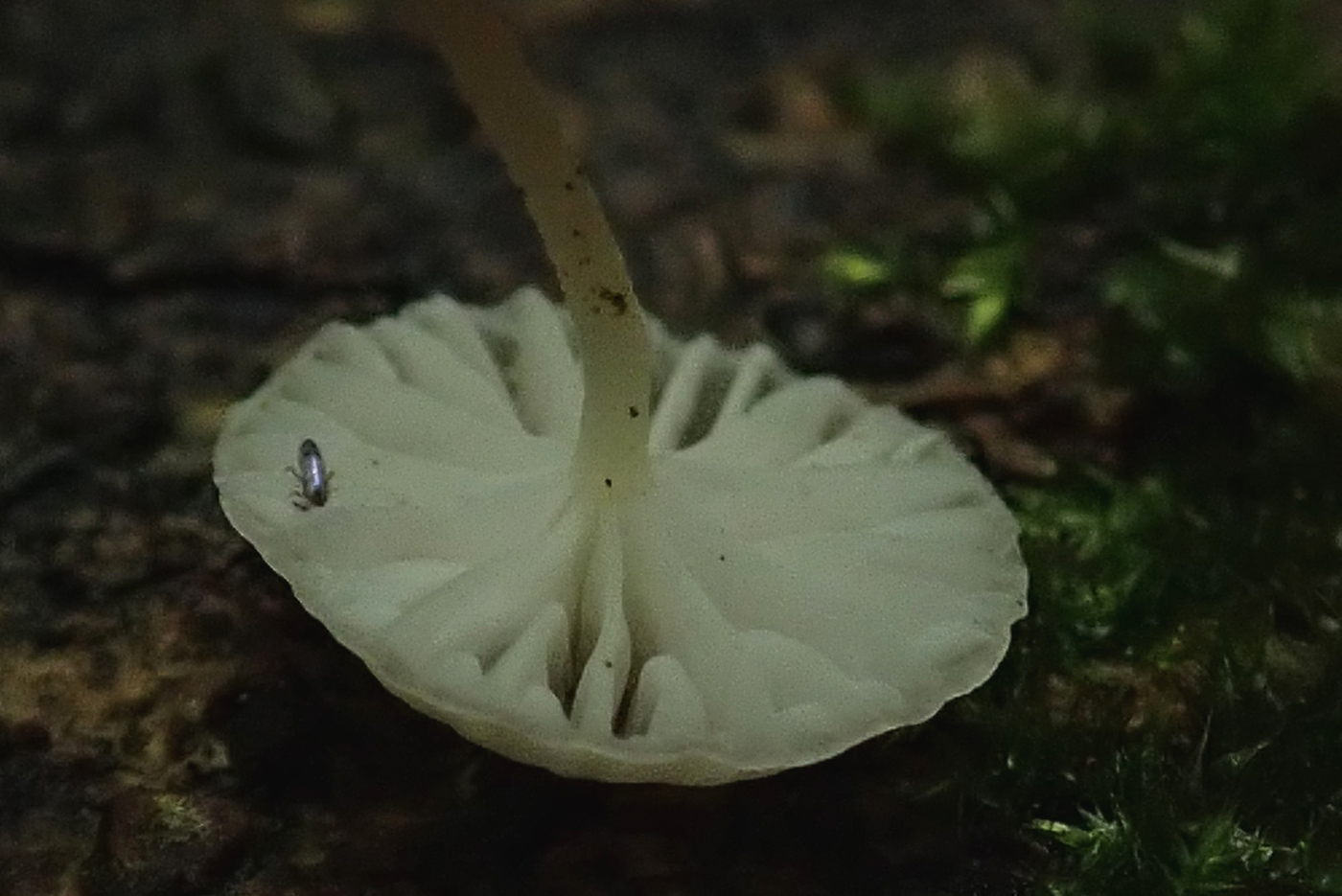
|
Mycena speirea (Bark Bonnet) 
Nov 27, 2022. On a mossy Willow trunk at Turville Heath Penny spotted just a few of this common wood-inhabiting Bonnet and took the opportunity to photograph it. It is one which with experience can be named fairly safely in the field (though she did check it today). Compared to other similar small wood-inhabiting Bonnets the cap is just off white, has a clear brown slightly sunken central dot and the gills are quite widely spaced and very obviously decurrent. (Compare with Mycena olida below, also with R. roridus above.) Incidentally, both this species and M. olida are now moved to genus Phloeomana.
Oct 14, 2020. Penny found this small Bonnet fruiting on Beech bark in Kings Wood. Caps are less than 1 cm across and their rounded slightly fluted shape is typical, also the pale yellowish brown colour with a dark dot in the slightly sunken centre. Also note that the gills are slightly decurrent (sloping). A common species on bark of several trees but often on Beech.
|
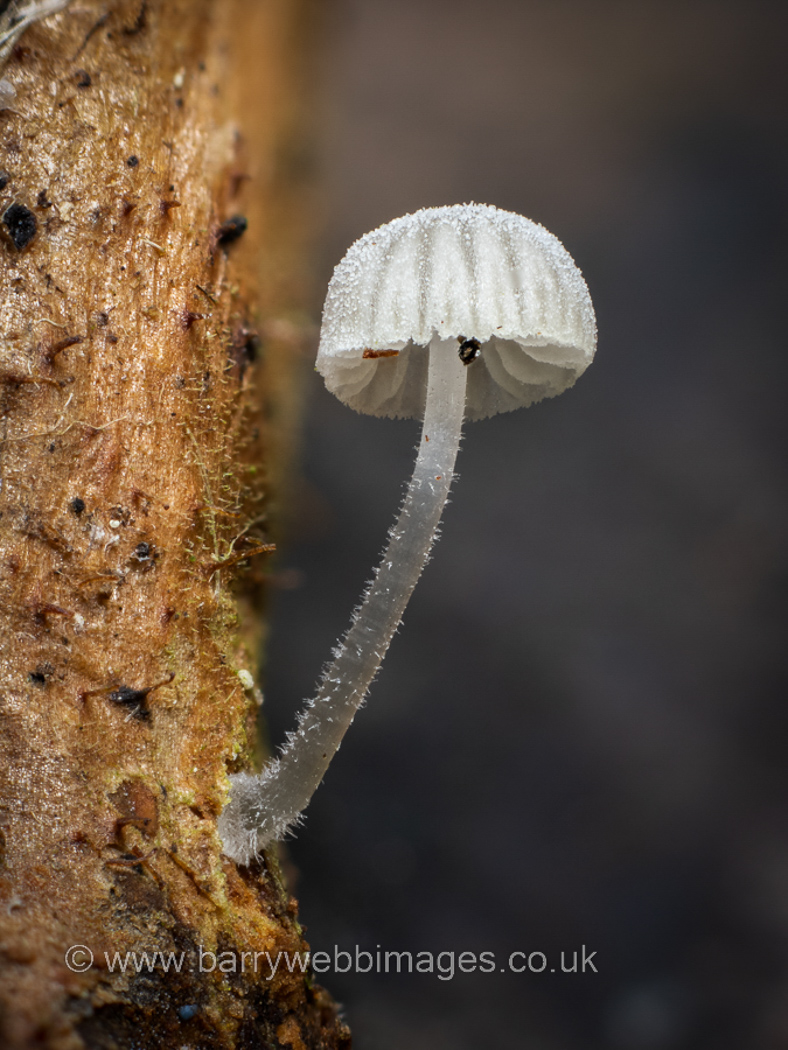
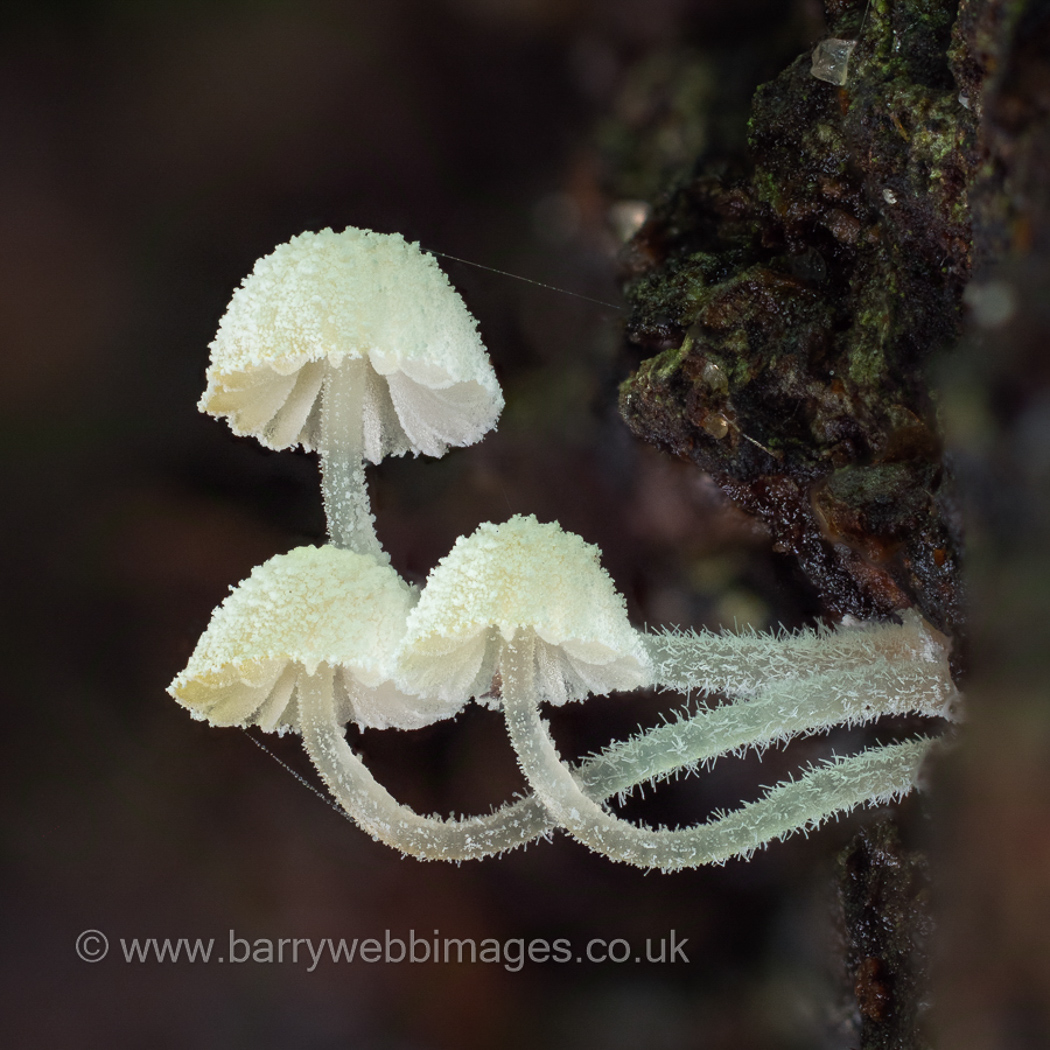
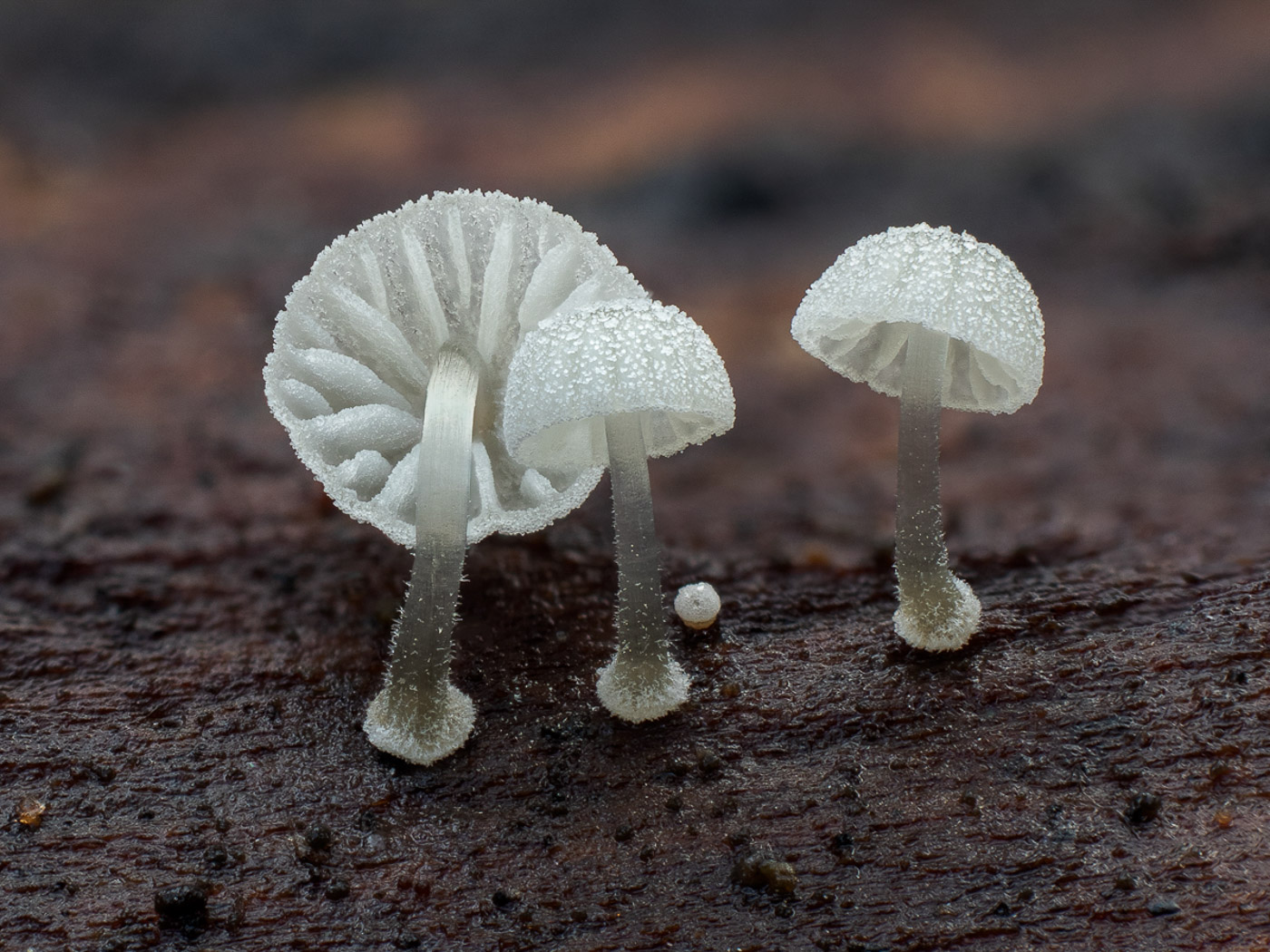

|
Mycena tenerrima (Frosty Bonnet)
Oct 12, 2022. On a tiny twig at Dancersend Sarah Ebdon spotted this miniscule Bonnet which with a x10 handlens can be identified in the field by its occurrence on wood, its pruinose cap and stem (as if dusted with icing sugar) and the small disc at the stem base. It is a common species though often overlooked for obvious reasons. The photo here is Barry Webb's.
Jul 9, 2021. On fallen Birch in Burnham Beeches Barry Webb noticed this attractive cluster of tiny white Bonnets which of necessity needed to grow out from the wood before turning upwards to enable the spores to fall from the gills at the usual angle. There are several quite similar tiny white Bonnets, nearly always needing a scope to identify with safety, but the intense frosting on both cap and gills, also the small disc just visible at the base of the two joined stems, are sufficient in this case to make the determination.
Jan 20, 2021. Barry Webb spotted these tiny white bonnets on a fallen branch, possibly Oak, in Burnham Beeches. The determination has not been checked microscopically and there are several very similar tiny white Bonnets which grow on wood and which can have this 'frosted' appearance; however, the distinctive bulbous stem bases are a sure give-away feature and absent in other likely candidates.
Nov 12, 2020. On a deciduous stick in Ibstone Common Penny C. spotted this tiny white Mycena and on closer inspection noted that the stem had a disc where it attached to the stick. This feature, though pretty small, is significant when it comes to working out which of the many tiny white Bonnets you have because most species don't have one and can thus be eliminated. The cap was under 4 mm across and stem not much taller than that, so some care is needed when preparing a tiny piece of gill edge to view with a scope! This achieved, however, the cells she found together with the presence of the disc made the identification easy. The species was previously known as M. adscendens.
|


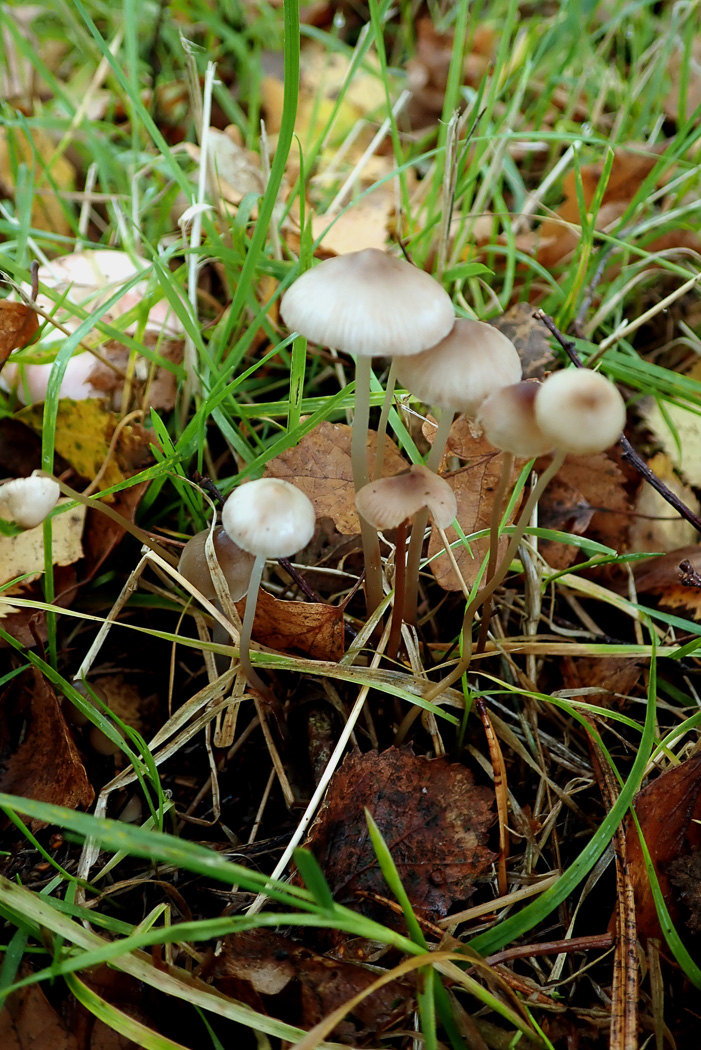
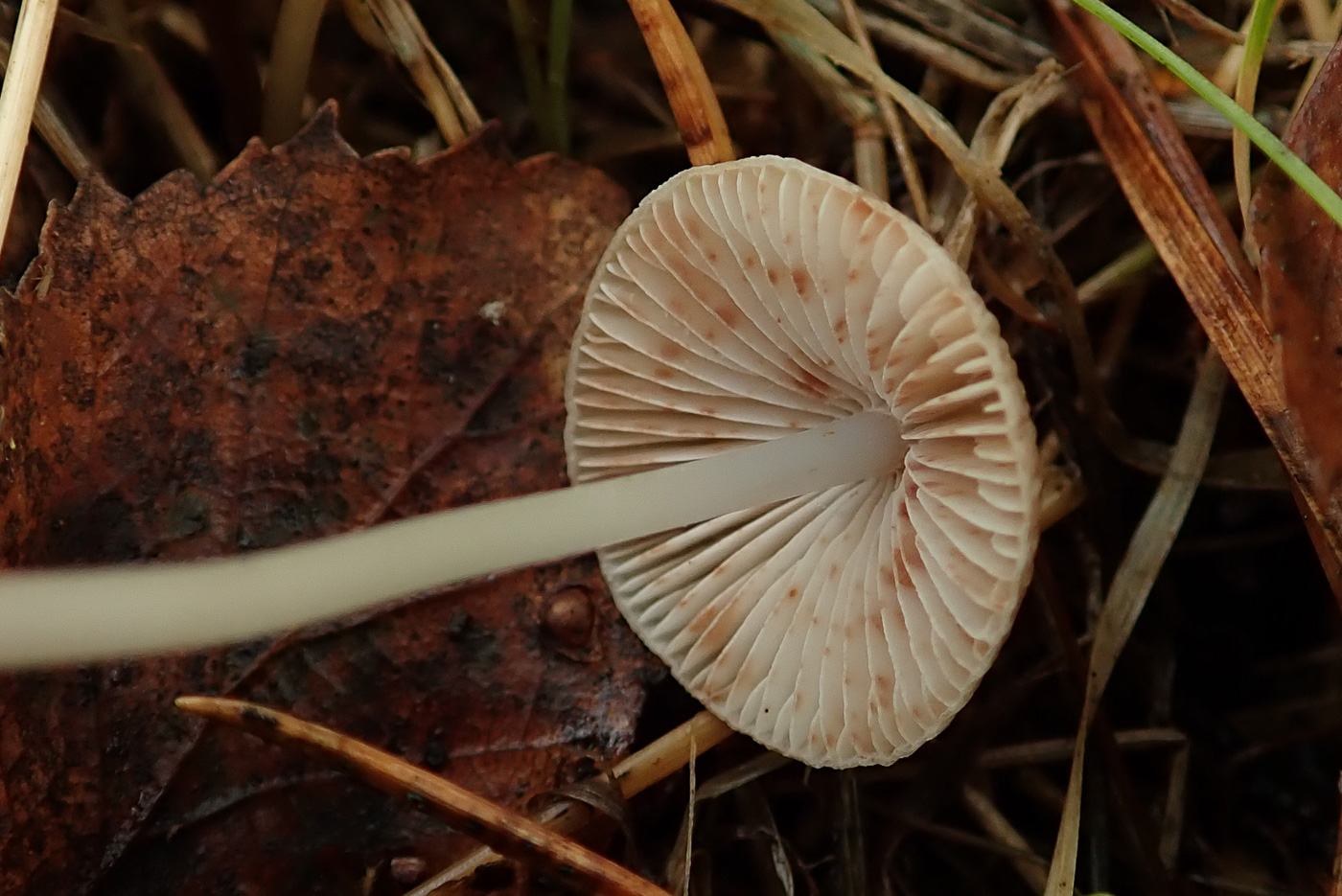
|
Mycena vitilis (Snapping Bonnet) 
Jun 30, 2021. At Turville Heath Penny was pleased to find just one specimen of a late summer to autumn Bonnet which was fruiting in woody deciduous litter. Despite being perhaps the most common Bonnet found in litter rather than on wood, it is one that needs a scope to confirm as there are so many other similar species which lack any really distinctive field characters. Its common name refers to its somewhat tough stem which is supposed to break with a slight 'snap' but this is not at all foolproof as others do so too! (The stem here has a small piece debris half way down and is not a ring as it might appear.)
Nov 5, 2020. This species of Bonnet, found by Penny C. in longish grass under trees at Turville Heath, is one of our commonest yet not easy to separate from the many similar nondescript medium sized brown capped species. It grows in soil or woody litter under mixed trees or in grass as here and its one redeeming feature is that the stem though long and thin is remarkably sturdy and breaks with a faint snap, hence its common name. However, this is not foolproof and to identify with certainty it is necessary to look at the cells on the gill edge.
|
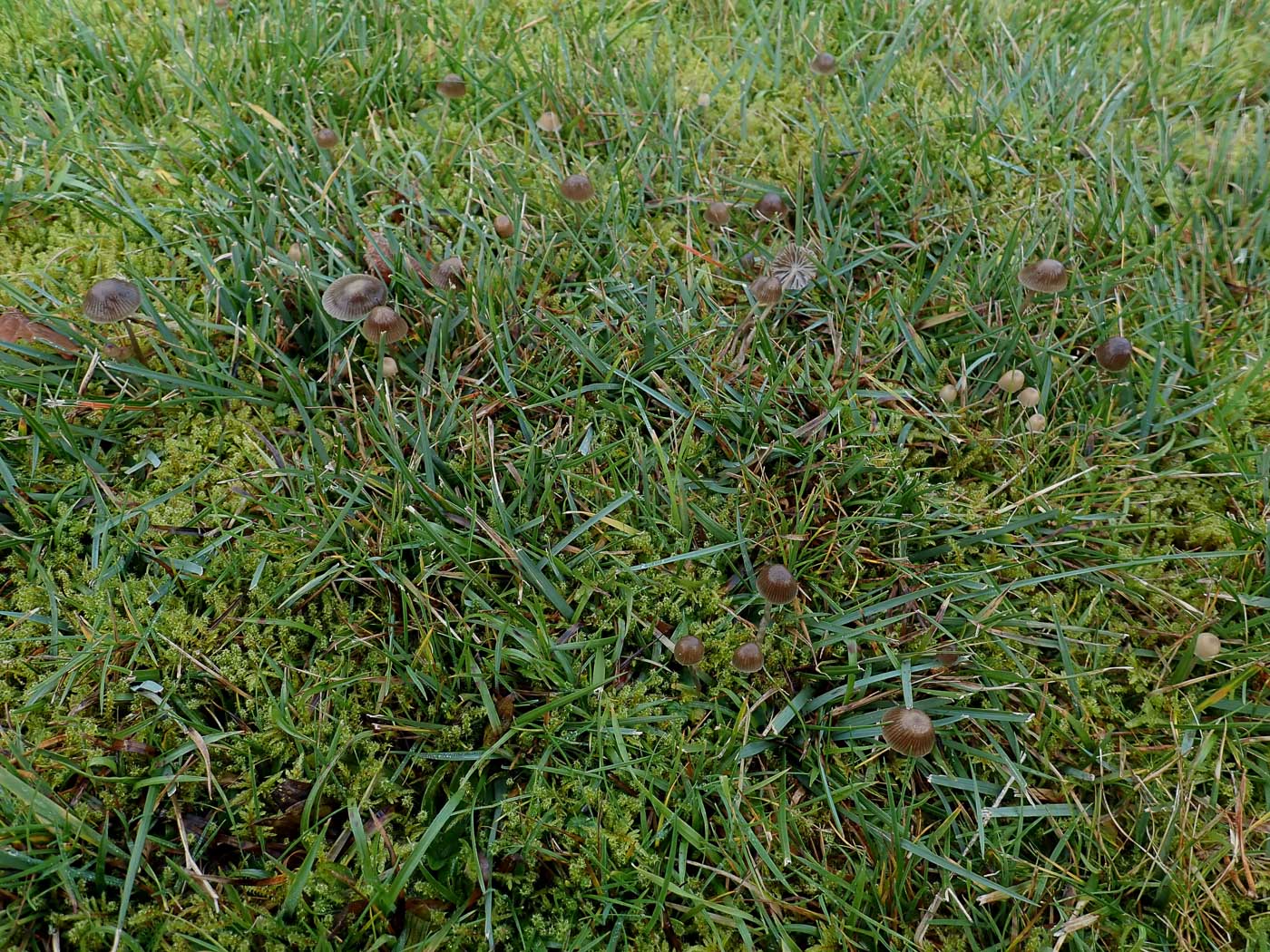
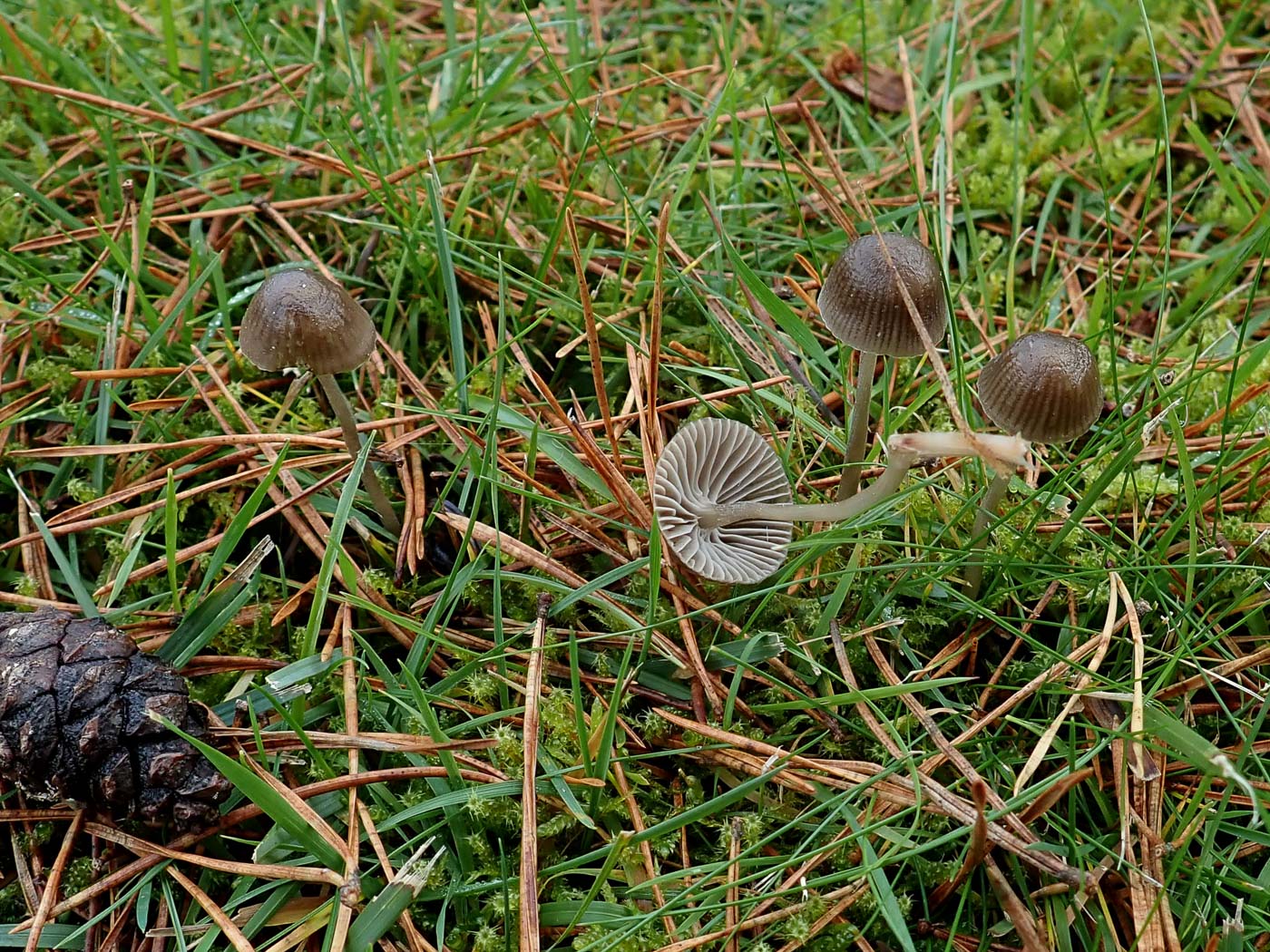
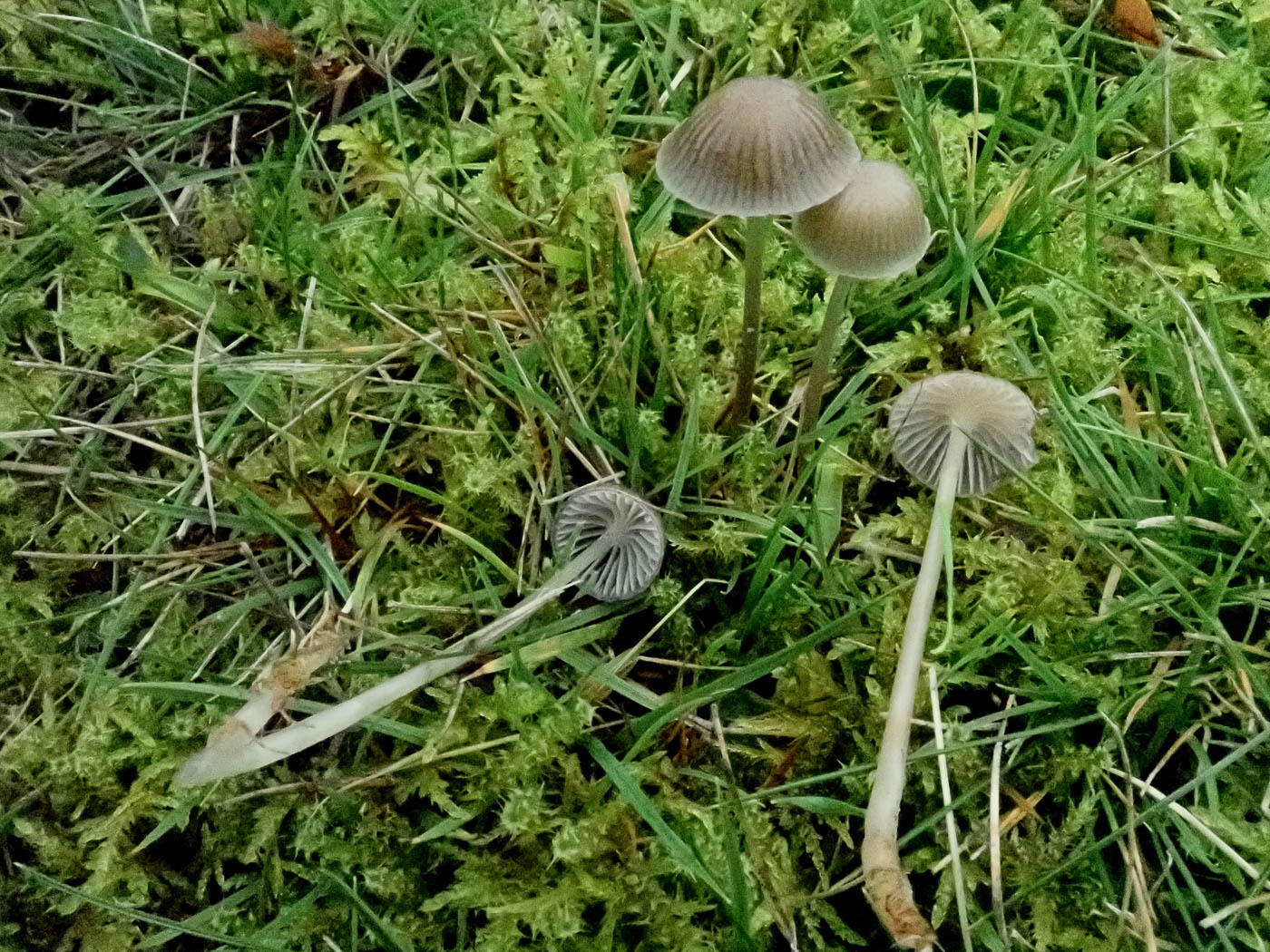
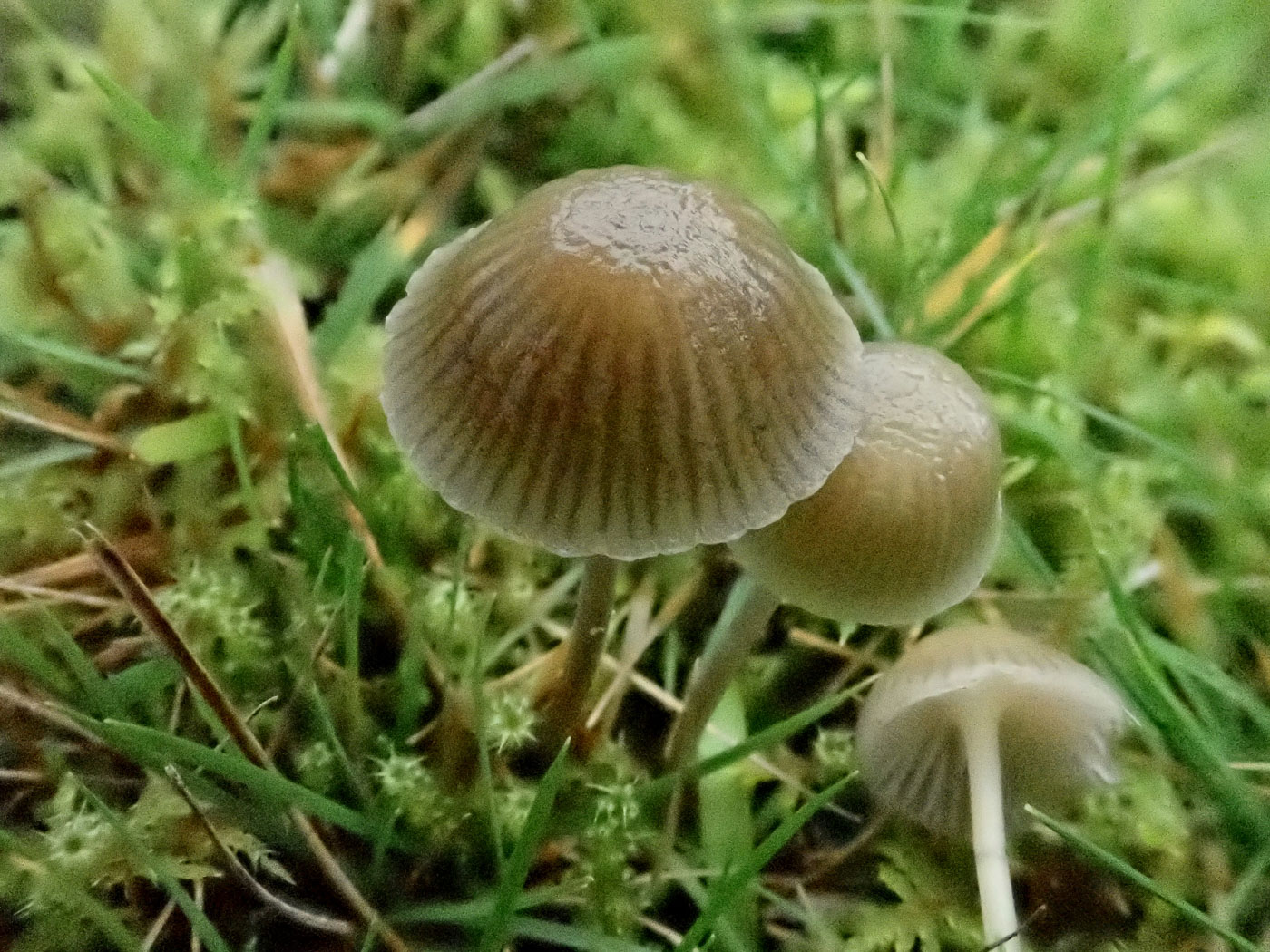
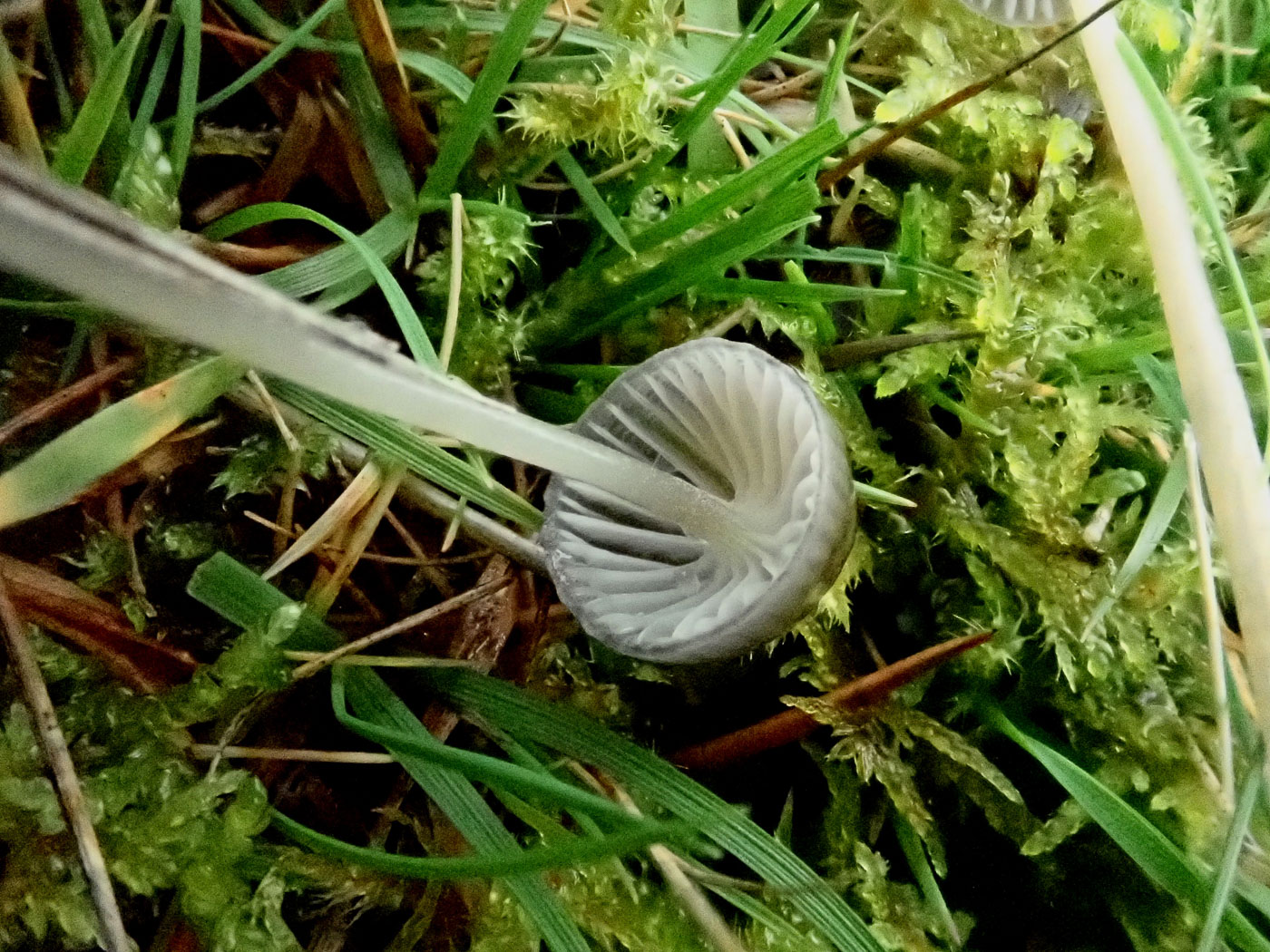
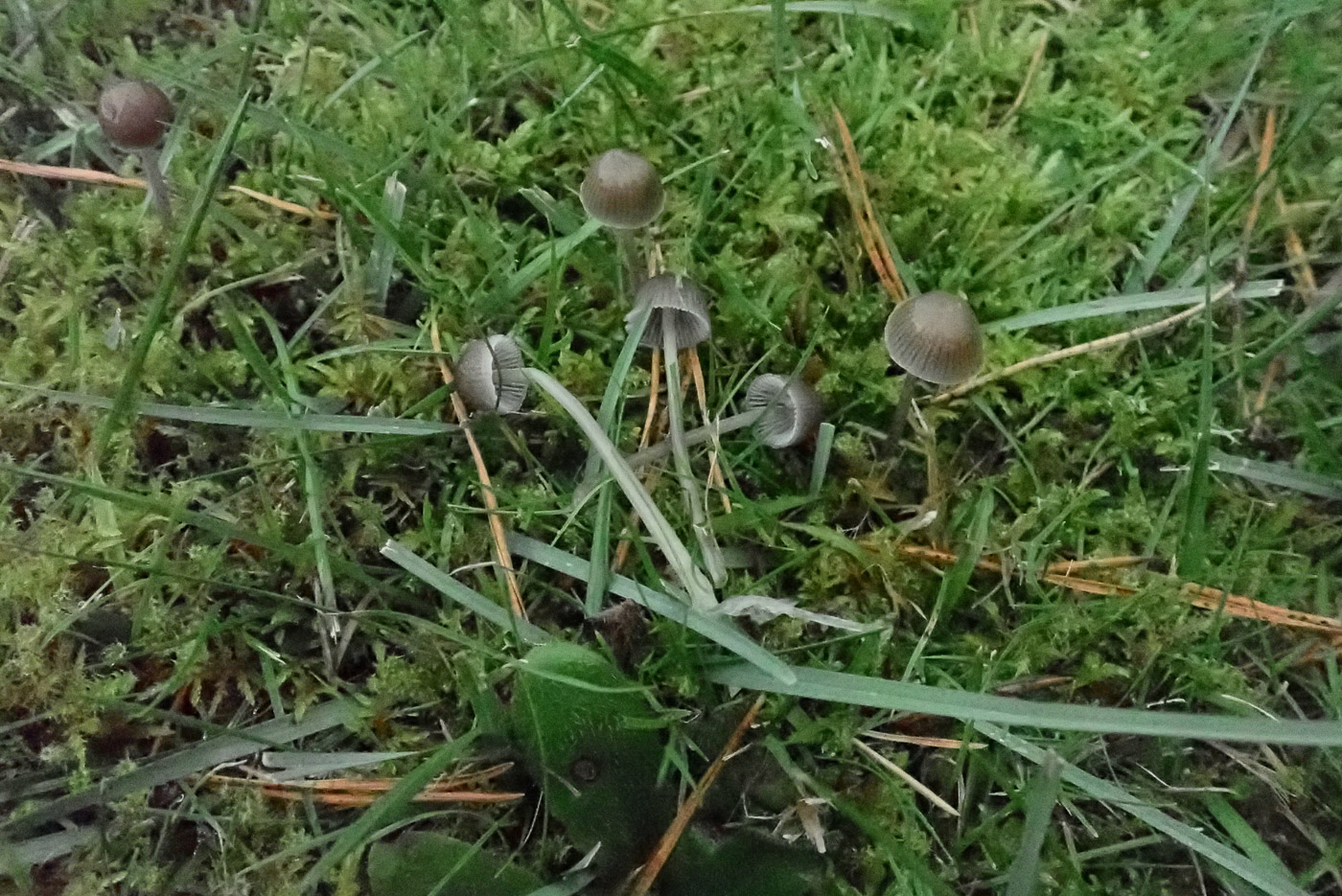
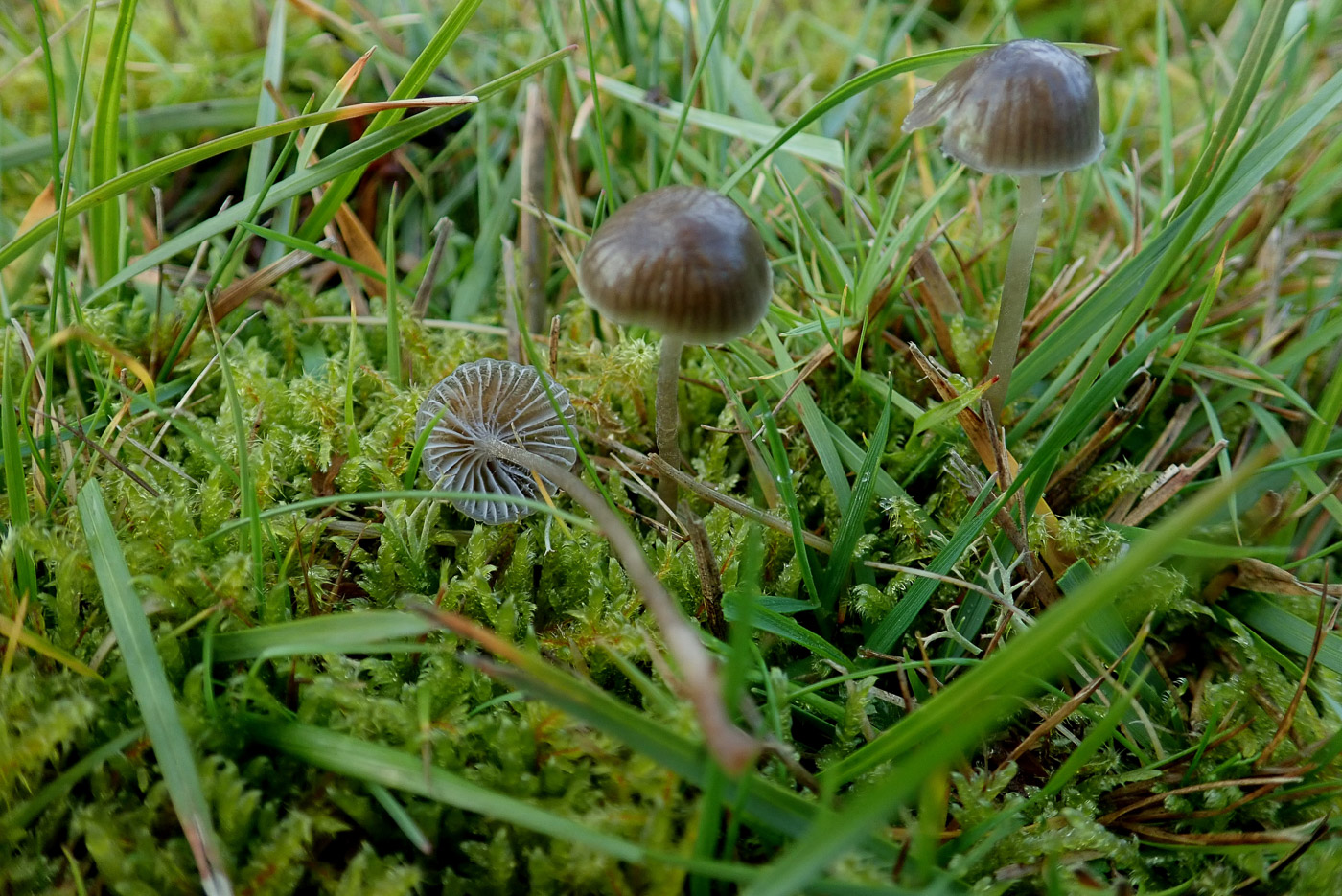
|
Mycena vulgaris (Vulgar Bonnet) 
Nov 15, 2023. In lawn under Pine at Prestwood Churchyard Penny was pleased to find this unusual species coming up in good numbers. We have a few records from the 1980s but since 2000 this is our only known county site when Penny has found it here every year since 2020. This is an easy Bonnet to recognise in the field: dull grey all over with no smell but sticky all over with a peelable cap cuticle like M. epipterygia, also the gills are slightly decurrent and have a layer of slime running along the edge which is detachable in one piece with a pin - as in Gliophorus laetus. It only occurs in Pine litter.
Nov 17, 2022. Prestwood Churchyard is the only site Penny knows for this unusual Bonnet, found in Pine needle litter, and she was pleased to see it here for the third year running. It is like a drab Mycena epipterygia (Yellowleg Bonnet), sharing with that species its very sticky cap and stem and a cap cuticle which with care peels off like stretchy clingfilm. It differs in being entirely grey (no sign of yellow in the stem) and having obvious decurrent gills. We have a very few records from the 1980s, then none till I started to find it here.
Oct 30, 2021. In grassy litter under Pine in Prestwood churchyard Penny was pleased to see this small and somewhat unusual Bonnet fruiting in good numbers where she found it here last year. Despite its somewhat unsuitable common name implying a common species, apart from a record from Wendover Woods in 1980 our only record is from here last year. Unlike the many grey brown Bonnets this is an easy one to recognise in the field, having a very sticky cap and stem like M. epipterygia and sharing with that species a transparent 'clingfilm' cap coating which can be peeled off in one go. It lacks the yellow stem of that species, however.
Nov 13, 2020. Penny C. didn't recognise this Bonnet growing in mossy grass under Pine in Prestwood churchyard and took the photo on the offchance that it might be interesting. At home it took a while to identify but was worth the effort: rarely recorded in the south of the country and not recorded in Bucks since the 1980s, this was a species new to Penny and one which grows in conifer litter. Yet another fairly nondescript brown capped smallish Mycena but with not only a sticky cap coating which peels off like that of M. epipterygia (see a demonstraton of this dated Nov 01) but also a gelatinous gill edge which peels off and a sticky stem as well - a unique combination of features.
|
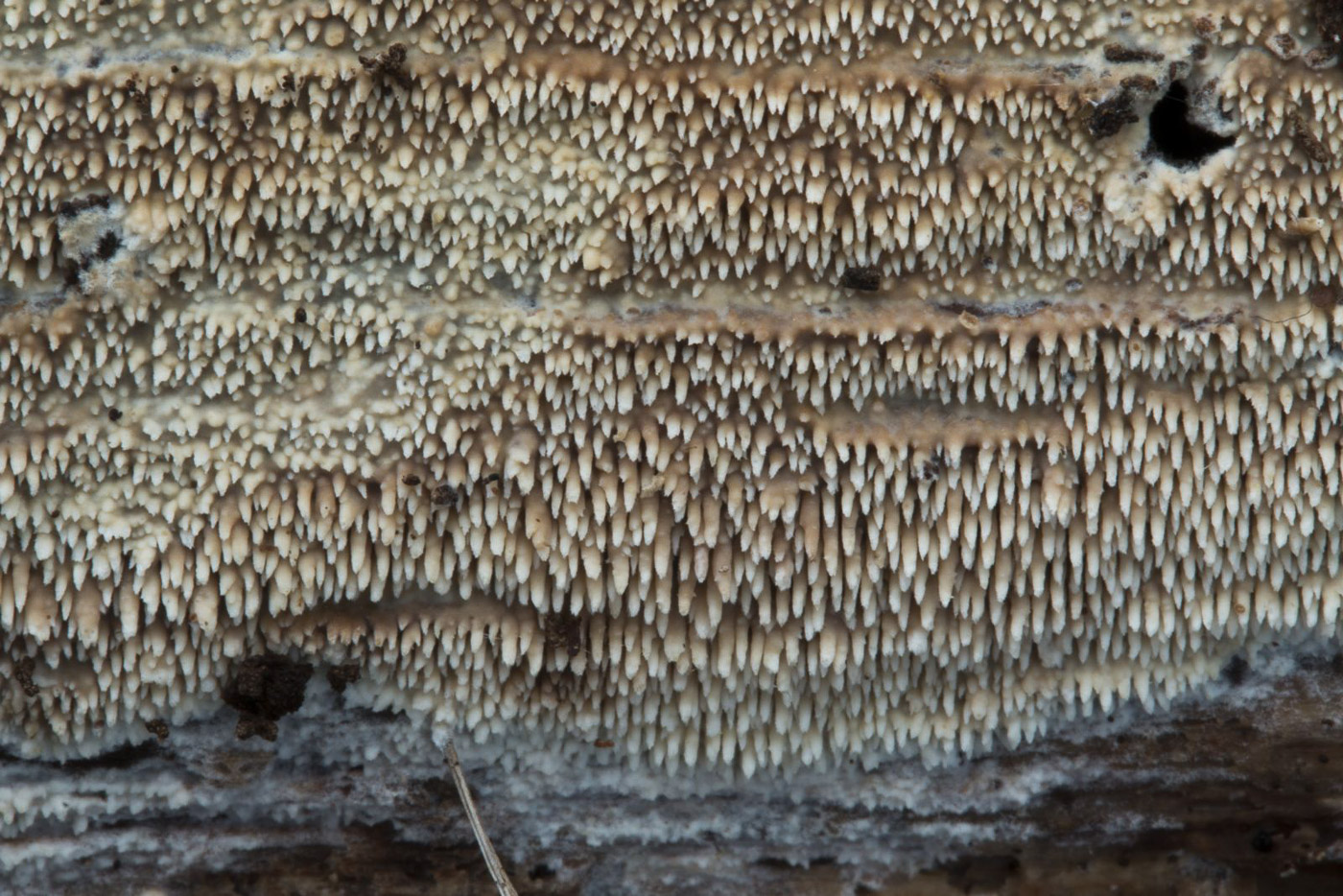 |
Mycoacia fuscoatra (a Corticioid with no common name) 
May 5, 2021. On the underside of an Oak stick in the Mire at Burnham Beeches Penny found this quite rare species - new to the site and to the county. It was identified by expert Kerry Robinson and, like the more common M. uda (seen just below), favours the underside of damp rotting deciduous wood. The 'toothlike' spiny surface is very obvious but it differs from M. uda by starting out pale off-white but gradually turns brownish to black rather than yellow - hence its Latin species name. (The photo is Claudi Soler's.)
|
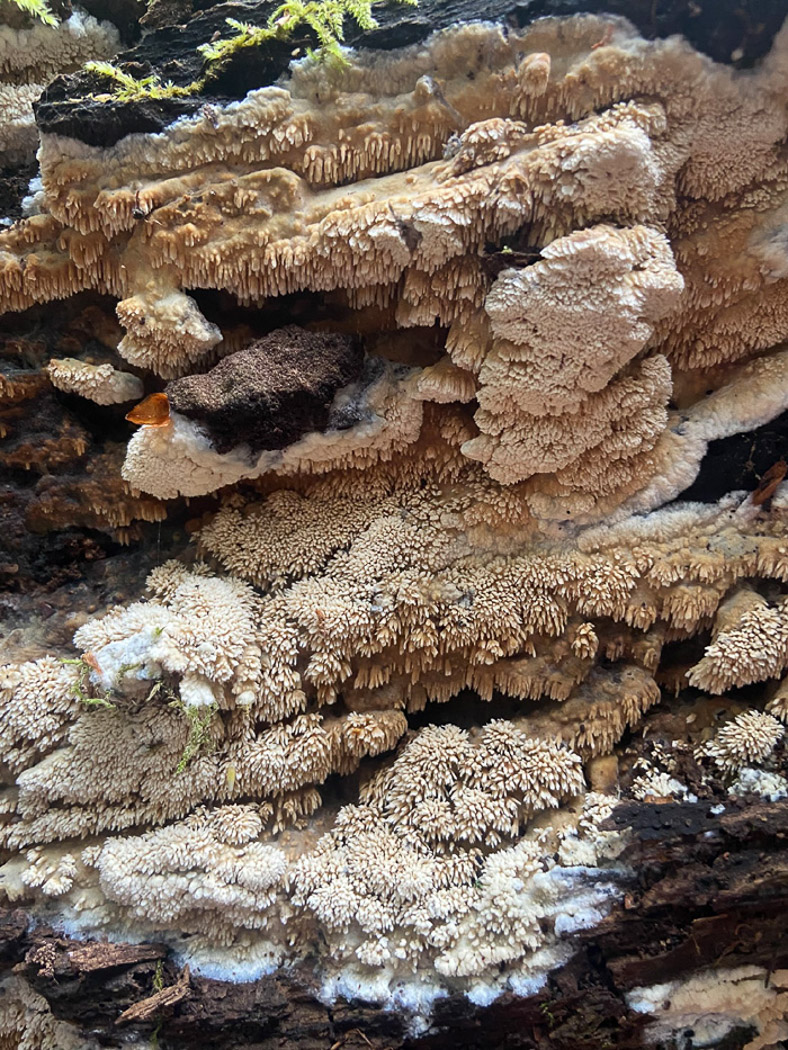 |
Mycoacia nothofagi (a Corticioid with no common name) 
Oct 14, 2022. On a large fallen rotting Beech branch in Naphill Common Sarah Ebdon found an expansive patch of this somewhat unusual Corticioid, took a piece home and correctly identified it, then sent the image to Claudi Soler who confirmed it. We were also shown it on our BFG Walk there a few days later. The finely toothed surface and rather greyish colour are typical of the species, also its has a distinctive smell of soap! We have two other species of the genus on Finds which make interesting comparison (see the Masterlist for details) but this is our first of this species for which we have a good handful of previous records.
|

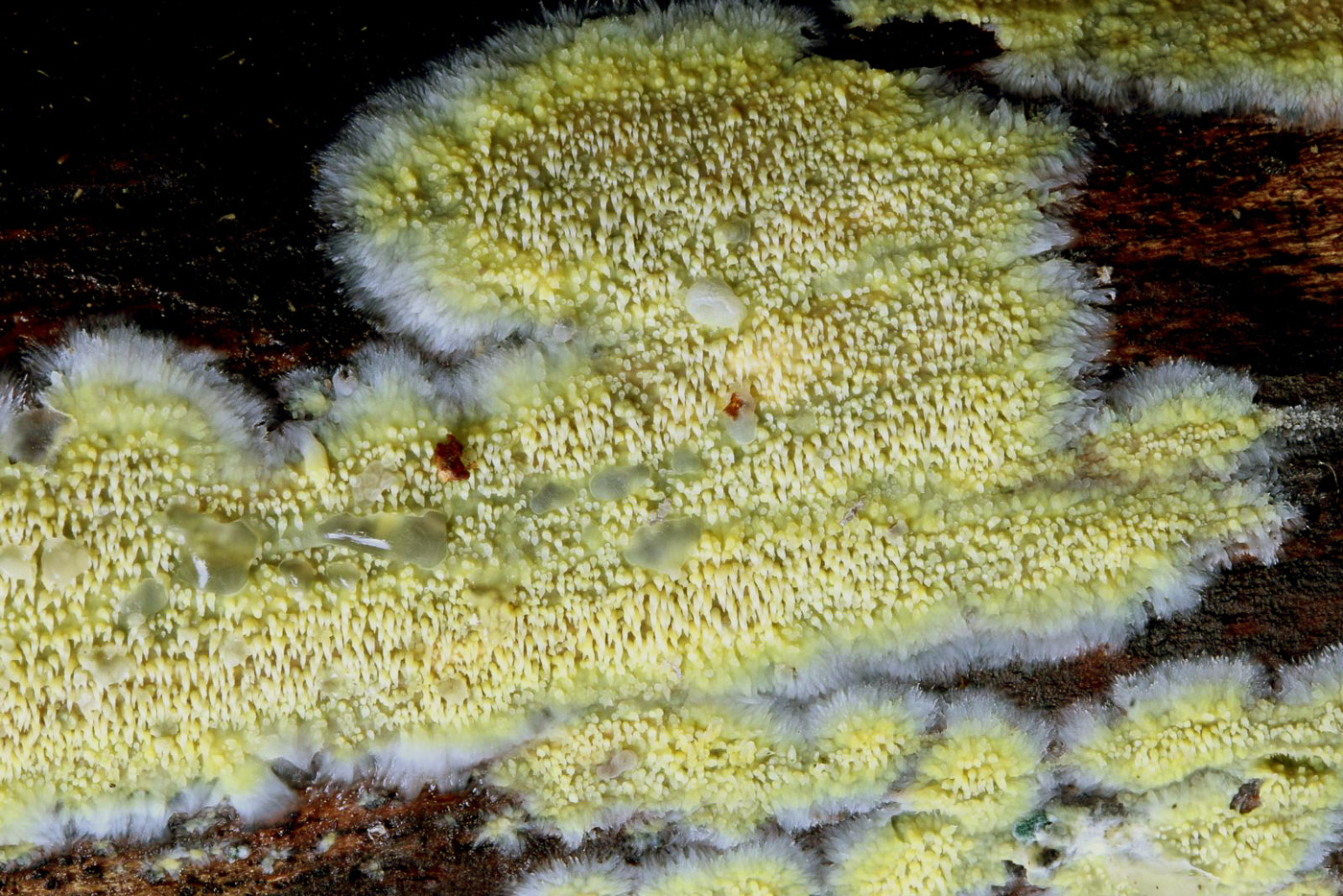
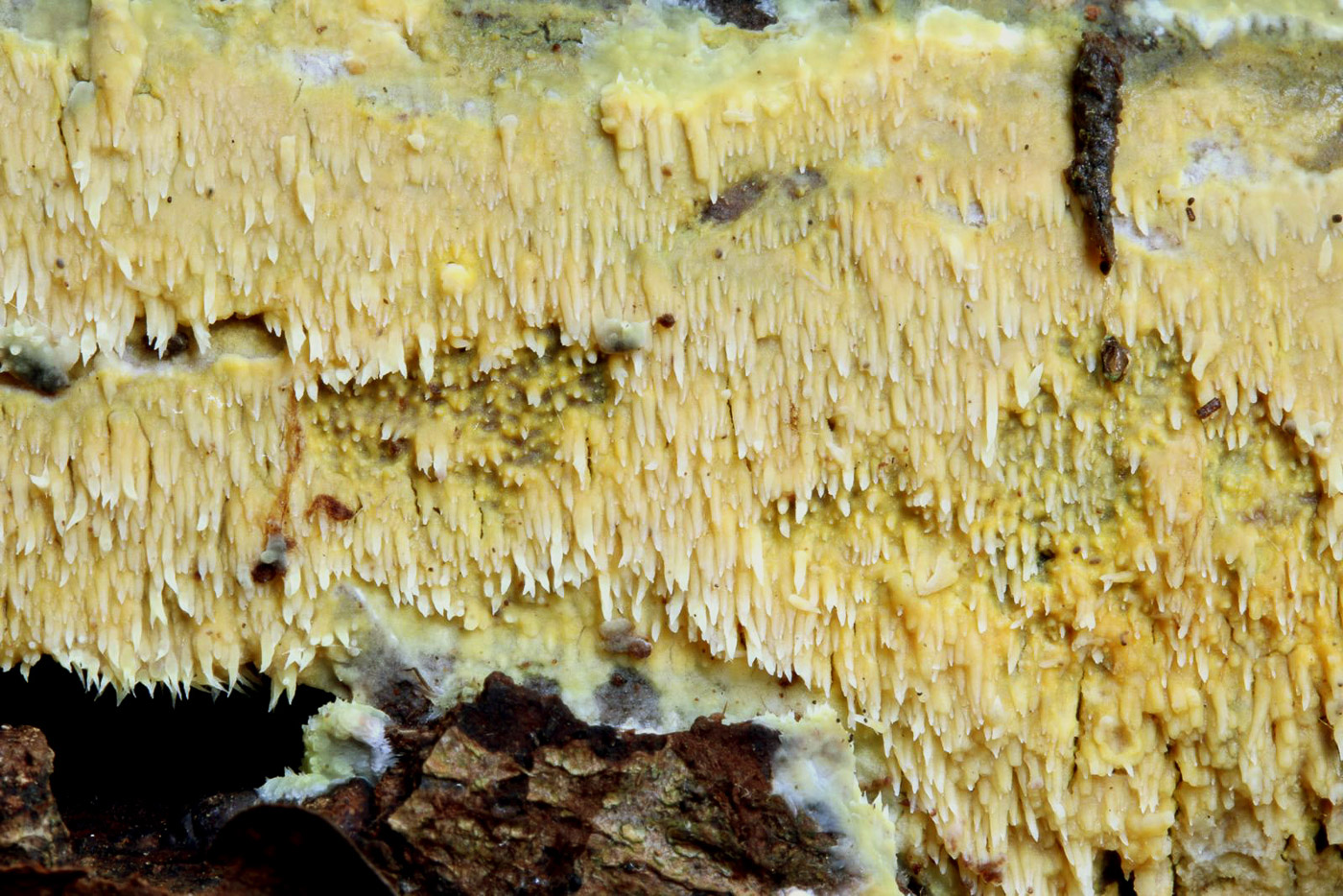
|
Mycoacia uda (a Corticioid with no common name) 
May 5, 2021. On the underside of a Birch stick in the Mire at Burnham Beeches today Penny found some nice young material of this not uncommon species - recognisable in the field by its yellow colour and almost 'toothlike' spiny surface. It can form quite large patches covering bare fallen deciduous branches. In Claudi Soler's photo here the surface is only just beginning to develop its characteristic appearance, but to see a more mature example see his photo in Finds 2020 dated Oct 19th.
Oct 19, 2020. Claudi Soler found this interesting corticioid fungus (one that grows flat on fallen wood) on a fallen Beech branch in Burnham Beeches. Most corticioid fungi are basically very similar and also very tricky to identify - only a very few can be named in the field. This species, however, has two redeeming features which make this possible: it is bright yellow with a fringed white border and it has teeth like a Hydnum . Fairly common, it can be found on deciduous wood on many kinds.
|
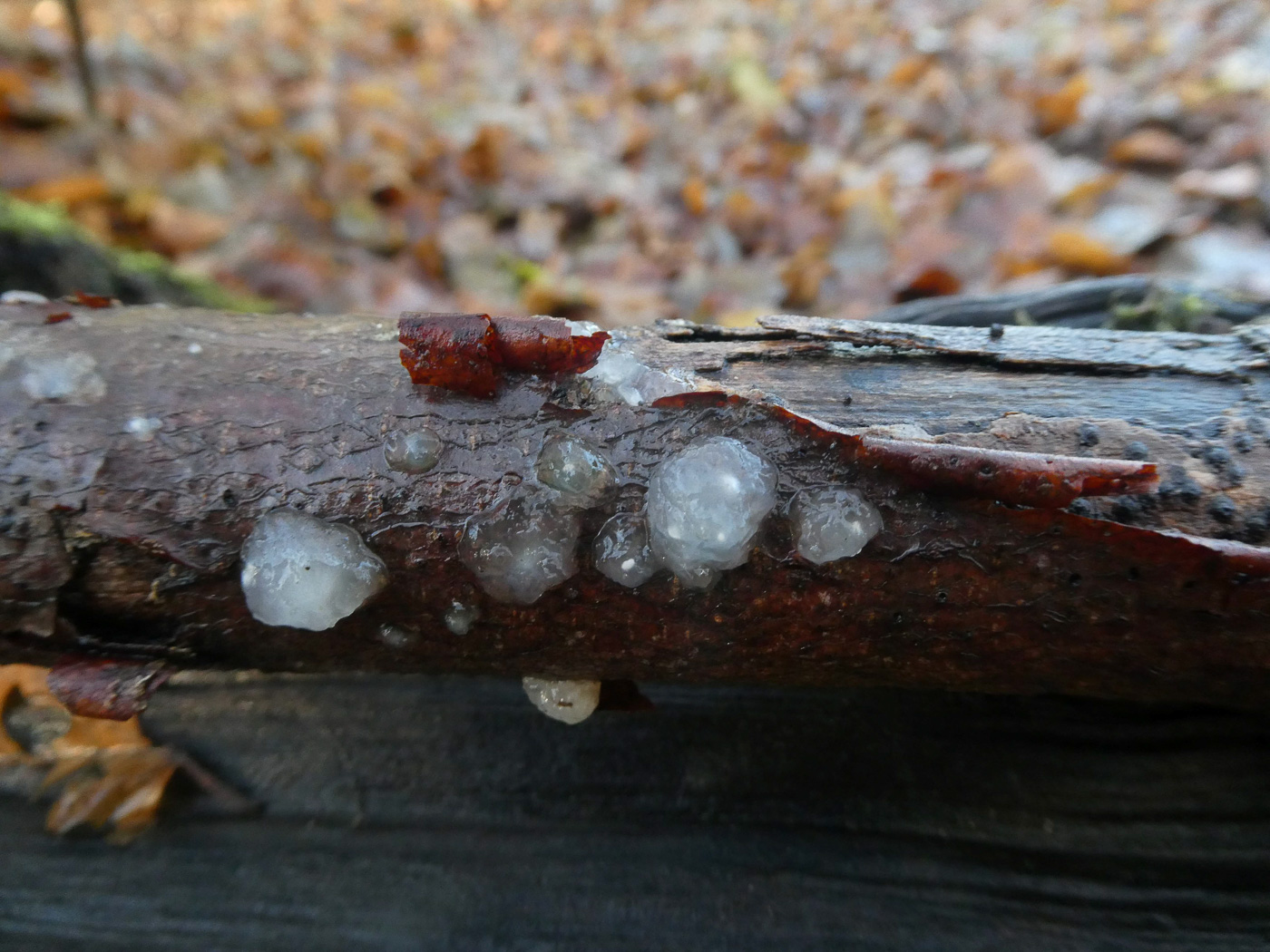
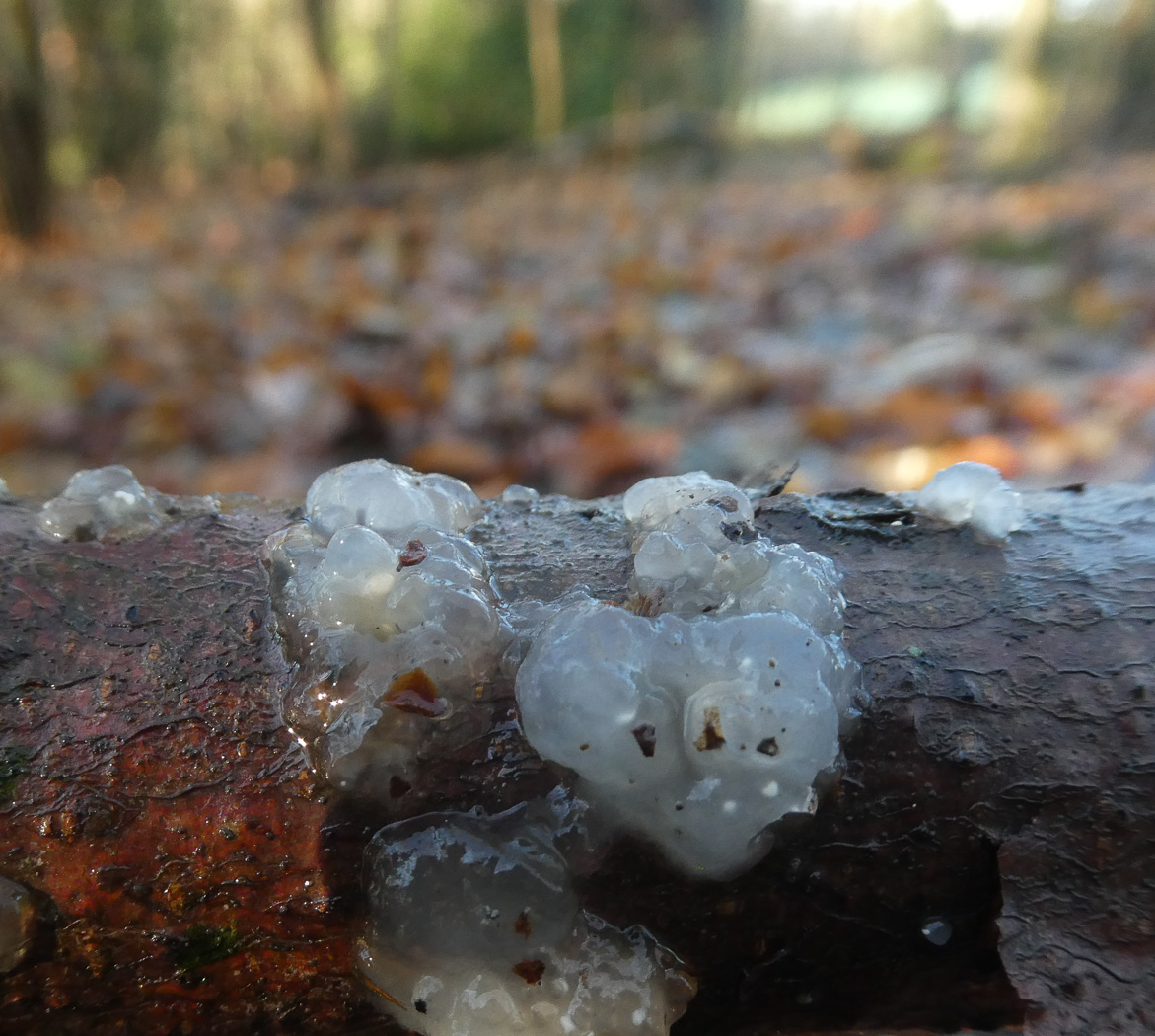 |
Myxarium nucleatum (Crystal Brain)
Jan 2, 2023. On fallen wood near Chalfont St Peter Jim Wills came across a good cluster of this species of Jelly Fungus, more familiar under its previous genus name of Exidia. Note the central tiny white 'cores' nicely visible in both photos - this a useful field character to help separate the species from other possible jelly-like contenders.
|

